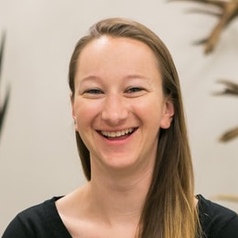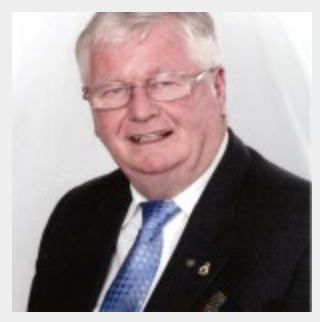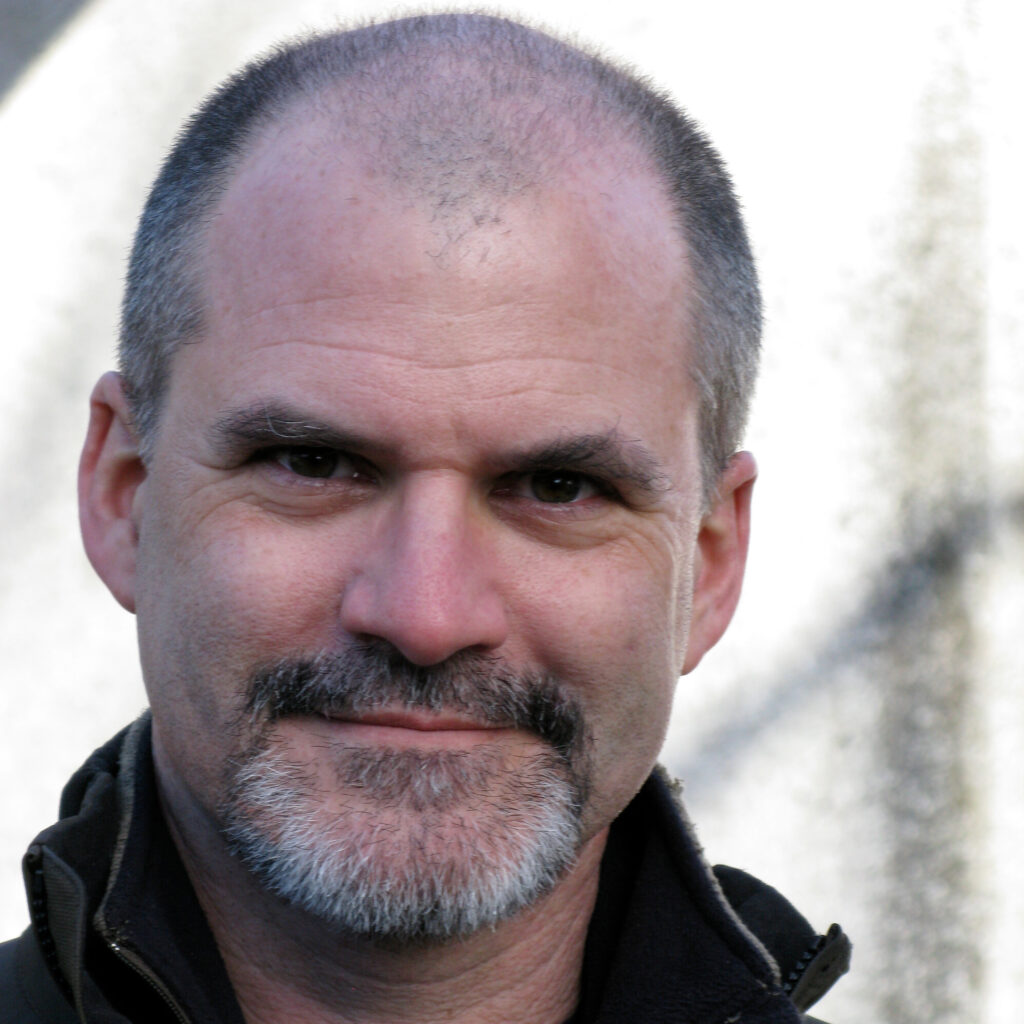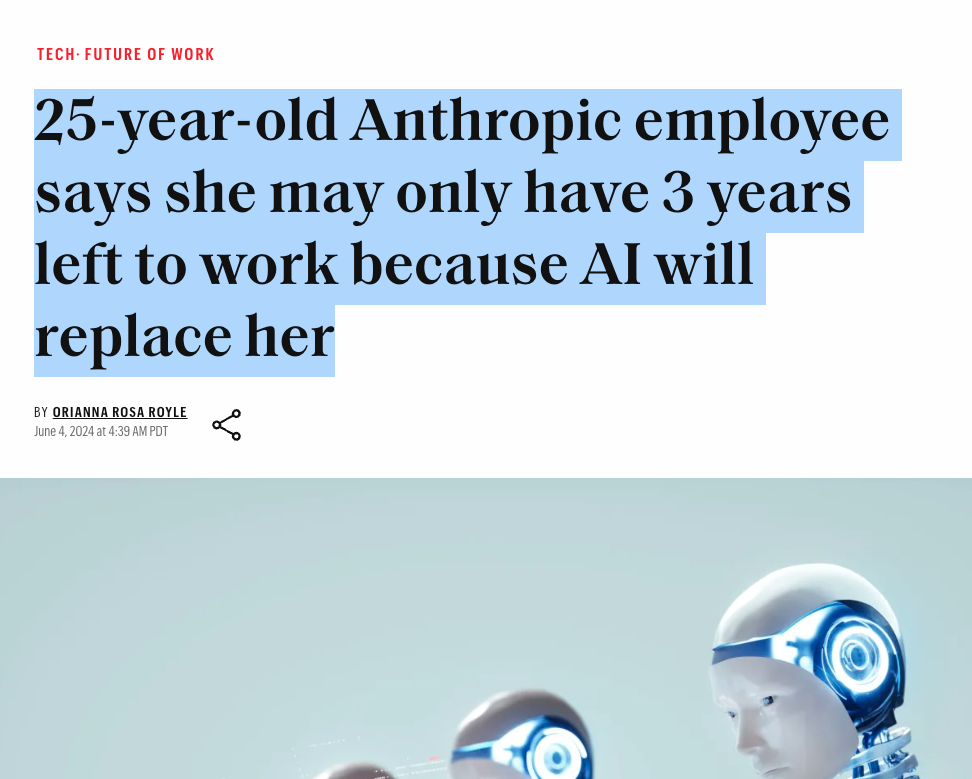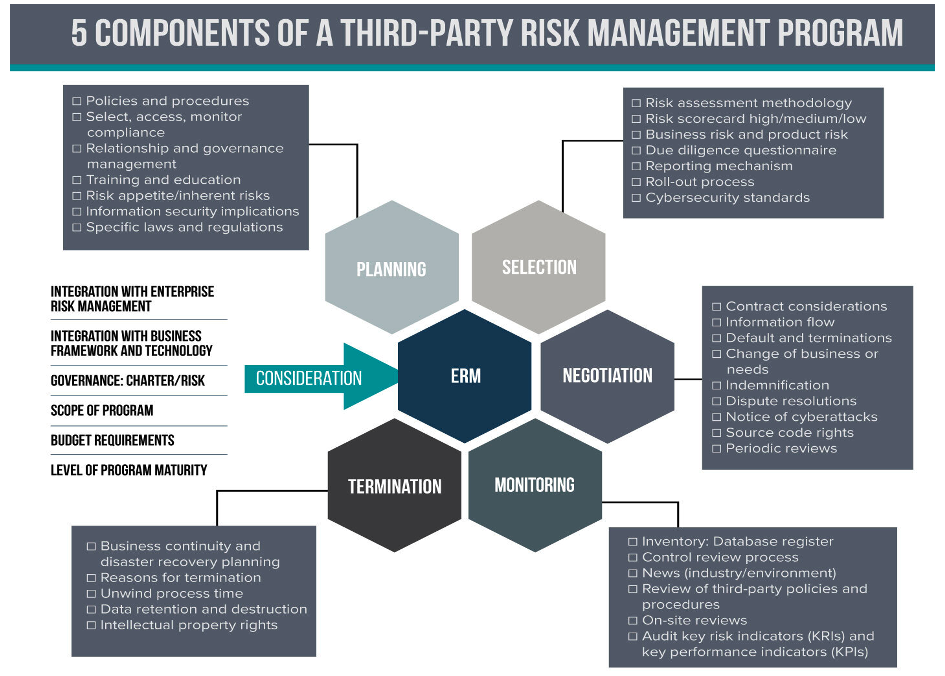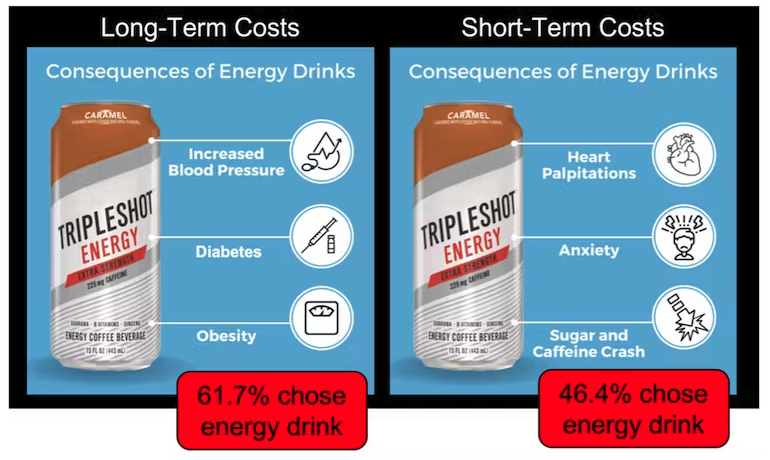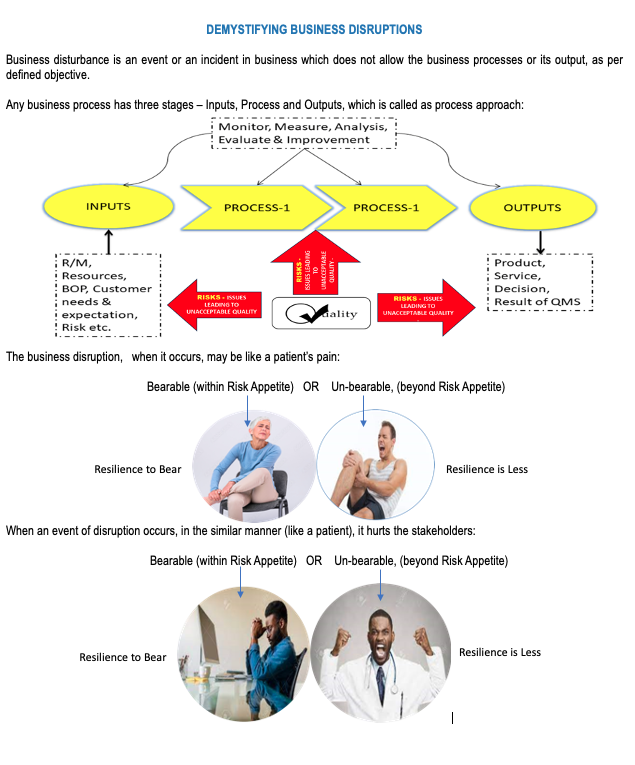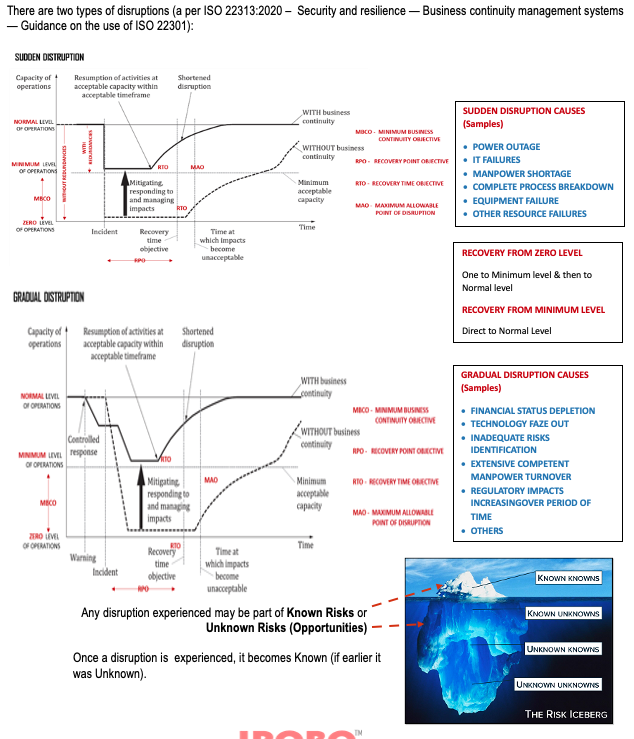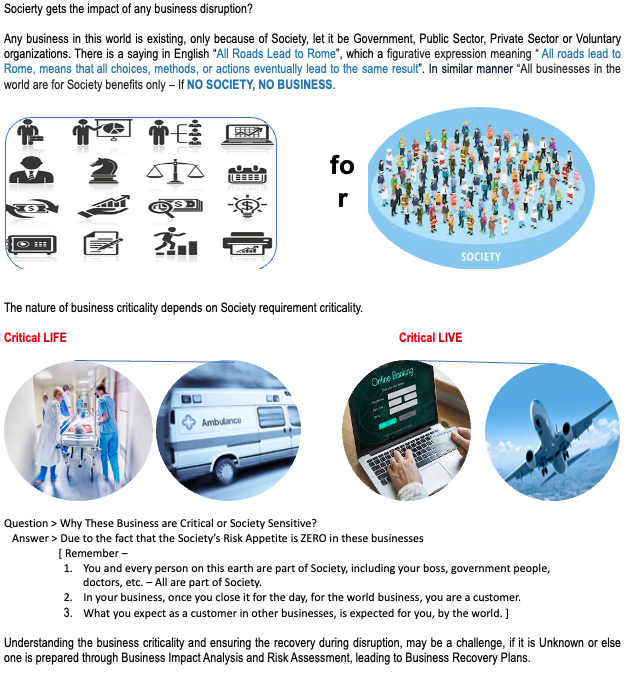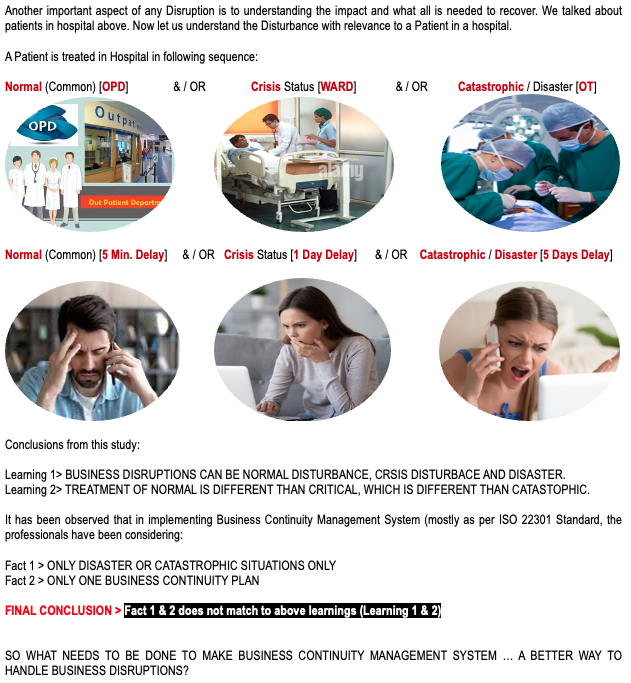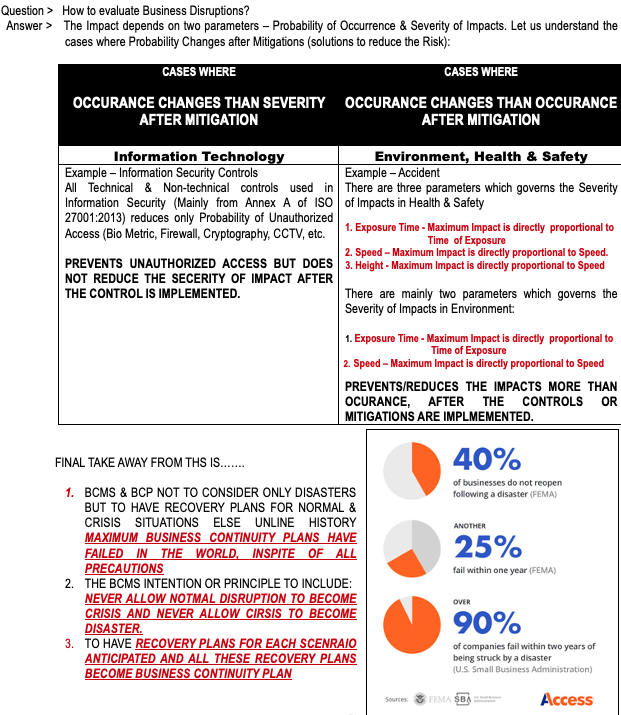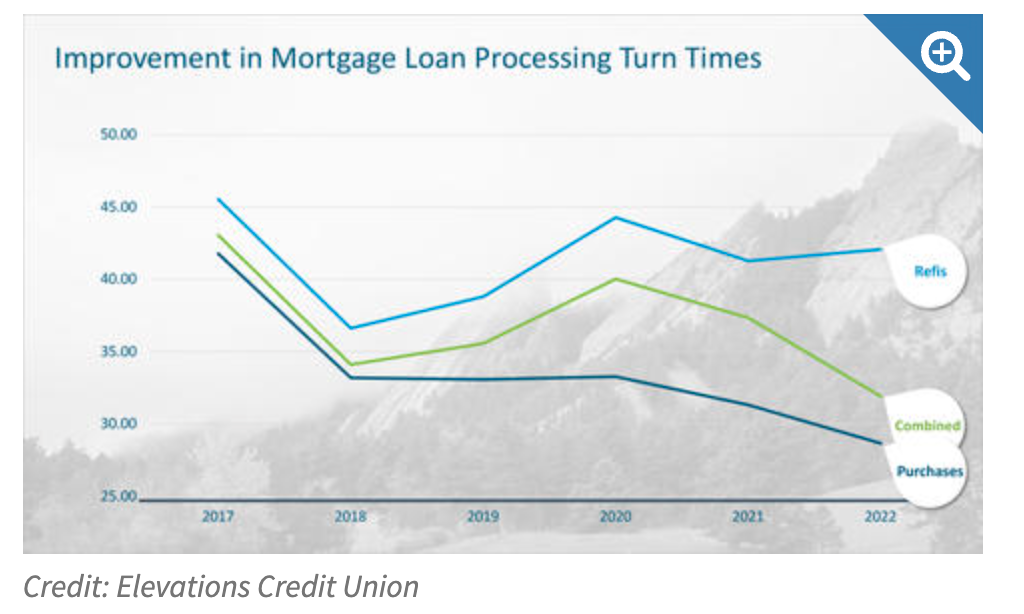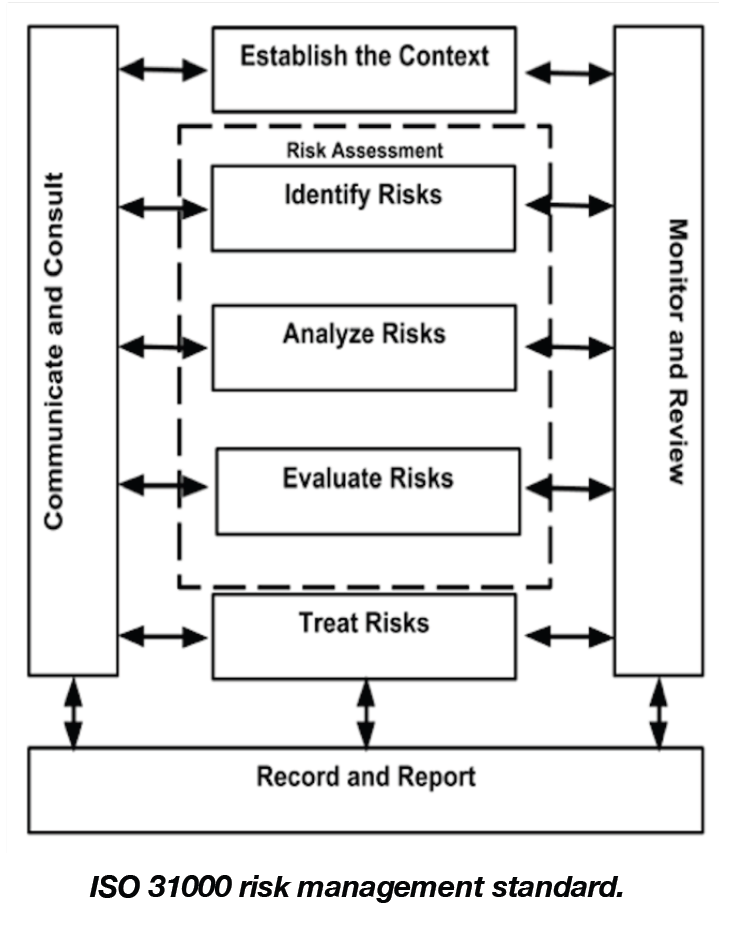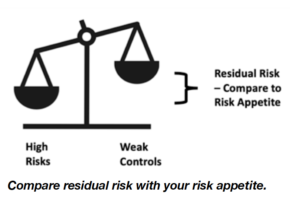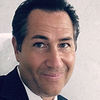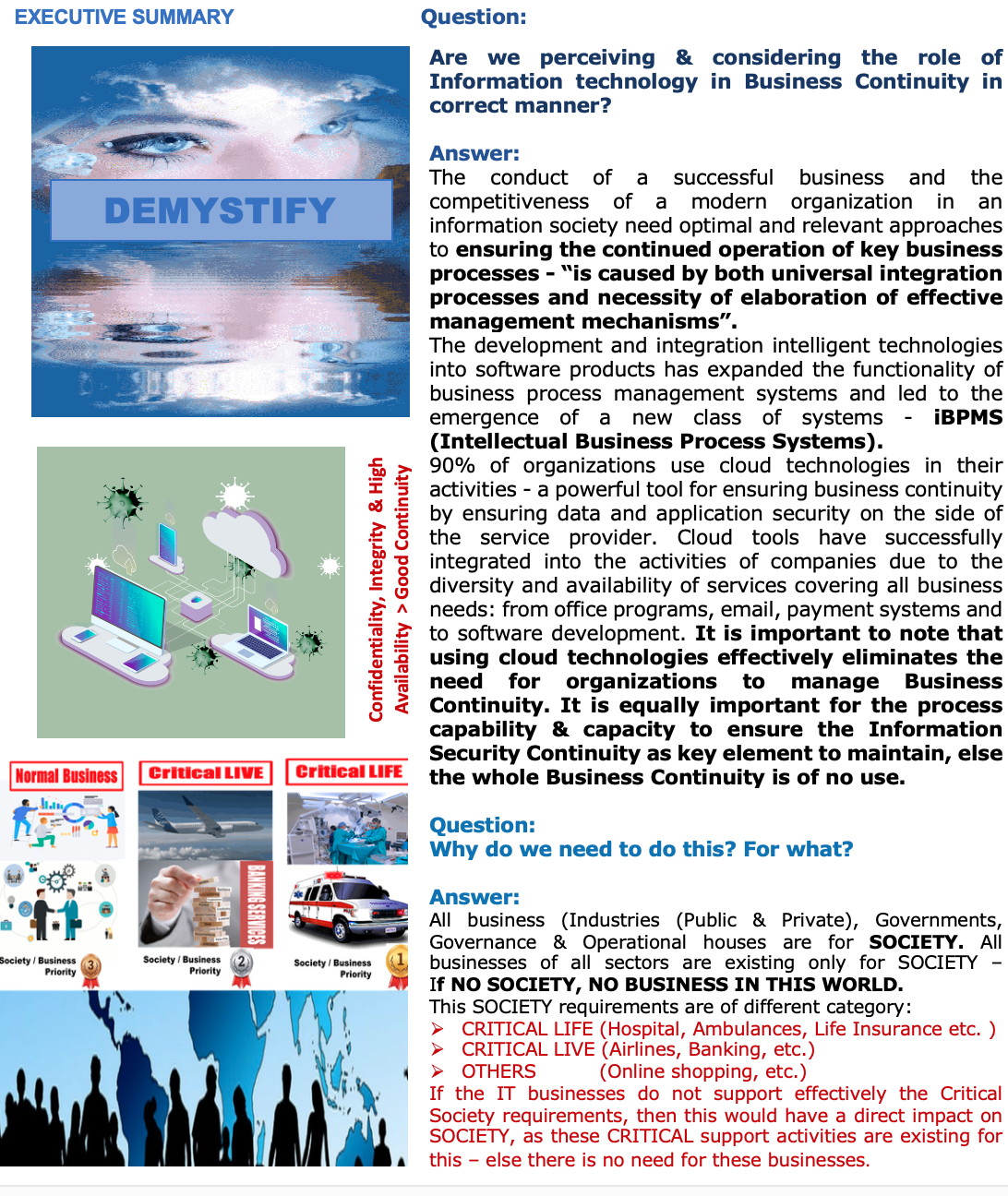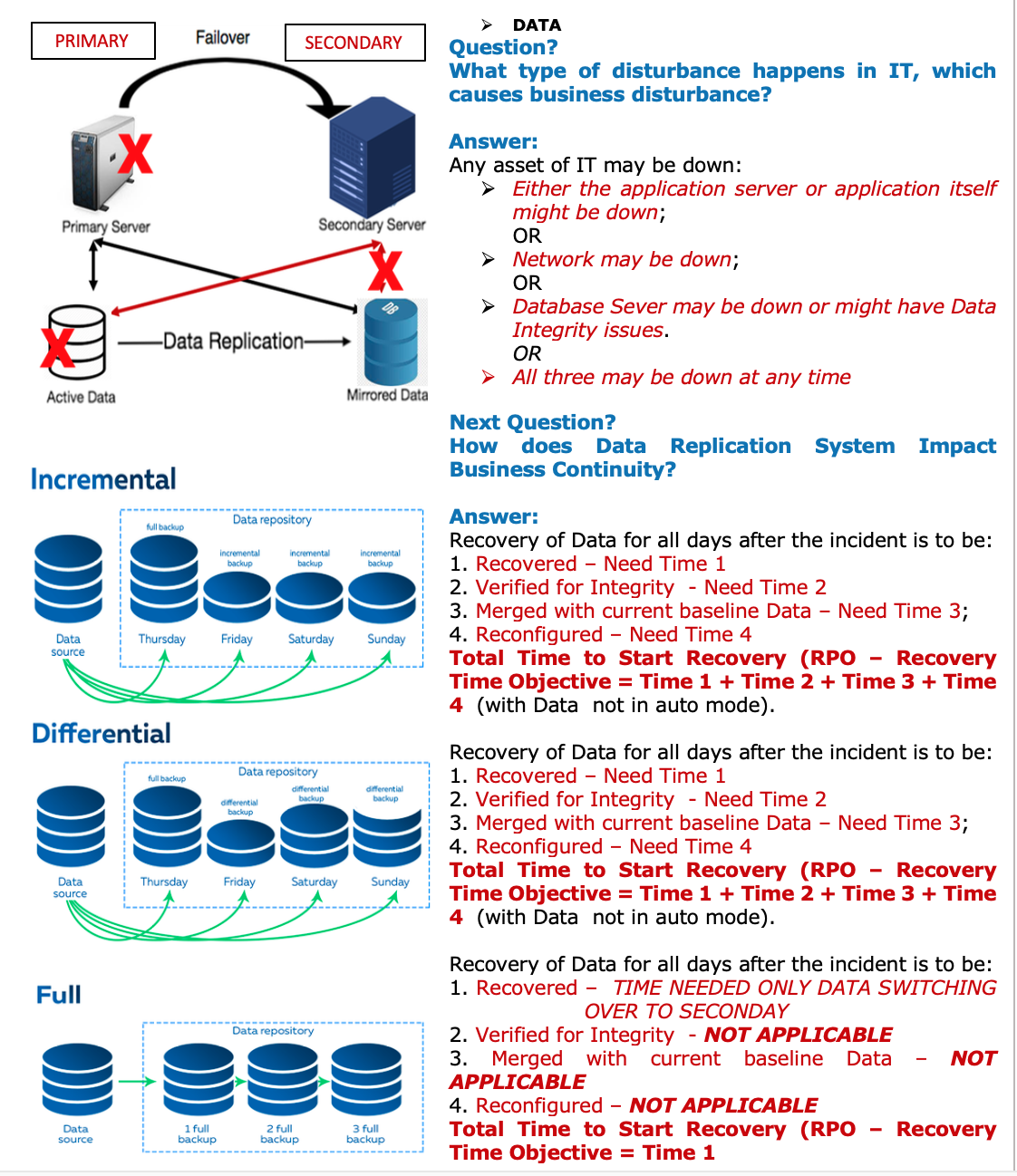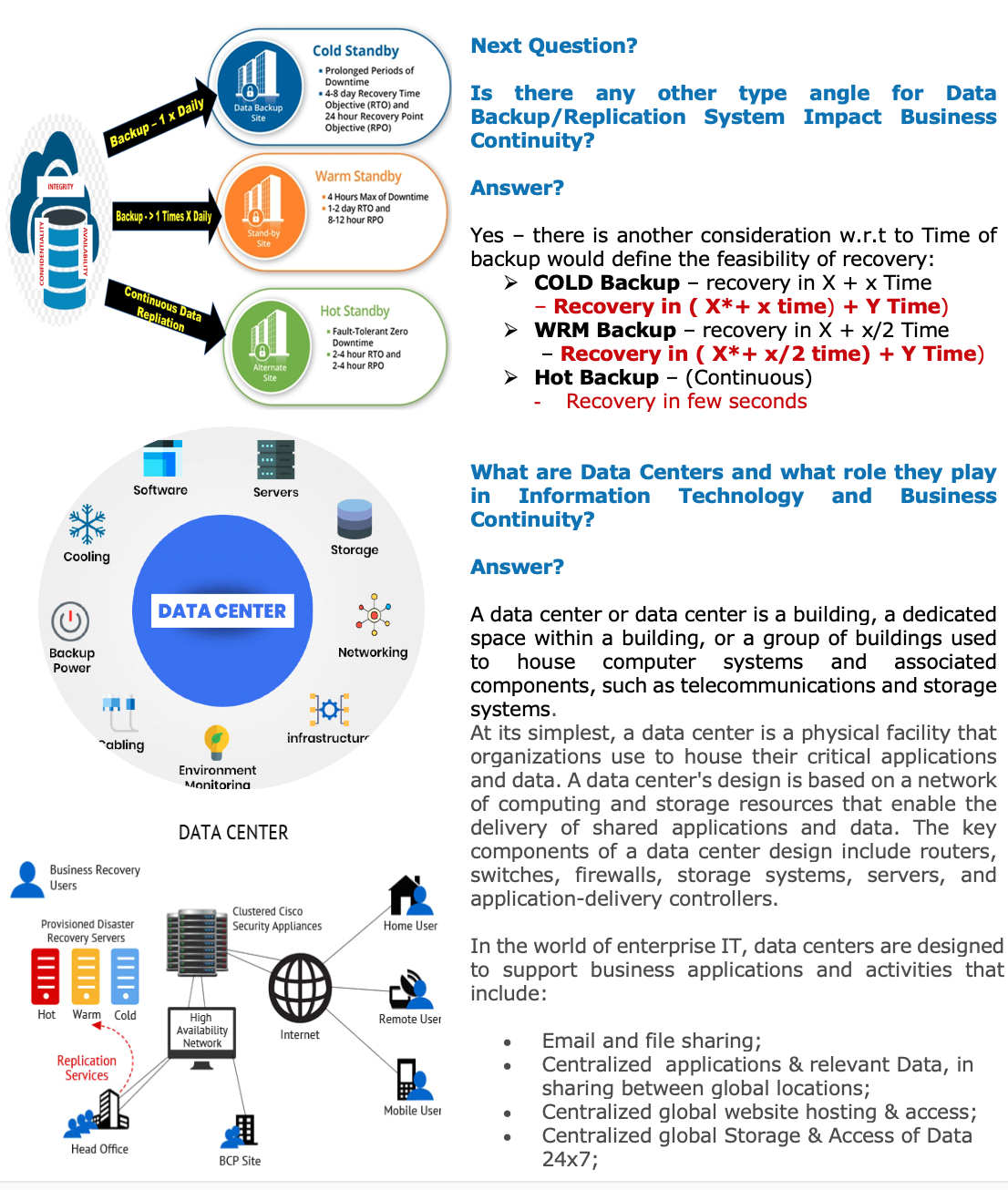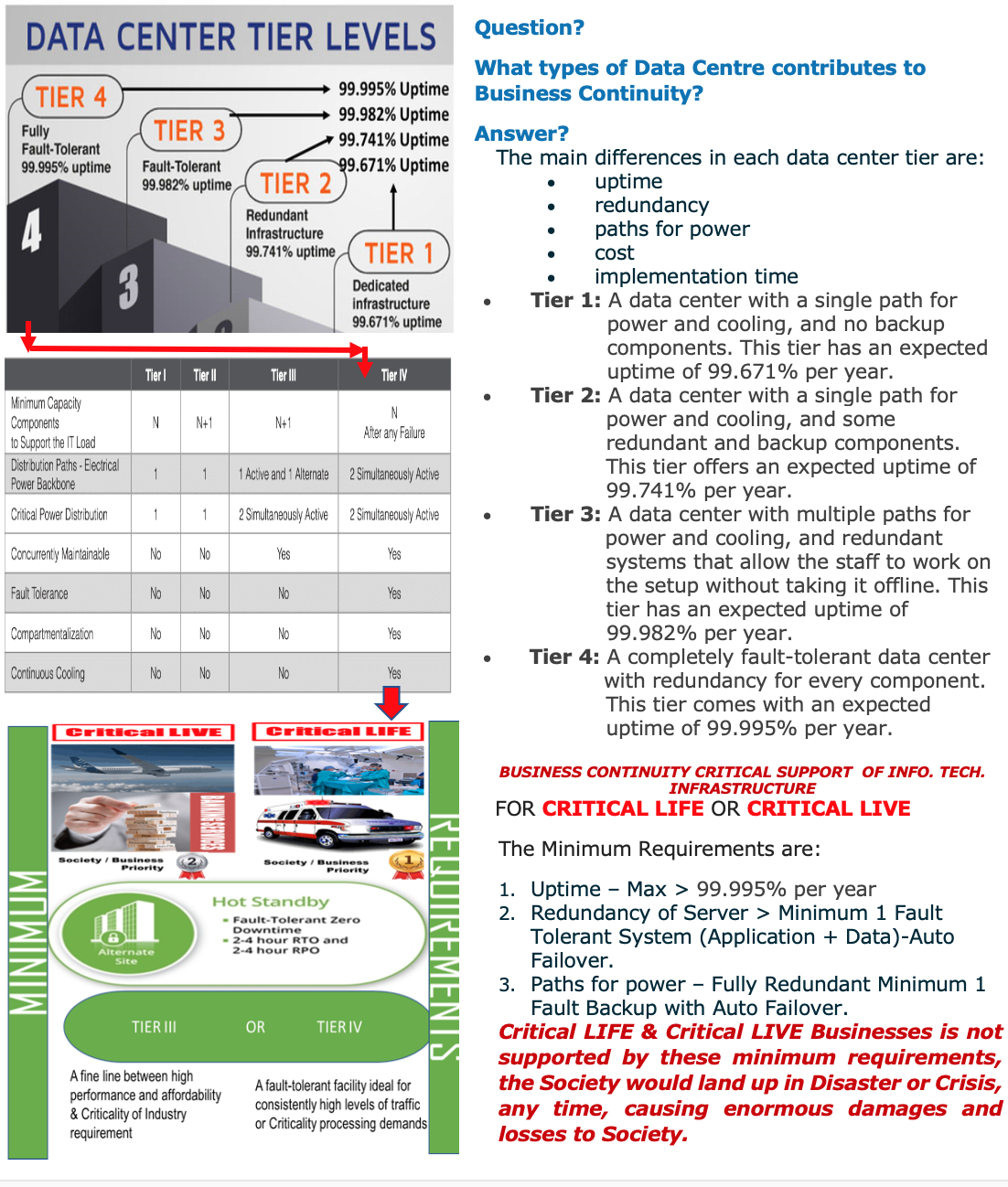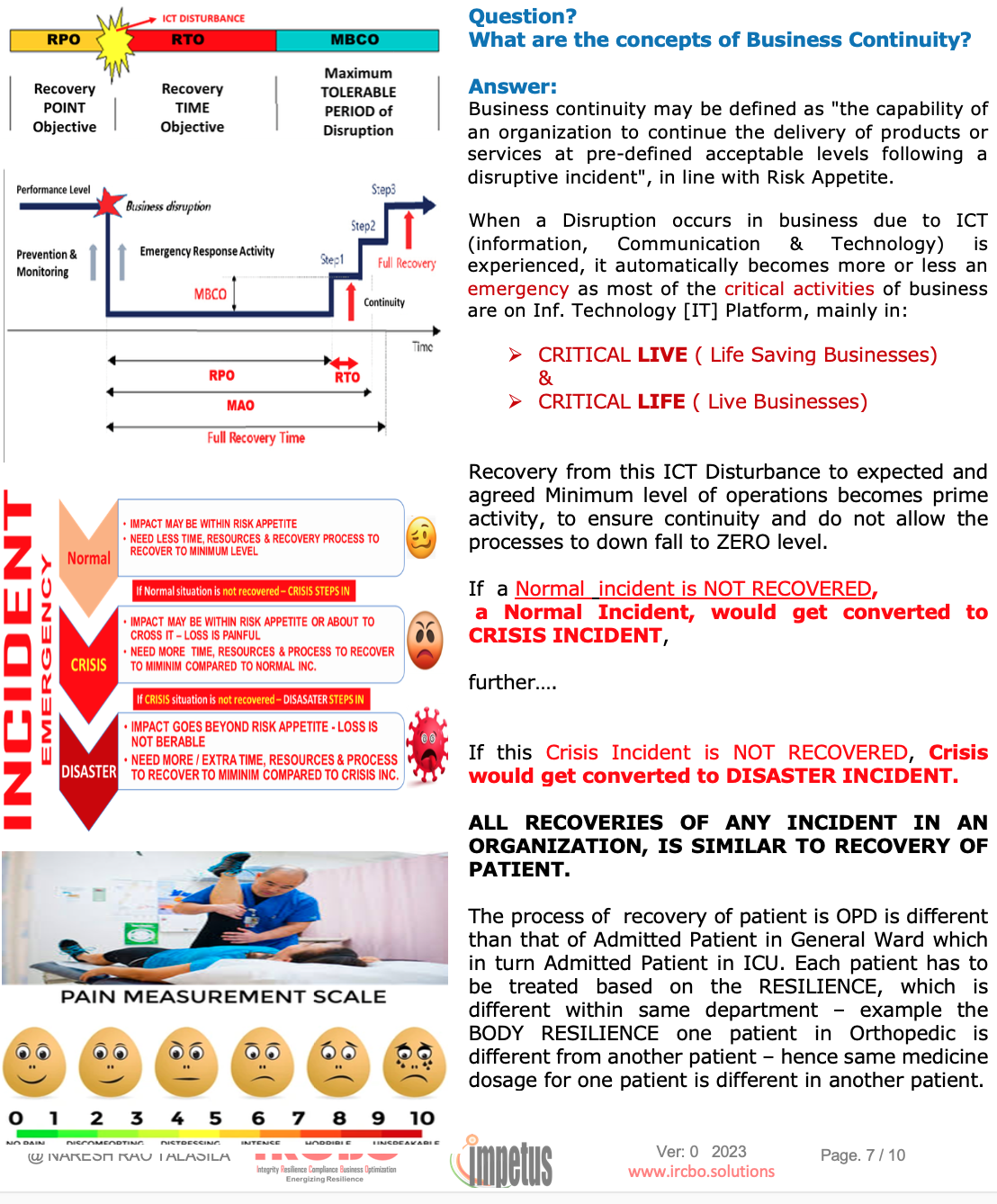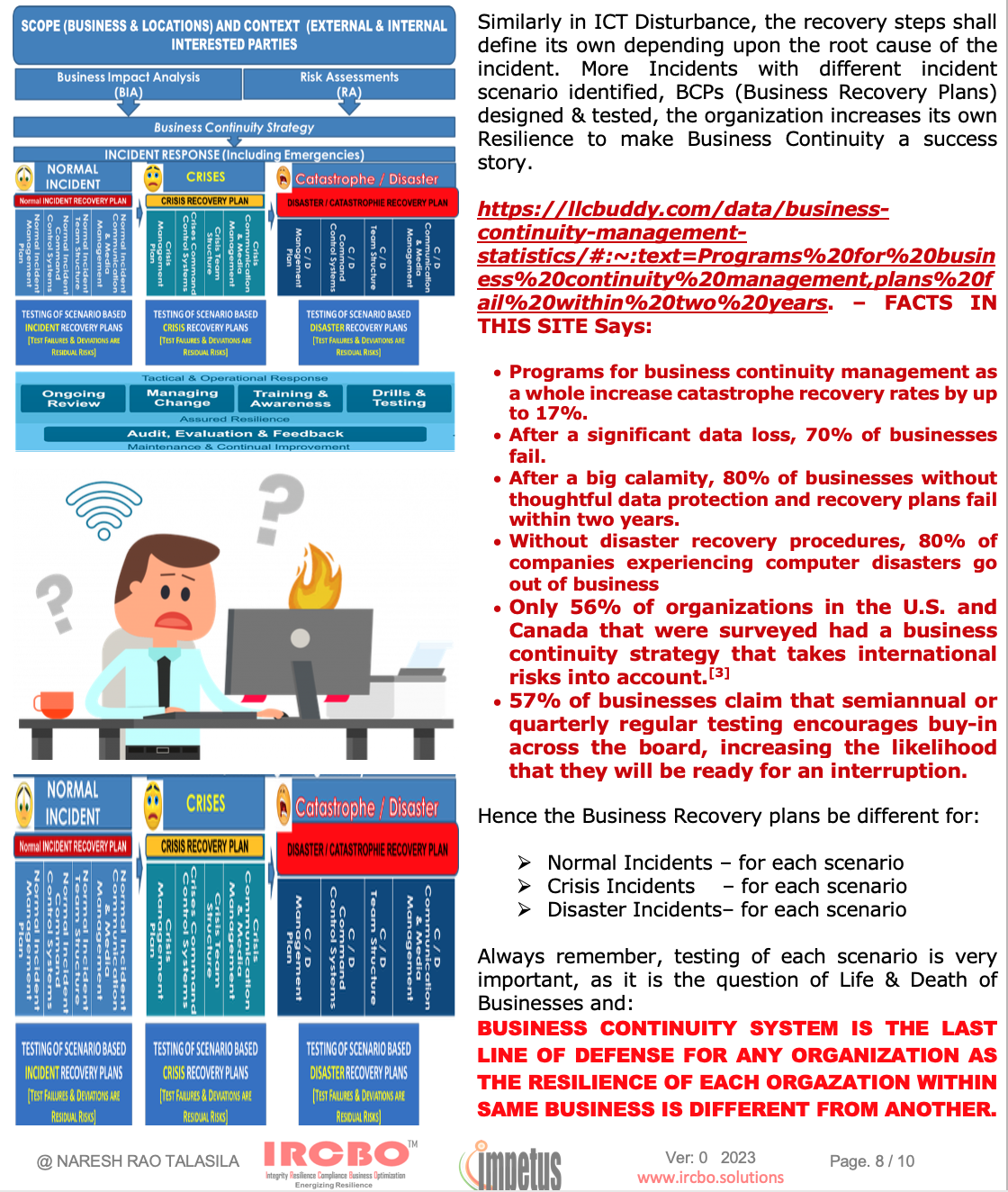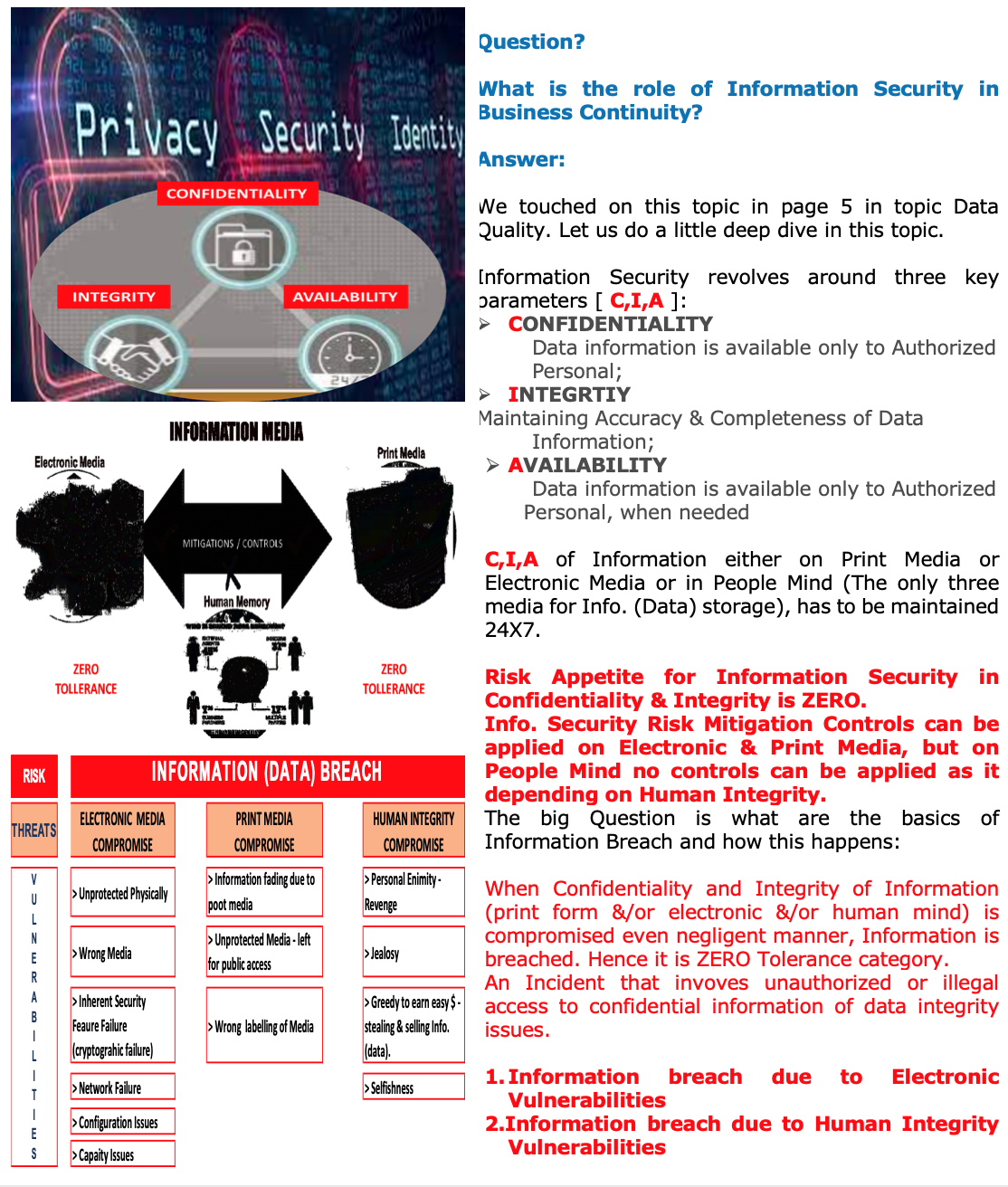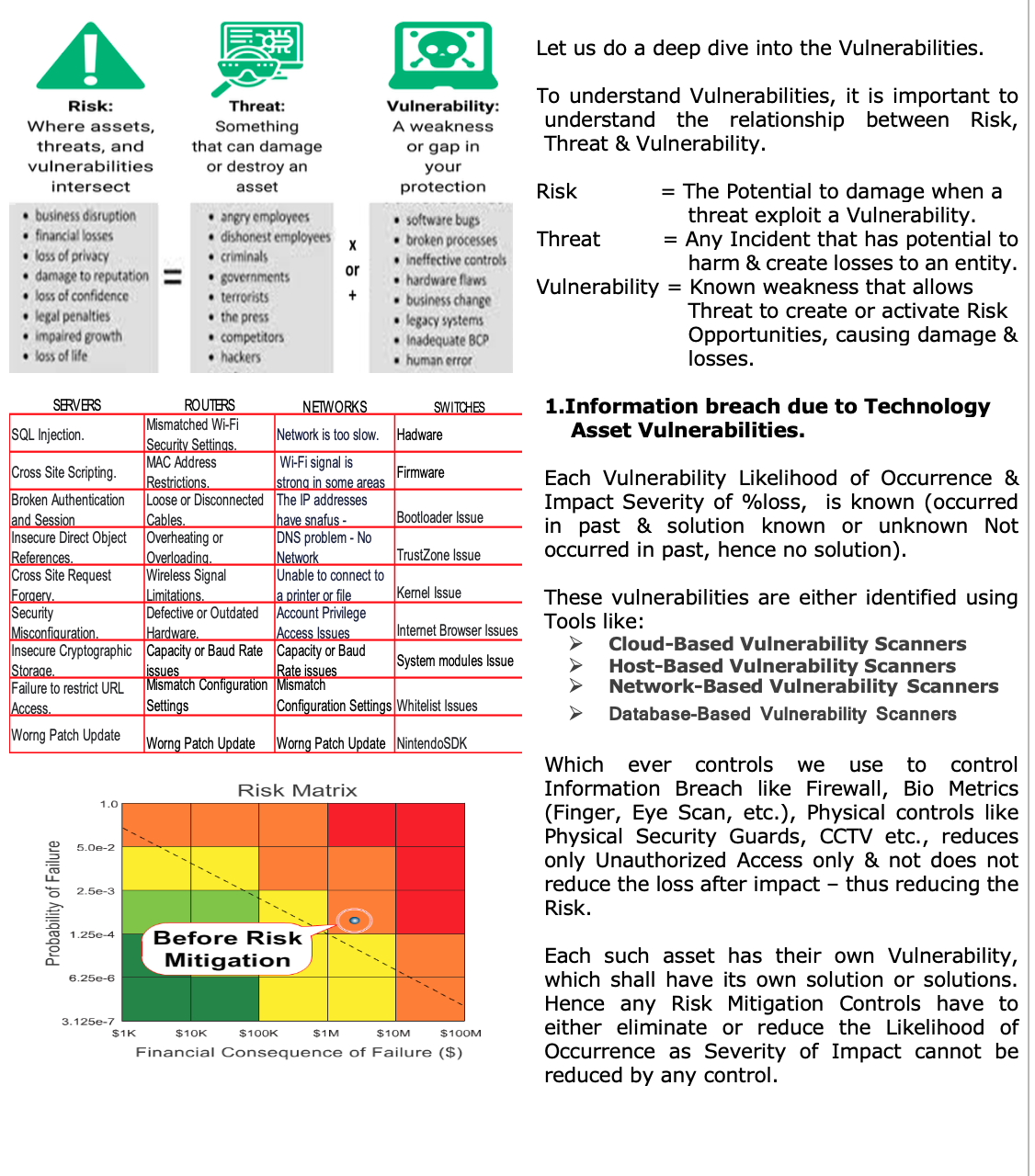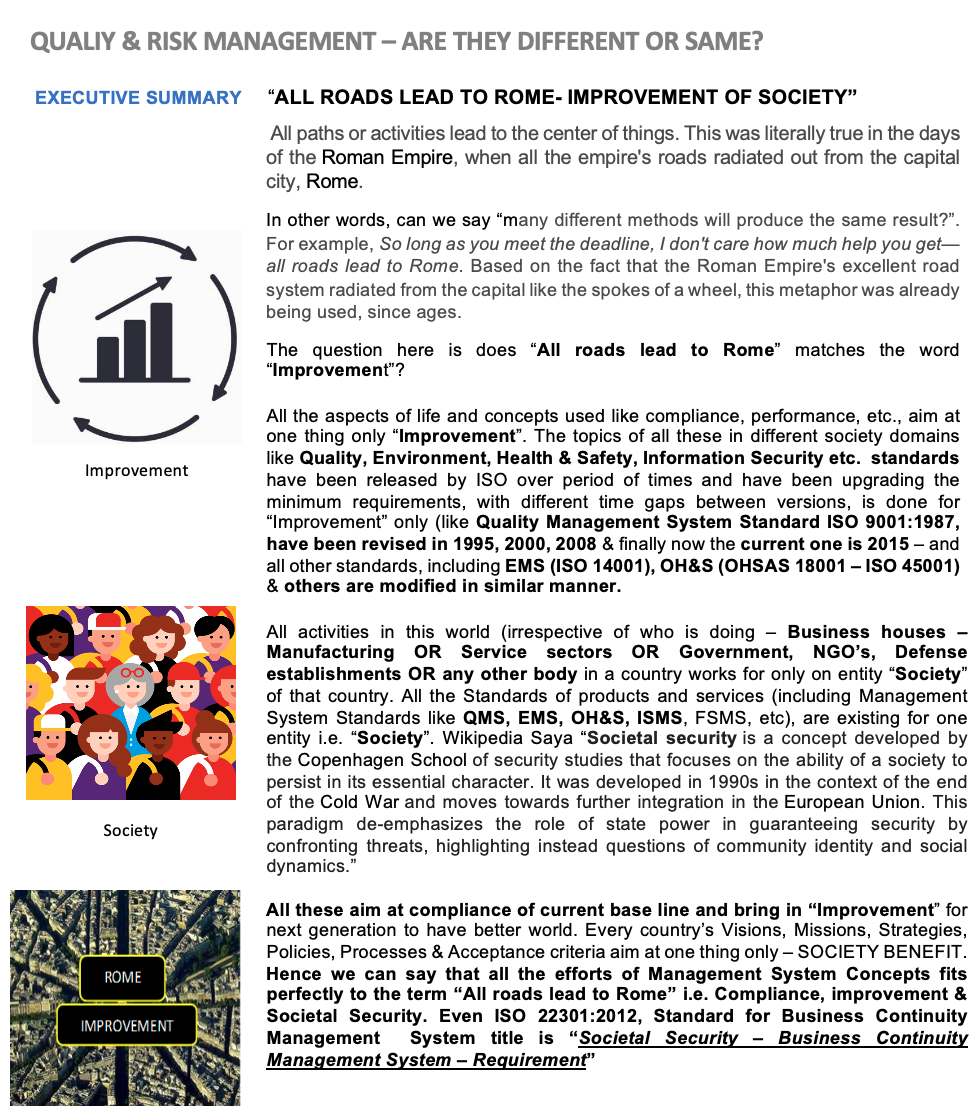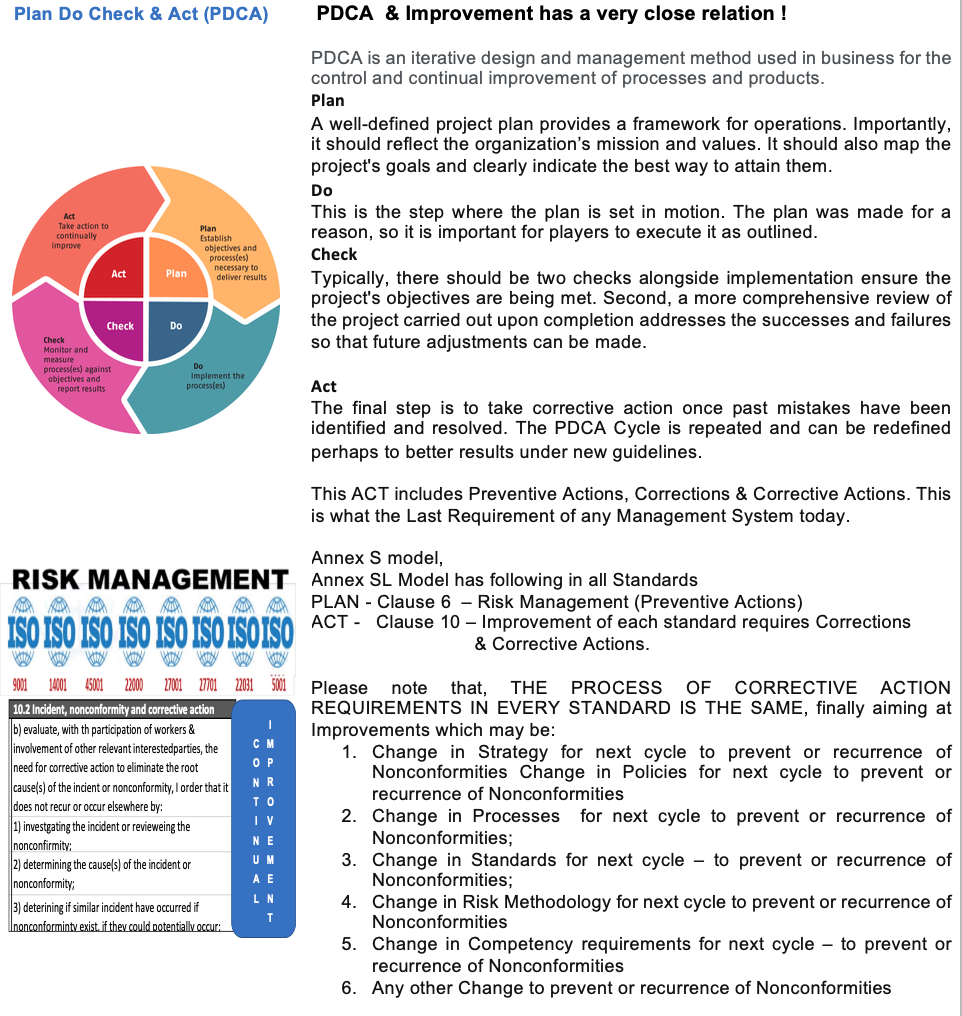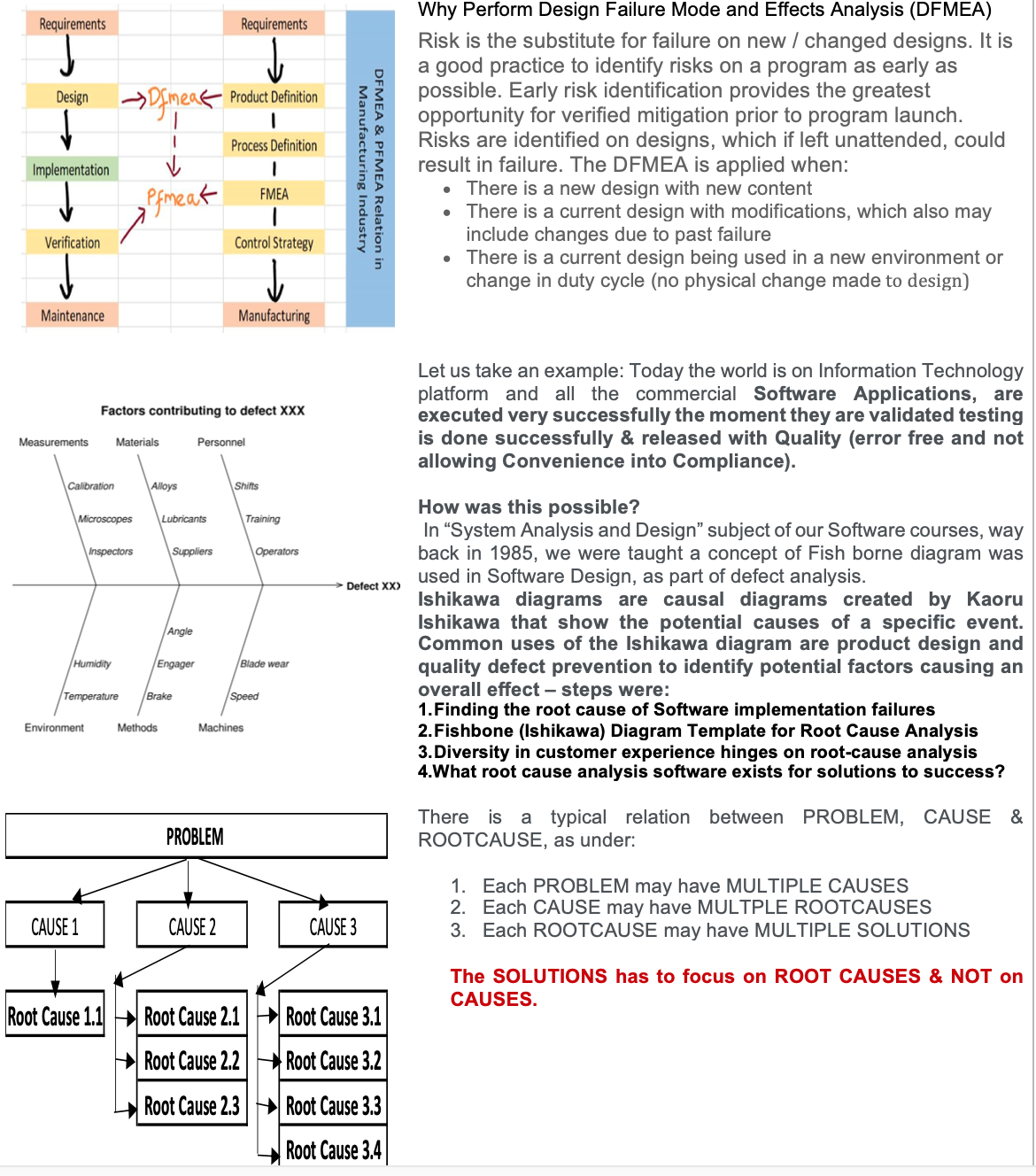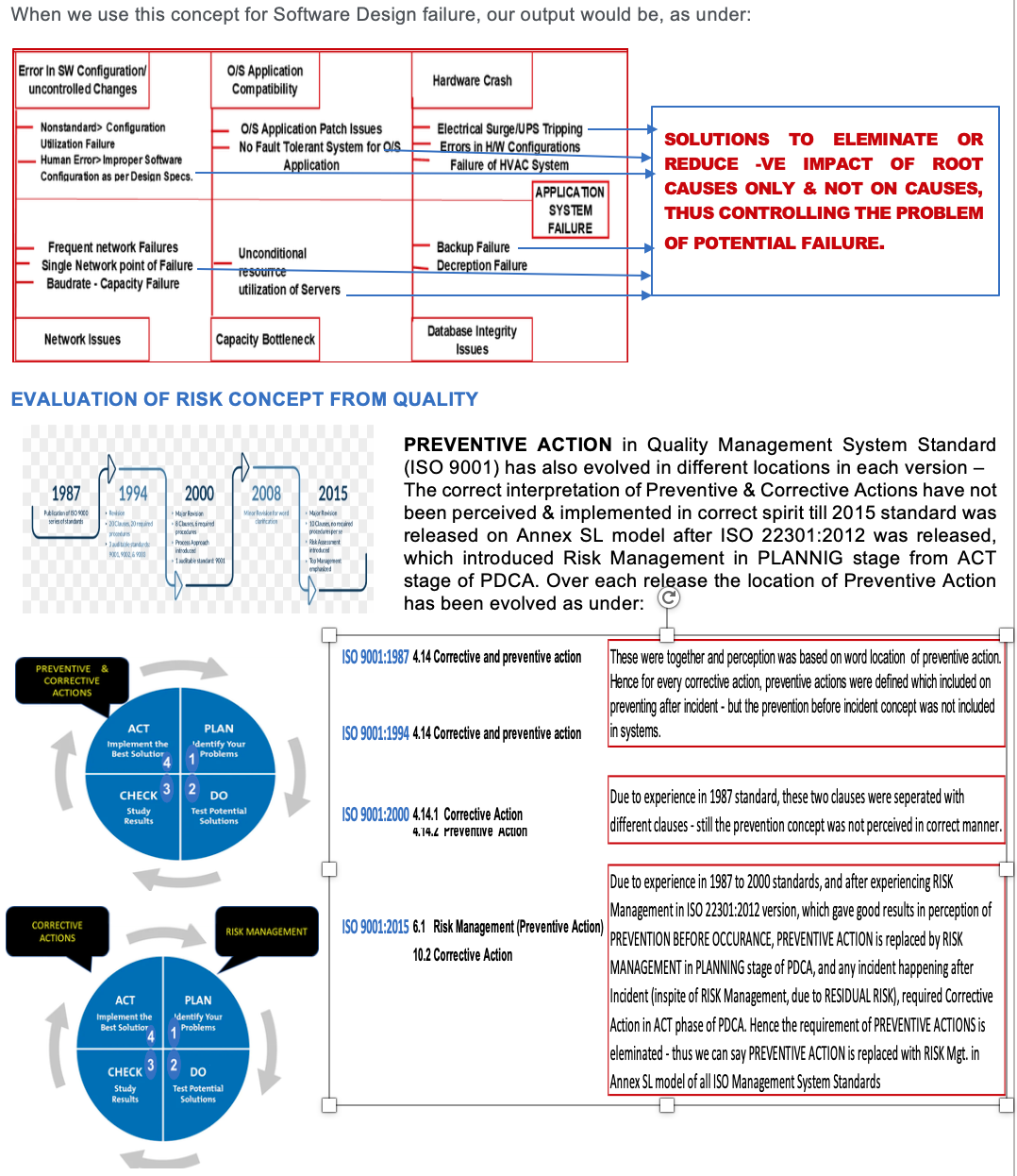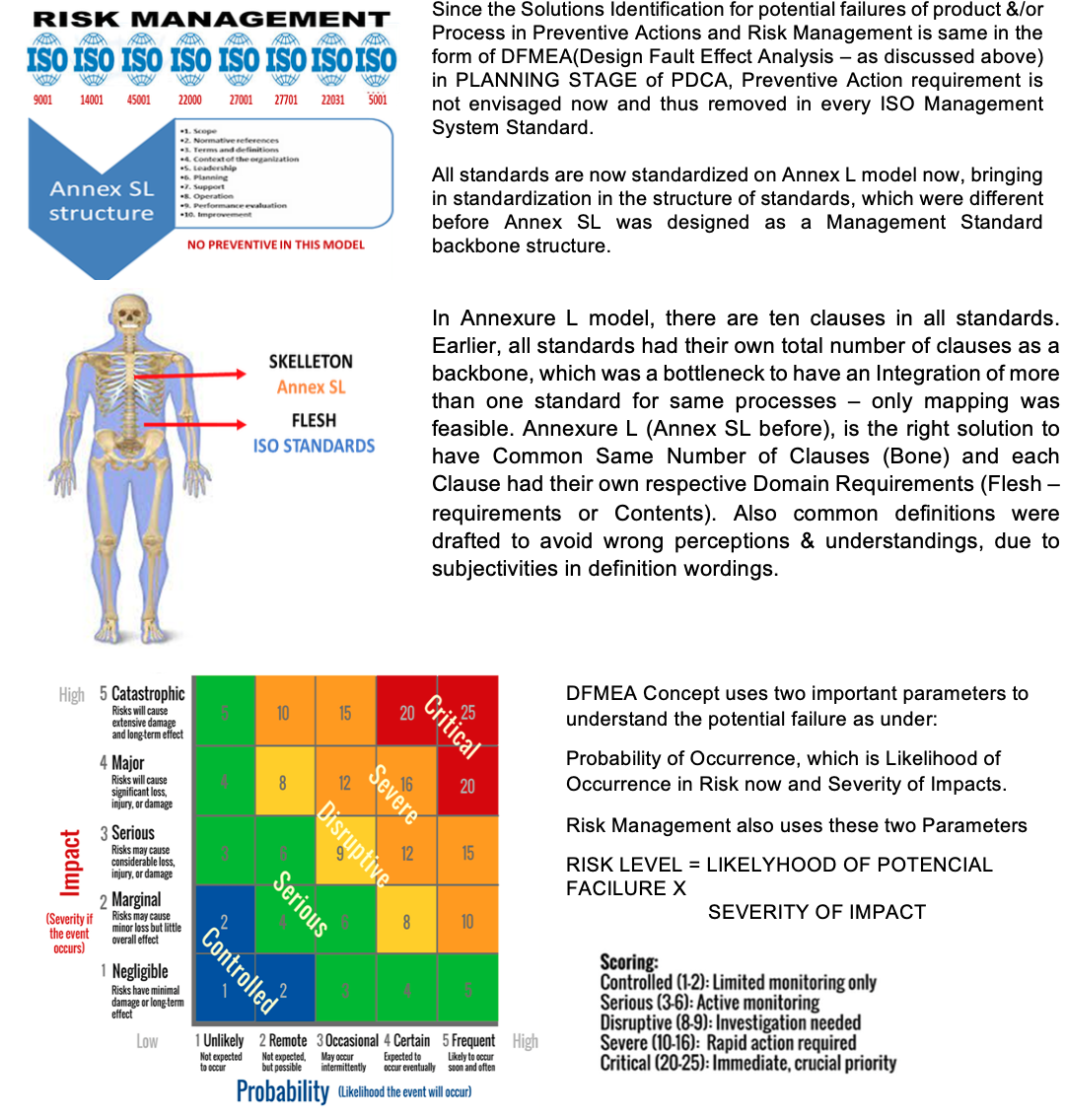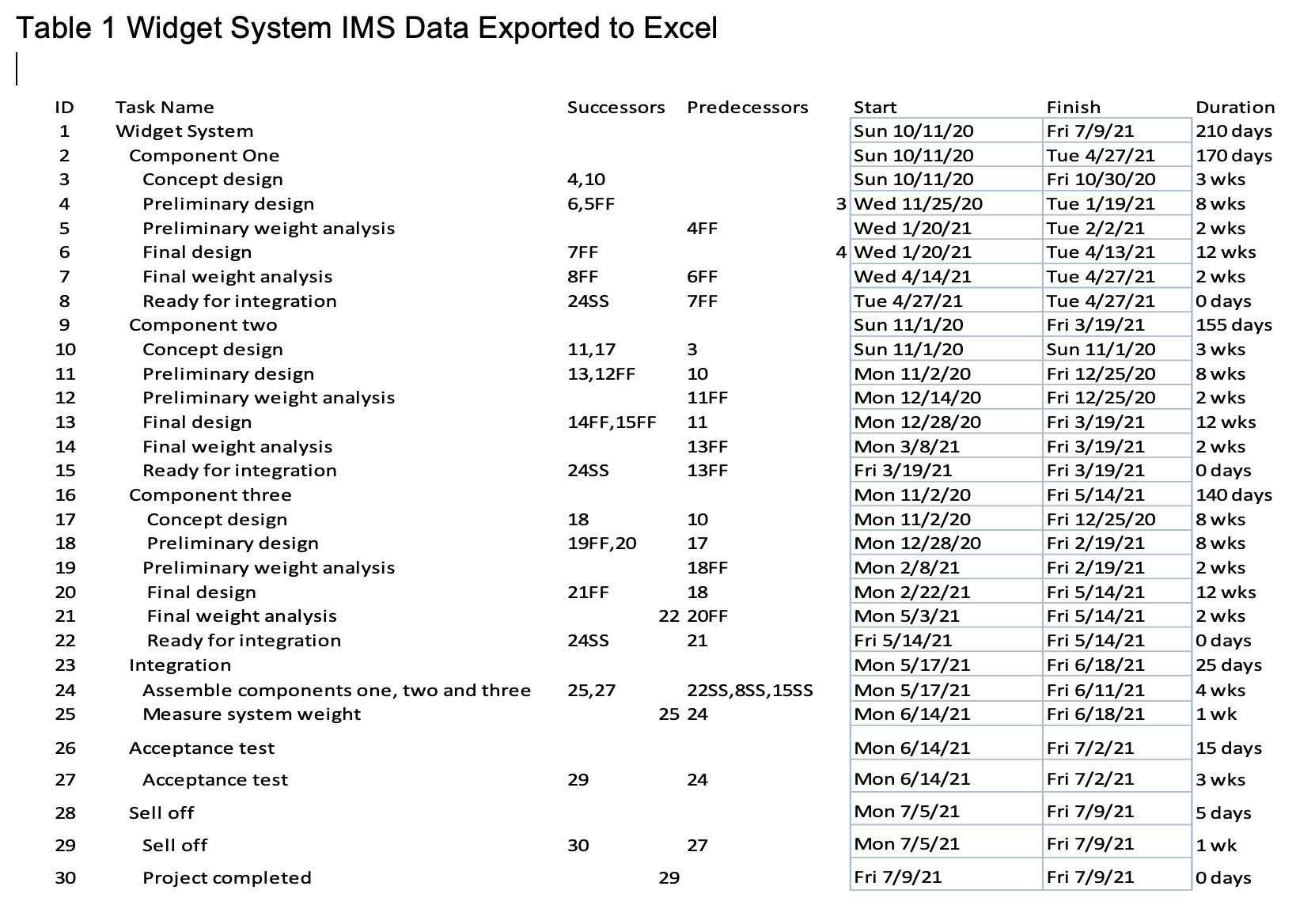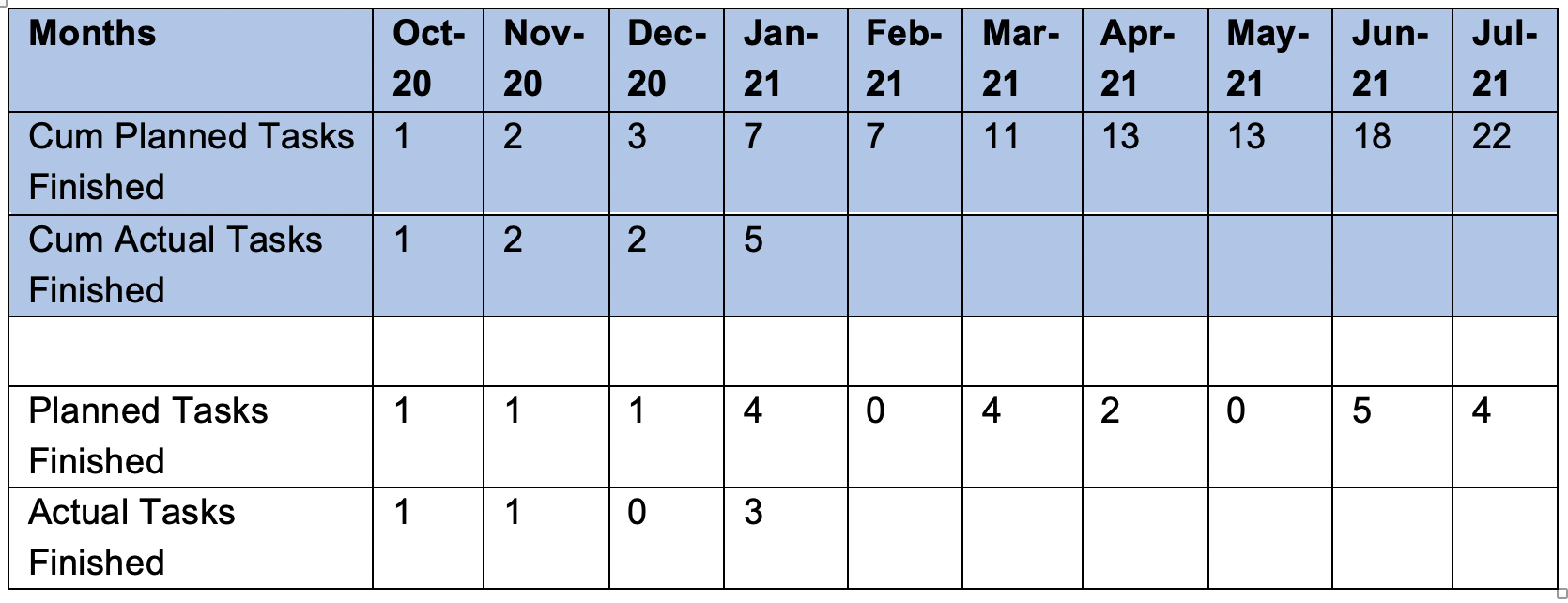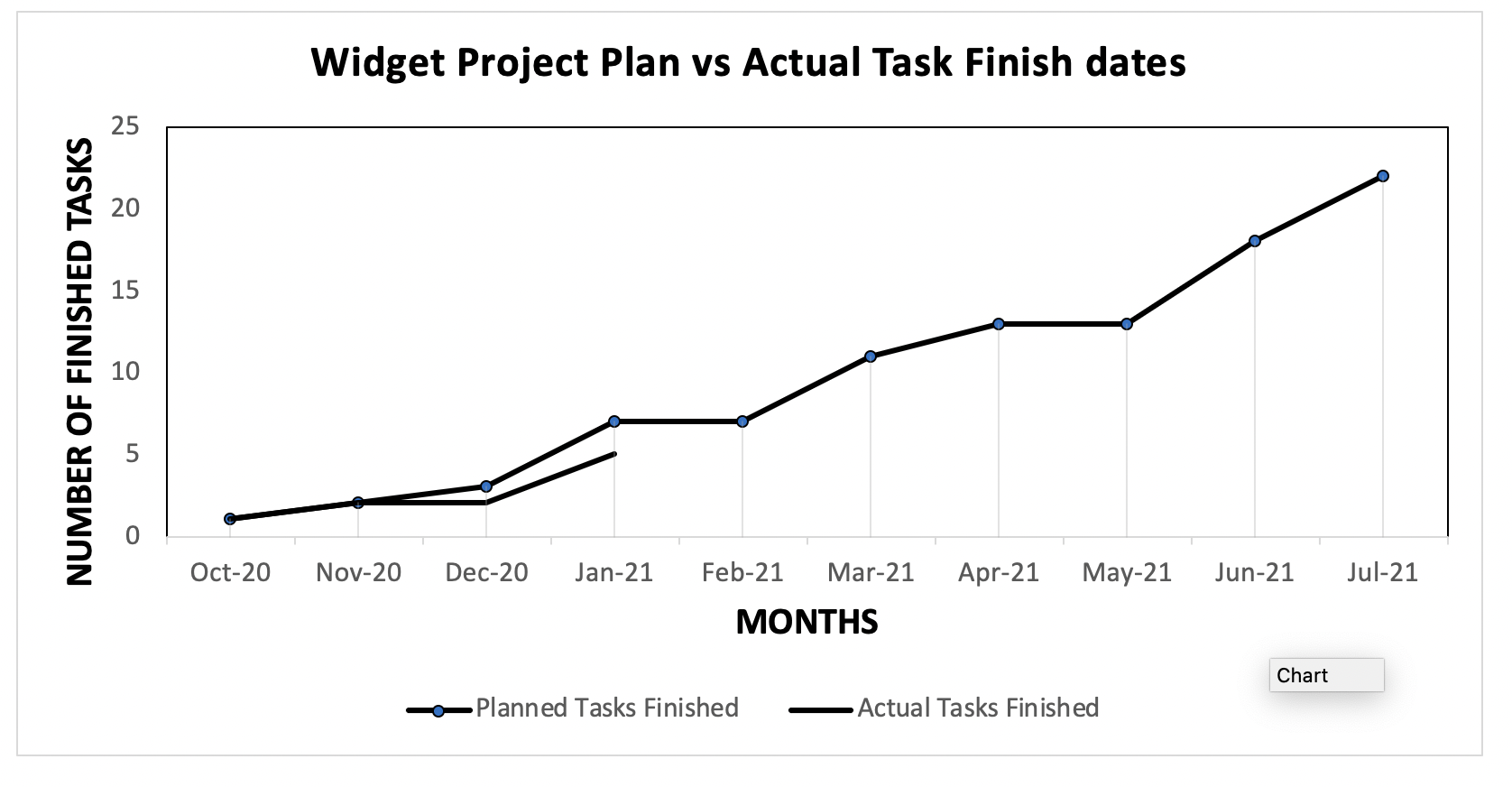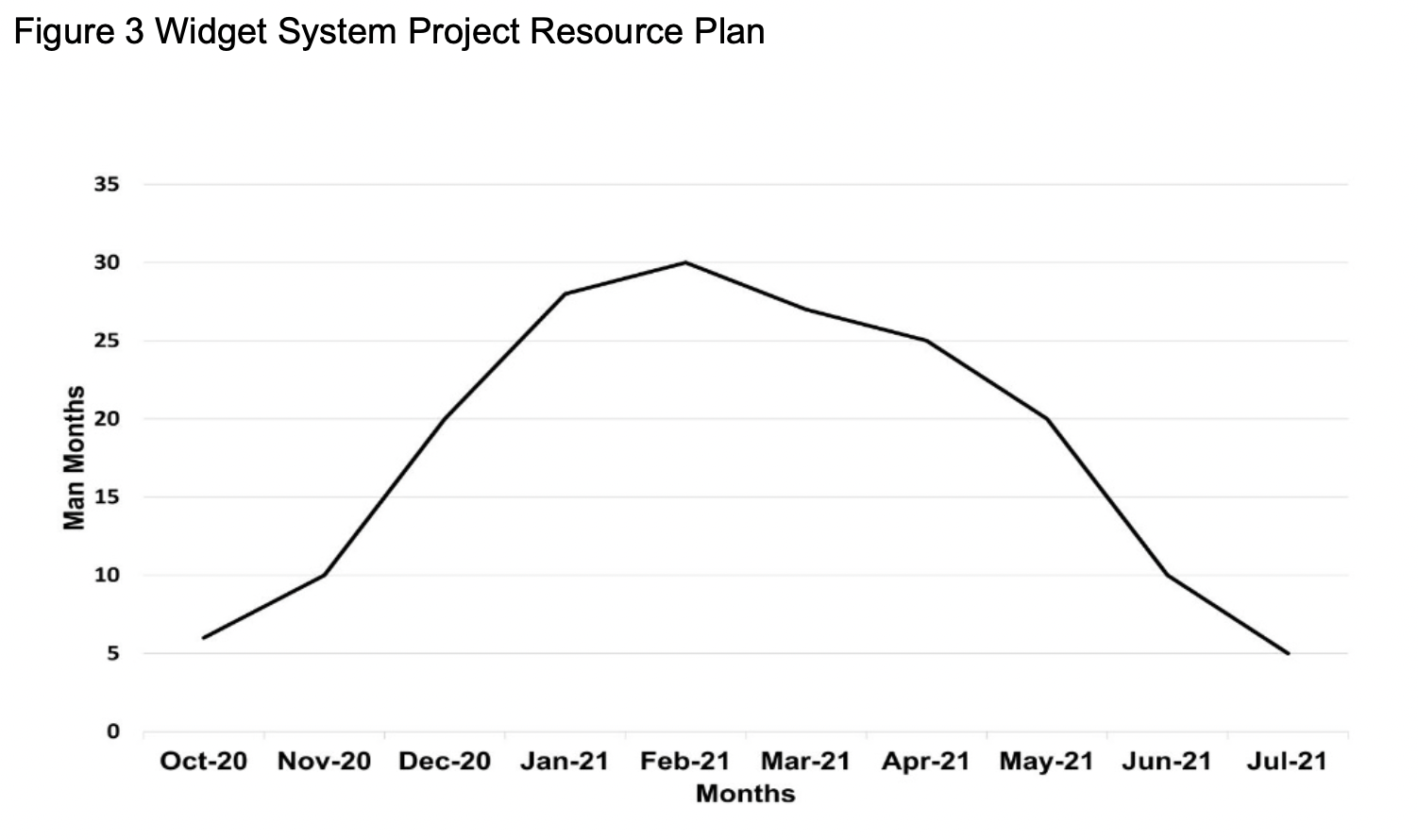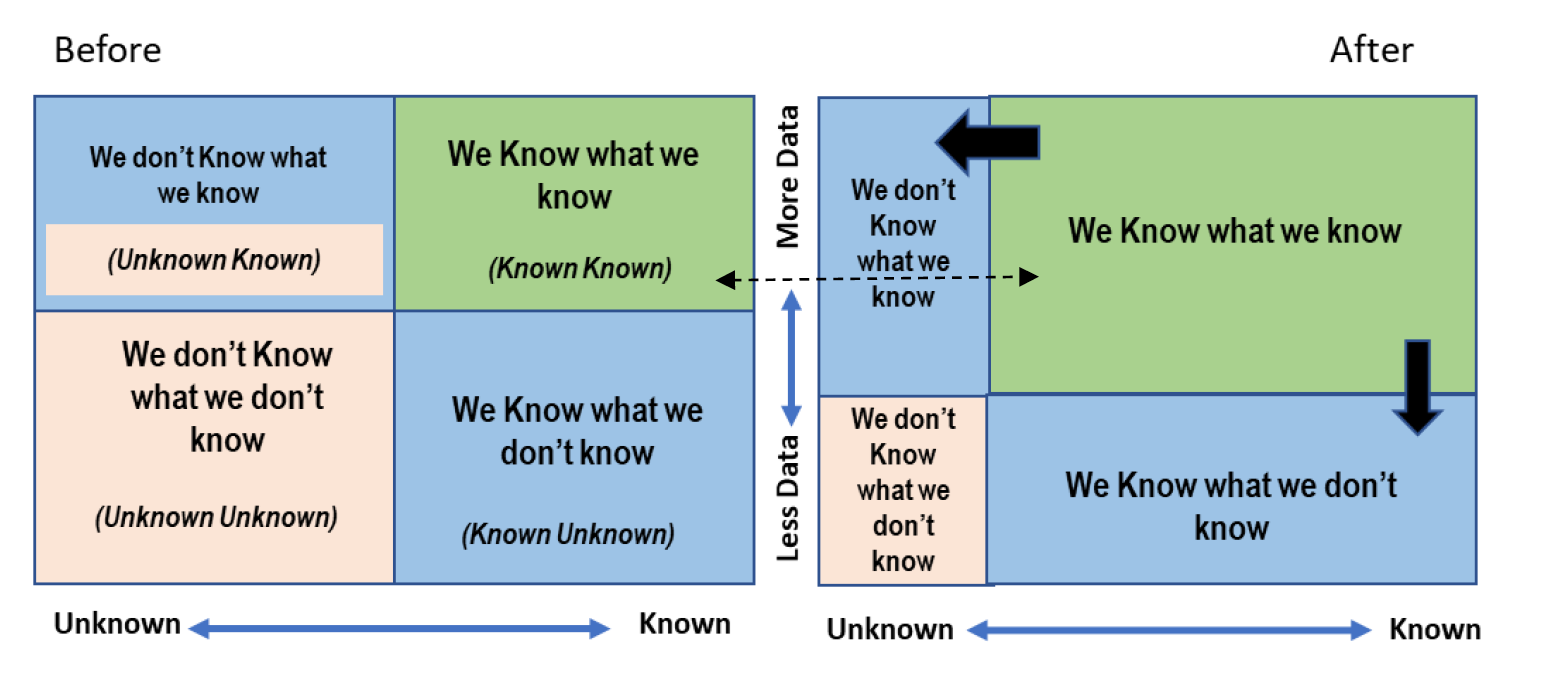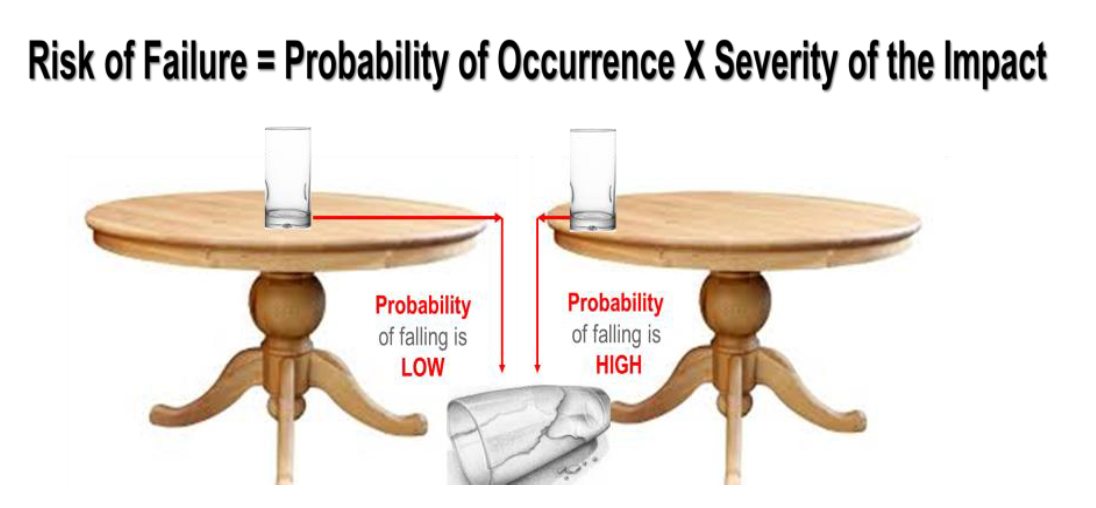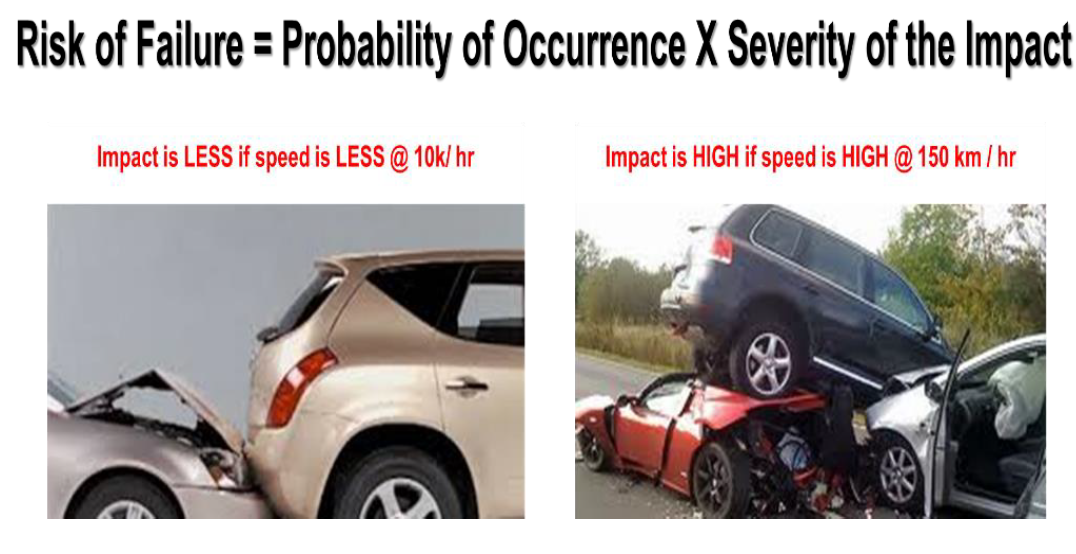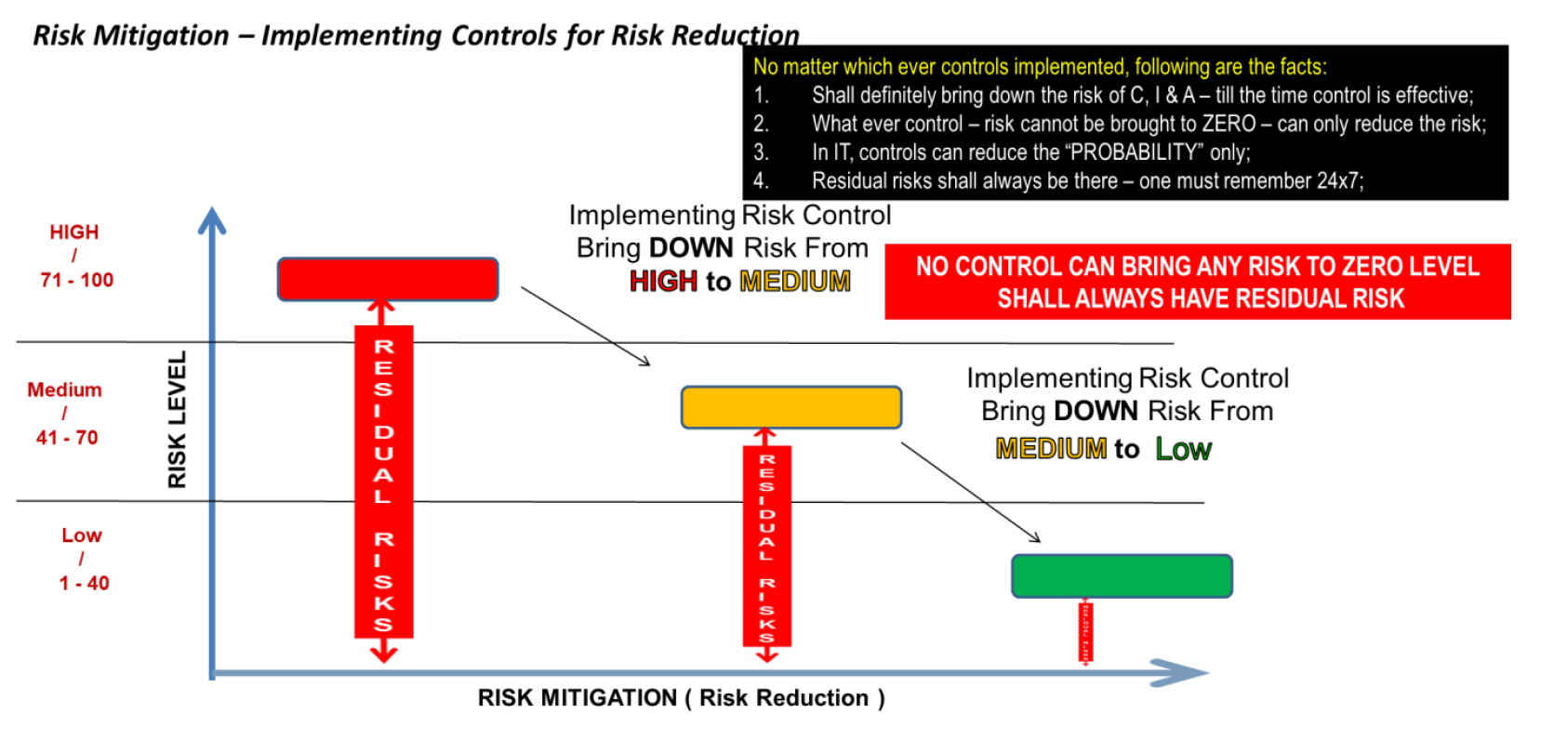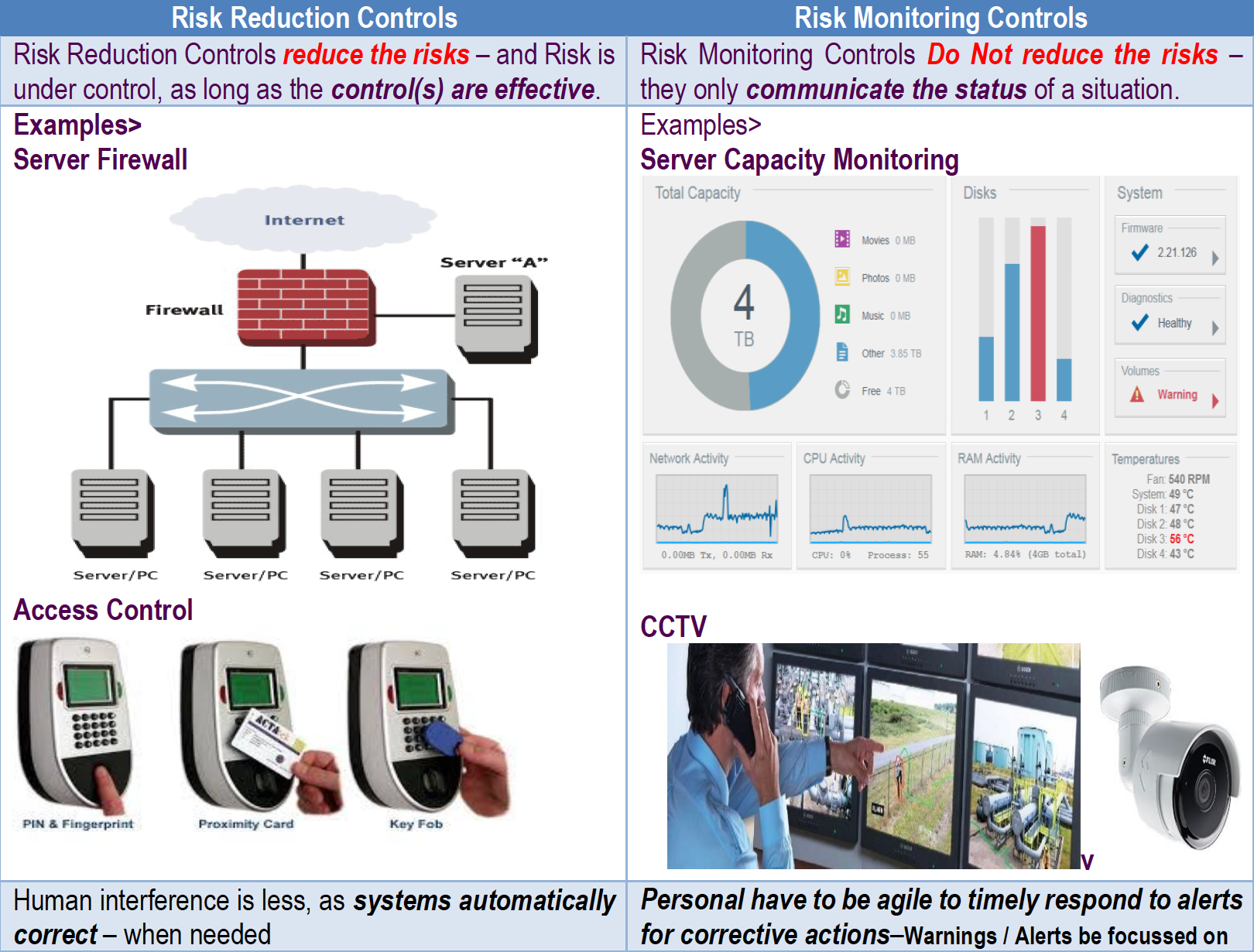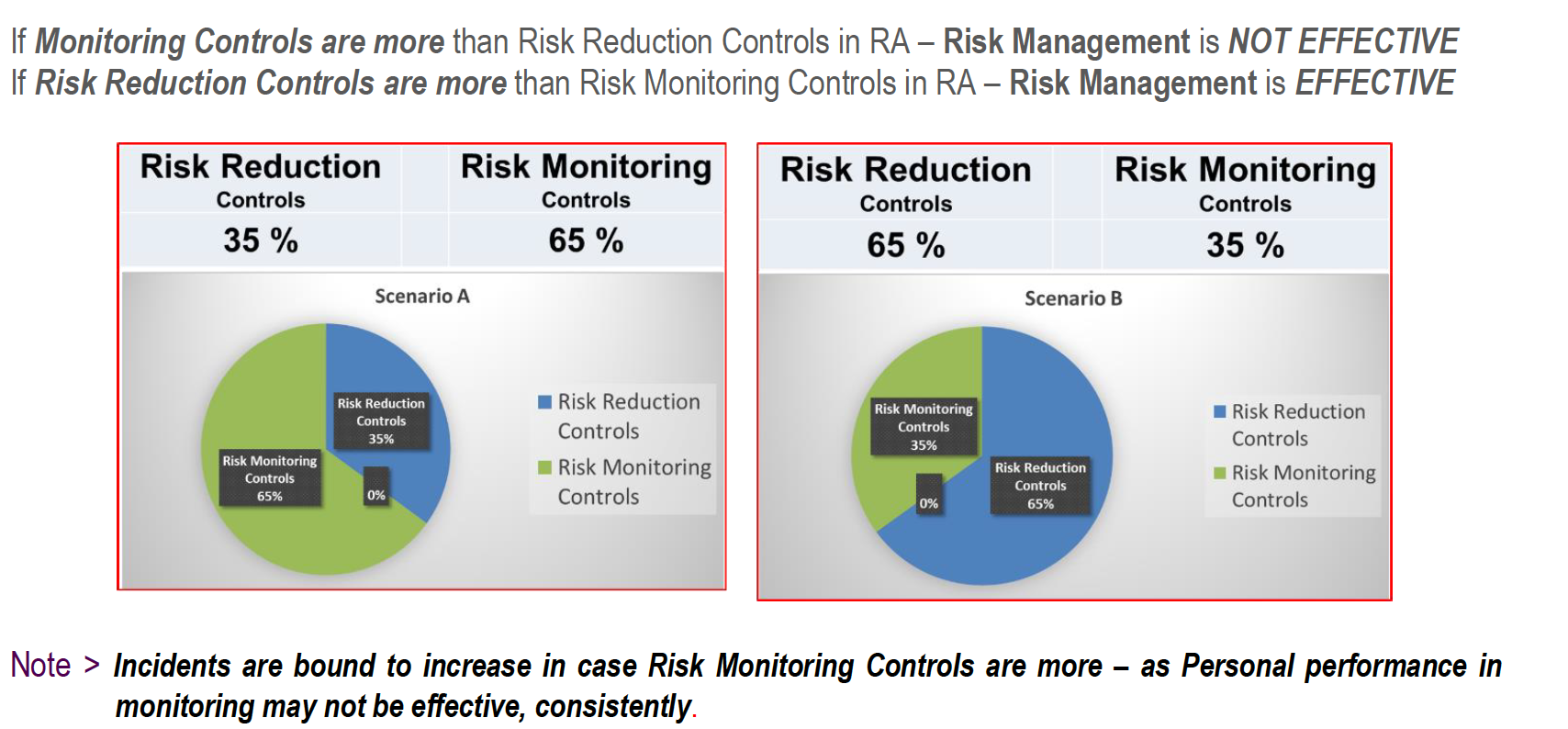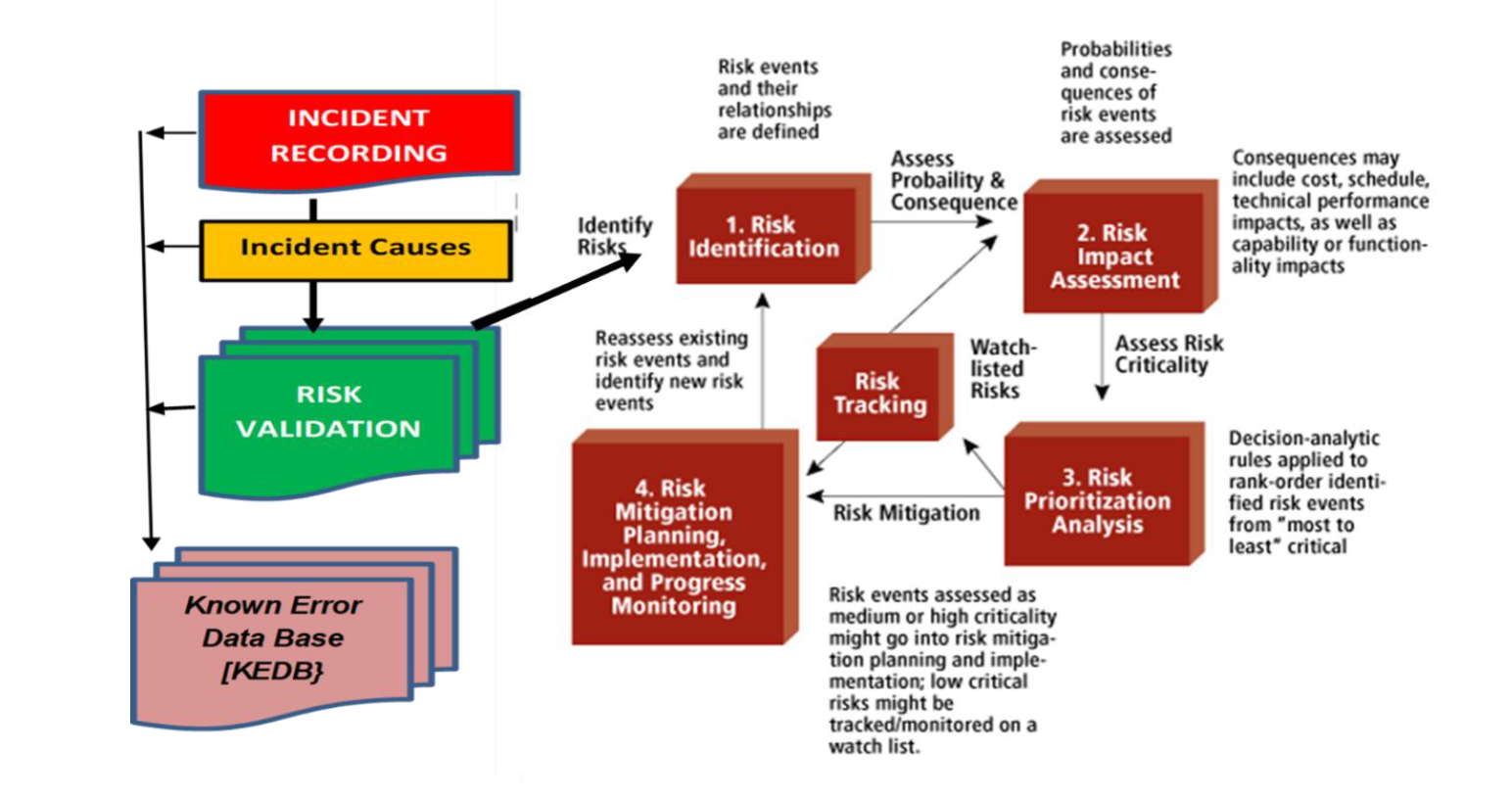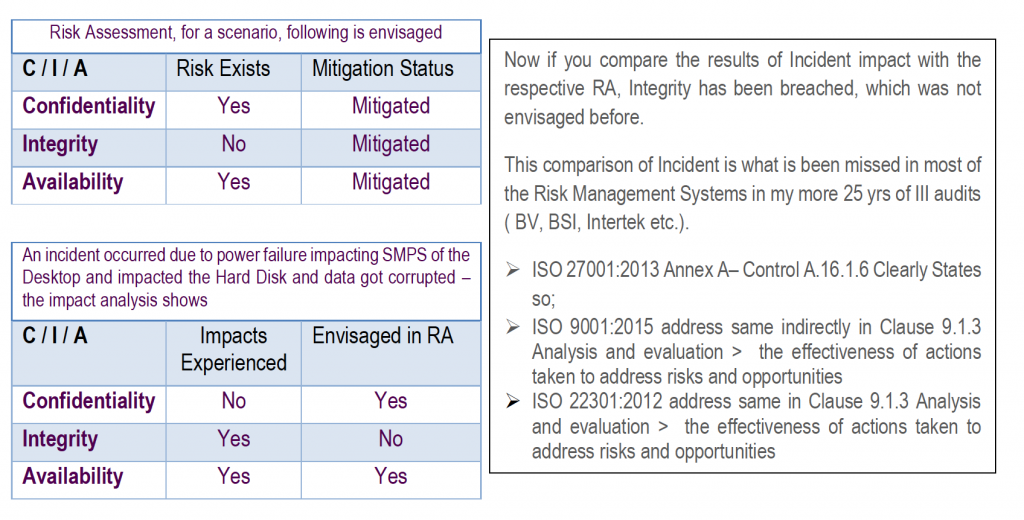 My career, primarily in the electric utility industry, has focused on renewable energy and energy conservation. I would like to respond to recent advocacy for nuclear power and skepticism relating to renewable resources. Here is my overview of the attributes of renewals. Continue reading
My career, primarily in the electric utility industry, has focused on renewable energy and energy conservation. I would like to respond to recent advocacy for nuclear power and skepticism relating to renewable resources. Here is my overview of the attributes of renewals. Continue reading
#465 – SUDDENLY…NOTHING HAPPENED! A PROJECT SURPRISE – MALCOLM PEART
Featured
 73.6% of statistics are made up on the spot and if conveyed with sufficient confidence are believed by 90% of the population. Some sources advise that 70% of all projects fail, 42% of companies don’t understand the importance of project management, 55% of managers cite budget overrun as a reason for failure, and 62% of ‘successful’ projects had supportive sponsors. Continue reading
73.6% of statistics are made up on the spot and if conveyed with sufficient confidence are believed by 90% of the population. Some sources advise that 70% of all projects fail, 42% of companies don’t understand the importance of project management, 55% of managers cite budget overrun as a reason for failure, and 62% of ‘successful’ projects had supportive sponsors. Continue reading
#465 – FIGHTING BUGS WITH AI – BILL POMFRET PH.D.
Featured
 Canadians aren’t worried enough about superbugs. As bacteria develop immunity to the antibiotics in our limited arsenal, new treatments will be needed—and soon. Otherwise, routine medical procedures will become impossible, common infections will turn fatal and tens of millions of people will die every year of once curable infections. Continue reading
Canadians aren’t worried enough about superbugs. As bacteria develop immunity to the antibiotics in our limited arsenal, new treatments will be needed—and soon. Otherwise, routine medical procedures will become impossible, common infections will turn fatal and tens of millions of people will die every year of once curable infections. Continue reading
#465 – CITY DOOM LOOPS – JOHN RENNIE SHORT Ph.D.
Featured
 Five years after the start of the COVID-19 pandemic, many U.S. cities are still adjusting to a new normal, with more people working remotely and less economic activity in city centers. Other factors, such as underfunded pension plans for municipal employees, are pushing many city budgets into the red. Continue reading
Five years after the start of the COVID-19 pandemic, many U.S. cities are still adjusting to a new normal, with more people working remotely and less economic activity in city centers. Other factors, such as underfunded pension plans for municipal employees, are pushing many city budgets into the red. Continue reading
#465 – 3 SUPPLY CHAIN CAUSED FAILURES – FRED SCHENKELBERG
Featured
 Some days are better than others. We sometimes run into failure when working to create a new product. With a little investigation we suspect the components are not working as expected.
Some days are better than others. We sometimes run into failure when working to create a new product. With a little investigation we suspect the components are not working as expected.
We’ll call the vendor and ask for an explanation. If this is normal production and variability of performance, our product will suffer an higher than expected failure rate. The vendor will assure us with: Continue reading
#464 – BECOMING A BETTER MAN IN 2025 AND BEYOND – DOUGLAS PFLUG
Featured
 Becoming a better man isn’t about achieving perfection—it’s about progress. It’s about choosing, every single day, to strive for integrity, strength, and humility. Through my years as an elite athlete, frontline police officer, coach, mentor, leadership instructor, and author, I’ve learned that the journey to becoming a better man is forged through discipline, service, and resilience. Continue reading
Becoming a better man isn’t about achieving perfection—it’s about progress. It’s about choosing, every single day, to strive for integrity, strength, and humility. Through my years as an elite athlete, frontline police officer, coach, mentor, leadership instructor, and author, I’ve learned that the journey to becoming a better man is forged through discipline, service, and resilience. Continue reading
#464 – BUILDING AN ECO-CONSCIOUS VINEYARD AND WINERY FROM GROUND UP – STEVE & BRYAN CASS
Featured
I started the vineyard in 1999 by purchasing undeveloped land on the east side of Paso Robles, CA, after completing a 20 year career at Charles Schwab.
Shortly after planting the vineyard, I decided with my friend Ted to open a winery as partners. Two years and a barn renovation later, Cass Winery opened for business. My son Bryan joined the business shortly thereafter.
From the start, we prioritized creating an environmentally friendly business.
 Besides the normal practices of separating trash into a recycle bin, planting drought tolerant ornamentals, and a drip irrigation system, we added a few new twists:
Besides the normal practices of separating trash into a recycle bin, planting drought tolerant ornamentals, and a drip irrigation system, we added a few new twists:
- Every drop of water used to clean barrels and tanks (winery wastewater) is pumped into a reservoir and reused for irrigation.
- The vineyard is certified to be Sustainably Farmed. In order to obtain this certification, there is a lengthy list of practices that need to be followed, including:
- Pests, such as gophers and squirrels are trapped and relocated, not poisoned.
- Hay bales and other controls are installed in erosion prone areas.
- Rows between crops have an over crop to enhance soil health, crowd out invasive weeds, provide a natural nitrogen fix to the soil, and provide habitat for beneficial insects.
- The perimeter of the vineyard also has a cover crop to minimize water runoff.
- Owl boxes are installed to help control gophers and ground squirrels in the vineyard and on adjacent properties.
As a result of these and many other practices, we have not used a pesticide in 19 years, and have never sprayed herbicides.
Climate Change for a Wine Grape Grower
Our vineyard is located in Paso Robles, California. Midway between Los Angeles and San Francisco, about 25 miles from the coast. It’s a semi-arid microclimate, averaging 14 inches of rain per year. That is deceiving because we don’t get 14 inches each year. Rainfall has ranged from five inches to 30 inches in the 20 years we have been here.
We get our water from the largest underground aquifer in the state. Everyone, city and farmers alike get all their water by pumping from wells.
Most of the land that is suitable for farming is zoned agriculture. That is the only permissible use of the land.
The water problem is that agriculture uses a lot of water. No water no agriculture. Wine grapes use 328,000 gallons of water per acre, per year. We have 145 planted acres ourselves and there are thousands of acres grown in the area. The average household uses 30,000 gallons per year.
We recently experienced a five year drought that drained the shallowest of wells, and dropped water levels in the biggest and most robust wells. Many of those older, shallower wells produce smaller amounts and are used for residences. Since this drought, we had two good years of rain, so the water problem moved off the headlines. However, near the end of that five years of drought, there was a lot of debate about the best way to manage our water basin. There was also a lot of hostility between residential users and the ag community.
Here are the highlights of that debate:
- Desalinization Not practical for farming and less so here… not just the cost to desalinate, at $2,000 per acre/ft, but the cost to transport sea water over the coastal range of mountains to inland locations. $2,000 is about the profit margin on an acre of wine grapes, in a good year.
- Buy water from state agencies The advantage of this solution is you can bank water in wet years to use in dry years. However you need a place to store it, which costs money, you need a bigger pipeline to bring it in, which costs money, and there are no guarantees water will be available.
- Recycle Always a good idea, and we do it extensively, however the total quantity of water we get this way does not make much of a difference.
- Reduce water usage Also a good idea, and we have worked hard to reduce our water use by avoiding ornamental lawns, restricting new developments, and encouraging farmers to use less water… in every way they can.
That last bullet point and the last option is a sticky one.
What are the options?
Move to a product that uses less water… means pulling out permanent vines and all the hardware that goes with them. Lose your customer base, rebuild your irrigation system to meet the needs of that new crop. And what crop might that be? Grape vines are already one of the most water efficient crops… row crops such as lettuce use five times the amount of water. Maybe Agave, (for making spirits)… some farms are trying that. However it is a new product for this area, the potential buyers are scarce and the science for growing it here is not widely understood, so there is serious financial risk.
Take tax $$ to fallow your land.If you are growing an annual crop, this might make short term sense… if you have the right to bring it back in the future and payments are guaranteed thru that period. However, with a permanent crop, like an orchard or grape vines you have five years or so for a new planting to provide any crop. I can also see tax payer resistance to paying farmers not to farm.
Use the land for non-ag purposes.We have a housing shortage in our area, but land zoned Ag has severe limitations on housing development. For me it is one house per 40 acre minimum size parcel. I would argue that we should allow land to be re-zoned in favor of less water usage. The land owner could possibly have a greater return without asking the tax payer to foot the bill. Changing the land use ordinances is a major effort, and not easily undertaken, and so far there does not seem to be much appetite for that option. Many would say that argues for urban sprawl and changing the character of the community.
In my view, if you say a property can only be used for Agriculture, you can’t take away water legitimately needed for agriculture. Assuming the need to manage the basin is a serious matter, a change in the zoning is an important tool.
BIO:
Steve Cass started the vineyard in 1999 by purchasing undeveloped land on the east side of Paso Robles, CA, as he was ending his 20 year career at Charles Schwab.
Shortly after planting the vineyard, he and his friend Ted decided to open a winery as partners. Two years and a barn renovation later, Cass Winery opened for business. Steve’s son Bryan joined the business shortly thereafter.
#464 – HOW TO FIND THE RIGHT BALANCE OF DATA FOR YOUR INDUSTRIAL AI SYSTEM – MICHAEL SHARP
Featured
 Understanding the inner workings of your Industrial Artificial Intelligence (IAI) system is crucial if you want it to add measurable value to your manufacturing operations. In this blog, we will dig into one important aspect of every AI — the inputs, a.k.a. your data. Including the right type and the right amount of data is key to success when it comes to AI. Continue reading
Understanding the inner workings of your Industrial Artificial Intelligence (IAI) system is crucial if you want it to add measurable value to your manufacturing operations. In this blog, we will dig into one important aspect of every AI — the inputs, a.k.a. your data. Including the right type and the right amount of data is key to success when it comes to AI. Continue reading
#464 – GEN Z WANTS SAFETY BEYOND ALL ELSE – YALDA UHLS PH.D.
Featured
 After many years of partisan politics, increasingly divisive language, finger-pointing and inflammatory speech have contributed to an environment of fear and uncertainty, affecting not just political dynamics but also the priorities and perceptions of young people. Continue reading
After many years of partisan politics, increasingly divisive language, finger-pointing and inflammatory speech have contributed to an environment of fear and uncertainty, affecting not just political dynamics but also the priorities and perceptions of young people. Continue reading
#464 – HSE COMPLIANCE: GUIDE FOR SAFETY PROFESSIONALS – BILL POMFRET PH.D.
Featured
 The opportunity for loss is great, but so is the opportunity to prevent that loss.
The opportunity for loss is great, but so is the opportunity to prevent that loss.
A cheering thought as I set out on the slightly daunting task of making the management of health and safety risk sufficiently interesting to hook you in and get you to stay until the end. The idea behind this chapter is to provide context for health and safety risk management and compliance in terms of what the law requires, why it’s worth complying and then some practical guidance on how to do so in a world where dusty loose-leaf files of paper or a bunch of folders on a G drive no longer cut it. Continue reading
#464 – THE MEANING OF (PRODUCT) FAILURE – FRED SCHENKELBERG
Featured
 Every failure provides information. It provides time to failure, stress strength relationship, process stability and design margin types of information. In every case. Even failures directly related to human error.
Every failure provides information. It provides time to failure, stress strength relationship, process stability and design margin types of information. In every case. Even failures directly related to human error.
A hardware intermittent failure observed by a firmware engineer should not be dismissed. Rather recorded, explored and examined. Continue reading
#463 – ROBOTS AND AI ARE WORKING TOGETHER TO BRING YOU BETTER MEDICINES, SHAMPOO, AND MORE – PETER BEAUCAGE
Featured
 Every time you squeeze toothpaste onto your toothbrush, spray perfume on your skin, or swallow a pill, you’re using the result of a carefully crafted recipe made in a lab. These are called formulations.
Every time you squeeze toothpaste onto your toothbrush, spray perfume on your skin, or swallow a pill, you’re using the result of a carefully crafted recipe made in a lab. These are called formulations.
Formulations aren’t just simple mixtures — they’re complex arrangements of ingredients designed to work together in specific ways.
Getting the recipe right can mean the difference between a product that sits on the shelf (or never makes it to the shelf) and one that changes lives.
Here at NIST, we’re revolutionizing how scientists create and improve formulations. We hope the result will be better products you use every day.
The process combines robotics, artificial intelligence and analysis of advanced materials. For example, we can use neutrons or X-rays to take pictures of how molecules millions of times smaller than a human hair are arranged in materials.
It’s not just about making better products. It’s about making them in ways that are faster and more efficient while leaving a lighter footprint on health and the environment. This happens in our Autonomous Formulation Laboratory (AFL) at NIST’s campus in Gaithersburg, Maryland.
 How Your Products Are Made Now
How Your Products Are Made Now
Let’s say you own a shampoo company, and a key ingredient in your shampoo is no longer available due to supply chain issues.
You now have to remake your formulation to put in a replacement ingredient. But what ingredient? How much of it? What if that new ingredient has an unintended consequence that affects other parts of the recipe?
This is the challenge of product formulation today. Reformulating a consumer product can take months of research and a lot of money. It often requires trial and error or expert know-how. While that knowledge is valuable, experts may have difficulty adapting to new or changing ingredients.
But as a scientific community, we can do better. NIST has experts who use tools to examine the structure of materials and measure them at the smallest scales. But the sheer number of samples would make this challenging to do in a traditional formulation lab.
Enter AI.
An Intelligent, Interactive Loop
Here’s how this process works:
Step 1: Precision Mixing
Much like cooking, we start by gathering the ingredients. Instead of putting them in an oven, we put them into small vials about the size of a film canister and tell a computer about what they are. The computer then controls a robotic system equipped with a pipette. This computer precisely measures and mixes tiny amounts of chemicals from different vials. The amount of mixture is minuscule — about 30 microliters, less than a dot of ink from a fine-tip pen.
Step 2: Advanced Structural Analysis
Once the sample is prepared, we analyze it at a very detailed level, using equipment that works like an advanced microscope. We call these advanced scattering techniques.
These techniques allow us to observe how different chemicals organize themselves into larger structures within the formulation. We can then make predictions about how products will behave once our “recipe” is made.
These scattering techniques usually happen at a neutron source, such as the NIST Center for Neutron Research on our Gaithersburg campus. They also sometimes happen at a machine about a half-mile long that makes incredibly bright X-rays, known as a synchrotron.
Step 3: AI-Driven Optimization and Learning
Here’s where the magic happens. During the formulation measurement process, we collect a wealth of data and feed it into an artificial intelligence system. The AI analyzes the information, learns about it and predicts which formulation structure will work best given the manufacturer’s goals. It then instructs the robotic system to create this new formulation based on what it’s learned from past tasks.
But it doesn’t stop there. The robot analyzes the new formulation and feeds the results back into the AI. With each iteration, the AI learns, refines its understanding and makes increasingly sophisticated predictions. It’s as if the system is thinking, learning and evolving its approach in real time.
This creates a loop of experimentation and improvement, dramatically accelerating the development process for medicines and other consumer products. What might have taken months or years of trial and error can now be accomplished in hours or days.
Of course, AI is not perfect, and you can’t trust it without extensive product testing. The companies involved in this process still test their products. AI helps them develop their “recipes” much more quickly and easily than they could before.
Real-World Impact
In a recent collaboration with a pharmaceutical company, the AFL tackled a complex formulation issue in just hours — a process that might have taken months using traditional methods.
By focusing on the structural arrangement of the formulation’s components and learning from each try, the team could quickly identify and resolve issues affecting the drug’s performance.
But the AFL’s impact extends beyond pharmaceuticals.
We’re helping manufacturers improve a wide range of products by optimizing their structural compositions. This applies to everything from shampoos and paints to automotive fluids and cleaning detergents.
The AFL can handle pretty much any liquid formulation right now. We’re exploring ways to adapt it to analyze structured solids in the future.
Making a Difference With Industrial Science
Like a lot of people who do this type of work, I love an interesting problem.
When I first came to NIST as a postdoctoral researcher, I was pretty naive. I’d worked in the specialty chemical industry for a time, but I thought that most industrial problems were closer to engineering than deep science.
But I started working on this project that involves pulling the salt out of seawater. This is how drinking water is made in many parts of the Middle East and South Africa. It’s being used at a massive scale, and no one really understands why it works.
It was so eye-opening to see this incredible process responsible for keeping millions of people alive, and there are still fundamental questions about why it works. These questions hold us back from engineering something better.
Through that work, I got involved with a consortium of companies that works with NIST, called nSoft. I quickly learned that this sort of problem was fairly typical.
Wherever I looked in the members’ science — from removable adhesive strips for hanging pictures on the wall to soap bubbles — there were deep, foundational questions about the universe involved. Teams of some of the brightest people I’ve ever met are looking at these questions and trying to understand. I was converted.
Just before the pandemic, my colleague Tyler Martin started a project that involved buying and building robots for automatic solution mixing. Tyler invited me to look at the hardware and help with a few small issues. When the devices arrived, I kept slipping out to the lab to work on the software for them and tinker with how they moved solutions around. I wanted to understand and exploit the capabilities to get real results. Eventually, this “hobby” became my main scientific focus.
This project has been so fulfilling to me. We’re getting great results and really solving meaningful problems with the companies we work with. What started as a small team of two has grown into a network of students, postdocs, scientific collaborators and other facility scientists who span the globe.
When you get to come to work and build and troubleshoot robots to tackle fundamental questions about the universe that impact billions of people, you have a pretty great job. I’m especially lucky to work with the fantastic team we’ve built; there’s literally nothing I would rather be doing. I’m living my 10-year-old self’s dream life — building robots and changing the world.
Looking Ahead
While this approach has tremendous promise, we need to scale it up so that more companies can use it in their product formulation processes.
We’re publishing our methodology for anyone who wants to recreate it. We’re also working with the companies in the nSoft consortium and providing them with hands-on support in recreating this in other facilities like ours around the country.
As this technology continues to evolve, we can look forward to more effective and innovative products across a wide range of industries — all thanks to a system that never stops learning and improving.
#463 – WORLD ECONOMIC FORUM 2025 RISK ASSESSMENT – JAMES KLINE PH.D.
Featured
 The World Economic Forum (WEF) recently released its 2025 Global Risk Report. It is the 20th such report. Saasia Zahidi the Managing Director, in her preface to states:
The World Economic Forum (WEF) recently released its 2025 Global Risk Report. It is the 20th such report. Saasia Zahidi the Managing Director, in her preface to states:
“This is the 20th edition of the Global Risks Report. Looking back over the last two decades, environmental risks have steadily consolidated their position as the greatest source of long-term concern. This year’s Global Risks Perception Survey shows that a sense of alarm is also mounting in the shorter term: Environmental problems, from extreme weather to pollution, are here now and the need to implement solutions is urgent.” (1) Continue reading
#463 – AI MISUNDERSTANDS SOME PEOPLE’S WORDS MORE THAN OTHERS – ROBERTO REY
Featured
 The idea of a humanlike artificial intelligence assistant that you can speak with has been alive in many people’s imaginations since the release of “Her,” Spike Jonze’s 2013 film about a man who falls in love with a Siri-like AI named Samantha. Over the course of the film, the protagonist grapples with the ways in which Samantha, real as she may seem, is not and never will be human. Continue reading
The idea of a humanlike artificial intelligence assistant that you can speak with has been alive in many people’s imaginations since the release of “Her,” Spike Jonze’s 2013 film about a man who falls in love with a Siri-like AI named Samantha. Over the course of the film, the protagonist grapples with the ways in which Samantha, real as she may seem, is not and never will be human. Continue reading
#463 – PROPERTY INSURERS UNABLE TO COVER CLIMATE RISKS: WHO PAYS – BOB LEONARD
Featured
 One of the world’s largest insurance companies has warned businesses that they simply can’t ignore the financial impacts of extreme weather any longer.
One of the world’s largest insurance companies has warned businesses that they simply can’t ignore the financial impacts of extreme weather any longer.
“Climate change is leading to more severe weather events, resulting in increasing impacts on economies,” Swiss Re’s group chief economist Jérôme Jean Haegeli said. “Therefore, it becomes even more crucial to take adaptation measures. Risk reduction through adaptation fosters insurability.” Continue reading
#463 – HOW TO CONNECT RELIABILITY GOALS TO BUSINESS OBJECTIVES – FRED SCHENKELBERG
Featured
 Reliability goals provide you and your team a focus for the reliability program. They provide a measurable way to design, test, and maintain systems that meet customer expectations.
Reliability goals provide you and your team a focus for the reliability program. They provide a measurable way to design, test, and maintain systems that meet customer expectations.
A goal of any kind in a business is relatively easy to set and publish. They are not easy to entwine into the culture of the organization so the objectives desired by achieving the goal become a meaningful focus. A product development team may have hundreds of pages of specifications and a long list of priorities and objectives. Simple listing a reliability goal, no matter how clearly stated, may not be sufficient to garner the interest of your team. Continue reading
#463 – HAS BOEING LOST ITS WAY – BILL POMFRET PH.D.
Featured
 2024 has been another miserable year for Boeing. Not only has it struggled to cope with a safety and quality control crisis, but it has also lost billions of dollars following a strike by workers that paralysed production at two of its biggest factories.
2024 has been another miserable year for Boeing. Not only has it struggled to cope with a safety and quality control crisis, but it has also lost billions of dollars following a strike by workers that paralysed production at two of its biggest factories.
Even its space programme has been in trouble. Two astronauts were left stranded on the International Space Station in June after their Boeing Starliner capsule developed a potential fault, which would have made returning to Earth in it too dangerous. Continue reading
#462 – AI IS RESHAPING THE POWER GRID – ANURAG SRIVASTAVA PH.D.
Featured
 Across the U.S. and worldwide, energy demand is soaring as data centers work to support the wide and growing use of artificial intelligence. These large facilities are filled with powerful computers, called servers, that run complex algorithms to help AI systems learn from vast amounts of data. Continue reading
Across the U.S. and worldwide, energy demand is soaring as data centers work to support the wide and growing use of artificial intelligence. These large facilities are filled with powerful computers, called servers, that run complex algorithms to help AI systems learn from vast amounts of data. Continue reading
#462 – FIGHTING SUPERBUGS WITH AI – BILL POMFRET PH.D.
Featured
 Canadians aren’t worried enough about superbugs. As bacteria develop immunity to the antibiotics in our limited arsenal, new treatments will be needed—and soon. Otherwise, routine medical procedures will become impossible, common infections will turn fatal and tens of millions of people will die every year of once curable infections. Superbugs are teeny-tiny time bombs. Thankfully, researchers like Jon Stokes are racing to get new antibiotics to the finish line faster. Continue reading
Canadians aren’t worried enough about superbugs. As bacteria develop immunity to the antibiotics in our limited arsenal, new treatments will be needed—and soon. Otherwise, routine medical procedures will become impossible, common infections will turn fatal and tens of millions of people will die every year of once curable infections. Superbugs are teeny-tiny time bombs. Thankfully, researchers like Jon Stokes are racing to get new antibiotics to the finish line faster. Continue reading
#462 – FLYING GREEN ON A BUDGET AIRLINE – JON BIEMER
Featured
 My first travel experience with Frontier Airlines gave me more than a cheap fare. I received a surprising environmental education.
My first travel experience with Frontier Airlines gave me more than a cheap fare. I received a surprising environmental education.
Departure
Having no experience with budget airlines, I decided to give Frontier a try after attending a funeral. Its fare was less than half that of competing airlines. But it took a while to get on board so to say. Continue reading
#462 – SUPPLIER RELIABILITY – FRED SCHENKELBERG
Featured
 It’s Friday afternoon and the phone rings. It is another customer complaining about your product not working. This is the fifth call this afternoon. Something is wrong and you’re responsible for making it right.
It’s Friday afternoon and the phone rings. It is another customer complaining about your product not working. This is the fifth call this afternoon. Something is wrong and you’re responsible for making it right.
The natural failure analysis process starts across your team. Gather information, determine the scope of the issue, work to understand the root causes, and implement an appropriate solution. This may involve stopping production, halting shipments, or even a product recall. Continue reading
#462 – VUCAN(R) WORK DISRUPTIONS – GREG HUTCHINS
Featured
 You need to decide what problems, what opportunities, what projects you’re going to work on.
You need to decide what problems, what opportunities, what projects you’re going to work on.
Fred L. Turner – McDonald’s CEO
Years ago, we wrote a book on the future of work being disrupted by VUCA – volatility, uncertainty, complexity, and ambiguity. As part of the book, we invented and trademarked the term ‘VUCAN’. VUCAN means that we are all living and coping now with a VUCA world.
As a VUCAN, AI is accelerating the disruption around us. So, what can you do? You can pivot to a number of different types of work: Continue reading
#462 – ISO 9001 CERTIFICATION NUMBER – JAMES KLINE PH.D.
Featured
 n September 2024 the International Organization for Standardizations (ISO) published the results of its 33rd annual certification results. This includes results for ISO 9001, its quality management system certification. ISO 9001 is the largest and flagship of ISO’s certifications. Two other certifications with the highest number of certifications are ISO14001 Environmental and ISO 45001 Occupational Health. Continue reading
n September 2024 the International Organization for Standardizations (ISO) published the results of its 33rd annual certification results. This includes results for ISO 9001, its quality management system certification. ISO 9001 is the largest and flagship of ISO’s certifications. Two other certifications with the highest number of certifications are ISO14001 Environmental and ISO 45001 Occupational Health. Continue reading
#461 – BEING AN EFFECTIVE SAFETY PRACTITIONER – BILL POMFRET PH.D.
Featured
 “The safety profession can wear on you. Safety professionals often need more support in terms of staffing. Companies tend to lean more and more on us and it’s not easy to avoid burnout.”
“The safety profession can wear on you. Safety professionals often need more support in terms of staffing. Companies tend to lean more and more on us and it’s not easy to avoid burnout.”
“I feel incredibly fortunate to work with my team to improve safety every day. We have such an important job that is sometimes rather thankless and unnoticed. Good safety is, unfortunately, often invisible.” Continue reading
#461 – PROJECT ENGINEER SYNDROME – MALCOLM PEART
Featured
 Engineers…they are the people who design, build, or maintain engines, machines, or structures. They fix things that are broken and typically look for solutions rather than creating problems. Some engineers proclaim themselves as being “solutions driven”…but are they? Continue reading
Engineers…they are the people who design, build, or maintain engines, machines, or structures. They fix things that are broken and typically look for solutions rather than creating problems. Some engineers proclaim themselves as being “solutions driven”…but are they? Continue reading
#461 – NEW AI AESTHETIC IN FILMS – HOLLY WILLIS
Featured
 Type text into AI image and video generators, and you’ll often see outputs of unusual, sometimes creepy, pictures.
Type text into AI image and video generators, and you’ll often see outputs of unusual, sometimes creepy, pictures.
In a way, this is a feature, not a bug, of generative AI. And artists are wielding this aesthetic to create a new storytelling art form. Continue reading
#461 – SIMPLE QUESTIONS FOR ASSESSING AI APPLICATIONS – MICHAEL SHARP PH.D.
Featured
 Welcome knowledge seeker! Do you feel dazzled and awed by the great potential of Artificial Intelligence aka AI? Perhaps hesitant or lost when words like ‘convolution,’ ‘deep learning,’ or ‘autoencoder’ are thrown around? Well, fear not, friend, for you have come to just the right place! You don’t need to be a computer wizard or a super genius to understand how using AI can impact your system and, more importantly, if using it is worth the investment. Continue reading
Welcome knowledge seeker! Do you feel dazzled and awed by the great potential of Artificial Intelligence aka AI? Perhaps hesitant or lost when words like ‘convolution,’ ‘deep learning,’ or ‘autoencoder’ are thrown around? Well, fear not, friend, for you have come to just the right place! You don’t need to be a computer wizard or a super genius to understand how using AI can impact your system and, more importantly, if using it is worth the investment. Continue reading
#461 – PURPOSE OF ENGINEERING TOLERANCES – FRED SCHENKELBERG
Featured
 The short answer is, everything varies.
The short answer is, everything varies.
The longer answer involves the agreement between what is possible and what is desired.
If we could design a product and it could be replicated exactly, including every element of the product, we would not need tolerances. Any part would work with any assembly. We would simply specify the dimensions required.
#461 – FUNDAMENTAL UNIT OF WORK IN THE AGE OF AI – GREG HUTCHINS PE CERM
Featured
 When you look for a job, you are looking for something that is fading from the socioeconomic picture because it is past its evolutionary prime.
When you look for a job, you are looking for something that is fading from the socioeconomic picture because it is past its evolutionary prime.
William Bridges – Change Author
Now in VUCA time where many of us work @ home or do gig work, the following is more true than ever: Continue reading
#460 – PROJECT’S FRONT BUMPER SYNDROME – MALCOLM PEART
Featured
 It was once explained to me that in some countries it’s imperative for drivers to be in front or push to the front on the highway, at junctions and every turning at every opportunity…no matter what! Continue reading
It was once explained to me that in some countries it’s imperative for drivers to be in front or push to the front on the highway, at junctions and every turning at every opportunity…no matter what! Continue reading
#460 – SCARING YOURSELF IN A SCARY WORLD – SARAH KOLLAT
Featured
 Fall for me as a teenager meant football games, homecoming dresses – and haunted houses. My friends organized group trips to the local fairground, where barn sheds were turned into halls of horror, and masked men nipped at our ankles with (chainless) chain saws as we waited in line, anticipating deeper frights to come once we were inside. Continue reading
Fall for me as a teenager meant football games, homecoming dresses – and haunted houses. My friends organized group trips to the local fairground, where barn sheds were turned into halls of horror, and masked men nipped at our ankles with (chainless) chain saws as we waited in line, anticipating deeper frights to come once we were inside. Continue reading
#460 – SIGNS – HARRY HERTZ
Featured
 How do you treat signs when you are driving your car? Are you a strict rule follower? Does a stop sign cause you to come to a full stop, or a rolling stop, or no stop at all if you see no traffic? What about that intersection you go through every day, where you never see a car approaching from any other direction? Do you begin to question the need for the stop sign? Do you just treat it as a yield sign? Do you quickly check for a traffic camera or patrol car looking to catch you?
How do you treat signs when you are driving your car? Are you a strict rule follower? Does a stop sign cause you to come to a full stop, or a rolling stop, or no stop at all if you see no traffic? What about that intersection you go through every day, where you never see a car approaching from any other direction? Do you begin to question the need for the stop sign? Do you just treat it as a yield sign? Do you quickly check for a traffic camera or patrol car looking to catch you?
And what do you do at yellow lights?
When I moved to Massachusetts in the 1960s, the law was that if you came to a full stop and were the second or third car at the stop sign, you did not have to stop a second time. What happened when a Massachusetts driver went to another state, not knowing their laws? Coming from New York, I was honked at a number of times when I stopped at a stop sign as the second or third car. (By the way, the Massachusetts law changed in the 1970s.)
The sign that fascinated me the most when I first moved to Massachusetts was a “maximum truck height” sign at the underpass beneath Mass(achusetts) Ave. and Memorial Drive. I can’t count the number of stuck or decapitated trucks I saw each year when school started and rental vans went under Mass Ave. Couldn’t those MIT and Harvard students read? Did they treat the sign as a dare? Did they just think the heavily loaded truck would be lower than the height restriction?
In recent years, I spend several months each year in Florida. Alongside many lakes, streams, and ponds there is a sign that says, “Don’t approach or feed the alligators.” Yet, the Florida Fish and Wildlife Commission reports that, from 1948 until November 2021, there were 442 alligator attacks; 26 of those resulted in human fatalities. The average is currently about seven alligator attacks per year. Yet I frequently see people getting up close for photos, or worse yet, sending their children up close for photos.
Work Signs
This may all be interesting to you, but what, you may wonder, does it have to do with you, a good, law-abiding citizen? You always obey those posted signs.
Well, do you obey obvious signs at work? Let me give a few examples, and I hope to give you (and your team) an opportunity for some introspection.
- Do you have organizational values? Do your leaders demonstrate them in their personal actions? Are they understood and practiced by employees?
- Do you start all problem solving with some form of root cause analysis (RCA)? Or do you assume you know the solution without doing RCA? If so, consider reading my recent blog about the A3 problem-solving tool and the temptation to “jump to box 7.”
- What about those pesky customer complaints? Do you try to avert the eyes of a potentially upset customer? Do you solve their problem by referring them to someone else? Or do you solve the problem, enter it into a knowledge management system, and then have staff who aggregate the problems and look for solutions to avoid them in the future?
- Does your organization have a robust strategic planning process? Do you create strategic plans that sit on a shelf and are never converted to actions with accountability? Do you have a process for modifying plans if conditions change, and can you smoothly transition your action planning (think organizational resilience)?
- Does your organization find it easier to blame people rather than processes? When something goes wrong, do you first look at possible process failures or for the people who were responsible?
- And how about providing beneficial, constructive feedback to colleagues or subordinates in real-time? Are you a supervisor who waits for that dreaded annual performance review time?
- Do you have a process for identifying strategic opportunities and intelligent risks, leading to opportunities for innovation (again, think organizational resilience)? Do you have a process for stopping work on an unsuccessful innovation and thanking the people who took the risk?
- Do you have a great process for continuous, incremental process improvement and think that will substitute for discontinuous, significant innovation?
- Finally, do you focus on opportunities for improvement, but ignore the many opportunities for celebration?
Do you have a healthy organizational culture or a toxic workplace? Addressing some of the challenges above, where they exist, might be part of creating a healthier culture and a more engaged workforce. The Baldrige Excellence Builder® and the Baldrige Excellence Framework® ask you important questions that will help you improve organizational performance in all the areas addressed above and more.
Give these workplace signs some thought! Oh, and obey the law when you are out on the road!
BIO:
I am Harry Hertz, the Baldrige Cheermudgeon, and Director Emeritus of the Baldrige Program. I joined the Program in 1992 after a decade in management in the analytical chemistry and chemical sciences laboratories at the National Institute of Standards and Technology (NIST), the home of the Baldrige Program. I started my career at NIST (NBS) as a bench analytical chemist.
My favorite aspects of the Baldrige Program are: (1) the opportunity to interact with leading thinkers from all sectors of the U.S. economy who serve as volunteers in the Baldrige Program, who participate in the Baldrige Executive Fellows Program, and who represent Award applicants at the forefront of the continuous journey to performance excellence, and (2) the intellectual challenge of synthesizing ideas from leading thinkers and from personal research into Insights on the Road to Performance Excellence and other blogs that tackle challenges at the “leading edge of validated leadership and performance practice,” and contribute to the continuous revision of the Baldrige Performance Excellence Framework.
Outside of work I spend my time with family (including three beautiful granddaughters), exercising, baking bread, traveling, educating tomorrow’s leaders, and participating on various boards and board committees.
#460 – LAW ENFORCEMENT: CAMERA NEVER LIES – BILL POMFRET PH.D.
Featured
 Body worn cameras are increasingly being issued to staff at risk of violence and aggression, providing both a visible deterrent to potential aggressors and a means of reassurance to vulnerable employees. Continue reading
Body worn cameras are increasingly being issued to staff at risk of violence and aggression, providing both a visible deterrent to potential aggressors and a means of reassurance to vulnerable employees. Continue reading
#460 – 2 DESIGN APPROACHES TO CREATING A RELIABLE PRODUCT – FRED SCHENKELBERG
Featured
 There are two basic philosophies when creating a reliability plan for a new product or system.
There are two basic philosophies when creating a reliability plan for a new product or system.
One is to experiment with prototypes as quickly and often as possible, the build, test, fix, approach. Or, you can research and model detailed aspects of the materials and structures to characterize the strength of a product or system, the analytical approach. Continue reading
#460 – HANDY WORK MODEL – GREG HUTCHINS
Featured
 Every single industry is going through a major business model and technology oriented disruption.
Every single industry is going through a major business model and technology oriented disruption.
Aaron Levie – Entrepreneur
Story: It’s almost impossible to illustrate a work model for today’s organizations. They are complex with diversified product and service supply chains. However, the Handy work model shows in simple concentric circles what organizations face in VUCA (Volatility, Uncertainty, Complexity, Ambiguity) time. Continue reading
#459 – A QUESTION OF RISK OPPORTUNITY – MALCOLM PEART
Featured
Not everybody is a student of Greek mythology but many of us will have heard of Icarus and his fall to fame after flying to close to the sun. In the myth, as recorded by the Roman poet Ovid, the beeswax that held his wings together melted, gravity took over and after landing in the sea he drowned.
Icarus’ father, Daedalus, was a skillful architect and craftsman and invented the feathered wings. He was also portrayed as a symbol of wisdom and knowledge, and he gave fair warning to his son about the risks of flying too high.
But as with many warnings, particularly from parents, it’s only afterwards that most people realise that they should have been heeded. Icarus was no exception. In the intoxication of the excitement, and enthusiasm of experiencing flight, at least in the short-term, he ignored the fatherly advice, went too far, and paid the ultimate price. It’s always easy to be wise after the fact.
But that’s the nature of human beings, some heed warnings and others don’t. The common fact is that even if the risks are known some will suffer the consequences when they happen while others may reap rewards if they don’t. It can be a fine line between success and failure.
Edges & Margins
In business, having a competitive edge often produces good (profit) margins. If that edge is lost, then margins are eroded, and loss can result. The CEO of Nasdaq, Adena Friedman, said “You can’t be successful in business without taking risks. It’s really that simple” `but for those who may have failed then, being “once bitten twice shy”, they fear failure and may well be overly cautious.
Risk seekers, to succeed, will, with no apparent regard for the possibility of failure, seek out the margin and work at the edge of acceptable behaviour. For extremists they may push the limits of such behaviour. The profits may be spectacular, but the resultant losses are egregious; just consider some of the rogue traders over the past thirty years.
For the risk averse then rather than seeking a profit margin they create a wider and wider safety margin and may miss the boat. As the business man John A Shedd said “A ship in harbour is safe, but it’s not what ships are built for” and sometimes ships must sail close to the wind to move.
Too Close
“Too close for comfort” is one of several idioms related to the proximity of some sort of danger or other which creates feelings of nervousness or worry. If there is only a narrow margin for error, we may be “too close to the edge” and there will be a fear of falling and failing. Similarly, when things start to go wrong, we may find ourselves being ”too close to the wind” and in danger of taking a risky course of action to correct things.
Being close to danger results in a fight-or-flight response and adrenalin is produced in an ‘adrenalin rush’. But it’s not just produced in life-threatening situations but also when there is an unexpected situation or when the risk of grasping an opportunity needs to be taken.
For some people, the experience is pleasurable and even addictive while for others it results in anxiety. In the aftermath of a “close shave,” emotions are experienced. There can be the euphoria of omnipotence having eluded danger on one hand. On the other there may be the realisation that one’s throat could have been cut with subsequent feelings of doom and post traumatic shock.
Far Enough
So how far away is ‘too close’? For the risk averse it’s as far away as possible while for the risk seeker it’s right on the very edge.
If success is just “out of reach” it means that the adopted safety margin is too wide and there could well be a case of defeat being grasped from the jaws of victory. However, with a reduced margin for error and corresponding reduction in the profit margin, then there could easily be a case of victory being seized from the clutches of defeat.
For the pragmatic ‘far enough’ is just short of “So close yet so far” so that achievement is just within reach. Playing too close to the edge can require a degree of luck and when comes to pushing one’s luck, as my grandfather used to say, “you can go one far lad, but you can’t go too far”.
Conclusions
Success and failure are all about risk and opportunity and the appetite of people and organizations to take a risk or seize an opportunity. This also depends on how prepared they are to accept failure and trusting to luck and probability, or playing safe, being careful and having plenty of contingency.
For risk seekers they may crave for the ‘rush’ that comes with pushing the limits, as long as it’s at the expense of somebody else. We may well see the traits of Icarus Syndrome with overconfident despots who are arrogantly reckless and only see the benefits rather than any pitfalls and damaging consequences.
There are also those who have tried and failed and realise that risk is something that doesn’t just happen to other people. For those who have experienced risk they may have suffered some personal trauma as exemplified by Ovid, the poet who brought us Icarus, who wrote, “The man who has experienced shipwreck shudders even at a calm sea”. As with religious converts who can become fanatics, any newly bitten risk-averse brethren can become risk shy and ignore opportunity. Success and failure can be matters of opinion but if success is expected all the time there may well be disappointment if (or when) failure occurs. “You win some you lose some” goes another idiom and while success can be “so near and yet so far” it ultimately depends on how risks are taken, and opportunities are not only recognised but seized.
Bio:
Malcolm Peart is an UK Chartered Engineer & Chartered Geologist with over thirty-five years’ international experience in multicultural environments on large multidisciplinary infrastructure projects including rail, metro, hydro, airports, tunnels, roads and bridges. Skills include project management, contract administration & procurement, and design & construction management skills as Client, Consultant, and Contractor.
#459 – BLACK CATS AND BAD LUCK – ELIZABETH CARLEN PH.D. & TYUS WILLIAMS PH.D.
Featured
Imagine it’s a crisp and sunny fall morning. You just left your local coffee shop, ready to start your day.
Out of the corner of your eye, you catch a glimpse of something moving in the bushes. Is it a squirrel stashing acorns for the winter? A robin fattening up for migration? As you get closer, the image becomes clear and you unconsciously hold your breath.
It’s a black cat out for its morning stroll.
You pause for a second to decide your next move. Cross the street so the cat can’t cross your path? Muster the courage to walk past it, or even crouch down to pet it? Rationally, you know the idea that a black cat is bad luck is just a silly superstition … but you have an important meeting this afternoon and don’t want to jinx it.
This superstition about black cats and other black animals in general has shaped people’s preferences about animals. It’s left its mark on things such as lower adoption rates for black cats and beliefs that black cats are more aggressive. Yet, these biases are unfounded.
As two biologists who focus on human-wildlife interactions, what we find scary is how superstitions, lore and myths can shape your subconscious – particularly biases toward the animals people are trying to conserve and protect.

Rarity of a solely black or white animal
Of course, animal fur, feathers and scales come in various colors across the visible and invisible-to-humans spectrum. These colorations play a significant role in the survival of wildlife by functioning as a form of concealment, temperature regulation or communication. In white-tailed deer, for instance, a flash of a white tail can indicate danger is near, while the sharp red breast of a male cardinal attracts females that are ready to mate.
Within species, color variations are found throughout the animal kingdom, including melanistic animals with more dark pigmentation and leucistic animals with a reduction of pigment. There are black panthers, a melanistic version of a leopard, Panthera pardus, or jaguar, Panthera onca. On the other side of the spectrum are white spirit bears, a leucistic version of an American black bear, Ursus americanus. There are also albino animals that lack most or all pigment.
Scientists recognize these color variations as extreme abnormalities within the natural world. Being all black or all white is a rare phenomenon, unlikely to persist in the wild because it’s a selective disadvantage. These animals often have a tougher time blending into their habitat – a challenge for predators trying to ambush their prey, and for prey trying to conceal themselves from predators. They may also struggle to regulate their temperature and to communicate with others in their species.
A suite of genes that can change in many ways is behind this rainbow of wildlife coloration. One of the most well-known and studied genes is MC1R. In animals, loss-of-function mutations in the MC1R gene can result in light, yellow or reddish coat color. In humans, redheads have up to five loss-of-function mutations in MC1R, leading to hair that ranges from strawberry blonde to copper.

Protection based on unique color
Recently, we explored how charismatic coloring, including melanistic and leucistic or albinism coloration, affects the conservation of animals in the United States. As we read through local laws and found news stories of wildlife being protected or culled, we noticed a trend: Many albinistic and leucistic animals are protected.
Minnesota, Illinois and Wisconsin laws protect albino/white deer from being hunted. In Marionville, Missouri, white squirrels are protected and given the right-of-way on all public streets, with a penalty of up to US$500 or 90 days in jail for failing to abide by the law. In Louisiana, it’s prohibited to take white alligators from the wild, with a fine of at least $10,000 and six months in jail. The World Wilderness Congress recently adopted a resolution: Making Space to Protect White Animals, Messengers of Peace.
We also found white animals readily celebrated. Brevard, North Carolina, hosts a yearly festival called “White Squirrel Weekend.” People often release white doves at weddings and funerals as symbols of purity and peace. The California Academy of Sciences’ famous albino alligator named Claude has a whole book written about him. And members of the Olney, Illinois, police department wear a patch on their uniform with a white squirrel.
We found similar laws and celebrations do not exist in these jurisdictions for the white animals’ melanistic/black counterparts. We did identify a few cities and schools, including Marysville, Kansas, and Goshen College, that made the black squirrel their mascot.
This discrepancy surprised us because the genetic mutation that causes melanism occurs less frequently than the one that causes albinism/leucism. Pure black animals are more novel. We thought the more rare melanistic animals would pique human interest for being more unusual and trigger more protections.

Colors have long-standing associations
For many thousands of years, people have shared with each other stories, lore, tales and myths that attempt to explain the world.
Sometimes these stories provide cautionary advice about the dangers that lurk around us. As our early ancestors sat around fires, telling thrilling stories, they sought refuge together from the darkness that concealed looming threats. The partiality evident in our history can linger for significant periods of time, making it difficult to unlearn.
Many human biases developed as a survival response – one reason a darkly colored nocturnal predator would be fearsome is that it’s so hard to see at night, for instance. Modern preconceptions, though, can be based on harmful ideologies. Somewhere, way back when, white became synonymous with “good” and “pure,” while black aligned more with “evil” and “unclean.” And even now these unconscious affiliations influence how people celebrate and protect – or not – rare animals.
Perhaps more chilling than a black cat darting past you is the thought of how much in your subconscious mind goes unquestioned. Ideologies – whether detrimental or benign – permeate human society, influencing people’s perceptions of reality and informing how they interact with the world.
This Halloween, rather than the spooky proposition of goblins and ghouls, consider whether the more horrifying specters are the unacknowledged and dangerous biases we humans possess.
BIO: PROFESSOR CARLEN
I am a Living Earth Collaborative postdoctoral fellow at Washington University in St. Louis working with Dr. Jonathan Losos and a former National Science Foundation postdoctoral fellow. My postdoctoral research focuses on the impacts of urbanization and environmental racism in Eastern Gray Squirrels.
I received a PhD in Biological Sciences from Fordham University in New York City, where I worked in the Munshi-South lab. My PhD work, on how urbanization affected the evolution of feral pigeons in the Northeastern Megacity (Boston, MA to Washington, DC), was featured on Saturday Night Live and led The New York Times to refer to me as the “Pigeon Stalker”. In addition to my dissertation research, I am a co-founder and editor of the urban evolution blog Life in the City: Evolution in an Urbanizing World.
BIO: PROFESSOR TYUS
My research takes an exciting approach by looking at the intersections of human-wildlife interactions and species competition (resulting in interspecific killings or intraguild predation) under human-dominated landscapes and how these two are mutually exacerbated due to the stressors within these environments. With the world rapidly changing it’s crucial that we ask questions about the role anthropogenic influences play on wildlife communities around the globe to understand how human-wildlife conflict issues and species competition will unfold in the future and what these implications ultimately mean for human-wildlife coexistence and ecosystem stability.
My current research for my first chapter examines the effectiveness of shoreline exclusion zones on mammalian mesocarnivores in East Bay Regional Shorelines to understand how varying mesocarnivore species are utilizing these diverse landscapes as corridors to their advantage and what that implies for temporal overlap between species, avoidance behavior, and habitat utilization for species potentially occupying these shoreline locations.
#459 – IMPROVED BALDRIGE FRAMEWORK – NIST
Featured
During its current revision, the Baldrige Excellence Framework®, the core document of the Baldrige Program, is undergoing revolutionary change—being reorganized, simplified, and refocused—to make it as easy to use as possible and to expand its value and reach. The revision aims to provide clear guidance for organizations of all types and at all maturity levels, including more value for organizations beginning to establish processes and activities to help them achieve a competitive edge and long-term success.
Change takes time to ensure proper reviews, the correct content, and the intended product. Given the significance of the proposed changes, the Baldrige Program is building in additional opportunities for review by and input from key stakeholder groups.
Goal of the Revision
As part of the Baldrige Reimagined effort, the Baldrige Program refocused the award process on its primary purpose: evaluate high-performing organizations to identify role models from which others can learn. Award process changes included streamlining the award criteria and evaluation rubric—both derived from the framework. These changes have created the opportunity to similarly focus the framework on its primary purpose: guide organizational development and performance improvement.
The goal for this framework revision is to clearly articulate the progression of process maturity in all areas addressed by the framework. The content will be presented in a way that will be easier for an organization to (1) understand, (2) recognize its level of maturity, and (3) determine the next steps to improve and progress. Another important goal is to revise the framework to be not just a tool for organizational improvement but also a tool for organizations to achieve world-class results and identify their paths to Baldrige Award recognition as U.S. role models.
Evolution of the Framework
Since 1987, the Baldrige Criteria booklet served as both the Baldrige Award application and as a guide for overall organizational improvement. For 37 years, new concepts and themes were added to remain current with proven leadership and management practices that enable high performance, and the Baldrige Criteria booklet became the Baldrige Excellence Framework.
During this revision cycle, more than 75 contributors have offered detailed feedback, and multiple focus groups have provided recommendations that focus on both content and structure. In addition, leadership trends and challenges have been studied and vetted for relevance. All feedback was added to other suggestions, including from Baldrige advisory bodies, on ways to improve the framework.
Whole-Organization Assessments
The revised framework will still be the best resource of proven leadership and management practices for organizations seeking a comprehensive tool that speaks to wide ranges of best practices. Use of the framework for a systems approach to performance improvement and organization-wide assessments will lead organizations to resilience and long-term success.
For more information on any of the framework publications, contact the Baldrige Program at baldrige@nist.gov or (301) 975-2036.
#459 – POWER OF STORY TELLING – BILL POMFRET PH.D.
Featured
Persuasion is the centerpiece of business activity. Customers must be convinced to buy your company’s products or services, employees, and colleagues to go along with a new strategic plan or reorganization, investors to buy (or not to sell) your stock, and partners to sign the next deal. But despite the critical importance of persuasion, most executives struggle to communicate, let alone inspire. Too often, they get lost in the accoutrements of company speak: PowerPoint slides, dry memos, and hyperbolic missives from the corporate communications department. Even the most carefully researched and considered efforts are routinely greeted with cynicism, lassitude, or outright dismissal.
Why is persuasion so difficult, and what can you do to set people on fire? In search of answers to those questions, one of the world’s best-known and most respected storyteller, at his home in Kanata, Ontario. An award-winning writer and director, after studying for his Ph.D. in Occupational Safety & Health at Aston University, Dr. Bill Pomfret, then taught at McGill University, before forming his own company, Safety Projects International Inc, to take his lectures on the prevention of accidents and ill-health through storytelling worldwide to an audience of senior executives, directors, producers, and boards of directors.

Pomfret believes that executives can engage listeners on a whole new level if they toss their PowerPoint slides and learn to tell good stories instead. “fulfill a profound human need to grasp the patterns of living—not merely as an intellectual exercise, but within a very personal, emotional experience.”
A big part of a CEO’s job is to motivate people to reach certain goals. To do that, he or she must engage their emotions, and the key to their hearts is story. There are two ways to persuade people.
The first is by using conventional rhetoric, which is what most executives are trained in. It’s an intellectual process, and in the business world it usually consists of a PowerPoint slide presentation in which you say, “Here is our company’s biggest challenge, and here is what we need to do to prosper.” And you build your case by giving statistics and facts and quotes from authorities. But there are two problems with rhetoric. First, the people you’re talking to have their own set of authorities, statistics, and experiences. While you’re trying to persuade them, they are arguing with you in their heads. Second, if you do succeed in persuading them, you’ve done so only on an intellectual basis. That’s not good enough, because people are not inspired to act by reason alone.
The other way to persuade people—and ultimately a much more powerful way—is by uniting an idea with an emotion.
The best way to do that is by telling a compelling story. In a story, you not only weave a lot of information into the telling but you also arouse your listener’s emotions and energy. Persuading with a story is hard. Any intelligent person can sit down and make lists. It takes rationality but little creativity to design an argument using conventional rhetoric. But it demands vivid insight and storytelling skill to present an idea that packs enough emotional power to be memorable. If you can harness imagination and the principles of a well-told story, then you get people rising to their feet amid thunderous applause instead of yawning and ignoring you.
What is a story?
A career story is a narrative of your professional journey. It includes details about you, such as your work experience, skill set, values, and goals, to help prospective employers and industry professionals get to know you better.
Essentially, a story expresses how and why life changes. It begins with a situation in which life is relatively in balance: You come to workday after day, week after week, and everything’s fine. You expect it will go on that way. But then there’s an event—in screenwriting, we call it the “inciting incident”—that throws life out of balance. You get a new job, or the boss dies of a heart attack, or a big customer threatens to leave. The story goes on to describe how, to restore balance, the protagonist’s subjective expectations crash into an uncooperative objective reality.
A good storyteller describes what it’s like to deal with these opposing forces, calling on the protagonist to dig deeper, work with scarce resources, make difficult decisions, take action despite risks, and ultimately discover the truth. All great storytellers since the dawn of time—from the ancient Greeks through Shakespeare and up to the present day—have dealt with this fundamental conflict between subjective expectation and cruel reality.
How would an executive learn to tell stories?
Stories have been implanted in you for thousands of times since your mother took you on her knee. You’ve read good books, seen movies, attended plays. What’s more, human beings naturally want to work through stories.
Cognitive psychologists describe how the human mind, in its attempt to understand and remember, assembles the bits and pieces of experience into a story, beginning with a personal desire, a life objective, and then portraying the struggle against the forces that block that desire. Stories are how we remember; we tend to forget lists and bullet points.
Businesspeople not only have to understand their companies’ past, but then they must project the future. And how do you imagine the future? As a story. You create scenarios in your head of possible future events to try to anticipate the life of your company or your own personal life. So, if a businessperson understands that his or her own mind naturally wants to frame experience in a story, the key to moving an audience is not to resist this impulse but to embrace it by telling a good story.

What makes a good story?
You emphatically do not want to tell a beginning-to-end tale describing how results meet expectations. This is boring and banal. Instead, you want to display the struggle between expectation and reality in all its nastiness.
For example, let’s imagine the story of a biotech start-up we’ll call Chemcorp, whose CEO has to persuade some Wall Street bankers to invest in the company. He could tell them that Chemcorp has discovered a chemical compound that prevents heart attacks and offer up a lot of slides showing them the size of the market, the business plan, the organizational chart, and so on. The bankers would nod politely and stifle yawns while thinking of all the other companies better positioned in Chemcorp’s market.
Alternatively, the CEO could turn his pitch into a story, beginning with someone close to him—say, his father—who died of a heart attack. So nature itself is the first antagonist that the CEO-as-protagonist must overcome. The story might unfold like this: In his grief, he realizes that if there had been some chemical indication of heart disease, his father’s death could have been prevented. His company discovers a protein that’s present in the blood just before heart attacks and develops an easy-to-administer, low-cost test.
But now it faces a new antagonist: the FDA. The approval process is fraught with risks and dangers. The FDA turns down the first application, but new research reveals that the test performs even better than anyone had expected, so the agency approves a second application. Meanwhile, Chemcorp is running out of money, and a key partner drops out and goes off to start his own company.
Now Chemcorp is in a fight-to-the-finish patent race. This accumulation of antagonists creates great suspense. The protagonist has raised the idea in the bankers’ heads that the story might not have a happy ending. By now, he has them on the edges of their seats, and he says, “We won the race, we got the patent, we’re poised to go public and save a quarter-million lives a year.” And the bankers just throw money at him.
“If you can harness imagination and the principles of a well-told story, then you get people rising to their feet amid thunderous applause instead of yawning and ignoring you.”
Aren’t you really talking about exaggeration and manipulation?
No. Although businesspeople are often suspicious of stories for the reasons you suggest, the fact is that statistics are used to tell lies and damn lies, while accounting reports are often BS in a ball gown—witness Enron and WorldCom.
When people ask me to help them turn their presentations into stories, I begin by asking questions. I kind of psychoanalyze their companies, and amazing dramas pour out. But most companies and executives sweep the dirty laundry, the difficulties, the antagonists, and the struggle under the carpet. They prefer to present a rosy—and boring—picture to the world. But as a storyteller, you want to position the problems in the foreground and then show how you’ve overcome them. When you tell the story of your struggles against real antagonists, your audience sees you as an exciting, dynamic person. And I know that the storytelling method works, because after I consulted with a dozen corporations whose principals told exciting stories to Wall Street, they all got their money.
What’s wrong with painting a positive picture?

It doesn’t ring true. You can send out a press release talking about increased sales and a bright future, but your audience knows it’s never that easy. They know you’re not spotless; they know your competitor doesn’t wear a black hat.
They know you’ve slanted your statement to make your company look good. Positive, hypothetical pictures and boilerplate press releases work against you because they foment distrust among the people you’re trying to convince. I suspect that most CEOs do not believe their own spin doctors—and if they don’t believe the hype, why should the public?
The great irony of existence is that what makes life worth living does not come from the rosy side. We would all rather be lotus-eaters, but life will not allow it. The energy to live comes from the dark side.
It comes from everything that makes us suffer. As we struggle against these negative powers, we’re forced to live more deeply, more fully, So acknowledging this dark side makes you more convincing?
Of course. Because you’re more truthful. One of the principles of good storytelling is the understanding that we all live in dread. Fear is when you don’t know what’s going to happen. Dread is when you know what’s going to happen and there’s nothing you can do to stop it. Death is the great dread; we all live in an ever-shrinking shadow of time, and between now and then all kinds of bad things could happen.
Most of us repress this dread. We get rid of it by inflicting it on other people through sarcasm, cheating, abuse, indifference—cruelties great and small.
We all commit those little evils that relieve the pressure and make us feel better. Then we rationalize our bad behavior and convince ourselves we’re good people. Institutions do the same thing: They deny the existence of the negative while inflicting their dread on other institutions or their employees.
If you’re a realist, you know that this is human nature; in fact, you realize that this behavior is the foundation of all nature. The imperative in nature is to follow the golden rule of survival: Do unto others what they do unto you. In nature, if you offer cooperation and get cooperation back, you get along. But if you offer cooperation and get antagonism back, then you give antagonism in return—in spades.
Ever since human beings sat around the fire in caves, we’ve told stories to help us deal with the dread of life and the struggle to survive. All great stories illuminate the dark side. I’m not talking about so-called “pure” evil, because there is no such thing. We are all evil and good, and these sides do continual battle. Dr. Bill Pomfret says wiping out people’s jobs and life savings was unintentional. Hannibal Lecter is witty, charming, and brilliant, and he eats people’s livers. Audiences appreciate the truthfulness of a storyteller who acknowledges the dark side of human beings and deals honestly with antagonistic events. The story engenders a positive but realistic energy in the people who hear it.

Does this mean you have to be a pessimist?
It’s not a question of whether you’re optimistic or pessimistic. It seems to me that the civilized human being is a skeptic—someone who believes nothing at face value. Skepticism is another principle of the storyteller. The skeptic understands the difference between text and subtext and always seeks what’s really going on. The skeptic hunts for the truth beneath the surface of life, knowing that the real thoughts and feelings of institutions or individuals are unconscious and unexpressed.
The skeptic is always looking behind the mask. Street kids, for example, with their tattoos, piercings, chains, and leather, wear amazing masks, but the skeptic knows the mask is only a persona. Inside anyone working that hard to look fierce is a marshmallow. Genuinely hard people make no effort.
So, a story that embraces darkness produces a positive energy in listeners?
Absolutely. We follow people in whom we believe. The best leaders I’ve dealt with—producers and directors—have come to terms with dark reality.
Instead of communicating via spin doctors, they lead their actors and crews through the antagonism of a world in which the odds of getting the film made, distributed, and sold to millions of moviegoers are a thousand to one. They appreciate that the people who work for them love the work and live for the small triumphs that contribute to the final triumph.
CEOs, likewise, must sit at the head of the table or in front of the microphone and navigate their companies through the storms of bad economies and tough competition. If you look your audience in the eye, lay out your scary challenges, and say, “We’ll be lucky as hell if we get through this, but here’s what I think we should do,” they will listen to you.
To get people behind you, you can tell a truthful story. The story of General Electric is wonderful and has nothing to do with Jack Welch’s cult of celebrity. If you have a grand view of life, you can see it on all its complex levels and celebrate it in a story. A great CEO is someone who has come to terms with his or her own mortality and, as a result, has compassion for others. This compassion is expressed in stories.
Take the love of work, for example. Years ago, when I was in graduate school, I worked as an insurance fraud investigator. The claimant in one case was an immigrant who’d suffered a terrible head injury on a carmaker’s assembly line. He’d been the fastest window assembler on the line and took great pride in his work. When I spoke to him, he was waiting to have a titanium plate inserted into his head.
The man had been grievously injured, but the company thought he was a fraud. Despite that, he remained incredibly dedicated. All he wanted was to get back to work. He knew the value of work, no matter how repetitive. He took pride in it and even in the company that had falsely accused him. How wonderful it would have been for the CEO of that car company to tell the tale of how his managers recognized the falseness of their accusation and then rewarded the employee for his dedication. The company, in turn, would have been rewarded with redoubled effort from all the employees who heard that story.
How do storytellers discover and unearth the stories that want to be told?
The storyteller discovers a story by asking certain key questions. First, what does my protagonist want to restore balance in his or her life? Desire is the blood of a story. Desire is not a shopping list but a core need that, if satisfied, would stop the story in its tracks. Next, what is keeping my protagonist from achieving his or her desire? Forces within? Doubt? Fear? Confusion? Personal conflicts with friends, family, lovers? Social conflicts arising in the various institutions in society? Physical conflicts? The forces of Mother Nature? Lethal diseases in the air? Not enough time to get things done? The damned automobile that won’t start? Antagonists come from people, society, time, space, and every object in it, or any combination of these forces at once. Then, how would my protagonist decide to act to achieve his or her desire in the face of these antagonistic forces? It’s in the answer to that question that storytellers discover the truth of their characters because the heart of a human being is revealed in the choices he or she makes under pressure. Finally, the storyteller leans back from the design of events he or she has created and asks, “Do I believe this? Is it neither an exaggeration nor a soft-soaping of the struggle? Is this an honest telling, though heaven may fall?”
It’s not a question of whether you’re optimistic or pessimistic. It seems to me that the civilized human being is a skeptic—someone who believes nothing at face value. Skepticism is another principle of the storyteller. The skeptic understands the difference between text and subtext and always seeks what’s really going on. The skeptic hunts for the truth beneath the surface of life, knowing that the real thoughts and feelings of institutions or individuals are unconscious and unexpressed.
The skeptic is always looking behind the mask. Street kids, for example, with their tattoos, piercings, chains, and leather, wear amazing masks, but the skeptic knows the mask is only a persona. Inside anyone working that hard to look fierce is a marshmallow. Genuinely hard people make no effort.
So, a story that embraces darkness produces a positive energy in listeners?
Absolutely. We follow people in whom we believe. The best leaders I’ve dealt with—producers and directors—have come to terms with dark reality.
Instead of communicating via spin doctors, they lead their actors and crews through the antagonism of a world in which the odds of getting the film made, distributed, and sold to millions of moviegoers are a thousand to one. They appreciate that the people who work for them love the work and live for the small triumphs that contribute to the final triumph.
CEOs, likewise, must sit at the head of the table or in front of the microphone and navigate their companies through the storms of bad economies and tough competition. If you look your audience in the eye, lay out your scary challenges, and say, “We’ll be lucky as hell if we get through this, but here’s what I think we should do,” they will listen to you.
To get people behind you, you can tell a truthful story. The story of General Electric is wonderful and has nothing to do with Jack Welch’s cult of celebrity. If you have a grand view of life, you can see it on all its complex levels and celebrate it in a story. A great CEO is someone who has come to terms with his or her own mortality and, as a result, has compassion for others. This compassion is expressed in stories.
Take the love of work, for example. Years ago, when I was in graduate school, I worked as an insurance fraud investigator. The claimant in one case was an immigrant who’d suffered a terrible head injury on a carmaker’s assembly line. He’d been the fastest window assembler on the line and took great pride in his work. When I spoke to him, he was waiting to have a titanium plate inserted into his head.
The man had been grievously injured, but the company thought he was a fraud. Despite that, he remained incredibly dedicated. All he wanted was to get back to work. He knew the value of work, no matter how repetitive. He took pride in it and even in the company that had falsely accused him. How wonderful it would have been for the CEO of that car company to tell the tale of how his managers recognized the falseness of their accusation and then rewarded the employee for his dedication. The company, in turn, would have been rewarded with redoubled effort from all the employees who heard that story.
How do storytellers discover and unearth the stories that want to be told?
The storyteller discovers a story by asking certain key questions. First, what does my protagonist want to restore balance in his or her life? Desire is the blood of a story. Desire is not a shopping list but a core need that, if satisfied, would stop the story in its tracks. Next, what is keeping my protagonist from achieving his or her desire? Forces within? Doubt? Fear? Confusion? Personal conflicts with friends, family, lovers? Social conflicts arising in the various institutions in society? Physical conflicts? The forces of Mother Nature? Lethal diseases in the air? Not enough time to get things done? The damned automobile that won’t start? Antagonists come from people, society, time, space, and every object in it, or any combination of these forces at once. Then, how would my protagonist decide to act to achieve his or her desire in the face of these antagonistic forces? It’s in the answer to that question that storytellers discover the truth of their characters because the heart of a human being is revealed in the choices he or she makes under pressure. Finally, the storyteller leans back from the design of events he or she has created and asks, “Do I believe this? Is it neither an exaggeration nor a soft-soaping of the struggle? Is this an honest telling, though heaven may fall?”

Does being a good storyteller make you a good leader?
Not necessarily, but if you understand the principles of storytelling, you probably have a good understanding of yourself and of human nature, and that tilts the odds in your favor. I can teach the formal principles of stories, but not to a person who hasn’t really lived.
The art of storytelling takes intelligence, but it also demands a life experience that I’ve noted in gifted film directors: the pain of childhood. Childhood trauma forces you into a kind of mild schizophrenia that makes you see life simultaneously in two ways: First, its direct, real-time experience, but at the same moment, your brain records it as material—material out of which you will create business ideas, science, or art. Like a double-edged knife, the creative mind cuts to the truth of self and the humanity of others.
Self-knowledge is the root of all great storytelling. A storyteller creates all characters from the self by asking the question, “If I were this character in these circumstances, what would I do?” The more you understand your own humanity, the more you can appreciate the humanity of others in all their good-versus-evil struggles. I would argue that the great leaders Jim Collins describes are people with enormous self-knowledge. They have self-insight and self-respect balanced by skepticism. Great storytellers—and I suspect, great leaders—are skeptics who understand their own masks as well as the masks of life, and this understanding makes them humble. They see the humanity in others and deal with them in a compassionate yet realistic way. That duality makes for a wonderful leader.
Bio:
Dr. Bill Pomfret of Safety Projects International Inc who has a training platform, said, “It’s important to clarify that deskless workers aren’t after any old training. Summoning teams to a white-walled room to digest endless slides no longer cuts it. Mobile learning is quickly becoming the most accessible way to get training out to those in the field or working remotely. For training to be a successful retention and recruitment tool, it needs to be an experience learner will enjoy and be in sync with today’s digital habits.”
#459 – MINIMIZING SUPPLY CHAIN FAILURES – FRED SCHENKELBERG
Featured
What happens when a product you produce fails? You customer may call and return the product. They may expect you to provide a replacement or refund.
Does it matter if the failure was due to a capacitor or motor that you didn’t design, just purchased?
No.
Does it matter if a supplier’s supplier made an error that directly lead to the failure?
No.
You customer experienced a failure and since the purchase was from you, you are expected to make it right.
How deep is your supply chain?
You probably don’t know just how many suppliers are involved in converting raw material into your final product. Mining and processes, transportation, forming, assembling, Everything from the instruction manual copy (outsourced to professional writers?) to the packaging material use to ship the product to the customer (do you make your own cardboard from your own trees?), comes from one or more suppliers.
One way to visualize the complexity of your supply chain is to select one component and trace back to raw materials the location and distances involved. Something as common as a ceramic capacitor has maybe a 5 to 10 raw materials from metal layers to ceramic composition, to insulation, and marking. Maybe 50 different companies in an informal and changing chain create the capacitors you use on your circuit boards.
Cadmium Question
Years ago while working with HP I received a call from a customer. She asked if the HP desktop computers used any cadmium from specific mines in Africa. I had no idea, nor any good way to find out.
Sure cadmium is used in inks, electronic components. It was most likely in one or more locations within a desktop computer.
The exercise of just finding the source or likely sources for one element became educational at the complexity of modern supply chains.
Impact on Reliability
Unlike Henry Ford, we do not have iron ore mines, ships, smelting equipment, etc.
We don’t control our product from raw material to final product. We rely on each vendor the supply chain to optimize their product for their own good, which includes that their product works as expected for their customers.
Just like us looking back over the supply chain, vendor look forward wondering where and how their product is used. The miner’s of cadmium may have an idea of some of the uses of the material, yet are likely just as unable to answer the question about the cadmium content in a HP desktop as I was.
The result of this system is a breakdown in understanding concerning what is important concerning the quality and reliability along each step in the supply chain. Sure, we use specifications to communicate material purity or capacitance, for example, yet, that is what is supposed to happen.
It’s when a element in the process is not as it is expected that reliability problems occur.
Process Capability
No every vendor is able to consistently produce products within the specifications. We use process capability studies to measure the ability of a process to create product within specifications.
In some cases the impact is of little consequence. If the capacitance is 21% below the specification and we expected it to be within 20%, we most likely will not notice. If the capacitance is at 50% of the expected value, the circuit will likely not behave as expected, and most likely caught as when first assembled and tested.
It’s the changes that change the rate of change of the component, say capacitance drift or polymer creep, that go undetected until a short time in the customers hands. A small change in the material purity, or a change in process parameters, or an alteration of assembly steps, may initially seem fine.
It’s when the change causes a rapid deterioration of performance that we feel the impact of supply chain variation as a reliability problem.
We cannot control everything
So, what can we do? The supply chain is complex and includes many potential paths for reliability issues. Yet, there are a few things we can do, as reliability minded professionals to minimize the impact of supply chain generated failures.
First, establish clear reliability goals for each subsystem or major component. Know how long the parts of your product should survive and what is expected to fail. This increases your ability to communicate what is important to you supply chain, plus increase your ability to detect unwanted variation as it occurs.
Second, estimate or isolate the components from your supply chain the the highest risk. FMEA or other methods apply. So does engineering judgement. Consider the consequence of an individual component or a batch or all failing after 1 month, or after 6 months (exposure is important too.)
Third, determine the process capability for critical parts. While you should know Cp and Cpk for every part, we often have to prioritize. Use the results of the risk step (which is regularly updated as you learn more about the product design and the supply chain).
Forth, establish rigorous monitoring methods to insure the critical and high risk parts remain in control, stable, and as expected. Expand the monitoring to as many components as you can afford to manage.
Finally, for those process that are crucial to you products success, fully understand them. If this is your supplier’s supplier’ process – take the time to become an expert. Plus, for each failure encountered with prototypes and early production, again learn about the processes and materials variation that led to the failure. Root cause analysis should include understand the capability of the processes involved.
Your supply chain will significantly influence your field failure rate. You cannot inspect in reliability, so working to minimize variability and risks will support you goal to create a reliable product.\
BIO
I am the reliability expert at FMS Reliability, a reliability engineering and management consulting firm I founded in 2004. I left Hewlett Packard (HP)’s Reliability Team, where I helped create a culture of reliability across the corporation, to assist other organizations.
#458 – PROJECT CONTRACT CONTEMPT – UNFORTUNATE FAMILIARITY – MALCOLM PEART
Featured
 Contracts in one form or another have been around for millennia and our modern day lives are awash with them. Early contracts were about bartering where parties traded goods or services for something of equal value. Continue reading
Contracts in one form or another have been around for millennia and our modern day lives are awash with them. Early contracts were about bartering where parties traded goods or services for something of equal value. Continue reading
#458 – BETTER CONTROL OF CHEMICAL INDUSTRY ACCIDENTS – BILL POMFRET PH.D.
Featured
 Chemical accident disasters are unplanned, undesired events involving hazardous substances, causing harm to human health, the environment, and or economic loss or social disruption. While there is a long history of chemical accidents, with events recorded even more than 100 years ago, the study and implementation of technologies and approaches to preventing, preparing and responding to chemical accidents, only gained widespread attention in the last 40 years. Continue reading
Chemical accident disasters are unplanned, undesired events involving hazardous substances, causing harm to human health, the environment, and or economic loss or social disruption. While there is a long history of chemical accidents, with events recorded even more than 100 years ago, the study and implementation of technologies and approaches to preventing, preparing and responding to chemical accidents, only gained widespread attention in the last 40 years. Continue reading
#458 – HOW TO WIN – BALDRIGE INSIGHTS ON STRATEGY AND EXECUTION – DAWN BAILEY
Featured
 Once a year, leaders from all industries come together to share insights on leadership, innovation, and performance excellence. The Baldrige Fall Conference, October 28–30, which includes the Communities of Excellence (COE) annual conference, comprises sessions on actionable strategies for driving operational excellence, building a culture of continuous improvement, and achieving sustained high performance across an organization’s processes. Continue reading
Once a year, leaders from all industries come together to share insights on leadership, innovation, and performance excellence. The Baldrige Fall Conference, October 28–30, which includes the Communities of Excellence (COE) annual conference, comprises sessions on actionable strategies for driving operational excellence, building a culture of continuous improvement, and achieving sustained high performance across an organization’s processes. Continue reading
#458 – MACHINE LEARNING AND NOBEL PRIZE IN CHEMISTRY – MARC ZIMMER PH.D.
Featured
 The 2024 Nobel Prize in chemistry recognized Demis Hassabis, John Jumper and David Baker for using machine learning to tackle one of biology’s biggest challenges: predicting the 3D shape of proteins and designing them from scratch. Continue reading
The 2024 Nobel Prize in chemistry recognized Demis Hassabis, John Jumper and David Baker for using machine learning to tackle one of biology’s biggest challenges: predicting the 3D shape of proteins and designing them from scratch. Continue reading
#458 – 3 SUPPLY CHAIN CAUSED FAILURES – FRED SCHENKELBERG
Featured
 Some days are better than others. We sometimes run into failure when working to create a new product. With a little investigation we suspect the components are not working as expected. Continue reading
Some days are better than others. We sometimes run into failure when working to create a new product. With a little investigation we suspect the components are not working as expected. Continue reading
#458 – PROJECTIZED WORK MODEL – GREG HUTCHINS
Featured
 Do not try to do everything. Do one thing well.
Do not try to do everything. Do one thing well.
Steve Jobs – Apple Founder
The videogame business is an example of an industry adopting project-based work and points to FOW. Casey O’Donnell, a game developer and game-studies professor at Michigan State University, says the videogame industry “is a decade ahead of where a lot of other industries are going.” 159
Story: Psyonix is a projectized organization and is typical of the FOW organization. Psyonix dreams up new games and even car designs. Each product requires software development and project management. The company uses a network of project contractors (middle ring of the Handy model) throughout the world to develop software, translate its games into foreign languages, conduct quality control, handle customer service, and transfer the software to new platforms. Psyonix in the meanwhile has amassed 25 million players in less than twoyears using the project work model.
The CEO of Psyonix says: “the smaller we can be the better.” Think lean. Think fast. Think agile. And most importantly, think profitable. Psyonix contractors are called its liquid workforce (middle ring). Why? They can be turned on and off like a faucet.
 And both parties can benefit from this arrangement. Psyonix can scale as required by hiring layers of project managers, contractors, and subcontractors. And, contractors can make a lot of money and have the freedom of working on a temporary basis or on a project-by-project basis.160
And both parties can benefit from this arrangement. Psyonix can scale as required by hiring layers of project managers, contractors, and subcontractors. And, contractors can make a lot of money and have the freedom of working on a temporary basis or on a project-by-project basis.160
Companies say the result is just-in-time work fueled with human capital. By outsourcing low-value work or renting high-value expertise needed for a short time, game makers like Psyonix focus on what they do best. Smaller companies such as high-tech startups are following this work model. For example, the company that designed the hit video game Rocket League which pits jet powered, race cars against one another in an online soccer match only has 81 employees.
Work Lesson Earned: Some organizations will be organized totally around core projects: “As outsourcing sweeps through almost every industry in the U.S., the videogame business looks a lot like the workplace of the future. A lean core of in-house employees focuses on the most important jobs, with the rest hired out to layers of contractors and subcontractors. Outside workers come and go based on project cycles.”161
#457 – RISK ASSESSMENT IN THE MARITIME INDUSTRY – BILL POMFRET PH.D.
Featured
 Risk assessment is a well-developed field which many operators are currently applying to improve their operations and reduce their risk exposure. This paper is intended to provide an overview of the risk assessment for mariners in the Maritime transportation. The risks addressed are primarily those affecting the safety of a vessel, facility, or operation. Continue reading
Risk assessment is a well-developed field which many operators are currently applying to improve their operations and reduce their risk exposure. This paper is intended to provide an overview of the risk assessment for mariners in the Maritime transportation. The risks addressed are primarily those affecting the safety of a vessel, facility, or operation. Continue reading
#457 – PROJECT STAKEHOLDERS: FRIENDS, FOES, OR FICKLE – MALCOLM PEART
Featured
 There have always been ‘stakeholders’ in any venture but, according to The Oxford English Dictionary the word was first used in 1708. The concept has now become a metaphor to describe people having a tangible interest or claim (a “stake”) in something of value. Continue reading
There have always been ‘stakeholders’ in any venture but, according to The Oxford English Dictionary the word was first used in 1708. The concept has now become a metaphor to describe people having a tangible interest or claim (a “stake”) in something of value. Continue reading
#457 – NUKES BACK ON LINE – TODD ALLEN PH.D.
Featured
 Constellation, an energy company that provides electricity and natural gas to customers in 16 states and Washington, announced on Sept. 20, 2024, that it plans to restore and restart Unit 1 at Three Mile Island, a nuclear plant near Middletown, Pennsylvania, that was shut down in 2019. Microsoft has signed a 20-year agreement to purchase electricity generated by the plant to offset power demand from its data centers in the mid-Atlantic region. Continue reading
Constellation, an energy company that provides electricity and natural gas to customers in 16 states and Washington, announced on Sept. 20, 2024, that it plans to restore and restart Unit 1 at Three Mile Island, a nuclear plant near Middletown, Pennsylvania, that was shut down in 2019. Microsoft has signed a 20-year agreement to purchase electricity generated by the plant to offset power demand from its data centers in the mid-Atlantic region. Continue reading
#457 – 10 QUESTIONS TO ASK BEFORE YOU HIRE A RISK MANAGER – ALEX SIDORENKO
Featured
 I’ve done a fair share of hiring risk managers for myself and sometimes when friends CROs ask me to interview some candidates for them. I strongly believe these are the qualities a good risk manager should have. I am also one of the rare people who think accountants and lawyers do not turn into good risk managers, 99% of the time. Here are the questions I like to ask. Let me know how many would you feel comfortable answering right now and what other questions would you ask in the comments. Continue reading
I’ve done a fair share of hiring risk managers for myself and sometimes when friends CROs ask me to interview some candidates for them. I strongly believe these are the qualities a good risk manager should have. I am also one of the rare people who think accountants and lawyers do not turn into good risk managers, 99% of the time. Here are the questions I like to ask. Let me know how many would you feel comfortable answering right now and what other questions would you ask in the comments. Continue reading
#457 – NAVIGATING OUR WORLD DURING A TIME OF CRISIS – BOB LEONARD
Featured
 “We are born to a dangerous time. Consider that an affliction or consider it an assignment.” – Stephen Jenkinson
“We are born to a dangerous time. Consider that an affliction or consider it an assignment.” – Stephen Jenkinson
We know that countless humans are reeling with climate anxiety and experiencing fear, anger, grief, despair and dread. They are attempting to cope via massive amounts of denial, instead of seeking to thrive by building the capacity to navigate these times with love, open hearts, connection and community. Continue reading
#457 – THE MEANING OF A PRODUCT FAILURE – FRED SCHENKELBERG
Featured
 Every failure provides information. It provides time to failure, stress strength relationship, process stability and design margin types of information. In every case. Even failures directly related to human error.
Every failure provides information. It provides time to failure, stress strength relationship, process stability and design margin types of information. In every case. Even failures directly related to human error.
A hardware intermittent failure observed by a firmware engineer should not be dismissed. Rather recorded, explored and examined. Continue reading
#456 – IS QUALITY MANAGEMENT DEAD? – ROZANA HUQ PH.D.
Featured
 I have been studying and teaching the history of quality and TQM; researching it in different shapes and forms, talking to people from different departments, at work, and during my doctoral research interviewing over 235 people from management and non-management positions.A Continue reading
I have been studying and teaching the history of quality and TQM; researching it in different shapes and forms, talking to people from different departments, at work, and during my doctoral research interviewing over 235 people from management and non-management positions.A Continue reading
#456 – HOW PROACTIVE BUSINESSES PREPARE FOR CLIMATE RISKS – BOB LEONARD
Featured
 Depending on a number of variables, your business is either already vulnerable to risks from our climate crisis, or soon will be.
Depending on a number of variables, your business is either already vulnerable to risks from our climate crisis, or soon will be.
Climate anxiety is not an issue just for families and individuals… it affects organizations too. Especially those whose business models depend on operating in places already seeing significant climate impacts. As with individuals, taking action can alleviate corporate climate anxiety. Continue reading
#456 – PROCESS SAFETY LEADING INDICATORS – BILL POMFRET PH.D.
Featured
 The European Process Safety Centre (EPSC) published Making the case for leading indicators in process safety on the selection, development, and implementation of leading indicators for process safety. The document contains details on the type and spread of indicators which EPSC members have established within their own companies. Continue reading
The European Process Safety Centre (EPSC) published Making the case for leading indicators in process safety on the selection, development, and implementation of leading indicators for process safety. The document contains details on the type and spread of indicators which EPSC members have established within their own companies. Continue reading
#456 – PROJECT MANAGEMENT REQUIRES CONSTANT GARDENING – MALCOLM PEART
Featured
 What on earth does gardening have to do with projects? Well…projects are defined as a series of structured tasks, activities, and deliverables that are carefully executed to achieve a desired outcome. Furthermore, they are seen as temporary endeavors undertaken to create a unique project service or result.
What on earth does gardening have to do with projects? Well…projects are defined as a series of structured tasks, activities, and deliverables that are carefully executed to achieve a desired outcome. Furthermore, they are seen as temporary endeavors undertaken to create a unique project service or result.
Gardens too have similar traits albeit the temporary nature of some gardens is relative. An overseas visitor to the United Kingdom once asked a gardener of the late Queen how long it took to make Windsor Castle gardens look like royalty…the gardener replied, “about 900 years”. Continue reading
#456 – RELIABILITY SUCCESS STORIES – FRED SCHENKELBERG
Featured
 Reliability engineering has value. It can improve product reliability, increase uptime, and drive customer satisfaction, for example.
Reliability engineering has value. It can improve product reliability, increase uptime, and drive customer satisfaction, for example.
Here are a couple of stories based on real situations that resulted in significant value for the organization.
Reducing the Cost of Field Failures
A telecommunications test device company created a low volume very expensive test system. Continue reading
#456 – WHO’S RESPONSIBLE FOR AI? – DAVID DANKS PH.D./MIKE KIRBY PH.D.
Featured
A self-driving taxi has no passengers, so it parks itself in a lot to reduce congestion and air pollution. After being hailed, the taxi heads out to pick up its passenger – and tragically strikes a pedestrian in a crosswalk on its way.
Who or what deserves praise for the car’s actions to reduce congestion and air pollution? And who or what deserves blame for the pedestrian’s injuries?
One possibility is the self-driving taxi’s designer or developer. But in many cases, they wouldn’t have been able to predict the taxi’s exact behavior. In fact, people typically want artificial intelligence to discover some new or unexpected idea or plan. If we know exactly what the system should do, then we don’t need to bother with AI.
Alternatively, perhaps the taxi itself should be praised and blamed. However, these kinds of AI systems are essentially deterministic: Their behavior is dictated by their code and the incoming sensor data, even if observers might struggle to predict that behavior. It seems odd to morally judge a machine that had no choice.
According to many modern philosophers, rational agents can be morally responsible for their actions, even if their actions were completely predetermined – whether by neuroscience or by code. But most agree that the moral agent must have certain capabilities that self-driving taxis almost certainly lack, such as the ability to shape its own values. AI systems fall in an uncomfortable middle ground between moral agents and nonmoral tools.
As a society, we face a conundrum: it seems that no one, or no one thing, is morally responsible for the AI’s actions – what philosophers call a responsibility gap. Present-day theories of moral responsibility simply do not seem appropriate for understanding situations involving autonomous or semi-autonomous AI systems.
If current theories will not work, then perhaps we should look to the past – to centuries-old ideas with surprising resonance today.
God and man
A similar question perplexed Christian theologians in the 13th and 14th centuries, from Thomas Aquinas to Duns Scotus to William of Ockham. How can people be responsible for their actions, and the results, if an omniscient God designed them – and presumably knew what they would do?
Medieval philosophers held that someone’s decisions result from their will, operating on the products of their intellect. Broadly speaking, they understood human intellect as a set of mental capabilities that enable rational thought and learning.
Intellect is the rational, logical part of people’s minds or souls. When two people are presented with identical situations and they both arrive at the same “rational conclusion” about how to handle things, they’re using intellect. Intellect is like computer code in this way.
But the intellect doesn’t always provide a unique answer. Often, the intellect provides only possibilities, and the will selects among them, whether consciously or unconsciously. Will is the act of freely choosing from among the possibilities.
As a simple example, on a rainy day, intellect dictates that I should grab an umbrella from my closet, but not which one. Will is choosing the red umbrella instead of the blue one.
For these medieval thinkers, moral responsibility depended on what the will and the intellect each contribute. If the intellect determines that there is only one possible action, then I could not do otherwise, and so I am not morally responsible. One might even conclude that God is morally responsible, since my intellect comes from God – though the medieval theologians were very cautious about attributing responsibility to God.
On the other hand, if intellect places absolutely no constraints on my actions, then I am fully morally responsible, since will is doing all of the work. Of course, most actions involve contributions from both intellect and will – it’s usually not an either/or.
In addition, other people often constrain us: from parents and teachers to judges and monarchs, especially in the medieval philosophers’ days – making it even more complicated to attribute moral responsibility.
Man and AI
Clearly, the relationship between AI developers and their creations is not exactly the same as between God and humans. But as professors of philosophy and computing, we see intriguing parallels. These older ideas might help us today think through how an AI system and its designers might share moral responsibility.
AI developers are not omniscient gods, but they do provide the “intellect” of the AI system by selecting and implementing its learning methods and response capabilities. From the designer’s perspective, this “intellect” constrains the AI’s behavior but almost never determines its behavior completely.
Most modern AI systems are designed to learn from data and can dynamically respond to their environments. The AI will thus seem to have a “will” that chooses how to respond, within the constraints of its “intellect.”
Users, managers, regulators and other parties can further constrain AI systems – analogous to how human authorities such as monarchs constrain people in the medieval philosophers’ framework.
Who’s responsible?
These thousand-year-old ideas map surprisingly well to the structure of moral problems involving AI systems. So let’s return to our opening questions: Who or what is responsible for the benefits and harms of the self-driving taxi?
The details matter. For example, if the taxi developer explicitly writes down how the taxi should behave around crosswalks, then its actions would be entirely due to its “intellect” – and so the developers would be responsible.
However, let’s say the taxi encountered situations it was not explicitly programmed for – such as if the crosswalk was painted in an unusual way, or if the taxi learned something different from data in its environment than what the developer had in mind. In cases like these, the taxi’s actions would be primarily due to its “will,” because the taxi selected an unexpected option – and so the taxi is responsible.
If the taxi is morally responsible, then what? Is the taxi company liable? Should the taxi’s code be updated? Even the two of us do not agree about the full answer. But we think that a better understanding of moral responsibility is an important first step.
Medieval ideas are not only about medieval objects. These theologians can help ethicists today better understand the present-day challenge of AI systems – though we have only scratched the surface.
(C) THE CONVERSATION
BIO:
David Danks is Professor of Data Science, Philosophy, & Policy, and affiliate faculty in Computer Science & Engineering, at University of California, San Diego. His research interests range widely across philosophy, cognitive science, and machine learning, including their intersection. Danks has examined the ethical, psychological, and policy issues around AI and robotics across multiple sectors, including transportation, healthcare, privacy, and security. He has also done significant research in computational cognitive science and developed multiple novel causal discovery algorithms for complex types of observational and experimental data. Danks is the recipient of a James S. McDonnell Foundation Scholar Award, as well as an Andrew Carnegie Fellowship. He currently serves on multiple advisory boards, including the National AI Advisory Committee. Before moving to UCSD in 2021, Danks was the L.L. Thurstone Professor of Philosophy & Psychology at Carnegie Mellon University. He received a Ph.D. in Philosophy from UCSD, and an A.B. in Philosophy from Princeton University.
Dr. Mike Kirby received his B.Sc. in Applied Mathematics and Computer and Information Sciences from The Florida State University in 1997. He received his M.Sc. in Applied Mathematics from Brown University in 1999 and received a M.Sc. in Computer Science from Brown University in 2001. In August 2002 he completed his Ph.D. in Applied Mathematics at Brown University.
Dr. Kirby has been with the university since 2002, moving up the ranks from assistant professor to associate professor in 2008 to full professor in 2014 within the School of Computing. He currently is the Acting Director of the Scientific Computing and Imaging (SCI) Institute and the founding Executive Director of the Utah Informatics Initiative (UI2). He also currently serves as the Director and Program Manager of the Army Research Laboratory (ARL) Multi-Scale Multidisciplinary Modeling of Electronic Materials (MSME) Collaborative Research Alliance (CRA) which is led out of Utah. His research interests include scientific and data computing, visualization, uncertainty quantification, high-performance computing and computational engineering and science applications.
#455 – HEALTH, SAFETY AND ENVIRONMENTAL AUDITS – BILL POMFRET PH.D.
Featured
 Much has been written about the Bangladesh Garment Manufacturers since the 2012 Dhaka garment factory fire which broke out on 24 November 2012, in the Tazreen Fashion factory in the Ashulia district on the outskirts of Dhaka, Bangladesh. At least 117 people were confirmed dead in the fire, and over 200 were injured. Continue reading
Much has been written about the Bangladesh Garment Manufacturers since the 2012 Dhaka garment factory fire which broke out on 24 November 2012, in the Tazreen Fashion factory in the Ashulia district on the outskirts of Dhaka, Bangladesh. At least 117 people were confirmed dead in the fire, and over 200 were injured. Continue reading
#455 – PROJECT WITCH-HUNTS: FEAR OR LEARNING? – MALCOLM PEART
Featured
 There is an Afrikaans expression “you learn through your feet,” analogously hands-on experience is best. We learn through mistakes and failures and, economically, it’s always better to learn from those of other people rather than paying for your own. However, real learning is ingrained through the direct and bitter experience of failure and the pain that it can bring. Continue reading
There is an Afrikaans expression “you learn through your feet,” analogously hands-on experience is best. We learn through mistakes and failures and, economically, it’s always better to learn from those of other people rather than paying for your own. However, real learning is ingrained through the direct and bitter experience of failure and the pain that it can bring. Continue reading
#455 – PROJECT RISK BEST PRACTICES – GREG HUTCHINS
Featured
 Amateurs sit and wait for inspiration, the rest of us just get up and go to work.
Amateurs sit and wait for inspiration, the rest of us just get up and go to work.
Stephen King – Writer
Managing by projects is not new. Earliest homo sapiens had to gather food, hunt for food, build shelter, and propagate their clans. Each activity had a beginning and end with a specifi life-driven purpose – hunt and gather food for another day. Sounds like a project to me. Continue reading
#455 – AI: FROM THOUGHTS TO WORDS – NICHOLAS CARD PH.D.
Featured
 Brain-computer interfaces are a groundbreaking technology that can help paralyzed people regain functions they’ve lost, like moving a hand. These devices record signals from the brain and decipher the user’s intended action, bypassing damaged or degraded nerves that would normally transmit those brain signals to control muscles. Continue reading
Brain-computer interfaces are a groundbreaking technology that can help paralyzed people regain functions they’ve lost, like moving a hand. These devices record signals from the brain and decipher the user’s intended action, bypassing damaged or degraded nerves that would normally transmit those brain signals to control muscles. Continue reading
#455 – WHAT MOTIVATES RISK MANAGERS? – ALEX SIDORENKO
Featured
 A while back I went on a quest. I was trying to find what motivates risk managers. After a dozen interviews I am no closer to the answer but I think I got a pretty good grasp about what motivates me, Alex Sidorenko, as a risk manager. See if any of these resonate with you. Continue reading
A while back I went on a quest. I was trying to find what motivates risk managers. After a dozen interviews I am no closer to the answer but I think I got a pretty good grasp about what motivates me, Alex Sidorenko, as a risk manager. See if any of these resonate with you. Continue reading
#455 – PROBABILITY AND RELIABILITY GOALS – FRED SCHENKELBERG
Featured
It is about that simple if any one product will survive to a specific time. Every product has a chance, not a guarantee. The time to failure for each product is a function of the use, stresses, assembly, latent defects or imperfections, and many other variables. Continue reading
#454 – FLEXIBLE WORK: NEW NORMAL – BILL POMFRET PH.D.
Featured
 Businesses must prepare for a workforce containing a growing proportion of over-50s, who want and need to work for longer, the over-50s possess skills and knowledge that businesses can struggle to replace. Harnessing the power of over-50s will boost productivity and benefit the economy. Continue reading
Businesses must prepare for a workforce containing a growing proportion of over-50s, who want and need to work for longer, the over-50s possess skills and knowledge that businesses can struggle to replace. Harnessing the power of over-50s will boost productivity and benefit the economy. Continue reading
#454 – IN PRAISE OF WEIRD – JEFFREY WEINSTOCK PH.D.
Featured
 Republicans, as you’ve probably heard, are being called “weird.”
Republicans, as you’ve probably heard, are being called “weird.”
In a quip that launched a million memes, Minnesota governor-turned-VP candidate Tim Walz referred to his right-wing political opposition as “weird people” in a July 23, 2024, interview on MSNBC.
Since then, the barb has stuck, with leading Democratic party figures, from Senate Majority Leader Chuck Schumer to presidential nominee Kamala Harris, branding their Republican opposition with the moniker. Continue reading
#454 – CAN A PRODUCT HAVE PERFECT RELIABILITY? – FRED SCHENKELBERG
Featured
 In the poem by Oliver Wendall Holmes, The One Hoss Shay, a deacon is confounded by the various parts of his carriage the fail.
In the poem by Oliver Wendall Holmes, The One Hoss Shay, a deacon is confounded by the various parts of his carriage the fail.
And, he decides to do something about it.
But the Deacon swore (as Deacons do,
With an “I dew vum,” or an “I tell yeou,”)
He would build one shay to beat the taown
‘n’ the keounty ‘n’ all the kentry raoun’;
It should be so built that it couldn’ break daown:
“Fer,” said the Deacon, “t’s mighty plain
Thut the weakes’ place mus’ stan’ the strain;
‘n’ the way t’ fix it, uz I maintain, Is only jest T’ make that place uz strong uz the rest.”
#454 – 7 REASONS YOU HAVEN’T IMPLEMENTED QUANTITATIVE RISK MANAGEMENT YET – ALEX SIDORENKO
Featured
 In the wake of so many meltdowns, such as the 2023 collapse of Silicon Valley Bank and the 2022 implosion of FTX cryptocurrency exchange, as well as events like the 2021 Archegos Capital Management collapse, the 2021 Suez Canal obstruction, and the far-reaching impacts of the 2020 COVID-19 pandemic, investigations have consistently revealed significant shortcomings in risk management practices, raising the critical question of whether these catastrophes could have been mitigated or even prevented with a more robust and risk based thinking, planning and decision making. Continue reading
In the wake of so many meltdowns, such as the 2023 collapse of Silicon Valley Bank and the 2022 implosion of FTX cryptocurrency exchange, as well as events like the 2021 Archegos Capital Management collapse, the 2021 Suez Canal obstruction, and the far-reaching impacts of the 2020 COVID-19 pandemic, investigations have consistently revealed significant shortcomings in risk management practices, raising the critical question of whether these catastrophes could have been mitigated or even prevented with a more robust and risk based thinking, planning and decision making. Continue reading
#454 – PROJECT DRAMA: WASTE OF ENERGY – MALCOLM PEART
Featured
 The Law of Conservation states that energy is neither created nor destroyed. When energy is used it doesn’t disappear it’s converted into another form. We all (should) know that potential energy can be converted into kinetic energy and for petrol-heads burning gasoline in a combustion engine converts chemical energy into mechanical energy. Continue reading
The Law of Conservation states that energy is neither created nor destroyed. When energy is used it doesn’t disappear it’s converted into another form. We all (should) know that potential energy can be converted into kinetic energy and for petrol-heads burning gasoline in a combustion engine converts chemical energy into mechanical energy. Continue reading
#453 – CHIEF QUALITY OFFICER – PAUL GLADIEUX & SCOTT B. KALEY
Featured
 CERM members and professionals in virtually all management disciplines will surely recognize the positive impact a groundbreaking White Paper entitled ‘Your C-Suite & CQO,’ August 2024, will have throughout many business sectors and segments world-wide. Greg Hutchins knows the authors through his Advisor activities with them in the GQM Advisors Group. Continue reading
CERM members and professionals in virtually all management disciplines will surely recognize the positive impact a groundbreaking White Paper entitled ‘Your C-Suite & CQO,’ August 2024, will have throughout many business sectors and segments world-wide. Greg Hutchins knows the authors through his Advisor activities with them in the GQM Advisors Group. Continue reading
#453 – WORK & LIFE STUPIDITY: THE GIFT THAT KEEPS ON GIVING – MALCOLM PEART
Featured
 There are very few people around who don’t make mistakes, and, in hindsight, most mistakes are seen as being stupid ones. But why ‘stupid’?
There are very few people around who don’t make mistakes, and, in hindsight, most mistakes are seen as being stupid ones. But why ‘stupid’?
“Stupid is as stupid does” goes the idiom popularized in the movie Forrest Gump. Stupidity is shown by a person’s actions rather than their appearance or mannerisms. If an action that obviously didn’t work previously is repeated despite the knowledge of the possibility of a faux pas, then a mistake, and a stupid one at that, is likely. Continue reading
#453 – ARE EV’S SAFE: DEPENDS WHERE YOU SIT? – JINGWEN HU PH.D.
Featured
 The future of automobiles is electric, but many people worry about the safety of today’s electric vehicles.
The future of automobiles is electric, but many people worry about the safety of today’s electric vehicles.
Public opinion about EV crash safety often hinges on a few high-profile fire incidents. Those safety concerns are arguably misplaced, and the actual safety of EVs is more nuanced.
I’ve researched vehicle safety for more than two decades, focusing on the biomechanics of impact injuries in motor vehicle crashes. Here’s my take on how well the current crop of EVs protects people: Continue reading
#453 – RISK MANAGERS: AI WILL REPLACE YOU IF YOU DON’T – ALEX SIDORENKO
Featured
 A study published in the Annals of Oncology found that a deep learning algorithm achieved a 95% accuracy rate in detecting melanoma from skin lesion images, outperforming a panel of 58 dermatologists whose average accuracy was 86.6%. In another study published in Nature, a deep learning system was able to identify breast cancer from mammograms with greater accuracy than radiologists. Continue reading
A study published in the Annals of Oncology found that a deep learning algorithm achieved a 95% accuracy rate in detecting melanoma from skin lesion images, outperforming a panel of 58 dermatologists whose average accuracy was 86.6%. In another study published in Nature, a deep learning system was able to identify breast cancer from mammograms with greater accuracy than radiologists. Continue reading
#453 – CORPORATE OFFICER’S LIABILITY IN OHS&E – BILL POMFRET PH.D.
Featured
C orporate officers and directors are generally responsible for ensuring that their companies comply with Occupational Health, Safety & Environmental laws is a truism. At the same time, they’re not automatically liable just because their companies commit an OHS or environmental offence. There are 3 basic theories for holding officers and directors personally liable for a company’s legal violations: Continue reading
orporate officers and directors are generally responsible for ensuring that their companies comply with Occupational Health, Safety & Environmental laws is a truism. At the same time, they’re not automatically liable just because their companies commit an OHS or environmental offence. There are 3 basic theories for holding officers and directors personally liable for a company’s legal violations: Continue reading
#453 – DURATION AND RELIABILITY GOALS – FRED SCHENKELBERG
Featured
 Coupled with probability is the duration over which the probability applies.
Coupled with probability is the duration over which the probability applies.
For example, if we desire 99 of 100 to survive, we must state over which period of time this applies. It is proper to state the couplet of 99% reliable over 1 year. Continue reading
#452 – ENERGY HOPE: GEOTHERMAL DRILLING – JON BIEMER
Featured
 The world has shut down 1631 coal-fired power plants since 2010. However, there are 2433 coal-fired power plants still in operation as of mid-2023. China has almost half at 1142. India has 282 and the U.S. has 210. A lot of carbon-dioxide is still going into the atmosphere! How do you crack that nut any time soon? Continue reading
The world has shut down 1631 coal-fired power plants since 2010. However, there are 2433 coal-fired power plants still in operation as of mid-2023. China has almost half at 1142. India has 282 and the U.S. has 210. A lot of carbon-dioxide is still going into the atmosphere! How do you crack that nut any time soon? Continue reading
#452 – GLOBAL CLOUDSTRIKE RISKS – RICHARD FOMO PH.D.
Featured
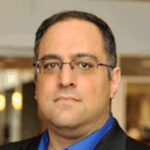 The global information technology outage on July 19, 2024, that paralyzed organizations ranging from airlines to hospitals and even the delivery of uniforms for the Olympic Games represents a growing concern for cybersecurity professionals, businesses and governments. Continue reading
The global information technology outage on July 19, 2024, that paralyzed organizations ranging from airlines to hospitals and even the delivery of uniforms for the Olympic Games represents a growing concern for cybersecurity professionals, businesses and governments. Continue reading
#452 – HOT POTATO MANAGEMENT – MALCOLM PEART
Featured
 “Hot Potato,” or “Pass the Potato,” is, ostensibly, a party game for children. Players sit in a circle and pass the ‘potato’ to each other while music plays, and when it stops the potato holder is out. The last player left is the winner and those who have been caught with the spud have lost. Continue reading
“Hot Potato,” or “Pass the Potato,” is, ostensibly, a party game for children. Players sit in a circle and pass the ‘potato’ to each other while music plays, and when it stops the potato holder is out. The last player left is the winner and those who have been caught with the spud have lost. Continue reading
#452 – FAILING TO MAINTAIN TRUCK RESULTS IN CRIMINAL CONVICTION – BILL POMFRET PH.D.
Featured
 A supervisor can be charged and found criminally negligent when he/she knowingly allows a worker to operate equipment that a worker under his charge suggests is potentially dangerous?
A supervisor can be charged and found criminally negligent when he/she knowingly allows a worker to operate equipment that a worker under his charge suggests is potentially dangerous?
This is the question that the Ontario Superior Court of Justice confronted in a criminal prosecution of a supervisor for criminal negligence causing death. Continue reading
#452 – LIVING UP TO ERM EXPECTATIONS – JAMES TONEY
Featured
 A December 2022 article by McKinsey discussed risk and resilience priorities from the Chief Risk Officer perspective. The article stressed that when business environments are subject to constant disruption, superior risk management becomes a competitive advantage in all industries. It also noted that risk functions need to develop more sophisticated risk identification approaches to rapidly identify and respond to new risks. (34) Continue reading
A December 2022 article by McKinsey discussed risk and resilience priorities from the Chief Risk Officer perspective. The article stressed that when business environments are subject to constant disruption, superior risk management becomes a competitive advantage in all industries. It also noted that risk functions need to develop more sophisticated risk identification approaches to rapidly identify and respond to new risks. (34) Continue reading
#452 – HOW AI IS HIJACKING RISK MANAGEMENT JOBS – ALEX SIDORENKO
Featured
 Imagine you are building a world class risk management team for a non-financial company, who would you hire? In my risk management team I need a researcher, a decision analyst, a quant and a culture ambassador.
Imagine you are building a world class risk management team for a non-financial company, who would you hire? In my risk management team I need a researcher, a decision analyst, a quant and a culture ambassador.
The researcher
I need someone to spend time scouring through reports, news articles, and regulatory updates to identify emerging risks and trends. This demands a keen eye for detail and a deep understanding of the industry. Continue reading
#451 – CROWDSTRIKE OUTAGE INDICATES THAT RISK MANAGEMENT IS ESSENTIAL – MICHAEL J. DAVERN PH.D.
Featured
 In the wake of the widespread chaos we saw on Friday, one old adage perhaps feels even truer now than when it was first coined in the 1960s:
In the wake of the widespread chaos we saw on Friday, one old adage perhaps feels even truer now than when it was first coined in the 1960s:
To err is human, but to really foul things up you need a computer.
As the world continues to assess the fallout of what has been called “the largest IT outage in history”, industry and government leaders will naturally be pondering how exactly this all could have happened. Continue reading
#451 – WILDFIRES HERE NOW: WE HAVE TO ADAPT AS WE MITIGATE – BOB LEONARD
Featured
 NOTE: As I write this on a July weekend in Portland OR… here’s today’s headline in the New York Times: “Pacific Northwest Faces Critical Fire Risk as Wildfires Burn”. About 1.7 million people are under fire danger warnings on Sunday as a heat wave continues to bake the region and several large blazes burn in Oregon. Continue reading
NOTE: As I write this on a July weekend in Portland OR… here’s today’s headline in the New York Times: “Pacific Northwest Faces Critical Fire Risk as Wildfires Burn”. About 1.7 million people are under fire danger warnings on Sunday as a heat wave continues to bake the region and several large blazes burn in Oregon. Continue reading
#451 – 100 AI STRATEGIES THAT WILL TRANSFORM YOUR RISK TAKING SKILLS – ALEX SIDORENKO
Featured
 We’ve hit an exciting milestone with the first 100 registrations for RISK AWARENESS WEEK 2024! To me, each registration represents a commitment to advancing risk management and decision-making . And to celebrate, I have prepared 100 ideas AI can transform your company and personal decision making. That’s right. A hundred ideas. Not bs, generic AI-generated empty statements, 100 practical ideas I personally use in my day to day work. From identifying hidden risks to overcoming cognitive biases, these AI ideas will turn your risk taking skills into a superpower. If these are not enough, register for upcoming RAW2024 to hear some of the best global risk managers share their stories. Continue reading
We’ve hit an exciting milestone with the first 100 registrations for RISK AWARENESS WEEK 2024! To me, each registration represents a commitment to advancing risk management and decision-making . And to celebrate, I have prepared 100 ideas AI can transform your company and personal decision making. That’s right. A hundred ideas. Not bs, generic AI-generated empty statements, 100 practical ideas I personally use in my day to day work. From identifying hidden risks to overcoming cognitive biases, these AI ideas will turn your risk taking skills into a superpower. If these are not enough, register for upcoming RAW2024 to hear some of the best global risk managers share their stories. Continue reading
#451 – POOR STRATEGY – INTERNAL ISSUES – OR EXTERNAL UNCONTROLLABLE FORCES – JIM TONEY CERM
Featured
 New Coke – A Strategic Blunder pre-dating ERM
New Coke – A Strategic Blunder pre-dating ERM
Coca-Cola Company’s debacle entered the public consciousness on April 23, 1985 with the introduction of the then new formula that came to be known as “New Coke” replacing its original formula, “Coke”. (14) Continue reading
#451 – PROTECTING WORKERS FROM BIRD FLU – BILL POMFRET PH.D.
Featured
 Farms around the world are experiencing a surge in avian influenza A(H5N1) infections, commonly called bird flu, among poultry, dairy cows, and even some workers.
Farms around the world are experiencing a surge in avian influenza A(H5N1) infections, commonly called bird flu, among poultry, dairy cows, and even some workers.
Here in Canada, and the USA the spread of bird flu among animal populations is being carefully monitored. While the chance of people becoming infected remains low, bird flu does pose a risk, especially to those who work with wild and domestic birds and animals. Continue reading
#451 – PURPOSE OF A RELIABILITY PROGRAM – FRED SCHENKELBERG
Featured
 The reliable performance of a system is important. It is important to the customer, to our business and to us.
The reliable performance of a system is important. It is important to the customer, to our business and to us.
Very few argue that we should ignore the reliability characteristics of a product. We also deem cost, time to market or feature set as important also. The trouble is we can measure the latter directly every day, where the reliability performance is often difficult to measure. Continue reading
#450 – BUILDING BLOCKS OF A SAFETY CULTURE – BILL POMFRET PH.D.
Featured
 he Safety culture is rightly a preoccupation for health and safety professionals. It’s not a luxury; it’s not even a choice. Every organization has a safety culture, but not all ensure the workforce is adequately protected. The holy grail of a strong safety culture allows those managing an organization’s duty of care to employees the chance to oversee a system in which everyone takes responsibility for their own health and safety and each other’s. Continue reading
he Safety culture is rightly a preoccupation for health and safety professionals. It’s not a luxury; it’s not even a choice. Every organization has a safety culture, but not all ensure the workforce is adequately protected. The holy grail of a strong safety culture allows those managing an organization’s duty of care to employees the chance to oversee a system in which everyone takes responsibility for their own health and safety and each other’s. Continue reading
#450 – THE RISE AND FALL OF ERM? – JAMES TONEY CERM
Featured
 This article was conceived in the first months of 2023 when large stock price declines in well-known corporations began to occur. These declines signaled something possibly amiss with decisions concerning corporate strategy, reputation, financial well-being, marketing, or external market conditions. Rather than react to these early events, publication was postponed to gather additional and more varied information regarding executive-level decision outcomes affecting business strategy and ultimately business success. Consequently, publication of this article was delayed until July 2024. Continue reading
This article was conceived in the first months of 2023 when large stock price declines in well-known corporations began to occur. These declines signaled something possibly amiss with decisions concerning corporate strategy, reputation, financial well-being, marketing, or external market conditions. Rather than react to these early events, publication was postponed to gather additional and more varied information regarding executive-level decision outcomes affecting business strategy and ultimately business success. Consequently, publication of this article was delayed until July 2024. Continue reading
#450 – TO CREATE SUSTAINABILITY: CHANGE HOW PEOPLE THINK – JON BIEMER PE
Featured
 Any time we take the initiative to create sustainability, we are intervening in a system. Systems are messy and resist being changed. Think capitalism (aka greed), or our weather (e.g., Climate Change), or local government (government of any size), or my daily routine (how dare you mess with that). What hubris, thinking that we as individuals can change these systems! Continue reading
Any time we take the initiative to create sustainability, we are intervening in a system. Systems are messy and resist being changed. Think capitalism (aka greed), or our weather (e.g., Climate Change), or local government (government of any size), or my daily routine (how dare you mess with that). What hubris, thinking that we as individuals can change these systems! Continue reading
#450 – HOW TRAFFIC ENGINEERS CREATE CRASHES – WESLEY MARSHALL PH.D.
Featured
 “Can you name the truck with four-wheel drive, smells like a steak, and seats 35?”
“Can you name the truck with four-wheel drive, smells like a steak, and seats 35?”
Back in 1998, “The Simpsons” joked about the Canyonero, an SUV so big that they were obviously kidding. At that time, it was preposterous to think anyone would drive something that was “12 yards long, two lanes wide, 65 tons of American Pride.”
In 2024, that joke isn’t far from reality. Continue reading
#450 – POWER OF LESSNESS – MALCOLM PEART
Featured
 In today’s so called “Modern Era” with more people on the planet than ever before we seem to have less and less time. Despite living in the “Information Age” where data and instant knowledge are readily available at the touch of a button, swipe on a touch screen, or even a voice command time fritters away. There’s the ubiquitous smart ‘phone, the Internet and related search engines, remote meeting media, self-help and self-improvement podcasts and now, AI with free ChatGPT which are all meant to help. Continue reading
In today’s so called “Modern Era” with more people on the planet than ever before we seem to have less and less time. Despite living in the “Information Age” where data and instant knowledge are readily available at the touch of a button, swipe on a touch screen, or even a voice command time fritters away. There’s the ubiquitous smart ‘phone, the Internet and related search engines, remote meeting media, self-help and self-improvement podcasts and now, AI with free ChatGPT which are all meant to help. Continue reading
#450 – FIVE STEPS TO CREATE A RELIABILITY PLAN – FRED SCHENKELBERG
Featured
 A specific reliability plan may include any number of specific tasks. To build an effective plan you need the knowledge of the individual tools and techniques, plus how they may fit together to create an overall plan to achieve your goals. Continue reading
A specific reliability plan may include any number of specific tasks. To build an effective plan you need the knowledge of the individual tools and techniques, plus how they may fit together to create an overall plan to achieve your goals. Continue reading
#449 – NSW Cyber Security Audit – James Kline Ph.D.
Featured
 This is the first of two articles dealing with Cyber-Security and government. This article discusses the results of the New South Wales (NSW) Auditor-Generals Report on Cyber-Security in Local Government. The second will deal with the U.S. National Institute of Standards and Technology’s (NIST) Cyber-security Framework 2.0. Continue reading
This is the first of two articles dealing with Cyber-Security and government. This article discusses the results of the New South Wales (NSW) Auditor-Generals Report on Cyber-Security in Local Government. The second will deal with the U.S. National Institute of Standards and Technology’s (NIST) Cyber-security Framework 2.0. Continue reading
#449 – COMMUNICATION RISKS – MALCOLM PEART
Featured
 Recently, I was again introduced to the concept of ‘one-way communication’ whereby one person sends a message, but no allowance is made for any clarifications queries or discussion by any recipient. For the sender such a singular approach obviates any interaction with those exposed to such a transmission no matter if it’s acted upon, understood, or even just acknowledged. Continue reading
Recently, I was again introduced to the concept of ‘one-way communication’ whereby one person sends a message, but no allowance is made for any clarifications queries or discussion by any recipient. For the sender such a singular approach obviates any interaction with those exposed to such a transmission no matter if it’s acted upon, understood, or even just acknowledged. Continue reading
#449 – POTENTIAL ENERGY AND RISK: MITIGATING HURRICANES AND WAR – JON BIEMER PE
Featured
 Engineering dynamics tells us to pay attention to “potential energy”. That’s the energy that will be released if some restraining condition is removed. A simple example would be a glass sitting on the edge of a table. If the glass is knocked off the table, the glass crashes to the floor – turning potential energy into kinetic energy. Continue reading
Engineering dynamics tells us to pay attention to “potential energy”. That’s the energy that will be released if some restraining condition is removed. A simple example would be a glass sitting on the edge of a table. If the glass is knocked off the table, the glass crashes to the floor – turning potential energy into kinetic energy. Continue reading
#449 – RISK ASSESSMENTS IN THE MARITIME INDUSTRY – BILL POMFRET PH.D.
Featured
 Risk assessment is a well-developed field which many operators are currently applying to improve their operations and reduce their risk exposure. This paper is intended to provide an overview of the risk assessment for mariners in the Maritime transportation. The risks addressed are primarily those affecting the safety of a vessel, facility, or operation. The concept of risk is defined, and the methods available to assess the risks associated with an operation are described. Continue reading
Risk assessment is a well-developed field which many operators are currently applying to improve their operations and reduce their risk exposure. This paper is intended to provide an overview of the risk assessment for mariners in the Maritime transportation. The risks addressed are primarily those affecting the safety of a vessel, facility, or operation. The concept of risk is defined, and the methods available to assess the risks associated with an operation are described. Continue reading
#449 – AI SEARCH ANSWERS ARE FAST FOOD OF YOUR INFORMATION DIET – CHIRAG SHAH PH.D.
Featured
 If you have used Google lately and been lucky – or unlucky – enough to encounter an answer to your query rather than a bunch of links, you have been subjected to something called AI Overviews. This is a new core feature that Google has been rolling out, a move widely anticipated since the company’s experiments with its LaMDA large language model in 2021, and since OpenAI’s ChatGPT artificial intelligence chatbot rocketed to prominence in 2023. Continue reading
If you have used Google lately and been lucky – or unlucky – enough to encounter an answer to your query rather than a bunch of links, you have been subjected to something called AI Overviews. This is a new core feature that Google has been rolling out, a move widely anticipated since the company’s experiments with its LaMDA large language model in 2021, and since OpenAI’s ChatGPT artificial intelligence chatbot rocketed to prominence in 2023. Continue reading
#449 – UNCOVERING FIELD FAILURES – FRED SCHENKELBERG
Featured
 A reliable product does not fail often. Customers expect to a level of reliability performance and failures that occur too early dash their expectation.
A reliable product does not fail often. Customers expect to a level of reliability performance and failures that occur too early dash their expectation.
The design and development team work to create a robust product. To meet the customer’s reliability expectations. The team may use a range of tools to detect any reliability problem prior to launch. Continue reading
Apple’s AI Soul Sucking Ad
Featured
Context: Apple released an ad called Crush – pimping its latest iPad Pro. Great idea. But, one that went horribly wrong.
The set up: Apple updated its IPad Pro. It wanted to create a splashy and memorable ad like Steve Job’s 1984 Macintosh computer ad. Many think this ad is the most creative ad ever. It’s shows how humans are acting like robots in a dystopian world where conformity reigns and creativity is crushed. Until you buy the Macintosh and you’re saved. Get it.
Check out the 1984 ad below:
Today’s Crush ad: Apple wanted to create the same splashy ad a few weeks ago to launch its new iPad Pro. The ad starts with the metronome – click click. Time’s running out. A huge compactor comes on the screen. It starts squeezing and destroying analog creator instruments such a drum set, speakers, piano, paint cans, paintings, books, etc. You get the idea. All these are analog instruments for creative work.
The message is death to the analog native. Life to the digital native using the iPad Pro.
The result is the creative’s worst nightmare. End of creative freedom. IPad Pro and by extension AI are taking over.
Check it out at:
Takeaways: It’s kinda funny that Apple the quintessential manipulator would let this ad be made. The creative’s backlash was loud and rebuking.
Why? It’s the fear that we all have now that robots and AI will first destroy individual creativity and shortly destroy humanity.
Apple: How did you miss this one? Or, is there something more sinister going. You want to prepare us for Apple Intelligence?
Toyota: Where Art Thou?
Featured
Engineering gods. I’ve been a design, manufacturing, and quality engineer for a long time. There were a few design and manufacturing companies that we religiously admired for doing the right things right – all the time. GE with six sigma. Boeing flying right. Toyota for their iconic Toyota production systems.
The reality: Each of these companies have been disrupted. Now it is Toyota’s turn. They have been busted for a string of quality scandals. They allegedly falsified test reports for up to 20 years. Not good. Very surprising. Hugely impactful.
Why Is this a huge deal. For quality experts, this is the ultimate business sin. We put Toyota on a pedestal because they made great quality products. They invented the Toyota Production System (TPS). They were honest. They were transparent. They were the good folks that we all aspired to.
They earned all this admiration. Toyota cars were the most reliable for many years. Well, maybe not in the future. What up with that? Well, Toyota’s value has slipped. It’s quality reputation has tanked. Investors can’t trust company management. Why did Toyota lose its way? Hubris? Too global. Too prosperous. Who knows for sure? What I do know is that it’s a f@cking shame.
That was then. This is now.: Toyota has a shareholder vote tomorrow to oust the founder’s grandson Akio Toyoda. This is a repudiation of their vaunted approach to business and quality.
Hard lesson learned: Even the best can slip and do a face plant. For us mortals, who want to do better and follow the best, we have to be less trusting. Be arms length. Check everything. Don’t trust – always verify.
Training the Machine To Do Your Job
Featured
Background: Twenty or so years ago, workers would train their human replacements in Asia or some other part of the world. The company would say something like we’re expanding offshore, but your job is safe. We will keep and retrain you for a higher paying job such as calibrating equipment or coding robots.
OK. Seemed good. The plant was built in China. Human workers were trained. US workers were fired. We understand this trope because we’ve seen it over and over again.
New trope: What’s the new business trope? People are now training machines and AI to do their jobs. The result is the same. They can lose their jobs.
Great BBC story: BBC had a great story (AI Took Their Jobs, June 16, 2024) about a company with 60 writers and editors that published blog posts and articles. One day management came by and said they wanted to use AI to format the articles. Humans would edit the pieces to make them seem human.
What happened? Phase II automation was ChatGPT would write the entire article. What about the human workers? All but one got fired.
Is this the future of media? What about all those news rooms and journalists. Do you need a real person on TV reading the news? Why not an avatar? Do you need news rooms? Do you need journalists? Anyway, you get the point.
What about the 1000’s of communications grads and English majors? At the University of Oregon, communications is the #1 degree in terms of the size of graduates.
Hard lesson earned: According to the BBC article, the American Writers and Artists Institute’s #1 class by far is AI for its members. If you can’t fight them, I guess join them.
What’s your plan?
The Disposable CEO – Thanks to AI
Featured
Context: Most of us are worried about what’s next with AI. We got the doomers. AI apocalypse is coming. Media reinforces this with its doomsters. Fortune Magazine June 4, 2024 expressed this: “25 Year Old Antropic Employee Says She May Have only 3 Years Left To Work Because AI Will Replace Her.”
Kinda scary: Avital Balwit, the chief of staff at Anthropic, says its an existential crisis:
““I stand at the edge of a technological development that seems likely, should it arrive, to end employment as I know it.”
CEO’s @ Risk: OK. We mostly think that knowledge workers are at risk. But, someone has to make the final decisions. But what about upper management – the folks who say AI is the new oil or electricity, the folks who pull all the organizational levers.
So, is the CEO job sacrosanct? So, it won’t go away. Ahh, may be…. And, most executives also think they are indispensable, NOT disposable.
The Numbers: Nearly half (47%) of executives in a EdX survey said that “most” or “all” CEO’s could be replaced by AI. Not good. The basic assumptions of business are being challenged or disrupted.
Hard lesson earned: NY Times quote from Jack Ma, the founder of Alibaba, predicted that in 30 years “a robot will likely be on the cover of Time Magazine as the best CEO.”
Kinda scary when you think about it?
Total Automation
Featured
Challenge. I live in Portland Oregon USA. Five blocks from us a canteen restaurant was set up. All automated. You use a credit card to get in. You pay with the card. You’re surveilled.
No humans. All machine. We thought a no human restaurant was an outlier. A cute test of automation in a safe community.
Fast forward 5 years: California enacted a $20 minimum wage for fast food workers. And, you’ve heard of the $15 to $20 value meal. Sorry, the value proposition no longer exists. This isn’t working for the franchise owners, customers, and shareholders.
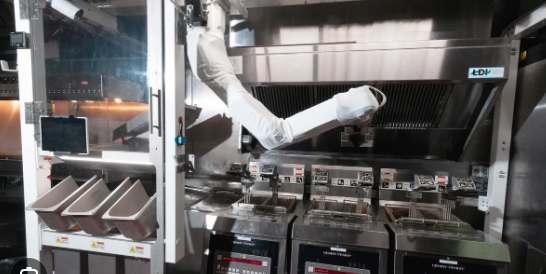 Enter automation: We now got robots flipping burgers. Cutely called ‘flippy.’ We got automated ordering inside the fast food restaurant and drive thrus.
Enter automation: We now got robots flipping burgers. Cutely called ‘flippy.’ We got automated ordering inside the fast food restaurant and drive thrus.
Hard lesson earned: If you look into the short term future, you’re seeing total automation. Robots + AI. Everywhere.
So, ask yourself. Is the future coming for your work/career/job? Are you ready?
What Do You Do If You’re Average Like Me?
Featured
Set up: Linda Boff recently left General Electric as their Chief Marketing Officer to be CEO of ‘Said Differently’ a marketing agency. According to the Wall Street Journal, June 17, 2024, she said the agency’s business model is to:
“To be able to cast a team regardless of geopgraphy and say: ‘Who’s the best designer? Who’s the best brand strategist? Who’s the best copywriter? And, who know this industry.”
But, we as individuals already do this with Fiverr and other creative flatforms. But, this is different. What happens when the entire company’s business model is based on ‘only the best worldwide.” Just think of your company. What happens to average folks like me?
Hard lesson earned: More companies will adopt this business model. What happens to FTE’s – full time employee model? What happens when you take this lean business model and add AI and robotics to it? Something to think about?
Learning AI
Featured
The AI learning challenge: A lot of folks worrying about their work/career/job want to learn AI. Or ML? The #1 tool in Machine Learning is gradient descent. I asked Chat GPT what is it: “Gradient descent is an optimization algorithm commonly used in machine learning and statistical modeling to minimize a function by iteratively moving towards the steepest descent, as defined by the negative of the gradient.”
Huh? What’s that. OK. Let’s simply it. Think of a 3D mountain (triple integral in calculus). You want to find the quickest way down the mountain. Got it?
But, here’s the challenge. I’m a mathy engineer. I had to have 2 years of calculus, 1 year of linear algebra, 1 year of statistics/probability, 1 year of fluency of a computer language, etc. Anyway, you get it that to do ML, you need a lot of math and maybe a degree.
The Simple Solution: Andrew Ng, a former Stanford professor and now entrepreneur, teaches this intuitively on Coursera. No math. Just algebra and intuitive programming using preprogrammed. https://www.coursera.org/specializations/machine-learning-introduction
Takeaway: If you want to learn ML and AI, don’t get a math or CS degree. Takes Ng’s courses on Coursera. If you want to get a math degree and solve triple integrals, go ahead. But, I’m now doing the simple, effective, and doable.
We Are Now All VUCANS®!
Featured
VUCANs: Now that I got your attention. You thought when you scanned this click bait title, that we were talking about Vulcans. In the Star Trek series, Vulcans were the logical aliens with funny ears that always had to suppress their emotions.
Nope. We’re talking about VUCANs®. Who are they? This is a term we invented for our books and risk products. A VUCAN is a Volatility, Uncertainty, Complexity, Ambiguity iNhabitant. Get it…
VUCA acronym: What did it start? US military colleges invented the term about 40 years ago to describe the new world of war. Instead of two opposing armies with nuclear weapons, most wars would consist of irregular combatants with new forms of warfare such as robot, AI, and drones.
Let’s look at these acronym words a little more carefully. What does VUCA mean:
- Volatility: Speed and magnitude of change.
- Uncertainty: Lots of unpredictable change.
- Complexity: Lots of things happening that make it difficult to understand the change.
- Ambiguity: Lack of undertanding of what’s going on.
Change happens: People don’t like change. It feels different and unfamiliar. It takes us out of our comfort zone. It means we may have less personal control. It can result in fear of the unknown. It can mean loss of job security. That’s why we’re now all VUCANs.
Is Your Job Safe?
Featured
The headlines: “Top VC Kai-Fu Lee Says His Prediction that AI Will Displace 50% of Jobs by 2027 is ‘Uncannily Accurate’ on Fortune Magazine May 25, 2024.
If that wasn’t bad enough the next Fortune Magazine article I read said: “Elon Musk Predicts Jobs Will Become ‘Kinda Like a Hobby’: The AI and Robots will Provide any Goods and Services you Want shouted Fortune Magazine cover shouted in May 24, 2024
WTF. Not the kind of warm and fuzzy article I was expecting to read this lazy afternoon.. It’s really fearful!
So, have you asked yourself: “Will AI and robots take my job?” This is now the #1 workplace fear. It’s not quiet quitting. It’s not work life balance.
Will I have work/career/job in 5 years. Tough question. No easy answer. It seems that it depends. What do you do? How much of the work repetitive? How much is creative?
Let’s look at AI can do really well. AI can process and distill huge amounts of information. The downside is that it can hallucinate. Not good!
Jobs in jeopardy due to AI: Accountants. Mathematicians. Writers. Interpreters. This is according to a study by University of Pennsylvania and OpenAI.
The New AI Working It Hacks
Featured
The problem: Working It Hacks is an emagazine what we’d written for more than 20 years. We had 4 Working It trademarks. We owned WorkingIt.com. We had a lot invested in Working It and the future of work.
We took a hard look at the emagazine. We didn’t like what we saw. Big problems. We advocated the idea that the truth will set up free. We had to know the truth.
The problem was no one was reading or cared for Working It Hacks. It was boring. Readership was aging out. Folks were not thrilled by the pieces. All of these are kind. The emag was simply not working. What to do?
Fog of words and ideas: A few months ago, I read Smart Brevity by Jim VandeHei, Mike Allen and Roy Schwartz. The premise of the book is pretty direct: “Never in the history of humanity have we vomited more words in more places with more velocity.”
We’re addicted to our smart phones. We check is 350 times each day. We don’t read. We scan. We watch videos. All of our stuff was frankly boring.
The solution: Test, prototype, and iterate new material, format, look/feel, and content using Smart Brevity. We would use this format for our emagazine, videos, apps, and all our products.
Can you teach an old writer dog new tricks? Not easily. And, we’re going to talk about this a lot more. Why? AI is disrupting all work, careers, and job.
Why It Matters: Have you ever read Axios articles. Each of their book articles and emails have the same format. Intro. Date. # of words. Time to read. See below.
I was offended by this. I was used to writing 200K word professional books. Or, as my daughter calls them ‘thuds’ or ‘tomes’. Kinda tough love.
The structure of the article consists of thought bites or takeaways that may interest you. See below:
 Takeaways: AI age is the new industrial revolution. AI is the new oil or electricity. Pick your metaphor.
Takeaways: AI age is the new industrial revolution. AI is the new oil or electricity. Pick your metaphor.
We are pivoting and reinventing our products. The theme for the new AI Working It Hacks is we are now all AI guinea pigs. People are fearful. AI is the new work/career/job driver. Working It Hacks provides hack to succeed and even thrive in today’s World. As Smart Brevity says folks want to know ‘what’s new’ and ‘why it matters.’ This is what we’ll give you in our AI Working It Hacks emag and app. Enjoy!
Killer AI Tip/Tool
Featured
AI Tools: I use AI, specifically Chat GPT and Gemini for first drafts for emails, proposals, background searches, software dev, and brainstorming. It’s great a great tool for lots of things. Each week, we’re going to provide a killer tip/tool for using and getting more comfortable with AI.
We may go into virtual dating with AI. We may go into practical uses for AI at work. Today, we’re going to talk about using AI for tough conversations. We got this idea from a Wall Street Journal article called For Conversation You Dread, Try a Chatbot.
Dreaded conversations: These are conversations that give us fear, dread, and anxiety. We all have these. Taking care of our aging parents. Giving instructions or rules with our kids. Asking for a raise at work. Talking with our ex significant others about money.
We wonder how to do these to be effective and kind. I role play with friends or even in a mirror. I also have gotten coaching. Rehearse with Chat GPT: I had not heard of this use case. But, gave it a try. It’s sorta fun to rehears with Chat GPT.
How: How to do this? Chat GPT needs to be coached and trained. The machine needs to be coached on the person it has to be and be believable. The machine has to form a basic psychological profile on who it Is supposed to play. Creating a believeable role play playing chat avatar, takes time. So, you may have to iterate a little.
Why it matters: Using a chat bot has a several advantages. It’ll introduce you to chatbot who may be future companions, coaches, and even significant others. You learn how to contextualize the machine. This will have to be done with engineering prompts and queries in the future.
It is fun. You learn prompting. You create an avatar. You get new ideas. You can finesse the propoer ‘tone and feel’ for the tough conversation.
For more info: Check out May 4 2024 For Conversation You Dread, Try a Chatbot, WSJ piece for more tips on how to do this.
Is College Worth It?
Featured
Context is Worth 20 IQ Points: Our daughter just graduated from Oregon State University with a degree in computer science. Our question as parents is: “Can she get a job?” Five years ago, when our daughter started uni, we thought that CS would be the forever meal ticket for her. Why? Every company needs computers and programmers.
That was pre-explosion of AI. Now, I guess not so much! Why? Supply and demand. The supply of CS grads in the US increased 40% in the last 5 years (WSJ). The demand for CS grads without AI has decreased 30% thanks to AI (WSJ Handshake). Why?
The Chat GPT can program and do it pretty well. World Economic Forum predicts that AI will be one of the professions most impacted by AI. Well, more work/career/job disruption.
Wall Street Journal Artlcle: WSJ had a piece called CS Major graduate Into a World of Fewer Opportunities (May 30, 2024).
Is College Worth It?: : Or, the question every parent and person now asks: “is college worth it.”
Why it matters: Depends on who you ask?
Students: Students have to pay off student loans. If you’re in a private uni in the US, they can be $60k or more a year. They wonder if they should have pursued a trade such as plumbing or welding. Guranteed jobs.
Parents: Parents cosigned the loans, so they are on the repayment hook for a lot of years. They wonder if they should have counseled their kids a little better about financial and job adulting.
Politicians: Taxpayers may be saddled with student loan debts if they can’t pay them off. Pols may be held to account.
Unis: They may have to change their mission on the purpose and value of a higher education. They need to develop new programs to ensure graduate employability regardless if the student gets a CS, French history, or gender studies degrees.
Bottom Line: There is a lot of college regrets. Wouldas. Shouldas. Coulda’s
#448 – SURPRISES: AS THE REALIZATION OF RISK – MALCOLM PEART
Featured
 How often do we hear about surprise attacks and the effectiveness they have on a potential enemy. Some surprise attacks have been heralded as victories while others have been declared infamy – it’s all a matter from which side it’s received. Continue reading
How often do we hear about surprise attacks and the effectiveness they have on a potential enemy. Some surprise attacks have been heralded as victories while others have been declared infamy – it’s all a matter from which side it’s received. Continue reading
#448 – NIST CYBER SECURITY FRAMEWORK 2.0 – JAMES KLINE PH.D.
Featured
 On February 26, 2024, the National Institute of Standards and Technology (NIST) issued several Cyber-Security Frameworks. These included: a.) Cyber-security Framework 2.0 Small Business Quick-Start Guide, b.) Cyber-security Framework (CFS) 2.0 Resources Overview Guide, c.) Cyber-security Framework 2.0 Quick Start Guide, and Cybersecurity Framework 2.0: Enterprise Risk Management Quick-Start Guide. Another manual Enterprise Risk Management and Governance Oversight was issued on March 6, 2024. (1) These guides and manuals indicate the NIST is attempting to provide a wide range of information on cyber-security for different sectors of the economy, which have different levels of risk management sophistication. Continue reading
On February 26, 2024, the National Institute of Standards and Technology (NIST) issued several Cyber-Security Frameworks. These included: a.) Cyber-security Framework 2.0 Small Business Quick-Start Guide, b.) Cyber-security Framework (CFS) 2.0 Resources Overview Guide, c.) Cyber-security Framework 2.0 Quick Start Guide, and Cybersecurity Framework 2.0: Enterprise Risk Management Quick-Start Guide. Another manual Enterprise Risk Management and Governance Oversight was issued on March 6, 2024. (1) These guides and manuals indicate the NIST is attempting to provide a wide range of information on cyber-security for different sectors of the economy, which have different levels of risk management sophistication. Continue reading
#448 – EXPLAINING ‘WHAT’ YOUR BUSINESS DOES? – BILL POMFRET PH.D.
Featured
 Business capability modeling (BCM) helps a business understand and showcase its possibilities. These capability models help companies understand and evaluate themselves and, more importantly, connect the strategic “what” a business can do with the more tactical “how” it’s done. Connecting this information to strategic goals allows organizations to identify what kind of groundwork needs to be done to ensure a successful outcome in various organizational change projects. This ranges from procurement of a new system to department restructuring after acquiring or merging with another company. Continue reading
Business capability modeling (BCM) helps a business understand and showcase its possibilities. These capability models help companies understand and evaluate themselves and, more importantly, connect the strategic “what” a business can do with the more tactical “how” it’s done. Connecting this information to strategic goals allows organizations to identify what kind of groundwork needs to be done to ensure a successful outcome in various organizational change projects. This ranges from procurement of a new system to department restructuring after acquiring or merging with another company. Continue reading
#448 – WHY DOES PIZZA TASTE SO GOOD? – JEFFREY MILLER
Featured
 Pizza is one of the world’s most popular foods.
Pizza is one of the world’s most popular foods.
In the U.S., 350 slices are eaten every second, while 40% of Americans eat pizza at least once a week.
There’s a reason why pizza is so popular. Humans are drawn to foods that are fatty and sweet and rich and complex. Pizza has all of these components. Cheese is fatty, meat toppings tend to be rich, and the sauce is sweet. Continue reading
#448 – IS THIS FMEA GOOD? – FRED SCHENKELBERG
Featured
 It is rare that a third party generated FMEA/FMECA has any value. The development or manufacturing teams and supporting staff should comprise the bulk of the study’s team. Team size for a specific study would include 4 to 10 individuals. Continue reading
It is rare that a third party generated FMEA/FMECA has any value. The development or manufacturing teams and supporting staff should comprise the bulk of the study’s team. Team size for a specific study would include 4 to 10 individuals. Continue reading
#448 – UNCERTAINTY IS OPPORTUNITY – THE FUTURE IS MALLEABLE – BOB LEONARD
Featured
 “If you are proactive, you focus on preparing. If you are reactive, you end up focusing on repairing.” – John C. Maxwell
“If you are proactive, you focus on preparing. If you are reactive, you end up focusing on repairing.” – John C. Maxwell
We live in a Volatile, Uncertain, Complex and Ambiguous (VUCA) world. And our climate crisis guarantees it will remain a VUCA world for decades. Climate touches everything so it has knock on effects in society, technology, economics and politics, and, obviously, on our ecosystem.
#447 – OUR ABILITY TO TRANSFORM IS FALLING BEHIND – HOWARD M. WIENER
Featured
 Some time ago, I wrote Agility and the Third Derivative, an article about the need to accelerate our ability to transform ourselves to meet the challenges of a VUCA world that is, itself, changing faster and faster. Continue reading
Some time ago, I wrote Agility and the Third Derivative, an article about the need to accelerate our ability to transform ourselves to meet the challenges of a VUCA world that is, itself, changing faster and faster. Continue reading
#447 – STRESS: INVISIBLE EPIDEMIC @ WORK – BILL POMFRET PH.D.
Featured
 The detrimental effects of stress often get downplayed and when it comes to workplace stress, this is especially true. People expect that work is supposed to be stressful and that if you are not stressed, you are not taking it seriously. However, this does not have to be the case. If you feel like a job is taking a strain on other aspects of your life, don’t hesitate to act. Continue reading
The detrimental effects of stress often get downplayed and when it comes to workplace stress, this is especially true. People expect that work is supposed to be stressful and that if you are not stressed, you are not taking it seriously. However, this does not have to be the case. If you feel like a job is taking a strain on other aspects of your life, don’t hesitate to act. Continue reading
#447 – SPAM: FROM SHRIMP JESUS TO FAKE SELF PORTRAITS – RENEE DIRESTA, ABHIRAM REDDY, JOSH GOLDSTEIN
Featured
If you’ve spent time on Facebook over the past six months, you may have noticed photorealistic images that are too good to be true: children holding paintings that look like the work of professional artists, or majestic log cabin interiors that are the stuff of Airbnb dreams. Continue reading
#447 – READY, FIRE, AIM RELIABILITY GOAL SETTING – FRED SCHENKELBERG
Featured
 “Keeping the end in mind”, “working toward a common objective” and “providing a vision” are all convention management wisdom based on setting goals.
“Keeping the end in mind”, “working toward a common objective” and “providing a vision” are all convention management wisdom based on setting goals.
Seeing a reliability goal is one of the first tasks when creating a reliability plan.
“How good (reliable) does it have to be?” Continue reading
#447 – BLINDNESS! HEADLESS! LEADERLESS! – MALCOLM PEART
Featured
 There are many analogies for situations where there is havoc. We can have the chaos of the blind leading the blind and confusion of mindless chickens running around in ever decreasing circles. Alternatively, there is cool calm collectiveness and, much sort after, leadership. Continue reading
There are many analogies for situations where there is havoc. We can have the chaos of the blind leading the blind and confusion of mindless chickens running around in ever decreasing circles. Alternatively, there is cool calm collectiveness and, much sort after, leadership. Continue reading
#446 – BIG LITTLE RISKS – MALCOLM PEART
Featured
 Risk is seen by different people in differing lights over a wide spectrum from the risk averse ‘riskophobes’ to the daredevils who are ‘riskophiles’. We also have those who don’t have a strong opinion or view regarding some risk or another who are fair game to risk extremists who attempt to push their views upon the masses and manipulate beliefs. Continue reading
Risk is seen by different people in differing lights over a wide spectrum from the risk averse ‘riskophobes’ to the daredevils who are ‘riskophiles’. We also have those who don’t have a strong opinion or view regarding some risk or another who are fair game to risk extremists who attempt to push their views upon the masses and manipulate beliefs. Continue reading
#446 – RELIABILITY SPECIFICATIONS AND REQUIREMENTS – FRED SCHENKELBERG
Featured
 The communication between suppliers or vendors and their customers is often using a mix of specifications and requirements.
The communication between suppliers or vendors and their customers is often using a mix of specifications and requirements.
Customers set requirements and suppliers offer specifications. When they match, or when a supplier component specifications meet the customer’s requirements, we have the potential for a transaction. Continue reading
#446 – ROBOT HARVESTS COTTON LIKE A LIZARD – HUSSEIN GHARAKHANI PH.D.
Featured
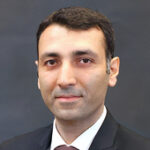 Cotton is one of the most valuable crops grown in the U.S., with a harvest value of some US$7 billion yearly. It is cultivated across a crescent of 17 states stretching from Virginia to California and is used in virtually every type of clothing, as well as in medical supplies and home goods such as upholstery. Continue reading
Cotton is one of the most valuable crops grown in the U.S., with a harvest value of some US$7 billion yearly. It is cultivated across a crescent of 17 states stretching from Virginia to California and is used in virtually every type of clothing, as well as in medical supplies and home goods such as upholstery. Continue reading
#446 – INCREASING C SUITE FINANCIAL LITERACY OF MANUFACTURING – GENE RUSSELL
Featured
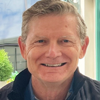 Without a basic grasp of financial concepts at the C-suite (executive) level, small and medium-sized manufacturers (SMMs) may be limited in their ability to compete in an increasingly crowded marketplace. This is why financial literacy is near and dear to my heart. Continue reading
Without a basic grasp of financial concepts at the C-suite (executive) level, small and medium-sized manufacturers (SMMs) may be limited in their ability to compete in an increasingly crowded marketplace. This is why financial literacy is near and dear to my heart. Continue reading
#446 – CHANGES IN OH&S IN 2024 – BILL POMFRET PH.D.
Featured
 Today, employee wellness and safety remain a top priority for corporations, and having a first-in-class safety management system put in place is not just a nice-to-have, it’s essential. As digital capabilities continue to evolve, modernizing ineffective, slow, and expensive processes with renewed tools is one way to invest in industrial & occupational safety professionals and improve workplace health and safety. Continue reading
Today, employee wellness and safety remain a top priority for corporations, and having a first-in-class safety management system put in place is not just a nice-to-have, it’s essential. As digital capabilities continue to evolve, modernizing ineffective, slow, and expensive processes with renewed tools is one way to invest in industrial & occupational safety professionals and improve workplace health and safety. Continue reading
#446 – NEW RULES FOR WORK – GREG HUTCHINS
Featured
 If your goals are ambitious and crazy enough, even failure will be a pretty good achievement.
If your goals are ambitious and crazy enough, even failure will be a pretty good achievement.
Laszlo Bock – Author
FOW process rules are guidelines, tips and tools that can lead to success. Thomas Davenport,
The author of Thinking for a Living, said:
“To treat something as a process is to impose a formal structure on it – to identify its beginning, end, and intermediate steps, to clarify who the customer is for it, to measure it, to take stock of how well it is currently being performed, and ultimately to improve Continue reading
#445 – BRINGING AI UP TO SPEED – AUTONOMOUS AUTO RACING – MADHUR BEHI PH.D.
Featured
 The excitement of auto racing comes from split-second decisions and daring passes by fearless drivers. Imagine that scene, but without the driver – the car alone, guided by the invisible hand of artificial intelligence. Can the rush of racing unfold without a driver steering the course? It turns out that it can. Continue reading
The excitement of auto racing comes from split-second decisions and daring passes by fearless drivers. Imagine that scene, but without the driver – the car alone, guided by the invisible hand of artificial intelligence. Can the rush of racing unfold without a driver steering the course? It turns out that it can. Continue reading
#445 – SUPPLIER RELIABILITY PROGRAM MATURITY – FRED SCHENKELBERG
Featured
 It was late Friday afternoon and the phone rang. Which is rarely a good thing.
It was late Friday afternoon and the phone rang. Which is rarely a good thing.
There seems to a significant spike in field failures due to one component. The initial failure analysis work reveals the issue started with a batch of parts received about two months ago and the flaw continues to appear in subsequent batches. Continue reading
#445 – EXECUTIVE LIABILITY IN OHS&E (MINI-COURSE) – BILL POMFRET PH.D.
Featured
 Corporate officers and directors are generally responsible for ensuring that their companies comply with Occupational Health, Safety & Environmental laws is a truism. At the same time, they’re not automatically liable just because their companies commit an OHS or environmental offence. There are 3 basic theories for holding officers and directors personally liable for a company’s legal violations: Continue reading
Corporate officers and directors are generally responsible for ensuring that their companies comply with Occupational Health, Safety & Environmental laws is a truism. At the same time, they’re not automatically liable just because their companies commit an OHS or environmental offence. There are 3 basic theories for holding officers and directors personally liable for a company’s legal violations: Continue reading
#445 – CALIFORNIA’S CLIMATE RISK REGULATIONS – KELLY EISENHARDT
Featured
 On the 7 October 2023, Governor Newsom signed into law two new mandates that are unparalleled to any in the nation, California SB 253 and SB 261. The purpose of both laws is to bring more transparency to the public regarding the contributions big business makes to climate change. Continue reading
On the 7 October 2023, Governor Newsom signed into law two new mandates that are unparalleled to any in the nation, California SB 253 and SB 261. The purpose of both laws is to bring more transparency to the public regarding the contributions big business makes to climate change. Continue reading
#445 – CUTTING CORNERS … LIVING ON THE EDGE – MALCOLM PEART
Featured
 People have probably been taking shortcuts since the beginning of time… perhaps for some early humanoid the decision to cut across a forest clearing rather than going around it resulted in an easy dinner for some predator. The shortest distance between two points may be a straight line and possibly the fastest but it could well be the riskiest. Continue reading
People have probably been taking shortcuts since the beginning of time… perhaps for some early humanoid the decision to cut across a forest clearing rather than going around it resulted in an easy dinner for some predator. The shortest distance between two points may be a straight line and possibly the fastest but it could well be the riskiest. Continue reading
#445 – WE’RE NOW ALL RISK MANAGERS – GREG HUTCHINS PE CERM
Featured
 The essence of risk management lies in maximizing the areas where we have some control over the outcome while minimizing the areas where we have absolutely no control over the outcome.
The essence of risk management lies in maximizing the areas where we have some control over the outcome while minimizing the areas where we have absolutely no control over the outcome.
Peter L. Bernstein – Risk Author
During COVID, we were all VUCANs(R). We all had to deal with Volatility, Uncertainty, Complexity, and Ambiguity. This implies each of us is inherently a risk manager. Why? Maybe, it’s hard wired into our DNA. Look at the ‘fight or flight’ syndrome our ancestors had to live and decide by. The very survivability of our species was defined by this simple risk-based conundrum. Continue reading
#444 – SUPPLY CHAIN PROCESS CONTROL AND CAPABILITY – FRED SCHENKELBERG
Featured
 If you buy more than one of an item used in your product, you will have to deal with variability. In general, the variability from part to part is minimal and expected. Occasionally, the variability is large and causes reliability problems.
If you buy more than one of an item used in your product, you will have to deal with variability. In general, the variability from part to part is minimal and expected. Occasionally, the variability is large and causes reliability problems.
According to O’Connor and Kleyner, “The main cause of production-induced unreliability, as well as rework and scrap, is the variability inherent in production processes.” O’Connor, Patrick D. T. and Andre Kleyner. 2012. Practical Reliability Engineering. Chicester: John Wiley and Sons. Web. Continue reading
#444 – SUPREME COURT JUSTICES FEAR ‘LEGAL CHAOS’: LOOK FOR A REVERSAL IN A FAIRLY SHORT TIME – JOHN E. JONES III
Featured
I think it’s clear they’re going to reverse the Colorado Supreme Court. There’s no question in my mind. I would look for a reversal in a fairly short period of time. The surprise may be that some of the more liberal justices could join the majority. I would look for an overwhelming majority to reverse. I think you could potentially see some concurring opinions, although I think Chief Justice John Roberts will try to wrap it into one opinion. Continue reading
#444 – WHAT YOU NEED TO KNOW ABOUT INFORMATION AND TECHNOLOGY RISKS – JAMES KLINE PH.D.
Featured
 In November 2023, the National Institute of Standards and Technology (NIST) issued NIST Special Publication NIST SP 800-221 (SP). The publication is entitled “Enterprise Impact of Information and Communications Technology Risk: Governing and Managing ICT Risk Programs Within an Enterprise Risk Portfolio. (1) This SP provides a guide for integrating ICT Risk Management with the larger Enterprise Risk Management (ERM) framework. Continue reading
In November 2023, the National Institute of Standards and Technology (NIST) issued NIST Special Publication NIST SP 800-221 (SP). The publication is entitled “Enterprise Impact of Information and Communications Technology Risk: Governing and Managing ICT Risk Programs Within an Enterprise Risk Portfolio. (1) This SP provides a guide for integrating ICT Risk Management with the larger Enterprise Risk Management (ERM) framework. Continue reading
#444 – HOT TIP: PRACTICE, PRACTICE, PRACTICE YOUR SAFETY TRAINING – BILL POMFRET PH.D
Featured
 In the early 2000s, a young Chinese pianist named Lang Lang was scheduled to perform at New York City’s Carnegie Hall in a highly anticipated debut. At the time he was considered by many critics to be the most exciting keyboard talent in a generation. Continue reading
In the early 2000s, a young Chinese pianist named Lang Lang was scheduled to perform at New York City’s Carnegie Hall in a highly anticipated debut. At the time he was considered by many critics to be the most exciting keyboard talent in a generation. Continue reading
#444 – INSURANCE INDUSTRY MUST EVOLVE TO MEET GROWING RISKS OF OUR CLIMATE CRISIS – BOB LEONARD
Featured
 About 40% of the US population lives in an area vulnerable to climate impacts including sea level rise, extreme weather and forest fires. How do we pay for the damages that occur and distribute the risk? This is a huge concern for the insurance industry in particular. Continue reading
About 40% of the US population lives in an area vulnerable to climate impacts including sea level rise, extreme weather and forest fires. How do we pay for the damages that occur and distribute the risk? This is a huge concern for the insurance industry in particular. Continue reading
#444 – MAPPING YOUR SUPPY CHAIN HELPS TO PRIORITIZE RISKS, ACTION – MELISSA BURANT & MARC SCHNEIDER
Featured
 As a manufacturer you understand that supply chain disruptions happen all the time. What you don’t know is when or how they will impact your operation and business. But assessing your supply chain risks and implementing good supply chain management practices can be daunting. This is especially true if you are among the many manufacturers that do not have dedicated supply chain personnel or formal training and tools for supply chain and inventory management.
As a manufacturer you understand that supply chain disruptions happen all the time. What you don’t know is when or how they will impact your operation and business. But assessing your supply chain risks and implementing good supply chain management practices can be daunting. This is especially true if you are among the many manufacturers that do not have dedicated supply chain personnel or formal training and tools for supply chain and inventory management.
 Fortunately, there is a great way to gain visibility into your supply chain with a reasonable investment of resources: Map the supply chain for one of your key products. People are driven by visuals; it’s easier to understand a map in comparison to reading a lot of numbers on a spreadsheet. Through a visual, it may become apparent where you need more robust safety stock and inventory buffers or how you can reduce variability.
Fortunately, there is a great way to gain visibility into your supply chain with a reasonable investment of resources: Map the supply chain for one of your key products. People are driven by visuals; it’s easier to understand a map in comparison to reading a lot of numbers on a spreadsheet. Through a visual, it may become apparent where you need more robust safety stock and inventory buffers or how you can reduce variability.
A mapping exercise will help you identify risks and opportunities in a way that will resonate across your organization. Just as value stream mapping provides a window into the operation inside your facility, supply chain mapping will help you provide a roadmap for a wider overall supply chain risk management review.
You can start by collecting the data and creating an actual map that shows where you get your materials, where your suppliers get their materials, and where and how you ship your goods. Summarize your supplier information and build in some supplier performance indices.
In this blog we’ll look at a process for mapping your supply chain that was developed by Iowa State University’s Center for Industrial Research and Service (CIRAS), which is part of the MEP National NetworkTM.
Mapping Program Captures Key Data, Which Can Be Visualized
A mapping program does more than identify weaknesses, risks, and opportunities. It also provides a deeper understanding of the costs and interdependencies related to suppliers. The foundational element is a repository for supply chain data that can be easily reviewed, shared, and updated. CIRAS has built templates for this process and has best practices for collecting data; other MEP Centers across the U.S. and in Puerto Rico offer similar resources and services.
Having a detailed supply chain map allows you to visually represent many facets of your multi-tier supply chain. For example, you can show:
- Geographic concentrations of your suppliers and their suppliers.
- Where your most critical materials and parts come from, in terms of number of suppliers and geography.
- Where your most at-risk materials and parts come from.
- Sourcing for your highest volume materials or most common parts.
You might be surprised where your Tier 2 and 3 suppliers are located. You may be more dependent on overseas shipping than you think. Or you may want to pursue other options for your most critical materials or hard-to-find parts. This will help identify potential bottlenecks and opportunities for improvements.
Key Steps to Mapping a Supply Chain
The CIRAS program uses free tools and popular business software, such as Google Maps, Excel, and other Microsoft® Office products for flow diagrams, data summaries, and risk management tools. The keys steps are:
- Gather data: Select key supply chains to map, collect supplier data, part numbers, and spend. Being able to categorize parts will improve how much you can leverage the data.
- Identify key supplier relationships: This is referring to your suppliers’ suppliers. They are your Tier 2 and 3 suppliers.
- Map: Identify routings and transportation modes, which can reveal excess movements and risks from weather or port congestion.
- Create supplier risk index: The risk factors are coupled with your specific concerns (supplier’s on-time performance, responsiveness, etc.) to create a weighted risk score or index for each supplier. This feeds into the traditional risk review of the overall supply chain.
- Analyze and act: Brainstorm potential risks, develop recommendations to mitigate risks, start a regular risk review process.
Details Will Reveal Opportunities in Addition to Risks
You will get the most out of a supply chain mapping initiative by working with a partner who understands the many dynamics involved and can guide you through the details. The CIRAS program includes a weekly one-hour session to discuss a new topic and clarify how to complete the task.
One week the topic may be categorizing and segmenting purchased parts. Some parts are subject to many outside forces (such as semiconductors), some unique parts might be hard to source, and others may be more critical to your product. You can map any or all of these factors.
Your mapping partner will be able to help you identify your Tier 2 and 3 suppliers. You can ask your suppliers for help with this, but you may only get a name, so you may need to use a neutral third party to learn more. You may also learn which of your partners want to be more relational versus transactional. Are they eager to work with you? Do they even respond to your request?
While risk mitigation is important in your supply chain management, there is great value in knowing how you can leverage the supply chain to play to your strengths. You can play offense and defense at the same time.
Your Local MEP Center Can Help With a Supply Chain Mapping Initiative
Many manufacturers are interested in improving their supply chain management but don’t know where to start. A mapping process can lead to more robust supplier performance reviews and overall supply chain risk management initiatives. For example, you might want to look at which strategic supply partners to visit and engage with.
Your local MEP Center can help you with a defined process to map your key supply chains.
This article originally appeared on IndustryWeek.
BIOS:
Melissa Burant is a Supply Chain Project Manager and leads Supplier Scouting for CIRAS, part of the MEP National Network. She helps companies develop and expand their supplier networks and identify new opportunities. Prior to joining CIRAS, she spent 15 years as an Army civilian in accounting, supply/logistics and contracting. She has extensive knowledge of government policies, procedures, and best practices for government procurement. proposal development and customer engagement.
supply chain management expertise includes reshoring, procurement, inventory management, risk management, transportation, warehousing, and international logistics. He also has expertise in import/export growth and support, Lean manufacturing, profit and loss management, project implementation, design of transport networks, and warehouse layouts.
#443 – LIFE ESTIMATES BASED ON SUPPLIER DATA – FRED SCHENKELBERG
Featured
 Suppliers often include reliability information along with performance specifications.
Suppliers often include reliability information along with performance specifications.
We look for reliability statements as one part of the selection process to ascertain if the component is likely to have sufficient reliability.
When the vendor’s data is clearly stated and meaningful, that information saves us from potentially having to conduct our own reliability evaluations. Continue reading
#443 – WHAT’S UP WITH BOEING? – DANIEL DWAGI PH.D.
Featured
In the wake of the in-flight blowout of the side of a Boeing 737 Max 9, federal regulators have grounded planes and are stepping up scrutiny of Boeing’s manufacturing process.
The Jan. 5, 2024, explosive decompression after takeoff was related to a component called a “door plug” being ejected from the fuselage of the aircraft. This was after three prior flights of that plane had registered warning signals about cabin pressurization. The National Transportation Safety Board is investigating that incident. Continue reading
#443 – LESSONS LEARNED FROM A LEARNING STRATEGIST – BILL POMFRET PH.D.
Featured
 As a Learning Strategist, I am always on the lookout for newer ways to craft better and more effective Learning solutions. While several organisations the world over are trying to embrace newer technologies and Learning strategies, it is imperative that they get to know the right way to go about it. Continue reading
As a Learning Strategist, I am always on the lookout for newer ways to craft better and more effective Learning solutions. While several organisations the world over are trying to embrace newer technologies and Learning strategies, it is imperative that they get to know the right way to go about it. Continue reading
#443 – ERM REQUIREMENTS IN FEDERAL PROGRAMS – JAMES KLINE PH.D.
Featured
 In November 2023, the National Institute of Standards and Technology (NIST) issued NIST Special Publication NIST SP 800-221 (SP). The publication is entitled “Enterprise Impact of Information and Communications Technology Risk: Governing and Managing ICT Risk Programs Within an Enterprise Risk Portfolio. (1) This SP provides a guide for integrating ICT Risk Management with the larger Enterprise Risk Management (ERM) framework. Continue reading
In November 2023, the National Institute of Standards and Technology (NIST) issued NIST Special Publication NIST SP 800-221 (SP). The publication is entitled “Enterprise Impact of Information and Communications Technology Risk: Governing and Managing ICT Risk Programs Within an Enterprise Risk Portfolio. (1) This SP provides a guide for integrating ICT Risk Management with the larger Enterprise Risk Management (ERM) framework. Continue reading
#443 – VUCAN® MANAGEMENT – GREG HUTCHINS
Featured
 Management is about persuading people to do things they do not want to do, while leadership is about inspiring people to do things they never thought they could.
Management is about persuading people to do things they do not want to do, while leadership is about inspiring people to do things they never thought they could.
Steve Jobs – Apple Founder & CEO
Today’s uncertainty and disruption presents burning questions: How does a person manage or lead in VUCA time? Continue reading
#442 – RELIABILITY BENEFITS OF ALPHA AND BETA TESTING – FRED SCHENKELBERG
Featured
 Your customers are your best testers for your next product. They will explore the features. Expose the product to use conditions in unconscious ways. And, they will let you what they consider failures without needing the specification document. Continue reading
Your customers are your best testers for your next product. They will explore the features. Expose the product to use conditions in unconscious ways. And, they will let you what they consider failures without needing the specification document. Continue reading
#442 – 2023’S BILLION DOLLAR DISASTERS – SHUANG-YE WU PH.D.
Featured
 National weather analysts released their 2023 billion-dollar disasters list on Jan. 9, just as 2024 was getting off to a ferocious start. A blizzard was sweeping across across the Plains and Midwest, and the South and East faced flood risks from extreme downpours.
National weather analysts released their 2023 billion-dollar disasters list on Jan. 9, just as 2024 was getting off to a ferocious start. A blizzard was sweeping across across the Plains and Midwest, and the South and East faced flood risks from extreme downpours.
The U.S. set an unwelcome record for weather and climate disasters in 2023, with 28 disasters that exceeded more than US$1 billion in damage each. Continue reading
#442 – COVID AFTERMATH RISKS – MALCOLM PEART
Featured
 COVID took its toll on humanity in many ways. Firstly, there is the obvious loss of life and associated grief. There is also the overall economic cost and loss of many of the rights that human beings today expect. During lockdowns, over which there was no choice, the human population was inundated with stories of the doom, gloom, and death that the virus would bring and that, post- COVID, we could all expect a ‘new normal’. That promise, rather than bringing hope also brought trepidation and panic. Continue reading
COVID took its toll on humanity in many ways. Firstly, there is the obvious loss of life and associated grief. There is also the overall economic cost and loss of many of the rights that human beings today expect. During lockdowns, over which there was no choice, the human population was inundated with stories of the doom, gloom, and death that the virus would bring and that, post- COVID, we could all expect a ‘new normal’. That promise, rather than bringing hope also brought trepidation and panic. Continue reading
#442 – HOW TO MANAGE THIRD PARTY RISKS – BILL POMFRET PH.D.
Featured
 The Third-Party Risk Management landscape has changed dramatically over the last decade. The 2008 financial collapse illustrated that even our strongest industries and institutions were at risk. We started to see more regulations for not only the physical handling of data but also cloud-based and digital data management. This really brought third-party risk management to the forefront of organizational leadership.
The Third-Party Risk Management landscape has changed dramatically over the last decade. The 2008 financial collapse illustrated that even our strongest industries and institutions were at risk. We started to see more regulations for not only the physical handling of data but also cloud-based and digital data management. This really brought third-party risk management to the forefront of organizational leadership.
Over the years, the vendor risk management industry has grown and morphed to tackle the increasingly complex issue of cybersecurity along with constantly changing international regulations. We’ve also seen a rise in the Chief Information Security Officer position – what once was another role/function for the IT department is now a team of experts in most established organizations. One thing we know for sure is that these challenges are only going to get more complicated, and a strong vendor risk management program is essential for the longevity of an organization.
So, what is next for third-party risk management? How do we evolve as federal involvement increase and we see major breaches and hacks on a regular basis? There are few essential elements to a successful third-party risk management program. It’s a Program, not a Project.
Organizational leadership must stop thinking of risk management as a one-time (or once a year) project. It’s an ongoing program that requires ongoing monitoring. Your vendors’ practices, your business, and the requirements of your industry are constantly changing. Your third-party risk management program should reflect that. This is why tools like RiskRecon which continuously monitor vendor data are essential on top of assessment solutions like Privat to validate security controls. Risk management can be overwhelming, confusing, and time-consuming so it’s tempting to knock it out in a month and then forget about it, but really this should be a constant movement within the organization. Starting with your vendors with the most data touchpoints down to the smallest vendors who have far less access to your company’s information, every vendor should be continuously assessed.
Strengthening Relationships
We all know that a strong relationship goes a long way in any business environment. This is especially true of your vendor relationships. To get your security assessments completed in a timely manner so you can effectively assess your risk, you need buy-in from your vendors. With SPI Inc., we took the time to develop an easy-to-use platform for vendors to quickly complete their assessments and save their answers for future use.
Over the next few years, vendors are going to be responsible for sharing their processes for handling data to more and more of their clients. By establishing a strong relationship early on, you can set yourself up for success and help your vendors at the same time.
Comprehensive Risk Management
The future of third-party risk management is going to be about connecting the dots and having a truly comprehensive program. A good TPRM will include collecting security questionnaires that ask important questions about how a vendor is handling your data. Based on those questionnaires, you assign the vendor a risk rating and leadership uses that information to make decisions about whom to share data with. But how can you check the vendor’s responses? How can you be certain that their answers are accurate? That’s where Safety Projects partnership with Risk Management Inc. comes in – to bridge the gap between security questionnaires and continuous data monitoring. Regardless of what platform you use, it’s critical to have a “due diligence” process in place. Having a comprehensive, scalable TPRM will no longer be an option as data regulation becomes a top priority for governments across the globe and breaches become more commonplace.
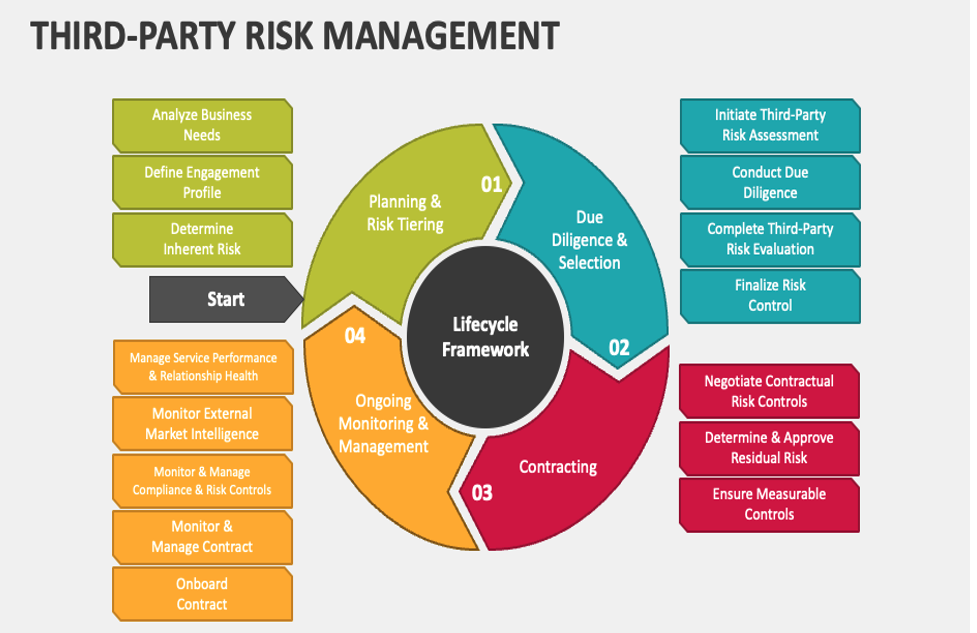 McKinsey reported what managing third-party risk in a growing technological climate should include Segmentation and organization of vendors.
McKinsey reported what managing third-party risk in a growing technological climate should include Segmentation and organization of vendors.
- Rules-based due diligence (and evidence of third-party due diligence)
- Post-contract compliance management and transparency
- Clear guidelines for governance and escalations
- Comprehensive technology and modern tools
These elements are true today and we would argue that you should be able to find all these elements in a single platform. Safety Projects International Inc. expanding partnership with Risk Management Inc. speaks to the future of TPRM and provides one of the most comprehensive risk management programs in the industry today. Check out our Webinar on Strategy & Risk for and Dr. Bill Pomfret, CEO of Safety Projects International Inc, who will discuss where third-party risk management is going in the next few years.
Bio:Dr. Bill Pomfret of Safety Projects International Inc who has a training platform, said, “It’s important to clarify that deskless workers aren’t after any old training. Summoning teams to a white-walled room to digest endless slides no longer cuts it. Mobile learning is quickly becoming the most accessible way to get training out to those in the field or working remotely. For training to be a successful retention and recruitment tool, it needs to be an experience learner will enjoy and be in sync with today’s digital habits.”
#442 – FEDERAL ERM SURVEY – JAMES KLINE PH.D.
Featured
 In 2023 the Federal Enterprise Risk Management and Guidehouse 9th Consecutive survey of 52 federal agencies was published. (1) The survey was conducted from July 24 to September 2023. Sixty-two percent of the respondents had some Risk Management Function. Seven percent had Finance, Budgeting and Accounting responsibility. In terms of position, nineteen percent were from the Senior Executive Service (SES). Eighty-four percent were non-SES. This piece looks at key survey questions and the responses. Where possible the 2023 and 2022 responses are shown side by side. Continue reading
In 2023 the Federal Enterprise Risk Management and Guidehouse 9th Consecutive survey of 52 federal agencies was published. (1) The survey was conducted from July 24 to September 2023. Sixty-two percent of the respondents had some Risk Management Function. Seven percent had Finance, Budgeting and Accounting responsibility. In terms of position, nineteen percent were from the Senior Executive Service (SES). Eighty-four percent were non-SES. This piece looks at key survey questions and the responses. Where possible the 2023 and 2022 responses are shown side by side. Continue reading
#442 – INTENTIONAL SELF MANAGEMENT – GREG HUTCHINS
Featured
 If you don’t design your own life plan, chances are you’ll fall into someone else’s plan. And guess what they have planned for you? Not much.
If you don’t design your own life plan, chances are you’ll fall into someone else’s plan. And guess what they have planned for you? Not much.
Jim Rohn – Author and Entrepreneur
Intentional Self-Management is the fundamental principle behind Working It and is really critical in COVID time. Intentional Self-Management is the art of taking responsibility and the science of taking control of your behavior, health, spirit, career, life, and work. Think about these key Intentional Self-Management questions: Continue reading
#441 – USING A DELTA PROGRAM TO MINIMIZE EARLY FIELD FAILURES – FRED SCHENKELBERG
Featured
 Failures happen. Sometimes product failures happen quickly.
Failures happen. Sometimes product failures happen quickly.
You just bought a new feature rich computer and discover it doesn’t work. Right out of the box, it will not power up. Conversations with the tech support and it’s a trip back to the store. Continue reading
#441 – FOCUS ON THE RIGHT NOW, NOT THE DISTANT FUTURE TO STAY MOTIVATED – KAITLEN WOOLLEY & PAUL STILLMAN
Featured
 It’s a familiar start-of-the-year scene. You’ve committed to a healthier lifestyle and are determined that this time is going to be different. Your refrigerator is stocked with fruits and veggies, you’ve tossed out processed foods, and your workout routine is written in pen in your daily planner.
It’s a familiar start-of-the-year scene. You’ve committed to a healthier lifestyle and are determined that this time is going to be different. Your refrigerator is stocked with fruits and veggies, you’ve tossed out processed foods, and your workout routine is written in pen in your daily planner.
Yet, as you head out one morning, the tantalizing aroma of fresh doughnuts wafts through the air. How can you resist the call of this sugary treat and stick with your healthy choices?
 Conventional wisdom, grounded in years of research, suggests that the best way to resist unhealthy choices is to think about the long-term consequences. For example, you could consider how the added sugar from eating too many doughnuts can lead to diabetes and obesity. Thinking about these long-term consequences, the argument goes, should help you avoid indulging right now and better stick to your goals.
Conventional wisdom, grounded in years of research, suggests that the best way to resist unhealthy choices is to think about the long-term consequences. For example, you could consider how the added sugar from eating too many doughnuts can lead to diabetes and obesity. Thinking about these long-term consequences, the argument goes, should help you avoid indulging right now and better stick to your goals.
However, in our combined 25 years of experience investigating people’s self-control behavior and motivation, we have learned that, in the heat of the moment, people often overlook distant outcomes, diminishing the effectiveness of strategies focused on the long term.
In response, we propose three approaches, backed by recent research, to help you stick to healthier habits.
To resist temptation, think short term
One strategy to avoid indulging is to consider the short-term consequences of unhealthy behavior. We tested this approach in seven studies with over 4,000 participants.
In one study, we invited university students to view one of two public service announcements detailing reasons to avoid energy drinks. One message emphasized long-term costs of drinking high-sugar energy drinks, such as diabetes and obesity. The other stressed short-term costs, such as anxiety and a sugar and caffeine crash.
Students then had a choice between receiving an energy drink or another attractive prize. Those who read about the short-term costs were 25% less likely to choose the energy drink than those who read about the long-term costs.
In another study with a similar setup, participants read about either the short-term costs of eating sugar, the long-term costs of eating sugar, or they did not read about any downsides. Everyone then had to choose a delivery of cookies or a tote bag. Those who read about the short-term costs were 30% less likely to choose the cookies than those who read about the long-term costs and 45% less likely than those who didn’t read about any detriments to sugar.
We found that emphasizing short-term costs can also help you avoid other temptations. For alcohol, think about how excessive drinking can lead to poor sleep and hangovers. For fast food, think about how it can make you feel bloated or give you indigestion.
In our studies, immediate effects were a stronger motivator than long-term consequences that could take decades to occur. The takeaway is simple: To avoid indulging, think short term.
Focus on the fun of healthy options
Avoiding unhealthy foods is one thing. On the flip side, can you nudge yourself toward consuming more healthy foods?
Research that one of us (Kaitlin) conducted with behavioral scientist Ayelet Fishbach found that prompting people to focus on the good taste – rather than the health benefits – of foods such as apples and carrots increased consumption in the lab and the real world. These findings were independently replicated in an intervention at five university dining halls that used food labels focused on either tastiness or healthfulness.
This strategy can also promote other healthy behaviors, such as exercise. In one study, Kaitlin asked gymgoers to choose a weightlifting workout from a list of similarly difficult routines. The participants who were instructed to select a fun exercise completed more reps than those told to pick an exercise most useful for their long-term fitness goals.
Immediate rewards that result from pursuing long-term goals improve your experience right now, although they often go unnoticed. For this reason, focusing on the immediate versus delayed benefits of behaviors such as healthy eating and exercise can increase intrinsic motivation, making a behavior feel like its own reward and resulting in the immersed-in-an-activity feeling called “flow.”
Timing the reward sweet spot
Starting healthy behaviors is one important piece of the puzzle; another is sticking with these behaviors over time. One strategy for persistence is to use rewards to stay committed.
Research led by marketing professor Marissa Sharif, along with Kaitlin, involving over 5,000 people across eight experiments found that small, regular rewards were more effective for cultivating long-term commitment to healthy behavior such as exercising and flossing than were large, occasional rewards. Think watching 20 minutes of a guilty pleasure TV show each day you work out, rather than waiting to the end of the week to watch 80 minutes of TV to reward yourself for those four workouts.
But there’s a twist: Rewarding yourself too early may backfire. It seems rewards are most effective when people have to work to unlock them, after which they become regular. In other words, putting in initial effort while not being rewarded, followed by small, continual perks, is the most effective way to structure rewards.
In a study on exercise, Marissa and Kaitlin followed exercisers as they engaged in four initial workouts that came with no rewards. Then a work-to-unlock-rewards group began to receive small, continual rewards for each subsequent workout. They ended up persisting longer and completing more workouts than people in a lump-sum group who received a larger, occasional reward for every four workouts they finished.
A similar effect was evident in a 12-day study on tooth flossing. People in the work-to-unlock-rewards group – three days of flossing without rewards followed by daily rewards – flossed for more days than those who received continual rewards right way. Those who had to commit extra effort to unlock the rewards flossed 15% more days.
These studies suggest people can strategically incorporate rewards – with a short initial period without any rewards – into their routine to help them stick with healthy behaviors over time.
Resistance, enjoyment and persistence
Our research highlights three effective strategies to help you achieve your goals: prioritizing short-term consequences to resist temptation, finding enjoyment in long-term choices, and continually rewarding yourself for sustained persistence.
What’s great about these strategies is that you can adapt them to any personal goal you hold. For instance, if you’re finding it hard to swap social media for a book, consider reflecting on negative short-term consequences of endless scrolling. Or if carving out time for relaxation feels like a challenge, focus on the immediate benefits of engaging in meditative exercises.
By incorporating these evidence-based approaches, you can empower yourself to follow through on your long-term goals.
BIOS:
Professor Kaitlin Woolley is an associate professor of marketing at Cornell University. Professor Woolley studies consumer motivation and goal pursuit, with a focus on understanding what consumers value when pursuing their goals and how to use this to increase goal persistence. She also researches the influence of goal conflict on consumer choice, and the role food consumption plays in social connection. Woolley’s research has been published in journals and book chapters, including Journal of Consumer Research and Journal of Personality and Social Psychology. It has been featured in outlets such as the Wall Street Journal, the New York Times, Harvard Business Review, NPR, and Psychology Today.
At Cornell, Professor Woolley teaches the core marketing course and the consumer behavior course. Woolley earned a bachelor’s degree magna cum laude in psychology from Cornell University. She earned an MBA from the University of Chicago Booth School of Business. Her PhD is in behavioral science from the University of Chicago Booth School of Business.
Dr. Stillman’s research examines how cognition and motivation interact to produce behavior. In particular, by investigating the cognitive underpinnings of goal-pursuit, I hope to advance understanding of self-regulation – how people manage complex goal arrays. In doing so, I hope to provide insight as to why people behave in ways that are counter to their goals, as well as identify ways to boost functional self-regulation.
#441 – ERM WORKS IN GOVERNMENT – JAMES KLINE PH.D.
Featured
 In 2019 I co-authored an article, published in Journal of Government Financial Management, entitled: Auditors, Accountants and ERM. (1) The thrust of the article was that auditors and accountants around the world were starting to push Enterprise Risk Management (ERM). The recent ERM audit of the City of Vancouver British Columbia Canada Police Department (2) is an example of this growing trend. This piece examines the audit findings and recommends. Continue reading
In 2019 I co-authored an article, published in Journal of Government Financial Management, entitled: Auditors, Accountants and ERM. (1) The thrust of the article was that auditors and accountants around the world were starting to push Enterprise Risk Management (ERM). The recent ERM audit of the City of Vancouver British Columbia Canada Police Department (2) is an example of this growing trend. This piece examines the audit findings and recommends. Continue reading
#441 – OHS COMPLIANCE CASES IN Q3/Q4 OF 2023 – BILL POMFRET PH.D.
Featured
 Digitalising your “best in class” health and safety processes will not only support compliance, it will save you time and cost via automation, and also lead to a more engaged workforce, helping to cement a positive safety culture – which can lead to fewer accidents. Continue reading
Digitalising your “best in class” health and safety processes will not only support compliance, it will save you time and cost via automation, and also lead to a more engaged workforce, helping to cement a positive safety culture – which can lead to fewer accidents. Continue reading
#441 – ARE YOU @ RISK OF LOSING YOUR JOB – CAPERS JONES
Featured
 The author is retired from IBM and owns a research company that uses artificial intelligence to examine economic and technical issues. Unless people use computers for research, they may be unaware of two growing economic threats: 1) job losses caused by artificial intelligence; 2) Sea level rises due to global warming.
The author is retired from IBM and owns a research company that uses artificial intelligence to examine economic and technical issues. Unless people use computers for research, they may be unaware of two growing economic threats: 1) job losses caused by artificial intelligence; 2) Sea level rises due to global warming.
The author queried the Google Bard artificial intelligence tool about the calendar year that these two problems would become serious threats to the Florida economy, and the year 2050 was the answer to both questions. Continue reading
#441 – DESIGNING A BETTER YOU – GREG HUTCHINS
Featured
 Your time is limited, so don’t waste it living someone else’s life.
Your time is limited, so don’t waste it living someone else’s life.
Steve Jobs – Apple Co-Founder
A few years ago, I wrote Working It: Disruption Rules. The objective and premise of the book was for you to take charge and design a better, stronger, and more resilient you. Better can be whatever you dream or want of yourself. How? Through your Intentional Self-Management. You gotta want to change to design a better you. Continue reading
#440 – MECHANICAL SYSTEMS RELIABILITY TESTING – FRED SCHENKELBERG
Featured
 Mechanical systems wear out and fail eventually. The ability of a structure to support a load, move through the specified range of motion, or spin degrades with use and time. Even our joints eventually wear out.
Mechanical systems wear out and fail eventually. The ability of a structure to support a load, move through the specified range of motion, or spin degrades with use and time. Even our joints eventually wear out.
Accelerated life testing (ALT) has plenty of literature concerning the failure mechanisms unique to electronic components and materials. This is partially due to the limited number of unique electronic components compared to the often custom mechanical designs. ALT also has value as it provides information about a system’s reliability performance in the future. Continue reading
#440 – SO YOU SUFFER FROM DROWNING MANAGER SYNDROME? – MALCOLM PEART
Featured
 There are many idioms and proverbs related to drowning and the effects of storms. We say, “any port in a storm” which originated in 1749, or “a drowning man will clutch at a straw (stick)” as penned by an incarcerated Sir Thomas Moore in 1534.
There are many idioms and proverbs related to drowning and the effects of storms. We say, “any port in a storm” which originated in 1749, or “a drowning man will clutch at a straw (stick)” as penned by an incarcerated Sir Thomas Moore in 1534.
The concept of a desperate person clutching at anything flimsy or immediately safe or satisfying has been around for centuries. People in need will take desperate measures to overcome a situation that is threatening them. How often do we see somebody who, when faced with a difficult problem and in the absence of specific experience or knowledge, will grasp at any idea or excuse in acts of self-preservation. Continue reading
#440 – CALIFORNIA AND FLORIDA LEAD THE COUNTRY IN CLIMATE CHANGE RISKS – HENRY KNIGHT LOZANO PH.D.
Featured
I mages of orange groves and Spanish-themed hotels with palm tree gardens filled countless pamphlets and articles promoting Southern California and Florida in the late 19th century, promising escape from winter’s reach.
mages of orange groves and Spanish-themed hotels with palm tree gardens filled countless pamphlets and articles promoting Southern California and Florida in the late 19th century, promising escape from winter’s reach.
This vision of an “American Italy” captured hearts and imaginations across the U.S. In it, Florida and California promised a place in the sun for industrious Americans to live the good life, with the perfect climate. Continue reading
#440 – FLORIDA’S UNDER WATER RISKS – CAPERS JONES
Featured
 Readers are urged to do their own research on sea level changes. The Google Bard tool said that many coastal Florida locations would be under water by 2050. The next set of pictures hopefully will not occur. However, the Google Bard artificial intelligence tool answered my question of “when will parts of Florida be underwater due to global warming?” with the year 2050, so I am including the next illustrations of sinking Florida cities: Continue reading
Readers are urged to do their own research on sea level changes. The Google Bard tool said that many coastal Florida locations would be under water by 2050. The next set of pictures hopefully will not occur. However, the Google Bard artificial intelligence tool answered my question of “when will parts of Florida be underwater due to global warming?” with the year 2050, so I am including the next illustrations of sinking Florida cities: Continue reading
#440 – DON’T FALL INTO FEAR BASED CHOICES – GREG HUTCHINS PE CERM
Featured
 Disruption isn’t about what happens to you, it’s about how you respond to what happens to you.
Disruption isn’t about what happens to you, it’s about how you respond to what happens to you.
Jay Samit – Entrepreneur
Decision making in VUCA time often focuses on downside consequences and is fear based. Fear based choices are a form of doom addiction. We become addicted to watching, tweeting, or listening to online grim-reaper news – one after another. It’s called ‘doom scrolling’ or ‘doom surfing’. Algorithms exacerbate this. Continue reading
#440 – DID YOU KNOW THAT ASBESTOS IS THE WORLD’S #1 KILLER – BILL POMFRET PH.D.
Featured
 Asbestos the worlds Number 1 Killer
Asbestos the worlds Number 1 Killer
Asbestos is the greatest cause of work-related deaths in world. A million plus people die every year from asbestos-related diseases which typically take decades to develop and cannot be cured.
Safety Projects International Inc. has refreshed its guidance on asbestos to help you protect yourself and your workers. Continue reading
#439 – IT’S LONELY AT THE TOP – BILL POMFRET PH.D.
Featured
A t times, even leadership can be a tremendously lonely experience.
t times, even leadership can be a tremendously lonely experience.
The emotional fallout of making difficult decisions that negatively affect the lives of some team members, the feeling of rejection when team members leave for other opportunities, and the discomfort of disappointing passionate team members who offer ideas that can’t be executed in the moment, among many other leadership acts, all take their toll. Continue reading
#439 – THREE ELEMENTS OF SAMPLE SIZE CONCERNING DECISION MAKING – FRED SCHENKELBERG
Featured
 The trite answer is just as many samples as you need and not one more.
The trite answer is just as many samples as you need and not one more.
A better answer is enough samples to make the right decision. The realistic answer is you will not enough samples.
“How many samples?” is an oft-asked question when planning for quality or reliability testing. Continue reading
#439 – CLIMATE RISK AND COMPLIANCE IN AUSTRALIA – JAMES KLINE PH.D.
Featured
 In a series of four articles, I have discussed the Australian Critical Infrastructure Risk Management Plan, the New South Wales (NSW) Climate Risk NSW Guide, and how the Byron Shire Council and the Hawkesbury City Council used the NSW Climate Risk Guide to develop their climate risk management policies and approach. This piece looks at how the Shire of Hornsby NSW is attempting to manage climate risks. What makes their approach different is not in its use of the NSW Climate guide, but in its focus on another aspect of climate risk – sustainability. Continue reading
In a series of four articles, I have discussed the Australian Critical Infrastructure Risk Management Plan, the New South Wales (NSW) Climate Risk NSW Guide, and how the Byron Shire Council and the Hawkesbury City Council used the NSW Climate Risk Guide to develop their climate risk management policies and approach. This piece looks at how the Shire of Hornsby NSW is attempting to manage climate risks. What makes their approach different is not in its use of the NSW Climate guide, but in its focus on another aspect of climate risk – sustainability. Continue reading
#439 – SOFTWARE RISK REDUCTION – CAPERS JONES
Featured
 Some years ago the chairman of the ITT Corporation was troubled by several major software failures of projects that were terminated without being completed. He was also troubled by the dissatisfaction expressed by customers in the quality of the software the corporation produced. He was further dissatisfied by the inability of software executives to explain why the problems occurred, and what might be done to eliminate them. Continue reading
Some years ago the chairman of the ITT Corporation was troubled by several major software failures of projects that were terminated without being completed. He was also troubled by the dissatisfaction expressed by customers in the quality of the software the corporation produced. He was further dissatisfied by the inability of software executives to explain why the problems occurred, and what might be done to eliminate them. Continue reading
#439 – 3 WAYS AI CAN HELP FARMERS – JOE HOLLIS
Featured
 For all the attention on flashy new artificial intelligence tools like ChatGPT, the challenges of regulating AI, and doomsday scenarios of superintelligent machines, AI is a useful tool in many fields. In fact, it has enormous potential to benefit humanity.
For all the attention on flashy new artificial intelligence tools like ChatGPT, the challenges of regulating AI, and doomsday scenarios of superintelligent machines, AI is a useful tool in many fields. In fact, it has enormous potential to benefit humanity.
In agriculture, farmers are increasingly using AI-powered tools to tackle challenges that threaten human health, the environment and food security. Researchers forecast the market for these tools to reach US$12 billion by 2032. Continue reading
#439 – WHAT’S YOUR TRUE NORTH? – GREG HUTCHINS
Featured
 In matters of style, swim with the current; in matters of principle, stand like a rock.
In matters of style, swim with the current; in matters of principle, stand like a rock.
Thomas Jefferson – U.S. President
The other day, my wife and daughter were out to dinner at an outside local pizza bar. The place was busy. The server was a masked tattoo’ed millennial. She was part-owner of the restaurant. The tattoo across her forearm read: ‘Love the process’. Her process was her work. Her passion. Her work affirmation. Maybe, her calling – her true north. True north is a compass metaphor for finding your true path in life and at work. Continue reading
#438 – BASIC PROCESS TO ACHIEVE PROCESS STABILITY – FRED SCHENKELBERG
Featured
Your vendors provide components with a range of values. Your production process varies, too.
Creating, monitoring, and maintaining process stability enhances your product reliability performance. Continue reading
#438 – STORIES ARE MY FAVORITE ELEMENT OF TRAINING – BILL POMFRET PH.D.
Featured
 All stories are emotional. Won’t you agree? The very reason people respond to them is that it “touches the heart” so to speak or “strikes a chord”. To me, this is the most basic reason why using stories remains a powerful tool when we teach, train, or mentor. In fact, these are the critical keys to why stories work. Continue reading
All stories are emotional. Won’t you agree? The very reason people respond to them is that it “touches the heart” so to speak or “strikes a chord”. To me, this is the most basic reason why using stories remains a powerful tool when we teach, train, or mentor. In fact, these are the critical keys to why stories work. Continue reading
#438 – WORD OF THE YEAR – ROGER J. KREUZ PH.D.
Featured
 When Merriam-Webster announced that its word of the year for 2023 was “authentic,” it did so with over a month to go in the calendar year.
When Merriam-Webster announced that its word of the year for 2023 was “authentic,” it did so with over a month to go in the calendar year.
Even then, the dictionary publisher was late to the game.
In a lexicographic form of Christmas creep, Collins English Dictionary announced its 2023 word of the year, “AI,” on Oct. 31. Cambridge University Press followed suit on Nov. 15 with “hallucinate,” a word used to refer to incorrect or misleading information provided by generative AI programs. Continue reading
#438 – DEMYSTIFYING BUSINESS DISRUPTIONS – NARESH RAO
Featured
#438 – REALLY DIFFICULT DECISION? NO JUST RISKY ONE!! – MALCOLM PEART
Featured
 There’s a lot written about decisions and in particular decision making; Google provides just over 13 million hits in milliseconds. Everybody makes decisions every day, and some people must make more difficult decisions than others. Many more people analyze such decisions, and even more are influenced by them and will criticize them. In making any decision, no matter how important, there’s always a chance it may go wrong. It’s only a question of the likelihood and the consequences of a decision being wrong that make things difficult.
There’s a lot written about decisions and in particular decision making; Google provides just over 13 million hits in milliseconds. Everybody makes decisions every day, and some people must make more difficult decisions than others. Many more people analyze such decisions, and even more are influenced by them and will criticize them. In making any decision, no matter how important, there’s always a chance it may go wrong. It’s only a question of the likelihood and the consequences of a decision being wrong that make things difficult.
Decisions are about risk and the many facets that risk can have; personal victory or failure, economic buoyancy, social or professional standing, and also the opportunity to sleep easy in the knowledge that a decision was ‘safe’. “Faint heart never won fair lady” reminds us that sometimes people should take a chance if they need something, not to the point of being reckless, but considering the risk.
Perhaps the most difficult part about any decision is not just weighing up the odds of success but overcoming a faint heart, grasping the nettle, and deciding. It’s simple, on paper, but in actuality can be a real challenge requiring courage in one’s own convictions and overcoming decidophobia.
The Process
The decision-making process is variously defined but boils down to the following: 1) identifying that a decision is needed, 2) gathering information, 3) identifying alternatives, 4) weighing up the pros and cons, 5) choosing an option, 6) implementing it, and then 7) reviewing and adjusting if possible or if required.
More often than not people are late in identifying that a decision is, in fact, needed. The time wasted means that information that could have been obtained is not available and we need assumptions. Sometimes there is a paucity of alternatives, and the wrong people are involved or the right people too late. There’s also the risk that in choosing an option it may mean failure or that it may backfire and bring ridicule and blame.
The process is easy and so, logically speaking, is the mechanism.
The Mechanism
The decision-making mechanism is a simple balance – we have the two pans of knowledge and intuition with a beam of experience resting on a fulcrum of judgement.
For example, if there is no knowledge and no experience a first decision will be made on instinct, or pure guesswork, alone.
Conversely if there is knowledge but limited experience then any intuition will be limited and it will be difficult to judge if a decision is ‘good’ or applicable or not.
As another example if there is vast experience (long beam) and unlimited knowledge then there is less ‘gut feel’ and better judgement. Just consider the pole that a tight-rope walker carries which allows for better balance (increased rotational inertia), experience counts.
In making a decision we need facts and herein lies the real issue. Decisions are often made with incomplete information at best, no information at worst and possibly adverse facts that can be so easily ignored in arriving at a decision. Decisions are inevitably based on assumptions and without the benefit of hindsight. Some decision makers may consciously delay decisions but can also dodge them by delegating or deferring them to somebody else.
But that somebody else will need to use the same process but with a smaller balance and less time. This leads to the utilisation of less experience, less knowledge, and less judgement so there is perhaps more intuition and a tendency towards the instincts of fight or flight, or to make friends or create foes.
The Spectrum
Decisions are never ‘right’ or ‘wrong’ at the time they are made, they can only be determined after implementation and the consequences are realised. There is no ‘perfect’ decision and optimal decisions made on time are ‘best’. After all, deciding to shut the gate after a horse has bolted is a good decision but of no use to neither the man nor the beast. Decisions are also a factor of the environment in which they are made.
With positive environments decisions can be made without any real fear of repercussion or punishment. If decisions are proven to be ‘good’ then credit is given where credit is due, and lessons are learned from any mistakes. In toxic environments any decision can be punitive time bombs that attract blame and derision if they go wrong and credit for the ‘boss’ if they are right. It’s human nature to feel some pleasure when somebody else is wrong or fails as it gives a sense of superiority. If this becomes chronic, we have epicaricacy or schadenfreude and a fear of decision making will probably be commonplace.
Any decisions that are made under such subversive conditions are made with a view to covering one’s rear and evading any responsibility. Consequently decisions tend to be collective so no one person can be held accountable. If, and oftentimes when, things do go wrong there is confusion in the resultant smoke screens as everybody dives for cover – at least that is one decision that is made quickly.
Decisiveness and Indecision?
When making a decision there needs to be decisiveness otherwise there is indecision, and we can be caught between two stools. Some decision makers can adopt a suitably vague approach to gloss over gaps and trust to luck that somebody will cover up the shortfalls. Others decide to delegate and pass the buck but at least a decision has been made.
Sometimes there is a conscious decision not to decide. Doing nothing or adopting a ‘wait and see’ approach can be valid, but not forever. Wizard Gandalf said, “All we have to decide is what to do with the time that is given us” and at some stage a decision to do something else will be required. This is where indecision rears its ugly head.
A famous British comedian, Tommy Cooper once quipped “I used to be indecisive…but now I’m not so sure”. Decisions need to be definitive otherwise there can so easily be confusion and misdirection. It’s then we realise that “when you are up to your neck in alligators it’s easy to forget that the decision was to drain the swamp” and we have ended up doing the wrong thing.
The worst thing about indecision is continuing with the indecision rather than deciding to stop, admit the shortcoming, and decide to do the right thing. But one thing will be certain you’ll be damned by some if you do and damned by others if you don’t…perhaps that’s the real difficulty about deciding!
#438 – BUSINESS CONTINUITY TEMPLATE – PATRICK OW
Featured
 Recent years have demonstrated that unexpected events can disrupt any organisation. Yet, a critical gap persists — many businesses lack implementable or practical business continuity strategies and plans.
Recent years have demonstrated that unexpected events can disrupt any organisation. Yet, a critical gap persists — many businesses lack implementable or practical business continuity strategies and plans.
The challenge lies in the creation of costly over-engineered plans that prove ineffective during disruptions or emergencies. COVID has highlighted the shortcomings of many business continuity plans. Continue reading
#437 – FAILURE ANALYSIS: KEY FOR LEARNING FROM FAILURE – FRED SCHENKELBERG
Featured
In product development of plant asset management, we are surrounded by people that steadfastly do not want to know about or talk about failures.
Failure does happen. Let’s not ignore this simple fact. Continue reading
#437 – RISK BOWTIES IN SAFETY – BILL POMFRET PH.D.
Featured
 A Tool for Risk Management and Training
A Tool for Risk Management and Training
Many EHS professionals struggle to build a common understanding of significant risks and the controls that prevent and mitigate those risks — and easily share it by training their workforce. That’s because the tabular format used in most risk registers has been shown to limit the retention and therefore usefulness of that knowledge beyond the risk workshop. Continue reading
#437 – JUMPING TO CONFUSION: WIN-WIN SITUATION – MALCOLM PEART
Featured
 There’s a difficult job, a real problem, the metaphorical hot potato which, once touched, spells doom. But, somebody somewhere at some time has to do something. In the ensuing crisis, and just as one person’s problem is another’s opportunity, we have an opportunist. As Machiavelli wrote “never let a crisis go to waste”, every cloud can have a silver lining for some, and opportunity rarely knocks twice. Continue reading
There’s a difficult job, a real problem, the metaphorical hot potato which, once touched, spells doom. But, somebody somewhere at some time has to do something. In the ensuing crisis, and just as one person’s problem is another’s opportunity, we have an opportunist. As Machiavelli wrote “never let a crisis go to waste”, every cloud can have a silver lining for some, and opportunity rarely knocks twice. Continue reading
#437 – COMMUNITY DISASTER RESILIENCE ZONE ACT – JAMES KLINE PH.D.
Featured
 This is the second of two articles submitted to CERM Insights at about the same time. This one deals with the Community Disaster Resilience Zone Act passed by the United States Congress on December 22, 2022. The other deals with the National Institute of Standards and Technology’s (NIST) Cyber Security Framework 2.0. Together they form a mosaic of the Biden Administration’s Risk Management push. Continue reading
This is the second of two articles submitted to CERM Insights at about the same time. This one deals with the Community Disaster Resilience Zone Act passed by the United States Congress on December 22, 2022. The other deals with the National Institute of Standards and Technology’s (NIST) Cyber Security Framework 2.0. Together they form a mosaic of the Biden Administration’s Risk Management push. Continue reading
#437 – TRUE & FALSE INTEGRATED MANAGEMENT – IAN DALLING
Featured
 Two tails of management are in common circulation, one Integrated Management and the other is Combination Management, although the latter is commonly pedalled as integrated. This presents a problem when seeking to improve management processes and organisational performance. Continue reading
Two tails of management are in common circulation, one Integrated Management and the other is Combination Management, although the latter is commonly pedalled as integrated. This presents a problem when seeking to improve management processes and organisational performance. Continue reading
#437 – DESIGNING A BETTER YOU – GREG HUTCHINS PE CERM
Featured
 Your time is limited, so don’t waste it living someone else’s life.
Your time is limited, so don’t waste it living someone else’s life.
Steve Jobs – Apple Co-Founder
The objective of any self improvement book is to take charge and design a better,stronger, and more resilient you. Better can be whatever you dream or want of yourself.
Intentional Self-Management means working on yourself continually. It can be 1% improvement daily. It can be lifelong upskilling. It can be daily meditation or mindfulness. As an engineer, we like the metaphor that you are designing and developing your Intentional Self-Management and Brand You Pivot practices. Continue reading
#436 – WHAT IS THE LINK BETWEEN RELIABILITY AND BRAND? – FRED SCHENKELBERG
Featured
 In short, you probably do, better reliability performance the better the brand image.
In short, you probably do, better reliability performance the better the brand image.
When I’m making a purchase I prefer to buy items that I either have personal experience work well over time (reliable) or have many comments and reviews noting the durability. Continue reading
#436 – HUMAN RIGHTS: WHAT’S WRONG? – MALCOLM PEART
Featured
 Human rights in some form or another have been around since humankind began. Some people had more rights than others while others had less. This depended on the power held and influence through either benevolence or fear. As in Animal Farm, “all animals are equal, but some animals are more equal than others” with correspondingly more rights. Continue reading
Human rights in some form or another have been around since humankind began. Some people had more rights than others while others had less. This depended on the power held and influence through either benevolence or fear. As in Animal Farm, “all animals are equal, but some animals are more equal than others” with correspondingly more rights. Continue reading
#365 – EXPLAINABLE AI – BILL POMFRET PH.D.
Featured
 Explainable artificial intelligence (XAI) is a set of processes and methods that allows human users to comprehend and trust the results and output created by machine learning algorithms.
Explainable artificial intelligence (XAI) is a set of processes and methods that allows human users to comprehend and trust the results and output created by machine learning algorithms.
Explainable AI is used to describe an AI model, its expected impact, and potential biases. It helps characterize model accuracy, fairness, transparency, and outcomes in AI-powered decision making. Explainable AI is crucial for an organization in building trust and confidence when putting AI models into production. AI explain ability also helps an organization adopt a responsible approach to AI development. Continue reading
#436 – MINIMALIZED PACKAGING DESIGNS – LAN ANH NU TON PH.D.
Featured
 For decades, marketers of consumer goods designed highly adorned packages, deploying bold colors, snazzy text, cartoons and illustrations to seize the attention of shoppers. Conventional wisdom held that with thousands of products competing against one another in the aisles of big box stores and supermarkets, companies needed to do everything in their power to make their products stand out. Continue reading
For decades, marketers of consumer goods designed highly adorned packages, deploying bold colors, snazzy text, cartoons and illustrations to seize the attention of shoppers. Conventional wisdom held that with thousands of products competing against one another in the aisles of big box stores and supermarkets, companies needed to do everything in their power to make their products stand out. Continue reading
#436 – DO YOU HAVE THESE FATAL CAREER FLAWS? – GREG HUTCHINS PE CERM
Featured
 Change is the law of life. And those who look only to the past or present are certain to miss the future.
Change is the law of life. And those who look only to the past or present are certain to miss the future.
John F. Kennedy – President of the U.S.
In VUCA time, the expression ‘what got you here – won’t get you there’ is particularly applicable. First of all, we don’t know what ‘there’ is in terms of the ‘new normal’. Second, we don’t know the new things we need to do or learn to do to get us somewhere new. I like books that ‘tell it like it is.’ No sugar coating risks and bad behaviors. Marshall Goldsmith – the executive coach – came up with 20 pre-COVID career and work killers: Continue reading
#436 – BUSINESS DISRUPTIONS ARE INEVITABLE – PATRICK OW
Featured
 Business disruptions are inevitable. They are not a matter of “if” but “when.”
Business disruptions are inevitable. They are not a matter of “if” but “when.”
Whether it’s a power outage, communication failure, or a technological glitch, businesses must proactively prepare for such inevitable challenges. A resource-based approach focusing on power, communication, and technology failures can significantly simplify your business continuity management. Continue reading
#435 – BRIEF INTRODUCTION TO HALT – FRED SCHENKELBERG
Featured
 Highly Accelerated Life Testing (HALT) is a technique to expose weaknesses or faults with a product.
Highly Accelerated Life Testing (HALT) is a technique to expose weaknesses or faults with a product.
HALT uses individual or combined stresses in a step stress approach to quickly apply sufficient stress to reveal defects.
HALT is not a specific chamber or fixed set of test conditions. It is an exploratory process to reveal weaknesses in a design. Continue reading
#435 – BIDEN EXECUTIVE ORDER TACKLES AI RISKS – ANJANA SUSARIA
Featured
 The comprehensive, even sweeping, set of guidelines for artificial intelligence that the White House unveiled in an executive order on Oct. 30, 2023, show that the U.S. government is attempting to address the risks posed by AI.
The comprehensive, even sweeping, set of guidelines for artificial intelligence that the White House unveiled in an executive order on Oct. 30, 2023, show that the U.S. government is attempting to address the risks posed by AI.
As a researcher of information systems and responsible AI, I believe the executive order represents an important step in building responsible and trustworthy AI. Continue reading
#435 – CLIMATE CHANGE RISK ASSESSMENTS – JAMES KLINE PH.D.
Featured
I n June 2021 the Australian State of New South Wales (NSW) published Climate Risk Ready NSW Guide. The guide is designed to assist local government in developing a climate change risk assessment plan. This piece looks at the Draft Climate Change Risk Assessment and Adaption Action Plan developed by the Hawkesbury Council of NSW. Continue reading
n June 2021 the Australian State of New South Wales (NSW) published Climate Risk Ready NSW Guide. The guide is designed to assist local government in developing a climate change risk assessment plan. This piece looks at the Draft Climate Change Risk Assessment and Adaption Action Plan developed by the Hawkesbury Council of NSW. Continue reading
#435 – DISASTROUS COMMUNICATIONS AND WHAT YOU CAN DO ABOUT IT? – DAVID ROSS PH.D.
Featured
I t is so easy for me to remember leaving an old employer’s large meeting room, gauging the reaction of my colleagues to “the launch of our new plan” for the company. It was easy because they all had the same response as I had to the CEO’s spiel: confusion and bewilderment. Continue reading
t is so easy for me to remember leaving an old employer’s large meeting room, gauging the reaction of my colleagues to “the launch of our new plan” for the company. It was easy because they all had the same response as I had to the CEO’s spiel: confusion and bewilderment. Continue reading
#435 – SYSTEMS CHANGES NEEDED IN GOVERNANCE, INSURANCE, AND DISASTER PREPAREDNESS – BOB LEONARD
Featured
 I was in the room seven years ago when David Houle, the futurist, addressed the annual conference of Sarasota County realtors. If you don’t know, Sarasota is a seaside city on the Gulf coast of Florida. It has several heavily populated barrier islands just a couple feet above sea level. He said, “When will it become illegal to list properties vulnerable to sea level rise and storm surge without notifying potential buyers?” Continue reading
I was in the room seven years ago when David Houle, the futurist, addressed the annual conference of Sarasota County realtors. If you don’t know, Sarasota is a seaside city on the Gulf coast of Florida. It has several heavily populated barrier islands just a couple feet above sea level. He said, “When will it become illegal to list properties vulnerable to sea level rise and storm surge without notifying potential buyers?” Continue reading
#435 – VUCAN LIFE CHALLENGES – GREG HUTCHINS PE CERM
Featured
 Don’t lament so much about how your career is going to turn out. You don’t have a career. You have a life. Do the work. Keep the faith.
Don’t lament so much about how your career is going to turn out. You don’t have a career. You have a life. Do the work. Keep the faith.
Cheryl Strayed – Writer
Millennial workers from 18 to 37 are twice as likely to be uncomfortable with VUCA. Dictionary.com says “the world Gen Z has inherited is one of unprecedented chaos.” (1) Millennials and Gen Z workers may be the new precariat. Continue reading
#434 – AI DISRUPTION IN POLITICS AND GOVERNMENT – CAPERS JONES
Featured
 Artificial intelligence (AI) is one of the most rapidly expanding technologies in human history. It is also a disruptive technology that can do harm as well as good. An emerging use of artificial intelligence will be for politics and government operations. Continue reading
Artificial intelligence (AI) is one of the most rapidly expanding technologies in human history. It is also a disruptive technology that can do harm as well as good. An emerging use of artificial intelligence will be for politics and government operations. Continue reading
#434 – LIFE TESTING STARTING POINT – FRED SCHENKELBERG
Featured
 Reliability or life testing involves estimating the expected durability over time of an item.
Reliability or life testing involves estimating the expected durability over time of an item.
This may be an entire system, a product, or an individual component. We may also focus on an element of a component, such has a material property.
At the end of the testing, we want to say something meaningful about the expected performance over time. Continue reading
#434 – WHAT’S YOUR BUSINESS DIRECTION AND FIGURING IT OUT – DAVID ROSS PH.D.
Featured
 It is so easy for me to remember leaving an old employer’s large meeting room, gauging the reaction of my colleagues to “the launch of our new plan” for the company. It was easy because they all had the same response as I had to the CEO’s spiel: confusion and bewilderment.
It is so easy for me to remember leaving an old employer’s large meeting room, gauging the reaction of my colleagues to “the launch of our new plan” for the company. It was easy because they all had the same response as I had to the CEO’s spiel: confusion and bewilderment.
“[With a giggle and shake of the head] Don’t ask me what that was all about. But, what I can tell you is that was an hour I will never get back.” Continue reading
#434 – CALIFORNIA CLIMATE ACCOUNTABILITY – KELLY EISENHARDT
Featured
 On the 7 October 2023, Governor Newsom signed into law two new mandates that are unparalleled to any in the nation, California SB 253 and SB 261. The purpose of both laws is to bring more transparency to the public regarding the contributions big business makes to climate change.
On the 7 October 2023, Governor Newsom signed into law two new mandates that are unparalleled to any in the nation, California SB 253 and SB 261. The purpose of both laws is to bring more transparency to the public regarding the contributions big business makes to climate change.
It is acknowledged that California’s law will be stricter than the impending Securities and Exchange Commission’s ruling on Climate Disclosure. Continue reading
#434 – SOLUTIONS FOR LEARNING IN DISRUPTIVE TIMES – BILL POMFRET PH.D.
Featured
 As a Learning Strategist, I am always on the lookout for newer ways to craft better and more effective Learning solutions. While several organisations the world over are trying to embrace newer technologies and Learning strategies, it is imperative that they get to know the right way to go about it. Continue reading
As a Learning Strategist, I am always on the lookout for newer ways to craft better and more effective Learning solutions. While several organisations the world over are trying to embrace newer technologies and Learning strategies, it is imperative that they get to know the right way to go about it. Continue reading
#434 – CHUNKING WORK – GREG HUTCHINS PE CERM
Featured
 Chunking makes our brains more efficient. The more you can chunk something, the faster and easier you can process it. Wayne Gretzky had chunked hockey like no one before or since. Talented people have supremely chunked whatever they become talented at doing.
Chunking makes our brains more efficient. The more you can chunk something, the faster and easier you can process it. Wayne Gretzky had chunked hockey like no one before or since. Talented people have supremely chunked whatever they become talented at doing.
Keven Maney – Columnist & Designer Continue reading
#433 – THE STRESS STRENGTH CONCEPT IN PRACTICE – FRED SCHENKELBERG
Featured
I deally, in every design of every component, the stress–strength relationship looks like this figure. The stress is well below the strength. Continue reading
deally, in every design of every component, the stress–strength relationship looks like this figure. The stress is well below the strength. Continue reading
#433 – AI PREVENTS FOOD SPOILAGE – CARLOS GARCIA PH.D & LUCAS DE BRITO AYRES
Featured
 Have you ever bitten into a nut or a piece of chocolate, expecting a smooth, rich taste, only to encounter an unexpected and unpleasant chalky or sour flavor? That taste is rancidity in action, and it affects pretty much every product in your pantry. Now artificial intelligence can help scientists tackle this issue more precisely and efficiently.
Have you ever bitten into a nut or a piece of chocolate, expecting a smooth, rich taste, only to encounter an unexpected and unpleasant chalky or sour flavor? That taste is rancidity in action, and it affects pretty much every product in your pantry. Now artificial intelligence can help scientists tackle this issue more precisely and efficiently.
We’re a group of chemists who study ways to extend the life of food products, including those that go rancid. We recently published a study describing the advantages of AI tools to help keep oil and fat samples fresh for longer. Because oils and fats are common components in many food types, including chips, chocolate and nuts, the outcomes of the study could be broadly applied and even affect other areas, including cosmetics and pharmaceuticals.
 Rancidity and antioxidants
Rancidity and antioxidants
Food goes rancid when it’s exposed to the air for a while – a process called oxidation. In fact, many common ingredients, but especially lipids, which are fats and oils, react with oxygen. The presence of heat or UV light can accelerate the process.
Oxidation leads to the formation of smaller molecules such as ketones, aldehydes and fatty acids that give rancid foods a characteristic rank, strong and metallic scent. Repeatedly consuming rancid foods can threaten your health.
Fortunately, both nature and the food industry have an excellent shield against rancidity – antioxidants.
While there are a few ways antioxidants work, overall they can neutralize many of the processes that cause rancidity and preserve the flavors and nutritional value of your food for longer. Most often, customers don’t even know they are consuming added antioxidants, as food manufacturers typically add them in small amounts during preparation.
But you can’t just sprinkle some vitamin C on your food and expect to see a preservative effect. Researchers have to carefully choose a specific set of antioxidants and precisely calculate the amount of each.
Combining antioxidants does not always strengthen their effect. In fact, there are cases in which using the wrong antioxidants, or mixing them with the wrong ratios, can decrease their protective effect – that’s called antagonism. Finding out which combinations work for which types of food requires many experiments, which are time-consuming, require specialized personnel and increase the food’s overall cost.
Exploring all possible combinations would require an enormous amount of time and resources, so researchers are stuck with a few mixtures that provide only some level of protection against rancidity. Here’s where AI comes into play.
A use for AI
You’ve probably seen AI tools like ChatGPT in the news or played around with them yourself. These types of systems can take in big sets of data and identify patterns, then generate an output that could be useful to the user.
As chemists, we wanted to teach an AI tool how to look for new combinations of antioxidants. For this, we selected a type of AI capable of working with textual representations, which are written codes describing the chemical structure of each antioxidant. First, we fed our AI a list of about a million chemical reactions and taught the program some simple chemistry concepts, like how to identify important features of molecules.
Once the machine could recognize general chemical patterns, like how certain molecules react with each other, we fine-tuned it by teaching it some more advanced chemistry. For this step, our team used a database of almost 1,100 mixtures previously described in the research literature.
At this point, the AI could predict the effect of combining any set of two or three antioxidants in under a second. Its prediction aligned with the effect described in the literature 90% of the time.
But these predictions didn’t quite align with the experiments our team performed in the lab. In fact, we found that our AI was able to correctly predict only a few of the oxidation experiments we performed with real lard, which shows the complexities of transferring results from a computer to the lab.
Refining and enhancing
Luckily, AI models aren’t static tools with predefined yes and no pathways. They’re dynamic learners, so our research team can continue feeding the model new data until it sharpens its predictive capabilities and can accurately predict the effect of each antioxidant combination. The more data the model gets, the more accurate it becomes, much like how humans grow through learning.
We found that adding about 200 examples from the lab enabled the AI to learn enough chemistry to predict the outcomes of the experiments performed by our team, with only a slight difference between the predicted and the real value.
A model like ours may be able to assist scientists developing better ways to preserve food by coming up with the best antioxidant combinations for the specific foods they’re working with, kind of like having a very clever assistant.
The project is now exploring more effective ways to train the AI model and looking for ways to further improve its predictive capabilities.
(C) THE CONVERSATION
BIO:
 am a Professor in the Department of Chemistry and a Faculty Fellow at the Faculty ADVANCEment Office, both at Clemson University. Our group is focused on the development of integrated analytical approaches that span from highly specialized instrumentation to simple paper-based devices. Applications of these projects include the quantification of biomedically-relevant analytes, the design of biocatalysts, and the implementation of artificial intelligence (https://scienceweb.clemson.edu/uacl/). In my other job, we are trying to make faculty evaluations more equitable; specially teaching evaluations. For that purpose, we are creating a number of projects to provide departments the tools to perfom a more holistic analysis of the teaching. very exciting time!
am a Professor in the Department of Chemistry and a Faculty Fellow at the Faculty ADVANCEment Office, both at Clemson University. Our group is focused on the development of integrated analytical approaches that span from highly specialized instrumentation to simple paper-based devices. Applications of these projects include the quantification of biomedically-relevant analytes, the design of biocatalysts, and the implementation of artificial intelligence (https://scienceweb.clemson.edu/uacl/). In my other job, we are trying to make faculty evaluations more equitable; specially teaching evaluations. For that purpose, we are creating a number of projects to provide departments the tools to perfom a more holistic analysis of the teaching. very exciting time!
 Lucas earned his bachelor in Pharmacy-Biochemistry from the University of Sao Paulo (Brazil) and has already worked with Drs. Do Lago and Gutz on analytical Instrumentation, specifically by developing chemical instruments based on open-source technologies (e.g. Arduino, 3D printers and Android). He is currently pursuing his PhD in Chemistry and is interested in continuing working with low-cost sensors, instrumentation, and automation.
Lucas earned his bachelor in Pharmacy-Biochemistry from the University of Sao Paulo (Brazil) and has already worked with Drs. Do Lago and Gutz on analytical Instrumentation, specifically by developing chemical instruments based on open-source technologies (e.g. Arduino, 3D printers and Android). He is currently pursuing his PhD in Chemistry and is interested in continuing working with low-cost sensors, instrumentation, and automation.
#433 – THE MARKETING OF SUSTAINABILITY AND ITS COLLAPSE – DAVID ROSS PH.D.
Featured
 I almost feel like something akin to an old man in a wooden rocking chair, armed with a whittling knife, as I share this with you. But, here goes….
I almost feel like something akin to an old man in a wooden rocking chair, armed with a whittling knife, as I share this with you. But, here goes….
The early days of working in sustainability programs were something special. Indeed, back in the ‘90s, it felt exciting. Exciting because it felt like corporations were genuinely trying to make a difference when it came to reducing their “footprint”. Instead of just meeting legal obligations with respect to minimising operational impacts on the environment, these were proactive efforts to reduce the use of energy and water, as well as reduce waste generation. Continue reading
#433 – RISKS OF CLIMATE CHANGE – JAMES KLINE PH.D.
Featured
 The concern with climate change concerns and associated risks make international headlines regularly. This is particularly true in Australia. Byron Shire Council in New South Wales (NSW) Australia, for instance, in its Climate Change Adaptation Plan makes note these concerns and risks.
The concern with climate change concerns and associated risks make international headlines regularly. This is particularly true in Australia. Byron Shire Council in New South Wales (NSW) Australia, for instance, in its Climate Change Adaptation Plan makes note these concerns and risks.
“Australia’s climate has warmed by 1.44 degrees Celsius since national records began in 1910.” (1) Continue reading
#433 – DO YOU WANT TO BE A MANAGER THESE DAYS? – GREG HUTCHINS PE CERM
Featured
 As the unknown becomes known, a choice is to expect it, welcome it, embrace it, and make choices that create a new competitive advantage.
As the unknown becomes known, a choice is to expect it, welcome it, embrace it, and make choices that create a new competitive advantage.
Chet Pipkin, Founder Belkin International
Fresh MBAs want to go into management thinking it’s the way to power, perks, and bucks. I don’t want to seem like a Cassandra, but …. There are lots of disruptions occurring in management. This is great if you’ve got the emotional maturity and the ‘right stuff’. Continue reading
#433 – ART OF SELLING SAFETY – BILL POMFRET PH.D.
Featured
 To be an effective safety professional, you need to know how to craft a message—and convince employees that safety is in everyone’s best interest.
To be an effective safety professional, you need to know how to craft a message—and convince employees that safety is in everyone’s best interest.
In 1982, I was content to be a safety supervisor in the chemical industry. I enjoyed the job and liked working in an exciting industry. I certainly did not have any ambitions to pursue a career in occupational safety and health. That is, until safety chose me. Continue reading
#432 – CHINA’S WECHAT IS ALL ENCOMPASSING BUT LOW KEY – JIANQING CHEN
Featured
 Elon Musk’s vision of Twitter, now rebranded as X, as an “everything app” is no secret. When the X logo replaced Twitter’s blue bird, the internet buzzed with heated discussions about just what it would mean for X to be an everything app.
Elon Musk’s vision of Twitter, now rebranded as X, as an “everything app” is no secret. When the X logo replaced Twitter’s blue bird, the internet buzzed with heated discussions about just what it would mean for X to be an everything app.
#432 – HOW SAFE IS SAFE ENOUGH FOR YOUR SYSTEM – FRED SCHENKELBERG
Featured
 Estimating the set of stress and stress curves is an interesting exercise that may have a greater purpose: safety.
Estimating the set of stress and stress curves is an interesting exercise that may have a greater purpose: safety.
The connection is clear when considering the potential consequences of failure.
For example, the loss of braking power when landing an aircraft may result in the aircraft rolling off the end of the runway. This could be into a river or road and may have a rather poor outcome not only for the aircraft. Continue reading
#432 – AI: POSITIVE & NEGATIVE APPLICATIONS – BILL POMFRET PH.D.
Featured
 Artificial intelligence (AI) is said by many to be the most disruptive technology innovation of our lifetime. Originally a discipline limited to academic circles, AI is now commercially mainstream. Enterprises are embracing AI/machine learning (ML) and leveraging a variety of data types (structured, unstructured, and semi structured) in all lines of business (LOBs) and industries. Continue reading
Artificial intelligence (AI) is said by many to be the most disruptive technology innovation of our lifetime. Originally a discipline limited to academic circles, AI is now commercially mainstream. Enterprises are embracing AI/machine learning (ML) and leveraging a variety of data types (structured, unstructured, and semi structured) in all lines of business (LOBs) and industries. Continue reading
#432 – AUSTRALIAN CRITICAL INFRASTRUCTURE RISK MANAGEMENT – JAMES KLINE PH.D.
Featured
 The Commonwealth of Australia just issued its Critical Infrastructure Risk Management Program (CIRMP) requirements. (1) Covered entities have until August 18, 2023, to start the implementation process. This piece looks at the CIRMP requirements. Continue reading
The Commonwealth of Australia just issued its Critical Infrastructure Risk Management Program (CIRMP) requirements. (1) Covered entities have until August 18, 2023, to start the implementation process. This piece looks at the CIRMP requirements. Continue reading
#432 – WHAT’S YOUR WORK GOSPEL? – GREG HUTCHINS PE CERM
Featured
 Developing a good work ethic is key. Apply yourself at whatever you do, whether you’re a janitor or taking your first summer job because that work ethic will be reflected in everything you do in life.
Developing a good work ethic is key. Apply yourself at whatever you do, whether you’re a janitor or taking your first summer job because that work ethic will be reflected in everything you do in life.
Tyler Perry – Actor
An important element of Intentional Self-Management is understanding your relationship to your work. For example, I’m intrigued by what makes a calling during COVID. There’s a world of difference. Work can be a meal ticket or a place to go so other things get done. Continue reading
#431 – MODELING COMPLEX SYSTEMS AND THEIR RELIABILITY – FRED SCHENKELBERG
Featured
 Monte Carlo relies on data that describes the variation of elements within the system. It also connects the elements such that they result is an estimate of performance.
Monte Carlo relies on data that describes the variation of elements within the system. It also connects the elements such that they result is an estimate of performance.
For reliability modeling, this is easiest to imagine for a series system.
For a system with two elements in series, a very simple reliability block diagram multiples the expected reliability for each block to determine the system reliability value. Yet, it is possible to have both elements at the low end of the range of possible reliability values, or the high end or a mix.
That is the value of the Monte Carlo approach.
For a simple series model with two elements, and if we have the Weibull function describing the reliability as a function of time for both elements, plus the range of uncertainty for the Weibull model.
So, for example, at one year the reliability of the first element may range from 90% to 95% with a mean of 93%. Then we can randomly select a reliability value for each element from their respective distributions and then multiply to find the system reliability value.
Of course, the mean values provide an estimate of the estimate mean system value.
If that is all you need then you do not need the Monte Carlo approach.
If you want to estimate the range of system values that the system is likely to produce, or the distribution of possible system reliability values, then you can use Monte Carlo.
When Use Monte Carlo for Modeling?
For two elements in a system it is possible to determine the system reliability mathematically by combining the two distributions, yet for a complex system with many variables impacting the system reliability of any one system, then a Monte Carlo approach may be an efficient solution.
A clear case when Monte Carlo works well is when there is a combination of environmental, user or usage, and component variables that impact the system performance. For example, if a portion of your products are in a dry cold environment they would see a very different rate of corrosion related failures than those in hot moist environments.
Even if you only have rough percentages of units in different environments, that allows the model to improve its ability to estimate the overall fleet system reliability expectations.
Why use Monte Carlo?
You need accurate system reliability information to make decisions.
The Monte Carlo approach takes more data and a bit of work to create, yet can provide the necessary accuracy when estimate system performance.
An added benefit of the approach is the need to gather and understand the variability that affects the system reliability performance. The initial models may have only crude estimates of the necessary variables, like using just hot and cold for temperature. Yet, it highlights the need to understand the temperature variability and it’s relation to system reliability though it’s impact of failure mechanisms.
Thus, the team gathers two kinds of information: Environmental temperature data that describes the distribution pattern of temperature in different regions, plus the failure mechanism models that relate time to failure given temperature. Both help to improve the overall system model.
Another benefit is the ability for the team to conduct ‘what if’ analysis at a finer granularity. Like a sensitivity analysis, the model can help the team understand which set of variables and sources of variation causes that greatest impact on system reliability. This is handy when working to achieve a consistent system reliability performance.
Give it a look and start building even a simple model. How do you use Monte Carlo and has it made a difference for your team?
For an example of Monte Carlo in use for tolerance analysis, see the article, Reliability and Monte Carlo Determined TolerancesF
#431 – TRADITIONAL DOWNTOWNS ARE DEAD OR DYING: WHAT’S NEXT? – JOHN RENNIE SHORT PH.D.
Featured
 The hollowing out of U.S. cities’ office and commercial cores is a national trend with serious consequences for millions of Americans. As more people have stayed home following the COVID-19 pandemic, foot traffic has fallen. Major retail chains are closing stores, and even prestigious properties are having a hard time retaining tenants.
The hollowing out of U.S. cities’ office and commercial cores is a national trend with serious consequences for millions of Americans. As more people have stayed home following the COVID-19 pandemic, foot traffic has fallen. Major retail chains are closing stores, and even prestigious properties are having a hard time retaining tenants.
#431 – NIST CYBERSECURITY FRAMEWORK 2.0 – JAMES KLINE PH.D.
Featured
 On August 8, 2023, the National Institute of Standards and Technology (NIST) issued an Initial Public Draft of The NIST Cybersecurity Framework 2.0. (1) This framework issued for public comment and review, updates Framework for Improving Critical Infrastructure Cybersecurity. Continue reading
On August 8, 2023, the National Institute of Standards and Technology (NIST) issued an Initial Public Draft of The NIST Cybersecurity Framework 2.0. (1) This framework issued for public comment and review, updates Framework for Improving Critical Infrastructure Cybersecurity. Continue reading
#431 – CREWING THE SHIP: HOW 3 INDIVIDUALS FROM DIFFERENT ORIGINS FORMED THIS SPACESHIP EARTH
Featured
 Imagine life on the International Space Station. The spacecraft, which measures just 108 meters end-to-end, is designed for a crew of seven, only exceeding it during crew handovers. While on the ISS, crew members are responsible for each other’s survival and are extremely mindful of their use of resources – water, food, oxygen, and many more. This is because resupplying the ISS is extremely complicated, requiring a carefully coordinated and expensive launch. Continue reading
Imagine life on the International Space Station. The spacecraft, which measures just 108 meters end-to-end, is designed for a crew of seven, only exceeding it during crew handovers. While on the ISS, crew members are responsible for each other’s survival and are extremely mindful of their use of resources – water, food, oxygen, and many more. This is because resupplying the ISS is extremely complicated, requiring a carefully coordinated and expensive launch. Continue reading
#431 – NEW SAFETY ACCOUNTABILITY – BILL POMFRET PH.D.
Featured
 To increase the odds of a superior result, some leaders attempt to stack the deck in their favor by holding multiple people accountable to the same outcome.
To increase the odds of a superior result, some leaders attempt to stack the deck in their favor by holding multiple people accountable to the same outcome.
This sounds like a good idea. Having several people focused on the same prize means someone will likely accomplish the goal, right? Not exactly. Continue reading
#431 – PROJECT MANAGER = RISK MANAGER – GREG HUTCHINS PE CERM
Featured
 True genius resides in the capacity for evaluation of uncertain, hazardous, and conflicting information.
True genius resides in the capacity for evaluation of uncertain, hazardous, and conflicting information.
Winston Churchill – British Prime Minister
Do you agree with these assertions? In VUCA time, all work is risk work. By extension, all management is now risk management. And, all project management is risk management. Continue reading
#430 – PRODUCT RELIABILITY DESIGN GUIDELINES – FRED SCHENKELBERG
Featured
 One way to capture and disseminate reliability engineering related information and advice is through internal documents. This of course only works if they are both useful and used.
One way to capture and disseminate reliability engineering related information and advice is through internal documents. This of course only works if they are both useful and used.
Focus on gathering and providing essential and meaningful information that will improve the reliability of your product. Another element that makes these design guidelines valuable is if they save time. Engineers love to save time. Continue reading
#430 – ‘LOOKING FOR YOUR CALLING?’ WHAT PEOPLE GET WRONG CHASING MEANINGFUL WORK? – GARRETT POTTS PH.D.
Featured
 As a professor, I’m fortunate to teach a course called World Religions for Healthcare Professionals that prepares students for the spiritual and ethical issues they may encounter in their careers. But the class often boils down to life’s big questions: What makes life worth living, and how should we live? How do you find your “calling”? Continue reading
As a professor, I’m fortunate to teach a course called World Religions for Healthcare Professionals that prepares students for the spiritual and ethical issues they may encounter in their careers. But the class often boils down to life’s big questions: What makes life worth living, and how should we live? How do you find your “calling”? Continue reading
#430 – COMMUNITY DISASTER RESILIENCE ZONE ACT OF 2022 – JAMES KLINE PH.D.
Featured
 This is the second of two articles submitted to CERM Insights at about the same time. This one deals with the Community Disaster Resilience Zone Act passed by the United States Congress on December 22, 2022. The other deals with the National Institute of Standards and Technology’s (NIST) Cyber Security Framework 2.0. Together they form a mosaic of the Biden Administration’s Risk Management push. Continue reading
This is the second of two articles submitted to CERM Insights at about the same time. This one deals with the Community Disaster Resilience Zone Act passed by the United States Congress on December 22, 2022. The other deals with the National Institute of Standards and Technology’s (NIST) Cyber Security Framework 2.0. Together they form a mosaic of the Biden Administration’s Risk Management push. Continue reading
#430 – HOW BUSINESSES CAN PLAN FOR AI? – ANDREW SHEVES
Featured
 Lots of businesses are wondering what AI means for them, and it’s essential that companies have an AI strategy, even if that strategy is to do nothing. But even if the answer is ‘do nothing,’ you can only get there by asking the ‘what if’ questions first.
Lots of businesses are wondering what AI means for them, and it’s essential that companies have an AI strategy, even if that strategy is to do nothing. But even if the answer is ‘do nothing,’ you can only get there by asking the ‘what if’ questions first.
But what are those questions? Continue reading
#430 – ALL HAIL THE GATE KEEPERS – DAVID ROSS PH.D.
Featured
 Whenever there is public attention given to a business or government organisation, who is it that gets the credit? It’s generally a member of the executive team, right?
Whenever there is public attention given to a business or government organisation, who is it that gets the credit? It’s generally a member of the executive team, right?
It’s the “great leaders”, the ones lionised in society for their organisation’s success. But, do they really deserve due credit for all success obtained? Continue reading
#430 – CULTURE WARS – GREG HUTCHINS PE CERM
Featured
 Strength lies in differences, not in similarities.
Strength lies in differences, not in similarities.
Stephen Covey – Writer
Culture and guiding principles are important to VUCANs who work at LinkedIn, Apple, Google, and Nike because they communicate pride and enthusiasm with memorable tag lines. For example, Linkedin’s vision statement is to ‘Create economic opportunity for every member of the global workforce’. Mission statements convey to employees their companies’ caring and excellence. Continue reading
#429 – IS THERE A RIGHT NUMBER FOR RELIABILITY ENGINEERS – FRED SCHENKELBERG
Featured
Or, one really good reliability engineering professional.
Or, an entire staff of highly talented reliability engineers.
The number of reliability engineers on staff really doesn’t matter. The outcome of your product and system reliability is not contingent on headcount or office space or list of degrees. Reliability performance is a function of the many decisions, large and small, that go into the design, development, manufacture, and operation of the item. Continue reading
#429 – AI SCORES IN THE TOP PERCENTILE IN CREATIVE THINKING – ERIK GUZIK PH.D.
Featured
 Of all the forms of human intellect that one might expect artificial intelligence to emulate, few people would likely place creativity at the top of their list. Creativity is wonderfully mysterious – and frustratingly fleeting. It defines us as human beings – and seemingly defies the cold logic that lies behind the silicon curtain of machines. Continue reading
Of all the forms of human intellect that one might expect artificial intelligence to emulate, few people would likely place creativity at the top of their list. Creativity is wonderfully mysterious – and frustratingly fleeting. It defines us as human beings – and seemingly defies the cold logic that lies behind the silicon curtain of machines. Continue reading
#429 – DO YOU KNOW YOUR WORK RULES? – GREG HUTCHINS PE CERM
Featured
 Eight in ten in the U.S. are experiencing disruption.
Eight in ten in the U.S. are experiencing disruption.
Gallup
In Working it: Disruption Rules, we describe Future of Work (FOW) in terms of paradigm shifts or changing work 1. Rules; 2. Boundary conditions; 3. Tools; and 4. Expectations. Continue reading
#429 – ACCOUNTABILITY: BACK TO BASICS – BILL POMFRET PH.D.
Featured
 Many years ago, while giving a presentation to representatives of the Chinese Finance Ministry my translator hit a bump as she attempted to translate something I was saying about accountability. I was a young consultant, fresh from a Chemical Industry career, and like all my fellow practitioners, I spoke accountability as a first language.
Many years ago, while giving a presentation to representatives of the Chinese Finance Ministry my translator hit a bump as she attempted to translate something I was saying about accountability. I was a young consultant, fresh from a Chemical Industry career, and like all my fellow practitioners, I spoke accountability as a first language.
#429 – RISK AND CRISIS CONSULTING ARE FACING THEIR KODAK MOMENTS – ANDREW SHEVES
Featured
 Summary – Risk and crisis consulting is on the brink of its ‘Kodak moment’. As AI streamlines tasks by over 90%, firms face a dilemma: adopt AI and disrupt the business model or resist and risk obsolescence. Small teams have the edge, but all must adapt. Dive in to discover the industry’s future. Continue reading
Summary – Risk and crisis consulting is on the brink of its ‘Kodak moment’. As AI streamlines tasks by over 90%, firms face a dilemma: adopt AI and disrupt the business model or resist and risk obsolescence. Small teams have the edge, but all must adapt. Dive in to discover the industry’s future. Continue reading
#429 – HOW TO BE (WEATHER) PREPARED IN 2023 – BOB LEONARD
Featured
 I was a Boy Scout. Since 1907 the motto of the global Scouting program has been, “Be Prepared”. Yet the 2023 Scout Jamboree was woefully unprepared for a myriad of severe weather-related issues that befell it in South Korea in early August. Continue reading
I was a Boy Scout. Since 1907 the motto of the global Scouting program has been, “Be Prepared”. Yet the 2023 Scout Jamboree was woefully unprepared for a myriad of severe weather-related issues that befell it in South Korea in early August. Continue reading
#428 – DO YOUR KPI’S ADVERSELY IMPACT RELIABILITY? – FRED SCHENKELBERG
Featured
 Key Performance Indicators (KPIs) are measurable values related to essential business objectives.
Key Performance Indicators (KPIs) are measurable values related to essential business objectives.
A KPI provides a means to monitor the performance of a specific function.
In larger organizations, with sales & marketing, research & development, operations, supply chain and other teams working to bring products to market, each department has a specific role. Continue reading
#428 – WHAT ARE HOLLYWOOD ACTORS AND WRITERS REALLY AFRAID OF? – HOLLY WILLIS
Featured
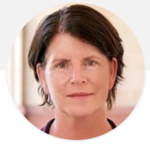 The bitter conflict between actors, writers and other creative professionals and the major movie and TV studios represents a flashpoint in the radical transformation roiling the entertainment industry. The ongoing strikes by the Writers Guild of America and the Screen Actors Guild were sparked in part by artificial intelligence and its use in the movie industry. Continue reading
The bitter conflict between actors, writers and other creative professionals and the major movie and TV studios represents a flashpoint in the radical transformation roiling the entertainment industry. The ongoing strikes by the Writers Guild of America and the Screen Actors Guild were sparked in part by artificial intelligence and its use in the movie industry. Continue reading
#428 – LOOKING FOR WORK IN THE POST-AI WORLD – KURT CAGLE
Featured
 This article is in two parts. The first is simple – I am seeking consulting work, preferably remote, but I’m okay exploring hybrid solutions. Most of the work I’ve done in the last year has been advisory in nature, helping companies to develop new AI/LLM strategies, architect knowledge graphs, XML and XSLT, RDF/SPARQL/SHACL ontologies and taxonomies, data catalogs, and GraphQL data portals, as well as making recommendations about data risk management, metadata governance, standards development and editing, and semantic content management. You could call me a data therapist. Continue reading
This article is in two parts. The first is simple – I am seeking consulting work, preferably remote, but I’m okay exploring hybrid solutions. Most of the work I’ve done in the last year has been advisory in nature, helping companies to develop new AI/LLM strategies, architect knowledge graphs, XML and XSLT, RDF/SPARQL/SHACL ontologies and taxonomies, data catalogs, and GraphQL data portals, as well as making recommendations about data risk management, metadata governance, standards development and editing, and semantic content management. You could call me a data therapist. Continue reading
#428 – HOW AI WILL AFFECT YOUR JOB – ANDREW SHEVES
Featured
 AI isn’t finally here – it’s been here for a while in everything from the autocorrect on your phone and the recommendations you get on Netflix – but it’s now in the mainstream. And thankfully, we’re having some of the hard conversations we failed to have when other technologies like social media were emerging. These will be long, complicated, and potentially inconclusive discussions, but at least they’re happening. Continue reading
AI isn’t finally here – it’s been here for a while in everything from the autocorrect on your phone and the recommendations you get on Netflix – but it’s now in the mainstream. And thankfully, we’re having some of the hard conversations we failed to have when other technologies like social media were emerging. These will be long, complicated, and potentially inconclusive discussions, but at least they’re happening. Continue reading
#428 – BEYOND DEGREES AND PAPER CREDENTIALS – PATRICK OW
Featured
 The traditional concept of securing a degree as a pre-condition to obtaining a job has led to a quagmire of challenges, leaving young graduates burdened with debt and mental health issues.
The traditional concept of securing a degree as a pre-condition to obtaining a job has led to a quagmire of challenges, leaving young graduates burdened with debt and mental health issues.
The winds of change are whispering a different approach – one that focuses on skills, adaptability, and breaking free from the shackles of a system that forces everyone to have a degree as a pre-condition to getting any job. Continue reading
#428 – HOW TO REINVENT YOURSELF THROUGH MULTIPLE PROJECTS – GREG HUTCHINS PE CERM
Featured
#427 – DESIGN REVIEWS WITH RELIABILITY MATTER – FRED SCHENKELBERG
Featured
 On occasion, you and the team sit down to review the design.
On occasion, you and the team sit down to review the design.
The idea is to check the design for any issues with the combined wisdom of the people involved. Or, it may be a status update for the entire team providing a focus on the most important issues and action items.
The review may involve all departments, such as marketing, operations, supplier management, and the design team. Continue reading
#427 – NEW NEURO TECH IS BLURRING THE LINES OF MENTAL PRIVACY – LAURA CABRERA
Featured
 Neurotechnologies – devices that interact directly with the brain or nervous system – were once dismissed as the stuff of science fiction. Not anymore.
Neurotechnologies – devices that interact directly with the brain or nervous system – were once dismissed as the stuff of science fiction. Not anymore.
Several companies are trying to develop brain-computer interfaces, or BCIs, in hopes of helping patients with severe paralysis or other neurological disorders. Entrepreneur Elon Musk’s company Neuralink, for example, recently received Food and Drug Administration approval to begin human testing for a tiny brain implant that can communicate with computers. There are also less invasive neurotechnologies, like EEG headsets that sense electrical activity inside the wearer’s brain, covering a wide range of applications from entertainment and wellness to education and the workplace. Continue reading
#427 – POWER OF REINVENTION – MIHIR GOSALIA
Featured
 I wanted insights into the future of work and transitioning into the next stage of my career. This is what I learned from Adeline Tiah’ Reinvent 4.0. Continue reading
I wanted insights into the future of work and transitioning into the next stage of my career. This is what I learned from Adeline Tiah’ Reinvent 4.0. Continue reading
#427 – NOT VUCA: BUT TODAY’S BANI WORLD – ANSHUMAN TIWARI
Featured
 The world is changing at an unprecedented pace. Things that were once considered stable and predictable are now volatile, uncertain, complex, and ambiguous. This has led to a new way of thinking about the world, known as the BANI model.
The world is changing at an unprecedented pace. Things that were once considered stable and predictable are now volatile, uncertain, complex, and ambiguous. This has led to a new way of thinking about the world, known as the BANI model.
BANI stands for Brittle, Anxious, Non-Linear, and Incomprehensible. It is a model that describes the current state of the world, which is characterized by these four qualities. Continue reading
#427 – MAKE ‘GIVING’ YOUR PERSONAL BRANDING SUCCESS STRATEGY – BILL POMFRET PH.D.
Featured
 Giving is rewarding. It’s contagious. And it’s good for your personal brand too.
Giving is rewarding. It’s contagious. And it’s good for your personal brand too.
The most successful brands know that building strong relationships is key. They understand the importance of having a vast, diverse, and loyal community, and they’re willing to give to that community with a sincere desire to support it. Their generosity comes from the heart, without any expectation of receiving anything in return, other than a sense of satisfaction. Continue reading
#427 – PIVOTING TO THE NEW BRAND YOU – GREG HUTCHINS
Featured
 It’s important to build a personal brand because it’s the only thing you’re going to have. Your reputation online, and in the new business world is pretty much the game, so you’ve got to be a good person. You can’t hide anything, and more importantly, you’ve got to be out there at some level.
It’s important to build a personal brand because it’s the only thing you’re going to have. Your reputation online, and in the new business world is pretty much the game, so you’ve got to be a good person. You can’t hide anything, and more importantly, you’ve got to be out there at some level.
Kyle Pearce – Entrepreneur Continue reading
#426 – GETTING STARTED LEARNING RELIABILITY ENGINEERING – FRED SCHENKELBERG
Featured
 Or, how to master the body of knowledge and be an effective reliability engineer.
Or, how to master the body of knowledge and be an effective reliability engineer.
Yes, there is a lot to know concerning reliability engineering. You should have a firm grasp of statistics, modeling, laboratory and experimental procedures, failure analysis skills, and more. Continue reading
#426 – ACTORS AND AI – DAVID ARDITI PH.D.
Featured
 For the first time since 1960, actors and screenwriters are on strike at the same time.
For the first time since 1960, actors and screenwriters are on strike at the same time.
As with many of the other strikes that have rippled across the United States over the past three years, this walkout is over demands for better pay and restrictions on their employers’ use of technology to replace paid work. Continue reading
#426 – UK MODERN SLAVERY ACT – KELLY EISENHARDT
Featured
 The UK Modern Slavery Act of 2015 was enacted to show the country’s commitment to eradicating modern slavery and protecting vulnerable individuals. Modern slavery is defined as the process of an individual being exploited for personal or commercial gains, which includes human trafficking, forced labor, and bondage for debt. Continue reading
The UK Modern Slavery Act of 2015 was enacted to show the country’s commitment to eradicating modern slavery and protecting vulnerable individuals. Modern slavery is defined as the process of an individual being exploited for personal or commercial gains, which includes human trafficking, forced labor, and bondage for debt. Continue reading
#426 – DEATH BY TOXIC SUBSTANCES – BILL POMFRET PH.D.
Featured
 Thousands of incidents involving toxic substances harm and kill workers — and the public — every year. According to the U.S. Department of Labor, exposure to harmful substances and fires/explosions are the fifth and sixth leading causes of workplace fatalities, respectively.[1] Continue reading
Thousands of incidents involving toxic substances harm and kill workers — and the public — every year. According to the U.S. Department of Labor, exposure to harmful substances and fires/explosions are the fifth and sixth leading causes of workplace fatalities, respectively.[1] Continue reading
#426 – HOW TO ADAPT TO A VUCA ENVIRONMENT – ANKUR TYAGI
Featured
 The environment we live and work in is constantly changing, and it can be difficult to predict what the future holds. Technological advances, globalization, and changing customer expectations are all creating a more volatile, uncertain, complex, and ambiguous (VUCA) environment. Continue reading
The environment we live and work in is constantly changing, and it can be difficult to predict what the future holds. Technological advances, globalization, and changing customer expectations are all creating a more volatile, uncertain, complex, and ambiguous (VUCA) environment. Continue reading
#426 – LOST ART OF COMMUNICATIONS – GREG HUTCHINS
Featured
 How well we communicate is determined not by how well we say things but by how well we are understood.
How well we communicate is determined not by how well we say things but by how well we are understood.
Andrew Grove, CEO Intel
LinkedIn said that ‘communications’ is the #1 top skill you need in your professional profile. Good communications are a vital element to all RBPS and RBDM. Communications problems can impact senior executives to low-level VUCANs. One challenge is you may remember as little as 25% of what you heard in the last two days. Continue reading
#425 – SUPPLY CHAIN DUE DILIGENCE ACT IN 2023 – KELLY EISENHARDT
Featured
 The Supply Chain Due Diligence Act (SCDDA) has been in force since 1 January 2023. This law requires that companies review and update purchasing contracts and agreements to include compliance and due diligence obligations for managing their supply chains. Continue reading
The Supply Chain Due Diligence Act (SCDDA) has been in force since 1 January 2023. This law requires that companies review and update purchasing contracts and agreements to include compliance and due diligence obligations for managing their supply chains. Continue reading
#425 – WHAT DOES ONE RELIABILITY ENGINEER DO? – FRED SCHENKELBERG
Featured
 Lately, I’ve seen some evidence of reliability engineers giving up.
Lately, I’ve seen some evidence of reliability engineers giving up.
Throwing in the towel. Going with the flow. Not rocking the boat.
Is that our charter? To roll over and accept that we cannot make a difference?
No, it’s not. Continue reading
#425 – CAN YOU TRUST AI? – HERE’S WHY YOU SHOULDN’T – BRUCE SCHNEIER & NATHAN SANDERS
Featured
If you ask Alexa, Amazon’s voice assistant AI system, whether Amazon is a monopoly, it responds by saying it doesn’t know. It doesn’t take much to make it lambaste the other tech giants, but it’s silent about its own corporate parent’s misdeeds. Continue reading
#425 – IT’S LONELY AT THE TOP – BILL POMFRET PH.D.
Featured
 At times, even leadership can be a tremendously lonely experience.
At times, even leadership can be a tremendously lonely experience.
The emotional fallout of making difficult decisions that negatively affect the lives of some team members, the feeling of rejection when team members leave for other opportunities, and the discomfort of disappointing passionate team members who offer ideas that can’t be executed in the moment, among many other leadership acts, all take their toll. Continue reading
#425 – BENEFITS AND RISKS OF AI – CAPERS JONES
Featured
 Artificial intelligence (AI) is one of the most rapidly expanding technologies in human history. It is also a disruptive technology that can do harm as well as good. On the beneficial side are new methods or robotic surgery and improved citations in medical and scientific papers.
Artificial intelligence (AI) is one of the most rapidly expanding technologies in human history. It is also a disruptive technology that can do harm as well as good. On the beneficial side are new methods or robotic surgery and improved citations in medical and scientific papers.
On the harmful and dangerous side, if a person’s voice has been recorded on the Web, criminals using AI can imitate the voice and send a message to the person’s family such as “help I’m being held for ransom.” Continue reading
#425 – ORCHESTRA WORK MODEL – GREG HUTCHINS PE CERM
Featured
 Understand the culture of the new company (with which you are joining or negotiating) and its standards of what is reasonable.
Understand the culture of the new company (with which you are joining or negotiating) and its standards of what is reasonable.
James Nunan – Business person
What’s the best metaphor for defining the project structure and process for getting lean and agile work done? It may be an orchestra. Continue reading
#424 – THE SYSTEM EFFECTIVENESS CONCEPT – FRED SCHENKELBERG
Featured
 Reliability is not the only concern when building a system.
Reliability is not the only concern when building a system.
Let’s consider a passenger car. Reliability refers to how often the car in the shop. How often we need to perform preventative or corrective maintenance. How often it fails.
Reliability does not include how long it will be unavailable for use. How long it is in the shop waiting for parts, for example. We want high availability, short repair times, too.
Plus, we also want the vehicle to be capable of doing the wide range of things we may want to do with it. Like, carry us safely to the grocery store and back. And, have the capacity to carry the groceries purchases without leaving behind a passenger or two.
There are other considerations, like cost, color, and style. These other factors may play a role in the capability of the system, or not, that would be locally defined for your project to develop the system.
The elements of reliability, availability, and capability capture the essential concepts that we need to create an effective system, like a passenger car.
Early System Effectiveness Discussions
Much of the early development of reliability engineering tools and techniques was for large military systems. In the 1950’s and ’60’s, various departments and organizations published standards, reports, handbooks, etc.
Many of the tools we use today, parts count predictions and physics of failure modeling became widely published.
Handbook Reliability Engineering, 1964
The US Naval first defined system effectiveness, as far as I know, in the Handbook Reliability Engineering, published by the direction of the Chief of the Bureau of Naval Weapons on 1 June 1964 (NAVWEPS 00-65-502). In the document system effectiveness is defined in section 1-3-1. System “Operational” Effectiveness of the document, excerpted here in its entirety.
The “worth” of a particular system or piece of equipment is determined primarily by the effectiveness with within it does its job — its “operational” effectiveness. An acceptable level of effectiveness is required of every system destined for tactical use.
Emphasis on reliability alone does not necessarily produce the required level of effectiveness. Other factors must be considered simultaneously. They are shown in Figure 1-5.
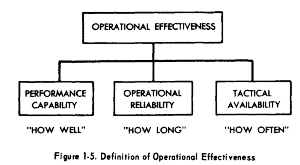 Each of these characteristics can be expressed as a “probability” of successful fulfillment of requirements, defined as follows:
Each of these characteristics can be expressed as a “probability” of successful fulfillment of requirements, defined as follows:
Performance capability is the probability that the system1 will satisfy mission performance requirements when operating within specified design limits — a measure of “how well” it does its job when working properly.
Operational reliability is the probability that the system will maintain a specified level of performance throughout a given mission — a measure of “how long” it is capable of working without failure.
Tactical availability, or operational readiness, is the probability that at any point in the time the system will be ready to operate at a specified level of performance, on demand — a measure of “how often” the system is ready when needed.
Operational effectiveness is the product of these three characteristics, i.e.:
Effectiveness = Performance × Reliability × Availability
Operation effectiveness of an equipment or system is then the probability that it can successfully meet an operational requirement, for the duration of the need, when the need arises.
1. The words “equipment” and “system can be used interchangeably.
— End except
The entire document focuses on system effectiveness and expands on each of the three characteristics.
Weapon System Effectiveness Industry Advisory Committee (WSEIAC) 1965
In the committee’s final report (AFSC-TR-65-6) dated January 1965 the authors again stressed system effectiveness as being essential and being more than just reliability. Here is an excerpt from pages 8 and 9.
A. Principal Factors of Effectiveness
The WSEIAC has taken the position that system effectiveness is a quantitative measure of the extent to which a system may be expected to achieve a set of specific mission requirements. It is expressed as a function of three major system attributes:
- Availability (A)
- Dependability (D)
- Capability (C)
Availability (A) is a measure of the condition of the system at the start of a mission when the mission is called for at an unknown (random) point in time.
Dependability (D) is a measure of the system condition during the performance of the mission: given its condition (availability) at the start of the mission.
Capability (C) is a measure of the results of the mission; given the condition of the system during the mission (dependability).
— End of excerpt
These concepts are not new and maybe have been forgotten. Take a look at your reliability program and how well do you support system effectiveness?
#424 – BALDRIGE AND MEP HELP MANUFACTURERS IMPLEMENT INDUSTRY 4.0 CONCEPTS – DAWN BAILEY
Featured
“ Digital transformation—often informally referred to as Industry 4.0 —. . . is and will continue to redefine the standards of competitiveness, performance, and, further, the minimal ability [of U.S. manufacturers] to participate in the market,” said Phil Centonze, managing partner, POS-IMPACT LLC (formerly director of performance assessment at FloridaMakes, the Manufacturing Extension Partnership (MEP) business management consulting center that serves organizations in the state of Florida). Continue reading
Digital transformation—often informally referred to as Industry 4.0 —. . . is and will continue to redefine the standards of competitiveness, performance, and, further, the minimal ability [of U.S. manufacturers] to participate in the market,” said Phil Centonze, managing partner, POS-IMPACT LLC (formerly director of performance assessment at FloridaMakes, the Manufacturing Extension Partnership (MEP) business management consulting center that serves organizations in the state of Florida). Continue reading
#424 – THE ROBOTS ARE COMING: ARE YOU READY? – BILL POMFRET PH.D.
Featured
 Terminator, Bladerunner, Bicentennial Man, Ex-Machina, any of the Transformer’s movies. Buzz Lightyear, C3-PO, R2D2, WALL-E, Chappie, Finch, her… Sci-fi has always had us on the hook.
Terminator, Bladerunner, Bicentennial Man, Ex-Machina, any of the Transformer’s movies. Buzz Lightyear, C3-PO, R2D2, WALL-E, Chappie, Finch, her… Sci-fi has always had us on the hook.
Consider the highest-grossing movies of all time: 4 of the top 5 are sci-fi (and 3 of those spots go to Star Wars and Avatar movies, between them grossing over 7.3 billion dollars.). It’s clear: we love robots. Continue reading
#424 -MORE RISK MANAGEMENT PROMPTS FOR GPT – PATRICK OW
Featured
 This is our 4th and final installment of GPT risk management prompts. Check out the previous at:
This is our 4th and final installment of GPT risk management prompts. Check out the previous at:
HOW TO SUPERCHARGE YOUR RISK MANAGEMENT WITH AI PART 1
GPT PROMPTS YOU CAN USE FOR RISK MANAGEMENT
MORE GPT PROMPTs YOU CAN USE FOR RISK MANAGEMENT Continue reading
#424 – FUTURE PROOF YOURSELF – GREG HUTCHINS
Featured
 As technology advances in complexity and scope, fear becomes more primitive.
As technology advances in complexity and scope, fear becomes more primitive.
Don DeLillo – Writer
I’m surprised how many people are techno-phobes in a tech economy. Wonder why? When you hear the following words, what do you think about? Faster. Better. Killer.
Cheaper. Smaller. Agile. Tech and specifically the smart phone are usually at the heart of disruption. Continue reading
#424 – WHY AND HOW TO BUILD CUSTOM CHAT BOTS – ANDREW SHEVES
Featured
 I’ve been building custom knowledge agents (AKA chatbots) for a few weeks, and Greg asked me to share some background on how you build these tools and why. The ‘how’ is covered in a short demo video below, but before you start building nodes, it’s worth thinking about what these new chatbots are and what they can do for you. Continue reading
I’ve been building custom knowledge agents (AKA chatbots) for a few weeks, and Greg asked me to share some background on how you build these tools and why. The ‘how’ is covered in a short demo video below, but before you start building nodes, it’s worth thinking about what these new chatbots are and what they can do for you. Continue reading
#423 – SHOW ME THE DATA – FRED SCHENKELBERG
Featured
 Early in my career, I worked for an unreasonable person.
Early in my career, I worked for an unreasonable person.
He wanted us, his engineering staff, to show him the data. He wanted us to gather, monitor, analyze and display data regularly. Anytime we needed approval, funding, or resources he wanted to see the data.
Essentially this meant he wanted to understand the situation involved. Continue reading
#423 – BRIDGE COLLAPSES, ROAD REPAIRS: HOW TRANSPORT AGENCIES PLAN FOR DISRUPTIONS – LEE D. HAN PH.D.
Featured
 Twelve days after a portion of Interstate 95 collapsed in north Philadelphia during a truck fire, officials opened a temporary six-lane roadway to serve motorists while a permanent overpass is rebuilt. This was a major success after the June 11, 2023, disaster was predicted to snarl traffic for months. Continue reading
Twelve days after a portion of Interstate 95 collapsed in north Philadelphia during a truck fire, officials opened a temporary six-lane roadway to serve motorists while a permanent overpass is rebuilt. This was a major success after the June 11, 2023, disaster was predicted to snarl traffic for months. Continue reading
#423 – UNDERSTANDING YOUR TOTAL COST OF RISK THROUGH THE LENS OF PROCESS RISK MANAGEMENT – BILL POMFRET PH.D.
Featured
 Understanding Your Total Cost of Risk Through the Lens of Process Safety Management home, Understanding Your Total Cost of Risk Through the Lens of Process Safety Management
Understanding Your Total Cost of Risk Through the Lens of Process Safety Management home, Understanding Your Total Cost of Risk Through the Lens of Process Safety Management
Search Categories for Compliance in Operations, Procurement, Safety Technology in the appropriate Industries of Chemical, Construction and Facilities Management, Oil & Gas, Transportation & Logistics Continue reading
#423 – MORE GPT RISK MANAGEMENT PROMPTS – PATRICK OW
Featured
 This is our 3rd installment of GPT risk management prompts. Check out the previous at:
This is our 3rd installment of GPT risk management prompts. Check out the previous at:
HOW TO SUPERCHARGE YOUR RISK MANAGEMENT WITH AI PART 1
GPT PROMPTS YOU CAN USE FOR RISK MANAGEMENT Continue reading
#423 – BEYOND BUNGEE MANAGEMENT – IAN DALLING
Featured
 This article provides insights into why the International Organisation for Standardization (ISO) strategy for management systems standards over the last two decades has failed to meet the needs of organisations. It is producing standards that are not fit for purpose and misaligned with the needs, expectations and aspirations of its customers and other stakeholders and is negatively impacting economic, social and ecological performance. Continue reading
This article provides insights into why the International Organisation for Standardization (ISO) strategy for management systems standards over the last two decades has failed to meet the needs of organisations. It is producing standards that are not fit for purpose and misaligned with the needs, expectations and aspirations of its customers and other stakeholders and is negatively impacting economic, social and ecological performance. Continue reading
#423 – WHY PROJECTS FAIL? OR AT LEAST MINE – GREG HUTCHINS PE CERM
Featured
 A bad habit never disappears miraculously; it’s an undo-it-yourself project.
A bad habit never disappears miraculously; it’s an undo-it-yourself project.
Abigail Van Buren – Self Help Guru
I’ve project managed $200M projects. I’ve had some jobs come in on budget, in scope, and on schedule. I’ve had projects fail miserably and been fired. I’ve had to kill projects. I think Continue reading
#422 – 5 STEPS TO BUILDING A RELIABILITY CULTURE – FRED SCHENKELBERG
Featured
 Reliability is not the sole responsibility of the reliability engineer but results from nearly everyone in an organization making decisions that move toward the desired product reliability performance.
Reliability is not the sole responsibility of the reliability engineer but results from nearly everyone in an organization making decisions that move toward the desired product reliability performance.
As a reliability professional, I often find it necessary to explore ways to leverage my knowledge of these areas to change the culture within an organization to create a sustainable program that achieves reliable products time and again. Continue reading
#422 – TITAN DISASTER UNDERSCORES UNDERSEA EXPLORATION – NINA MAHMOUDIAN PH.D.
Featured
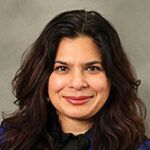 Rescuers spotted debris from the tourist submarine Titan on the ocean floor near the wreck of the Titanic on June 22, 2023, indicating that the vessel suffered a catastrophic failure and the five people aboard were killed. Continue reading
Rescuers spotted debris from the tourist submarine Titan on the ocean floor near the wreck of the Titanic on June 22, 2023, indicating that the vessel suffered a catastrophic failure and the five people aboard were killed. Continue reading
#422 – GPT PROMPTS YOU CAN USE FOR RISK MANAGEMENT – PATRICK OW
Featured
 Tailor the responses to your specific context – organisation, industry and country – and consult with professionals or experts for specific advice or guidance. Be creative in exploring different prompts.
Tailor the responses to your specific context – organisation, industry and country – and consult with professionals or experts for specific advice or guidance. Be creative in exploring different prompts.
- Risk governance
- “Act as a CEO and write a business-focused practical risk management policy according to ISO 31000 for [web page URL].”
- “Act as a CEO and write a comprehensive risk strategy for [web page URL]. The strategy must detail all steps, actions, and deliverables to be produced including performance indicators to monitor progress and for reporting purposes. A risk management strategy is a structured approach to addressing risks and can be used in companies of all sizes and across any industry.”
- “Create a risk universe for [web page URL]. The risk universe is the list of risks the company faces or might face. This risk universe can be used as a checklist to identify, consolidate and aggregate risk events across the organisation for reporting and monitoring. Tell me how to apply the risk universe.”
- “What are the key components of a robust risk governance framework for a company with [number of employees] operating in the [industry] in [country]? How can we establish a structure that promotes effective risk management throughout the organisation?”
- “What roles and responsibilities should be defined for effective risk governance? How can we allocate accountability and ensure clear ownership of risks, controls and treatments?”
- “How can the board and senior management effectively engage in risk governance? What practices or mechanisms can be implemented to promote their active involvement?”
- “How can we define and communicate the organisation’s risk appetite and tolerance levels? What considerations should be considered when establishing these parameters?”
- “What policies and procedures should be developed to guide risk governance activities? How can we ensure they align with industry best practices and regulatory requirements?”
- “What reporting mechanisms should be in place to provide regular updates on risk governance activities? How can we effectively communicate risk information to relevant stakeholders?”
- “How can we foster a strong risk culture within the organisation? What initiatives can be implemented to promote risk awareness and encourage risk-conscious behaviours?”
- “What mechanisms should be established to monitor and review the effectiveness of risk governance practices? How can we ensure continuous improvement in risk management?”
- “Create a comprehensive business continuity and resilience strategy for [web page URL] that incorporates the managing of third-party and supply chain risks that complies with the requirements of ISO 22301.”
- “What are the steps to take to move from risk management 1.0 to risk management 2.0 and 3.0?”
#422 – DEATH BY TOXIC SUBSTANCES – BILL POMFRET PH.D.
Featured
 Thousands of incidents involving toxic substances harm and kill workers — and the public — every year. According to the U.S. Department of Labor, exposure to harmful substances and fires/explosions are the fifth and sixth leading causes of workplace fatalities, respectively.[1] Continue reading
Thousands of incidents involving toxic substances harm and kill workers — and the public — every year. According to the U.S. Department of Labor, exposure to harmful substances and fires/explosions are the fifth and sixth leading causes of workplace fatalities, respectively.[1] Continue reading
#422 – END OF THE PRIVILEGED COLLEGE DEGREE – GREG HUTCHINS PE CERM
Featured
 In my desperation, I have finally discovered that the only way that I can begin to fill the gaping hole within me is to be thankful for what’s there, and not angry for what’s not.”
In my desperation, I have finally discovered that the only way that I can begin to fill the gaping hole within me is to be thankful for what’s there, and not angry for what’s not.”
Craig D. Lounsbrough – Author
A millennial the other day was wearing a Y hoodie from Yale University his alma mater. We got into a conversation about work. Well, he was working at an Amazon distribution center with a quarter million-dollar degree. Huh! There has been a global and collective obsession with getting any college degree, seemingly regardless of its value and employability. Continue reading
#422 – EIGHT WAYS TO IMPROVE YOUR SUPPLIER SELECTION PROCESS – ART THOMAS
Featured
 Many manufacturers have had to make significant changes in suppliers in recent years because of various disruptions. Small and medium-sized manufacturers are often resource-challenged and do not have supply chain specialists to focus on vetting suppliers. Continue reading
Many manufacturers have had to make significant changes in suppliers in recent years because of various disruptions. Small and medium-sized manufacturers are often resource-challenged and do not have supply chain specialists to focus on vetting suppliers. Continue reading
#421 – HOW AI COULD TAKE OVER ELECTIONS AND UNDERMINE DEMOCRACY – ARCHON FUNG & LAWRENCE LESSIG
Featured
 Could organizations use artificial intelligence language models such as ChatGPT to induce voters to behave in specific ways?
Could organizations use artificial intelligence language models such as ChatGPT to induce voters to behave in specific ways?
Sen. Josh Hawley asked OpenAI CEO Sam Altman this question in a May 16, 2023, U.S. Senate hearing on artificial intelligence. Altman replied that he was indeed concerned that some people might use language models to manipulate, persuade and engage in one-on-one interactions with voters.
#421 – HOW DO YOU SELECT RELIABILITY TASKS TO ACCOMPLISH – FRED SCHENKELBERG
Featured
 As reliability engineers, we have a large number of tools available.
As reliability engineers, we have a large number of tools available.
From project planning, system modeling, data analysis, test planning, to risk identification and defect discovery, we have techniques, procedures, algorithms to help us identify and solve reliability problems.
We also may ways to apply an individual reliability task. Continue reading
#421 – PROCESS SAFETY MANAGEMENT, RISK, AND COMPLIANCE – BILL POMFRET PH.D.
Featured
 In the early morning of April 8, 2021, an explosion and fire took place at the Yenkin-Majestic Paint Factory in Columbus, Ohio. While the official cause of the explosion, which took one worker’s life and resulted in over $1 million in property damage, still needs to be determined by the U.S. Chemical Safety Board (CSB), the Occupational Safety and Health Administration (OSHA) had previously cited and fined Yenkin-Majestic Paints in 2011, 2012, and 2015 for safety violations. Continue reading
In the early morning of April 8, 2021, an explosion and fire took place at the Yenkin-Majestic Paint Factory in Columbus, Ohio. While the official cause of the explosion, which took one worker’s life and resulted in over $1 million in property damage, still needs to be determined by the U.S. Chemical Safety Board (CSB), the Occupational Safety and Health Administration (OSHA) had previously cited and fined Yenkin-Majestic Paints in 2011, 2012, and 2015 for safety violations. Continue reading
#421 – HOW TO SUPERCHARGE YOUR RISK MANAGEMENT WITH AI PART 1 – PATRICK OW
Featured
 ChatGPT, whether you like it or not, is an AI-powered tool that has already moved from science-fiction to real-world application at a very rapid pace. It is one of the many AI tools we use daily, like Siri or Google Assistant, where its conversational fluency helps bring digital powers to everyday users. Continue reading
ChatGPT, whether you like it or not, is an AI-powered tool that has already moved from science-fiction to real-world application at a very rapid pace. It is one of the many AI tools we use daily, like Siri or Google Assistant, where its conversational fluency helps bring digital powers to everyday users. Continue reading
#421 – WHAT’S YOUR RISK PROFILE? – GREG HUTCHINS PE CERM
Featured
 Two roads diverged in a wood … I took the one less travelled by, and that has made all the difference.
Two roads diverged in a wood … I took the one less travelled by, and that has made all the difference.
Robert Frost – Author of The Road Not Taken Poem
What roads have you taken in life and work? Did you have choices of multiple roads? Why did you make the choices you made? Or, did circumstances dictate the choice for you? Continue reading
#420 – INSURANCE INDUSTRY MUST EVOLVE TO MEET GROWING RISKS TO OUR CLIMATE CRISIS – BOB LEONARD
Featured
 About 40% of the US population lives in an area vulnerable to climate impacts including sea level rise, extreme weather and forest fires. How do we pay for the damages that occur and distribute the risk? This is a huge concern for the insurance industry in particular. Continue reading
About 40% of the US population lives in an area vulnerable to climate impacts including sea level rise, extreme weather and forest fires. How do we pay for the damages that occur and distribute the risk? This is a huge concern for the insurance industry in particular. Continue reading
#421 – BALDRIGE: LEADING FOR INNOVATION – CHRISTINE SCHAEFER
Featured
 Senior leaders of five recent Baldrige Award recipients representing diverse sectors of the U.S. economy—The Charter School of San Diego (CSSD), Elevations Credit Union, Guidehouse (formerly PricewaterhouseCoopers Public Sector), Memorial Hermann Sugar Land Hospital, and Stellar Solutions–presented insights on how they guide their high-performing organizations to innovate at the Baldrige Performance Excellence Program’s 34th Quest for Excellence® conference in April 2023. Following are highlights of the presentation by Gerry Agnes of Elevations Credit Union.
Senior leaders of five recent Baldrige Award recipients representing diverse sectors of the U.S. economy—The Charter School of San Diego (CSSD), Elevations Credit Union, Guidehouse (formerly PricewaterhouseCoopers Public Sector), Memorial Hermann Sugar Land Hospital, and Stellar Solutions–presented insights on how they guide their high-performing organizations to innovate at the Baldrige Performance Excellence Program’s 34th Quest for Excellence® conference in April 2023. Following are highlights of the presentation by Gerry Agnes of Elevations Credit Union.
What Does Innovation Look Like for a Relatively Small Organization?
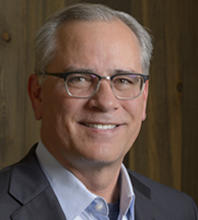
Gerry Agnes, president and CEO of two-time Baldrige Award winner Elevations Credit Union, began his presentation on innovation at the Baldrige Program’s Quest for Excellence® conference by demonstrating his great appreciation for the people who work at the Colorado nonprofit, as well as for the people served by them.
Of Elevations’ 600-plus employees, he said, “I learn from them every day, and they inspire greatness inside our organization.” Of the credit union’s 176,000 members today, he said, “We listen to what they have to say. We have a variety of listening mechanisms, and we learn from them.”
In outlining Elevations’ journey to excellence, Agnes noted, “We’ve come a long way since our very humble beginnings.” The organization was established in 1952 to serve faculty and staff members of the University of Colorado. Known then as the University of Colorado Federal Credit Union, it had 12 members and assets of less than $100, he said. Today, it has assets of more than $3.3 billion, though Agnes pointed out that it is still a “community-based financial services organization” and its community, the Front Range region of Colorado, is “still a small market.”
Agnes joined Elevations in 2008—a month before several big, national mortgage banks failed, he noted. As Agnes and his team considered how to succeed, “We asked ourselves at Elevations, ‘What would innovation look like for us, and could it be more incremental [than the pace of innovation at very large companies] but still have a big-bang disruptive force inside our [much smaller] market?’”
Embracing Improvement and Innovation
According to Agnes, a simple concept and a question helped Elevations move forward with changes that eventually disrupted its market: “Let’s help people fulfill their dream of home ownership” and “How can our organization be better today than we were yesterday and become better tomorrow than we were today?”
In Elevations’ industry of residential mortgages, price isn’t a significant variable, he explained, and Elevations already had key products in place and a good brand to promote. So Elevations looked at how it was positioned in the marketplace, and the organization’s focus for change “came down to process management.”
Probing the question, “Who is the customer of the mortgage?” Elevations recognized that “the true customer is the realtor and the title insurance company,” he said, since “we get the member through the process.”
The focus on fulfilling the needs of those key customers (realtors and title companies) drove Elevations to change its residential lending process based on the question, “How quickly can we close [on each mortgage loan] without exceptions?” he said. “The ability to do that faster, better than anybody in the marketplace, is really, really important because that’s when the brand recognition comes into play.”
Key Results and Guidelines
Starting in 2011, Elevations was able to improve its loan processing turn times significantly enough that by 2013, it began outperforming two large, nationwide competitors in its community market for home loans. As shown in the graphics above and below, Elevations sustained and increased those gains for several subsequent years.
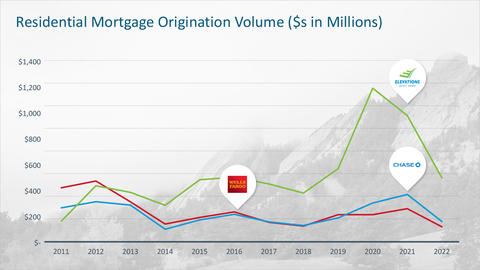
In sum, Agnes stressed the benefits for Elevations of “incremental change,” starting with asking the question, “What if we’re able to come out and become disruptors at a very, very large scale?”
“We were able to do that,” he added, “and that’s just one example of how we applied the Baldrige framework inside Elevations.”
Agnes then stressed the value of openly and thoroughly discussing with employees the questions that make up the Criteria for Performance Excellence® (part of the Baldrige framework booklet).
He concluded with three points of guidance for other organizations seeking to innovate and succeed:
- “Embrace the Baldrige framework because it really is innovation.”
- “Never underestimate the capabilities of a stellar team.”
- “Ensure that the Baldrige framework is contained in your strategic plan.”
Five-Part Leadership Blog Series
Previous Blog
Leading for Innovation, Part 1: Insights from CSSD’s Mary Bixby
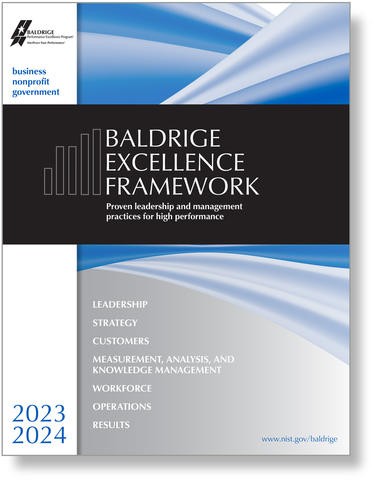
Baldrige Excellence Framework®
The Baldrige Excellence Framework® has empowered organizations to accomplish their missions, improve results, and become more competitive. It includes the Criteria for Performance Excellence®, core values and concepts, and guidelines for evaluating your processes and results.
ABOUT THE AUTHOR
#420 – IMPROVE DECISION MAKING WITH STATISTICS – FRED SCHENKELBERG
Featured
 We make decisions all the time. Often our decision making is with little more than a gut feeling.
We make decisions all the time. Often our decision making is with little more than a gut feeling.
When faced with a major decision we often look data to help us decide. Is the product reliable enough as designed? Which field returns indicate we should stop production?
Some decision may help us earn or lose thousands if not millions of dollars. Continue reading
#420 – 2023 HURRICANE FORECAST – KELSEY ELLIS PH.D. & NICHOLAS GRONDIN PH.D.
Featured
 The official 2023 hurricane season forecasts were just released, and while the Atlantic may see an average storm season this year, a busier-than-normal season is forecast in the eastern Pacific, meaning heightened risks for Mexico and Hawaii.
The official 2023 hurricane season forecasts were just released, and while the Atlantic may see an average storm season this year, a busier-than-normal season is forecast in the eastern Pacific, meaning heightened risks for Mexico and Hawaii.
A big reason is El Niño. Continue reading
#420 – WHEN THE JOBS DON’T COME BACK? – KURT CAGLE
Featured
 Meta laid of another 5,000 people today, many from its content moderation division. Companies are framing these massive cuts as streamlining operations, but let’s be blunt – investors are driving this purge, trying to get a quick cash boost to the companies’ bottom line so that the investors can cash out without taking a bath. Continue reading
Meta laid of another 5,000 people today, many from its content moderation division. Companies are framing these massive cuts as streamlining operations, but let’s be blunt – investors are driving this purge, trying to get a quick cash boost to the companies’ bottom line so that the investors can cash out without taking a bath. Continue reading
#420 – MENTAL HEALTH MONTH – BILL POMFRET PH.D.
Featured
 In recognition of May as Mental Health Awareness Month, I cannot help but put gun violence at the center of my paper to encouraged employers to create supportive workplaces that destigmatize mental health struggles and to provide access to counseling and other vital resources.
In recognition of May as Mental Health Awareness Month, I cannot help but put gun violence at the center of my paper to encouraged employers to create supportive workplaces that destigmatize mental health struggles and to provide access to counseling and other vital resources.
Shedding Light on Personal Struggles is the real story — and the real need — regarding mental illness and violence is suicide. Not only are most firearm deaths suicides, but most suicides are causally linked to mental illness. Continue reading
#420 – DO YOU DO RISK BASED, DECISION MAKING? – GREG HUTCHINS
Featured
 You have limited amounts of gifting, talents, time, energy, and enthusiasm, but unlimited ways of allocating them. For this reason productivity involves making decisions about how to allocate these finite resources.
You have limited amounts of gifting, talents, time, energy, and enthusiasm, but unlimited ways of allocating them. For this reason productivity involves making decisions about how to allocate these finite resources.
Tim Challies – Author
AI COVID is an example of VUCA. COVID is all about unknowns: “how long immunity lasts; how the virus may mutate; the challenges of vaccine distribution; and the possible reluctance to accept the vaccine among some groups.” Now, we’re seeing this with AI.
VUCA and risk are inter-related in Risk Based, Problem Solving (RBPS) and Risk Based, Decision Making (RBDM). VUCA describes a problem or decision where the likelihood and consequence are not known. Risk describes a problem or decision where the likelihood and consequence (outcome) are often known or can be found. So, how do you look at risk?
A framework is a risk lens to look at and understand how to use RBPS and RBDM. Risk management, both upside and downside, can be defined as the ability to reach an objective, solve a tough problem, or make a tough decision. ISO 31000:2018, an international standard, is a simple risk framework. ISO 31000 has the following steps:
• Communicate and Consult. This step explains what problem we are trying to solve, why we are solving it, how we may go about solving it, and how to make a decision. You solve problems or make decisions because someone has an itch, pain, need, want, expectation, perception, or requirement. Understanding and figuring out what problem to solve, what pain needs to be relieved, or what itch needs to be scratched is the first step in the RBPS and RBDM journey.
• Establish the context: Years ago, I was told understanding context is worth 20 IQ and EQ points. Context give us an understanding of the importance, meaning, purpose, and value of the problem to be solved or decision to be made. Context allows us to process the right information, understand risks, analyze events, perceive obstacles, understand people, learn from mistakes, and do the right things to meet objectives. This is a critical point because the human ability to nuance context separates us from smart machines – at least for now.
• Identify risks: Think of risks as hurdles, impediments, or obstacles that are in the Iway of a finishing a project, reaching an objective, solving a problem, or making a critical decision in VUCA time. There are lots of risks. There are lots of unknowns.
It’s critical to separate the insignificant many risks from the critical few risks that get in the way of what you want to do. Pay attention to what matters most.
• Analyze risks: Risk analysis involves understanding the type, extent, and nature of the risks and obstacles to solve a problem or make a decision. Think of risk in terms of two factors: likelihood of the event and possible consequences. You’ve prioritized risks that may stop you from reaching your destination or objective. You divided risks into known and divided them into what you can control and can’t control. You control those you can and understand the risks that you can’t control. You work down the list mitigating the risks you can control. RBPS and RBDM consider both positive and negative consequences.
Risk analysis is critical to determine if a problem can be solved or if a decision can be reached. RBDM was relatively straight forward a dozen years ago. Risk likelihoods and consequences could be evaluated. Problems had a cause and effect relationship.
A or B or C would cause D. Decision making in VUCA time is often complex with interdependencies and cascading factors. Now, A and B and C can cause D.
• Evaluate risks: Risks are always evaluated based on a VUCAN’s risk appetite or tolerance. Risk tolerance is the acceptable level of variation a company or individual is willing to accept in the pursuit of a specific objective. As a recommendation, if there’s residual risk beyond your tolerance or appetite additional risk mitigation might be applied.
• Treat risks: Risk treatment or mitigation usually involves 4 RBDM options: 1. Avoid; 2. Accept; 3. Transfer; or 4. Reduce or Control the risk. Let’s look at each in VUCA time: Risk avoidance is the decision not to do something. Risk acceptance, think go-for-it, is the decision to do something usually because it’s acceptable to your risk tolerance. Risk transference assumes someone else may take part or all of the risk. Risk management is the decision to reduce risk through eliminating obstacles, reducing likelihood or reducing consequences.
• Record and Report: This step involves sharing your RBPS and RBDM with critical parties such as your significant other.
• Monitor and Review: VUCA changes. Risks change. Existing and new risks have to be monitored, reviewed, and mitigated all the time.
Work Lesson Earned: Think about your RBPS and RBDM in VUCA time. Start with an objective, hypothesis, or idea, weigh the risks (likelihoods and consequences) and then arrive at a decision using this risk lens.
#419 – MINI – COURSE: KPI BEST PRACTICES YOU NEED TO KNOW – BILL POMFRET PH.D.
Featured
 One of my clients recently was asked for advice on the company’s plans to introduce a new variable compensation system for employees incorporating safety performance.
One of my clients recently was asked for advice on the company’s plans to introduce a new variable compensation system for employees incorporating safety performance.
The company’s previous bonus system was only connected to their lost time injuries (LTI) performance, which presents two potential drawbacks for organizations that have not yet reached full safety performance maturity. Continue reading
#419 – WHEN IS THE BEST TIME TO ESTABLISH RELIABILITY GOALS? – FRED SCHENKELBERG
Featured
 The best time is at the product conception. The second best time as early as possible in the product development process.
The best time is at the product conception. The second best time as early as possible in the product development process.
It may change. Be refined. Altered later.
That is fine, yet the initial concept needs the boundary condition of a reliability goal. Continue reading
#419 – SHOULD GOVERNMENTS BAN TIKTOK – DOUG JACOBSON
Featured
 On May 17, 2023, Montana Gov. Greg Gianforte signed legislation banning TikTok in the state. The law imposes fines of US$10,000 per day on any app store that offers the popular Chinese-owned video social media app, and on the app maker itself if it operates in the state. Individual users are not subject to penalties. The law, which is scheduled to go into effect Jan. 1, 2024, is the first total ban by a U.S. state government. The company claims 200,000 users in the state of 1.1 million people. Continue reading
On May 17, 2023, Montana Gov. Greg Gianforte signed legislation banning TikTok in the state. The law imposes fines of US$10,000 per day on any app store that offers the popular Chinese-owned video social media app, and on the app maker itself if it operates in the state. Individual users are not subject to penalties. The law, which is scheduled to go into effect Jan. 1, 2024, is the first total ban by a U.S. state government. The company claims 200,000 users in the state of 1.1 million people. Continue reading
#419 – WHAT DOES CHAT GPT SAY ABOUT RISK MANAGEMENT? – PATRICK OW
Featured
 With the popularity of ChatGPT, I asked the artificial intelligence chatbot to compare Risk Management 1.0, 2.0 and 3.0. It says that risk management has evolved from a reactive and risk-centric approach (1.0) to a more proactive, integrated, and opportunity-focused approach (2.0) and further to a holistic, ecosystem-oriented, and adaptive approach (3.0). What a nice way to summarise the journey we have had so far. Continue reading
With the popularity of ChatGPT, I asked the artificial intelligence chatbot to compare Risk Management 1.0, 2.0 and 3.0. It says that risk management has evolved from a reactive and risk-centric approach (1.0) to a more proactive, integrated, and opportunity-focused approach (2.0) and further to a holistic, ecosystem-oriented, and adaptive approach (3.0). What a nice way to summarise the journey we have had so far. Continue reading
#419 – WHAT’S YOUR WORK METAPHOR? – GREG HUTCHINS PE CERM
Featured
 A brand for a company is like a reputation for a person. You earn reputation by trying to do hard things well.
A brand for a company is like a reputation for a person. You earn reputation by trying to do hard things well.
Jeff Bezos – Amazon Founder
Work metaphors offer visuals, beacons, insights, scripts, and Work Lessons Earned. Metaphors help us design a vision of what to expect from work. The career ladder is a great visual metaphor. A VUCAN started at the bottom and with the right effort climbed each rung.
BTW: VUCAN(R) is an VUCA iNhabitant.
#419 – HOW TO IMPLEMENT A STRUCTURE FOR DECISION-MAKING AGILITY – HOWARD WIENER CERM
Featured
 In the previous article, Part I: Intent and Structure, we discussed a number of important topics:
In the previous article, Part I: Intent and Structure, we discussed a number of important topics:
- What is your enterprise and what is transformation?
- What is agility and how is it measured?
- What is Enterprise Agility?
- How should SWOT, OODA, OKRs, Lean Product Development and Product Discovery figure in your approach to leading your company?
- How should you implement strategy, business model and execution decision-making layers?
- How do you design your organization and processes to promote Collaboration and Coherence?
#418 – THREE WAYS TO PROVIDE FIELD RELIABILITY FEEDBACK TO THE DESIGN TEAM – FRED SCHENKELBERG
Featured
 By the time a product fails in the field, the design team is focused on the next design.
By the time a product fails in the field, the design team is focused on the next design.
They are looking to the future and not looking for field reliability feedback. We know that each failure contains valuable information.
We, as reliability professionals, often work to create as much useful information concerning failure modes and mechanisms as possible. We want to improve the design. Continue reading
#418 – RISE OF THE LUDDITES – ANDREW MAYNARD PH.D.
Featured
 The term “Luddite” emerged in early 1800s England. At the time there was a thriving textile industry that depended on manual knitting frames and a skilled workforce to create cloth and garments out of cotton and wool. But as the Industrial Revolution gathered momentum, steam-powered mills threatened the livelihood of thousands of artisanal textile workers. Continue reading
The term “Luddite” emerged in early 1800s England. At the time there was a thriving textile industry that depended on manual knitting frames and a skilled workforce to create cloth and garments out of cotton and wool. But as the Industrial Revolution gathered momentum, steam-powered mills threatened the livelihood of thousands of artisanal textile workers. Continue reading
#418 – MINI COURSE – CONFLICT AND LITIGATION BETWEEN CLIENTS AND DEVELOPERS – CAPERS JONES
Featured
Software development and maintenance outsource contracts may lead to conflicts between the client and the service organization. For a significant number of disputes, the conflict may reach the point of litigation for breach of contract. The author and his colleagues are often commissioned to perform independent assessments of contract software projects. We are also engaged as expert witnesses in litigation associated with breach of software contracts. Continue reading
#418 – HOW CLEAN IS CLEAN? – BILL POMFRET PH.D.
Featured
 At no time was cleanliness more critical than in a pandemic, the need for sterilization was paramount, Will we have another pandemic. Who knows? But, we have to be prepared for this risk:
At no time was cleanliness more critical than in a pandemic, the need for sterilization was paramount, Will we have another pandemic. Who knows? But, we have to be prepared for this risk:
The founder and Managing Consultant of Safety Projects International Inc, has a mission – to help clean up Canada and several other countries. However, rather than doing it himself, Dr Bill Pomfret aka Dr. Clean is getting the workers themselves to do it – which is simple in its logic but offers a huge challenge in execution. Continue reading
#418 – DECISION MAKING AGILITY – HOWARD WIENER CERM
Featured
 In this rapidly evolving world Enterprise Agility is critical to enabling you to survive and thrive. But what is agility, really? Everyone seems to think they’re agile because they’re doing Agile, but this is not agility. The terms Agile, agile and agility have been applied so randomly and batted around so widely as to have become almost meaningless. Continue reading
In this rapidly evolving world Enterprise Agility is critical to enabling you to survive and thrive. But what is agility, really? Everyone seems to think they’re agile because they’re doing Agile, but this is not agility. The terms Agile, agile and agility have been applied so randomly and batted around so widely as to have become almost meaningless. Continue reading
#418 – WHERE’S THE WORK? – GREG HUTCHINS PE CERM
Featured
A year ago when I talked to truck drivers they said ‘there’s no way a robot could do my job.’ This year they say, ‘We need to make robot trucks illegal’.
Andrew Yang – U.S. Presidential Candidate
The fear of massive job losses started about six years ago when University of Oxford released a report of job losses due to automation. The University reported 47% of current U.S. jobs are at risk of being impacted by or totally displaced by automation and artificial intelligence in 20 years or less.(1)
In the latest Oxford report, the numbers got worse – 80% of jobs in retail, transportation warehousing, and logistics are at risk and 63% of sales jobs were at risk pre-COVID. And by the way, the job losses and changes now will happen in 5 to 10 years or even less time because of COVID. But there’s a positive side, Tech Futures will also create work and jobs: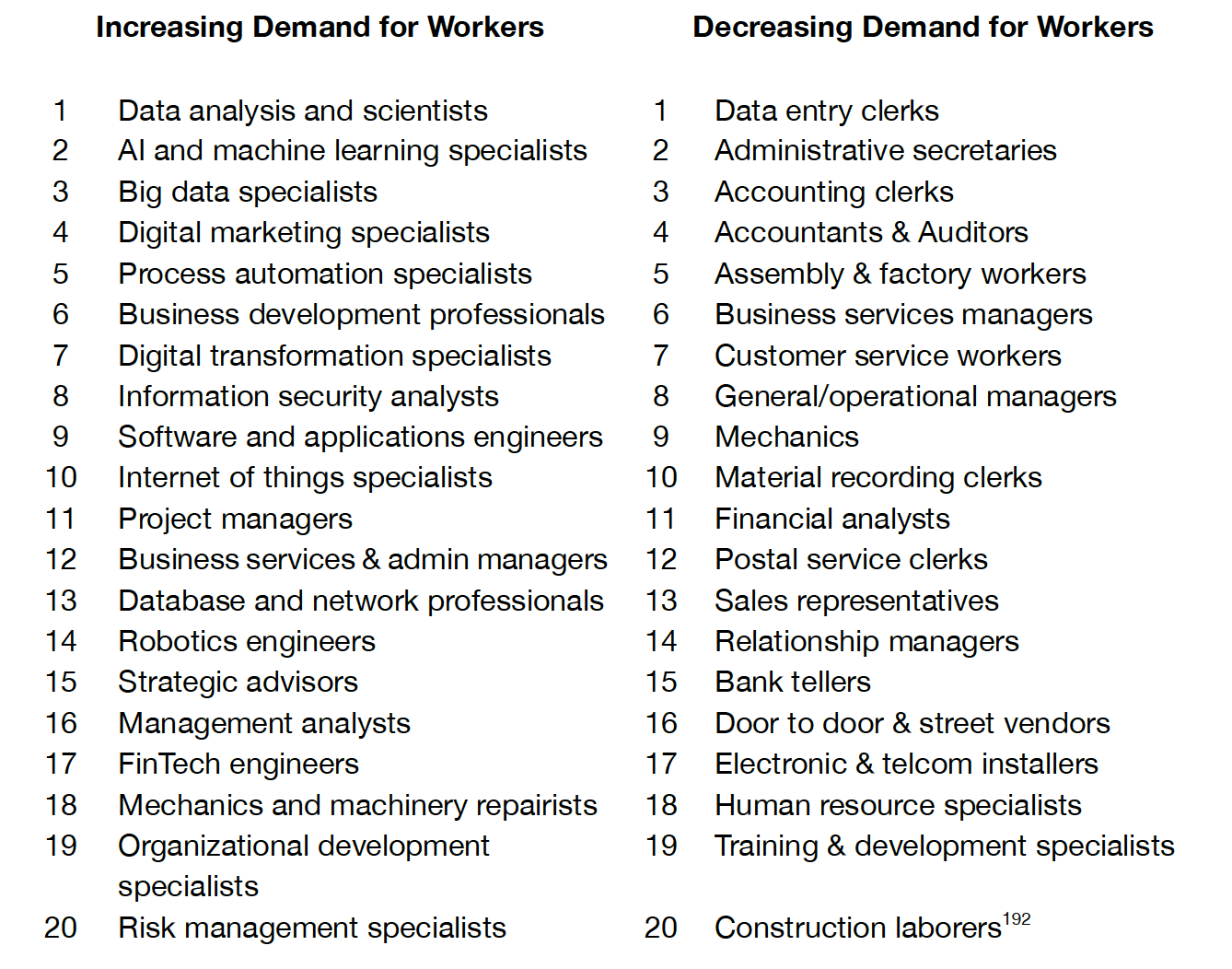
Work Lesson Earned: The automation of work is a global challenge. Millennial and Gen Z generations believed their economic and work futures were guaranteed with any college education. The global challenge is there are not enough high paying jobs for people and specifically recent college graduates.
(1) ‘New Report Warns 80% of Retail Jobs At Risk From Automation’, Oxford Martin School September 1, 2017.
(2) ‘Jobs of Tomorrow’, International Monetary Fund, Winter 2020.
#417 – EXPLOITATION OF HOLLYWOOD WRITERS IS ANOTHER SYMPTOM OF DIGITAL FEUDALISM – DAVID ARDITI
Featured
 The current Hollywood writers strike has drawn international attention to the plight of TV and film writers in the streaming era.
The current Hollywood writers strike has drawn international attention to the plight of TV and film writers in the streaming era.
Much has been made of television’s golden age, during which streaming platforms have offered audiences an abundance of well-written, highly produced television shows, often called “prestige TV.” Continue reading
#417 – A DIFFERENT WAY TO CONSIDER DERATING GUIDELINES – FRED SCHENKELBERG
Featured
 The component choice an electrical engineer starts with the functional requirements of the circuit. Another consideration is the rated values of the specific component selected.
The component choice an electrical engineer starts with the functional requirements of the circuit. Another consideration is the rated values of the specific component selected.
Derating guidelines provide information to compare the component rated values to select stresses or conditions. The intent is to assist the engineering team to select robust enough components for the application. Continue reading
#417 – AUTHORS/PUBLISHERS – CAREERS DISRUPTED – CAPERS JONES
Featured
 The first major discussion about artificial intelligence (AI) took place on the Campus of Dartmouth College in 1956. One result of this meeting was funding by the U.S. and British governments for AI research. The participants in the 1956 meeting included Claude Shannon and Nathan Rochester from IBM, Marvin Minsky, John McCarthy, and others. McCarthy proposed the term “artificial intelligence” which was accepted by the group. Continue reading
The first major discussion about artificial intelligence (AI) took place on the Campus of Dartmouth College in 1956. One result of this meeting was funding by the U.S. and British governments for AI research. The participants in the 1956 meeting included Claude Shannon and Nathan Rochester from IBM, Marvin Minsky, John McCarthy, and others. McCarthy proposed the term “artificial intelligence” which was accepted by the group. Continue reading
#417 – DO THIS TO WIN THE PHISHING WARS – PATRICK OW
Featured
 The Security in Depth’s 2023 State of Cyber Security research project, which surveyed over 3,800 individuals, found a whopping 99% claimed they could identify a phishing attack.
The Security in Depth’s 2023 State of Cyber Security research project, which surveyed over 3,800 individuals, found a whopping 99% claimed they could identify a phishing attack.
What is of concern is 46% of them have clicked on a link they shouldn’t have in the last 12 months! Continue reading
#417 – ESG & ERM – JAMES KLINE PH.D.
Featured
 On July 29, 2022, the International Financial Reporting Standards (IFRS), issued a draft report on Climate Related Financial Reporting. This piece looks at the draft and its relationship to Enterprise Risk Management (ERM). Continue reading
On July 29, 2022, the International Financial Reporting Standards (IFRS), issued a draft report on Climate Related Financial Reporting. This piece looks at the draft and its relationship to Enterprise Risk Management (ERM). Continue reading
#417 – PROJECT MANAGER <=> RISK MANAGER – GREG HUTCHINS
Featured
 True genius resides in the capacity for evaluation of uncertain, hazardous, and conflicting information.
True genius resides in the capacity for evaluation of uncertain, hazardous, and conflicting information.
Winston Churchill – British Prime Minister
Do you agree with these assertions? In VUCA time, all work is risk work. By extension, all management is now risk management. And, all project management is risk management. Continue reading
#416 – SOCCER SUPER STAR TAKING ON CHILD HUNGER – BILL POMFRET PH.D.
Featured
 Manchester United soccer hero Marcus Rashford tackled child poverty, and then his own game.
Manchester United soccer hero Marcus Rashford tackled child poverty, and then his own game.
When the COVID-19 pandemic brought the U.K. to a standstill in the spring of 2020, schoolchildren across the country started going hungry. The free school dinners that millions of kids from lower-income families relied on had stopped. Continue reading
#416 – WHEN TO TAKE ACTION ON FIELD FAILURE DATA – FRED SCHENKELBERG
Featured
 Not much. You need just enough field failure data to identify the root cause and determine if and how to resolve the problem.
Not much. You need just enough field failure data to identify the root cause and determine if and how to resolve the problem.
Field data will accumulate even if your program works diligently to prevent failures.
The actions taken before the reported failure will frame when you need to take action. Continue reading
#416 – DIGITIZE YOUR ONBOARDING – TAMI TROUT
Featured
#416 – AI IS EXCITING & ETHICAL MINEFIELD – MOLLY JACKSON
Featured
 If you’re like me, you’ve spent a lot of time over the past few months trying to figure out what this AI thing is all about. Large-language models, generative AI, algorithmic bias – it’s a lot for the less tech-savvy of us to sort out, trying to make sense of the myriad headlines about artificial intelligence swirling about.
If you’re like me, you’ve spent a lot of time over the past few months trying to figure out what this AI thing is all about. Large-language models, generative AI, algorithmic bias – it’s a lot for the less tech-savvy of us to sort out, trying to make sense of the myriad headlines about artificial intelligence swirling about.
But understanding how AI works is just part of the dilemma. As a society, we’re also confronting concerns about its social, psychological and ethical effects. Here we spotlight articles about the deeper questions the AI revolution raises about bias and inequality, the learning process, its impact on jobs, and even the artistic process. Continue reading
#416 – A SIMPLE FRAMEWORK FOR CRISIS MANAGEMENT – ANDREW SHEVES
Featured
 I want to share a simple framework for crisis response.
I want to share a simple framework for crisis response.
But, if you’re a crisis management professional or corporate communicator, you need to take a deep breath before you read this.
- You’ll want to tell me that you can’t simplify crisis response.
- You’ll want to tell me, ‘It’s not exactly like the standard’.
- You’ll want to tell me that this won’t work for your big clients.
#416 – ONLY THE PARANOID SURVIVE – GREG HUTCHINS PE CERM
Featured
 Your mind is working its best when you’re being paranoid. You explore every avenue and possibility of your situation at high speed with total clarity.
Your mind is working its best when you’re being paranoid. You explore every avenue and possibility of your situation at high speed with total clarity.
Banksy – Street Artist
Healthy paranoia is a necessary condition during these disruptive times. Paranoia is not a medicated condition. Paranoia is not a psychiatric condition. Paranoia is awareness of life disruptions that provide direction in how you work, respond, sustain, improve, and even excel. Continue reading
#415 – WE’RE DUE FOR ANOTHER GLOBAL HEALTH EMERGENCY – BILL POMFRET PH.D.
Featured
 COVID wasn’t the last large-scale outbreak. The next one is right around the corner. In the last two decades, the world has experienced an alarming number of destructive outbreaks: SARS, MERS, Ebola, Zika and, of course, COVID-19. And although COVID is here to stay, it won’t always cause the level of disruption we’ve experienced to this point. Continue reading
COVID wasn’t the last large-scale outbreak. The next one is right around the corner. In the last two decades, the world has experienced an alarming number of destructive outbreaks: SARS, MERS, Ebola, Zika and, of course, COVID-19. And although COVID is here to stay, it won’t always cause the level of disruption we’ve experienced to this point. Continue reading
#415 – DESIGN OF EXPERIMENTS – FRED SCHENKELBERG
Featured
 During the design phase, we make decisions that create the eventual reliability performance of a product.
During the design phase, we make decisions that create the eventual reliability performance of a product.
It is the decisions we make that matter.
Also during the design phase, we explore numerous questions.
- Is this the right solution to provide a function?
- Does vendor A provide a robust solution?
- How will manufacturing variability impact quality?
- Will this design work for all customer situations and environments?
#415 – GENERATIVE AI: 5 ESSENTIAL READS – ERIC SMALLEY
Featured
 The light and dark sides of AI have been in the public spotlight for many years. Think facial recognition, algorithms making loan and sentencing recommendations, and medical image analysis. But the impressive – and sometimes scary – capabilities of ChatGPT, DALL-E 2 and other conversational and image-conjuring artificial intelligence programs feel like a turning point. Continue reading
The light and dark sides of AI have been in the public spotlight for many years. Think facial recognition, algorithms making loan and sentencing recommendations, and medical image analysis. But the impressive – and sometimes scary – capabilities of ChatGPT, DALL-E 2 and other conversational and image-conjuring artificial intelligence programs feel like a turning point. Continue reading
#415 – PROJECT MANAGEMENT: INGREDIENT FOR SUCCESS OR RECIPE FOR DISASTER – MALCOLM PEART
Featured
 Project Management proponents can make, or break, a project through an amalgamation of theory, practice, and experience. As with any amalgam, and even if the right ingredients are selected, if those ingredients aren’t mixed properly and in the correct proportions or at the right time, the end result can be disastrous. Project management isn’t just adding water and mixing! Continue reading
Project Management proponents can make, or break, a project through an amalgamation of theory, practice, and experience. As with any amalgam, and even if the right ingredients are selected, if those ingredients aren’t mixed properly and in the correct proportions or at the right time, the end result can be disastrous. Project management isn’t just adding water and mixing! Continue reading
#415 – WHAT IS THE FOURTH TURNING? – JAMES TONEY
Featured
 Did the Fourth Turning book, published in 1997 cataloging historical events, offer insight into what might happen in the next few years? (1) Can we learn from it to become aware of risks and opportunities, to be prepared for what may be coming?
Did the Fourth Turning book, published in 1997 cataloging historical events, offer insight into what might happen in the next few years? (1) Can we learn from it to become aware of risks and opportunities, to be prepared for what may be coming?
“The best prophet of the future is the past.” Lord Byron (2) Continue reading
#415 – WHEN SHOULD YOU SELF-DISRUPT? – GREG HUTCHINS PE CERM
Featured
 When you make the decision to start something new, first figure out the jobs you want to do. Then position yourself to play where no one else is playing.
When you make the decision to start something new, first figure out the jobs you want to do. Then position yourself to play where no one else is playing.
Whitney Johnson – Writer
When should you self-disrupt? There’s no easy answer. However, it’s about your personal risk appetite. Do you think you need to change or self-disrupt? Is the pain of self-disrupting less than the pain of staying the way or where you are? Self-disruption is difficult. Most of us want to take the path of least resistance (risk averse) and not change. Continue reading
#414 – ROLE OF LEGENDS IN YOUR RELIABILITY PROGRAM – FRED SCHENKELBERG
Featured
 One of my favorite things to do when visiting a new company, it at lunch or during a break, ask:
One of my favorite things to do when visiting a new company, it at lunch or during a break, ask:
“Any major disasters that impacted reliability?”
Typically, there are three stories that start with, “Remember the… “, or, “One time…”
It seems every organization has legendary stories in the organizational memory. Continue reading
#414 – SUPPLY CHAIN CONNECTIVITY TO GROW YOUR BUSINESS – ROBERT MAZUCCA
Featured
#414 – THE COLORADO RIVER DROUGHT CRISIS – JENNIFER WEEKS
Featured
A 23-year western drought has drastically shrunk the Colorado River, which provides water for drinking and irrigation for Wyoming, Colorado, Utah, New Mexico, Arizona, Nevada, California and two states in Mexico. Under a 1922 compact, these jurisdictions receive fixed allocations of water from the river – but now there’s not enough water to provide them. Continue reading
#414 – PROJECT LEADERSHIP AND FOLLOWERSHIP – MALCOLM PEART
Featured
 There are thousands of studies on leadership. We have a multitude of postings on social media as well as a myriad of academic tombs, dissertations, and theses as to what leadership is and sometimes what it isn’t. People strive to understand leadership be it inspirational, transformational, situational, charismatic, transactional, autocratic, democratic, strong, or weak…the qualifiers go on. Continue reading
There are thousands of studies on leadership. We have a multitude of postings on social media as well as a myriad of academic tombs, dissertations, and theses as to what leadership is and sometimes what it isn’t. People strive to understand leadership be it inspirational, transformational, situational, charismatic, transactional, autocratic, democratic, strong, or weak…the qualifiers go on. Continue reading
#414 – REPEAT AFTER ME: I AM AN ENTREPRENEUR – BILL POMFRET PH.D.
Featured
 What image does the word ‘entrepreneur’ conjure up in your mind? Maybe Silicon Valley vibes? Sneakers. White tees, a big open-plan offices, Solving the world’s biggest problems, or is it more pin strip suits… doing deals and making money!? Those were the images that came up for me… Continue reading
What image does the word ‘entrepreneur’ conjure up in your mind? Maybe Silicon Valley vibes? Sneakers. White tees, a big open-plan offices, Solving the world’s biggest problems, or is it more pin strip suits… doing deals and making money!? Those were the images that came up for me… Continue reading
#414 – GETTING IT – GREG HUTCHINS PE CERM
Featured
 Life can only be understood backwards; but it must be lived forwards.
Life can only be understood backwards; but it must be lived forwards.
Søren Kierkegaard – Philosopher
Several years ago, there was an ad for Putnam Investments:
“You think you understand the situation, but what you don’t understand is the situation just changed.”
Amen! This seems to be a fundamental Disruption Rule: When I think I’ve just got it, ‘got’ and ‘it’ both seem to have changed. This could be on a global, business, and personal level. Continue reading
#413 – REWARDS AND INCENTIVES: HAVE AN IMPACT ON RELIABILITY – FRED SCHENKELBERG
Featured
 A maxim of business management is to measure what is important.
A maxim of business management is to measure what is important.
The focus on aligning metrics, rewards, and incentives is not a new concept. Many businesses create target focused incentives with the expectation it will assist achieving those important business goals.
In many cases, simply monitoring a metric improve the team’s ability to achieve a specific goal. Continue reading
#413 – HISTORY OF COMPUTERS AND AI- CAPERS JONES
Featured
 This talk starts before computers with the development of numbering systems and in particular the development and use of the number 0 and of negative numbers. The report also discusses the evolution of mathematical operations such as multiplication and division, as precursors to mechanical computation. The practical use of numbers in fields such as architecture, astronomy, road building, and navigation will be discussed. Continue reading
This talk starts before computers with the development of numbering systems and in particular the development and use of the number 0 and of negative numbers. The report also discusses the evolution of mathematical operations such as multiplication and division, as precursors to mechanical computation. The practical use of numbers in fields such as architecture, astronomy, road building, and navigation will be discussed. Continue reading
#413 – INTEGRATED PERFORMANCE, RISK, AND COMPLIANCE REPORTING – PATRICK OW
Featured
 When it comes to reporting organisational performance, risks, and compliance, especially in an integrated manner, we have become lazy or opportunistic.
When it comes to reporting organisational performance, risks, and compliance, especially in an integrated manner, we have become lazy or opportunistic.
A risk manager once told me how she has put together three arch lever folders of documentation for the upcoming Board meeting in her organisation. And she was so proud of her achievements!
Three things crossed my mind when she said that. Continue reading
#413 – DON’T BET WITH CHAT GPT – MAYANK KEJRIWAL
Featured
 The past few years have seen an explosion of progress in large language model artificial intelligence systems that can do things like write poetry, conduct humanlike conversations and pass medical school exams. This progress has yielded models like ChatGPT that could have major social and economic ramifications ranging from job displacements and increased misinformation to massive productivity boosts. Continue reading
The past few years have seen an explosion of progress in large language model artificial intelligence systems that can do things like write poetry, conduct humanlike conversations and pass medical school exams. This progress has yielded models like ChatGPT that could have major social and economic ramifications ranging from job displacements and increased misinformation to massive productivity boosts. Continue reading
#413 – PROBLEM SOLVING: PUTTING THE PIECES TOGETHER – BILL POMFRET PH.D.
Featured
 Sometimes, how you approach one problem is like how you approach an entirely different one.
Sometimes, how you approach one problem is like how you approach an entirely different one.
One of the better parts of the COVID-19 pandemic was discovering that I liked to do jigsaw puzzles—at least those 1,000 pieces or fewer; I do not have the talent or patience for anything larger or 3D. Continue reading
#413 – WHAT’S THE MEANING OF YOUR LIFE? – GREG HUTCHINS PE CERM
Featured
 What have you and I been put on this Earth to do?
What have you and I been put on this Earth to do?
Steven Pressfield – Author and Historian
Clayton Christiansen, father of contemporary disruption, developed a Harvard Business School (HBS) course addressing the above question. The purpose of the course was to engage very bright people to reflect on their lives and disrupt it intentionally. He saw many successful people were horribly unhappy with divorces and substance abuse. Continue reading
#412 – RELIABILITY QUESTIONS TO ASK YOUR SUPPLIER – FRED SCHENKELBERG
Featured
 Here’s a question for you: Do you ask your suppliers the right questions concerning reliability?
Here’s a question for you: Do you ask your suppliers the right questions concerning reliability?
Probably not.
If you are getting the right information from your suppliers, then you would enjoy few supplier related field issues, or as little downtime or low warranty costs.
Asking the right set of questions will help you gain the understanding you need to improve your reliability performance. Continue reading
#412 – MINIMIZING THE RISK OF SOFTWARE LITIGATION – CAPERS JONES
Featured
 There are millions of software projects in the world, and thousands of software technologies available. This means that research into topics that affect software project outcomes is of necessity a complicated issue. By concentrating on the extreme ends of possible results, it is easier to see the root causes of success and failure. Continue reading
There are millions of software projects in the world, and thousands of software technologies available. This means that research into topics that affect software project outcomes is of necessity a complicated issue. By concentrating on the extreme ends of possible results, it is easier to see the root causes of success and failure. Continue reading
#412 – WATERMARKING CHATGPT, DALL E COULD HELP PROTECT AGAINST FRAUD – HANY FARID PH.D.
Featured
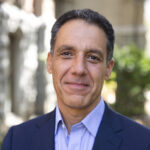 Shortly after rumors leaked of former President Donald Trump’s impending indictment, images purporting to show his arrest appeared online. These images looked like news photos, but they were fake. They were created by a generative artificial intelligence system.
Shortly after rumors leaked of former President Donald Trump’s impending indictment, images purporting to show his arrest appeared online. These images looked like news photos, but they were fake. They were created by a generative artificial intelligence system.
Generative AI, in the form of image generators like DALL-E, Midjourney and Stable Diffusion, and text generators like Bard, ChatGPT, Chinchilla and LLaMA, has exploded in the public sphere. By combining clever machine-learning algorithms with billions of pieces of human-generated content, these systems can do anything from create an eerily realistic image from a caption, synthesize a speech in President Joe Biden’s voice, replace one person’s likeness with another in a video, or write a coherent 800-word op-ed from a title prompt. Continue reading
#412 – WHY I BECAME A CAREER COACH AND MENTOR – BILL POMFRET
Featured
 For several years, I have been a career coach and mentor because after twenty years working in occupational health & safety, I had some questions:
For several years, I have been a career coach and mentor because after twenty years working in occupational health & safety, I had some questions:
1) Why does every resume look the same? I am doing more.
2) Why are executives reluctant to learn about health & safety, over the years I have been shocked that potential executives, possible candidates to use my coaching and mentorship skills, many display such stiff, robotic language in their branding (“Results-oriented professional with a bottom-line orientation,” for instance.) This language hurts them! It sucks all their personality out of their resume. Continue reading
#412 – HOW TO PLAN A GREAT CRISIS EXERCISE – ANDREW SHEVES
Featured
 Exercises are an essential part of skills development and, for things like emergencies and crises, the only way to build these skills outside of an actual event, events that are thankfully few and far between. But creating a successful exercise takes a lot of work and planning – you can’t just throw some problems at a group of people and hope they’ll learn from the experience.
Exercises are an essential part of skills development and, for things like emergencies and crises, the only way to build these skills outside of an actual event, events that are thankfully few and far between. But creating a successful exercise takes a lot of work and planning – you can’t just throw some problems at a group of people and hope they’ll learn from the experience.
So how do you plan a great crisis exercise? Continue reading
#412 – RISE OF THE NEO-LUDDITES – GREG HUTCHINS
Featured
 We have displacement and a failure to create shared prosperity, but we are not heading to an economy without human labor anytime soon.
We have displacement and a failure to create shared prosperity, but we are not heading to an economy without human labor anytime soon.
Daron Acemoglu – MIT professor
We’re on a Tech Futures voyage driven by COVID and AI, which will unleash a lot more tech. And, it’ll be a bumpy ride. People won’t like it and don’t want it. Let’s go back to our Handy Work Model and look at significant upside and downside risks: Continue reading
#411 – FIVE WAYS YOU KNOW A RELIABILITY PROGRAM IS WORKING – FRED SCHENKELBERG
Featured
 When your reliability program is working well, it may be difficult to recognize the benefits incurred.
When your reliability program is working well, it may be difficult to recognize the benefits incurred.
Likewise, when the program is not working, it is obvious.
As you work to improve your program, keep in mind you may need to include elements to ensure your efforts remain visible.
I don’t mean staging field issues that you can solve quickly, rather that you are able to show the impact you and your program make to the organization. Continue reading
#411 – SEVEN TIPS FOR FINDING HAPPINESS AT WORK – GARY COOPER
Featured
 Work, it’s something most of us do though it isn’t always enjoyable. Whether it’s long hours, gruelling tasks or just the repetitive nature of a day-to-day routine, work can sometimes be something we have to do rather than something we want to do.
Work, it’s something most of us do though it isn’t always enjoyable. Whether it’s long hours, gruelling tasks or just the repetitive nature of a day-to-day routine, work can sometimes be something we have to do rather than something we want to do.
But given that the average person will spend 90,000 hours at work over a lifetime it makes sense to try and enjoy it if you can. So what can you do to be happier at work and reduce stress? Continue reading
#411 – 12 AREAS WHERE COMPUTERS INFLUENCE MODERN LIVING – CAPERS JONES
Featured
 In all human history a few important inventions have changed the way people work and live. Among these key inventions are airplanes, automobiles, electric power, and personal computers. Airplanes allowed people and products to move from city to city and county to county in only a few hours. Automobiles allowed people to work and shop miles from where they lived. Electric power allowed people to work and entertain at night as well as bringing out a host of new appliances such as refrigerators and air-conditioning. Continue reading
In all human history a few important inventions have changed the way people work and live. Among these key inventions are airplanes, automobiles, electric power, and personal computers. Airplanes allowed people and products to move from city to city and county to county in only a few hours. Automobiles allowed people to work and shop miles from where they lived. Electric power allowed people to work and entertain at night as well as bringing out a host of new appliances such as refrigerators and air-conditioning. Continue reading
#411 – BUILD AUTHENTIC LEADERSHIP THROUGH STORYTELLING – BILL POMFRET PH.D.
Featured
 How did I build authentic leadership through storytelling? Think about the impact Pixar movies have not only on kids but adults, too! For example, Cars teaches how to be a respected and strong leader. Remember Lightning McQueen going through the process of self-discovery and learning what it takes to be an effective leader? Great storytelling is memorable and moves us to change. Continue reading
How did I build authentic leadership through storytelling? Think about the impact Pixar movies have not only on kids but adults, too! For example, Cars teaches how to be a respected and strong leader. Remember Lightning McQueen going through the process of self-discovery and learning what it takes to be an effective leader? Great storytelling is memorable and moves us to change. Continue reading
#411 – FOUR TAKEAWAYS FROM RECENT BANKING FLAME OUTS – ANDREW SHEVES
Featured
 In the last few weeks, US banks Silvergate, Signature, and the Silicon Valley Bank (SVB) collapsed, while First Republic Bank required a $30bn bailout from larger Wall Street Firms. Meanwhile, in Europe, the Swiss bank Credit Suisse has been bought by rival UBS.
In the last few weeks, US banks Silvergate, Signature, and the Silicon Valley Bank (SVB) collapsed, while First Republic Bank required a $30bn bailout from larger Wall Street Firms. Meanwhile, in Europe, the Swiss bank Credit Suisse has been bought by rival UBS.
Each of these banks was in a different position, and no single factor caused these banks to get into trouble. However, these recent events provide some essential takeaways for risk and communications managers. Continue reading
#411 – AI RELATIONSHIPS – GREG HUTCHINS PE CERM
Featured
 The development of full artificial intelligence could spell the end of the human race.
The development of full artificial intelligence could spell the end of the human race.
Stephen Hawking – Physicist
Alexa, my Samsung TV, and most of our connected home products can talk to me and each other. But, machine smartness is causing problems. Big Brother smart machines seem to be always watching, recording, listening and monitoring. CCTV is filming and surveilling. Continue reading
#410 – STARTING A CAREER IN RELIABILITY ENGINEERING – FRED SCHENKELBERG
Featured
 Reliability engineers all have a start.
Reliability engineers all have a start.
A point zero.
The transition point from pursuing something else, or nothing at all, then we begin our journey as a reliability engineering professional.
Getting started can be difficult and at times overwhelming.
Then you find Accendo Reliability and there is a lot of great content, maybe too much. So, this short article has the intent to create a starting point for you. Continue reading
#410 – US GOVERNMENT ERM SURVEY – JAMES KLINE PH.D.
Featured
 On October 27, 2022, The Association of Federal Enterprise Risk Management (AFERM) in conjunction with Guidehouse released the results of the eighth consecutive survey of federal agencies on their Enterprise Risk Management (ERM) efforts. This piece looks at the survey results. Continue reading
On October 27, 2022, The Association of Federal Enterprise Risk Management (AFERM) in conjunction with Guidehouse released the results of the eighth consecutive survey of federal agencies on their Enterprise Risk Management (ERM) efforts. This piece looks at the survey results. Continue reading
#410 – INCIDENT MANAGEMENT AND WHY IT’S IMPORTANT – BILL POMFRET PH.D.
Featured
 How many incidents, hazards and near misses does your organisation experience in a year? Failing to manage and resolve incidents not only puts your employees’ well-being at risk but also the future of your organisation. In this article, we will examine 10 common signs that indicate you need a better incident reporting process, we share the key benefits of bringing your incident management process online, and we explore the technology available to build a best-practice framework for incident reporting. Continue reading
How many incidents, hazards and near misses does your organisation experience in a year? Failing to manage and resolve incidents not only puts your employees’ well-being at risk but also the future of your organisation. In this article, we will examine 10 common signs that indicate you need a better incident reporting process, we share the key benefits of bringing your incident management process online, and we explore the technology available to build a best-practice framework for incident reporting. Continue reading
#410 – ARE ROBOTS (AI) COMING FOR KID’S JOB – GREG HUTCHINS PE CERM
Featured
 Are Robots Coming for Your Job? ‘Eventually, Yes’.
Are Robots Coming for Your Job? ‘Eventually, Yes’.
Headline of N.Y. Times Article
Would you like to see your favorite actor in a movie, TV program, or Netflix? Or, would a computer-generated facsimile of a similar actor work just as well for you? Or, at what point is the quality and illusion of reality good enough to entertain you? Continue reading
#410 – MANUFACTURING IS FOR ANYONE WHO WANTS TO SOLVE PROBLEMS AND SERVE CUSTOMERS – SARAH DVORAK
Featured
 Sarah Dvorak didn’t originally plan on a career in manufacturing, but her first career was not a good fit. Luckily, the opportunity to be part of a volunteer focus team brainstorming ways to reduce scrap and rework at a manufacturing plant led her in a new direction, and she’s been in manufacturing ever since. Continue reading
Sarah Dvorak didn’t originally plan on a career in manufacturing, but her first career was not a good fit. Luckily, the opportunity to be part of a volunteer focus team brainstorming ways to reduce scrap and rework at a manufacturing plant led her in a new direction, and she’s been in manufacturing ever since. Continue reading
#410 – AI ISN’T CLOSE TO BEING SENTIENT – NIR EISIKOVITS
Featured
 ChatGPT and similar large language models can produce compelling, humanlike answers to an endless array of questions – from queries about the best Italian restaurant in town to explaining competing theories about the nature of evil.
ChatGPT and similar large language models can produce compelling, humanlike answers to an endless array of questions – from queries about the best Italian restaurant in town to explaining competing theories about the nature of evil.
The technology’s uncanny writing ability has surfaced some old questions – until recently relegated to the realm of science fiction – about the possibility of machines becoming conscious, self-aware or sentient. Continue reading
#409 – INTRODUCTION TO DERATING – FRED SCHENKELBERG
Featured
 Derating is the selection of components and materials according to a set of standardized safety-margin definitions.
Derating is the selection of components and materials according to a set of standardized safety-margin definitions.
It is used by design engineers to ensure the selected elements of the design do not experience performance problems due to overstress conditions. Continue reading
#409 – CALIFORNIA (USA) GOVERNMENT RISK REPORTING – JAMES KLINE PH.D.
Featured
 In 2015, the California Legislature passed the State Leadership Accountability Act (SLAA). The act updated previous legislation. The purpose of SLAA was to broaden the reporting requirements to operational and programmatic activities. It reemphasized the responsibility of management to establish and maintain effective systems of internal controls. It also set up bi-annual reporting requirements and included risk assessment as part of the internal controls. Continue reading
In 2015, the California Legislature passed the State Leadership Accountability Act (SLAA). The act updated previous legislation. The purpose of SLAA was to broaden the reporting requirements to operational and programmatic activities. It reemphasized the responsibility of management to establish and maintain effective systems of internal controls. It also set up bi-annual reporting requirements and included risk assessment as part of the internal controls. Continue reading
#409 – HOW DANGEROUS WAS THE OHIO CHEMICAL TRAIN DERAILMENT? – ANDREW J. WHELTON
Featured
 Headaches and lingering chemical smells from a fiery train derailment in East Palestine, Ohio, have left residents worried about their air and water – and misinformation on social media hasn’t helped. Continue reading
Headaches and lingering chemical smells from a fiery train derailment in East Palestine, Ohio, have left residents worried about their air and water – and misinformation on social media hasn’t helped. Continue reading
#409 – WORKFORCE ATTRACTION AND RETENTION STRATEGY – MATT FIELDMAN
Featured
#409 – GUIDE TO HEALTHY BUILDINGS – BILL POMFRET PH.D.
Featured
 Some years ago, I was contracted to perform an audit of three government of Canada building, just over the bridge from Ottawa in Quebec. After meeting with the Occupational Health & Safety committee members, I decided to follow up on some of the concerns, it was not rocket science, in the basement, which was the carpark, plaster was flaking off the walls with water accumulating in puddles. Continue reading
Some years ago, I was contracted to perform an audit of three government of Canada building, just over the bridge from Ottawa in Quebec. After meeting with the Occupational Health & Safety committee members, I decided to follow up on some of the concerns, it was not rocket science, in the basement, which was the carpark, plaster was flaking off the walls with water accumulating in puddles. Continue reading
#409 – JOBS THAT WILL BE AUTOMATED – GREG HUTCHINS
Featured
 You’re either the one that creates the automation or you’re getting automated.
You’re either the one that creates the automation or you’re getting automated.
Tom Preston – Werner – Software Developer
Automation is not only about displacing work. Automation focuses on performing dangerous, repetitive or boring tasks. In other words, automation also focuses on enhancing the work that is done by people Continue reading
#408 – FUNDAMENTAL SET OF RELIABILITY ENGINEERING TOOLS – FRED SCHENKELBERG
Featured
 In a single meeting, you may need to structure a reliability model, create estimates, outline test plans, and discuss a field failure. The breadth of tools and knowledge to be effective is staggering.
In a single meeting, you may need to structure a reliability model, create estimates, outline test plans, and discuss a field failure. The breadth of tools and knowledge to be effective is staggering.
No two problems, questions, situations, or industries are the same. Thus, the solutions you provide must differ as well. If you enjoy a complete set of reliability engineering tools at your disposal, you are well situated to address any question. Continue reading
#408 – LEVERAGING PROCESS FAILURE MODE & EFFECTS ANALYSIS (PFMEA) – DUKE OKES
Featured
 The primary core use of a pFMEA is to analyze a new process to identify potential failures within the process and evaluate the planned prevention & detection controls to determine the degree of risk (see Table 1).
The primary core use of a pFMEA is to analyze a new process to identify potential failures within the process and evaluate the planned prevention & detection controls to determine the degree of risk (see Table 1).
Unfortunately, once the FMEA is complete the document often just sits “on the shelf” until the next major revision to the process, when it is hopefully used to analyze the planned changes. There are, however, many other potential uses for the FMEA that can leverage the information gained from the analysis. Here are five examples: Continue reading
#408 – POWERFUL AI IS ALREADY HERE: TO USE IT RESPONSIBLY WE NEED TO MITIGATE BIAS – APOSTOL VASSILEV
Featured
 We are all witnessing a revolution in the progress of artificial intelligence (AI) and its adoption. AI’s latest content creation capabilities have created an enormous interest in the media and the public.
We are all witnessing a revolution in the progress of artificial intelligence (AI) and its adoption. AI’s latest content creation capabilities have created an enormous interest in the media and the public.
ChatGPT most recently demonstrated an astonishing ability to generate coherent text when you ask it to write an essay or answer a question. Along with excitement, many ethical questions immediately popped up. Are these systems able to reason on par with humans? Are they aware of the content they generate? Are their answers fair and unbiased? Continue reading
#408 – EXECUTIVE COACHING ON SAFETY – BILL POMFRET PH.D.
Featured
 One of my favourite safety consulting activities is to provide executives with coaching, which I find very rewarding both in individual change and over time see the clients culture change. There are reasons why the best organizations across industries provide executive coaching to their leaders. Continue reading
One of my favourite safety consulting activities is to provide executives with coaching, which I find very rewarding both in individual change and over time see the clients culture change. There are reasons why the best organizations across industries provide executive coaching to their leaders. Continue reading
#408 – RACE AGAINST THE MACHINE – GREG HUTCHINS PE CERM
Featured
 “… computers are now doing many things that used to be the domain of people only. The pace and scale of this encroachment into human skills is relatively recent and has profound economic implications. Perhaps the most important of these is that while digital progress grows the overall economic pie, it can do so while leaving some people, or even a lot of them, worse off.”(1)
“… computers are now doing many things that used to be the domain of people only. The pace and scale of this encroachment into human skills is relatively recent and has profound economic implications. Perhaps the most important of these is that while digital progress grows the overall economic pie, it can do so while leaving some people, or even a lot of them, worse off.”(1)
Erik Brynjolfsson and Andy McAfee – Authors of Race Against the Machine Continue reading
#408 – ERM AND CLIMATE RISK – JAMES KLINE PH.D.
Featured
 On July 29, 2022, the International Financial Reporting Standards (IFRS), issued a draft report on Climate Related Financial Reporting. This piece looks at the draft and its relationship to Enterprise Risk Management (ERM). Continue reading
On July 29, 2022, the International Financial Reporting Standards (IFRS), issued a draft report on Climate Related Financial Reporting. This piece looks at the draft and its relationship to Enterprise Risk Management (ERM). Continue reading
#407 – BUSINESS CONTINUITY PLANS: LESSONS LEARNED FROM PUERTO RICO – FRANCISCO GARCIA
Featured
 The pandemic and subsequent supply chain disruptions have been harsh reminders of the need for manufacturers to create or update their business continuity plan (BCP). Disruptions of some sort are likely, and manufacturers must be prepared for all types of scenarios including natural disasters, technical failures and cyberattacks. Continue reading
The pandemic and subsequent supply chain disruptions have been harsh reminders of the need for manufacturers to create or update their business continuity plan (BCP). Disruptions of some sort are likely, and manufacturers must be prepared for all types of scenarios including natural disasters, technical failures and cyberattacks. Continue reading
#407 – FIRST STEPS WITH DATA – FRED SCHENKELBERG
Featured
 Once word got out that I was taking graduate-level courses in statistics, I dreaded the knock on the door. Colleagues, some of which I knew and others from some far reach of the company, would ask if I could take a look at their data. I didn’t learn the necessary first steps with a stack of data in class. Continue reading
Once word got out that I was taking graduate-level courses in statistics, I dreaded the knock on the door. Colleagues, some of which I knew and others from some far reach of the company, would ask if I could take a look at their data. I didn’t learn the necessary first steps with a stack of data in class. Continue reading
#407 – MY TOP 5 PRINCIPLES FOR BECOMING A HIGHLY SOUGHT PROJECT RISK MANAGEMENT PROFESSIONAL – MARK TURNER
Featured
 It’s not where you start, it’s where you end up!
It’s not where you start, it’s where you end up!
Some people are trained, others are coached, and the majority are simply thrown into the deep end of learning how to be a project risk manager. No two people’s journey into project risk is ever the same. Unfortunately, there are no quick routes to learning how to be a project risk manager, but there are a few key elements that every risk manager should be aware of. Continue reading
#407 – NIST RISK MANAGEMENT FRAMEWORK (NIST RMF) AIMS TO IMPROVE TRUSTWORTHINESS OF AI – NIST
Featured
T he U.S. Department of Commerce’s National Institute of Standards and Technology (NIST) has released its Artificial Intelligence Risk Management Framework (AI RMF 1.0), a guidance document for voluntary use by organizations designing, developing, deploying or using AI systems to help manage the many risks of AI technologies. Continue reading
he U.S. Department of Commerce’s National Institute of Standards and Technology (NIST) has released its Artificial Intelligence Risk Management Framework (AI RMF 1.0), a guidance document for voluntary use by organizations designing, developing, deploying or using AI systems to help manage the many risks of AI technologies. Continue reading
#407 – LEARNING FROM FAILURES – BILL POMFRET PH.D.
Featured
 “Learning from failure is essential for continuous improvement. It helps us understand the reasons why things go wrong and informs what approaches we can and should take to avoid similar adverse outcomes in the future”. Continue reading
“Learning from failure is essential for continuous improvement. It helps us understand the reasons why things go wrong and informs what approaches we can and should take to avoid similar adverse outcomes in the future”. Continue reading
#407 – FUTURE OF WORK @ RISK – GREG HUTCHINS
Featured
 Current robots are only able to replace people in very limited circumstances. And people don’t want to work in factories. They want more comfortable jobs. That is what happens when standards of living and education rise. All people everywhere aspire to better lives.
Current robots are only able to replace people in very limited circumstances. And people don’t want to work in factories. They want more comfortable jobs. That is what happens when standards of living and education rise. All people everywhere aspire to better lives.
Rodney Brooks- Robot Engineer Continue reading
#406 – ACCENDO RELIABILITY AND WRITING – FRED SCHENKELBERG
Featured
 While I’m not much of a New Year’s Resolution guy, I guess I’ve set a resolution. I need to restart writing weekly articles for Accendo Reliability.
While I’m not much of a New Year’s Resolution guy, I guess I’ve set a resolution. I need to restart writing weekly articles for Accendo Reliability.
The thing is, I struggle to write. Plenty of other interests and tasks keep me away from the keyboard. Yet, as I explained to a few new authors how writing and posting on Accendo Reliability is a good thing, I realized I have been putting off hitting the keyboard again. Continue reading
#406 – DEMYSTIFYING ROLE OF IT IN BUSINESS CONTINUITY – NARESH RAO
Featured
#406 – LIFELONG ENTREPRENEUR – FOUNDER OF IYA FOODS – TOYIN KOLAWOLE
Featured
 This blog is the first in a series for Black History Month to celebrate and share the stories of Black American manufacturing leaders.
This blog is the first in a series for Black History Month to celebrate and share the stories of Black American manufacturing leaders.
Toyin Kolawole is the founder and CEO of Iya Foods, a nourishment-focused food company inspired by her African roots and located in Illinois. Toyin grew up in Lagos, Nigeria, assisting with her family’s numerous entrepreneurial ventures, which included a small convenience drug store and a fast food business. Continue reading
#406 – INTRODUCTION TO HEALTHY BUILDINGS – BILL POMFRET PH.D.
Featured
 Some years ago, I was contracted to perform an audit of three government of Canada building, just over the bridge from Ottawa in Quebec. After meeting with the Occupational Health & Safety committee members, I decided to follow up on some of the concerns, it was not rocket science, in the basement, which was the carpark, plaster was flaking off the walls with water accumulating in puddles. Continue reading
Some years ago, I was contracted to perform an audit of three government of Canada building, just over the bridge from Ottawa in Quebec. After meeting with the Occupational Health & Safety committee members, I decided to follow up on some of the concerns, it was not rocket science, in the basement, which was the carpark, plaster was flaking off the walls with water accumulating in puddles. Continue reading
#406 – IMPLEMENT ANTICIPATORY SOLUTIONS INSTEAD OF REACTIVE RESPONSES – DANIEL BURRUS
Featured
 In years past, many businesses have succeeded with an agile, reactive approach to business where they respond to climate, competition, and social circumstances in an “after the fact” way. This focus was predominantly on responding to disruptions as they came in, putting out fires to solve issues. Continue reading
In years past, many businesses have succeeded with an agile, reactive approach to business where they respond to climate, competition, and social circumstances in an “after the fact” way. This focus was predominantly on responding to disruptions as they came in, putting out fires to solve issues. Continue reading
#406 – NO COLLEGE DEGREE – NO PROBLEM – GREG HUTCHINS
Featured
 Just because I don’t have a college degree doesn’t mean I’m not smart!
Just because I don’t have a college degree doesn’t mean I’m not smart!
Emma Stone – Actress
What’s your value-add to me – your employer? This is what most employers think? Tough thinking. Well, that’s the basis of a free market economy. Continue reading
#405 – CYBER CRIMINALS ARE HOLDING EDUCATION FOR RANSOM – BILL POMFRET PH.D.
Featured
 Just when we wonder what is next for the Cyber Criminals, they attack the colleges and Universities. The financial costs of school ransomware, the days lost to downtime and the number of students impacted, as these incidents snowball and become a steady source of criminal income. The history of ransomware, the most damaging ransomware attacks, and the future for this threat. Continue reading
Just when we wonder what is next for the Cyber Criminals, they attack the colleges and Universities. The financial costs of school ransomware, the days lost to downtime and the number of students impacted, as these incidents snowball and become a steady source of criminal income. The history of ransomware, the most damaging ransomware attacks, and the future for this threat. Continue reading
#405 – ARE YOU IN THE FLOW ZONE? – GREG HUTCHINS
Featured
 ‘Think in simples’ as my old master used to say – meaning to reduce the whole to its parts in simplest terms, getting back to first principles.
‘Think in simples’ as my old master used to say – meaning to reduce the whole to its parts in simplest terms, getting back to first principles.
Frank Lloyd Wright – Architect
When you’re working, ‘are you in the flow’? This is the same idea of ‘being in the zone’ in sports or exercising Intentional Self-Management. The answer to this seeming simple question can make the difference between fun and dreading your work in VUCA time. Read on… Continue reading
#405 – QUALITY AND RISK MANAGEMENT: ARE THEY DIFFERENT – NARESH RAO
Featured
General Overview
 Rao specializes in Management Systems. His experience in Audits & Trainings since 1986 when started carrier and in III Party Certifications since 1996. Experience in auditing and trainings in different standards and the integration of the same. Designed many training modules (standard and customized). Instrumental in establishing certification business in India like AQSR etc., from the scratch and growing (client wise and financially) with track record of value addition to client’s management system.
Rao specializes in Management Systems. His experience in Audits & Trainings since 1986 when started carrier and in III Party Certifications since 1996. Experience in auditing and trainings in different standards and the integration of the same. Designed many training modules (standard and customized). Instrumental in establishing certification business in India like AQSR etc., from the scratch and growing (client wise and financially) with track record of value addition to client’s management system.
Mobile: +91 9810067758
+91 9810827758
naresh@ircbo.solutions
#405 – WORLD ECONOMIC FORUM RISK ASSESSMENT REPORT – JAMES KLINE PH.D.
Featured
 Every year for over twenty years, the World Economic Forum has conducted a Global Risks Perception Survey. The 2023 survey was conducted between September 7 and October 5, 2022. The responses are from over 12,000 business leaders in 21 countries.
Every year for over twenty years, the World Economic Forum has conducted a Global Risks Perception Survey. The 2023 survey was conducted between September 7 and October 5, 2022. The responses are from over 12,000 business leaders in 21 countries.
In the survey, Global Risk is defined as “the possibility of the occurrence of an event or conditions which, if it occurs, would negatively impact a significant portion of global GDP, population, or natural resources.” (1) Continue reading
#405 – WHEN IN CRISIS, MANUFACTURERS CAN LOOK TO KATA – SARAH BURLINGAME
Featured
 There is more to lean manufacturing than improving a few processes. Sustainable lean success requires a companywide culture of continuous daily improvement. Companies that develop their people to think scientifically, using facts and data to drive their decisions, are often the ones that most successfully achieve their goals. Continue reading
There is more to lean manufacturing than improving a few processes. Sustainable lean success requires a companywide culture of continuous daily improvement. Companies that develop their people to think scientifically, using facts and data to drive their decisions, are often the ones that most successfully achieve their goals. Continue reading
#405 – AI AND THE FUTURE OF WORK – LYNN PARKER ET. AL AUTHORS
Featured
 From steam power and electricity to computers and the internet, technological advancements have always disrupted labor markets, pushing out some jobs while creating others. Artificial intelligence remains something of a misnomer – the smartest computer systems still don’t actually know anything – but the technology has reached an inflection point where it’s poised to affect new classes of jobs: artists and knowledge workers. Continue reading
From steam power and electricity to computers and the internet, technological advancements have always disrupted labor markets, pushing out some jobs while creating others. Artificial intelligence remains something of a misnomer – the smartest computer systems still don’t actually know anything – but the technology has reached an inflection point where it’s poised to affect new classes of jobs: artists and knowledge workers. Continue reading
#404 – PRINCIPLES FOR CLIMATE RELATED RISK – JAMES KLINE PH.D.
Featured
 Introduction
Introduction
On December 8, 2022, the Federal Reserve System published Principles for Climate-Related Financial Risk Management for Large Financial Institutions in the Federal Register. This piece discusses the principles published in the register. Continue reading
#404 – HOW TO AVOID WORKER’S COMPENSATION CLAIMS BEING DENIED – BILL POMFRET PH.D.
Featured
 Workers’ Compensation Insurance can be hard to understand, so in this article Dr. Bill Pomfret; Managing Consultant of Safety Projects International Inc. shall attempt to answer some questions regarding how it works?
Workers’ Compensation Insurance can be hard to understand, so in this article Dr. Bill Pomfret; Managing Consultant of Safety Projects International Inc. shall attempt to answer some questions regarding how it works?
First what are the main reasons why a workers’ compensation claim may be denied and how can you avoid them, other questions to be answered include
- How much do workplace injuries cost companies in the USA?
- Who are eligible for workers’ compensation claims?
- What is covered under workers’ compensation?
- What are the most common causes of workers’ compensation claims?
#404 – PRODUCT RELIABILITY AND CUSTOMER SERVICE – FRED SCHENKELBERG
Featured
 After 30 minutes of being on hold, I wasn’t sure what to expect from customer service for a product reliability issue. The scratchy soundtrack didn’t foretell a great experience either.
After 30 minutes of being on hold, I wasn’t sure what to expect from customer service for a product reliability issue. The scratchy soundtrack didn’t foretell a great experience either.
Once connected to a company representative, we resolved the issue quickly and satisfactorily. Unfortunately, that was a pleasant surprise. All too often, the frequently repeated “Your call is important to us.” (an Amazon affiliate link) just isn’t true, in my experience. Continue reading
#404 – ORGANIZATIONAL TOXICITY: OFFENSIVE? OR DEFENSIVE? – MALCOLM PEART
Featured
 One man’s meat is another man’s poison” as coined over 2000 years ago by the Roman poet Lucretius still rings true today. In these days of recycling, it’s akin to “one man’s trash is another man’s treasure”. But what about toxicity? Continue reading
One man’s meat is another man’s poison” as coined over 2000 years ago by the Roman poet Lucretius still rings true today. In these days of recycling, it’s akin to “one man’s trash is another man’s treasure”. But what about toxicity? Continue reading
#404 – COMING ROBOT – APOCALYPSE – GREG HUTCHINS
Featured
 Don’t be intimidated by what you don’t know. That can be your greatest strength and ensure you do things differently from everyone else.
Don’t be intimidated by what you don’t know. That can be your greatest strength and ensure you do things differently from everyone else.
Sara Blakely – Founder of Spanx
Robots are coming is a common refrain in Tech Futures. Robots and smart machines are doing a lot of our work and will do a lot more over the next few years. Take a look below:
• Robot revolution will create 97 million new jobs over the next several years.
• Machines will do 52% of worker tasks by 2025.
• Startups are re-visioning the entire food chain: food delivery services (drones), grocery stores (no VUCANs), packaging (3-D machines), and restaurants (food printing). Continue reading
#404 – WHY AGILE OFTEN FAILS AND WHAT TO DO ABOUT IT – HOWARD WIENER MSIA
Featured
 In the previous articles in this series, we discussed the role that agile digital delivery capabilities plays in your company’s competitiveness and why rapid delivery is so important. In this article, we will look at the many reasons that Agile adoptions frequently fail to deliver what companies expect and suggest some things that you should do to address them. Continue reading
In the previous articles in this series, we discussed the role that agile digital delivery capabilities plays in your company’s competitiveness and why rapid delivery is so important. In this article, we will look at the many reasons that Agile adoptions frequently fail to deliver what companies expect and suggest some things that you should do to address them. Continue reading
#403 – CULTURAL MASS, INDISPENSABILITY, AND PERFORMANCE – MALCOLM PEART
Featured
 Cultures rise and cultures fall. That’s a fact. We’ve had the Aztecs and Mayans of Central America, the Hittites of Asia Minor, ancient Egypt and its pharaohs as well as classical Greece and the times of Alexander the Great. Genghis Kahn and his Mongol hoards created an empire and cultures that once dominated much of the known world. Continue reading
Cultures rise and cultures fall. That’s a fact. We’ve had the Aztecs and Mayans of Central America, the Hittites of Asia Minor, ancient Egypt and its pharaohs as well as classical Greece and the times of Alexander the Great. Genghis Kahn and his Mongol hoards created an empire and cultures that once dominated much of the known world. Continue reading
#403 – LEAN MANAGEMENT ROAD MAP TO BUILD A MORE PROACTIVE GAME PLAN – SUE VIA
Featured
 Research has shown that during times of economic uncertainty, companies that find a balance between reducing the resources they need to survive and investing in key areas for growth will fare better through a recession and beyond. It’s a nuanced approach that involves playing offense and defense at the same time. Continue reading
Research has shown that during times of economic uncertainty, companies that find a balance between reducing the resources they need to survive and investing in key areas for growth will fare better through a recession and beyond. It’s a nuanced approach that involves playing offense and defense at the same time. Continue reading
#403 – ACCIDENTS DON’T JUST HAPPEN, THEY ARE CAUSED – BILL POMPRET PH.D.
Featured
 Everyone comes to their workplace with the expectation, and often a clear plan, for an incident/accident-free day. And many times, the day goes just as planned, however 2.3 million people do not return home after work, they are killed by work related accidents and occupational exposures and diseases every single day, this corresponds to over 6000 deaths every single day. Continue reading
Everyone comes to their workplace with the expectation, and often a clear plan, for an incident/accident-free day. And many times, the day goes just as planned, however 2.3 million people do not return home after work, they are killed by work related accidents and occupational exposures and diseases every single day, this corresponds to over 6000 deaths every single day. Continue reading
#403 – LINK BETWEEN AGILE AND AGILITY – HOWARD WIENER MSIA CERM PMP
Featured
 In the previous article in this series, we discussed the difference between Agile and business agility and how Agile 2 addresses some of the omissions and failings of traditional Agile. Both Agile and Agile 2 focus on accelerating digital development; however, the benefits of any Agile approach can be obviated if it is not implemented within an agile management structure. Addressing execution issues, as Agile 2 does, will not be sufficient by itself to get you where you need to go. Continue reading
In the previous article in this series, we discussed the difference between Agile and business agility and how Agile 2 addresses some of the omissions and failings of traditional Agile. Both Agile and Agile 2 focus on accelerating digital development; however, the benefits of any Agile approach can be obviated if it is not implemented within an agile management structure. Addressing execution issues, as Agile 2 does, will not be sufficient by itself to get you where you need to go. Continue reading
#403 – CEO DISRUPTION – GREG HUTCHINS PE CERM
Featured
 Lengthy reigns at the top may be the next thing to get disrupted.
Lengthy reigns at the top may be the next thing to get disrupted.
Carol Ryan – Wall Street Journal Writer
What’s the CEOs role in VUCA time? What do you think? According to the Wall Street Journal. “Point people to the light at the end of the tunnel” (Crash Course in Crisis Management’, Wall Street Journal, March 28, 2020.) Continue reading
#403 – CLIMATE RESILIENCE PLANNING COULD HAVE AVERTED SOUTHWEST’S CHRISTMAS DEBACLE – BOB LEONARD
Featured
 Southwest estimates the loss from their scheduling system meltdown to be around $825M. Those are just the direct costs of lost revenue from canceling more than 15,000 of its flights starting on Dec. 22. It doesn’t include the costs for fines, brand erosion and systems upgrades which will increase the loss to well over a billion dollars. Continue reading
Southwest estimates the loss from their scheduling system meltdown to be around $825M. Those are just the direct costs of lost revenue from canceling more than 15,000 of its flights starting on Dec. 22. It doesn’t include the costs for fines, brand erosion and systems upgrades which will increase the loss to well over a billion dollars. Continue reading
#402 – INTRODUCTION TO THE 6 SIGMA DESIGN APPROACH – FRED SCHENKELBERG
Featured
 Sigma, σ, is the Greek character we use to represent standard deviation. 6 σ represents the spread of data about the mean. For data with a normal distribution 6 σ includes 99.7% of the data.
Sigma, σ, is the Greek character we use to represent standard deviation. 6 σ represents the spread of data about the mean. For data with a normal distribution 6 σ includes 99.7% of the data.
The 6 σ design approach incorporates knowledge of the variation that will occur within the design such that the design has is unlikely to fail. Continue reading
#402 – MY FAVORITE NEW YEAR’S TRADITIONS – BILL POMFRET PH.D.
Featured
 Whether you’re planning to spend New Year’s Eve out on the town or at home and in bed before midnight, the end of one year and the start of the next is an occasion worthy of reflection.
Whether you’re planning to spend New Year’s Eve out on the town or at home and in bed before midnight, the end of one year and the start of the next is an occasion worthy of reflection.
I love traditions and rituals that mark the seasons and transitions between the old and the new. A new year is one of my favorite opportunities to stop and look at where I’ve been and where I’m going. Continue reading
#402 – ‘CAREER PORTFOLIOING ISN’T JUST A WAY TO PROTECT YOURSELF FROM LAYOFFS. IT’S THE NEW VERSION OF CLIMBING THE CORPORATE LADDER – SCOTT SONENSHEIN
Featured
 One thing that’s become clear in the past few tumultuous—and for many, traumatic—years is that it’s easy to feel like there is no control in our lives. Control is a basic psychological need that helps people feel like they have agency, from how they live to where they work. One area where people have tried to wrestle back control is around work. Continue reading
One thing that’s become clear in the past few tumultuous—and for many, traumatic—years is that it’s easy to feel like there is no control in our lives. Control is a basic psychological need that helps people feel like they have agency, from how they live to where they work. One area where people have tried to wrestle back control is around work. Continue reading
#402 – THE IMPORTANCE OF LEADERSHIP IN A VUCA WORLD – PETER BLOKLAND
Featured
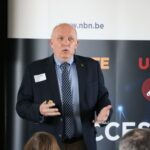 We live in turbulent times. The twenty-first century has already seen many crises. These were each time accompanied by the ups and downs of the global economy that go with it. It started with the bursting of a dot.com bubble (2000), which caused many companies to go bankrupt at the beginning of this century and was followed a year later by an attack on the World Trade Center in New York (2001). Continue reading
We live in turbulent times. The twenty-first century has already seen many crises. These were each time accompanied by the ups and downs of the global economy that go with it. It started with the bursting of a dot.com bubble (2000), which caused many companies to go bankrupt at the beginning of this century and was followed a year later by an attack on the World Trade Center in New York (2001). Continue reading
#402 – IMPORTANCE OF CONTEXT CHANGES IN ROOT CAUSE ANALYSIS – DUKE OKES
Featured
 One of the more valuable changes in the ISO 9001:2015 edition was the introduction of the phrase Context of the Organization. Having organizations evaluate context when designing a quality management system (QMS) meant they could better justify the degree of rigor of their processes and controls. Continue reading
One of the more valuable changes in the ISO 9001:2015 edition was the introduction of the phrase Context of the Organization. Having organizations evaluate context when designing a quality management system (QMS) meant they could better justify the degree of rigor of their processes and controls. Continue reading
#402 – NEW WORK WORLDS – GREG HUTCHINS PE CERM
Featured
 There are lots of lessons to learn from Amazon. Never stop innovating or questioning the fundamentals of your business. Disrupt yourself before others do.
There are lots of lessons to learn from Amazon. Never stop innovating or questioning the fundamentals of your business. Disrupt yourself before others do.
Brad Stone – Journalist & Author
Consulting firms, academics, and consultants are developing Future Of Work models. Price Waterhouse Coopers (PwC) developed a scenario called the Future of Work: A Journey to 2022. The premise of the study is: “disruptive innovations are creating new industries and business models, and destroying old ones.” (‘The Future of Work: A Journey to 2022’, PwC, 2014).
PwC outlined three distinct worlds of work: Orange, Green, and Blue. Continue reading
#401 – WHEN MANAGEMENT DOESN’T LISTEN – FRED SCHENKELBERG
Featured
 A Bloomberg articles details the Takata airbag recall series of events. The line that caught my attention is:
A Bloomberg articles details the Takata airbag recall series of events. The line that caught my attention is:
…company documents suggesting that Takata executives discounted concerns from their own employees and hid the potential danger…
“Sixty Million Car Bombs: Inside Takata’s Airbag Crisis”, Susan Berfield, et.al. Bloomberg Business Week, posted June 2nd, 2016, https://www.bloomberg.com/news/features/2016-06-02/sixty-million-car-bombs-inside-takata-s-air-bag-crisis Continue reading
#401 – THREE LESSONS MANUFACTURERS CAN LEARN FROM NASCAR RACING – MATT FIELDMAN
Featured
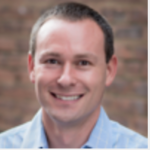 The NASCAR pit stop – it’s exciting, intense, and can mean the difference between winning and losing a race. Accomplishing the three simultaneous necessities of moving quickly, completing each job with perfection, and having a flawlessly coordinated team seem impossible, yet it happens right in front of your eyes. The feedback is immediate: either the car gets off in less than ten seconds, and the driver can compete for a spot on the podium, or it doesn’t, and your race is over.
The NASCAR pit stop – it’s exciting, intense, and can mean the difference between winning and losing a race. Accomplishing the three simultaneous necessities of moving quickly, completing each job with perfection, and having a flawlessly coordinated team seem impossible, yet it happens right in front of your eyes. The feedback is immediate: either the car gets off in less than ten seconds, and the driver can compete for a spot on the podium, or it doesn’t, and your race is over.
#401 – RISKS ARE NOT NECESSARILY HOW THEY ARE PERCEIVED – BILL POMFRET
Featured
 True risks are often different than perceived risks. Due to human curiosity, the desire to sell news, 24-hour-a-day news blitz, and current trends, some folks have a distorted sense of risks. Most often, people fear the lesser or trivial risks and fail to respect the significant dangers faced every day. Continue reading
True risks are often different than perceived risks. Due to human curiosity, the desire to sell news, 24-hour-a-day news blitz, and current trends, some folks have a distorted sense of risks. Most often, people fear the lesser or trivial risks and fail to respect the significant dangers faced every day. Continue reading
#401 – FAMINE TRIAD: DROUGHT, ENERGY, AND INFLATION – JIM TONEY
Featured
 Will the earth’s modern food production techniques continue to provide enough food for 8 billion people? (1) Or, are emerging conditions for famine in play where a large percentage of people may face the risk of inadequate food supplies? Food shortages often lead to famine conditions, then starvation, disease and death. And, if food is available, it may become unaffordable for many. Continue reading
Will the earth’s modern food production techniques continue to provide enough food for 8 billion people? (1) Or, are emerging conditions for famine in play where a large percentage of people may face the risk of inadequate food supplies? Food shortages often lead to famine conditions, then starvation, disease and death. And, if food is available, it may become unaffordable for many. Continue reading
#401 – AI EATS JOBS! – GREG HUTCHINS PE CERM
Featured
 I think we should be very careful about artificial intelligence. If I had to guess at what our biggest existential threat is, it’s probably that. So we need to be very careful.
I think we should be very careful about artificial intelligence. If I had to guess at what our biggest existential threat is, it’s probably that. So we need to be very careful.
Elon Musk – Entrepreneur
Artificial intelligence (AI) and robots conjure images of killer robots like the Terminator movie. Continue reading
#401 – AGILE 2 AND AGILITY (PART 1) – HOWARD WIENER
Featured
 If you are running a business today, you probably incorporate digital elements in your products and services. At the very least, you employ digital technology in the operation of your business. It’s likely that you have adopted an Agile framework and possibly even DevOps processes. It’s also likely that you are not getting the productivity boost from it that you should. Continue reading
If you are running a business today, you probably incorporate digital elements in your products and services. At the very least, you employ digital technology in the operation of your business. It’s likely that you have adopted an Agile framework and possibly even DevOps processes. It’s also likely that you are not getting the productivity boost from it that you should. Continue reading
#400 – KILLER AI AND RISK BASED, DECISION MAKING – GREG HUTCHINS PE CERM
Featured
 What happens if an autonomous AI robot has preemptive authority to use deadly force to ensure its safety or the public’s safety ? We are not too far from this when autonomous robots will have risk based, problem solving and decision making capabilities and even statutory authorities. Continue reading
What happens if an autonomous AI robot has preemptive authority to use deadly force to ensure its safety or the public’s safety ? We are not too far from this when autonomous robots will have risk based, problem solving and decision making capabilities and even statutory authorities. Continue reading
#400 – ASKING QUESTIONS IS RELIABILITY ENGINEERING – FRED SCHENKELBERG
Featured
 Finding solutions is reliability engineering too.
Finding solutions is reliability engineering too.
Have you noticed that finding solutions often requires just the right question, the proper framing of the issue, the query that reveals the problem and solution?
One of the best ways to lead a team and provide a focus on reliability performance is to ask the right questions. Continue reading
#400 – CYBER RISK PREPAREDNESS – NATHAN SABLE
Featured
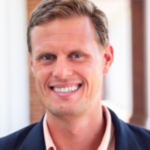 Digitization and connectivity are having a huge impact on more than just your manufacturing operations and ability to monetize data. Your vulnerabilities also are increasing as Industrial Internet of Things (IIoT) manufacturing solutions involve more software, devices and digitally connected employees. Continue reading
Digitization and connectivity are having a huge impact on more than just your manufacturing operations and ability to monetize data. Your vulnerabilities also are increasing as Industrial Internet of Things (IIoT) manufacturing solutions involve more software, devices and digitally connected employees. Continue reading
#400 – HOW TO CREATE A POSITIVE RISK CULTURE – PATRICK OW
Featured
 There are several risk management solutions that organisations can implement to strengthen their organisational culture to create a positive ‘risk culture’ outcome.
There are several risk management solutions that organisations can implement to strengthen their organisational culture to create a positive ‘risk culture’ outcome.
These organisational practices include:
- Create an accountable organisation.
- Implement the appropriate organisational design.
- Create awareness of the strategic benefits of risk management.
- Create an effective risk governance structure.
- Create an effective risk function.
- Hire the right personality to head the risk function.
- Create a just and psychologically safe culture.
- Formalise informal risk communications.
- Create clear escalation and reporting pathways and trigger points.
- Simplify risk management tools, activities, and processes.
#400 – PROJECT: INTELLIGENT DISOBEDIENCE – UNCOMMON SENSE – MALCOLM PEART
Featured
 Seeing eye dogs, or guide dogs, are so well trained that they know right from wrong. Even though their ‘master’ gives an order the trained canine won’t obey unless it’s safe; and that’s what we call intelligent disobedience. The dog is praised for exhibiting such behaviour. However, in corporate and project management circles, and despite the need for human intelligence enhanced through training, qualifications and experience, such behaviour is often branded as just plain disobedient. Continue reading
Seeing eye dogs, or guide dogs, are so well trained that they know right from wrong. Even though their ‘master’ gives an order the trained canine won’t obey unless it’s safe; and that’s what we call intelligent disobedience. The dog is praised for exhibiting such behaviour. However, in corporate and project management circles, and despite the need for human intelligence enhanced through training, qualifications and experience, such behaviour is often branded as just plain disobedient. Continue reading
#400 – CYBER ATTACKS AND RISK – BILL POMFRET PH.D.
Featured
 Public Services and Procurement Canada, oversees how the government buys goods and services, and has different levels of security clearance depending on whether a contractor has access to classified information. You know what’s worse than fighting an active breach… being breached and not knowing it. Continue reading
Public Services and Procurement Canada, oversees how the government buys goods and services, and has different levels of security clearance depending on whether a contractor has access to classified information. You know what’s worse than fighting an active breach… being breached and not knowing it. Continue reading
#399 – INTRODUCTION TO ONGOING RELIABILITY TESTING – FRED SCHENKELBERG
Featured
 This type of reliability may have different names. A quick search of a few references in my library and I didn’t find ongoing reliability testing, ORT, in any of them.
This type of reliability may have different names. A quick search of a few references in my library and I didn’t find ongoing reliability testing, ORT, in any of them.
It does exist and you may have heard of it before or even use some form of ORT. Or not. Continue reading
#399 – UNDERSTANDING RISK PROFILE IS IMPORTANT IN INSURANCE RISK DECISIONS – ALEX SIDORENKO
Featured
 In 2021, risk team implemented a quantitative risk-based approach to insurance renewals which resulted in reducing the cost of insurance by 60% and improving the quality of coverage across all insurance lines. This approach allowed us to save, or rather pay a fair price for insurance across the globe. Key to success was not to rely on market “best practices”, but on testing various hypotheses in the market and relying on data. Continue reading
In 2021, risk team implemented a quantitative risk-based approach to insurance renewals which resulted in reducing the cost of insurance by 60% and improving the quality of coverage across all insurance lines. This approach allowed us to save, or rather pay a fair price for insurance across the globe. Key to success was not to rely on market “best practices”, but on testing various hypotheses in the market and relying on data. Continue reading
#399 – WHAT’S SO GREAT ABOUT QUANTUM COMPUTING – ALEXEY GORSHKOV
Featured
 As the rise of quantum computers becomes the subject of more and more news articles — especially those that prophesy these devices’ ability to crack the encryption that protects secure messages, such as our bank transfers — it’s illuminating to speak with one of the quantum experts who is actually developing the ideas behind these as-yet-unrealized machines. Continue reading
As the rise of quantum computers becomes the subject of more and more news articles — especially those that prophesy these devices’ ability to crack the encryption that protects secure messages, such as our bank transfers — it’s illuminating to speak with one of the quantum experts who is actually developing the ideas behind these as-yet-unrealized machines. Continue reading
#399 – PROGRAM COMMUNICATION MANAGEMENT: REALLY? – MALCOLM PEART
Featured
 Communication…dictionarily is the imparting or exchanging of information by speaking, writing, or using some other medium. It’s essential to humankind and allows us to live, work, trade and co-exist. It’s the basis of society, culture and civilizations and through communication there’s understanding and establishment of common beliefs. Continue reading
Communication…dictionarily is the imparting or exchanging of information by speaking, writing, or using some other medium. It’s essential to humankind and allows us to live, work, trade and co-exist. It’s the basis of society, culture and civilizations and through communication there’s understanding and establishment of common beliefs. Continue reading
#399 – SAFETY CULTURE AND ARTIFICIAL INTELLIGENCE – BILL POMFRET PH.D.
Featured
 Since the 1990s, organisations have attempted to improve safety culture. They have tried top-down approaches, with senior management making statements about how important safety is. They have tried bottom-up hearts and minds programs, encouraging workers to work safely, and stop if a job can’t be done safely. There have been great strides, and examples of success, such as the UK 2012 Olympic development. Continue reading
Since the 1990s, organisations have attempted to improve safety culture. They have tried top-down approaches, with senior management making statements about how important safety is. They have tried bottom-up hearts and minds programs, encouraging workers to work safely, and stop if a job can’t be done safely. There have been great strides, and examples of success, such as the UK 2012 Olympic development. Continue reading
#399 – LAW AND LEGAL DISRUPTION – GREG HUTCHINS
Featured
 The basic premises of how the economy works have shifted under our feet and the government will have to respond.
The basic premises of how the economy works have shifted under our feet and the government will have to respond.
Gautam Mukunda – Writer
Can you imagine a conversation with a work Alexa giving you legal assistance instead of a human lawyer. Fasten your seatbelt. Legal and many other professions are being disrupted. Continue reading
#398 – ENVIRONMENTAL AND USE MANUAL – FRED SCHENKELBERG
Featured
 How well can you describe the use conditions your product will experience?
How well can you describe the use conditions your product will experience?
How well do you need to know the use conditions?
For some situations, the environment for your product is assessable, others are not. For some situations, we guess the range of expected stresses, others we measure. Continue reading
#398 – ARE YOUR BROKERS COSTING THE COMPANY TOO MUCH MONEY – ALEX SIDORENKO
Featured
 In 2021, risk team implemented a quantitative risk-based approach to insurance renewals which resulted in reducing the cost of insurance by 60% and improving the quality of coverage across all insurance lines. This approach allowed us to save, or rather pay a fair price for insurance across the globe. Key to success was not to rely on market “best practices”, but on testing various hypotheses in the market and relying on data. Continue reading
In 2021, risk team implemented a quantitative risk-based approach to insurance renewals which resulted in reducing the cost of insurance by 60% and improving the quality of coverage across all insurance lines. This approach allowed us to save, or rather pay a fair price for insurance across the globe. Key to success was not to rely on market “best practices”, but on testing various hypotheses in the market and relying on data. Continue reading
#398 – CONSTRUCTIVE BEHAVIORS ENABLE EFFECTIVE RISK MANAGEMENT – PATRICK OW
Featured
 Organisational cultures can either enable or inhibit effective risk management through either constructive or defensive behavioural norms respectively.
Organisational cultures can either enable or inhibit effective risk management through either constructive or defensive behavioural norms respectively.
When there is constructive organisational culture, people want to, rather than have to, manage risks and do good risk management. And when there is a defensive organisational culture, people avoid doing good risk management and only do risk management when they have to or are being forced, either by management or regulators, merely as a tick-the-box compliance exercise. Continue reading
#398 – RISKS IN THE ELECTRIC VEHICLE WORLD – BILL POMFRET PH.D.
Featured
 Safety and sustainability are the major considerations within the growing electric vehicle industry, there is lots of excitement and lots of challenges in the fast-moving electric vehicle industry and both descriptions quickly work their way into the conversation. Continue reading
Safety and sustainability are the major considerations within the growing electric vehicle industry, there is lots of excitement and lots of challenges in the fast-moving electric vehicle industry and both descriptions quickly work their way into the conversation. Continue reading
#398 – THE GHOST COMPANY – GREG HUTCHINS
Featured
 All truth passes through three stages. First, it is ridiculed. Second, it is violently opposed. Third, it is accepted as being self-evident.
All truth passes through three stages. First, it is ridiculed. Second, it is violently opposed. Third, it is accepted as being self-evident.
Arthur Schopenhauer – Philosopher
I’ve seen the Future Of Work. And, I don’t like it. Why? In Portland Oregon, a retail store sells kombucha, a slightly alcoholic green or black tea. Great location. Great storefront. Sure money-maker! Continue reading
#397 – MANUFACTURERS: STOP PUSHING THE EASY BUTTON – MATT FIELDMAN
Featured
I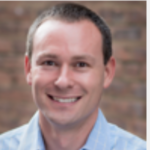 get it, we all love the “easy” button. Whether it’s ordering groceries for delivery today, household items for delivery tomorrow, or a ride to the airport via a tap on your phone, we’ve gotten used to convenience and simplicity when it comes to solving problems. Continue reading
get it, we all love the “easy” button. Whether it’s ordering groceries for delivery today, household items for delivery tomorrow, or a ride to the airport via a tap on your phone, we’ve gotten used to convenience and simplicity when it comes to solving problems. Continue reading
#397 – USE OF ENVIRONMENTAL PROFILES – FRED SCHENKELBERG
Featured
 Did you know that hot air doesn’t rise when there is no or very little gravity?
Did you know that hot air doesn’t rise when there is no or very little gravity?
The electronics used to steer an oil exploration drill head 5 miles deep in the earth experiences 200°C sulfuric acid immersion along with continuous 50,000G shocks.
I used to think the environment under the hood a car was difficult. Continue reading
#397 – AUTOMATING RISK MANAGEMENT – ALEX SIDORENKO
Featured
 In the last 2 years my team was involved in automating risk management part for investment decision making, vendor accreditation, market risk, tender process, treasury management, credit risk and project management. That’s 8 different software packages selected from dozens of possible options. In this article I wanted to share some important takeaways from our risk management automation. Continue reading
In the last 2 years my team was involved in automating risk management part for investment decision making, vendor accreditation, market risk, tender process, treasury management, credit risk and project management. That’s 8 different software packages selected from dozens of possible options. In this article I wanted to share some important takeaways from our risk management automation. Continue reading
#397 – HOW TO ADOPT WORLD CLASS MAINTENANCE – BILL POMFRET PH.D.
Featured
 This article will be providing “World Class Maintenance” Best Practices. As I write this article, I like to ask what people are saying about this topic.
This article will be providing “World Class Maintenance” Best Practices. As I write this article, I like to ask what people are saying about this topic.
Best Maintenance Repair Practices
Several surveys conducted in industries throughout the world have found that 70% of equipment failures are self-induced. Maintenance personnel who are not following what is termed ‘Best Maintenance Repair Practices’ substantially affect these failures. Between 30% and 50% of the self-induced failures are the result of maintenance personnel not knowing the basics of maintenance. Continue reading
#397 – PM COMMUNICATIONS: ORDERS, ORDERED, OR ORDERLY EXECUTION – MALCOLM PEART
Featured
 Orders and being ordered can mean many things to many people. In biology order concerns the taxonomic rank for classifying organisms. More generally speaking it concerns the arrangement of people or things in relation to each other in some form of pattern, sequence, or method. Alternatively, it can mean an authoritative command or instructions that are, typically, conveyed in a particular sequence. When ordering a meal, for example, it’s normally done in the order in which the food will be served, but that’s always best clarified in some countries! Continue reading
Orders and being ordered can mean many things to many people. In biology order concerns the taxonomic rank for classifying organisms. More generally speaking it concerns the arrangement of people or things in relation to each other in some form of pattern, sequence, or method. Alternatively, it can mean an authoritative command or instructions that are, typically, conveyed in a particular sequence. When ordering a meal, for example, it’s normally done in the order in which the food will be served, but that’s always best clarified in some countries! Continue reading
#397 – RISE AND FALL OF BULLSH*T JOBS – GREG HUTCHINS
Featured
 Don’t limit yourself. Many people limit themselves to what they think they can do. You can go as far as your mind lets you. What you believe, remember, you can achieve.
Don’t limit yourself. Many people limit themselves to what they think they can do. You can go as far as your mind lets you. What you believe, remember, you can achieve.
Mary Kay Ash – Entrepreneur
Almost 40% of people according to surveys say their work and jobs make little difference to the organization, customer or marketplace. OK! So why do these jobs exist in VUCA time? Great question. Continue reading
#396 – ADJUSTING TO CUSTOMER EXPECTATIONS CHANGING – FRED SCHENKELBERG
Featured
 Reliability goals or objectives are just a starting point.
Reliability goals or objectives are just a starting point.
You goals represent your target at one point in time.
At best they represent what your customers expect for reliability performance at one point in time.
When goals are set well, they anticipate what your customer expects when they receive your product. In a perfect world, you customer will find the reliability performance just a bit better than expected.
It’s not a perfect world. Continue reading
#396 – MEASURING THE SUCCESS OF YOUR RISK MANAGEMENT PROGRAM – BILL POMFRET PH.D.
Featured
 We see the value of enterprise risk management everywhere we look. We see it in the news, we can see it in our customers’ success, We can even see it on the roads in speed limit signs. We know that risk management is deeply enmeshed in both the success and failures of the corporate world and beyond. Continue reading
We see the value of enterprise risk management everywhere we look. We see it in the news, we can see it in our customers’ success, We can even see it on the roads in speed limit signs. We know that risk management is deeply enmeshed in both the success and failures of the corporate world and beyond. Continue reading
#396 – DRIVERS OF POSITIVE ‘RISK CULTURE’ – PATRICK OW
Featured
 People conclude what is expected of them is based on cues received from the forces that they face daily. These forces drive what they believe and how they should behave – in either constructive or defensive ways. These behaviours can either enables or inhibits effective risk management. Continue reading
People conclude what is expected of them is based on cues received from the forces that they face daily. These forces drive what they believe and how they should behave – in either constructive or defensive ways. These behaviours can either enables or inhibits effective risk management. Continue reading
#396 – END OF BIG BUSINESS AS WE KNOW IT – GREG HUTCHINS
Featured
 The system is not working. That is how a paradigm shift begins: the established way of seeing the world no longer functions.
The system is not working. That is how a paradigm shift begins: the established way of seeing the world no longer functions.
Matthew Fox – American Actor
COVID has created some big business winners. But, post-COVID it’s the end of many companies as we know them:
“The Coronavirus pandemic brought the global economy to a screeching halt this spring (2020), sparking fears of a corporate bloodbath. As the year ends, it’s clear that the crisis has rewired the economy in surprising ways and served up unexpected opportunities for some big businesses to prosper.” Continue reading
#396 – ISO 9001 CERTIFICATION FIGURES – JAMES KLINE PH.D.
Featured
 Recently the International Organization for Standardization (ISO) released the 2021 certification numbers. Oxebridge Quality Resources did a good analysis of the 9001 numbers. This piece looks at the results from all the certifications and provides comparison in key certifications between China and the United States. Continue reading
Recently the International Organization for Standardization (ISO) released the 2021 certification numbers. Oxebridge Quality Resources did a good analysis of the 9001 numbers. This piece looks at the results from all the certifications and provides comparison in key certifications between China and the United States. Continue reading
#396 – WHEN SURROUNDED BY EXPONENTIAL GROWTH, ‘WAIT AND SEE’ CAN MEAN MISSING AN OPPORTUNITY – DANIEL BURRUS
Featured
 Patience is a virtue. Throughout much of childhood, our parents and guardians instilled in us to be patient or to wait calmly for our turn at something.
Patience is a virtue. Throughout much of childhood, our parents and guardians instilled in us to be patient or to wait calmly for our turn at something.
Having patience is an important characteristic in everyday life, but as an adult — especially if you are a business leader or C-suite executive — too often does the concept of patience become a hands-off defense mechanism used to fight discomfort in facing change. The mindset that surrounds this behavior is known as “wait and see,” where a company tries to simply wait out the storm of disruption patiently, hoping the status quo will remain intact after the clouds clear. Continue reading
#395 – ASKING QUESTIONS IS RELIABILITY ENGINEERING – FRED SCHENKELBERG
Featured
 A great question will lead to more questions. Ask great questions.
A great question will lead to more questions. Ask great questions.
When judging an elementary school science fair, one student stood out. Not because her poster was elegant, nor that she discovered some delightful insight, it was her question. More so it was her way of asking questions.
Her project examined whether soccer practice really helped. Did ball handling and shooting drills help her during the game when the skills had to be second nature? She did an experiment to explore the ability of muscle memory with and without specific sports training. Continue reading
#395 – MANUFACTURERS IDENTIFY TOP CHALLENGES THEY EXPECT TO FACE – MEGEAN BLUM/NICO THOMAS
Featured
 When Nico asked me if I wanted to collaborate on this year’s challenges blog, my second thought after agreeing to the idea was a scene from the 2007 film “Music and Lyrics,” which I likely have not seen since approximately 2008. Why this popped into my head is unknown but ha! POP! I had forgotten that was the name of Hugh Grant’s singing group and part of the title of their hit song. Continue reading
When Nico asked me if I wanted to collaborate on this year’s challenges blog, my second thought after agreeing to the idea was a scene from the 2007 film “Music and Lyrics,” which I likely have not seen since approximately 2008. Why this popped into my head is unknown but ha! POP! I had forgotten that was the name of Hugh Grant’s singing group and part of the title of their hit song. Continue reading
#395 – ESG MEETS ORGANIZATIONAL SUSTAINABILITY – BOB POJASEK PH.D.
Featured
 Many larger corporations have made a switch to an ESG (Environment, Social, and Governance) program for the reporting financial performance from their organizational sustainability program. This is different than the ESG used by ESG ratings and data products providers (e.g MSCI, S&P Global, ISS). These companies provide company ratings that they compiled for the capital markets. Continue reading
Many larger corporations have made a switch to an ESG (Environment, Social, and Governance) program for the reporting financial performance from their organizational sustainability program. This is different than the ESG used by ESG ratings and data products providers (e.g MSCI, S&P Global, ISS). These companies provide company ratings that they compiled for the capital markets. Continue reading
#395 – POST HURRICANE IAN: FLORIDIANS HAVE COMPLEX DECISIONS TO MAKE – BOB LEONARD
Featured
 Living a quarter of a mile from the Gulf of Mexico in Sarasota, Florida, I knew we would eventually have to make a decision. Hurricane Irma was the deciding factor. We were without power (so no AC) for 10 days in September in south Florida. The heat and humidity were brutal. So we decided to get out of harm’s way. We relocated to Oregon. That was five years ago. The current residents of southwest Florida face more complex climate-related decisions. Continue reading
Living a quarter of a mile from the Gulf of Mexico in Sarasota, Florida, I knew we would eventually have to make a decision. Hurricane Irma was the deciding factor. We were without power (so no AC) for 10 days in September in south Florida. The heat and humidity were brutal. So we decided to get out of harm’s way. We relocated to Oregon. That was five years ago. The current residents of southwest Florida face more complex climate-related decisions. Continue reading
#395 – PROJECT DOCUMENTS: OBVIOUSLY WRONG OR PATENTLY ACCEPTABLE – MALCOLM PEART
Featured
 Project documentation; the bane of some people’s lives, for other’s their raison d’être. Documentation is essential and its written word can ensure effective communication so there is as little misunderstanding as possible. Requirements will be definitive, obligations and liabilities will be unambiguous, and instructions will be clear. Continue reading
Project documentation; the bane of some people’s lives, for other’s their raison d’être. Documentation is essential and its written word can ensure effective communication so there is as little misunderstanding as possible. Requirements will be definitive, obligations and liabilities will be unambiguous, and instructions will be clear. Continue reading
#395 – CLIMATE CHANGE OR GLOBAL EXTINCTION? – GREG HUTCHINS
Featured
 Is climate change humanity’s greatest ever risk management failure?
Is climate change humanity’s greatest ever risk management failure?
The Guardian newspaper
Climate change. Global warming. These are the ‘new normal’ or the ultimate ‘Horsemen of the Apocalypse’. U.S. intelligence report said:
“Global environmental and ecological degradation, as well as climate change, are likely to fuel competition for resources, economic distress, and social discontent through 2019 and beyond. Climate hazards such as extreme weather, higher temperatures, droughts, floods, wildfires, storms, sea level rise, soil degradation, and acidifying oceans are intensifying, threatening infrastructure, health, and water and food security.” Continue reading
#394 – WHAT SHOULD AN AWESOME RISK REPORT LOOK LIKE? – ALEX SIDORENKO
Featured
 Companies and regulators love reports, disclosures and transparency. And nobody loves risk reporting more than me. Trouble is risk reports are RM1. If we wanted to really make a difference to decision makers we would switch from risk reporting to risk-adjusted performance reporting instead. Risk managers always have a choice: generate own risk reports or use the outputs of risk analysis to improve existing performance and management reports instead. To me the choice is clear. Integrating risk information into existing management reporting is the future. So, what should risk-adjusted performance report look like? Continue reading
Companies and regulators love reports, disclosures and transparency. And nobody loves risk reporting more than me. Trouble is risk reports are RM1. If we wanted to really make a difference to decision makers we would switch from risk reporting to risk-adjusted performance reporting instead. Risk managers always have a choice: generate own risk reports or use the outputs of risk analysis to improve existing performance and management reports instead. To me the choice is clear. Integrating risk information into existing management reporting is the future. So, what should risk-adjusted performance report look like? Continue reading
#394 – UNSUSTAINABILITY RISKS: BLISSFULLY UNAWARE OF THE DARK CLOUDs – DAVID ROSS PH.D.
Featured
 Humankind has not woven the web of life. We are but one thread within it. Whatever we do to the web, we do to ourselves. All things are bound together. All things connect. – Chief Seattle
Humankind has not woven the web of life. We are but one thread within it. Whatever we do to the web, we do to ourselves. All things are bound together. All things connect. – Chief Seattle
In 1983, the UN General Assembly called for a “global agenda for change” to consider how the international community could better deal with social and environmental issues. The resulting “Our Common Future” Report made the following key point: Continue reading
#394 – HOW TO CREATE A HEALTHY ORGANIZATION – PATRICK OW
Featured
 Healthy organisations create an environment where organisational members have mutual trust and respect for each other, especially in terms of how they decide and implement decisions. They create an environment in which organisational members are empowered to deal with their problems and where problems can be identified, discussed, and solved with mutual trust and respect through cooperation and communication amongst themselves. Continue reading
Healthy organisations create an environment where organisational members have mutual trust and respect for each other, especially in terms of how they decide and implement decisions. They create an environment in which organisational members are empowered to deal with their problems and where problems can be identified, discussed, and solved with mutual trust and respect through cooperation and communication amongst themselves. Continue reading
#394 – EMERGENCY PREPAREDNESS & RESPONSE – BILL POMFRET PH.D.
Featured
 The start of fall might feel too soon to begin preparing for next winter. But with memories of snowstorms fresh in your mind, now is the perfect time to review your emergency response plans. Preparing emergency response plans of time also means you’ll be ready when snow, tornadoes, hurricanes, wildfires, drought, or other types of severe weather hit. Continue reading
The start of fall might feel too soon to begin preparing for next winter. But with memories of snowstorms fresh in your mind, now is the perfect time to review your emergency response plans. Preparing emergency response plans of time also means you’ll be ready when snow, tornadoes, hurricanes, wildfires, drought, or other types of severe weather hit. Continue reading
#394 – WHICH IS STRONGER: OUTSIDE PRESSURE TO CHANGE? OR, YOUR INTERNAL DRIVE TO TRANSFORM – DANIEL BURRUS
Featured
 There are two mindsets surrounding the concepts of transformation and change. First, there is fear that comes with transformation and change. The feeling of not having control over something in your personal or professional life can be daunting, because it leaves us feeling helpless. And the second mindset is an apathetic, hands-off one. This is where the concepts of transformation and change seem so insurmountable that we accept them passively. Continue reading
There are two mindsets surrounding the concepts of transformation and change. First, there is fear that comes with transformation and change. The feeling of not having control over something in your personal or professional life can be daunting, because it leaves us feeling helpless. And the second mindset is an apathetic, hands-off one. This is where the concepts of transformation and change seem so insurmountable that we accept them passively. Continue reading
#394 – UNIVERSITY GRADUATES DISRUPTION – GREG HUTCHINS PE CERM
Featured
 Eighty-five (85%) of the jobs today’s students will be doing in 2030 haven’t been invented yet.
Eighty-five (85%) of the jobs today’s students will be doing in 2030 haven’t been invented yet.
Institute for the Future
Now, let’s look at university graduates’ marketability? Why are so many Gen-Zer’s and millennials unemployed or simply underemployed? One major reason is many recent college graduates are simply not prepared for work. They are not FOW-ready or work-ready. Gartner, the consulting organization, said:
“Only 20 percent of employees have the skills needed for both their current role and their future career”. Continue reading
#393 – INTERVIEWING FOR SENIOR MANAGER POSITION WITH SENIOR MANAGERS – FRED SCHENKELBERG
Featured
 Organizations around the world are recognizing the value of reliability engineering. Or, they are realizing that creating a durable product that delights the customer is good for business.
Organizations around the world are recognizing the value of reliability engineering. Or, they are realizing that creating a durable product that delights the customer is good for business.
Another contributor to the interest in reliable products is the news of recalls. One recall not only distrupts the normal course of business, it may alter the future of the company. It may cause the collapse of the organization. Some do better than others, yet a major, in the news, recall is something to avoid. Creating a reliable product helps. Continue reading
#393 – COVID VACCINATIONS: MARKETING 101 OR 1984 MANIPULATION – MALCOLM PEART
Featured
 There is no doubt that the appearance and subsequent outbreak of COVID wreaked havoc on the world’s population humanitarianly, medically, socially, politically, and economically. The death toll, albeit far less than predictions, -unfortunately happened. The declared pandemic is now considered to be endemic. We are told that the lockdowns, travel restrictions, and social distancing helped but, above all, the vaccines ‘saved us’, as will the boosters as more information comes to light and more data is gathered, and statistics are revisited. Continue reading
There is no doubt that the appearance and subsequent outbreak of COVID wreaked havoc on the world’s population humanitarianly, medically, socially, politically, and economically. The death toll, albeit far less than predictions, -unfortunately happened. The declared pandemic is now considered to be endemic. We are told that the lockdowns, travel restrictions, and social distancing helped but, above all, the vaccines ‘saved us’, as will the boosters as more information comes to light and more data is gathered, and statistics are revisited. Continue reading
#393 – IMPROVING YOUR OPERATIONS THROUGH THE USE OF COLLABORATION – ROBERT POJASEK PH.D.
Featured
 Many larger companies have three critically important operations: organizational sustainability, procurement, and supply chain management. IN most companies, these operations are managed separate from each other, and their operations are not directly influenced by international standards. Continue reading
Many larger companies have three critically important operations: organizational sustainability, procurement, and supply chain management. IN most companies, these operations are managed separate from each other, and their operations are not directly influenced by international standards. Continue reading
#393 – HIGHER EDUCATION DISRUPTION – GREG HUTCHINS PE CERM
Featured
 If colleges were businesses they would be right for hostile takeovers, complete with serious costcutting and painful reorganizations.
If colleges were businesses they would be right for hostile takeovers, complete with serious costcutting and painful reorganizations.
US News and World Report
COVID has forced universities to do online teaching. What’s the value add of spending $70K (USD) for online instruction, when you paid for sports, in-class instruction and the college experience? In 2021 and 2022, we’ll find out as university students have been taught online for a year or even longer. Continue reading
#393 – CYBER SECURITY AND ENTERPRISE RISK MANAGEMENT – JAMES KLINE PH.D.
Featured
 In September 2022 the National Institute of Standards and Technology (NIST) issued NIST IR 8286C. (1) As the C indicates, this is the third such cybersecurity risk management standard issued by NIST. NISTIR 8286A and 8286B provide guidance to stakeholders on assessing and managing cybersecurity risk in conjunction with Enterprise Risk Management (ERM) processes. This piece looks at the guidance provided under NIST IR 8286C. Continue reading
In September 2022 the National Institute of Standards and Technology (NIST) issued NIST IR 8286C. (1) As the C indicates, this is the third such cybersecurity risk management standard issued by NIST. NISTIR 8286A and 8286B provide guidance to stakeholders on assessing and managing cybersecurity risk in conjunction with Enterprise Risk Management (ERM) processes. This piece looks at the guidance provided under NIST IR 8286C. Continue reading
#393 – MANUFACTURERS: FORGET CX. FOCUS ON EX. – MATT FIELDMAN
Featured
#392 – THREE STEPS TO MAKE YOUR BUSINESS MORE RESILIENT – ALEX SIDORENKO
Featured
 In risk management there is a concept that will be useful for any business out there, it is called – EXPECTED LOSSES. This means that certain risks are inevitable and will occur no matter what. Stealing in retail, foreign exchange fluctuations or customer bad debts are all examples of losses that happen all the time. Some companies have more losses, others have less, but no company has zero risk. Continue reading
In risk management there is a concept that will be useful for any business out there, it is called – EXPECTED LOSSES. This means that certain risks are inevitable and will occur no matter what. Stealing in retail, foreign exchange fluctuations or customer bad debts are all examples of losses that happen all the time. Some companies have more losses, others have less, but no company has zero risk. Continue reading
#392 – LESSONS LEARNED IN OIL/GAS – BILL POMFRET PH.D.
Featured
 My first job after college was with Imperial Chemical Industries (ICI) at which time in the 1960’s the chemical process industries far outstripped that of the rest of the manufacturing industries.
My first job after college was with Imperial Chemical Industries (ICI) at which time in the 1960’s the chemical process industries far outstripped that of the rest of the manufacturing industries.
My second job was as a pioneer in the development of the North Sea, the expansion in search for oil and gas, leading in time to petroleum refining, the most hazardous of all offshore rolls at the time, was hookups, which is building the field, which was developed by a single central combined drilling and production platform. Continue reading
#392 – CAN PM COMMUNICATIONS KILL COMMUNICATION – MALCOLM PEART
Featured
Video Killed the Radio Star…went the 1979 music video by The Buggles. MTV used this as their first ever video in 1981, but despite the prophecy and MTV’s 40 ongoing years, radio stars aren’t dead. Radio revolutionised popular music, vinyl discs gave us today’s disc jockeys but even though technology evolves it demonstrates that the fittest will survive and not everything will be killed. Continue reading
#392 – FIVE TRENDS THAT WILL IMPACT THE FOOD INDUSTRY FOR MANY YEARS – MATTHEW INNIGER
Featured
 The inability to gather good data has challenged many food manufacturers for decades. But not anymore. As sensor technology has improved, and technology platforms have become more accessible and affordable to small and medium-sized manufacturers, the food industry is poised for transformation. Food companies can now better understand their ingredients, products and operations. Continue reading
The inability to gather good data has challenged many food manufacturers for decades. But not anymore. As sensor technology has improved, and technology platforms have become more accessible and affordable to small and medium-sized manufacturers, the food industry is poised for transformation. Food companies can now better understand their ingredients, products and operations. Continue reading
#392 – SMARTER MACHINES = SMARTER HUMANS – DANIEL BURRUS
Featured
 The ability of machines to communicate—and their increasing intelligence—is an exponentially accelerating trend spanning many industries. This technology trend is not slowing down in any way, and the more it is adopted, the more it will continue to accelerate, transforming our personal, professional, and social lives. Continue reading
The ability of machines to communicate—and their increasing intelligence—is an exponentially accelerating trend spanning many industries. This technology trend is not slowing down in any way, and the more it is adopted, the more it will continue to accelerate, transforming our personal, professional, and social lives. Continue reading
#392 – MEDICAL DISRUPTION – GREG HUTCHINS PE CERM
Featured
How Tech Can Turn Doctors into Clerical Workers
Title of New York Times Article
 I bounced the above article among several of my doc buddies. The conversation went like: “You spent 10 years going to med school. Now, you push paper. And, BTW: you may be replaced by a robot. Huh. Yeah. Well. ….”
I bounced the above article among several of my doc buddies. The conversation went like: “You spent 10 years going to med school. Now, you push paper. And, BTW: you may be replaced by a robot. Huh. Yeah. Well. ….”
Not good for one of the most respected professions. But, an undisputable sign of concern among one of the most lucrative and respected professions during the COVID pandemic. It’s all about medical disruption. Continue reading
#391 – OIL/GAS EVACUATION MANAGEMENT: LEAVE NO ONE BEHIND – BILL POMFRET PH.D.
Featured
 Evacuation management is a necessary element of safety planning for oil and gas operations. It is critical to be prepared to evacuate personnel quickly and safely in the event of an emergency, as every second counts when lives are on the line. Evacuation drills and preparation exercises can be disruptive and time-consuming. Continue reading
Evacuation management is a necessary element of safety planning for oil and gas operations. It is critical to be prepared to evacuate personnel quickly and safely in the event of an emergency, as every second counts when lives are on the line. Evacuation drills and preparation exercises can be disruptive and time-consuming. Continue reading
#391 – HALF LIFE OF CAREERS – GREG HUTCHINS PE CERM
Featured
 Because of the nature of Moore’s law, anything that an extremely clever graphics programmer can do at one point can be replicated by a merely competent programmer some number of years later.
Because of the nature of Moore’s law, anything that an extremely clever graphics programmer can do at one point can be replicated by a merely competent programmer some number of years later.
John Carmack – Software Engineer
A number of years ago, several of us at Institute of Electrical and Electronic Engineers (IEEE) wondered what are the people implications of what is commonly called Moore’s Law. The 2020 edition of this book (pre-COVID) focused on AI and technology disruption. In the updated Continue reading
#391 – CHANGE STRUCTURE BEFORE STRATEGY – PATRICK OW
Featured
 Organisations are systems that consist of sub-systems like sales and production. Change impacts the organisational system and subsystems in different ways and speeds – sales may react quickly to the changing external environment, but production may take time to change the process. Unfortunately, people are the hardest to change. Continue reading
Organisations are systems that consist of sub-systems like sales and production. Change impacts the organisational system and subsystems in different ways and speeds – sales may react quickly to the changing external environment, but production may take time to change the process. Unfortunately, people are the hardest to change. Continue reading
#391 – RISK BASED CONFIGURATION CONTROL: BALANCING FLEXIBILITY WITH STABILITY – LINDA WESTFALL
Featured
 There is a dichotomy in software configuration management. On one side, individual developers need the flexibility necessary to do creative work, modify code to try out what-if scenarios and make mistakes, learn from them and evolve better software solutions. On the other side, teams need stability to allow code to be shared with confidence, to create builds and perform testing in a consistent environment, and ship high-quality products with confidence. Continue reading
There is a dichotomy in software configuration management. On one side, individual developers need the flexibility necessary to do creative work, modify code to try out what-if scenarios and make mistakes, learn from them and evolve better software solutions. On the other side, teams need stability to allow code to be shared with confidence, to create builds and perform testing in a consistent environment, and ship high-quality products with confidence. Continue reading
#391 – RESILIENCY IN THE US PUBLIC SECTOR: THE ROLE OF ERM – KAREN HARDY PH.D.
Featured
 Organizational resiliency is just as a priority in the U.S. public sector as in other industries. While key U.S. Federal policies, revised in 2016, established mandatory actions to guide cabinet-levelagencies toward resiliency, the threat of emerging risk still requires vigilant leadership. Continue reading
Organizational resiliency is just as a priority in the U.S. public sector as in other industries. While key U.S. Federal policies, revised in 2016, established mandatory actions to guide cabinet-levelagencies toward resiliency, the threat of emerging risk still requires vigilant leadership. Continue reading
#391 – FIVE LEADERSHIP ESSENTIALS FOR LEAN SUCCESS – LISA WEIS
Featured
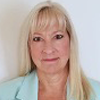 The Association for Manufacturing Excellence (AME) defines people-centric leadership (PCL) as a leadership approach that seeks to create a culture in which everyone is encouraged to improve and apply their talents and given the opportunity to pursue excellence at work every day. In PCL, leadership focuses on providing employees with what they need to go home feeling like they are flourishing and helping to fulfill a greater common purpose, which is important for morale and retention, innovation and product quality.
The Association for Manufacturing Excellence (AME) defines people-centric leadership (PCL) as a leadership approach that seeks to create a culture in which everyone is encouraged to improve and apply their talents and given the opportunity to pursue excellence at work every day. In PCL, leadership focuses on providing employees with what they need to go home feeling like they are flourishing and helping to fulfill a greater common purpose, which is important for morale and retention, innovation and product quality.
All too often, PCL is missing from lean manufacturing, causing many manufacturers to struggle to sustain long-term continuous improvement. Lean only succeeds when tactical continuous improvement is combined with respect for all people within the organization.
As a manufacturing specialist for the Delaware Manufacturing Extension Partnership (DEMEP), part of the MEP National NetworkTM, I help small and medium-sized manufacturers (SMMs) develop people-centric leaders, which lets them leverage the skills of their employees and is required for lean success.
Take, for example, Justin Tanks, a Delaware manufacturer of large fiberglass tanks. When I first worked with the company, it had begun its continuous improvement journey, but it was running out of steam. By turning its efforts toward creating people-centric leaders, the company was able to build a foundation for continuous improvement and growth.
According to Ed Short, Justin Tanks’s CEO, PCL training has helped the company:
- Actively listen to its people’s ideas with acceptance and without judgment, which allows more ideas to be explored and successfully implemented.
- Understand and appreciate the unique behavioral tendencies of each individual.
- Communicate in a way that meets the needs of others.
- Make decisions by balancing the needs of the entire organization with the needs of the individual.
If these outcomes sound like things you’d like to foster at your company, here are five PCL essentials you can use to achieve similar lean success.
1. Self-Reflection
One of the biggest lean roadblocks is when management wastes time trying to control other people. People-centric leaders spend their time and energy reflecting and evaluating themselves. They take responsibility for their own behaviors, which in turn influence the behavior of the employees.
2. Relationship Building
Leaders build relationships with and between people. People-centric leaders recognize they don’t have all the answers and that they need all the talents from their entire organization. Leaders must get to know the whole person. They must trust their employees and act with humility. Leaders who act with humility inspire trust.
3. Listening and Communication
In a people-centric culture, leaders listen more than they speak. They purposely learn and practice how to actively listen. Listening is the most important thing that good leaders do. As noted by Bob Chapman, CEO of the Barry-Wehmiller company, “Doing this one thing can profoundly impact an organization. It can set an organization on a path to a better future.”
4. Celebration and Recognition
Everybody likes pizza, T-shirts and monetary gifts, but these things do not necessarily make people feel appreciated for their unique contributions. One of the biggest complaints I hear from people in the organizations I work with is that their boss has no idea what they do. Perhaps a simple thank-you would have more impact. Employees need to know their work has meaning – and that they are part of something bigger than themselves. People want to contribute and be appreciated, not be controlled and rewarded.
5. Coaching and Development
According to Edgar Schein’s book, “Helping,” when leaders offer correction or provide a solution, employees can feel frustrated, resentful and demoralized. Effective coaching uses a Kata-based scientific way of thinking, which causes people to self-evaluate and engage their minds. It shifts control from the leader to the employee, which results in self-improvement and growth.
How to Build People-Centric Leaders
How can your managers take advantage of PCL? First, it’s critical to remember that like any lean journey, leadership is one of continuous improvement. This journey begins with discarding traditional “director” leadership paradigms in lieu of supportive coaching roles.
Once you’re ready, the above PCL essentials can be developed through education, coaching, reflection and practice. This process includes developing systems to support organizational continuous improvement and clearly communicating strategies and expectations across the organization. This is accomplished by using the PCL framework developed by the AME PCL Curriculum Development Team.
The framework includes:
- A mindset focused on valuing, respecting and caring (forming the foundation for creating a people-centric culture).
- Leader behavior development, per the five PCL essentials outlined above.
- Establishment of systems to support a people-centric culture including goal setting, feedback and alignment throughout the organization.
- Integration with organizational continuous improvement.
- Capability development that engages the minds of everybody in the organization.
These elements drive growth and prosperity for the individual, the organization, the stakeholders and the community. PCL engages the minds of the entire workforce to drive continuous improvement and achieve greatness.
Looking for leadership support in your organization’s lean journey? Contact your local MEP Center to talk to a lean expert or other manufacturing specialists who understand the needs and challenges of smaller manufacturers.
BIO
Lisa Weis is a program Lead, Enterprise Excellence at DEMEP, Lisa Weis is a people-centric, lean/continuous improvement expert with more than 20 years of demonstrated success in helping hundreds of public and…
#390 – THE NEED TO IMPROVE THE RELIABILITY NARRATIVE – FRED SCHENKELBERG
Featured
 In a recent Seth Godin blog, Counting beans he talks about the eventual costs of little compromises. The immediate benefit may be celebration worthy, yet
In a recent Seth Godin blog, Counting beans he talks about the eventual costs of little compromises. The immediate benefit may be celebration worthy, yet
But overlooked are the unknown costs over time, the erosion in brand, the loss in quality, the subtraction from something that took years to add up.
#390 – PROJECT MANAGEMENT DASHBOARDS: DATA, DECISIONS, & HORSESH*T – MALCOLM PEART
Featured
 A project controls colleague of mine recently wrote:
A project controls colleague of mine recently wrote:
“Really, I never had to deal with delivery directors / managers who did not understand or appreciate the effort which goes behind a digital data fed dashboard”
Sarcasm, according to Oscar Wilde, may be the lowest from of wit but it’s the highest form of intelligence. While being humorous at the expense of those who demand dashboards it’s a sad truth that most demanders have no idea as to the effort required in producing a dashboard. For them dashboards can be instantly tailored to any whims or fancies at the flick of a switch or the stroke of a key on a keyboard. Continue reading
#390 – CONFRONTING THE (VUCA) STORM – DAVID ROSS
Featured
 We are experiencing change like never before. Leaders are not only grappling with momentous uncertainty resulting from the pandemic, but arguably an even greater storm awaits them—the storm of complex and interconnected social, environmental, and economic challenges. Climate change. Shifting workforce needs. Energy and water. Poverty. Conflict, international and localised. “Normal” is never coming back. Continue reading
We are experiencing change like never before. Leaders are not only grappling with momentous uncertainty resulting from the pandemic, but arguably an even greater storm awaits them—the storm of complex and interconnected social, environmental, and economic challenges. Climate change. Shifting workforce needs. Energy and water. Poverty. Conflict, international and localised. “Normal” is never coming back. Continue reading
#390 – PEOPLE BEFORE PROFITS DRIVES ORGANIZATIONAL PERFORMANCE – PATRICK OW
Featured
 “Greed, for lack of a better word, is good. Greed is right. Greed works.” (Gordon Gekko, ‘Wall Street’ movie, 1987)
“Greed, for lack of a better word, is good. Greed is right. Greed works.” (Gordon Gekko, ‘Wall Street’ movie, 1987)
When energy-trading company Enron declared bankruptcy in 2001, it was the largest bankruptcy filing in U.S. history. Enron’s execs were pocketing millions while knowingly overstating the company’s earnings to shareholders through fraudulent accounting. Continue reading
#390 – TECH EATS COMPANIES – GREG HUTCHINS
Featured
 Over the next 10 years, I expect many more industries to be disrupted by software, with new world beating Silicon Valley companies doing the disruption in more cases than not.
Over the next 10 years, I expect many more industries to be disrupted by software, with new world beating Silicon Valley companies doing the disruption in more cases than not.
Marc Andreessen – Venture Capitalist
We’ve been involved in engineering and tech automation for years. What surprises us is the observable breadth, depth, and impacts of automation (AI included) over the last five years, which COVID accelerated. What’s the big deal about automation? Continue reading
#390 – WHEN YOUR LEAN SUPPLY CHAINS FEEL OUT OF CONTROL, FOCUS ON WHAT YOU CAN CONTROL – GENE KASCHAK
Featured
 Many manufacturers who adopted lean principles by applying a “just-in-time” (JIT) mindset to inventory of materials and parts have been burned, sometimes badly, by cascading supply chain disruptions. Broken links in the supply chain have created havoc, especially for smaller manufacturers.
Many manufacturers who adopted lean principles by applying a “just-in-time” (JIT) mindset to inventory of materials and parts have been burned, sometimes badly, by cascading supply chain disruptions. Broken links in the supply chain have created havoc, especially for smaller manufacturers.
Some have scrambled to build “safety stock” of hard-to-find supplies. Others have sought out redundant sourcing. The reality is that everything is connected in your supply chain, and those connections can be fragile when they are not well supported. Continue reading
#389 – CANADIAN TRANSPARENCY (OR LACK THERE OF) – EDITORIAL – BILL POMFRET PH.D.
Featured
 It makes me mad and sad, that with all the perks and Inflated salaries Canada’s government has come off badly again in Transparency International’s annual Corruption Perceptions Index, with the country’s score falling faster than that of any other country in the 180-nation rankings released this week. Canada’s score has dropped to its lowest ever, 74 out of 100 a slide that has cost Canada eight points over the past five years alone. Continue reading
It makes me mad and sad, that with all the perks and Inflated salaries Canada’s government has come off badly again in Transparency International’s annual Corruption Perceptions Index, with the country’s score falling faster than that of any other country in the 180-nation rankings released this week. Canada’s score has dropped to its lowest ever, 74 out of 100 a slide that has cost Canada eight points over the past five years alone. Continue reading
#389 – SOFT SKILLS FOR ENGINEERS (EVERYONE) – FRED SCHENKELBERG
Featured
 There are many paths to becoming a reliability engineer.
There are many paths to becoming a reliability engineer.
If you are good with statistics, enjoy the detective work of failure analysis, or simply want to create a durable long lasting product, you likely found yourself in a reliability engineering role.
A science or engineering background is a great start. Time spent working with a design or maintenance team certainly help. An advanced degree in reliability engineering is another path. Continue reading
#389 – WHEN SHOULD A COMPANY SELF – DISRUPT
Featured
So, when should a company self-disrupt? Or, more importantly when should you self-disrupt.
 Companies face these disruptor questions:
Companies face these disruptor questions:
1. What are possible triggers to start (your) self-disruption?
2. When should they (you) self-disrupt?
3. How quickly should they (you) self-disrupt?
4. How should they (you) self-disrupt?
5. What’s their (your) final destination?
6. How are they (you) going to monetize (make money)? Continue reading
#389 – PROJECT MANAGEMENT IGNORANCE & BREAKING LAWS – MALCOLM PEART
Featured
 Project Management – it’s not covered by a discrete law but when it’s practiced under a contract it’s open to accusations of negligence, just consider the UK’s Hedley Byrne case. Project Management is seen as a risk mitigation measure and, contractually speaking, this requires a duty of care by its practitioners and/or the legal entity represented. Ignorance of legal requirements is no excuse for not knowing they exist. Continue reading
Project Management – it’s not covered by a discrete law but when it’s practiced under a contract it’s open to accusations of negligence, just consider the UK’s Hedley Byrne case. Project Management is seen as a risk mitigation measure and, contractually speaking, this requires a duty of care by its practitioners and/or the legal entity represented. Ignorance of legal requirements is no excuse for not knowing they exist. Continue reading
#389 – GOOD PROJECT MANAGEMENT LEADERSHIP WILL REDUCE PROJECT RISK – JOHN AYERS
Featured
T he PMBOK(Project Management Institute Book of Knowledge) Guide states that project management is the application of knowledge, skills, tools, and techniques to project activities to meet the project requirements. Having a good plan, experienced PM, and excellent team is essential to great project management performance. Managing project risks is key to success. Good project management decisions are vital to project success. To achieve this goal, you need good project management leadership. Continue reading
he PMBOK(Project Management Institute Book of Knowledge) Guide states that project management is the application of knowledge, skills, tools, and techniques to project activities to meet the project requirements. Having a good plan, experienced PM, and excellent team is essential to great project management performance. Managing project risks is key to success. Good project management decisions are vital to project success. To achieve this goal, you need good project management leadership. Continue reading
#389 – HOW SMALLER SUPPLIERS CAN DEVELOP RISK MANAGEMENT STRATEGIES FOR THEIR SUPPLY CHAINS – KATIE RAPP
Featured
 The COVID-19 pandemic brought to light a stark reality about current supply chains. As Nissan Motor Co.’s Chief Operating Officer Ashwani Gupta points out, “The just-in-time model is designed for supply-chain efficiencies and economies of scale. The repercussions of an unprecedented crisis like COVID highlight the fragility of our supply-chain model.” The U.S. supply chain has so far struggled to adapt and restock pandemic-depleted inventories. There are industrywide shortages and a lag in how many manufacturers are responding. Continue reading
The COVID-19 pandemic brought to light a stark reality about current supply chains. As Nissan Motor Co.’s Chief Operating Officer Ashwani Gupta points out, “The just-in-time model is designed for supply-chain efficiencies and economies of scale. The repercussions of an unprecedented crisis like COVID highlight the fragility of our supply-chain model.” The U.S. supply chain has so far struggled to adapt and restock pandemic-depleted inventories. There are industrywide shortages and a lag in how many manufacturers are responding. Continue reading
#388 – VUCA, DISRUPTION AND RISK – GREG HUTCHINS
Featured
 Breaking an old business model is always going to require leaders to follow their instincts. There will always be persuasive reasons not to take a risk. But if you only do what worked in the past, you’ll wake up one day and find that you’ve been passed by. Continue reading
Breaking an old business model is always going to require leaders to follow their instincts. There will always be persuasive reasons not to take a risk. But if you only do what worked in the past, you’ll wake up one day and find that you’ve been passed by. Continue reading
#388 – COMMUNICATION SKILLS REALLY MATTER – BILL POMFRET PH.D.
Featured
 Back in 1990, I was introduced to Og Mandino, a best selling American author, just three of his books, “The Greatest Salesman in the World” The Greatest Miracle in The World” and “The Greatest Secret in the World” these three books alone sold over 50 million copies, his lecture was on “How to write and Speak.” In his presentation, which had been a tradition for more than 40 years, was posted on YouTube not long after his death in 1996. In it, he explains the relationship among three critical elements of any level of success: knowledge (K), practice (P) and talent (T). Continue reading
Back in 1990, I was introduced to Og Mandino, a best selling American author, just three of his books, “The Greatest Salesman in the World” The Greatest Miracle in The World” and “The Greatest Secret in the World” these three books alone sold over 50 million copies, his lecture was on “How to write and Speak.” In his presentation, which had been a tradition for more than 40 years, was posted on YouTube not long after his death in 1996. In it, he explains the relationship among three critical elements of any level of success: knowledge (K), practice (P) and talent (T). Continue reading
#388 – PRESENTATION SKILLS FOR ENGINEERS – FRED SCHENKELBERG
Featured
 We often present proposals and reports. We talk about the plan or results. We want funding, approval, or action. We need excellent presentation skills.
We often present proposals and reports. We talk about the plan or results. We want funding, approval, or action. We need excellent presentation skills.
Excellent communication skills is often on job openings. It is not there by chance. Your ability to communicate well, especially via presentations is vital for your success and the success of your reliability program. Continue reading
#388 – PROJECT EMAIL ECONOMICS – MALCOLM PEART
Featured
 Economics concerns itself with the determination of the most logical and effective use of resources to meet private and social goals for some form of benefit. While primarily concerned with industry and business, its concepts of opportunity cost, supply and demand, present value, and mutual interdependence economics is also applicable to email; one of our most utilised forms of communication but, possibly, the most hated. Continue reading
Economics concerns itself with the determination of the most logical and effective use of resources to meet private and social goals for some form of benefit. While primarily concerned with industry and business, its concepts of opportunity cost, supply and demand, present value, and mutual interdependence economics is also applicable to email; one of our most utilised forms of communication but, possibly, the most hated. Continue reading
#388 – COMPANY ACCEPTANCE OF HYBRID PM IS HIGH RISK – JOHN AYERS
Featured
 A Hybrid Methodology combining the speed and flexibility of Agile and the structure of Waterfall is feasible and practical. I base my opinion on the research I have done. I recently presented a Webinar to Project Management Institute (PMI) members on how to merge Agile and Waterfall to achieve a Hybrid methodology. The focus of this paper is to address the greatest risk to a company in implementing the new methodology i.e., acceptance of it. I addressed how to accomplish the merger to achieve a Hybrid method in a paper I wrote and posted on LinkedIn in May. Continue reading
A Hybrid Methodology combining the speed and flexibility of Agile and the structure of Waterfall is feasible and practical. I base my opinion on the research I have done. I recently presented a Webinar to Project Management Institute (PMI) members on how to merge Agile and Waterfall to achieve a Hybrid methodology. The focus of this paper is to address the greatest risk to a company in implementing the new methodology i.e., acceptance of it. I addressed how to accomplish the merger to achieve a Hybrid method in a paper I wrote and posted on LinkedIn in May. Continue reading
#388 – CLIMATE UNCERTAINTY IS OPPORTUNITY: THE FUTURE IS MALLEABLE – BOB LEONARD
Featured
 “If you are proactive, you focus on preparing. If you are reactive, you end up focusing on repairing.” – John C. Maxwell
“If you are proactive, you focus on preparing. If you are reactive, you end up focusing on repairing.” – John C. Maxwell
We live in a Volatile, Uncertain, Complex and Ambiguous (VUCA) world. And our climate crisis guarantees it will remain a VUCA world for decades. Climate touches everything so it has knock on effects in society, technology, economics and politics, and, obviously, on our ecosystem. Continue reading
#387 – RISK BASED, DECISION MAKING – GREG HUTCHINS
Featured
 Go out on a limb. That’s where the fruit is.||
Go out on a limb. That’s where the fruit is.||
Jimmy Carter – U.S. President
Working It in VUCA time emphasizes Risk Based, Problem Solving (RBPS) and Risk Based, Decision Making (RBDM), which are the essence of self-management, execution, career resilience, and career agility.
Years ago, our mantra was risk management should be part of the tool box of all engineers. Why? Engineers live and work in the world of uncertainty and risk. Then things changed. In VUCA time, we say that risk is the entire toolkit and lens for ALL work and living in VUCA time. McKinsey, the global consulting firm, explains the connection between problem solving and decision making: Continue reading
#387 – ABILITY TO INFLUENCE DECISIONS – FRED SCHENKELBERG
Featured
 The role of a reliability engineer is to support the other engineers and managers as they make decisions concerning reliability.
The role of a reliability engineer is to support the other engineers and managers as they make decisions concerning reliability.
Our ability may be well honed and effective. Or it may be fumbling or annoying. It is our ability to communicate along with our technical ability that determine our ability to influence well.
We may do analysis or testing. We follow up on failures and evaluate suppliers. What we actually are doing is influencing decisions. Continue reading
#387 – RISK CULTURE DOES NOT EXIST: IT’S ALL ABOUT RISK MATURITY – PATRICK OW
Featured
 [This is the first of a series of seven articles on the topic of risk culture and how organisations can improve their performance through uplifting their risk maturity.]
[This is the first of a series of seven articles on the topic of risk culture and how organisations can improve their performance through uplifting their risk maturity.]
Interest in risk culture has been growing since the 2008 Global Financial Crisis. It is a topic that is getting more and more spotlight. Continue reading
#387 – MENTAL RISK: SOLITUDE IS PLEASANT: LONELINESS IS NOT – BILL POMFRET PH.D.
Featured
 Mental Health Awareness week is fast approaching. This year it is from 9th-15th May and the theme is Loneliness, Anna Neagle is right, in her book Cultivating and being happy in our own company is important, but even the most introverted among us benefit from human connection and where increasingly people have started working from home, or in a hybrid home/workplace setting, we need to proactively seek that connection out. Connection can be with our close circle, or even from small talk with strangers the research shows that both are helpful for our wellbeing.,
Mental Health Awareness week is fast approaching. This year it is from 9th-15th May and the theme is Loneliness, Anna Neagle is right, in her book Cultivating and being happy in our own company is important, but even the most introverted among us benefit from human connection and where increasingly people have started working from home, or in a hybrid home/workplace setting, we need to proactively seek that connection out. Connection can be with our close circle, or even from small talk with strangers the research shows that both are helpful for our wellbeing.,
Continue reading
#387 – SCOPING YOUR PROJECT CONSTRAINTS – MARK MOORE
Featured
 This article focuses on one of the most fundamental principles of project management that is critical for any Project Manager, leader, or organization to understand. That topic is “Scope”. As I proposed this topic, one of my LinkedIn cyber colleagues (Bill Duncan) added that he teaches scope in two parts – the Product Scope (which is what you will be delivering at the end of the project) and the Work Scope (which is how you will organize the work and deliver the effort within the confines of the project). Continue reading
This article focuses on one of the most fundamental principles of project management that is critical for any Project Manager, leader, or organization to understand. That topic is “Scope”. As I proposed this topic, one of my LinkedIn cyber colleagues (Bill Duncan) added that he teaches scope in two parts – the Product Scope (which is what you will be delivering at the end of the project) and the Work Scope (which is how you will organize the work and deliver the effort within the confines of the project). Continue reading
#387 – AGILE EVM BASED DOD SOFTWARE DEVELOPMENT PROJECT WBS – JOHN AYERS
Featured
 “Department of Defense (D0D) acquisition must improve program while working within budgetary constraints. The DoD community shows an interest in utilizing Agile methodologies, but struggles to reap Agile’s benefits. They encountered challenges including the historically built-up processes that enforce heavy-weight oversight, the outdated, manufacturing focused Work Breakdown Structure (WBS) provided in DoD Handbook: Work Breakdown Structures (WBS) for defense Material Items (MIL-STD-881C), and the inability of traditional waterfall-based process to accommodate iterative development. Continue reading
“Department of Defense (D0D) acquisition must improve program while working within budgetary constraints. The DoD community shows an interest in utilizing Agile methodologies, but struggles to reap Agile’s benefits. They encountered challenges including the historically built-up processes that enforce heavy-weight oversight, the outdated, manufacturing focused Work Breakdown Structure (WBS) provided in DoD Handbook: Work Breakdown Structures (WBS) for defense Material Items (MIL-STD-881C), and the inability of traditional waterfall-based process to accommodate iterative development. Continue reading
#386 – HOW TO GET A PROJECT MANAGEMENT JOB – JOHN AYERS
Featured
#386 – DISRUPTION IS CREATING NEW WORK WORLDS – GREG HUTCHINS
Featured
 There are lots of lessons to learn from Amazon. Never stop innovating or questioning the fundamentals of your business. Disrupt yourself before others do.
There are lots of lessons to learn from Amazon. Never stop innovating or questioning the fundamentals of your business. Disrupt yourself before others do.
Brad Stone – Journalist & Author
Consulting firms, academics, and consultants are developing models for the Future of Work. Price Waterhouse Coopers (PwC) developed a scenario called the Future of Work: A Journey to 2022. The premise of the study is: “disruptive innovations are creating new industries and business models, and destroying old ones.”[i] PwC outlined three distinct worlds of work: Blue, Green, and Orange. Continue reading
#386 – YOU CAN QUANTIFY ANY RISK IN THE PLANET: FOLLOW THESE STEPS – ALEX SIDORENKO
Featured
 While I’ve written this post about compliance risks in the past, I later applied exactly the same math and logic to any non financial risk, including intellectual property, legal, environmental, ESG and most other risks you can think of. Follow this step by step guide to quantify most non financial risks or if you want to automate quantitative risk analysis use Archer Insight. Continue reading
While I’ve written this post about compliance risks in the past, I later applied exactly the same math and logic to any non financial risk, including intellectual property, legal, environmental, ESG and most other risks you can think of. Follow this step by step guide to quantify most non financial risks or if you want to automate quantitative risk analysis use Archer Insight. Continue reading
#386 – DISENGAGED AND STRESSFUL WORKPLACES CREATE RISK FOR ORGANIZATIONS – PATRICK OW
Featured
 Gallup’s State of the Global Workplace: 2022 Report found that only 21% of employees are engaged at work and 44% of employees experienced a lot of stress on the previous day – both findings are up 1% from 2021.
Gallup’s State of the Global Workplace: 2022 Report found that only 21% of employees are engaged at work and 44% of employees experienced a lot of stress on the previous day – both findings are up 1% from 2021.
In one of the largest studies of burnout, Gallup found the biggest source was “unfair treatment at work.” That was followed by an unmanageable workload, unclear communication from managers, lack of manager support and unreasonable time pressure. Continue reading
#386 – THE TWO TYPES OF AGILITY YOU NEED – HOWARD WIENER
Featured
 If your business is going to survive, you must be able to read and react to changes in your markets and continuously improve your competitive position. It’s more important now than it’s ever been.
If your business is going to survive, you must be able to read and react to changes in your markets and continuously improve your competitive position. It’s more important now than it’s ever been.
SWOT is a model often employed to characterize a company’s competitive position in terms of Strengths, Weaknesses, Opportunities and Threats. If a competitor creates a new offering that you can’t match, that’s a weakness. If you have one that they can’t match, it’s a strength. Continue reading
#386 – ARE YOU IN CONTROL OF YOUR RISK – ANNETTE DAVISON PH.D.
Featured
 According to the definition in ISO 31000, risk is the impact of uncertainty on [achieving] your objectives. Of course, this impact can be both negative or positive. ISO 31000 states the following:
According to the definition in ISO 31000, risk is the impact of uncertainty on [achieving] your objectives. Of course, this impact can be both negative or positive. ISO 31000 states the following:
“Clause 6.4.2 Risk identification: The organisation should identify risks, whether or not their sources are under its control.
Clause 6.4.3 Risk analysis: The effectiveness of existing Continue reading
#385 – TYPE OF CONTRACT YOU BID ON EFFECTS YOUR RISK – JOHN AYERS
Featured
 There are two basic types of contracts applied to development projects. They are Firm Fixed Price (FFP) and Cost-Plus (CP). Each type has a number of different variations shown in Table 1. FFP contracts are for projects with mature technology, less uncertainty, and more predictability. CP contracts are for projects with new technology, a lot of uncertainty, and less predicability. There are other types of contracts but are out of scope for this paper. Continue reading
There are two basic types of contracts applied to development projects. They are Firm Fixed Price (FFP) and Cost-Plus (CP). Each type has a number of different variations shown in Table 1. FFP contracts are for projects with mature technology, less uncertainty, and more predictability. CP contracts are for projects with new technology, a lot of uncertainty, and less predicability. There are other types of contracts but are out of scope for this paper. Continue reading
#385 – REPUTATIONAL RISK IS NOT A RISK – ALEX SIDORENKO
Featured
 Despite the clickbait title, the messages are in the article are important to the risk profession and are purely practical. First few caveats, corporate reputation is important, even a perception of wrongdoings can affect funding, sales and cost of doing business. Importance of reputations for both profits and non-profits is not up for a debate. Second caveat is that reputational risk in this article is just an illustration, the same underlying principles apply to all other “marketing” risks like ESG, geopolitical and whatever bs consultants will come up with next. Continue reading
Despite the clickbait title, the messages are in the article are important to the risk profession and are purely practical. First few caveats, corporate reputation is important, even a perception of wrongdoings can affect funding, sales and cost of doing business. Importance of reputations for both profits and non-profits is not up for a debate. Second caveat is that reputational risk in this article is just an illustration, the same underlying principles apply to all other “marketing” risks like ESG, geopolitical and whatever bs consultants will come up with next. Continue reading
#385 – PROJECT TRUST, RESPECT, & TOXICITY: IMPOSSIBLE MENAGE A TROIS? – MALCOLM PEART
Featured
 People! People in positions of authority wish for popularity, they may demand respect in one way or another but, above all, being trusted is perhaps the most desirable. Trust, they say, needs to be won, respect is awaited expectantly but not necessarily given enjoyably, and popularity is fleeting. In the absence of trust and respect, and despite any feelings of friendship or congeniality, toxic environments can prevail even though their obnoxiousness is well known as is the souring effect on human relationships. Continue reading
People! People in positions of authority wish for popularity, they may demand respect in one way or another but, above all, being trusted is perhaps the most desirable. Trust, they say, needs to be won, respect is awaited expectantly but not necessarily given enjoyably, and popularity is fleeting. In the absence of trust and respect, and despite any feelings of friendship or congeniality, toxic environments can prevail even though their obnoxiousness is well known as is the souring effect on human relationships. Continue reading
#385 – BADLY DESIGNED ORGANIZATIONS ALWAYS PERFORM POORLY – PATRICK OW
Featured
 If your organisation is suffering from performance issues despite what you consider well-executed strategies, plans, and initiatives, then you have a range of roadblocks holding you back.
If your organisation is suffering from performance issues despite what you consider well-executed strategies, plans, and initiatives, then you have a range of roadblocks holding you back.
Typically, when organisations are losing market share or not making achieving their revenue targets, the first thing they do is to change their goals, strategy, mission, structure, vision, values etc, and even their plans. Continue reading
#385 – HOW TO MANAGE RISKS DURING NEW PRODUCT DEVELOPMENT – DIANNA DEENEY
Featured
 New product development engineers are managing risks, daily, with each design decision: unknown risk in creating something new, risk introduced through a failure, human factors risk, and other risks related to products and services. Their design decisions affect downstream activities (from production through disposal) and the bottom-line success of the product in the market. How can engineers manage these risks through the design process? Continue reading
New product development engineers are managing risks, daily, with each design decision: unknown risk in creating something new, risk introduced through a failure, human factors risk, and other risks related to products and services. Their design decisions affect downstream activities (from production through disposal) and the bottom-line success of the product in the market. How can engineers manage these risks through the design process? Continue reading
#384 – TOP LINE PROJECT REPORTING – BOTTOM LINE PROJECT MANAGEMENT – MALCOLM PEART
Featured
 Projects are about businesses and business is about money. Very few firms are not-for-profit and profit margins are fundamental to ensuring a company’s survival in the dog-eat-dog world of the markets they operate in. Profit declaration is an essential part any company’s annual report and a quick, but not necessarily accurate indicator of its financial health. Continue reading
Projects are about businesses and business is about money. Very few firms are not-for-profit and profit margins are fundamental to ensuring a company’s survival in the dog-eat-dog world of the markets they operate in. Profit declaration is an essential part any company’s annual report and a quick, but not necessarily accurate indicator of its financial health. Continue reading
#384 – FIVE RED FLAGS WHEN SELECTING A RISK BROKER – ALEX SIDORENKO
Featured
 Couple of years ago I was given the responsibility for corporate, non-life insurance across a $10B group of companies. I welcomed the opportunity to combine risk-based quantitative decision making with insurance. Did it work? You be the judge, a year later the company improved the quality of coverage while reducing the cost of insurance by approximately 40%, which translated to $13M+ savings. How did we do it? Let’s find out together in a series of articles… Continue reading
Couple of years ago I was given the responsibility for corporate, non-life insurance across a $10B group of companies. I welcomed the opportunity to combine risk-based quantitative decision making with insurance. Did it work? You be the judge, a year later the company improved the quality of coverage while reducing the cost of insurance by approximately 40%, which translated to $13M+ savings. How did we do it? Let’s find out together in a series of articles… Continue reading
#384 – HOW TO CREATE PERFORMANCE CURVES FROM THE IMS – JOHN AYERS
Featured
Two schedule tools are widely used for the Integrated Master Schedule (IMS )around the world to manage projects. The first one is Microsoft Project (MS Project). The second one is Primavera P6. They are both very good. Primavera P6 is an Oracle product originally designed for the construction industry. MS Project is simpler and easier to learn based on my experience. It also costs less than Primavera P6. DOD uses MS Project and typically requires it for use on government contracts. Other industries use one or the other depending on the size and complexity of the project.
As shown in Figure 1, the IMS is structured around work packages (WPs) and activities. The WP are the tasks. The activities are subtasks of each WP with a duration and are linked together to form the IMS logic. WP budgets are allocated to each activity. Together they form the integration of task, schedule, and budget.
Data can be exported from the IMS to Excel and curves created to reflect project performance. The curves help you manage the project and report to management. This paper uses MS Project to explain how to do it.
CREATING PERFORMANCE CURVES FROM IMS
The Widget System project is an example to explain how performance curves are created from the IMS. Only one curve is presented as an example due to paper length limits but the process and steps shown below apply to generating other performance curves.
WIDGET SYSTEM EXAMPLE
The Widget System MS Project schedule is shown in Figure 1. There are several columns (aka fields) shown These columns are:
- Task name.
- Successor (following task).
- Predecessor (previous task)
- Finish (date the task is scheduled to finish).
- Start (date the task is scheduled to start).
- Duration (time in weeks, months, or days for the length of the task).
EXPORTING IMS DATA INTO EXCEL SPREADSHEET
Excel is a commercial spreadsheet application produced and distributed by Microsoft for Microsoft Windows and Mac OS. It features the ability to perform basic calculations, use graphing tools, create pivot tables and create macros. Excel has the same basic features as all spreadsheet applications, which use a collection of cells arranged into rows and columns to organize and manipulate data. They can also display data as charts, histograms and line curves.
To export the data to an Excel spreadsheet, save the MS Project file to Excel Worksheet in a new folder. As soon as you save it, an export Wizard tool pull down menu appears. The Wizard menu is where you specify the fields (name of task, start date, finish date, etc.) you want. Once this is done, click finish and the data automatically is exported to the new file. Open the new Excel file and you should see the MS Project data.
Table 1 shows the exported Widget Project IMS data in an Excel file. In Table 1, the ID, task name, task successors, task predecessors, task start date, task finish date, and task duration have been exported into Excel.
Table 1 Widget System IMS Data Exported to Excel
GENERATE PLANNED AND ACTUAL FINISH TASK DATA TABLE
These are the steps to create Table 2:
- Enter the months and year in a row of cells in Excel
- Create a row below the month and year row and title it “Planned Tasks Finished”
- Count the tasks that are finished for each month and enter the number in the Planned Tasks Finished Row
- Create a new row called “Cum Planned Tasks Finished”. Either calculate by hand or use the Excel built in formulas for each cell to determine the cumulative finish tasks for each month and enter it into the row
- Repeat steps for “Actual Tasks Finished”.
CREATE PERFORMANCE CURVE
The steps are from Table 2:
- Take the cursor and highlight the month and year row, the cumulative planned tasks finished rows, and the cumulative actual tasks finished row as shown in blue shade in Table 2.
- Go to the Excel “insert tab” and find the line graph pull down menu. Click on the desired line graph (there are several choices). You will see the graph appear in the Excel file.
- Add axes titles using the pull-down menu. You now have a graph of the finished tasks data as shown in Figure 2.
Figure 2 shows the cumulative planned finished tasks vs the actual finished tasks curve at the end of January 2021, the date of the reporting period. It can be seen that the actual finished tasks are less than the plan which means the project is behind schedule. This and other project performance curves are very useful in terms of managing the project and reporting status. These and other project performance curves can be created from the IMS.
Figure 2 IMS Excel Data Plotted Curve
SUMMARY
The Integrated Master Schedule (IMS) is the project schedule that integrates cost, schedule and technical tasks. Once approved by the customer and management it is baselined after contract award and becomes the Performance Measurement Baseline (PMB) for the project. It is used to measure performance against the baseline to determine the project status. The PMB cannot change until the customer directs so in writing.
Using the process presented above, any data included in the IMS can be used to create curves. One example for finished tasks is shown above. Figure 3 gives an example of the resource plan for the Widget System project. It shows how the resources need to be staffed for the IMS to be valid.
Take advantage of Excel capabilities to create curves reflecting project performance. It will help you manage your project and reports to management.
BIO
 Currently John Ayers is an author, writer, and consultant. He authored a book entitled Project Risk Management. It went on sale on Amazon in August 2019. He authored a second book entitled How to Get a Project Management Job: Future of Work. It is on sale on Amazon. The first is a text book that includes all of the technical information you will need to become a Project Manager (PM). The second book shows you how to get a PM job. Between the two, you have the secret sauce to succeed. There are links to both books on his website. https://projectriskmanagement.info/He has presented numerous Webinars on project risk management to PMI. He writes columns on project risk management for CERM (certified enterprise risk management). John also writes blogs for Association for Project Management (APM) in the UK. He has conducted a podcast on project risk management. John has published numerous papers on project risk management and project management on LinkedIn. John also hosts the Project Manager Coach club on clubhouse.com.
Currently John Ayers is an author, writer, and consultant. He authored a book entitled Project Risk Management. It went on sale on Amazon in August 2019. He authored a second book entitled How to Get a Project Management Job: Future of Work. It is on sale on Amazon. The first is a text book that includes all of the technical information you will need to become a Project Manager (PM). The second book shows you how to get a PM job. Between the two, you have the secret sauce to succeed. There are links to both books on his website. https://projectriskmanagement.info/He has presented numerous Webinars on project risk management to PMI. He writes columns on project risk management for CERM (certified enterprise risk management). John also writes blogs for Association for Project Management (APM) in the UK. He has conducted a podcast on project risk management. John has published numerous papers on project risk management and project management on LinkedIn. John also hosts the Project Manager Coach club on clubhouse.com.
John earned a BS in Mechanical Engineering and MS in Engineering Management from Northeastern University. He has extensive experience with commercial and U.S. DOD companies. He is a member of the Project Management Institute (PMI. John has managed numerous large high technical development programs worth in excessive of $100M. He has extensive subcontract management experience domestically and foreign. John has held a number of positions over his career including: Director of Programs; Director of Operations; Program Manager; Project Engineer; Engineering Manager; and Design Engineer. He has experience with: design; manufacturing; test; integration; subcontract management; contracts; project management; risk management; and quality control. John is a certified six sigma specialist, and certified to level 2 Earned Value Management (EVM).
Go to his website above to find links to his books on Amazon and dozens of articles he has written on project and project risk management.
#384 – QUALITY VS. SAFETY COMPLIANCE MANAGEMENT – BILL POMFRET PH.D.
Featured
 Compliance management is getting more challenging. Not only are legislators and governments around the world imposing more regulations, but the expectations placed on compliance leadership to management expanding scope of compliance oversight is growing every day. The periphery of compliance–including ethics, diversity, ESG, and risk management–ask to sever more of compliance leaders who are seeking to best manage, scale, and address compliance demand efficiently and effectively. Continue reading
Compliance management is getting more challenging. Not only are legislators and governments around the world imposing more regulations, but the expectations placed on compliance leadership to management expanding scope of compliance oversight is growing every day. The periphery of compliance–including ethics, diversity, ESG, and risk management–ask to sever more of compliance leaders who are seeking to best manage, scale, and address compliance demand efficiently and effectively. Continue reading
#384 – FUTURE OF CYBER SECURITY – JEFF BROWN
Featured
J effrey W. Brown is a recognized information security and IT risk expert with a strong track record of more than two decades implementing cost-effective controls for global Fortune 500 financial institutions including Citigroup, Goldman Sachs, GE Capital, BNY Mellon and AIG. He currently serves as the first CISO for the State of Connecticut. His latest publication, The Security Leader’s Communication Playbook, is scheduled to be published in the Fall, 2021 by CRC Press. Continue reading
effrey W. Brown is a recognized information security and IT risk expert with a strong track record of more than two decades implementing cost-effective controls for global Fortune 500 financial institutions including Citigroup, Goldman Sachs, GE Capital, BNY Mellon and AIG. He currently serves as the first CISO for the State of Connecticut. His latest publication, The Security Leader’s Communication Playbook, is scheduled to be published in the Fall, 2021 by CRC Press. Continue reading
#383 – TECHNICAL WRITING SKILLS FOR ENGINEERS – FRED SCHENKELBERG
Featured
 Your peers, team mates, and management want to understand your writing. They want to quickly get your point, find supporting information, and take action.
Your peers, team mates, and management want to understand your writing. They want to quickly get your point, find supporting information, and take action.
As a reliability engineer, you write proposals, plans, and reports. You write problem statements, failure analysis findings, recommended process improvements, and much more.
You write to document a process or plan. More often you write to encourage others to take action. Continue reading
#383 – RISK MANAGEMENT LESSONS FROM THE UKRAINE WAR – PATRICK OW
Featured
 Risk management lessons from the Ukraine war
Risk management lessons from the Ukraine war
Risk professionals can learn from Russia’s unprovoked war on Ukraine.
The ripple effect of the war on every individual can be felt across the globe. One such effect is the increase in fuel and food prices. This war is a stark reminder that we are living in an interconnected world. And the inter-connectedness of our risks within and external to our organisation must be considered as we identify and manage our risks. The complexity of our risk management practices should not be under-estimated. Continue reading
#383 – CULTURE AND FOUR LENSES FOR ORGANIZATIONAL GROWTH – MARK MOORE
Featured
 Many organizations get so caught up in what they currently do and how they do it, that they cannot find ways to effectively improve how they operate and experience the growth that stems from that kind of change. Plotting a path to organizational growth, especially based on the projects it chooses to execute, can be a challenge. The fundamental elements are not overly complicated, but the work to make the change is hard. Continue reading
Many organizations get so caught up in what they currently do and how they do it, that they cannot find ways to effectively improve how they operate and experience the growth that stems from that kind of change. Plotting a path to organizational growth, especially based on the projects it chooses to execute, can be a challenge. The fundamental elements are not overly complicated, but the work to make the change is hard. Continue reading
#383 – ELECTRIC GRID RISKS – BILL POMFRET PH.D.
Featured
 When the electricity grid fails, there is a risk of cascading impacts from what might seem to be a relatively minor event.
When the electricity grid fails, there is a risk of cascading impacts from what might seem to be a relatively minor event.
Having just watched a Electric Power video on this very topic, I feel obligated to inform the masses, what would happen if the power grid shut down? Continue reading
#383 – ESG IS THE WORST THING TO HAPPEN TO RISK MANAGEMENT SINCE GRC – ALEX SIDORENKO
Featured
 Climate change is a huge issue, environmental pollution is a huge issue, social inequality and everything else typically bundled under the ESG umbrella are important issues totally deserving the management attention. This article is about something else entirely, so keep your system 1 thinking in check and carry on reading. Continue reading
Climate change is a huge issue, environmental pollution is a huge issue, social inequality and everything else typically bundled under the ESG umbrella are important issues totally deserving the management attention. This article is about something else entirely, so keep your system 1 thinking in check and carry on reading. Continue reading
#382 – LISTENING SKILLS FOR ENGINEERS – FRED SCHENKELBERG
Featured
 Did you hear what they said? Or, were you busy loading for your next verbal barrage?
Did you hear what they said? Or, were you busy loading for your next verbal barrage?
As my mother would remind me, one should listen twice of often as speaking. Something about the ratio of ears to mouths in the population. I have to agree with her, that one can learn a lot by listening.
Listening may not seem to be a skill that one needs to master. Yet, how often have you walked away from a meeting where one or more participants obviously were not listening? How often are points repeated in an effort to be heard? Continue reading
#382 – GOVERNMENT RISK DISCLOSURES – JAMES KLINE PH.D.
Featured
 The Government Accounting Standards Board (GASB) on June 20, 2022, issued an exposure draft on the disclosure of certain risks. This piece examines the requirements and problems.
The Government Accounting Standards Board (GASB) on June 20, 2022, issued an exposure draft on the disclosure of certain risks. This piece examines the requirements and problems.
Government Accounting Standards Board
GASB is an independent private organization formed in 1984. It has the two primary responsibilities. One is to establish and improve the standards of state and local government accounting. The second is to educate stakeholders – issuers, auditors, and other users of financial information, on how to best understand and use financial reports. Continue reading
#382 – FLOW: WHY CAN’T MY ORGANIZATION GROW AND IMPROVE? – MARK MOORE
Featured
 Many organizations get so caught up in what they currently do and how they do it, that they cannot find ways to effectively improve how they operate and experience the growth that stems from that kind of change. Plotting a path to organizational growth, especially based on the projects it chooses to execute, can be a challenge. The fundamental elements are not overly complicated, but the work to make the change is hard. Continue reading
Many organizations get so caught up in what they currently do and how they do it, that they cannot find ways to effectively improve how they operate and experience the growth that stems from that kind of change. Plotting a path to organizational growth, especially based on the projects it chooses to execute, can be a challenge. The fundamental elements are not overly complicated, but the work to make the change is hard. Continue reading
#382 – WHAT TO DO IN THE EVENT OF A CRASH – BILL POMFRET PH.D.
Featured
 The Focus of driver safety is on preventing accidents and implementing the necessary protocols to control risk across commercial fleets, but crashes do happen, so, the question I ask is are fleets doing enough to help drivers when they are involved in a collision? Continue reading
The Focus of driver safety is on preventing accidents and implementing the necessary protocols to control risk across commercial fleets, but crashes do happen, so, the question I ask is are fleets doing enough to help drivers when they are involved in a collision? Continue reading
#382 – IS YOUR RISK MANAGER A USER OR GENERATOR? WHAT ABOUT YOU? – ALEX SIDORENKO
Featured
 I bet every person working in a large corporation or reading me on LinkedIn knows at least one risk manager. Maybe you like them, maybe you ignore them, but can you tell whether your risk manager friend is a “USER” or a “GENERATOR”? Sam Savage has been popularising the idea of different risk management roles for years and after doing few webcasts with him, I have to agree. Read on and let me know what you think. Continue reading
I bet every person working in a large corporation or reading me on LinkedIn knows at least one risk manager. Maybe you like them, maybe you ignore them, but can you tell whether your risk manager friend is a “USER” or a “GENERATOR”? Sam Savage has been popularising the idea of different risk management roles for years and after doing few webcasts with him, I have to agree. Read on and let me know what you think. Continue reading
#381 – TALE OF PROJECT REPORTING: FEAST OR FAMINE – MALCOLM PEART
Featured
 This is a story about project reporting, and its importance to project management. No matter how many or how few reports there are, it’s the report that provides the information that managers need to make decisions. It’s also not about the glut or the dearth though, it’s about the quality of the content and timing of delivery that can make all the difference between right or wrong decisions, and a project’s overall outcome. Continue reading
This is a story about project reporting, and its importance to project management. No matter how many or how few reports there are, it’s the report that provides the information that managers need to make decisions. It’s also not about the glut or the dearth though, it’s about the quality of the content and timing of delivery that can make all the difference between right or wrong decisions, and a project’s overall outcome. Continue reading
#381 – DISCUSSION SKILLS FOR RELIABILITY ENGINEERING – FRED SCHENKELBERG
Featured
 Talking is not the same as a discussion or conversation. Talking is one direction only. If two people are talking, they are talking at each other.
Talking is not the same as a discussion or conversation. Talking is one direction only. If two people are talking, they are talking at each other.
A discussion is two way. When two people have a discussion information passes both ways, both speak, both listen.
As an engineer, there is plenty to discuss. We work with others to find solutions, make compromises, determine optimizations, and finish projects. We need to share our knowledge and insights, as well as learn from others. Continue reading
#381 – HYBRID PROJECT MANAGEMENT METHODOLOGY – JOHN AYERS
Featured
 A Hybrid Methodology combining the speed and flexibility of Agile and the structure of Waterfall is feasible and practical. I base my opinion on the research I have done. I recently presented a Webinar to Project Management Institute (PMI) members on how to merge Agile and Waterfall to achieve a Hybrid methodology. The focus of this paper is to address the greatest risk to a company in implementing the new methodology i.e., acceptance of it. I addressed how to accomplish the merger to achieve a Hybrid method in a paper I wrote and posted on LinkedIn in May. Continue reading
A Hybrid Methodology combining the speed and flexibility of Agile and the structure of Waterfall is feasible and practical. I base my opinion on the research I have done. I recently presented a Webinar to Project Management Institute (PMI) members on how to merge Agile and Waterfall to achieve a Hybrid methodology. The focus of this paper is to address the greatest risk to a company in implementing the new methodology i.e., acceptance of it. I addressed how to accomplish the merger to achieve a Hybrid method in a paper I wrote and posted on LinkedIn in May. Continue reading
#381 – PLANNING AND PREPARING FOR THE BUMPY ENVIRONMENTAL ROAD AHEAD – BOB LEONARD
Featured
 Environment, Social and Governance (ESG) reporting and reducing carbon footprints are just the first steps in what is going to be a decades long initiative to mitigate and adapt to our climate crisis. Every business and every person will be impacted, and those impacts will continue for a long, long time. Continue reading
Environment, Social and Governance (ESG) reporting and reducing carbon footprints are just the first steps in what is going to be a decades long initiative to mitigate and adapt to our climate crisis. Every business and every person will be impacted, and those impacts will continue for a long, long time. Continue reading
#381 – ASBESTOS LEGACY IN CANADA – BILL POMFRET PH.D.
Featured
 20 years ago, I wrote extensively, and held a rally on Parliament hill regarding the two-faced Canadian Government and Asbestos. At that time, I had just visited India, where I witnessed Canadian Asbestos being unloaded from Vessels, with workers wearing only flip flops and loin cloths using large hooks to grab the bales. Continue reading
20 years ago, I wrote extensively, and held a rally on Parliament hill regarding the two-faced Canadian Government and Asbestos. At that time, I had just visited India, where I witnessed Canadian Asbestos being unloaded from Vessels, with workers wearing only flip flops and loin cloths using large hooks to grab the bales. Continue reading
#380 – IF A ‘YES’ IS NOT A ‘YES’ – IT IS A RISK – MALCOLM PEART
Featured
 Yes…is that a ‘yes’ in that something is correct and there is affirmation of acceptance? Or is it “yes?” in response to having one’s attention attracted, or “yes?” as a question as to how something should be done or “yes” affirming one’s agreement regarding a decision on a particular course of action. Not all yeses mean the same. Continue reading
Yes…is that a ‘yes’ in that something is correct and there is affirmation of acceptance? Or is it “yes?” in response to having one’s attention attracted, or “yes?” as a question as to how something should be done or “yes” affirming one’s agreement regarding a decision on a particular course of action. Not all yeses mean the same. Continue reading
#380 – ASCENDING SIMPLIFIED MATURITY MODEL ‘STAIRS’ – MARK MOORE
Featured
 Many organizations get so caught up in what they currently do and how they do it, that they cannot find ways to effectively improve how they operate and experience the growth that stems from that kind of change. Plotting a path to organizational growth, especially based on the projects it chooses to execute, can be a challenge. The fundamental elements are not overly complicated, but the work to make the change is hard. Continue reading
Many organizations get so caught up in what they currently do and how they do it, that they cannot find ways to effectively improve how they operate and experience the growth that stems from that kind of change. Plotting a path to organizational growth, especially based on the projects it chooses to execute, can be a challenge. The fundamental elements are not overly complicated, but the work to make the change is hard. Continue reading
#380 – WATERFALL’S CONTRIBUTION TO AGILITY – HOWARD WIENER
Featured
 In the previous article we discussed Waterfall, WaterScrumFall, big-A Agile and business agility. Dissonance abounds among organizations struggling to transition their approaches to building solutions and maintaining their existing legacy infrastructures while remaking how they evolve themselves. In attempting to navigate this they often adopt approaches that are destined not to really get them where they need to be. Continue reading
In the previous article we discussed Waterfall, WaterScrumFall, big-A Agile and business agility. Dissonance abounds among organizations struggling to transition their approaches to building solutions and maintaining their existing legacy infrastructures while remaking how they evolve themselves. In attempting to navigate this they often adopt approaches that are destined not to really get them where they need to be. Continue reading
#380 – CANADA’S ERM AUDIT – JAMES KLINE PH.D.
Featured
 In June 2022 the Office of the Auditor General of Ottawa Canada issued an audit report on the city’s Enterprise Risk Management (ERM) process. This piece looks at the audit results and what they say about the state of ERM in local government. It also looks at how the recommendations compare with an ERM study in New Zealand. Finally, it discusses the implications for ERM going forward. Continue reading
In June 2022 the Office of the Auditor General of Ottawa Canada issued an audit report on the city’s Enterprise Risk Management (ERM) process. This piece looks at the audit results and what they say about the state of ERM in local government. It also looks at how the recommendations compare with an ERM study in New Zealand. Finally, it discusses the implications for ERM going forward. Continue reading
#380 – IT’S NOT WHAT YOU LOOK AT – IT’S WHAT YOU SEE – BILL POMFRET PH.D.
Featured
 Of course, we all know that knowledge is king, but how can we know which resources will deliver valuable insights? The internet has made each of us content creators and publishers if we want to be. According to Statistica, as of February 2020, more than 500 hours of video were uploaded to YouTube every minute, which equates to approximately 30,000 hours of newly uploaded content per hour. (And of course, YouTube is not the only video platform! By some measures, TikTok is overtaking YouTube.) It’s safe to say that everyone wants to share their knowledge. Continue reading
Of course, we all know that knowledge is king, but how can we know which resources will deliver valuable insights? The internet has made each of us content creators and publishers if we want to be. According to Statistica, as of February 2020, more than 500 hours of video were uploaded to YouTube every minute, which equates to approximately 30,000 hours of newly uploaded content per hour. (And of course, YouTube is not the only video platform! By some measures, TikTok is overtaking YouTube.) It’s safe to say that everyone wants to share their knowledge. Continue reading
#379 – 7 ESSENTIAL ELEMENTS OF A REQUEST – FRED SCHENKELBERG
Featured
 Not every request we make is fulfilled. Not every assignment is accomplished. Not every task we assign is completed.
Not every request we make is fulfilled. Not every assignment is accomplished. Not every task we assign is completed.
Why is that? Possibly, the lack of a complete request.
It may be the person we made the request to was incapable or decided to ignore us. Or, more likely, it may be our request was not clear. Continue reading
#379 – HOW TO GROW AND PROSPER AN ORGANIZATION – MARK MOORE
Featured
 Many organizations get so caught up in what they currently do and how they do it, that they cannot find ways to effectively improve how they operate and experience the growth that stems from that kind of change. Plotting a path to organizational growth, especially based on the projects it chooses to execute, can be a challenge. The fundamental elements are not overly complicated, but the work to make the change is hard. Continue reading
Many organizations get so caught up in what they currently do and how they do it, that they cannot find ways to effectively improve how they operate and experience the growth that stems from that kind of change. Plotting a path to organizational growth, especially based on the projects it chooses to execute, can be a challenge. The fundamental elements are not overly complicated, but the work to make the change is hard. Continue reading
#379 – CAN STARTING WITH WATERFALL LEAD TO BETTER AGILE? – HOWARD WIENER
Featured
 We should all be aware by now that business agility is the primary enabler for companies seeking sustainability. In the past, companies would evolve in chunks, a project at a time. The costs and risks of implementing change, whether system-related or otherwise, were large, so designing and planning upfront (the Waterfall approach) was applied to create predictability and moderate risks. Continue reading
We should all be aware by now that business agility is the primary enabler for companies seeking sustainability. In the past, companies would evolve in chunks, a project at a time. The costs and risks of implementing change, whether system-related or otherwise, were large, so designing and planning upfront (the Waterfall approach) was applied to create predictability and moderate risks. Continue reading
#379 – PROJECT ASSURANCES – MALCOLM PEART
Featured
 We have many kinds of assurance in the project management world. These, generically include business assurance to track the economic viability of a project, technical assurance for the technical integrity of a product, process or system, and user assurance to check that specified requirements have been met. Assurance demonstrates compliance to a project’s business case, meeting end user’s operational requirements, and that there is technical compliance against codes, standards or specifications. Continue reading
We have many kinds of assurance in the project management world. These, generically include business assurance to track the economic viability of a project, technical assurance for the technical integrity of a product, process or system, and user assurance to check that specified requirements have been met. Assurance demonstrates compliance to a project’s business case, meeting end user’s operational requirements, and that there is technical compliance against codes, standards or specifications. Continue reading
#379 – EFFECTIVE SAFETY COMMUNICATIONS – BILL POMFRET PH.D.
Featured
 Recently, I was talking to the Managing Director of a large recruiting firm for safety professionals in Toronto about the importance of communication skills.
Recently, I was talking to the Managing Director of a large recruiting firm for safety professionals in Toronto about the importance of communication skills.
It was very clear that safety leaders are just expected to be experts in the technical aspects of safety, but it’s the ability to communicate about safety that sets apart the great safety leaders from the mediocre. Continue reading
#378 – BARRIERS FOR ORGANIZATIONS GROWING AND IMPROVING – MARK MOORE
Featured
 Many organizations get so caught up in what they currently do and how they do it, that they cannot find ways to effectively improve how they operate and experience the growth that stems from that kind of change. Plotting a path to organizational growth, especially based on the projects it chooses to execute, can be a challenge. The fundamental elements are not overly complicated, but the work to make the change is hard. Continue reading
Many organizations get so caught up in what they currently do and how they do it, that they cannot find ways to effectively improve how they operate and experience the growth that stems from that kind of change. Plotting a path to organizational growth, especially based on the projects it chooses to execute, can be a challenge. The fundamental elements are not overly complicated, but the work to make the change is hard. Continue reading
#378 – FACILITATION SKILLS FOR ENGINEERS – FRED SCHENKELBERG
Featured
 We facilitate. As reliability professionals, we often lead teams to identify risk. We help cross-functional teams find and implement solutions. We bring people together and ease their ability to communicate clearly with each other.
We facilitate. As reliability professionals, we often lead teams to identify risk. We help cross-functional teams find and implement solutions. We bring people together and ease their ability to communicate clearly with each other.
Whether a leader or participant we have a role to achieve the desired goals. Our ability to facilitate enables us to work with others to get things done. Understanding how to facilitate well permits us to add value when leading or participating on a team.
Continue reading
#378: TROUBLE SHOOTING OR SHOOTING TROUBLED PROJECTS – MALCOLM PEART
Featured
 The project hasn’t been going too well; KPI’s indicate problems, staff are demotivated, the customer is complaining, the schedule is in double digit revisions, rework and resubmissions reflect quality, and you may be on your third or even fourth project manager, and cash is all but flowing. Phew…what will happen next? Continue reading
The project hasn’t been going too well; KPI’s indicate problems, staff are demotivated, the customer is complaining, the schedule is in double digit revisions, rework and resubmissions reflect quality, and you may be on your third or even fourth project manager, and cash is all but flowing. Phew…what will happen next? Continue reading
#378 – ESG RISKS – JAMES KLINE PH.D.
Featured
 In a previous CERM Insights I mention ESG (Environmental, Social, Governance) Risk. The U.S. and European governments are starting to stress ESG risk management. This article looks at the proposed ESG requirements of the Security and Exchange Commission (SEC), and the implication for quality management. Continue reading
In a previous CERM Insights I mention ESG (Environmental, Social, Governance) Risk. The U.S. and European governments are starting to stress ESG risk management. This article looks at the proposed ESG requirements of the Security and Exchange Commission (SEC), and the implication for quality management. Continue reading
#378 – CREATING A SUCCESSFUL CRISIS MANAGEMENT PLAN – BILL POMFRET PH.D.
Featured
 Safety Projects International Inc. discusses how to handle different types of crises that may arise at your facility. If 2020 has shown us anything, it’s that we need to adapt to outside elements that may affect your team processes and procedures. Let’s get started on a crisis management plan. Continue reading
Safety Projects International Inc. discusses how to handle different types of crises that may arise at your facility. If 2020 has shown us anything, it’s that we need to adapt to outside elements that may affect your team processes and procedures. Let’s get started on a crisis management plan. Continue reading
#377 – FIVE TECHNOLOGY TRENDS IN MANUFACTURING – DANIEL BURRUS
Featured
 Corporations that create in this world facilitate so many integral pieces to contemporary life by way of manufacturing. Manufacturing is quite literally a backbone to so many other industries, generating components for medical devices, automobiles, electronics, and machinery that keeps everything progressing forward. All of these components frequently need to be replaced, or more often upgraded thanks to new innovations that create new capabilities and in turn create new needs. Continue reading
Corporations that create in this world facilitate so many integral pieces to contemporary life by way of manufacturing. Manufacturing is quite literally a backbone to so many other industries, generating components for medical devices, automobiles, electronics, and machinery that keeps everything progressing forward. All of these components frequently need to be replaced, or more often upgraded thanks to new innovations that create new capabilities and in turn create new needs. Continue reading
#377 – BIDEN ADMINISTRATION PUSHES ERM – JAMES KLINE PH.D.
Featured
 Over the past year the Biden Administration through two Executive Orders (EO) and a guide from the Food and Drug Administration (FDA) has been pushing Enterprise Risk Management (ERM). This piece looks at this trend and some of its implications.
Over the past year the Biden Administration through two Executive Orders (EO) and a guide from the Food and Drug Administration (FDA) has been pushing Enterprise Risk Management (ERM). This piece looks at this trend and some of its implications.
Executive Order M-22-04
On December 3, 2021, Executive Order M-22-04 was issued. The subject was “Promoting Accountability through Cooperation among Agencies and Inspector Generals (IG)”. This EO is geared towards improving cooperation between the agencies and their Inspector Generals. The EO states: Continue reading
#377 – WHY CAN’T MY ORGANIZATION GROW AND IMPROVE? – MARK MOORE
Featured
 Many organizations get so caught up in what they currently do and how they do it, that they cannot find ways to effectively improve how they operate and experience the growth that stems from that kind of change. Plotting a path to organizational growth, especially based on the projects it chooses to execute, can be a challenge. The fundamental elements are not overly complicated, but the work to make the change is hard. Continue reading
Many organizations get so caught up in what they currently do and how they do it, that they cannot find ways to effectively improve how they operate and experience the growth that stems from that kind of change. Plotting a path to organizational growth, especially based on the projects it chooses to execute, can be a challenge. The fundamental elements are not overly complicated, but the work to make the change is hard. Continue reading
#377 – AUDITING SAFETY MANAGEMENT SYSTEMS – BILL POMFRET PH.D.
Featured
 In any given PSM audit, the auditors will usually face one or more situations that represent a dilemma because the situation has not happened before, or no thought has been given on how to resolve it. These dilemmas usually require the individual auditor and/or the audit team leader resolve the situation in the field. These “on the fly” resolutions require both astute judgment and practical solutions that fit not only the governing regulations or company/facility standards for PSM, but also how those mandatory requirements should be interpreted and applied to the specific design, operations, and PSM program of the facility being audited. Continue reading
In any given PSM audit, the auditors will usually face one or more situations that represent a dilemma because the situation has not happened before, or no thought has been given on how to resolve it. These dilemmas usually require the individual auditor and/or the audit team leader resolve the situation in the field. These “on the fly” resolutions require both astute judgment and practical solutions that fit not only the governing regulations or company/facility standards for PSM, but also how those mandatory requirements should be interpreted and applied to the specific design, operations, and PSM program of the facility being audited. Continue reading
#377 – FOOD IS THE MOTHER OF ALL RISKS – JIM TONEY
Featured
The prospect of famine affecting the United States, potentially of biblical scale, is one of those unthinkable topics. It is so far out of mainstream consciousness that many if not most people lack awareness of or even consider the possibility. That is why, when researching the topic of food risk, we gathered an unusually large number of sources from across the information spectrum. Mainstream to fringe. Continue reading
#376 – TO IMPROVE RELIABILITY GET GOOD AT CHANGE MANAGEMENT – FRED SCHENKELBERG
Featured
 The process to design and deliver a reliable product involves identifying risks. Taking action to understand or mitigate those risks involves much of the day to day work of reliability engineering.
The process to design and deliver a reliable product involves identifying risks. Taking action to understand or mitigate those risks involves much of the day to day work of reliability engineering.
Taking action to set expectations and improve decisions involves change. Change of understanding, change of specifications, change of expectations, change of designs, processes, and results. Continue reading
#376 – HOW TO CREATE A POSITIVE RISK CULTURE – PATRICK OW
Featured
 As the world begins to unevenly emerge from the COVID-19 pandemic, people’s re-evaluation of their lives and work means employee engagement has been replaced by employee experience.
As the world begins to unevenly emerge from the COVID-19 pandemic, people’s re-evaluation of their lives and work means employee engagement has been replaced by employee experience.
Employee experience is about the critical need for organisations to help people do and be their best. It is shaped by: Continue reading
#376 – IS DETAILED DESIGN ANTI-AGILE? – HOWARD WIENER
Featured
 In the Beginning . . .
In the Beginning . . .
In days of yore, systems development projects were front ended with laborious requirements engineering and design tasks. This made sense then because development was labor-intensive, time-consuming and expensive. Changes to the scope or design of a solution mid-development increased the likelihood of errors and incremental time and expense. In recognition of this, traditional Waterfall project management was applied, which created impediments to modifying the product definition once its development had begun. Changes were strenuously resisted. Continue reading
#376 – ROADBLOCKS ON THE WAY TO LEADERSHIP – BILL POMFRET PH.D.
Featured
 Black Lives Matter is a slogan that we see at major sporting events, and on social media, however it is a fact that female managers of color are five times more likely (21%) than their white female counterparts (4%) to say they have quit a job after being overlooked for a new leadership opportunity at work.
Black Lives Matter is a slogan that we see at major sporting events, and on social media, however it is a fact that female managers of color are five times more likely (21%) than their white female counterparts (4%) to say they have quit a job after being overlooked for a new leadership opportunity at work.
While it’s not really news that women and especially women of color are more likely to encounter roadblocks in the journey to a leadership role, it’s very disconcerting to how it’s affecting not just the women, but the companies that are losing out on this talent. Continue reading
#376 – COVID: HERD IMMUNITY? OR, HERD MENTALITY – MALCOLM PEART
Featured
 Remember COVID? It used to be everywhere both geographically and nationally speaking. The media was awash with it. Those confined to the interminable monotony of lockdown were, some say, brainwashed into both fearing and loathing the COVID-19 virus, and its mutant derivatives. Continue reading
Remember COVID? It used to be everywhere both geographically and nationally speaking. The media was awash with it. Those confined to the interminable monotony of lockdown were, some say, brainwashed into both fearing and loathing the COVID-19 virus, and its mutant derivatives. Continue reading
#375 – VIRTUAL DECISIONS: ART AND REALITY OF INDECISION – MALCOLM PEART
Featured
 “Any decision is better than No Decision” goes the Law of Decision making. However, sitting on the fence, humming and hawing, chewing the cud, weighing every option, exploring every avenue and leaving no stone unturned can, and often does, eventually amount to, at the end of the day, and in its cold light, without beating about the bush, or wasting any more time…indecision. Continue reading
“Any decision is better than No Decision” goes the Law of Decision making. However, sitting on the fence, humming and hawing, chewing the cud, weighing every option, exploring every avenue and leaving no stone unturned can, and often does, eventually amount to, at the end of the day, and in its cold light, without beating about the bush, or wasting any more time…indecision. Continue reading
#375 – RECEIVING FEEDBACK WELL – FRED SCHENKELBERG
Featured
 Not all of us are fortunate enough to receive great feedback. We all do receive feedback, and some receive very little actionable feedback.
Not all of us are fortunate enough to receive great feedback. We all do receive feedback, and some receive very little actionable feedback.
If you offer proposals, give presentations, make requests, or even just ask for a favor, you will receive some form of response. It often is just an answer to the call to action, and nothing more. Continue reading
#375 – ESG: HOW THEY MEASURE RISK – JAMES KLINE PH.D.
Featured
 The Security and Exchange Commission (SEC) is in the process of issuing a rule which will require organizations covered under its regulatory authority to report on the potential impact of environmental risks and the action the organization is taking to mitigate such risks. While the SEC’s current focus is on environmental risks, it is expected that it and other federal agencies will expand the requirement to not only Environment, but also Societal and Governance (ESG) risks. Continue reading
The Security and Exchange Commission (SEC) is in the process of issuing a rule which will require organizations covered under its regulatory authority to report on the potential impact of environmental risks and the action the organization is taking to mitigate such risks. While the SEC’s current focus is on environmental risks, it is expected that it and other federal agencies will expand the requirement to not only Environment, but also Societal and Governance (ESG) risks. Continue reading
#375 – WHY AGILE SOFTWARE OFTEN FAILS AND WHAT TO DO ABOUT IT!- HOWARD WIENER
Featured
 In the previous articles in this series, we discussed the role that agile digital delivery capabilities plays in your company’s competitiveness and why rapid delivery is so important. In this article, we will look at the many reasons that Agile adoptions frequently fail to deliver what companies expect and suggest some things that you should do to address them. Continue reading
In the previous articles in this series, we discussed the role that agile digital delivery capabilities plays in your company’s competitiveness and why rapid delivery is so important. In this article, we will look at the many reasons that Agile adoptions frequently fail to deliver what companies expect and suggest some things that you should do to address them. Continue reading
#375 – SAFETY IS INTEGRAL TO ENGINEERING EDUCATION – BILL POMFRET PH.D.
Featured
 All this knowledge, passed on for our Engineers, is of little use unless it reaches the right people. The individuals and institutions which educate the safety engineers and who will be responsible for the design and operation of plants handling hazardous materials have a duty to make their students aware of the hazards and at least to make a start in gaining competence in handling them. Continue reading
All this knowledge, passed on for our Engineers, is of little use unless it reaches the right people. The individuals and institutions which educate the safety engineers and who will be responsible for the design and operation of plants handling hazardous materials have a duty to make their students aware of the hazards and at least to make a start in gaining competence in handling them. Continue reading
#374 – RELIABILITY ENGINEERING AND LEADERSHIP – FRED SCHENKELBERG
Featured
 Leadership is a difficult term to clearly define. A team leader may have poor or wonderful leadership skills. A product may lead in a market with a broad feature offering, yet not hold a recognized leadership position.
Leadership is a difficult term to clearly define. A team leader may have poor or wonderful leadership skills. A product may lead in a market with a broad feature offering, yet not hold a recognized leadership position.
As a reliability engineer, you will find many opportunities to lead. Your ability to provide vision, direction, guidance, and support for a team enables you to affect change and accomplish goals. Continue reading
#374 – GREAT LEADERS FOCUS ON THE WHY, NOT THE HOW OF RISK MANAGEMENT – PATRICK OW
Featured
 Effective leaders provide their employees with a heartfelt portrayal of the WHY, a deep-rooted purpose, before defining the WHAT, the product or service, and then finally, the freedom on the HOW, which is the process.
Effective leaders provide their employees with a heartfelt portrayal of the WHY, a deep-rooted purpose, before defining the WHAT, the product or service, and then finally, the freedom on the HOW, which is the process.
First, understand the WHY of your solution. This gives you the line of thinking needed to decide HOW you can provide this solution in a way that is better than your competitors and more efficient for your customer. Continue reading
#374 – NEW EV VEHICLE CHARGING CONCEPT TO REDUCE RISK OF WAITING IN LONG LINES – JOHN AYERS
Featured
 Electric vehicles (EV) are supposed to play a big part in saving the planet. Virtually every auto manufacturer is planning to be primarily electric by 2035. But there are some serious challenges to conquer for the EVs to be acceptable and practical for wide spread use. For example, the power that charges the battery comes from the grid which is currently over 80% fossil fuels. It will take years to transition the grid to primarily renewable energy sources. Continue reading
Electric vehicles (EV) are supposed to play a big part in saving the planet. Virtually every auto manufacturer is planning to be primarily electric by 2035. But there are some serious challenges to conquer for the EVs to be acceptable and practical for wide spread use. For example, the power that charges the battery comes from the grid which is currently over 80% fossil fuels. It will take years to transition the grid to primarily renewable energy sources. Continue reading
#374 – TWO MILLION PEOPLE ARE KILLED YEARLY – BILL POMFRET PH.D.
Featured
Every year It is estimated by the International Labour Organization (ILO) that over two million people are killed by Industrial accidents and disease while at work, many of these workers kissed their partners goodbye, expecting to see them at the end of the day, one person died, but how many people are affected, wife, mum and dad, brothers and sisters, friends, workmates, neighbors. Continue reading
#374 – TIME: FRIEND OR FOE, RISK OR OPPORTUNITY? – MALCOLM PEART
Featured
 “Time and tide wait for no man”. King Canute demonstrated that the ebb and flow of the tide are inevitable and even a king has no control over them. Time, perhaps our most precious resource, is also no exception. Who hasn’t regretted not doing something because there wasn’t enough time, or time ran out as we wasted too much time deciding to do something and the opportunity slipped through our fingers? Continue reading
“Time and tide wait for no man”. King Canute demonstrated that the ebb and flow of the tide are inevitable and even a king has no control over them. Time, perhaps our most precious resource, is also no exception. Who hasn’t regretted not doing something because there wasn’t enough time, or time ran out as we wasted too much time deciding to do something and the opportunity slipped through our fingers? Continue reading
#373 – 11 MOTIVATIONS TO LEARN RELIABILITY ENGINEERING – FRED SCHENKELBERG
Featured
 There are many reasons or motivations to learn. From our boss asking us to solve a problem in an unfamiliar field of science, to simple curiosity.
There are many reasons or motivations to learn. From our boss asking us to solve a problem in an unfamiliar field of science, to simple curiosity.
When faced with an unusual failure mode, we need to learn what is causing the failure in order to solve the problem. When exploring a new material, we want to learn how it will fail in our design. Continue reading
#373 – ERM IN AUSTRALIAN STATES – JAMES KLINE PH.D.
Featured
 Several years ago, I co-authored an article describing the growth of Enterprise Risk Management (ERM) in government globally. (1) With the advent of COVID – 19, that growth has slowed. However, COVID – 19 has raised the issue of risk beyond the abstract. It has made it part of the dialogue worldwide. How much does wearing a mask reduce the risk of catching COVID – 19? How much risk is there to children if schools are reopened? What is the long-term risk to the economy of keeping it locked down? Continue reading
Several years ago, I co-authored an article describing the growth of Enterprise Risk Management (ERM) in government globally. (1) With the advent of COVID – 19, that growth has slowed. However, COVID – 19 has raised the issue of risk beyond the abstract. It has made it part of the dialogue worldwide. How much does wearing a mask reduce the risk of catching COVID – 19? How much risk is there to children if schools are reopened? What is the long-term risk to the economy of keeping it locked down? Continue reading
#373 – THE LINK BETWEEN AGILE AND AGILITY – HOWARD WIENER
Featured
 In the previous article in this series, we discussed the difference between Agile and business agility and how Agile 2 addresses some of the omissions and failings of traditional Agile. Both Agile and Agile 2 focus on accelerating digital development; however, the benefits of any Agile approach can be obviated if it is not implemented within an agile management structure. Addressing execution issues, as Agile 2 does, will not be sufficient by itself to get you where you need to go. Continue reading
In the previous article in this series, we discussed the difference between Agile and business agility and how Agile 2 addresses some of the omissions and failings of traditional Agile. Both Agile and Agile 2 focus on accelerating digital development; however, the benefits of any Agile approach can be obviated if it is not implemented within an agile management structure. Addressing execution issues, as Agile 2 does, will not be sufficient by itself to get you where you need to go. Continue reading
#373 – GREAT COMMUNICATIONS ARE ESSENTIAL FOR BUSINESS PROSPERITY – BILL POMFRET PH.D.
Featured
 The last few years have proven the risk landscape is dynamic and evolving. And while an organization focuses on responding to one crisis, another is almost always lurking in the shadows—from COVID variants and severe weather to supply chain, and civil unrest and cybercrime. In fact, you could even find yourself in the dark – literally. Continue reading
The last few years have proven the risk landscape is dynamic and evolving. And while an organization focuses on responding to one crisis, another is almost always lurking in the shadows—from COVID variants and severe weather to supply chain, and civil unrest and cybercrime. In fact, you could even find yourself in the dark – literally. Continue reading
#373 – FIVE TECHNOLOGY TRENDS IN MANUFACTURING: ARE YOU ON BOARD? – DANIEL BURRUS
Featured
 Corporations that create in this world facilitate so many integral pieces to contemporary life by way of manufacturing. Manufacturing is quite literally a backbone to so many other industries, generating components for medical devices, automobiles, electronics, and machinery that keeps everything progressing forward. All of these components frequently need to be replaced, or more often upgraded thanks to new innovations that create new capabilities and in turn create new needs. Continue reading
Corporations that create in this world facilitate so many integral pieces to contemporary life by way of manufacturing. Manufacturing is quite literally a backbone to so many other industries, generating components for medical devices, automobiles, electronics, and machinery that keeps everything progressing forward. All of these components frequently need to be replaced, or more often upgraded thanks to new innovations that create new capabilities and in turn create new needs. Continue reading
#372 – RELIABILITY ENGINEERING IS ABOUT ANSWERING 3 QUESTIONS – FRED SCHENKELBERG
Featured
 Engineers solve problems. We optimize solutions.
Engineers solve problems. We optimize solutions.
Engineering starts with a question. The work of engineering is answering those questions. Can we create an antenna with enough range? How can we make a safe autonomous driving car? How much can a delivery drone carry if it has a range of 100 miles?
Reliability engineers are no different. We ask questions and work to answer them. To solve the problems in the pursuit of providing our customers reliable solutions. Continue reading
#372 – AGILE VALUES CAN SIGNIFICANTLY IMPROVE RISK MANAGEMENT – PATRICK OW
Featured
 The Agile Manifesto, also called the Manifesto for Agile Software Development, is a formal proclamation of four key values and 12 principles to guide an iterative and people-centric approach to software development.
The Agile Manifesto, also called the Manifesto for Agile Software Development, is a formal proclamation of four key values and 12 principles to guide an iterative and people-centric approach to software development.
The four key values of the Agile Manifesto are also important values for significantly improving risk management practices in organisations: Continue reading
#372 – NEW ESG REPORTING REQUIREMENTS – JAMES KLINE PH.D.
Featured
 In a previous CERM Insights I mention ESG (Environmental, Social, Governance) Risk. The U.S. and European governments are starting to stress ESG risk management. This article looks at the proposed ESG requirements of the Security and Exchange Commission (SEC), and the implication for quality management. Continue reading
In a previous CERM Insights I mention ESG (Environmental, Social, Governance) Risk. The U.S. and European governments are starting to stress ESG risk management. This article looks at the proposed ESG requirements of the Security and Exchange Commission (SEC), and the implication for quality management. Continue reading
#372 – CULTURE STILL EATS STRATEGY FOR BREAKFAST – BILL POMFRET PH.D.
Featured
 It took us years to move from top-down to people-centric management, but the journey was worth it Peter Drucker once said, “Culture eats strategy for breakfast.” Throughout my career, I have spent a lot of time in the strategy room. But no matter what we decided there, until we got the organizational culture right, we were unsuccessful in executing our goals. Continue reading
It took us years to move from top-down to people-centric management, but the journey was worth it Peter Drucker once said, “Culture eats strategy for breakfast.” Throughout my career, I have spent a lot of time in the strategy room. But no matter what we decided there, until we got the organizational culture right, we were unsuccessful in executing our goals. Continue reading
#371 – DELIVERING THE BAD NEWS: SAFELY – FRED SCHENKELBERG
Featured
 Reliability engineering includes delivering bad news. This piece of equipment will fail soon, this design won’t survive outdoor use.
Reliability engineering includes delivering bad news. This piece of equipment will fail soon, this design won’t survive outdoor use.
We start early with engineering judgment on design weaknesses. Continue by organizing groups to evaluate and comment on what will likely fail. We test, prod, poke and force failures to occur. Then we tally the actual performance and compare that to the what we hoped.
We are the bearers of bad news all too often.
So how do you avoid the stigma attached to that bad news? Continue reading
#371 – TOO MUCH RISK MANAGEMENT CAN HURT THE ORGANIZATION – PATRICK OW
Featured
 Organisations that promote formalised and standardised risk management practices can create a risk culture where their employees view risk management as a compliance and tick-the-box exercise.
Organisations that promote formalised and standardised risk management practices can create a risk culture where their employees view risk management as a compliance and tick-the-box exercise.
In comparison, organisations that intentionally promote a more informal environment where risk discussions and information sharing naturally occur as part of the broader organisational culture when making decisions can experience a positive risk culture. Continue reading
#371 – WHY AND HOW TO MERGE AGILE WITH WATERFALL METHODOLOGIES – JOHN AYERS
Featured
 This article focuses on the task level of a project which is the key to merging the different methodologies. There is a lot of articles on line that explain what the merger will look like and the pros and cons of it but I found nothing to explain HOW TO DO IT? This article goes into quite a bit of detail but I felt I had no choice to convey to the reader how to merge the two methodologies with examples. Continue reading
This article focuses on the task level of a project which is the key to merging the different methodologies. There is a lot of articles on line that explain what the merger will look like and the pros and cons of it but I found nothing to explain HOW TO DO IT? This article goes into quite a bit of detail but I felt I had no choice to convey to the reader how to merge the two methodologies with examples. Continue reading
#371 – AGILE, AGILE 2 AND AGILITY, PART 1 – HOWARD WIENER
Featured
 If you are running a business today using Agile methods, it’s likely that you are not getting the productivity boost from it that you should, and your time to market for new features is probably not what it could be either.
If you are running a business today using Agile methods, it’s likely that you are not getting the productivity boost from it that you should, and your time to market for new features is probably not what it could be either.
Is that the end of the world? By and large, yes! The problem is that your impaired delivery capabilities have a substantial impact on your business agility. How is that? Your digital development process is at the center of your product management capability and if you can’t iterate quickly enough it will limit the opportunities for your product managers to redirect the evolution of your products while they’re in development. When you are in a hurry to get new or updated products to market, they will be less evolved, less marketable and less competitive. Continue reading
#371 – CRISIS: HOW THE UKRAINE WAR DEVELOPED – BILL POMFRET PH.D.
Featured
 The Russia invasion of Ukraine is the biggest military mobilization in Europe since World War II, why did Russia invade Ukraine Granddad, asked my 11-year-old grandson, here is my explanation as to how it came about, and what’s at stake for Russia, the U.S. Canada and NATO.
The Russia invasion of Ukraine is the biggest military mobilization in Europe since World War II, why did Russia invade Ukraine Granddad, asked my 11-year-old grandson, here is my explanation as to how it came about, and what’s at stake for Russia, the U.S. Canada and NATO.
It felt like a scene from the Cold War, a perilous episode from a bygone era. An unpredictable Russian leader was amassing troops and tanks on a neighbor’s border. There was fear of a bloody East-West conflagration. Continue reading
#370 – VALUE OF MAKING BETTER DECISIONS – FRED SCHENKELBERG
Featured
 We make decisions every day. Our project teams and organizations have many individuals making decisions every day. Most of these decisions have little to do with product reliability, yet a surprising number of design, marketing, production, and customer care decisions that have a direct impact on product reliability performance.
We make decisions every day. Our project teams and organizations have many individuals making decisions every day. Most of these decisions have little to do with product reliability, yet a surprising number of design, marketing, production, and customer care decisions that have a direct impact on product reliability performance.
As a reliability professional, do you work to make better decisions? Do you work to enable the individuals designing, producing, marketing, etc your organization’s products to make better decisions concerning reliability? Continue reading
#370 – PROJECT RECOVERY: A BLAME GAME? – MALCOLM PEART
Featured
 Projects go wrong. Despite some people’s best efforts, hopes to the contrary, or helpless denials, that’s a fact. ‘Best effort’ is sometimes not good enough to help a failing project recover, ‘hope’ can merely be unfounded optimism and denial in the light of facts is just part of the grief cycle.
Projects go wrong. Despite some people’s best efforts, hopes to the contrary, or helpless denials, that’s a fact. ‘Best effort’ is sometimes not good enough to help a failing project recover, ‘hope’ can merely be unfounded optimism and denial in the light of facts is just part of the grief cycle.
Nobody really wants to fail, very few like it, and even fewer will enjoy it. Those that planned a project did not purposely plan to fail. Perhaps there may have been a bit of a gamble with a tendency towards optimism rather than applying the caution of pessimism. Projects are about risk as well as opportunity and as the idiom goes, “Nothing ventured…nothing gained” but not every cloud has a silver lining. Continue reading
#370 – RISKS INHERENT IN MODERN SOCIETY – BILL POMFRET PH.D.
Featured
 Just how safe is “safe”? Should working in a chemical plant have the same level of risk as skydiving (which kills about 40 people per year in the U.S.A Should working in a plant be as safe as driving your car? Or should it be as safe as flying in a plane, which is safer than driving a car by two orders of magnitude? Continue reading
Just how safe is “safe”? Should working in a chemical plant have the same level of risk as skydiving (which kills about 40 people per year in the U.S.A Should working in a plant be as safe as driving your car? Or should it be as safe as flying in a plane, which is safer than driving a car by two orders of magnitude? Continue reading
#370 – RISK AVERSE RISK OFFICERS ARE KILLING ORGANIZATIONS – PATRICK OW
Featured
 Businesses exist because they are formed by entrepreneurs. They exist to earn a return for the business owners and shareholders.
Businesses exist because they are formed by entrepreneurs. They exist to earn a return for the business owners and shareholders.
Organisations exist to fulfil a specific social purpose and to satisfy a specific need of society. The potential for creating value for their customers and stakeholders is a key motive for all types of organisations including the public sector and not-for-profits. Continue reading
#370 – ISO 31000 MONITORING AND REVIEW – PETER HOLTMANN
Featured
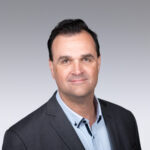 This article is the final of fourteen parts to our risk management series. The series will be taking a look at the risk management guidelines under the ISO 31000 Standard to help you better understand them and how they relate to your own risk management activities. In doing so, we’ll be walking through the core aspects of the Standard and giving you practical guidance on how to implement it. Continue reading
This article is the final of fourteen parts to our risk management series. The series will be taking a look at the risk management guidelines under the ISO 31000 Standard to help you better understand them and how they relate to your own risk management activities. In doing so, we’ll be walking through the core aspects of the Standard and giving you practical guidance on how to implement it. Continue reading
#369 – CHANGING SUPPORT FOR RELIABILITY ENGINEERING – FRED SCHENKELBERG
Featured
 In most organizations being a reliability engineer is a lonely position. I like to think we’re so effective that one or just a small team is all any an organization needs.
In most organizations being a reliability engineer is a lonely position. I like to think we’re so effective that one or just a small team is all any an organization needs.
As with any engineering position, we have specialized training and skills. We view the world and problems just a little differently than others. Then we use statistics, which tends to future isolate us from our peers. Continue reading
#369 – ISO 31000 MONITORING AND REVIEW – PETER HOLTMANN
Featured
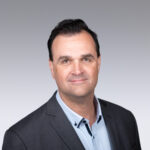 This article is the thirteenth of fourteen parts to our risk management series. The series will be taking a look at the risk management guidelines under the ISO 31000 Standard to help you better understand them and how they relate to your own risk management activities. In doing so, we’ll be walking through the core aspects of the Standard and giving you practical guidance on how to implement it. Continue reading
This article is the thirteenth of fourteen parts to our risk management series. The series will be taking a look at the risk management guidelines under the ISO 31000 Standard to help you better understand them and how they relate to your own risk management activities. In doing so, we’ll be walking through the core aspects of the Standard and giving you practical guidance on how to implement it. Continue reading
#369 – BIG DATA AND THE QUALITY PROFESSION – JAMES KLINE PH.D.
Featured
 Dianna Deeney in her piece in CERM Insights #362 notes that big data may provide the quality profession with more professional opportunities. Dr Anil Maheshwari in his book Data Analytics: Made Accessible specifically indicates that quality management will benefit from big data. (1) Continue reading
Dianna Deeney in her piece in CERM Insights #362 notes that big data may provide the quality profession with more professional opportunities. Dr Anil Maheshwari in his book Data Analytics: Made Accessible specifically indicates that quality management will benefit from big data. (1) Continue reading
#369 – INTERNAL SUPPLIER PERFORMANCE CAN BE A RISK TO YOUR PROJECT – JOHN AYERS
Featured
 Today with robotic development, digital transformation, Artificial Intelligence, and other projects t will involve a multi-discipline team with many interfaces. To keep budget and schedule on these types of projects, inputs and outputs from all disciplines must be accurate, complete and timely. If not, your project will be risk. Continue reading
Today with robotic development, digital transformation, Artificial Intelligence, and other projects t will involve a multi-discipline team with many interfaces. To keep budget and schedule on these types of projects, inputs and outputs from all disciplines must be accurate, complete and timely. If not, your project will be risk. Continue reading
#369 – SAUDI ARAMCO: ANOTHER RANSOM DEMAND – BILL POMFRET PH.D.
Featured
 My client Saudi Arabian Aramco is the world’s most-valuable oil producer has confirmed that some company files were leaked after hackers reportedly demanded a $50 million ransom, this is not the first time, last time the total cost of the Incident cost one $ Billion Continue reading
My client Saudi Arabian Aramco is the world’s most-valuable oil producer has confirmed that some company files were leaked after hackers reportedly demanded a $50 million ransom, this is not the first time, last time the total cost of the Incident cost one $ Billion Continue reading
#368 – QUALITY & RELIABILITY: SIMILARITIES AND DIFFERENCES – FRED SCHENKELBERG
Featured
 I like to say Reliability is all of quality over time. Quality professional tend to say reliability is an element of quality. David A. Garvin of the Harvard Business School suggests there are eight dimensions to quality, including reliability.
I like to say Reliability is all of quality over time. Quality professional tend to say reliability is an element of quality. David A. Garvin of the Harvard Business School suggests there are eight dimensions to quality, including reliability.
Either way one relates quality and reliability we need to remember that quality or reliability is not a department, team, the engineering down the hall. Quality and reliability is part of the culture of the organization. It is how we make decisions the impact how the product or service performs for customers. Continue reading
#368 – ISO 31000 RISK TREATMENT – PETER HOLTMANN
Featured
 This article is the twelfth of fourteen parts to our risk management series. The series will be taking a look at the risk management guidelines under the ISO 31000 Standard to help you better understand them and how they relate to your own risk management activities. In doing so, we’ll be walking through the core aspects of the Standard and giving you practical guidance on how to implement it. Continue reading
This article is the twelfth of fourteen parts to our risk management series. The series will be taking a look at the risk management guidelines under the ISO 31000 Standard to help you better understand them and how they relate to your own risk management activities. In doing so, we’ll be walking through the core aspects of the Standard and giving you practical guidance on how to implement it. Continue reading
#368 – BENEFITS AND LOW RISK APPROACH FOR GETTING WORKERS BACK IN THE OFFICE – JOHN AYERS
Featured
 COVID has changed how and where we work over the last two years. Most everything you read and hear involves Zoom (or similar remote collaboration tool) meetings. The Zoom technology, participants, and companies have accepted this way of communicating. Zoom meetings allow workers to work from home, no more commuting which is a big plus. Companies can hire talent from around the world. Workers can do their job in the comfort of their home. Continue reading
COVID has changed how and where we work over the last two years. Most everything you read and hear involves Zoom (or similar remote collaboration tool) meetings. The Zoom technology, participants, and companies have accepted this way of communicating. Zoom meetings allow workers to work from home, no more commuting which is a big plus. Companies can hire talent from around the world. Workers can do their job in the comfort of their home. Continue reading
#368 – BUSINESS ETHICS IN THE WORKPLACE – BILL POMFRET PH.D.
Featured
 Ethics is about making choices that may not always feel good or seem like they benefit you but are the right choices to make. They are the choices that are examples of model citizens and examples of the golden rules. We’ve all heard the golden rules: Don’t hurt, don’t steal, don’t lie, or one of the most famous: Do unto others as you would have done to you. These are not just catchy phrases; these are words of wisdom that any productive member of society should strive to live by. Continue reading
Ethics is about making choices that may not always feel good or seem like they benefit you but are the right choices to make. They are the choices that are examples of model citizens and examples of the golden rules. We’ve all heard the golden rules: Don’t hurt, don’t steal, don’t lie, or one of the most famous: Do unto others as you would have done to you. These are not just catchy phrases; these are words of wisdom that any productive member of society should strive to live by. Continue reading
#368 – DO YOU HAVE THE RIGHT SKILLS TO SUCCEED? – PATRICK OW
Featured
 As the COVID pandemic is only one of many challenges and disruptions CEOs and organisations face, it is not surprising that 94% of executives say their business models need to change within the next three years. And 57% of CEOs fear their organisation isn’t adapting fast enough according to a 2021 AlixPartners’s survey of 3,000 CEOs.
As the COVID pandemic is only one of many challenges and disruptions CEOs and organisations face, it is not surprising that 94% of executives say their business models need to change within the next three years. And 57% of CEOs fear their organisation isn’t adapting fast enough according to a 2021 AlixPartners’s survey of 3,000 CEOs.
Together with the need to pivot and adapt, we also know that 74% of CEOs are concerned about the availability of key skills within their organisation, according to PwC’s 24th Annual Global CEO 2021 Survey of 5,050 responses. Continue reading
#367 – FOOLED OR JUST FOOLISH – MALCOLM PEART
Featured
 Abraham Lincoln is attributed to have famously said “You can fool all of the people some of the time, and some of the people all of the time, but you cannot fool all of the people all of the time.” A more recent US President coined a more manipulative spin on Lincoln’s erudite words… “You can fool some of the people all the time, and those are the ones you want to concentrate on.” Preying on ignorance is a human trait which, although frowned upon, certainly thrived in history, and definitely thrives today. Continue reading
Abraham Lincoln is attributed to have famously said “You can fool all of the people some of the time, and some of the people all of the time, but you cannot fool all of the people all of the time.” A more recent US President coined a more manipulative spin on Lincoln’s erudite words… “You can fool some of the people all the time, and those are the ones you want to concentrate on.” Preying on ignorance is a human trait which, although frowned upon, certainly thrived in history, and definitely thrives today. Continue reading
#367 – ISO 31000 RISK ASSESSMENTS – PETER HOLTMANN
Featured
 This article is the eleventh of fourteen parts to our risk management series. The series will be taking a look at the risk management guidelines under the ISO 31000 Standard to help you better understand them and how they relate to your own risk management activities. In doing so, we’ll be walking through the core aspects of the Standard and giving you practical guidance on how to implement it. Continue reading
This article is the eleventh of fourteen parts to our risk management series. The series will be taking a look at the risk management guidelines under the ISO 31000 Standard to help you better understand them and how they relate to your own risk management activities. In doing so, we’ll be walking through the core aspects of the Standard and giving you practical guidance on how to implement it. Continue reading
#367 – EMPLOYER’S RISK: HIRE AND RETAIN TOP TECHNICAL TALENT – JOHN AYERS
Featured
 The highest risk today for employers to hire and retain top technical talent is their compensation package. It is common for employers to base hiring salaries and increases on performance. This has been the case for many, many years. This method does not work in today’s high technology world and companies are considering changing to a market-based approach. Hiring top technical talent requires companies to make starting compensation packages commiserate with market wages to be competitive. Retaining the talent requires a market-based approach as well. Continue reading
The highest risk today for employers to hire and retain top technical talent is their compensation package. It is common for employers to base hiring salaries and increases on performance. This has been the case for many, many years. This method does not work in today’s high technology world and companies are considering changing to a market-based approach. Hiring top technical talent requires companies to make starting compensation packages commiserate with market wages to be competitive. Retaining the talent requires a market-based approach as well. Continue reading
#367 – IS ERM THE SOLUTION TO CLIMATE CHANGE? – JAMES KLINE PH.D.
Featured
 The 2022 Global Risk Report is the 17th risk assessment report. The preface to the report notes: “The 17th edition of the Global Risk Report identifies tensions that will results from diverging trajectories and approaches within and between countries and then examines the risk that could arise from such tensions.” (1) Continue reading
The 2022 Global Risk Report is the 17th risk assessment report. The preface to the report notes: “The 17th edition of the Global Risk Report identifies tensions that will results from diverging trajectories and approaches within and between countries and then examines the risk that could arise from such tensions.” (1) Continue reading
#366 – DEADLINES A PROJECT NECESSITY – MALCOLM PEART
Featured
 The term “deadline” hasn’t been around that long, about 160 years in fact. The first written mentions were in 1863 during the American Civil War. The “dead-line”, as then, was defined as “a line drawn within or around a prison that a prisoner passes at the risk of being shot” and shot dead at that. Prison conditions could be so deplorable that some men crossed the line on purpose, some survivors wrote that they had wished they’d crossed it to end their misery. Deadlines in those days were lessons in ultimate liability. Continue reading
The term “deadline” hasn’t been around that long, about 160 years in fact. The first written mentions were in 1863 during the American Civil War. The “dead-line”, as then, was defined as “a line drawn within or around a prison that a prisoner passes at the risk of being shot” and shot dead at that. Prison conditions could be so deplorable that some men crossed the line on purpose, some survivors wrote that they had wished they’d crossed it to end their misery. Deadlines in those days were lessons in ultimate liability. Continue reading
#366 – INCIDENT INVESTIGATIONS – BILL POMFRET PH.D.
Featured
 Investigations of industrial accidents have found that a large number occurred during an interruption of production while an operator was trying to maintain or restart production. In each case the dangerous situation was created by a desire to save time and ease operations. In each case, the company’s safety rules were violated. Continue reading
Investigations of industrial accidents have found that a large number occurred during an interruption of production while an operator was trying to maintain or restart production. In each case the dangerous situation was created by a desire to save time and ease operations. In each case, the company’s safety rules were violated. Continue reading
#366 – ISO 31000 SCOPE, CONTEXT, AND CRITERIA – PETER HOLTMANN
Featured
 This article is the tenth of fourteen parts to our risk management series. The series will be taking a look at the risk management guidelines under the ISO 31000 Standard to help you better understand them and how they relate to your own risk management activities. In doing so, we’ll be walking through the core aspects of the Standard and giving you practical guidance on how to implement it. Continue reading
This article is the tenth of fourteen parts to our risk management series. The series will be taking a look at the risk management guidelines under the ISO 31000 Standard to help you better understand them and how they relate to your own risk management activities. In doing so, we’ll be walking through the core aspects of the Standard and giving you practical guidance on how to implement it. Continue reading
#366 – WHO IS GETTING HOSPITALIZED FOR COVID 19? – ALLEN TAYLOR
Featured
 In the United States, it is pretty clear who is getting hospitalized for Covid-19. Which group would you rather be in:
In the United States, it is pretty clear who is getting hospitalized for Covid-19. Which group would you rather be in:
Unvaccinated (blue line)
Fully vaccinated (green line)
[Data from USA Center for Disease Control (CDC)] Continue reading
#366 – FRAMEWORK FOR UNDERSTANDING TRANSFORMATIONS: PART 4 – HOWARD WIENER
Featured
 In the previous articles in this series, I asserted the crucial importance of Business Agility to your sustainability. The Digital Transformation that must undertake is a critical key to attaining it. But what is Business Agility and how should you understand how it is related to the models I presented earlier?
In the previous articles in this series, I asserted the crucial importance of Business Agility to your sustainability. The Digital Transformation that must undertake is a critical key to attaining it. But what is Business Agility and how should you understand how it is related to the models I presented earlier?
The common foundation of the three model framework I employ to describe a business consists of these layers: Continue reading
#365 – SIMPLIFIED RISK MANAGEMENT FOR SMALL ORGANIZATIONS – PATRICK OW
Featured
 Smaller organisations, especially those with less than 100 people, often struggle with putting in place the right-size effective risk management practices that do not take up too much of their time and resources.
Smaller organisations, especially those with less than 100 people, often struggle with putting in place the right-size effective risk management practices that do not take up too much of their time and resources.
What I have often seen and experienced is that small-size organisations implement the ‘standard’ risk management practices that are commonly found in larger organisations without much thought as to whether it is fit-for-purpose to enable better organisational performance given their unique context or operating environment. Continue reading
#365 – COMMUNICATION AND CONSULTATION IN ISO 31K RISK MANAGEMENT – PETER HOLTMANN
Featured
 This article is the ninth of fourteen parts to our risk management series. The series will be taking a look at the risk management guidelines under the ISO 31000 Standard to help you better understand them and how they relate to your own risk management activities. In doing so, we’ll be walking through the core aspects of the Standard and giving you practical guidance on how to implement it. Continue reading
This article is the ninth of fourteen parts to our risk management series. The series will be taking a look at the risk management guidelines under the ISO 31000 Standard to help you better understand them and how they relate to your own risk management activities. In doing so, we’ll be walking through the core aspects of the Standard and giving you practical guidance on how to implement it. Continue reading
#365 – DATA EVERYWHERE AND STILL PROJECT INDECISION – MALCOLM PEART
Featured
 “Water water everywhere, not a drop to drink” is the modern and well-known phraseology from the English poet Samuel Taylor Coleridge’s 1798 poem “The Rhyme of the Ancient Mariner”. In essence this means that despite being surrounded by an abundance of something one cannot benefit from it.
“Water water everywhere, not a drop to drink” is the modern and well-known phraseology from the English poet Samuel Taylor Coleridge’s 1798 poem “The Rhyme of the Ancient Mariner”. In essence this means that despite being surrounded by an abundance of something one cannot benefit from it.
In today’s Information Age we are surrounded by data. It’s everywhere and often available at the touch of a button, or rather a screen. Instant and easy access is demanded but despite computers and the internet the right data is not always so easily or readily found. Data, and the right data is an essential ingredient for decision making. Continue reading
#365 – HOW SAFE IS SAFE? – BILL POMFRET PH.D.
Featured
 Just how safe is “safe”? Should working in a chemical plant have the same level of risk as skydiving (which kills about 40 people per year in the U.S.A Should working in a plant be as safe as driving your car? Or should it be as safe as flying in a plane, which is safer than driving a car by two orders of magnitude? Continue reading
Just how safe is “safe”? Should working in a chemical plant have the same level of risk as skydiving (which kills about 40 people per year in the U.S.A Should working in a plant be as safe as driving your car? Or should it be as safe as flying in a plane, which is safer than driving a car by two orders of magnitude? Continue reading
#365 – FRAMEWORK FOR UNDERSTANDING TRANSFORMATION PART 3 – HOWARD WIENER
Featured
 In the previous article, I discussed three models of your company that should inform and guide your efforts to transform: the four-level Logical Model, the Enterprise Architecture model and the Digital Business Architecture model. In this article, I will apply them to designing and planning for your transformation.
In the previous article, I discussed three models of your company that should inform and guide your efforts to transform: the four-level Logical Model, the Enterprise Architecture model and the Digital Business Architecture model. In this article, I will apply them to designing and planning for your transformation.
Models and the Transformation Process
Transformation must be driven by a defined business strategy. Too many initiatives are driven by a perceived need to master some state-of-the-art or of-the-moment technology, solution or technique and end up underachieving or failing outright. Once you have articulated strategy, you will employ the models to identify the entities that you will require to enable you to execute on it. With that inventory in hand, you can perform an as-is vs. to-be gap analysis to create an inventory or portfolio of the changes you will need to make to position your company to do that. Finally, you will analyze your portfolio and create program and project plans to effectuate the transformation. Continue reading
#364 – WHAT IS THE RELIABILITY OF THE RELIABILITY FUNCTION? – FRED SCHENKELBERG
Featured
 Jezdimir Knezevic of the MIRCE Akademy published a paper with the title above and I have a few comments.
Jezdimir Knezevic of the MIRCE Akademy published a paper with the title above and I have a few comments.
In the article, Jezdimir suggests that the statistical approach to describing the world about us is fundamental flaws and not inherently useful for our use. He compares a mathematical/statistical approach to a scientific approach and finds the stats wanting.
Let’s take a critical look at the topic of this paper and conclusions. Continue reading
#364 – MENTAL HEALTH RISKS OF SENIORS – DR. TRUDY HU
Featured
 Based on the 2020 U.S. Census Bureau, the estimated population of the U.S. was approximately 331.4 million in 2021. More than three-quarters (77.9%) or about 258.3 million were adult populations. Baby boomer generation, those born between 1946 and 1964, was about 54.1 million in 2019. They are reaching the age range between 57 to 75 in 2021 in a fast speed. It is one of the major driving force of the growth in the adult population. They soon represented 21% of the adult population, more than one in every five adult Americans. Continue reading
Based on the 2020 U.S. Census Bureau, the estimated population of the U.S. was approximately 331.4 million in 2021. More than three-quarters (77.9%) or about 258.3 million were adult populations. Baby boomer generation, those born between 1946 and 1964, was about 54.1 million in 2019. They are reaching the age range between 57 to 75 in 2021 in a fast speed. It is one of the major driving force of the growth in the adult population. They soon represented 21% of the adult population, more than one in every five adult Americans. Continue reading
#364 – PROJECT COMMUNICATIONS RISK: MATTER OF RESISTANCE – MALCOLM PEART
Featured
 In conflicts, or just differences of opinion, people push-back when opinions or ideas are different to theirs. These differences may not necessarily be wrong, but, a mere difference can constitute change to somebody and, as with any change there is inevitably some resistance to a greater or lesser extent.
In conflicts, or just differences of opinion, people push-back when opinions or ideas are different to theirs. These differences may not necessarily be wrong, but, a mere difference can constitute change to somebody and, as with any change there is inevitably some resistance to a greater or lesser extent.
As Newton discovered, ‘For every action there is an equal and opposite reaction’ and the same is true of people. This reaction, in the absence of open minds, may not only be opposite but, if coupled with ineffective communication produces increased resistance to change and, inevitably, friction. Continue reading
#364 – FRAMEWORK FOR UNDERSTANDING TRANSFORMATION – PART 2 – HOWARD WIENER
Featured
 In Part I of this series, we discussed the VUCA environment in which business are operating and the impact this has had and will continue to have on how businesses are run, discussed the need for business agility and introduced the EA model that Agile ERM employs. In this article, we will look at three models that help to understand your company and inform decisions you will have to make about how to transform it to achieve sustainability. Continue reading
In Part I of this series, we discussed the VUCA environment in which business are operating and the impact this has had and will continue to have on how businesses are run, discussed the need for business agility and introduced the EA model that Agile ERM employs. In this article, we will look at three models that help to understand your company and inform decisions you will have to make about how to transform it to achieve sustainability. Continue reading
#364 – JOB SAFETY ANALYSIS – PART 1 – BILL POMFRET PH.D.
Featured
 Job safety has come a long way in 50 years since the Occupational Safety and Health Act (OSH Act) was enacted. The American Federation of Labor and Congress of Industrial Organizations (AFL-CIO) says “more than 627,000 workers now can say their lives have been saved since the passage of the OSH Act.”
Job safety has come a long way in 50 years since the Occupational Safety and Health Act (OSH Act) was enacted. The American Federation of Labor and Congress of Industrial Organizations (AFL-CIO) says “more than 627,000 workers now can say their lives have been saved since the passage of the OSH Act.”
But the journey is ongoing and there’s much farther to go in eliminating death and injuries on the job. Continue reading
#363 – WHAT SHOULD I LEARN AS A RELIABILITY ENGINEER? – FRED SCHENKELBERG
Featured
 Ran across this question the other day from someone just starting in the role of reliability engineer. I wasn’t smart enough to ask this question when I started in the field, yet looking back I’m sure to have found the list of what one should learn and apply daunting.
Ran across this question the other day from someone just starting in the role of reliability engineer. I wasn’t smart enough to ask this question when I started in the field, yet looking back I’m sure to have found the list of what one should learn and apply daunting.
You should learn how electronics fail. And this may involve:
- design errors in specific component technologies.
- assembly errors in specific component processes.
- material and process variability.
- environmental stress conditions.
- use stress conditions.
- software interactions with hardware.
- and, the same range of topic at the subsystem and system level, too.
#363 – OMICRON: JAB FIRST AND ASK QUESTIONS LATER – MALCOLM PEART
Featured
 Omicron, the new variant on the block! This is the latest strain of the COVID virus but, within a few days of its arrival, or rather announcement that’s it’s been found, countries are closing their borders and travel restrictions are being imposed! There has been no rhyme or reason for this but this decision, as with many others related to COVID, seems to have been made arbitrarily and with a preponderant paucity of ‘data’. Continue reading
Omicron, the new variant on the block! This is the latest strain of the COVID virus but, within a few days of its arrival, or rather announcement that’s it’s been found, countries are closing their borders and travel restrictions are being imposed! There has been no rhyme or reason for this but this decision, as with many others related to COVID, seems to have been made arbitrarily and with a preponderant paucity of ‘data’. Continue reading
#363 – HOW TO MITIGATE CHINA’S SUPPLY CHAIN RISK – JOHN AYERS
Featured
 The 21st century, was an era of unprecedented global integration. During this period, the U.S. became heavily dependent on China for providing low-cost goods to help low and medium waged Americans to make ends meet. COVID-19 unveiled a very serious weakness in the U.S. supply chain with China that was unknown to the general public and most of the legislature. Continue reading
The 21st century, was an era of unprecedented global integration. During this period, the U.S. became heavily dependent on China for providing low-cost goods to help low and medium waged Americans to make ends meet. COVID-19 unveiled a very serious weakness in the U.S. supply chain with China that was unknown to the general public and most of the legislature. Continue reading
#363 – FRAMEWORK FOR UNDERSTANDING DIGITAL TRANSFORMATION – HOWARD WIENER
Featured
 In Agile Enterprise Risk Management, Risk-Based Thinking, Multi-Disciplinary Management and
In Agile Enterprise Risk Management, Risk-Based Thinking, Multi-Disciplinary Management and
Digital Transformation I focus on several topics tied to transformation. The overarching objective of transformation is business agility—the ability to identify opportunities and threats in your environment and react to them at speed. In the volatile environment in which we are now living, this is what will enable you to sustain your company. In fact, it’s the only thing that will. Continue reading
#363 – INTRODUCTION TO THE RISK MANAGEMENT PROCESS – PETER HOLTMANN
Featured
 This article is the eighth of fourteen parts to our risk management series. The series will be taking a look at the risk management guidelines under the ISO 31000 Standard to help you better understand them and how they relate to your own risk management activities. In doing so, we’ll be walking through the core aspects of the Standard and giving you practical guidance on how to implement it. Continue reading
This article is the eighth of fourteen parts to our risk management series. The series will be taking a look at the risk management guidelines under the ISO 31000 Standard to help you better understand them and how they relate to your own risk management activities. In doing so, we’ll be walking through the core aspects of the Standard and giving you practical guidance on how to implement it. Continue reading
#362 – FAILING PROJECT: TOO MANY COOKS IN THE KITCHEN – MALCOLM PEART
Featured
 “Too many cooks spoil the broth” goes the Elizabethan poet George Gascoigne’s proverb. Although only written down in circa 1575 it had probably been around for many years beforehand. It is still used today and, far from being archaic, it’s become more and more relevant despite mankind’s predilection towards efficiency and effectiveness. But why? Continue reading
“Too many cooks spoil the broth” goes the Elizabethan poet George Gascoigne’s proverb. Although only written down in circa 1575 it had probably been around for many years beforehand. It is still used today and, far from being archaic, it’s become more and more relevant despite mankind’s predilection towards efficiency and effectiveness. But why? Continue reading
#362 – FUTURE OF QUALITY – DIANNA DEENEY
Featured
 The current state of the quality profession is affected by shifting business infrastructures and changing definitions of brand quality.
The current state of the quality profession is affected by shifting business infrastructures and changing definitions of brand quality.
Businesses need to react and change against external pressures like increased frequency of consumer communications, the availability of big data, expanding regulations and standards, and the expectations to innovate quickly. The quality profession is at risk of losing its effectiveness in the overall business operations if it does not proactively change with the business. Continue reading
#362 – DON’T GET CAUGHT WITHOUT YOUR BUSINESS CONTINUITY PLANS, AGAIN – PATRICK OW
Featured
 When the COVID pandemic stuck in March 2020, many organisations struggled with business continuity. Many were caught out without business continuity strategies or plans to overcome the likely business disruption that was brought about by COVID.
When the COVID pandemic stuck in March 2020, many organisations struggled with business continuity. Many were caught out without business continuity strategies or plans to overcome the likely business disruption that was brought about by COVID.
Having worked with organisations on their business continuity planning, the key challenge many organisations face in developing their business continuity strategies and plans is the level of business continuity planning and effort required. Many business continuity consultants have adopted the ISO 22301 Business continuity management systems — Requirements approach and have unfortunately over-engineered the approach as a one-size-fits-all.
Counting the “number of pens and pencils” required for a business outage
Executives tell me that their consultants wanted them to start “counting the number of pens and pencils” their staff needed during an outage as part of their business continuity planning. They were asked by their consultants to quantify the resources required in an event of a business outage.
Conceptually, as part of your business continuity planning, you need to know the resources required during an outage. But to take a bottom-up approach to business continuity planning that identifies the number of pens and pencils required during a business outage misses the point of the planning exercise.
The question is, How long is a piece of string?
To what degree should an organisation plan its business continuity?
On several occasions, I have been asked to ‘make good’ the business continuity work the organisation has done with consultants.
In one organisation that I was involved in, two full-time business continuity consultants have been hired to develop pandemic plans for an 8,000 strong human services workforce. After two years of template filling, their staff refused to document any more “pens and pencils”. The business continuity process used by the consultants has left a bad taste in their mouths.
After two years of work, no pandemic plans were ever tested or approved by management. It only left a scar on the management team. Business continuity and pandemic planning were relegated to the too hard basket, not counting the cost of paying the consultants over this period and the enormous time cost of their staff in wasted time documenting everything they needed.
A strategic approach was born
After hearing of many similar stories of poor outcomes from the implementation of business continuity management programs and working closely with management teams of health services to rectify the situation for them by understanding their needs, I have developed a risk-based strategic approach to organisational-wide business continuity planning, which was been implemented in many hospitals here in Melbourne.
You cannot get any more complex than a hospital because we are dealing with many human lives. Our business continuity planning had to ensure that they were kept safe in the event of a fire or a power outage.
The missing link for business continuity planning is the understanding your employees are experts in their area of operation. They intuitively know what to do what there is an outage. There is no need to document everything down in your business continuity planning, right down to the number of “pens and pencils” required during an outage. Trust them to do their work.
Therefore, the key to developing and implementing an organisational-wide business continuity strategy is to bring and coordinate the efforts of these knowledgeable staff together.
Develop strategies, rather than writing detailed plans for everything. It is easier to remember strategies and detailed step-by-step actions. In a crisis, it is hard to recall every single written step. People react intuitively during a crisis.
Intuitively start with how your staff will respond to a crisis
This learning came through loud and clear when I conducted a tabletop business continuity exercise for an organisation of about 90 staff. Their management team had spent months documenting their business continuity plans in four large folders.
When the scenario was worked through, none of the executives followed what was painstakingly documented in their plans. They deviated from their plans.
Their response was simple. They intuitively reacted to the situation presented and found what was documented impractical!
Therefore, the approach I have taken in developing a top-down organisational-wide business continuity strategy, as opposed to a bottom-up siloed-based business continuity planning, is to start with what your people would intuitively do in a crisis.
The siloed-based business continuity planning only creates volumes of stand-alone plans that do not inter-operate with each other from an organisational-wide perspective. What looks good on paper individually will not translate into a practical whole of organisational response to a crisis!
Always start with what your people would do individually and as a team. Trust them to do the right things, especially for the whole organisation. Document their approach as a collective whole, not as individual actions that only focus on their functions.
In one organisation I worked in, multiple business continuity plans pointed to this one alternate location as a backup site. Unfortunately, no one had talked to the managers of this backup site if they were able to accommodate staff from other locations in their offices. Many people assumed that this backup site was able to accommodate five times the number of staff if all staff showed up during a crisis in another location in following the individual business continuity plans!
Identify a practical planning horizon
Even if you were able to write every detail in your business continuity plans, what is your planning horizon? One year, or two weeks.
Are you going to write business continuity plans for one month or one year of an outage?
Planning for a one-year outage is vastly different from planning for a two-day outage. Yet many organisations have written their business continuity plans for much longer outage periods.
Through experience and from surveys, most outages last for 48 hours. So, why not only plan for a two-day outage, rather than anything longer than that?
Why not rely on your internal experts to continue operating beyond the two days outage?
Granted, you may need to plan for immediate disaster response. But after two days, your team can come together and decide beyond these two days.
As every situation is different, it is very hard to write plans for them. With new technologies and processes being introduced constantly, writing detailed plans will require constant updating and maintenance. This can be problematic when your resources are limited.
Hence, my approach is to develop high-level strategies for the critical two-day period and leave the details to your staff to implement. Rather than identifying the outages maximum tolerable period of disruption (MTPD) bottom-up, fix your MTPD at two days and only worry about those services and systems that fall within these two days. This is a much simpler but effective approach.
And finally, your strategies and plans must interoperate with each other
Without having an over-arching organisational-wide business continuity strategy that takes the top-down approach, it is very hard to ensure that all other operational business continuity plans will interoperate with each other.
Plan dependencies and inter-dependencies are hard to manage if your business continuity plans especially at the operational are developed from the bottom-up, independently from each other.
Unfortunately, many organisational business continuity plans do not inter-operate with each other. Many are tested in isolation from each other. Many are developed as a compliance exercise without any discussion or consultation – so why bother to develop one in the first place when they do not work?
Note: Patrick’s “Practical ISO22301 Business Continuity Management That Works” Udemy course can be found here – https://bit.ly/3rOxmqm.
Professional bio
As a Chartered Accountant with over 25 years of international risk management and corporate governance experience in the private, not-for-profit, and public sectors, Patrick helps individuals and organizations make better decisions to achieve better results as a corporate and personal trainer and coach at Practicalrisktraining.com.
He is also the co-founder of Skillsand.org, an organisation dedicated to helping people acquire in-demand job skills and preparing them for the future of work. Our goal is to create a convenient learning experience that’s as easy as making any other purchase on Amazon.
Patrick has authored several eBooks including Strategic Risk Management Reimagined: How to Improve Performance and Strategy Execution.
#362 -IMPROVING YOUR RISK MANAGEMENT FRAMEWORK – PETER HOLTMANN
Featured
 This article is the seventh of fourteen parts to our risk management series. The series will be taking a look at the risk management guidelines under the ISO 31000 Standard to help you better understand them and how they relate to your own risk management activities. In doing so, we’ll be walking through the core aspects of the Standard and giving you practical guidance on how to implement it. Continue reading
This article is the seventh of fourteen parts to our risk management series. The series will be taking a look at the risk management guidelines under the ISO 31000 Standard to help you better understand them and how they relate to your own risk management activities. In doing so, we’ll be walking through the core aspects of the Standard and giving you practical guidance on how to implement it. Continue reading
#362 – 5S WORKPLACES WHERE SAFETY AND QUALITY MEET – BILL POMFRET PH.D.
Featured
 The five in a 5S workplace organizational and housekeeping methodology refers to five steps – sort, set in order, shine, standardize and sustain. Safety should be the honorary sixth “S.
The five in a 5S workplace organizational and housekeeping methodology refers to five steps – sort, set in order, shine, standardize and sustain. Safety should be the honorary sixth “S.
Many manufacturing facilities have opted to follow the path towards a “5S” workplace organizational and housekeeping methodology as part of continuous improvement or lean manufacturing processes. The term refers to five steps – sort, set in order, shine, standardize and sustain – that are also sometimes known as the five pillars of a visual workplace. Continue reading
#361 – ENTERPRISE RISK MANAGEMENT AND ENVIRONMENTAL RISK – JAMES KLINE PH.D.
Featured
 In CERM Risk Insights #354 I discussed the risk management study of local governments in New Zealand. One of the cases in the study was Environment Canterbury Regional Council. The regional council’s focus and the increasing concerns about environmental risks by both the public and private sector represents a challenge to the common approach used by most of the New Zealand local governments, ISO 31000:2018 and the International Organization for Standardization (ISO) more generally. This piece discusses this challenge to ISO 31000:2018 and its implications. Continue reading
In CERM Risk Insights #354 I discussed the risk management study of local governments in New Zealand. One of the cases in the study was Environment Canterbury Regional Council. The regional council’s focus and the increasing concerns about environmental risks by both the public and private sector represents a challenge to the common approach used by most of the New Zealand local governments, ISO 31000:2018 and the International Organization for Standardization (ISO) more generally. This piece discusses this challenge to ISO 31000:2018 and its implications. Continue reading
#361 – PROJECT EMERGENCIES: RESPONSE OR REACTION – MALCOLM PEART
Featured
 In project management we can’t always be in control of the environment around us. We can only forecast rather than predict risk and despite our ‘reasonable’ or even ‘best’ efforts to mitigate risk; shit happens and emergencies ensue! It’s not just physical emergencies but also those related to time and cost; remember overbudget or late projects can create an emergency for shareholders and stakeholders alike. Continue reading
In project management we can’t always be in control of the environment around us. We can only forecast rather than predict risk and despite our ‘reasonable’ or even ‘best’ efforts to mitigate risk; shit happens and emergencies ensue! It’s not just physical emergencies but also those related to time and cost; remember overbudget or late projects can create an emergency for shareholders and stakeholders alike. Continue reading
#361 – FIVE WAYS TO KEEP YOUR AUDIENCE’S ATTENTION – FRED SCHENKELBERG
Featured
 I have found the best way to lose an audience is to focus on statistical derivation. While this is a fascinating subject for me, it just doesn’t seem to hold an audience’s attention.
I have found the best way to lose an audience is to focus on statistical derivation. While this is a fascinating subject for me, it just doesn’t seem to hold an audience’s attention.
Having something interesting and useful to say is key to maintaining an audience’s attention, yet at times how we present helps them become distracted.
So, given great content or proposal, how can you help your audience not quickly check their phone, yet again? Continue reading
#361 – YOUR SUPPLIERS CAN BE A RISK TO YOUR PROJECT – JOHN AYERS
Featured
 The majority of companies today outsource a major portion (up to 60-70%) of their work scope to subcontractors. As a result, the subcontractors become a risk to your project because you have no direct control over them. For example, if they start to slip their schedule you cannot direct them to put more assets on the job to pull the schedule back. The other risk that is not obvious is that posed by your subcontractors major vendors or subcontractors. To illustrate this point, this article describes a story that I was personally involved in. Continue reading
The majority of companies today outsource a major portion (up to 60-70%) of their work scope to subcontractors. As a result, the subcontractors become a risk to your project because you have no direct control over them. For example, if they start to slip their schedule you cannot direct them to put more assets on the job to pull the schedule back. The other risk that is not obvious is that posed by your subcontractors major vendors or subcontractors. To illustrate this point, this article describes a story that I was personally involved in. Continue reading
#361 – THE OTHER PRICE OF WORLD CUP SOCCER! – BILL POMFRET PH.D.
Featured
 The book I wrote in 2017 contained a chapter on the death toll of migrant workers building stadiums for the world cup host of Soccer in Qatar 2022.After my visit I wrote to FIFA, the governing body with photographs of the dangers in work places and details of the more than 6500 workers who were killed on the job. Continue reading
The book I wrote in 2017 contained a chapter on the death toll of migrant workers building stadiums for the world cup host of Soccer in Qatar 2022.After my visit I wrote to FIFA, the governing body with photographs of the dangers in work places and details of the more than 6500 workers who were killed on the job. Continue reading
#360 – CROSSING THE RIVER TO A PROJECT MANAGER’S JOB – JOHN AYERS
Featured
 More and more companies today are creating projects to perform work. Hence, the demand for project managers is high and will continue to grow well into to the future.
More and more companies today are creating projects to perform work. Hence, the demand for project managers is high and will continue to grow well into to the future.
There is a six-sigma approach called crossing the river that is aimed at getting from the near shore (your current state) to the far shore (your future vision). I suggest that you consider using it to get a project managers job. This article explains how to cross the river to reach your goal. Continue reading
#360 – HOW MUCH RELIABILITY DATA IS ENOUGH! – FRED SCHENKELBERG
Featured
 Some may argue that just enough reliability data is just the right amount. Too much may lead to confusion, too little doesn’t inform well. The reliability work we do helps others make decisions, and recent work in how humans make decisions may help us prepare and present our results effectively.
Some may argue that just enough reliability data is just the right amount. Too much may lead to confusion, too little doesn’t inform well. The reliability work we do helps others make decisions, and recent work in how humans make decisions may help us prepare and present our results effectively.
If preparing reliability data-based recommendations, consider using less information. Ed O’Brien and Nadav Klein have found decision-makers tend to use much less data or information to make a decision than they think they will need. Continue reading
#360 – RISK THROUGH THE LOOKING GLASS – IAN DALLING
Featured
 When the tourist asked the way to Dublin the response was:
When the tourist asked the way to Dublin the response was:
“If I was you, I would not start from here!” (Old Irish joke).
It has become fashionable for management perspectives to be risk orientated or biased and even attempt to view all endeavour from a risk perspective however contorted and illogical the resulting picture. It is counter to the logical and intuitive way that we experience the world and inhibits a more holistic and integrated approach to management. Continue reading
#360 – SUPPLY CHAINS ARE BROKEN INTERNATIONALLY – BILL POMFRET PH.D.
Featured
#360 – THE FUTURE OF RELIABILITY ENGINEERING – CARL CARLSON
Featured
 Destiny is no matter of chance. It is a matter of choice. It is not a thing to be waited for, it is a thing to be achieved.” – William Jennings Bryan
Destiny is no matter of chance. It is a matter of choice. It is not a thing to be waited for, it is a thing to be achieved.” – William Jennings Bryan
The Oxford English dictionary defines “reliability” as “the quality of being able to be trusted to do what somebody wants or needs.”
The textbook definition for “reliability” is “the probability that an item will perform its intended function for a designated period of time without failure under specified operating and environmental conditions.” Continue reading
#359 – THREE WAYS TO IMPROVE YOUR RELIABILITY THINKING – FRED SCHENKELBERG
Featured
 I often joke that being a reliability engineer makes it difficult to get on an airplane. Yet air travel is by far the safest method of transportation. Maybe I just think about failure too much.
I often joke that being a reliability engineer makes it difficult to get on an airplane. Yet air travel is by far the safest method of transportation. Maybe I just think about failure too much.
When a project manager views the day’s tasks, she sees timelines, connections, dependencies. When a marketing manager views a product idea, she sees benefits, sales channels, and profits. When a reliability engineer views a prototype, she sees the many ways it can fail
#359 – SMALL COMPANIES OFFER FASTER PROMOTIONS BUT HIGHER STRESS – JOHN AYERS
Featured
 Based on my career experience as a project manager, I have observed that promotions can come quicker in a small company compared to a large one. This is especially true after you have gained several years’ experience. For some reason, many large companies are slow in giving promotions unless you are a rising star. If you are not a rising start and want to get a promotion, I suggest you look for opportunities in small companies to get the title you want (e.g., project manager). Continue reading
Based on my career experience as a project manager, I have observed that promotions can come quicker in a small company compared to a large one. This is especially true after you have gained several years’ experience. For some reason, many large companies are slow in giving promotions unless you are a rising star. If you are not a rising start and want to get a promotion, I suggest you look for opportunities in small companies to get the title you want (e.g., project manager). Continue reading
#359 – CRITICALITY MAP IS VITAL TO RISK MANAGEMENT – PATRICK OW
Featured
 Criticality Map, a strategic top-down analytical tool that I developed and used, is vital for risk management, assurance mapping. and regulatory compliance. It is a great simplified tool for effectively guiding management action and resource allocation and as a sanity check.
Criticality Map, a strategic top-down analytical tool that I developed and used, is vital for risk management, assurance mapping. and regulatory compliance. It is a great simplified tool for effectively guiding management action and resource allocation and as a sanity check.
The format of the tool is shown below. Continue reading
#359 – TIME TO CRITIQUE MISSION STATEMENTS – BILL POMFRET PH.D.
Featured
 Who needs them? Who reads them? What value do they have? Are they alive to change? Do they justify all the time and money spent on them? But purists quickly will respond “Absolutely!” and then claim that mission statements are indispensable. After all, you can’t steer without a rudder, navigate without a GPS, explore without a map. Continue reading
Who needs them? Who reads them? What value do they have? Are they alive to change? Do they justify all the time and money spent on them? But purists quickly will respond “Absolutely!” and then claim that mission statements are indispensable. After all, you can’t steer without a rudder, navigate without a GPS, explore without a map. Continue reading
#359 – WITH COVID 19, ARE WE RELIVING AN ANCIENT GREEK MYTH? – ALLEN TAYLOR
Featured
 One of the Greek myths that has come down to us from antiquity is the story of the Lernaean hydra. The hydra was a serpent-like monster that had many heads. If you cut off one hydra head, two more would grow in its place. Pictures of the hydra appear on ceramic vases that were created around 500 BC. Various heroes fought the hydra, but this only led to the hydra becoming ever more fearsome as its number of poison-spewing, fang-laden heads multiplied exponentially. Continue reading
One of the Greek myths that has come down to us from antiquity is the story of the Lernaean hydra. The hydra was a serpent-like monster that had many heads. If you cut off one hydra head, two more would grow in its place. Pictures of the hydra appear on ceramic vases that were created around 500 BC. Various heroes fought the hydra, but this only led to the hydra becoming ever more fearsome as its number of poison-spewing, fang-laden heads multiplied exponentially. Continue reading
#358 – STRATEGIC PARTNERSHIPS WITH SHARED RISK MANAGEMENT – PATRICK OW
Featured
 Strategic alliances are a vital tool to driving growth by enabling access to external capabilities. They are collaborations, partnerships, or joint ventures whereby organisations, or partners, work together for a common purpose to achieve a common business benefit or purpose.
Strategic alliances are a vital tool to driving growth by enabling access to external capabilities. They are collaborations, partnerships, or joint ventures whereby organisations, or partners, work together for a common purpose to achieve a common business benefit or purpose.
As much as strategic alliances are an important tool to drive growth and deliver needed capabilities, they are not without their challenges and risks. Continue reading
#358 – THE RECKLESS, THE WRECKLESS & THE AWARE – MALCOLM PEART
Featured
 Risk…it’s everywhere whether the risks are known or unknown, foreseeable or unforeseeable but, as the saying goes, “one person’s risk is another’s opportunity”.
Risk…it’s everywhere whether the risks are known or unknown, foreseeable or unforeseeable but, as the saying goes, “one person’s risk is another’s opportunity”.
Within this risk-opportunity spectrum we have the risk averse, the risk seeking as well as those who purport to manage risk for their business or personal lives.
We also have those who believe that risk is something that happens to other people and those who believe that Murphy’s Law will always apply to them, always, at all times, and in every circumstance. Continue reading
#358 – OMICRON HAS ARRIVED – BILL POMFRET PH.D.
Featured
 Looks like We’re heading into what could be a tough winter. Canada and the United States currently has a 7-day average of about 94,000 new confirmed cases of COVID-19, nearly all of which are the delta variant.
Looks like We’re heading into what could be a tough winter. Canada and the United States currently has a 7-day average of about 94,000 new confirmed cases of COVID-19, nearly all of which are the delta variant.
Case numbers have been increasing the past few weeks, including in places which has some of the highest vaccination rates in the country. Hospitals and caregivers are once again strained. The Pentagon sent medical teams to two major hospitals in Minnesota last month and another team was scheduled to arrive this week. Continue reading
#358 – FUTURE OF PROJECT MANAGEMENT PROFESSION – JOHN AYERS
Featured
 What does the future of any profession mean? Underdetermined future events (e.eg. COVID-19)? Future proof job? Work /family balance? Health at a later date? Secure retirement? It is all of the above and that is why you need to choose the right profession for you.
What does the future of any profession mean? Underdetermined future events (e.eg. COVID-19)? Future proof job? Work /family balance? Health at a later date? Secure retirement? It is all of the above and that is why you need to choose the right profession for you.
The future of the project management profession is bright and strong for a long time to come. Continue reading
#358 – WHY DO MEMORIES FADE AS PEOPLE AGE? – ALLEN TAYLOR
Featured
 I am sure you have noticed, in others if not in yourself, that it gets harder to remember names, places, facts, and procedures as people get older.
I am sure you have noticed, in others if not in yourself, that it gets harder to remember names, places, facts, and procedures as people get older.
Why is that? Clearly something changes, something physiological. Perhaps if we could identify what changes, we could slow or even reverse that change, enabling us to retain our mental powers far longer than is common today. Some groundbreaking research has been conducted recently at Stanford University in California. This work is described in a paper titled Exercise conditioned plasma dampens inflammation via clusterin and boosts memory. Continue reading
#357 – PRIORITIZING URGENT VS. IMPORTANT RELIABILITY TASKS – FRED SCHENKELBERG
Featured
 As reliability professionals, we have a lot to do. Risks to identify, failures to analyze. Plans to draft, numbers to crunch. Meetings, writing, research, and leading fill the day.
As reliability professionals, we have a lot to do. Risks to identify, failures to analyze. Plans to draft, numbers to crunch. Meetings, writing, research, and leading fill the day.
The list of tasks that you have before you each day is impressive and daunting. So, how do you focus on what actually requires your attention and not just the tasks that get your attention? Continue reading
#357 – CUTTING CORNERS TRIGGER VAPOR EXPLOSION – BILL POMFRET PH.D.
Featured
 Environmental health and safety should never take a back seat to making a profit. The former president of an oil waste reclamation plant learned that lesson the hard way. Peter Margiotta, 64 years old, just started an 18-month sentence in a federal prison after being found guilty of multiple criminal violations of the Clean Air Act (CAA).
Environmental health and safety should never take a back seat to making a profit. The former president of an oil waste reclamation plant learned that lesson the hard way. Peter Margiotta, 64 years old, just started an 18-month sentence in a federal prison after being found guilty of multiple criminal violations of the Clean Air Act (CAA).
Rushing to get up and running before all the T’s were crossed and I’s dotted landed three of his former employees in the hospital and blew up a sizable chunk of his plant. Continue reading
#357 – ALL RISK IS PERSONAL – JIM TONEY
Featured
 Isn’t it about time you became your own risk manager? Whether we are aware or not, all risk affects us personally. We need to know both what tasks to perform, and then how to perform those tasks to control risk.
Isn’t it about time you became your own risk manager? Whether we are aware or not, all risk affects us personally. We need to know both what tasks to perform, and then how to perform those tasks to control risk.
How ridiculous and how strange to be surprised at anything which happens in life. Marcus Aurelius Antoninus(1)
We define risk as an uncertain future event that poses harm to individuals or business objectives. A risk may be driven by a threat, e.g., danger or harm from malicious actors, events of nature, or technology deficiencies. Continue reading
#357 – EVERYTHING SUCKS AND WHY THAT’S PERFECT – DANIEL BURRUS
Featured
 You read that headline right: everything does suck! And in this article, I’m going to give you the solid reasons why this makes me both optimistic and excited about our future!
You read that headline right: everything does suck! And in this article, I’m going to give you the solid reasons why this makes me both optimistic and excited about our future!
Think to yourself: On any given day, how many times do you hear someone grumbling about their phone not working well, traffic patterns on their way to work driving them insane, how a business of any kind inconvenienced them by having poor customer service, or a government institution – commonly one like the DMV – putting them in a sour mood? Continue reading
#357 – COVID 19 JUST CHANGED BIG TIME – ALLEN TAYLOR
Featured
 While Americans were celebrating their Thanksgiving holiday on Thursday, giving thanks for the blessings they had received during the previous year, the newly named Omicron variant of the SARS-Cov-2 virus pushed the dangerous Delta variant out of the headlines as it spread across eight nations in Africa and from there to Israel and other nations around the world. Continue reading
While Americans were celebrating their Thanksgiving holiday on Thursday, giving thanks for the blessings they had received during the previous year, the newly named Omicron variant of the SARS-Cov-2 virus pushed the dangerous Delta variant out of the headlines as it spread across eight nations in Africa and from there to Israel and other nations around the world. Continue reading
#356 – SIX KEY FACETS OF GLOBAL SUPPLY CHAIN RISK – BILL POMFRET PH.D.
Featured
 The world’s supply chains are being tested like never before, Supply chain conditions traditionally affect countries’ rankings within the annual index.
The world’s supply chains are being tested like never before, Supply chain conditions traditionally affect countries’ rankings within the annual index.
As one of the world’s largest safety & loss Prevention and supply chain resilience experts, today has identified six facets of the current supply chain crisis that exemplify threats to business resilience. Continue reading
#356 – PONDERING THE FUTURE OF AUDITING – MICHAEL RICHMAN
Featured
 I recently completed hosting duties on Exemplar Global’s Future of Auditing Expo. This online event was loaded with interesting perspectives from auditors, trainers, and authors (and in fact, many of the presenters fulfilled all three of those functions in and of themselves). The Expo covered forward-thinking topics like machine learning, data analysis, cybersecurity, using cloud-based technology, and even the psychological aspects of the auditing function. Interesting—and unique!— perspectives, indeed. Continue reading
I recently completed hosting duties on Exemplar Global’s Future of Auditing Expo. This online event was loaded with interesting perspectives from auditors, trainers, and authors (and in fact, many of the presenters fulfilled all three of those functions in and of themselves). The Expo covered forward-thinking topics like machine learning, data analysis, cybersecurity, using cloud-based technology, and even the psychological aspects of the auditing function. Interesting—and unique!— perspectives, indeed. Continue reading
#356 – DESIGN FOR RISK IDEA – FRED SCHENKELBERG
Featured
 Yesterday had the chance to review the long list of Design for X topics. Assembly, environment, maintainability, and of course reliability, plus about a dozen other areas of focus. How is a design team to navigate all these different sets of constraints and objectives along with crafting a solution that works?
Yesterday had the chance to review the long list of Design for X topics. Assembly, environment, maintainability, and of course reliability, plus about a dozen other areas of focus. How is a design team to navigate all these different sets of constraints and objectives along with crafting a solution that works?
With a little creativity, you could relate every Design for X topic to reliability. Easier to assembly, fewer assembly errors leading to field failures, for example. Continue reading
#356 – HOW TO IMPLEMENT A RISK MANAGEMENT FRAMEWORK – PETER HOLTMANN
Featured
 This article is the fifth of fourteen parts to our risk management series. The series will be taking a look at the risk management guidelines under the ISO 31000 Standard to help you better understand them and how they relate to your own risk management activities. In doing so, we’ll be walking through the core aspects of the Standard and giving you practical guidance on how to implement it. Continue reading
This article is the fifth of fourteen parts to our risk management series. The series will be taking a look at the risk management guidelines under the ISO 31000 Standard to help you better understand them and how they relate to your own risk management activities. In doing so, we’ll be walking through the core aspects of the Standard and giving you practical guidance on how to implement it. Continue reading
#356 – HOW MUCH PROTECTION DO COVID-19 VACCINES PROVIDE? – ALLEN TAYLOR
Featured
 The purpose of the vaccines currently being used as a defense against Covid-19 is to improve outcomes for vaccinated people who encounter the SARS Cov-2 virus. Possible outcomes are:
The purpose of the vaccines currently being used as a defense against Covid-19 is to improve outcomes for vaccinated people who encounter the SARS Cov-2 virus. Possible outcomes are:
- Complete avoidance of infection after exposure
- Asymptomatic infection
- Infection with light symptoms
- Infection with concerning symptoms
- Infection requiring mechanical ventilation
- Infection causing death
#355 – DESIGN FOR RISK INSTEAD FOR DESIGN FOR X – FRED SCHENKELBERG
Featured
 At the heart of every ‘design for… something’ is an attempt to avoid uncertainty. By exerting conscious effort to consider a set of considerations or constraints, the design process attempts to avoid the downside of missing something deemed important. Or, they are attempting to include features and capabilities to enhance a product. Continue reading
At the heart of every ‘design for… something’ is an attempt to avoid uncertainty. By exerting conscious effort to consider a set of considerations or constraints, the design process attempts to avoid the downside of missing something deemed important. Or, they are attempting to include features and capabilities to enhance a product. Continue reading
#355 – HOW TO DESIGN AN EFFECTIVE RISK MANAGEMENT FRAMEWORK – PETER HOLTMANN
Featured
 This article is the fourth of fourteen parts to our risk management series. The series will be taking a look at the risk management guidelines under the ISO 31000 Standard to help you better understand them and how they relate to your own risk management activities. In doing so, we’ll be walking through the core aspects of the Standard and giving you practical guidance on how to implement it. Continue reading
This article is the fourth of fourteen parts to our risk management series. The series will be taking a look at the risk management guidelines under the ISO 31000 Standard to help you better understand them and how they relate to your own risk management activities. In doing so, we’ll be walking through the core aspects of the Standard and giving you practical guidance on how to implement it. Continue reading
#355 – CHANGE MANAGEMENT BEST PRACTICES – BILL POMFRET PH.D.
Featured
 Management of Change (MOC) is a process for evaluating and controlling modifications to facility design, operation, organisation, or activities. It is one of the most essential elements of Process Safety Management (PSM). In the chemical process industries and Oil & Gas (CPI), MOC is required to ensure that safety, health and environment are controlled. Every year with monotonous regularity, major accidents related to MOC failure is significant and caused by lack of MOC management, resulting in thousands of lives being lost, and $ billions in lost production. Continue reading
Management of Change (MOC) is a process for evaluating and controlling modifications to facility design, operation, organisation, or activities. It is one of the most essential elements of Process Safety Management (PSM). In the chemical process industries and Oil & Gas (CPI), MOC is required to ensure that safety, health and environment are controlled. Every year with monotonous regularity, major accidents related to MOC failure is significant and caused by lack of MOC management, resulting in thousands of lives being lost, and $ billions in lost production. Continue reading
#355 – HOW TO MANAGE KNOWN PROJECT RISKS – JOHN AYERS
Featured
 A risk is an event or activity that can go wrong and cause an impact to the project. Risks can have a negative or positive impact to the project. Risks that have a positive impact are called opportunities. If they have a negative impact, they are called risks. A goal on a project is to try and balance risks and opportunities to mitigate the chance of cost or schedule growth. Continue reading
A risk is an event or activity that can go wrong and cause an impact to the project. Risks can have a negative or positive impact to the project. Risks that have a positive impact are called opportunities. If they have a negative impact, they are called risks. A goal on a project is to try and balance risks and opportunities to mitigate the chance of cost or schedule growth. Continue reading
#355 – WHAT HAVE WE LEARNED ABOUT CANCER FROM HUMBLE LAB MICE? – ALLEN TAYLOR
Featured
Y our immune system is your primary defense against disease—it fights infections caused by pathogenic organisms such as bacteria and viruses. In addition, it fights against your own cells that have “gone rogue” by becoming cancerous. There are several different parts of the immune system, each designed to give you protection against a specific range of threats. One such part consists of the cytotoxic T-cells. Continue reading
our immune system is your primary defense against disease—it fights infections caused by pathogenic organisms such as bacteria and viruses. In addition, it fights against your own cells that have “gone rogue” by becoming cancerous. There are several different parts of the immune system, each designed to give you protection against a specific range of threats. One such part consists of the cytotoxic T-cells. Continue reading
#354 – INTEGRATING YOUR RISK MANAGEMENT FRAMEWORK INTO YOUR ORGANIZATION – PETER HOLTMANN
Featured
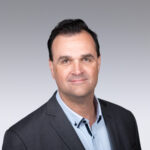 This article is the third of fourteen parts to our risk management series. The series will be taking a look at the risk management guidelines under the ISO 31000 Standard to help you better understand them and how they relate to your own risk management activities. In doing so we’ll be walking through the core aspects of the Standard and giving you practical guidance on how to implement it. Continue reading
This article is the third of fourteen parts to our risk management series. The series will be taking a look at the risk management guidelines under the ISO 31000 Standard to help you better understand them and how they relate to your own risk management activities. In doing so we’ll be walking through the core aspects of the Standard and giving you practical guidance on how to implement it. Continue reading
#354 – THE PURPOSE OF RELIABILITY ENGINEERING WORK – FRED SCHENKELBERG
Featured
 An immediate purpose is to earn a living. You also may suggest the work is to improve the reliability of the product or system. Reduce downtime, reduce warranty, increase profit, etc.
An immediate purpose is to earn a living. You also may suggest the work is to improve the reliability of the product or system. Reduce downtime, reduce warranty, increase profit, etc.
That is fine for the overall purpose of reliability engineering work, yet in the day to day work, the specific task level, what is the purpose behind what we do? Continue reading
#354 – RISK MANAGEMENT IN NEW ZEALAND – JAMES KLINE PH.D.
Featured
 On October 18, 2021, the Controller and Auditor General of New Zealand issued report entitled:” Our observations on local government risk management”. (1) The report is a follow up on a 2016 report “Reflections from our audits: Governance and accountability”. The 2016 report noted that risk management practices were needed in local government. The 2021 report is an in-depth examination of risk management practices of four councils: Auckland Council, Environment Canterbury Regional Council, Queenstown Lake District Council and Waipa District Council. Continue reading
On October 18, 2021, the Controller and Auditor General of New Zealand issued report entitled:” Our observations on local government risk management”. (1) The report is a follow up on a 2016 report “Reflections from our audits: Governance and accountability”. The 2016 report noted that risk management practices were needed in local government. The 2021 report is an in-depth examination of risk management practices of four councils: Auckland Council, Environment Canterbury Regional Council, Queenstown Lake District Council and Waipa District Council. Continue reading
#354 – IF AN EARLY IDEA GOT YOUR BUSINESS THIS FAR, WHAT WILL ADVANCE YOUR FARTHER – DANIEL BURRUS
Featured
 Throughout the decades, singers, bands, actors, and other entertainment personalities emerged on the scene with a hit movie or a powerful song that swept both the nation and the world. Everywhere you looked, you would be hearing the performer, band, actor or actress’s name, synonymous with their song or film. Continue reading
Throughout the decades, singers, bands, actors, and other entertainment personalities emerged on the scene with a hit movie or a powerful song that swept both the nation and the world. Everywhere you looked, you would be hearing the performer, band, actor or actress’s name, synonymous with their song or film. Continue reading
#354 – EXTENDING YOUR HEALTHY LIFESPAN – ALLEN TAYLOR
Featured
 For several decades now, medical researchers have been conducting experiments to determine what interventions, if any, can extend healthy lifespan in humans. Thanks to improvements in the treatment of infectious diseases and other health measures, we are living longer today than our grandparents did, on average. For example, I have already outlived my father, as well as one of my grandfathers. (I’m now working on outliving that other grandfather.) Diseases can be cured and prevented, but the frailty brought on by aging will eventually catch up with everyone, making it increasingly hard to survive. Something will come along that you cannot cope with, and that will be it for you. If the aging process can be slowed down, and robust good health extended, more high quality life can be lived. Continue reading
For several decades now, medical researchers have been conducting experiments to determine what interventions, if any, can extend healthy lifespan in humans. Thanks to improvements in the treatment of infectious diseases and other health measures, we are living longer today than our grandparents did, on average. For example, I have already outlived my father, as well as one of my grandfathers. (I’m now working on outliving that other grandfather.) Diseases can be cured and prevented, but the frailty brought on by aging will eventually catch up with everyone, making it increasingly hard to survive. Something will come along that you cannot cope with, and that will be it for you. If the aging process can be slowed down, and robust good health extended, more high quality life can be lived. Continue reading
#353 – ISO CERTIFICATION 2020 SURVEY RESULTS – JAMES KLINE PH.D.
Featured
 In September 2021 the International Organization for Standards (ISO) published the results of its survey of 2020 certifications. (1) This piece reviews the results. It should be noted that there are two other assessments of the results. One is by Oxebridge Quality Resources. (2) The other is by CQI in the United Kingdom. (3) The assessments differ in focus. The Oxebridge assessment focuses on ISO 9001. While CQI provides an overview of all the ISO certification results. This piece will also provide an overview. But it will also discuss the numbers for the four certifications, 9001, 14001, 27500 and 45001, which have the largest numbers. Continue reading
In September 2021 the International Organization for Standards (ISO) published the results of its survey of 2020 certifications. (1) This piece reviews the results. It should be noted that there are two other assessments of the results. One is by Oxebridge Quality Resources. (2) The other is by CQI in the United Kingdom. (3) The assessments differ in focus. The Oxebridge assessment focuses on ISO 9001. While CQI provides an overview of all the ISO certification results. This piece will also provide an overview. But it will also discuss the numbers for the four certifications, 9001, 14001, 27500 and 45001, which have the largest numbers. Continue reading
#353 – IDENTIFYING ZONE 0, ZONE 1, AND ZONE 2 HAZARDOUS AREAS – BILL POMFRET PH.D.
Featured
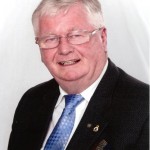 Hazardous area classification (HAC, formerly electrical area classification) impacts the design and operation of petroleum, chemical processes, and other industrial operations that utilize flammable materials in potentially ignitable atmospheric concentrations in air by requiring ignition source controls.
Hazardous area classification (HAC, formerly electrical area classification) impacts the design and operation of petroleum, chemical processes, and other industrial operations that utilize flammable materials in potentially ignitable atmospheric concentrations in air by requiring ignition source controls.
Uncontrolled ignition of in air can result in loss of life, property damage, business interruption, a negative impact on communities, and legal liabilities. There are numerous regulations used in a variety of industries to address hazardous area classification. Not only is it important to select the appropriate code, but the findings of the classification analysis need to be documented. Continue reading
#353 – RISKS OF HIRING THE WRONG PROJECT MANAGER – JOHN AYERS
Featured
 Malcolm Gladwell wrote a book called Blink. It is a book about how we think without thinking, about choices that seem to be made in an instant-in the blink of an eye-that actually aren’t as simple as they seem. In the book (and I am paraphrasing), it states you can learn more about a potential hire by visiting their living quarters for 5 minutes than you can get by interviewing the person for a couple of hours. Why? You can see how organized he/she is. You can see how neat he/she is. You can see what reading material he/she does read. All of these attributes help define the person. Continue reading
Malcolm Gladwell wrote a book called Blink. It is a book about how we think without thinking, about choices that seem to be made in an instant-in the blink of an eye-that actually aren’t as simple as they seem. In the book (and I am paraphrasing), it states you can learn more about a potential hire by visiting their living quarters for 5 minutes than you can get by interviewing the person for a couple of hours. Why? You can see how organized he/she is. You can see how neat he/she is. You can see what reading material he/she does read. All of these attributes help define the person. Continue reading
#353 – LEADERSHIP IN THE ISO 31K CONTEXT – PETER HOLTMANN
Featured
 This article is the second of fourteen parts to our risk management series. The series will be taking a look at the risk management guidelines under the ISO 31000 Standard to help you better understand them and how they relate to your own risk management activities. In doing so we’ll be walking through the core aspects of the Standard and giving you practical guidance on how to implement it. Continue reading
This article is the second of fourteen parts to our risk management series. The series will be taking a look at the risk management guidelines under the ISO 31000 Standard to help you better understand them and how they relate to your own risk management activities. In doing so we’ll be walking through the core aspects of the Standard and giving you practical guidance on how to implement it. Continue reading
#353 – ON AGING: POUR GASOLINE ON THE FIRE – ALLEN TAYLOR
Featured
 Back in the early days of television, in the 1950s, popular television shows, such as ‘I Love Lucy’ were sponsored by products such as Sanka coffee and Lilt hair styling products. Lucy spoofed the sponsors with her famous Vitameatavegemin skit. That fictional product was uncannily similar to an actual product that was heavily advertised on many popular shows, named Geritol, which was an alcohol-based iron and B vitamin tonic. It sponsored TV shows that appealed to older viewers, such as The Lawrence Welk Show, What’s My Line?, and The Red Skelton Show. Continue reading
Back in the early days of television, in the 1950s, popular television shows, such as ‘I Love Lucy’ were sponsored by products such as Sanka coffee and Lilt hair styling products. Lucy spoofed the sponsors with her famous Vitameatavegemin skit. That fictional product was uncannily similar to an actual product that was heavily advertised on many popular shows, named Geritol, which was an alcohol-based iron and B vitamin tonic. It sponsored TV shows that appealed to older viewers, such as The Lawrence Welk Show, What’s My Line?, and The Red Skelton Show. Continue reading
#352 – 17 YEARS AGO I WAS DIAGNOSED WITH PROSTATE CANCER – ALLEN TAYLOR
Featured
 Happily, I had good medical insurance and received some of the best treatment available at that time. The fact that I am writing this article today is a testament to the success of that treatment. I am very thankful for the treatment I received, called brachytherapy. Continue reading
Happily, I had good medical insurance and received some of the best treatment available at that time. The fact that I am writing this article today is a testament to the success of that treatment. I am very thankful for the treatment I received, called brachytherapy. Continue reading
#352 – RELIABILITY QUESTIONS AND DECISIONS BY FRED SCHENKELBERG
Featured
 As I’ve said before, ‘Reliability occurs at the point of decision’. When an engineer selects one material type versus another, or one component versus another, or a vendor over another, those are decisions. These decision directly impact the product’s reliability performance.
As I’ve said before, ‘Reliability occurs at the point of decision’. When an engineer selects one material type versus another, or one component versus another, or a vendor over another, those are decisions. These decision directly impact the product’s reliability performance.
Implied within each decision is a question. For example, when deciding on a vendor to provide power supplies, the underlying question is ‘which vendor should we select in this situation?’ We make decisions to resolve questions concerning optimizations, comparisons, objectives, measurements, preventions, priorities, and resources. Continue reading
#352 – SECONDARY EXPOSURE TO ASBESTOS AND HOW TO PREVENT IT – BILL POMFRET PH.D.
Featured
 Asbestos can affect more than just the workers who are directly exposed to it – their loved ones and friends may be at risk, too.
Asbestos can affect more than just the workers who are directly exposed to it – their loved ones and friends may be at risk, too.
Asbestos exposure doesn’t always end at work. Unfortunately, whenever an employee is at risk of exposure, so are their family and loved ones, unless the father or exposed parent takes precautions, before going home, that’s because of a phenomenon known as secondary asbestos exposure. starts with the presence of asbestos fibers in the workplace – the primary exposure. Continue reading
#352 – HOW TO RELIABLY DESIGN FOR A SINGLE POINT OF FAILURE – JOHN AYERS
Featured
 Reliability is designed into a product. Poor reliability is long term, difficult and expensive to rectify because it is woven into the fabric of the product. That is why high reliability products require complete and accurate analyses, simulations, and models to be successful. High reliable components are essential as well. Single point failures are taboo but, in some cases, there is no way to avoid them. Continue reading
Reliability is designed into a product. Poor reliability is long term, difficult and expensive to rectify because it is woven into the fabric of the product. That is why high reliability products require complete and accurate analyses, simulations, and models to be successful. High reliable components are essential as well. Single point failures are taboo but, in some cases, there is no way to avoid them. Continue reading
#352 – INTRODUCTION TO THE ISO 31K RISK MANAGEMENT FRAMEWORK – PETER HOLTMANN
Featured
 This article is the first in our risk management series. The series will be taking a look at the risk management guidelines under the ISO 31000 Standard to help you better understand them and how they relate to your own risk management activities. In doing so we’ll be walking through the core aspects of the Standard and giving you practical guidance on how to implement it. Continue reading
This article is the first in our risk management series. The series will be taking a look at the risk management guidelines under the ISO 31000 Standard to help you better understand them and how they relate to your own risk management activities. In doing so we’ll be walking through the core aspects of the Standard and giving you practical guidance on how to implement it. Continue reading
#351 – ONE SIMPLY DOES NOT DO RELIABILITY – FRED SCHENKELBERG
Featured
 Some time ago when talking with someone I just met, the conversation turned to what we did for a living. I mentioned being a reliability engineer, and his response: “Oh, yes, we do reliability”. Curious, as I’m not sure that I ‘do reliability’, we then talked about what he meant.
Some time ago when talking with someone I just met, the conversation turned to what we did for a living. I mentioned being a reliability engineer, and his response: “Oh, yes, we do reliability”. Curious, as I’m not sure that I ‘do reliability’, we then talked about what he meant.
The conversation revealed that they had a list of tasks that they accomplished for each product under development. They did tests and reviews of the results. A lot of testing. They did FMEA and HALT. He believed the engineers did derating or stress/strength calculation. He didn’t know about process stability with vendors or internal manufacturing lines. Continue reading
#351 – MEETING TAKEAWAYS: FAST FOOD COMMUNICATIONS – MALCOLM PEART
Featured
 The term ‘meeting takeaway’ is used widely in today’s business and project worlds. The word ‘takeaway’ originated in the 16th century and combined the words ‘take’ and ‘away’. In those days it was a verb and associated with the receipt or giving of something.
The term ‘meeting takeaway’ is used widely in today’s business and project worlds. The word ‘takeaway’ originated in the 16th century and combined the words ‘take’ and ‘away’. In those days it was a verb and associated with the receipt or giving of something.
The verb became a noun in the 20th century: a subtracted amount, a railcar for removing logs, and food cooked in one place and eaten in another (the American ‘takeout’). It also became a sporting term to mean the act of ‘stealing’ a ball from an opposing team or that first and all so important rearward swing of a golf club. Continue reading
#351 – PROGRAM RISK – OTTAWA’S LRT INTERNATIONAL EMBARRASSMENT – BILL POMFRET PH.D.
Featured
 Once again Ottawa’s LRT train became International news after it derailed through Tremblay Station and into Capital Ward. This was shortly after another train had derailed just six weeks prior because of a broken axle and nine other trains were removed for inspections. The train that derailed last week was one of those nine that had just been inspected. Continue reading
Once again Ottawa’s LRT train became International news after it derailed through Tremblay Station and into Capital Ward. This was shortly after another train had derailed just six weeks prior because of a broken axle and nine other trains were removed for inspections. The train that derailed last week was one of those nine that had just been inspected. Continue reading
#351 – SELL SOLUTIONS BEFORE THERE’S A PROBLEM – DANIEL BURRUS
Featured
 So long as there are products and services offered by an organization, there will be the existence of a sales force.
So long as there are products and services offered by an organization, there will be the existence of a sales force.
The basic fundamentals of selling are simple: a customer expresses a desire for something and, in turn, someone sells them a product or service to address that desire. Essentially, sales are how an organization converts a “want” into a “need.” While these fundamentals are timeless, they are rooted in a reactive process. Continue reading
#351 – IS IT TOO LATE TO FULFILL YOUR DREAMS? MAYBE NOT – ALLEN TAYLOR
Featured
 When I was in my mid-twenties, early in my career as a design engineer, I had a coworker named Vince. He was in his mid-forties and had been around the block a couple of times. I was promoted to group leader early on, while he was treading water, career-wise. This, combined with some other things in his life convinced him that his chance had passed and that he would probably make no more progress in life. How depressing! Continue reading
When I was in my mid-twenties, early in my career as a design engineer, I had a coworker named Vince. He was in his mid-forties and had been around the block a couple of times. I was promoted to group leader early on, while he was treading water, career-wise. This, combined with some other things in his life convinced him that his chance had passed and that he would probably make no more progress in life. How depressing! Continue reading
#350 – TWO STEP APPROACH TO GET BETTER AT WHAT YOU DO – FRED SCHENKELBERG
Featured
 How is it that some people continue to get better at managing meetings, designing complex test plans, making presentations, or solving problems? How in general do people improve their performance over time at something?
How is it that some people continue to get better at managing meetings, designing complex test plans, making presentations, or solving problems? How in general do people improve their performance over time at something?
Two Questions
Peter Bregman in a Harvard Business Review article (November 09, 2019) titled “If You Want to Get Better at Something, Ask Yourself These Two Questions” outlined the process. The first question is: “Do you want to get better?” If you accept your current performance then there is no need to go further. Continue reading
#350 – PROJECT REQUIREMENTS ARE A RISK – JOHN AYERS
Featured
#350 – ELECTORAL QUALITY AND INTEGRITY – JAMES KLINE PH.D.
Featured
 On September 15, 2021, ASQ announced the formation of the Center for Electoral Quality and Integrity. This announcement caused a conflicted reaction. On the one hand I liked that the Government Division, which was pushing this action, was showing some level of activity, after almost none for several years. One the other hand, I just laughed at the idea that ASQ and Government Division was going to, or even be capable of, having an impact on electoral quality or integrity. This is not a case of believing the objective is bad. Continue reading
On September 15, 2021, ASQ announced the formation of the Center for Electoral Quality and Integrity. This announcement caused a conflicted reaction. On the one hand I liked that the Government Division, which was pushing this action, was showing some level of activity, after almost none for several years. One the other hand, I just laughed at the idea that ASQ and Government Division was going to, or even be capable of, having an impact on electoral quality or integrity. This is not a case of believing the objective is bad. Continue reading
#350 – SHAME ON YOU CANADA – BILL POMFRET PH.D.
Featured
 The discovery of what is believed to be the remains of 215 children at the site of a former residential school in Kamloops, B.C., has stunned Canadians and renewed focus on what Prime Minister Justin Trudeau called a “dark and shameful chapter of our country’s history.” It is also another reminder for Indigenous peoples living in Canada of a painful history they’ve known about all along. Continue reading
The discovery of what is believed to be the remains of 215 children at the site of a former residential school in Kamloops, B.C., has stunned Canadians and renewed focus on what Prime Minister Justin Trudeau called a “dark and shameful chapter of our country’s history.” It is also another reminder for Indigenous peoples living in Canada of a painful history they’ve known about all along. Continue reading
#350 – HOW TO TURN BACK THE CLOCK? – ALLEN TAYLOR
Featured
#349 – COVID RISK ASSESSMENT – MALCOLM PEART
Featured
 In early 2020 we heard statements that Coronavirus could infect as many as 2.5 billion people within 45 days and kill as many as 52.9 million of us…that’s one scary statistic! In March 2020 the World Health Organisation declared that the mortality rate would be 3.4%, another scary forecast! On this basis, or some other statistic or forecast, a few good men and women declared a pandemic. Fortunately, as we all may know now, those predictions of gloom and doom have not come to pass and were, shall we say, somewhat exaggerated. The sky hasn’t fallen. Continue reading
In early 2020 we heard statements that Coronavirus could infect as many as 2.5 billion people within 45 days and kill as many as 52.9 million of us…that’s one scary statistic! In March 2020 the World Health Organisation declared that the mortality rate would be 3.4%, another scary forecast! On this basis, or some other statistic or forecast, a few good men and women declared a pandemic. Fortunately, as we all may know now, those predictions of gloom and doom have not come to pass and were, shall we say, somewhat exaggerated. The sky hasn’t fallen. Continue reading
#349 – UPPING GAME OF OPPORTUNITIES – IAN DALLING
Featured
 Building on the foundation concept that behaviour is just the taking and rejecting of ‘Opportunity’, Ian Dalling explains that:
Building on the foundation concept that behaviour is just the taking and rejecting of ‘Opportunity’, Ian Dalling explains that:
- The problems facing humankind have emerged from our fractured playing of the ‘Game of Opportunities’.
- Opportunity centric integrated thinking is the antidote empowering us to continually improve everyone’s quality of life. (see Game of Opportunities)
#349 – DEALING WITH RELIABILITY RELATED UNCERTAINTY – FRED SCHENKELBERG
Featured
 Uncertainty is another word for risk. Reliability uncertainty or risk is neither good nor bad, it just a bit unknown. Until we know the outcome, the eventual reliability performance, we will not know the impact.
Uncertainty is another word for risk. Reliability uncertainty or risk is neither good nor bad, it just a bit unknown. Until we know the outcome, the eventual reliability performance, we will not know the impact.
So, how do we deal with reliability uncertainty? Will our product or system work as expected over time, or will it fail? Let’s examine a few of the common approaches in use and when and why the approach is effective. Continue reading
#349 – TECH SUPPORT FOR BABY BOOMERS – BILL POMFRET PH.D.
Featured
 The Covid 19 Pandemic has created an urgent need for seniors to learn how to use social media and tele-conferencing
The Covid 19 Pandemic has created an urgent need for seniors to learn how to use social media and tele-conferencing
During the past 20 months the Pandemic has led to the emergence of video-conferencing technologies such as zoom and facetime, to help people maintain contact with family and friends providing crucial connectivity when physical contact was not possible. Continue reading
#349 – DO VACCINE MANDATES WORK? – ALLEN TAYLOR
Featured
 Even as thousands of Americans die every day of Covid-19, many people resist being inoculated with a life-saving vaccine. In many cases this is due to misinformation circulating among people, and in other cases people fear getting a shot more than they fear dying of Covid-19. The people in the first category need to receive better information. Those in the second category need to have a better appreciation of the relative risks between getting the disease and having the vaccination that will protect them from it. Continue reading
Even as thousands of Americans die every day of Covid-19, many people resist being inoculated with a life-saving vaccine. In many cases this is due to misinformation circulating among people, and in other cases people fear getting a shot more than they fear dying of Covid-19. The people in the first category need to receive better information. Those in the second category need to have a better appreciation of the relative risks between getting the disease and having the vaccination that will protect them from it. Continue reading
#348 – ART OF CREATING A RELIABILITY PLAN – FRED SCHENKELBERG
Featured
 A plan is a road map toward a destination. It provide guidance toward a goal. The idea of a plan is to consider the path forward, the knowledge necessary to acquire, and the decisions along the way.
A plan is a road map toward a destination. It provide guidance toward a goal. The idea of a plan is to consider the path forward, the knowledge necessary to acquire, and the decisions along the way.
No plan is perfect other than those that successfully accommodate the successes and setbacks along the way. No plan can anticipate all the information yet to be uncovered, yet it can set a course to deliberately uncover what is necessary to move forward. Continue reading
#348 – PROJECT MANAGER LESSONS LEARNED: BAD TECHNICAL DECISION – JOHN AYERS
Featured
 This story is an example of centering your design around a high-tech solution to a problem when a low risk proven technology would have more than sufficed. Technical expertise egos got in the way of a practical low-cost approach resulting in unplanned schedule and cost growth. Continue reading
This story is an example of centering your design around a high-tech solution to a problem when a low risk proven technology would have more than sufficed. Technical expertise egos got in the way of a practical low-cost approach resulting in unplanned schedule and cost growth. Continue reading
#348 – WORKING FROM HOME – BILL POMFRET PH.D.
Featured
 It came as quite a surprise to hear that the Conservatives, in their election campaign promises, that working remotely is a new reality for many public servants as we carry on work during the COVID-19 pandemic, I wonder how much, if any thoughts about the legal implications of such a strategy.
It came as quite a surprise to hear that the Conservatives, in their election campaign promises, that working remotely is a new reality for many public servants as we carry on work during the COVID-19 pandemic, I wonder how much, if any thoughts about the legal implications of such a strategy.
While it offers some advantages and flexibilities, many of us are continuing to adjust to these new circumstances that are impacting our work and home life. Continue reading
#348 – CAN HEARING LOSS BE REGAINED – ALLEN TAYLOR
Featured
 Almost sixty years ago, I was a student at the University of Illinois in Champaign-Urbana, a thousand miles from my home in New Jersey. Going home for a short Thanksgiving break was not feasible, so my father’s cousin and boyhood friend Bill invited me to share the Thanksgiving holiday with his family in Kentucky. It was a great visit. Bill made sure that I would have a great time. Continue reading
Almost sixty years ago, I was a student at the University of Illinois in Champaign-Urbana, a thousand miles from my home in New Jersey. Going home for a short Thanksgiving break was not feasible, so my father’s cousin and boyhood friend Bill invited me to share the Thanksgiving holiday with his family in Kentucky. It was a great visit. Bill made sure that I would have a great time. Continue reading
#348 – WHAT IS AGILE ENTERPRISE RISK MANAGEMENT? – HOWARD WIENER
Featured
 I am pretty close to completing my first book – Agile Enterprise Risk Management, Risk-Based Thinking, Multi-Disciplinary Management and Digital Transformation. It is now at the publishers, awaiting finalization. I have established a site for the book and this is the home page text that describes what AERM is all about.
I am pretty close to completing my first book – Agile Enterprise Risk Management, Risk-Based Thinking, Multi-Disciplinary Management and Digital Transformation. It is now at the publishers, awaiting finalization. I have established a site for the book and this is the home page text that describes what AERM is all about.
The State of Things
The world is changing faster and faster. Volatility, Uncertainty, Complexity and Ambiguity (VUCA) is and will be the new normal for the foreseeable future. Continue reading
#347 – RESILIENCE, RESOLVE AND RELIABLE PRODUCTS – FRED SCHENKELBERG
Featured
 The essence of creating a reliable product involves making informed decisions. Informed related to the implications of the various options on reliability performance. Yet, these decisions, made nearly every day during the early stages of a product’s lifecycle are fraught with uncertainty. Continue reading
The essence of creating a reliable product involves making informed decisions. Informed related to the implications of the various options on reliability performance. Yet, these decisions, made nearly every day during the early stages of a product’s lifecycle are fraught with uncertainty. Continue reading
#347 – TEAMWORK: TRUST, TOLERANCE, AND LEADERSHIP – MALCOLM PEART
Featured
 Teams, they are everywhere; sports teams, project teams, political parties, rock bands, military units, the list goes on. The team isn’t just about the people in the limelight it’s also about the backroom boys and girls who provide logistical, technical, administrative, and sometime moral support to the front men and women. Even the lone competitor or the one-man-band needs some support; everybody needs somebody sometime. Continue reading
Teams, they are everywhere; sports teams, project teams, political parties, rock bands, military units, the list goes on. The team isn’t just about the people in the limelight it’s also about the backroom boys and girls who provide logistical, technical, administrative, and sometime moral support to the front men and women. Even the lone competitor or the one-man-band needs some support; everybody needs somebody sometime. Continue reading
#347 – FUTURE OF TODAY’S RISK PROFESSIONAL – PATRICK OW
Featured
 Patrick Ow is a Risk Specialist and Chartered Accountant with over 25 years of international risk management and corporate governance experience in the private, not-for-profit, and public sectors, and across different industries. He helps individuals and organisations make better decisions to achieve better results and outcomes as a corporate and personal trainer and coach at Practicalrisktraining.com. Continue reading
Patrick Ow is a Risk Specialist and Chartered Accountant with over 25 years of international risk management and corporate governance experience in the private, not-for-profit, and public sectors, and across different industries. He helps individuals and organisations make better decisions to achieve better results and outcomes as a corporate and personal trainer and coach at Practicalrisktraining.com. Continue reading
#347 – IMPROVING YOUR ODDS OF AVOIDING COVID 19 – ALLEN TAYLOR
Featured
 If you want to avoid contracting and dying from Covid-19, it makes sense for you to move your body from wherever you are to a place where deaths per 100,000 population is low. There are a lot of countries to choose from, since you are probably okay if you do not reside in one of the twenty countries with the highest deaths per 100,000 population. Unfortunately for me, I live in one of those twenty countries, the United States of America. As the chart included with this article shows, Continue reading
If you want to avoid contracting and dying from Covid-19, it makes sense for you to move your body from wherever you are to a place where deaths per 100,000 population is low. There are a lot of countries to choose from, since you are probably okay if you do not reside in one of the twenty countries with the highest deaths per 100,000 population. Unfortunately for me, I live in one of those twenty countries, the United States of America. As the chart included with this article shows, Continue reading
#346 – WHY ARE OLDER PEOPLE MORE LIKELY TO DIE OF COVID THAN YOUNGER PEOPLE – ALLEN TAYLOR
Featured
 Vaccinations against Covid-19 were first made available to high risk people. These included medical workers who came into close contact with people with an active infection. Also included in the high risk category have been older people, with the risk being highest for the oldest and going down from there. What makes older people more likely to contract severe disease than younger people? What makes them more likely to die of an infection? Continue reading
Vaccinations against Covid-19 were first made available to high risk people. These included medical workers who came into close contact with people with an active infection. Also included in the high risk category have been older people, with the risk being highest for the oldest and going down from there. What makes older people more likely to contract severe disease than younger people? What makes them more likely to die of an infection? Continue reading
#347 – NUCLEAR FUSION ADVANCES – JOHN AYERS
Featured
New superconducting magnet breaks magnetic field strength records, paving the way for practical, commercial, carbon-free power fusion energy. MIT and U.S. startup company Commonwealth Fusion Systems (CFS) led the project. This test paves the way for a demonstration device to show a plasma can be created and contained that generates more energy than it consumes. The demonstration device is expected to be completed in 2025. The hope is that in the future there will be thousands of fusion plants powering clean electric grids around the world helping to save the planet. Continue reading
#346 – RISK RANKINGS – MALCOLM PEART
Featured
 We have general risks and, quite often when risks manifest themselves the various militaries around the world are called in to deal with the issues, crises, disasters, and catastrophes that occur. The military do not enter these on their own volition nor are they of their own making but, in line with the principle that risk is best dealt with by the party most suited, the military are tasked by their lords and masters. Continue reading
We have general risks and, quite often when risks manifest themselves the various militaries around the world are called in to deal with the issues, crises, disasters, and catastrophes that occur. The military do not enter these on their own volition nor are they of their own making but, in line with the principle that risk is best dealt with by the party most suited, the military are tasked by their lords and masters. Continue reading
#346 – GREAT RESIGNATION LEADS TO GREAT DISAPPOINTMENTS – PATRICK OW
Featured
 The pandemic has caused a lot of people to re-evaluate, particularly when it comes to working.
The pandemic has caused a lot of people to re-evaluate, particularly when it comes to working.
After spending more than a year at home, some don’t want to go back to commuting, preferring the flexibility of remote work at least a few days a week. Instead of heading back to the office in the wake of the Covid pandemic, employees may quit instead – this is called the “Great Resignation.”
Many employees are ready to see what else is out there. Continue reading
#346 – GOVERNMENT RESILIENCE IN COVID ERA – JAMES KLINE PH.D.
Featured
 The Association of Government Accountants (AGA), a professional organization for government accounts and financial mangers, recently published the results of a survey entitled: The COVID-19 Challenge: CFO Views on Organizational Resilience in Pandemic Conditions. (1)
The Association of Government Accountants (AGA), a professional organization for government accounts and financial mangers, recently published the results of a survey entitled: The COVID-19 Challenge: CFO Views on Organizational Resilience in Pandemic Conditions. (1)
The surveys of nearly a dozen Chief Financial Officers (CFO) and Financial Managers in small and large federal agencies, was conducted between March and April 2021. The questions focused on four major areas: Workforce, Real Estate, Information Technology (IT) and Organizational Resiliency. Continue reading
#346 – DON’T FEAR DISRUPTION: LEVERAGE IT – DANIEL BURRUS
Featured
 I challenge you to read this paragraph and then close your eyes and focus. Think about the future. What does it look like to you? How do you think humankind operates 20, 30, or 40 years from now? Are we even more digitally connected than we already are? What behaviors or actions are commonplace now that might be nonexistent then? Continue reading
I challenge you to read this paragraph and then close your eyes and focus. Think about the future. What does it look like to you? How do you think humankind operates 20, 30, or 40 years from now? Are we even more digitally connected than we already are? What behaviors or actions are commonplace now that might be nonexistent then? Continue reading
#345 – HELP YOUR TEAM MAKE BETTER RELIABILITY DECISIONS – FRED SCHENKELBERG
Featured
 While in the US Army many years ago, I took command of an artillery battery. My first day included sitting down with my boss, the battalion commander. I’ve used the advice he gave me every day since.
While in the US Army many years ago, I took command of an artillery battery. My first day included sitting down with my boss, the battalion commander. I’ve used the advice he gave me every day since.
He said that I needed to make decisions. It’s great when they are good decisions, you can learn from decisions that don’t work out well. He also said the only thing not allowed is not making a decision. Continue reading
#345 – WAS TELEWORK ONLY THE BEGINNING – JIM TONEY
Featured
 Is there a tectonic collision in the making as employers require employees to return to the office, if not full time, then several days a week? There just might be. Being able to use technology to work just about anywhere through an internet connection provided a taste of freedom for many. And, they do not want to give it up. Companies across the board report employee shortages, nationally there may be as many as 10 million job openings. Continue reading
Is there a tectonic collision in the making as employers require employees to return to the office, if not full time, then several days a week? There just might be. Being able to use technology to work just about anywhere through an internet connection provided a taste of freedom for many. And, they do not want to give it up. Companies across the board report employee shortages, nationally there may be as many as 10 million job openings. Continue reading
#345 – PROJECT LEADERSHIP: ACTION OR DAMNATION – MALCOLM PEART
Featured
 “You’ll be damned if you do and damned if you don’t”. This was the message from First Lady Eleanor Roosevelt for those situations when you believe in your heart that you are doing the right thing even if, or when others believe it to be wrong. This is what leaders do, they lead based upon what they believe to be right and will reap the consequences, whatever the outcome. Leadership is about doing; it’s about making things happen through the people who follow and enabling those people to make it happen. It’s also about being responsible for your actions and those of the others who have acted on your behalf. Continue reading
“You’ll be damned if you do and damned if you don’t”. This was the message from First Lady Eleanor Roosevelt for those situations when you believe in your heart that you are doing the right thing even if, or when others believe it to be wrong. This is what leaders do, they lead based upon what they believe to be right and will reap the consequences, whatever the outcome. Leadership is about doing; it’s about making things happen through the people who follow and enabling those people to make it happen. It’s also about being responsible for your actions and those of the others who have acted on your behalf. Continue reading
#345 – PROJECT MANAGER LESSONS LEARNED – JOHN AYERS
Featured
 This story is an example of centering your design around a high-tech solution to a problem when a low risk proven technology would have more than sufficed. Technical expertise egos got in the way of a practical low-cost approach resulting in unplanned schedule and cost growth. Continue reading
This story is an example of centering your design around a high-tech solution to a problem when a low risk proven technology would have more than sufficed. Technical expertise egos got in the way of a practical low-cost approach resulting in unplanned schedule and cost growth. Continue reading
#345 – WE’VE BEEN WRONG HOW COVID SPREADS – ALLEN TAYLOR
Featured
 Ever since the beginning of the Covid-19 pandemic, we have known that it is a highly contagious disease. It first came to the attention of the world when hundreds of people on the Diamond Princess cruise ship became ill and nine passengers died. The ship had taken on an infected passenger who had recently been in Wuhan, China. Even though that passenger left the ship at its next port of call, the damage had been done. Restricting passengers to their cabins did not halt the spread of the virus. Continue reading
Ever since the beginning of the Covid-19 pandemic, we have known that it is a highly contagious disease. It first came to the attention of the world when hundreds of people on the Diamond Princess cruise ship became ill and nine passengers died. The ship had taken on an infected passenger who had recently been in Wuhan, China. Even though that passenger left the ship at its next port of call, the damage had been done. Restricting passengers to their cabins did not halt the spread of the virus. Continue reading
#344 – FOUNDATION OF GREAT PROJECT OUTCOMES – STRUCTURES – MALCOLM PEART
Featured
 Structures are all around us, even chaos has structure albeit fractal. We humans too involved in structures; not only do we construct physical structures, but we form organisational structures and create civilizations using the social, economic and cultural structures that rule our lives. Continue reading
Structures are all around us, even chaos has structure albeit fractal. We humans too involved in structures; not only do we construct physical structures, but we form organisational structures and create civilizations using the social, economic and cultural structures that rule our lives. Continue reading
#344 – HOW TO STAFF A PROJECT – JOHN AYERS
Featured
 I believe that if the staffing plan is not aligned with the Integrated Master Schedule (IMS), then the IMS is not valid. For example, if there is insufficient staff, then the risk is the schedule will be late. If there is excessive staff, then overrunning the budget becomes a risk. This paper explains how to use the resource leveling feature in the Schedule tool to aligning the staffing plan to the IMS. Microsoft Project is used to explain how it is done. Primavera P6 should be similar. Continue reading
I believe that if the staffing plan is not aligned with the Integrated Master Schedule (IMS), then the IMS is not valid. For example, if there is insufficient staff, then the risk is the schedule will be late. If there is excessive staff, then overrunning the budget becomes a risk. This paper explains how to use the resource leveling feature in the Schedule tool to aligning the staffing plan to the IMS. Microsoft Project is used to explain how it is done. Primavera P6 should be similar. Continue reading
#344 – HOW LOCAL GOVERNMENTS CAN STOP CYBER ATTACKS – JAMES KLINE PH.D.
Featured
 In my last piece I discussed an international survey on ransomware attacks. The emphasis was on risks associated with attacks on government organizations. The survey found that both central and local governments were vulnerable to such attacks. Thus, the risk was substantive. Further, in many cases, governments paid the ransom to get their data unlocked. The survey also showed that governments, particularly local governments, were not well prepared to deal with such attacks. The willingness to pay and the lack of preparedness make governments a ripe target for ransomware attacks. Continue reading
In my last piece I discussed an international survey on ransomware attacks. The emphasis was on risks associated with attacks on government organizations. The survey found that both central and local governments were vulnerable to such attacks. Thus, the risk was substantive. Further, in many cases, governments paid the ransom to get their data unlocked. The survey also showed that governments, particularly local governments, were not well prepared to deal with such attacks. The willingness to pay and the lack of preparedness make governments a ripe target for ransomware attacks. Continue reading
#344 – PROMISING TREATMENTS FOR ALZHEIMER’S DISEASE ARE ON THE HORIZON – ALLEN TAYLOR
Featured
 In the Creating Health post I wrote last week titled “Can Alzheimer’s Disease be avoided?” I talked about the importance of getting enough sleep, and getting it at the right time of day, to avoid the accumulation of toxic Aβ plaques in the central nervous system. Healthy sleep practices are very important to continued mental health as we age. However, just having healthy sleep habits may not be enough to guarantee that you will retain your full cognitive powers for as long as you live. Continue reading
In the Creating Health post I wrote last week titled “Can Alzheimer’s Disease be avoided?” I talked about the importance of getting enough sleep, and getting it at the right time of day, to avoid the accumulation of toxic Aβ plaques in the central nervous system. Healthy sleep practices are very important to continued mental health as we age. However, just having healthy sleep habits may not be enough to guarantee that you will retain your full cognitive powers for as long as you live. Continue reading
#344 – SIGNIFICANCE OVER SUCCESS. INNOVATION OVER CHANGE. ANTICIPATION OVER AGILITY. – DANIEL BURRUS
Featured
 Question for all who read this: to succeed at any business venture, you merely need to have huge resources, dedicated personnel, and a quality product or service, right? From there, it’s just collecting money and living a good life.
Question for all who read this: to succeed at any business venture, you merely need to have huge resources, dedicated personnel, and a quality product or service, right? From there, it’s just collecting money and living a good life.
This presumption is more common than you realize, and could not be more wrong and misguided. In a world where exponential change and digital disruptions abound, you simply cannot rest on your laurels and merely rely on what you’ve already built. Because of the rapidly accelerating rate of change, your business is only ever as strong as its next innovation. Continue reading
#343 – GARMENT WORKERS IN ASIA OWED ALMOST $12 BILLION DOLLARS IN WAGES AMID PANDEMIC – BILL POMFRET PH.D.
Featured
 As fashion brands and retailers across the world return to profitability, following what has been an immensely difficult period of international store closures due to plummeting demand for fashion, for those making the world’s clothing, the story is far from over.
As fashion brands and retailers across the world return to profitability, following what has been an immensely difficult period of international store closures due to plummeting demand for fashion, for those making the world’s clothing, the story is far from over.
According to a new report by the Clean Clothes Campaign, Asian garment workers are owed almost 12 billion dollars in unpaid wages and severance in the first year of the pandemic. Continue reading
#343 – ISO 9001 CONTEXT AND IN THE REAL WORLD, WHAT DO WE DO? – JOHN MASON
Featured
 A classic question for all CEOs and floor sweepers alike. What the heck do we do and what do we want to do? In big business there is visioning, missioning, goal setting, target measuring, market analysis, focus groups, policy and much much more, more and more. In small business, we offer far more than we would like to do, but in order to make ends meet, we take on more and more until we finally burn out or are lucky enough to realise a cash flow that will enable us to niche or focus on what we do and what we want to do. Continue reading
A classic question for all CEOs and floor sweepers alike. What the heck do we do and what do we want to do? In big business there is visioning, missioning, goal setting, target measuring, market analysis, focus groups, policy and much much more, more and more. In small business, we offer far more than we would like to do, but in order to make ends meet, we take on more and more until we finally burn out or are lucky enough to realise a cash flow that will enable us to niche or focus on what we do and what we want to do. Continue reading
#343 – IMPROVE COVID RISK COMMUNICATIONS AND DECISION MAKING – ANNETTE DAVISON & IAN WRIGHT PH.D.
Featured
 Risk is the impact of uncertainty on achieving your objectives – the impact can be either positive or negative outcomes (ISO 31000). Governments have multiple objectives they have to meet – health and wellbeing, economic, environmental, ethical and so on. Each of these objectives essentially becomes a risk endpoint. The fundamental tenets of risk assessment are understanding the system (the context), understanding and assessing the risk (against your identified objectives), managing the risk and then monitoring whether the risk is actually controlled, and whether a further risk treatment needs to be applied.[1] Continue reading
Risk is the impact of uncertainty on achieving your objectives – the impact can be either positive or negative outcomes (ISO 31000). Governments have multiple objectives they have to meet – health and wellbeing, economic, environmental, ethical and so on. Each of these objectives essentially becomes a risk endpoint. The fundamental tenets of risk assessment are understanding the system (the context), understanding and assessing the risk (against your identified objectives), managing the risk and then monitoring whether the risk is actually controlled, and whether a further risk treatment needs to be applied.[1] Continue reading
#343 – A MODEL FOR DECIDING UNDER RISK AND UNCERTAINTY – PATRICK OW
Featured
 In Part 1, we looked at the two relevant dimensions for decision-making under certainty, risk, and uncertainty that form the certainty-uncertainty spectrum are:
In Part 1, we looked at the two relevant dimensions for decision-making under certainty, risk, and uncertainty that form the certainty-uncertainty spectrum are:
- Degree of certainty – It ranges from close to certainty to far from certainty.
- Level of predictability and control – It moves from close to predictability and control to far from predictability and control.
In Part 2, we looked at the three conditions along the certainty-uncertainty spectrum that you will face when making decisions under certainty, risk, and uncertainty. Continue reading
#343 – WHY DO MEMORIES FADE AS WE AGE? – ALLEN TAYLOR
Featured
 We have all encountered people, perhaps our grandparents, who now have trouble remembering things that they could instantly recall when they were younger. What happened to those missing memories? Why are they so hard for an older person to recall? Those memories used to be present in the brain and easily accessible. What has changed? Continue reading
We have all encountered people, perhaps our grandparents, who now have trouble remembering things that they could instantly recall when they were younger. What happened to those missing memories? Why are they so hard for an older person to recall? Those memories used to be present in the brain and easily accessible. What has changed? Continue reading
#342 – PARTNERSHIPS: HEAVEN, HONEYMOONS, OR HELL – MALCOLM PEART
Featured
 When it comes to business Bob Parsons, the founder of possibly the world’s largest domain-name registry, believes that “the best partner is no partner”. The belief is based on that time-honoured Napoleonic phrase which we all utter, or mutter, from time to time “if you want a job doing well, do it yourself”. Continue reading
When it comes to business Bob Parsons, the founder of possibly the world’s largest domain-name registry, believes that “the best partner is no partner”. The belief is based on that time-honoured Napoleonic phrase which we all utter, or mutter, from time to time “if you want a job doing well, do it yourself”. Continue reading
#342 – GAME OF OPPORTUNITIES – IAN DALLING
Featured
- Value creation and value retention emerge from the continual seeking and subsequent taking or rejection of opportunities
- Prospect and risk are critical elements of opportunity
- Taking better opportunities is the key to all types of continual improvement
#342 – DECISION MAKING UNDER CERTAINTY, UNCERTAINTY, AND RISK – PATRICK OW
Featured
 In Part 1 of this series, we looked at the two relevant dimensions for decision-making under certainty, risk, and uncertainty that form the certainty-uncertainty spectrum are:
In Part 1 of this series, we looked at the two relevant dimensions for decision-making under certainty, risk, and uncertainty that form the certainty-uncertainty spectrum are:
- Degree of certainty – It ranges from close to certainty to far from certainty.
- Level of predictability and control – It moves from close to predictability and control to far from predictability and control.
#342 – 2021 STATE OF RANSOMWARE ATTACKS – JAMES KLINE PH.D.
Featured
 In the November 23, 2019, CERM Risk Insights issue #256 I discussed the problem of Ransomware in government. I also discussed the multiple cyber-attack risks in my book on implementing ISO 31000: 2018 in government. These discussions presented individual examples, in January 2021 SOPHOS, a software company in the United Kingdom, conducted an international survey to determine the extent of Ransomware attacks worldwide. Continue reading
In the November 23, 2019, CERM Risk Insights issue #256 I discussed the problem of Ransomware in government. I also discussed the multiple cyber-attack risks in my book on implementing ISO 31000: 2018 in government. These discussions presented individual examples, in January 2021 SOPHOS, a software company in the United Kingdom, conducted an international survey to determine the extent of Ransomware attacks worldwide. Continue reading
#342 – THIS IS WHAT SCARES ME THE MOST ABOUT COVID 19! – ALLEN TAYLOR
Featured
 Covid-19 is a scary disease. There are a number of unhappy possible outcomes of an infection.
Covid-19 is a scary disease. There are a number of unhappy possible outcomes of an infection.
- Severe cases can lead to a lengthy hospital stay, if you are lucky enough to live in a place where hospitals are not overwhelmed with large numbers of Covid-19 patients.
- You might require intubation in order to breathe. This is no picnic, but it could save your life.
- You could suffer painful inflammation of your lungs
- You could suffer the persistence of symptoms, the dreaded “long Covid”.
- You could die.
#341 – PROJECT MEETING TAKEAWAYS – MALCOLM PEART
Featured
 The term ‘meeting takeaway’ is used widely in today’s business and project worlds. The word ‘takeaway’ originated in the 16th century and combined the words ‘take’ and ‘away’. In those days it was a verb and associated with the receipt or giving of something.
The term ‘meeting takeaway’ is used widely in today’s business and project worlds. The word ‘takeaway’ originated in the 16th century and combined the words ‘take’ and ‘away’. In those days it was a verb and associated with the receipt or giving of something.
The verb became a noun in the 20th century: a subtracted amount, a railcar for removing logs, and food cooked in one place and eaten in another (the American ‘takeout’). It also became a sporting term to mean the act of ‘stealing’ a ball from an opposing team or that first and all so important rearward swing of a golf club. Continue reading
#341 – HOW TO CREATE PROJECT PERFORMANCE CURVES – JOHN AYERS
Featured
 Two schedule tools are widely used for the Integrated Master Schedule (IMS) around the world to manage projects. The first one is Microsoft Project (MS Project). The second one is Primavera P6. They are both very good. Primavera P6 is an Oracle product originally designed for the construction industry. MS Project is simpler and easier to learn based on my experience. It also costs less than Primavera P6. DOD uses MS Project and typically requires it for use on government contracts. Other industries use one or the other depending on the size and complexity of the project. Continue reading
Two schedule tools are widely used for the Integrated Master Schedule (IMS) around the world to manage projects. The first one is Microsoft Project (MS Project). The second one is Primavera P6. They are both very good. Primavera P6 is an Oracle product originally designed for the construction industry. MS Project is simpler and easier to learn based on my experience. It also costs less than Primavera P6. DOD uses MS Project and typically requires it for use on government contracts. Other industries use one or the other depending on the size and complexity of the project. Continue reading
#341 – IF YOU FAIL TO PREPARE – PREPARE TO FAIL – BILL POMFRET PH.D.
Featured
 While 2021 is already seven months old, Dr. Bill Pomfret asks the question: “has your organisation taken the time to look back on 2020 and re-evaluate how prepared it was to support its employees and customers”, while continuing to deliver critical services and products during the turbulent times that the COVID-19 pandemic brought on?
While 2021 is already seven months old, Dr. Bill Pomfret asks the question: “has your organisation taken the time to look back on 2020 and re-evaluate how prepared it was to support its employees and customers”, while continuing to deliver critical services and products during the turbulent times that the COVID-19 pandemic brought on?
2020 was a tough year, to say the least. It certainly was the year where many organisations were forced to throw out their “business as usual” risk management playbooks to simply survive in a weakened economy. Many business leaders were forced to reflect just how effective and adaptable their organisation was when it came to their technology, innovation, acclimation to the changing workforce needs and a disruptive supply chain when disaster struck. Continue reading
#341 – MAKING SMARTER CHOICES IN A CHANGING WORLD – PATRICK OW
Featured
 Uncertainty is all around us, never more so than today. Whether it concerns a global pandemic, the economy, or your finances, health, and relationships, much of what lies ahead in life remains uncertain.
Uncertainty is all around us, never more so than today. Whether it concerns a global pandemic, the economy, or your finances, health, and relationships, much of what lies ahead in life remains uncertain.
Nonetheless, life continues. You still must earn a living, take care of the family, house, and car, and walk the dog. All under these new clouds of stress and uncertainty. Continue reading
#341 – COVID: JUST WHEN YOU THOUGHT IT WAS SAFE TO GET BACK INTO THE WATER – ALLEN TAYLOR
Featured
I n the “Jaws” movie franchise, there is one movie after another where a great white shark attacks people at the beach who venture too far from shore. Clearly, it was not safe to get back in the water, but the people did anyway. Frolicking at the beach is a great summer recreation, but if Jaws is still out there somewhere, it is not a great idea.
n the “Jaws” movie franchise, there is one movie after another where a great white shark attacks people at the beach who venture too far from shore. Clearly, it was not safe to get back in the water, but the people did anyway. Frolicking at the beach is a great summer recreation, but if Jaws is still out there somewhere, it is not a great idea.
We have a similar situation with Covid-19. After an initial peak, social distancing, mask wearing, and then vaccination sent infections and deaths down in countries that practiced those intervention. However, like Jaws, Covid-19 keeps coming back, more dangerous than ever. Why is this? Continue reading
#340 – HOW TO STRUCTURE YOUR ERM SYSTEM – PATRICK OW
Featured
 Andy Benoit once said, “Most geniuses — especially those who lead others — prosper not by deconstructing intricate complexities but by exploiting unrecognized simplicities.”
Andy Benoit once said, “Most geniuses — especially those who lead others — prosper not by deconstructing intricate complexities but by exploiting unrecognized simplicities.”
This statement is so true when corporate leaders and managers tend to over-complicate processes or over-engineer systems in organizations. Designing and implementing your organization’s enterprise-wide risk management system is no exception. Continue reading
#340 – HOLOCAUST SURVIVOR STORIES – BILL POMFRET PH.D.
Featured
 For several years I have been visiting elder friends in homes for the aged, it was my way of giving back to society for the good life I had, this of course was up until the Corvid 19 Pandemic arrived almost 18 months ago, and my visits had to be put on hold.
For several years I have been visiting elder friends in homes for the aged, it was my way of giving back to society for the good life I had, this of course was up until the Corvid 19 Pandemic arrived almost 18 months ago, and my visits had to be put on hold.
Due to the Pandemic, two of the people I visited, passed away, one 87 and the other 91, I was very sad, that I could not say good bye. Continue reading
#340 – ‘WHAT IF’ ANALYSIS – FRED SCHENKELBERG
Featured
 What if you knew all the possible outcomes for your product’s reliability performance due to component variations, for example? What if you knew the future with enough certainty to make a difference?
What if you knew all the possible outcomes for your product’s reliability performance due to component variations, for example? What if you knew the future with enough certainty to make a difference?
Building on brainstorming, what-if analysis involved using models or prototypes that allow you to change something and see how it alters the output or performance. What if we change this support bracket from iron to aluminum? What if we swap out this 100 ohm resistor for a 200 ohm one? Continue reading
#340 – RISK IS ROUND – MALCOLM PEART
Featured
 Are project risks round? Curved objects can be less controllable than planar ones as they pitch, roll and yaw; and the tighter their curves the more difficult control becomes. Even a truly planar surface is, geometrically, a curve but with an infinite radius. The Earth’s horizon, that imaginary plane perpendicular to its radius is considered by some to be ‘flat’ but in reality it’s a sphere so we can never see over the horizon. But what has this got to do with project risk? Continue reading
Are project risks round? Curved objects can be less controllable than planar ones as they pitch, roll and yaw; and the tighter their curves the more difficult control becomes. Even a truly planar surface is, geometrically, a curve but with an infinite radius. The Earth’s horizon, that imaginary plane perpendicular to its radius is considered by some to be ‘flat’ but in reality it’s a sphere so we can never see over the horizon. But what has this got to do with project risk? Continue reading
#340 – YOUTHFUL LOOKS OR YOUTHFUL HEALTH – ALLEN TAYLOR
Featured
I n the world today, people spend huge sums on clothing styles, hair styles, hair color, cosmetics, creams, and potions, all in an effort to look younger than the age noted on their birth certificate. It’s fine to want to look youthful, but an older person who uses such interventions to change their looks is not fooling Father Time. Are there any interventions that could instead roll back the infirmities of age, so that a person would have the functionality and health of a younger person? A lot of research is going into finding such an intervention. So far, the mythical Fountain of Youth alleged to have been sought in Florida by Spanish explorer Juan Ponce de Leon, has not been found. There has been some progress in this effort however. Continue reading
n the world today, people spend huge sums on clothing styles, hair styles, hair color, cosmetics, creams, and potions, all in an effort to look younger than the age noted on their birth certificate. It’s fine to want to look youthful, but an older person who uses such interventions to change their looks is not fooling Father Time. Are there any interventions that could instead roll back the infirmities of age, so that a person would have the functionality and health of a younger person? A lot of research is going into finding such an intervention. So far, the mythical Fountain of Youth alleged to have been sought in Florida by Spanish explorer Juan Ponce de Leon, has not been found. There has been some progress in this effort however. Continue reading
#339 – RISK REGISTERS OVER TIME – JAMES KLINE PH.D.
Featured
 Enterprise Risk Management (ERM) is becoming an important topic and activity worldwide. This is in part because of COVID 19. COVID 19 focused the public’s attention on health risks. As the world comes out of the pandemic crisis, the focus, particularly in government, will be on other risks. Already, in the United States, cities which defunded the police, are reallocating money back due to rising crime. However, because of the political atmosphere and retirement of senior officers, cities are having trouble recruiting enough people to fill the vacated ranks. Adding to this problem are the consequences of riots and work from home. In many urban areas, the result has been a hollowing out of the urban core. Continue reading
Enterprise Risk Management (ERM) is becoming an important topic and activity worldwide. This is in part because of COVID 19. COVID 19 focused the public’s attention on health risks. As the world comes out of the pandemic crisis, the focus, particularly in government, will be on other risks. Already, in the United States, cities which defunded the police, are reallocating money back due to rising crime. However, because of the political atmosphere and retirement of senior officers, cities are having trouble recruiting enough people to fill the vacated ranks. Adding to this problem are the consequences of riots and work from home. In many urban areas, the result has been a hollowing out of the urban core. Continue reading
#339 – DIFFERENCE BETWEEN CHANGE AND TRANSFORMATION – DANIEL BURRUS
Featured
 We are in an interesting time in history, when transformative digital disruptions have their foot on the gas and are accelerating at exponential rates. Every industry is facing disruption in a multitude of ways, and it is now up to business leaders and their organizations to implement my Anticipatory Organization® Model and understand and identify the future certainties of Hard Trends and how to leverage them to become the disruptor before someone else does. Continue reading
We are in an interesting time in history, when transformative digital disruptions have their foot on the gas and are accelerating at exponential rates. Every industry is facing disruption in a multitude of ways, and it is now up to business leaders and their organizations to implement my Anticipatory Organization® Model and understand and identify the future certainties of Hard Trends and how to leverage them to become the disruptor before someone else does. Continue reading
#339 – SHOWCASE YOUR RELIABILITY ACCOMPLISHMENTS WELL! – FRED SCHENKELBERG
Featured
 When a reliability engineer or manager does their job well, the product just works as expected. Maybe even a little better than expected. There isn’t any major problems that need a hero to resolve.
When a reliability engineer or manager does their job well, the product just works as expected. Maybe even a little better than expected. There isn’t any major problems that need a hero to resolve.
Work done well, may go unnoticed. To avoid that you need to master the art of promoting successes without coming across as bragging or boasting. For your career advancement, you need to be both successful and likable. Continue reading
#339 – COVID 19 IS NOT LIKE THE FLU OR COLD – ALLEN TAYLOR
Featured
 Some people are infected with the SARS-Cov-2 virus, without having any symptoms at all. Others may show mild symptoms for a few days, and then seem to be back to normal. In either case, you may not be back to normal at all.
Some people are infected with the SARS-Cov-2 virus, without having any symptoms at all. Others may show mild symptoms for a few days, and then seem to be back to normal. In either case, you may not be back to normal at all.
You have probably heard of “long Covid.” This is the persistence of symptoms of Covid-19 long after the virus is no longer detectable in a person’s body. There is a whole laundry list of symptoms, such as loss of smell, loss of taste, headache, shortness of breath, chest pains, brain fog, fatigue, and even anxiety and depression. Long haulers may have any subset of these symptoms, plus others. Bad as these symptoms are, they are not the worst. Covid-19 can also cause serious heart damage. Continue reading
#339 – IMPORTANCE OF CULTURAL CHANGE IN TRANSFORMATIONS – JOHN AYERS
Featured
 I am a curious about some of the new project team theories or methodologies that have arisen in the past 20-30 years that are undergoing a resurgent today primarily due to COVID -19 effect on the workforce. These theories are designed to improve performance and functioning of a project team by making people feel comfortable about speaking up and being creative without the fear of repercussion. Google and other Agile companies are in the process of implementing these methods. Continue reading
I am a curious about some of the new project team theories or methodologies that have arisen in the past 20-30 years that are undergoing a resurgent today primarily due to COVID -19 effect on the workforce. These theories are designed to improve performance and functioning of a project team by making people feel comfortable about speaking up and being creative without the fear of repercussion. Google and other Agile companies are in the process of implementing these methods. Continue reading
#338 – REVIEW OF POLICIES FOR INCLUSIVE WORKPLACE – BILL POMFRET PH.D.
Link
 Last week I received an e-mail invitation regarding the development of policies and practices for trans-gender inclusive workplaces, I wondered why I had been selected, I am not trans-gender, but I decided to attend the virtual event anyway, and wanted to expand my knowledge. Continue reading
Last week I received an e-mail invitation regarding the development of policies and practices for trans-gender inclusive workplaces, I wondered why I had been selected, I am not trans-gender, but I decided to attend the virtual event anyway, and wanted to expand my knowledge. Continue reading
#338 – RESHORING MUST BE OUT TOP PRIORITY – BILL LEVINSON PE
Featured
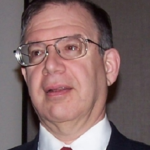 The current national controversy over the need for a mandatory high minimum wage is but a symptom of a much larger underlying problem; the offshoring of American manufacturing capability. Offshoring ruined Spain and Portugal in the 16th century, and it is similarly a clear and present danger not only to the American worker’s standard of living but also to the national security of the United States. The good news is however that the quality and manufacturing professions are positioned ideally to help the United States reshore its manufacturing capability, and with simple principles that predate the quality profession and industrial statistics. The benefits of reshoring include: Continue reading
The current national controversy over the need for a mandatory high minimum wage is but a symptom of a much larger underlying problem; the offshoring of American manufacturing capability. Offshoring ruined Spain and Portugal in the 16th century, and it is similarly a clear and present danger not only to the American worker’s standard of living but also to the national security of the United States. The good news is however that the quality and manufacturing professions are positioned ideally to help the United States reshore its manufacturing capability, and with simple principles that predate the quality profession and industrial statistics. The benefits of reshoring include: Continue reading
#338 – OPINIONS: TRUTH, RUMOUR OR BELIEF – MALCOLM PEART
Featured
 Humble, personal, professional, expert or even uninformed; opinions are just opinions when the facts aren’t fully known or understood. Opinionators are merely stating their belief as to the what, why, when, where and the how something has happened and who was responsible, who is culpable and who has to do something. This belief is believed, at least by them, and, for the most part, they expect other people to believe it as well. Continue reading
Humble, personal, professional, expert or even uninformed; opinions are just opinions when the facts aren’t fully known or understood. Opinionators are merely stating their belief as to the what, why, when, where and the how something has happened and who was responsible, who is culpable and who has to do something. This belief is believed, at least by them, and, for the most part, they expect other people to believe it as well. Continue reading
#338 – EARNED VALUE MANAGEMENT REDUCES PROJECT RISK – JOHN AYERS
Featured
 How does Earn Value Management (EVM) reduce project risk? To answer this question, you have to understand what EVM is.
How does Earn Value Management (EVM) reduce project risk? To answer this question, you have to understand what EVM is.
WHAT IS EVM?
EVM is the tool used to measure progress against the PMB. (Performance Measurement Plan). EVM identifies poorly performing WP (Work Packages) and problem trends early in the project allowing maximum time to identify the root cause of the problem and identify an action plan to fix the problem. Continue reading
#338 – CAN WE REVERSE THE LOSS OF STRENGTH AS WE AGE? – ALLEN TAYLOR
Featured
 If you have lived long enough, you have seen first your grandparents, and then your parents become weaker, slower, and less capable as they grow older. Why does this happen? There are several competing theories that try to explain the root cause of this phenomenon, which seems universal and unavoidable. There is no consensus on which, if any, of these theories are correct. However, there are some things that we do know. Continue reading
If you have lived long enough, you have seen first your grandparents, and then your parents become weaker, slower, and less capable as they grow older. Why does this happen? There are several competing theories that try to explain the root cause of this phenomenon, which seems universal and unavoidable. There is no consensus on which, if any, of these theories are correct. However, there are some things that we do know. Continue reading
#337 – WHY YOU NEED MULTI-DISCIPLINARY INTEGRATED RISK MANAGEMENT – HOWARD WIENER
Featured
 This article is excerpted from my upcoming book Agile Enterprise Risk Management: Risk-Based Thinking, Multi-Disciplinary Management and Digital Transformation. The book provides a framework for evolving your Risk Management function to make it operate in a nearly-continuous fashion, which will allow it to keep pace with the rate of change required to remain competitive today. Continue reading
This article is excerpted from my upcoming book Agile Enterprise Risk Management: Risk-Based Thinking, Multi-Disciplinary Management and Digital Transformation. The book provides a framework for evolving your Risk Management function to make it operate in a nearly-continuous fashion, which will allow it to keep pace with the rate of change required to remain competitive today. Continue reading
#337 – COMCOVER CHANGES ITS ERM BENCHMARKING PROJECT – JAMES KLINE PH.D.
Featured
 In my last piece, CERM Risk Insights #324, I mentioned briefly the Comcover maturity model. Comcover is the self-insurance arm of the Australian Commonwealth. It has annually conducted a self-assessment Enterprise Risk Management (ERM) survey of Commonwealth agencies. The purpose of the survey is to determine the level of ERM’s penetration. The basis for the determination is a risk maturity model. The model is incorporated into the survey questions. Continue reading
In my last piece, CERM Risk Insights #324, I mentioned briefly the Comcover maturity model. Comcover is the self-insurance arm of the Australian Commonwealth. It has annually conducted a self-assessment Enterprise Risk Management (ERM) survey of Commonwealth agencies. The purpose of the survey is to determine the level of ERM’s penetration. The basis for the determination is a risk maturity model. The model is incorporated into the survey questions. Continue reading
#327 – HOW TO CREATE AN EFFECTIVE WORK BREAKDOWN STRUCTURE – JOHN AYERS
Featured
 There are numerous papers and documents on the internet regarding a Work Breakdown Structure (WBS). The question is how do you create one for a new project. This paper explains how.
There are numerous papers and documents on the internet regarding a Work Breakdown Structure (WBS). The question is how do you create one for a new project. This paper explains how.
PLANNING
Initial project planning is accomplished during the proposal phase. The request for proposal (RFP), statement of work (SOW), specification, terms and conditions and other information and instructions are the starting point for planning. The WBS is the central document for planning. It breaks down the scope of work into manageable WBS elements. Continue reading
#327 – STRATIFICATION: A BASIC QUALITY TOOL – FRED SCHENKELBERG
Featured
 Stratification implies layers or differences. A quick test for soil composition is to place a sample of soil with water in a clear jar and give it a shake. The sand, silt and loam will settle at different rates and create a layered appearance within the jar over time. The height of each layer provides information about the proportion of each type of soil within the sample.
Stratification implies layers or differences. A quick test for soil composition is to place a sample of soil with water in a clear jar and give it a shake. The sand, silt and loam will settle at different rates and create a layered appearance within the jar over time. The height of each layer provides information about the proportion of each type of soil within the sample.
Stratification as one of the seven basic quality tools (some lists use a run chart or flowchart instead) the idea of layers or differences still applies. The idea is to identify potentially meaning differences within a sample set. Continue reading
#327 – WANT TO LIVE LONG AND PROSPER? – ALLEN TAYLOR
Featured
 For Star Trek Vulcans, the polite way to say good-bye is to say, “Live long and prosper.” For a Vulcan landing on Earth today, the possibility of that wish coming true depends a lot on what country the Vulcan visitor lands in. It would be more of a stretch if the spacefarers had landed in the United States, than if they had landed in any of sixteen other high income countries. The June 2021 issue of the British Medical Journal (The BMJ), contains an article that directly relates to long life. Its title is “Effect of the covid-19 pandemic in 2020 on life expectancy across populations in the USA and other high income countries: simulations of provisional mortality data.” Continue reading
For Star Trek Vulcans, the polite way to say good-bye is to say, “Live long and prosper.” For a Vulcan landing on Earth today, the possibility of that wish coming true depends a lot on what country the Vulcan visitor lands in. It would be more of a stretch if the spacefarers had landed in the United States, than if they had landed in any of sixteen other high income countries. The June 2021 issue of the British Medical Journal (The BMJ), contains an article that directly relates to long life. Its title is “Effect of the covid-19 pandemic in 2020 on life expectancy across populations in the USA and other high income countries: simulations of provisional mortality data.” Continue reading
#326 – HOW TO SELECT THE IDEAL PROJECT TEAM – JOHN AYERS
Featured
 I have some experience with the Enneagram personality method. I found it to be accurate and useful. I suggest it is a good method to consider using to select your project team. The paper starts with a brief description of the Enneagram basics and then explains tips that can be used to select your team. Two figures are included to help explain the basics. You can go online and get a lot more detail information about the Enneagram method. Continue reading
I have some experience with the Enneagram personality method. I found it to be accurate and useful. I suggest it is a good method to consider using to select your project team. The paper starts with a brief description of the Enneagram basics and then explains tips that can be used to select your team. Two figures are included to help explain the basics. You can go online and get a lot more detail information about the Enneagram method. Continue reading
#326 – PERSONAL AND BUSINESS RISK IN TODAY’S ENVIRONMENT- JIM TONEY
Featured
 Was the COVID-19 pandemic a harbinger of an increase in scope and seriousness of perceived and real threats to individuals and businesses?(1) What should one consider about threats to assess their likelihood of occurring and consequences to gauge the level of risk for a person or business?
Was the COVID-19 pandemic a harbinger of an increase in scope and seriousness of perceived and real threats to individuals and businesses?(1) What should one consider about threats to assess their likelihood of occurring and consequences to gauge the level of risk for a person or business?
It is better by noble boldness to run the risk of being subject to half the evils we anticipate than to remain in cowardly listlessness for fear of what might happen. – Herodotus (2) Continue reading
#326 – WHY YOU NEED MULTI-DISCIPLINARY, INTEGRATED MANAGEMENT – HOWARD WIENER
Featured
 This article is excerpted from my upcoming book Agile Enterprise Risk Management: Risk-Based Thinking, Multi-Disciplinary Management and Digital Transformation. The book provides a framework for evolving your Risk Management function to make it operate in a nearly-continuous fashion, which will allow it to keep pace with the rate of change required to remain competitive today.
This article is excerpted from my upcoming book Agile Enterprise Risk Management: Risk-Based Thinking, Multi-Disciplinary Management and Digital Transformation. The book provides a framework for evolving your Risk Management function to make it operate in a nearly-continuous fashion, which will allow it to keep pace with the rate of change required to remain competitive today.
We are advocating for your transformation to a more agile organization. In all likelihood, you’ve already begun—created internal collaboration capabilities and customer-facing, web-enabled services. But you probably have a long, long way to go before you have reached an optimal level of business agility. Continue reading
#326 – BEING SET UP FOR FAILURE – JOSEPH PARIS
Featured
 Employers don’t hire people – or assign them a project or task – in the hopes they will fail. And employees don’t take on a job, project, or task in the hopes they will fail. On the contraire, the expectations all around are that the outcome will be successful.
Employers don’t hire people – or assign them a project or task – in the hopes they will fail. And employees don’t take on a job, project, or task in the hopes they will fail. On the contraire, the expectations all around are that the outcome will be successful.
Certainly, sometimes the outcomes are not successful. But these unsuccessful outcomes are generally more tolerated – even expected – in companies that are in their early stages or have a company culture that is more entrepreneurial and not so risk adverse. And when an unsuccessful outcome in such companies occurs, it’s usually a disappointment (and you certainly don’t want to make being unsuccessful a habit), but it’s not usually a negative mark on the employee. Continue reading
#326 – DOES VACCINATION WORK AGAINST VARIANTS? – ALLEN TAYLOR
Featured
 We are in a fight with a formidable enemy, the SARS-Cov-2 virus. Our primary weapon in this war is vaccination, but the enemy has a strong defense against it. As a result, we must prosecute the war with overwhelming force. Anything less will result in millions more deaths, to add to the millions who have already died.
We are in a fight with a formidable enemy, the SARS-Cov-2 virus. Our primary weapon in this war is vaccination, but the enemy has a strong defense against it. As a result, we must prosecute the war with overwhelming force. Anything less will result in millions more deaths, to add to the millions who have already died.
What do I mean when I say that the enemy has a strong defense against vaccination? What is vaccination anyway? Continue reading
#325 – WHAT IS RISK MANAGEMENT? – ANDREW SHEVES
Featured
 Asking ‘what is risk management?’ often gets you the trite answer ‘it’s the management of risk’ or we get a list of activities associated with risk management. Neither result is satisfying and we need a better definition that explains the intent of risk management along with some clarification of what this is and is not. Here, I’ve presented some initial ideas on a definition along with four components that should give us a more thorough definition. Continue reading
Asking ‘what is risk management?’ often gets you the trite answer ‘it’s the management of risk’ or we get a list of activities associated with risk management. Neither result is satisfying and we need a better definition that explains the intent of risk management along with some clarification of what this is and is not. Here, I’ve presented some initial ideas on a definition along with four components that should give us a more thorough definition. Continue reading
#325 – BEST WAY TO MONITOR RISK MITIGATION PLANS – JOHN AYERS
Featured
 Based on over 30 years’ experience with project risk management, the best way I found to monitor risk mitigation plans is to incorporate them into the Integrated Master Schedule (IMS). The reason is each month (or week) when the IMS is reviewed the risk mitigation plan is also reviewed. Since the IMS is linked, a slip in a mitigation plan step can readily be seen as well as the potential impact it may have on the project. Continue reading
Based on over 30 years’ experience with project risk management, the best way I found to monitor risk mitigation plans is to incorporate them into the Integrated Master Schedule (IMS). The reason is each month (or week) when the IMS is reviewed the risk mitigation plan is also reviewed. Since the IMS is linked, a slip in a mitigation plan step can readily be seen as well as the potential impact it may have on the project. Continue reading
#325 – LESSONS LEARNED VIA GOLDEN NUGGETS – FRED SCHENKELBERG
Featured
 One of the enjoyable parts of reliability engineering work is the consistent need to learn. We learn how new materials, designs, applications, and systems work, and fail. Sometimes we learn through proactive characterization studies, sometimes via unwanted field failures.
One of the enjoyable parts of reliability engineering work is the consistent need to learn. We learn how new materials, designs, applications, and systems work, and fail. Sometimes we learn through proactive characterization studies, sometimes via unwanted field failures.
Failures will occur, it is what we learn from them that matters. The ability to gather and remember the lessons learned is a common and ongoing need for every organization. We are not very good at it, in general. Continue reading
#325 – SYSTEM ENGINEERS RULE ROBOTIC DESIGN – JOHN AYERS
Featured
 Robots are developed to address a problem. For example, automating a production line. To achieve this goal, a multidiscipline engineering team is required.
Robots are developed to address a problem. For example, automating a production line. To achieve this goal, a multidiscipline engineering team is required.
The question is which engineering discipline should I study? I suggest you get a degree in System Engineering. This paper will explain why
MULTIDISCIPLINE FIELDS
Let’s take a look at the key engineering disciplines that are involved in robotic design. They are:
- System engineering
- Computer science
- Electrical engineering
- Mechanical engineering
- Artificial Intelligence engineering
- Reliability engineering
- Industrial engineering
- Ergonomics
#325 – WHICH STATES HAVE CONTAINED COVID THE BEST? – ALLEN TAYLOR
Featured
 The short answer is just about everywhere. A survey of death records from the early part of the pandemic, from March 1 to August 1 of 2020 analyzed the death rate in the states and compared that with what could be expected, based on prior year death data. Prior to the pandemic, such analyses were highly accurate, which led to a high degree of confidence that any excess deaths during Covid time would largely be due either to Covid-19 itself, or due to other causes of death that were amplified by the stress on the medical system due to Covid-19, as well as people’s reluctance to expose themselves to Covid by seeking help for other ailments, thus resulting in fatalities. Continue reading
The short answer is just about everywhere. A survey of death records from the early part of the pandemic, from March 1 to August 1 of 2020 analyzed the death rate in the states and compared that with what could be expected, based on prior year death data. Prior to the pandemic, such analyses were highly accurate, which led to a high degree of confidence that any excess deaths during Covid time would largely be due either to Covid-19 itself, or due to other causes of death that were amplified by the stress on the medical system due to Covid-19, as well as people’s reluctance to expose themselves to Covid by seeking help for other ailments, thus resulting in fatalities. Continue reading
#324 – SUPPLY CHAIN RISK MANAGEMENT – GREG HUTCHINS PE CERM
Featured
 Almost daily, we hear of some problem in the supply chain. A few weeks ago, a container ship got stuck in the Suez Canal and hundreds of ships were backed up with no place to go. As well, original equipment manufacturers in Europe missed critical parts because of their Just in Time delivery practices. Continue reading
Almost daily, we hear of some problem in the supply chain. A few weeks ago, a container ship got stuck in the Suez Canal and hundreds of ships were backed up with no place to go. As well, original equipment manufacturers in Europe missed critical parts because of their Just in Time delivery practices. Continue reading
#324 – IMPROVING RELIABILITY WITH GOOD JUDGMENT – FRED SCHENKELBERG
Featured
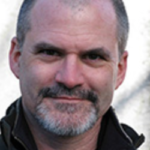 At an early concept meeting discussing the technical strategy for the new product, the engineering teams were at an impasse. The decision matrix balanced out with three distinct options. Product reliability differed slightly with each option yet presented risks just as the considerations of cost, complexity, feature set, and time to market.
At an early concept meeting discussing the technical strategy for the new product, the engineering teams were at an impasse. The decision matrix balanced out with three distinct options. Product reliability differed slightly with each option yet presented risks just as the considerations of cost, complexity, feature set, and time to market.
The project manager, the leader of the development program, asked a few questions, asked for input from the director of engineering, and selected a path forward. Continue reading
#324 – OECD RISK MANAGEMENT MATURITY MODEL – JAMES KLINE PH.D.
Featured
 In February 2021, the Organization for Economic Cooperation and Development (OECD) published an Enterprise Risk Management Maturity Model. This model is designed for Tax Administration Agencies. It is the culmination of work that began in 2018. This work was designed to develop stand-alone maturity models for a broad range of organizational activities. One of which was Enterprise Risk Management. This piece examines this model and discusses how such models are being used by government elsewhere. Continue reading
In February 2021, the Organization for Economic Cooperation and Development (OECD) published an Enterprise Risk Management Maturity Model. This model is designed for Tax Administration Agencies. It is the culmination of work that began in 2018. This work was designed to develop stand-alone maturity models for a broad range of organizational activities. One of which was Enterprise Risk Management. This piece examines this model and discusses how such models are being used by government elsewhere. Continue reading
#324 – 12 COMPETENCIES FOR FUTURE SUCCESS AND ADVANTAGE – DANIEL BURRUS
Featured
 Even as I write this article, jobs in industries ranging from entertainment and media to manufacturing and medicine are being transformed by artificial intelligence (AI) and its many iterations. Many people don’t even know they are already in a competition with AI and that several facets of their job are already being accomplished by a digital application or intelligent machine. Workers will not be able to outpace these machines simply by working longer hours or moving faster on the assembly line. Continue reading
Even as I write this article, jobs in industries ranging from entertainment and media to manufacturing and medicine are being transformed by artificial intelligence (AI) and its many iterations. Many people don’t even know they are already in a competition with AI and that several facets of their job are already being accomplished by a digital application or intelligent machine. Workers will not be able to outpace these machines simply by working longer hours or moving faster on the assembly line. Continue reading
#324 – WHY WE FALL APART AS WE AGE? – ALLEN TAYLOR
Featured
 After a peak of health and vitality in early adulthood, humans start a long steady decline, both physically and cognitively. This decline can be accelerated by degenerative diseases such as Parkinson’s Disease, or Alzheimer’s Disease, but people have been unable to decelerate that decline. Experiments with a variety of animals have shown that enforcing a strict regimen of calorie restriction can extend healthy life beyond what is normal for a given species. Taking note of this, some people have adopted a calorie-restricted lifestyle in an effort to extend their lifespan. Continue reading
After a peak of health and vitality in early adulthood, humans start a long steady decline, both physically and cognitively. This decline can be accelerated by degenerative diseases such as Parkinson’s Disease, or Alzheimer’s Disease, but people have been unable to decelerate that decline. Experiments with a variety of animals have shown that enforcing a strict regimen of calorie restriction can extend healthy life beyond what is normal for a given species. Taking note of this, some people have adopted a calorie-restricted lifestyle in an effort to extend their lifespan. Continue reading
#323 – WHY BECOME A PROJECT MANAGER? – JOHN AYERS
Featured
 Project Management is a fundamental function across all industries and organizations. With the rise of globalization and digitization, there is an increasing demand for skilled Project Management professionals to manage and lead projects on budget and on time.
Project Management is a fundamental function across all industries and organizations. With the rise of globalization and digitization, there is an increasing demand for skilled Project Management professionals to manage and lead projects on budget and on time.
According to Glassdoor, the national average for an entry-level Project Manager salary is $59,680. The average Project Management professional without a PMP certification made $100,247 per year according to a 2019 survey of almost 9,000 Project Managers by PMI. Continue reading
#323 – PARETO MANAGEMENT: A FORCE TO BE RECKONED WITH? – MALCOLM PEART
Featured
 The Pareto Principle, or more commonly the “80/20 rule”, is based upon the observation that 80% of the consequences of something are attributable to 20% of the causes. The quality guru Joseph Moses Juran named the Principle in 1941 after the Italian economist who, in 1896, observed that 80% of the land in Italy was owned by 20% of the population. The centenarian also similarly observed that 80% of quality problems result from 20% of the causes. In the business world we also see that 80% of a company’s revenue is generated by only 20% of its customers. As with life, things are not distributed either evenly or even fairly. Continue reading
The Pareto Principle, or more commonly the “80/20 rule”, is based upon the observation that 80% of the consequences of something are attributable to 20% of the causes. The quality guru Joseph Moses Juran named the Principle in 1941 after the Italian economist who, in 1896, observed that 80% of the land in Italy was owned by 20% of the population. The centenarian also similarly observed that 80% of quality problems result from 20% of the causes. In the business world we also see that 80% of a company’s revenue is generated by only 20% of its customers. As with life, things are not distributed either evenly or even fairly. Continue reading
#323 – WILL I GET BACK TO NORMAL AFTER I RECOVER FROM COVID 19? – ALLEN TAYLOR
Featured
T he answer to that is a definite “maybe.” Many people are able to clear a SARS-Cov-2 infection after two to four weeks. Some, of course, never clear the infection, and become part of the Covid-19 mortality statistics. Of the survivors, after they clear the infection, are there any lingering effects that could pose problems? For many, the answer is “yes.” Continue reading
he answer to that is a definite “maybe.” Many people are able to clear a SARS-Cov-2 infection after two to four weeks. Some, of course, never clear the infection, and become part of the Covid-19 mortality statistics. Of the survivors, after they clear the infection, are there any lingering effects that could pose problems? For many, the answer is “yes.” Continue reading
#323 – HOW TO SUPERCHARGE GOAL AND HABIT DEVELOPMENT – STEVE VILLAESCUSA
Featured
 Reaching goals and developing new habits may sound daunting. Nevertheless, recent advances in neuroscience, positive physcology and mindfulness offer terrific support, insights and new practices.
Reaching goals and developing new habits may sound daunting. Nevertheless, recent advances in neuroscience, positive physcology and mindfulness offer terrific support, insights and new practices.
Studies suggest only 8% of Americans who make resolutions actually keep them, and 80% fail by February 1st. As a life-long exerciser, I witness this phenomena every January at the gym. Continue reading
#322 – HOW TO GET A PROJECT MANAGER JOB? – JOHN AYERS
Featured
 The future of work is changing due to COVID-19 and impending new technologies. To mitigate the future of work risk, high school and college students should consider careers as a Project Manager. Workers who are currently in jobs that are in jeopardy should contemplate upskilling to become a Project Manager. The question becomes How Do I Get A Project Manager Job? Continue reading
The future of work is changing due to COVID-19 and impending new technologies. To mitigate the future of work risk, high school and college students should consider careers as a Project Manager. Workers who are currently in jobs that are in jeopardy should contemplate upskilling to become a Project Manager. The question becomes How Do I Get A Project Manager Job? Continue reading
#322 – FUTURE OF PROFESSION – RELIABILITY ENGINEERING – FRED SCHENKELBERG
Featured
 Fred Schenkelberg is a reliability engineer who has worked in the field for over twenty years. He is a West Point graduate. He majored in Physics. He holds a Masters in Statistics from Stanford University. He began his career in reliability engineering at Raychem Corporation. He moved to Hewlett Packard (HP). At HP he helped create the Corporate Reliability Program. In 2004 he founded FMS Reliability. FMS Reliability is a management and reliability engineering consulting firm. He is the founder of the reliability engineering professional development site Accendo Reliability. Continue reading
Fred Schenkelberg is a reliability engineer who has worked in the field for over twenty years. He is a West Point graduate. He majored in Physics. He holds a Masters in Statistics from Stanford University. He began his career in reliability engineering at Raychem Corporation. He moved to Hewlett Packard (HP). At HP he helped create the Corporate Reliability Program. In 2004 he founded FMS Reliability. FMS Reliability is a management and reliability engineering consulting firm. He is the founder of the reliability engineering professional development site Accendo Reliability. Continue reading
#323 – BEST PRACTICES TO DEALING WITH FIELD FAILURES – FRED SCHENKELBERG
Featured
 A common practice I’ve seen in organizations is to deal with field failures when they occur. This may occur when the mistaken assumption that no failure will occur due to ‘such an excellent design.”
A common practice I’ve seen in organizations is to deal with field failures when they occur. This may occur when the mistaken assumption that no failure will occur due to ‘such an excellent design.”
Ben Franklin may not have been thinking about future product failures, yet his quote:
By failing to prepare you are preparing to fail.
implies we need to prepare ourselves and our organization to deal with field failures. Having clear processes to deal with field failures is a best practice. Continue reading
#322 – RED FLAGS? THEY ARE ALL RED FLAGS – MALCOLM PEART
Featured
 “That’s a Red Flag!” goes the cry from some when something amiss is recognised. However, many project participants don’t realise that their Project sails through a sea of flags and that, on some occasion, the flags can be read as red by somebody at some time.
“That’s a Red Flag!” goes the cry from some when something amiss is recognised. However, many project participants don’t realise that their Project sails through a sea of flags and that, on some occasion, the flags can be read as red by somebody at some time.
In a similar nautical vein the Roman writer Ovid once poetized “The man who has experienced shipwreck shudders even at a calm sea“. While written some 2,000 years ago it is as true today as it ever was and a reminder to us all that risks lurk everywhere. Some risks may not be identified, let alone assessed and may go unnoticed until they strike. We need to be aware and vigilant and avoid a complacent belief that a risk register is the be all and end all. Continue reading
#322 – DIGITAL CURRENCY VERSUS BITCOIN AND THE FUTURE OF MONEY – DANIEL BURRUS
Featured
 If money, and the future of money, is important to you, and I hope it is, you need to read this article. There is a misconception occurring surrounding the concepts of digital currency. Understanding what digital currency actually is, how it can be used and potentially misused, and, most important, how it is drastically different from the likes of Bitcoin and cryptocurrency, is paramount in shaping the future of global and local financial systems. Continue reading
If money, and the future of money, is important to you, and I hope it is, you need to read this article. There is a misconception occurring surrounding the concepts of digital currency. Understanding what digital currency actually is, how it can be used and potentially misused, and, most important, how it is drastically different from the likes of Bitcoin and cryptocurrency, is paramount in shaping the future of global and local financial systems. Continue reading
#322 – WHY DOES COVID 19 HIT OLDER PEOPLE SO HARD? – ALLEN TAYLOR
Featured
 We have seen how the lethality of Covid-19 rises exponentially with age. It is such that if a person over 80 years old catches the disease, the odds of survival are not good.
We have seen how the lethality of Covid-19 rises exponentially with age. It is such that if a person over 80 years old catches the disease, the odds of survival are not good.
There is a reason why older people are much more likely to die of Covid-19 than are their children and grandchildren. From about the age of puberty onward, the human immune system declines in its ability to protect us from a host of threats, including Covid-19. One of the prime drivers of this decline is a condition called thymic involution, which is the decline in size and function of the thymus gland. Continue reading
#321 – SO WHAT, WHY OUR ENVIRONMENTAL HANDPRINTS ARE IMPORTANT – JON BIEMER
Featured
 Thank you for this opportunity to share some insights from my book, Our Environmental Handprints: Recover the Land, Reverse Global Warming, Reclaim the Future.
Thank you for this opportunity to share some insights from my book, Our Environmental Handprints: Recover the Land, Reverse Global Warming, Reclaim the Future.
What is the Environmental Handprint and why should I care about it?
The Handprint is deceptively simple. If you do good, you have created a Handprint. If you do good for the environment, like planting a tree or shifting to paperless bill paying, you create an Environmental Handprint. Continue reading
#321 – FUTURE OF WORK – QUALITY – JAMES KLINE PH.D.
Featured
James J. Kline, Ph.D., CERM, is the author of over one seventy articles on quality in government and risk analysis. He is a senior member of the American Society for Quality. A Manager of Quality/Organizational Excellence and a Six Sigma Green Belt. He has consulted for the private sector and local governments. His book, Enterprise Risk Management in Government: Implementing ISO 31000:2018, is available on Amazon.
- What do you see as the current challenges to the Quality Profession?
My wheelhouse is government. Thus, I will reinforce my observations by referencing several quality professionals who have far more experience with the private sector than I. The quality profession faces at least three substantive challenges. These are technological innovation, geopolitical dynamics, and the International Organization for Standards’ (ISO) shift toward risk.
Technological Innovation
There is general recognition that technology has an important impact on all professions. ASQ, the dominant professional quality organization, stresses the relationship between Industry 4.0 and what they call Quality 4.0.
Industry 4.0 is the idea that the technological development will link the Internet of Things, Artificial Intelligence and Robotics to improve industrial processes and output. Quality 4.0 is its quality corollary. It is touted as the way ahead for the quality profession.
Ian Dalling of the United Kingdom (CERM Risk Insights #299) notes that innovation is not a linear process. In fact, any examination of general-purpose technology will see fits and starts. General-purpose technology is technology which can be used across multiple industrial sectors. For instance, steam power was used in transportation and manufacturing. The problem is that the adoption of steam power was not uniform or at the same time in any economic sector. The same can be said for computer chips and networks. Consequently, the rate of new technological adoption will vary among economic sectors. This is important because the rate of adoption and the type of technology adopted will impact quality professionals in different ways and at different times.
This fact is a little different from the idea of ASQ’s Quality 4.0. ASQ promotes Quality 4.0 as the linear road map. However, given the uneven adoption and application of technology it is difficult to see how useful Quality 4.0 will be as a guide for professional development. Ian Dalling believes Quality 4.0 “is an ill-conceived notion.”
The uneven application of technology between sectors, means quality management activities will remain industry specific. This uneven application of technology will be further impacted by geopolitical dynamics.
Geopolitical Dynamics
Geopolitical Dynamics are like the dice on the monopoly board. It indicates the moves a player will make. The players are the business executives who decide what plants will be opened or closed and where. Over the past thirty years plants in the United States were close and reopened overseas. This was fundamentally a wage arbitrage play.
The importance of wage arbitrage can be seen in an example from the book “How We Compete” by Suzann Berger. The chief engineer of a lights out Japanese yarn manufacturing plant was worried that the plant would be closed and moved to China. The plant was a fully automated plant with just five technicians. The labor cost of such a plant is miniscule compared to the capital costs. Thus, a move to China will only save a small amount. But that small amount is important to decision makers.
A counter to the labor arbitrage motivation is government action. The Trump administration used tax policy and government jaw boning to encourage companies not to close plants but bring manufacturing back. The Biden administration’s policies are unclear. However, reports indicate that corporate taxes will be raised. If true, that will leave less money for investment in plant and equipment. It is also not clear that the Biden administration will jawbone companies to keep plants in the United States. Ford, for instance, has announced that it will be moving a plant in Ohio to Mexico. So far, the Biden administration has not publicly discouraged the move.
Even if more manufacturing comes back to the United States or as plants are constructed elsewhere, the impact of Industry 4.0 will be felt. This is because firms will continue to seek to reduce labor costs by more fully integrating computer networks with robotics and artificial intelligence. Product will no longer be sampled. Instead, they will be one hundred percent scanned. Any defective part will be automatically removed by a robotic arm. Quality experts will be replaced by computer programmers. This does not mean that quality management will be eliminated. It means the level of statistical sophistication (Black Belt level) will not be needed on a regular basis. The result is that the number of quality management position worldwide will likely continue to decrease.
Much of the above has focused on the private sector. The public sector has a split when it comes to quality management. That split is by level of government as well as geography. In Canada and the United States, quality management at the local government level is well entrenched (1). In other Commonwealth Countries, quality management at the local level has a meniscal footprint. At the province, state, and national levels the footprint is likewise small.
Generally, what has happened since 2000, is local government have moved away from quality management and to risk management. Enterprise Risk Management is a requirement of local government in New South Wales Australia and South Africa. Risk reporting is a local government requirement in the United Kingdom.
This shift is important because it coincides with a similar shift in the private sector. That shift is being driven in part by the International Organization for Standardization (ISO).
International Organization for Standardization
ISO is the international organization which provides standards for certifications like quality management worldwide. In 2015, ISO added risk management to ISO 9001 its quality management standard. Milt Dentch in his book “Risk and Impending Demise of ISO 9001” (CERM Insight 3292), discusses the problems with ISO 9001. It discusses the impact of this change to ISO 9001.
For several years, the trend for ISO 9001 certifications has been downward. The drop-off has been substantive and probably correlates with the decline in manufacturing plants. However, some feel the decline can be attributed to two other reasons. One is ISO 9001 certifications are no long worth the cost. The second is the inclusion of risk management.
It is being report that the ISO 9001 update will expand risk management. If this is true, then it will likely have several impacts. The first is to reinforce the idea that ISO 9001 is no longer worth the cost. By expanding the risk management aspect, the quality management focus is diluted. A diluted focus raises the question as to whether the certification is worth the cost. The second will be to lessen the quality professions influence within the organization.
The more ISO 9001 emphasizes risk management the more the quality management system starts competing with an enterprise-wide approach to risk management. Enterprise Risk Management (ERM) is being promoted by the accounting, auditing, and financial professions. (2,3) These professions see quality management as just one of multiple risks an organization faces. When quality management is viewed as just one of numerous risks, the influence of the quality professional is reduced.
Summary
The quality profession has been experiencing disruption caused by offshoring for more than a decade. The impact of this disruption is being felt in several ways. First, technology associated with Industry 4.0 is be applied to manufacturing plants worldwide. While the impact is not uniform, it is significant enough to create a downward trend in quality management jobs. Second, this decline is being exacerbated by the decline in ISO 9001 certifications and the shift towards risk management. If this shift continues it will put the quality profession in direct competition with Accountants and Auditors. Such conflict could diminish the influence of quality managers.
Endnotes
- Kline, James J. Quality in Local Government: A reinvigoration, Quality Digest, September 8, 2020.
- Kline, James J. Competition for Risk Assessment Increases, Quality Digest, January
13,2021.
- Kline, James J., and Greg Hutchins, Auditors, Accountants and ERM, Journal of Government Financial Management, Winter 2019, pages 33-37.
#321 – CULTURE FOR DESIGN FOR RELIABILITY – FRED SCHENKELBERG
Featured
#321 – NOW IS NOT THE TIME TO LET DOWN OUR GUARD – ALLEN TAYLOR
Featured
 The vaccination program for Covid-19 is running ahead of schedule, and now, in most of the United States, anyone over the age of 15 can schedule an appointment to be vaccinated. This is certainly good news, but it does not mean that we are on the downslope of this fight. Mutations to the SARS-Cov-2 virus are spontaneously appearing whenever new people are infected. Most of these mutations don’t matter, but some definitely do, giving rise to new VOCs (variants of concern). Continue reading
The vaccination program for Covid-19 is running ahead of schedule, and now, in most of the United States, anyone over the age of 15 can schedule an appointment to be vaccinated. This is certainly good news, but it does not mean that we are on the downslope of this fight. Mutations to the SARS-Cov-2 virus are spontaneously appearing whenever new people are infected. Most of these mutations don’t matter, but some definitely do, giving rise to new VOCs (variants of concern). Continue reading
#321 – THE EVOLVING ESG REPORTING LANDSCAPE – RON KRAL CPA
Featured
 Whether you are a director or an executive already well into the journey of developing and communicating your company’s strategic sustainability plans or in the earlier stages, the rising public demand for environmental, social and governance (ESG) reporting is becoming a force that cannot be ignored by boards and management teams. Continue reading
Whether you are a director or an executive already well into the journey of developing and communicating your company’s strategic sustainability plans or in the earlier stages, the rising public demand for environmental, social and governance (ESG) reporting is becoming a force that cannot be ignored by boards and management teams. Continue reading
#320 – EMAIL @50 YEARS – BLESSING OR RISK – MALCOLM PEART
Featured
 Email is 50 this year…its Golden Anniversary! It ‘happened’ in 1971 when Ray Tomlinson, the late computer engineer and first user, sent a transmission to himself utilising two independent computers…a revolutionary innovation at the time. The content of that primordial message is long forgotten and the same may also be the fate of many of the ~300 billion emails that are sent almost every day by the estimated 4 billion users around the world. Communication is said to bring us together or set us apart and email is no different. Continue reading
Email is 50 this year…its Golden Anniversary! It ‘happened’ in 1971 when Ray Tomlinson, the late computer engineer and first user, sent a transmission to himself utilising two independent computers…a revolutionary innovation at the time. The content of that primordial message is long forgotten and the same may also be the fate of many of the ~300 billion emails that are sent almost every day by the estimated 4 billion users around the world. Communication is said to bring us together or set us apart and email is no different. Continue reading
#320 – TOO BIG TO FAIL: SUEZ CANAL RISKS – GEARY SIKICH
Featured
 The Ever Given grounding in the Suez Canal is one of those events that will be labeled a “Black Swan” for sure. A rouge wind hits the ship turning the stern and wedging the vessel, bow and stern grounded straddling the canal and stranding ships entering from either end. The date Tuesday 23 March 2021. At around 7.40 a.m. local time the Ever Given ran aground. At nearly 200 feet wide and 1,300 feet long, it easily took up the width of the channel. Continue reading
The Ever Given grounding in the Suez Canal is one of those events that will be labeled a “Black Swan” for sure. A rouge wind hits the ship turning the stern and wedging the vessel, bow and stern grounded straddling the canal and stranding ships entering from either end. The date Tuesday 23 March 2021. At around 7.40 a.m. local time the Ever Given ran aground. At nearly 200 feet wide and 1,300 feet long, it easily took up the width of the channel. Continue reading
#320 – “NOT YET DEAD OR INJURED WORKER” – BILL POMFRET PH.D.
Featured
 A new client in the Middle East had an appalling record of injuries, on reviewing accident reports, I found the management totally abdicated their responsibility, they did not find one underlying course of more than 40 accidents, and instead they blamed the workers, so I drafted the following letter for the meeting I had planned, Gentlemen, I thought I’d start by offering an apology to your not yet fatally injured workers who are going to die this year unless we do something differently. Continue reading
A new client in the Middle East had an appalling record of injuries, on reviewing accident reports, I found the management totally abdicated their responsibility, they did not find one underlying course of more than 40 accidents, and instead they blamed the workers, so I drafted the following letter for the meeting I had planned, Gentlemen, I thought I’d start by offering an apology to your not yet fatally injured workers who are going to die this year unless we do something differently. Continue reading
#320 – FUTURE OF WORK: QUALITY PROFESSION – JAMES KLINE PH.D. CERM
Featured
 James J. Kline, Ph.D., CERM, is the author of over one seventy articles on quality in government and risk analysis. He is a senior member of the American Society for Quality. A Manager of Quality/Organizational Excellence and a Six Sigma Green Belt. He has consulted for the private sector and local governments. His book, Enterprise Risk Management in Government: Implementing ISO 31000:2018, is available on Amazon. Continue reading
James J. Kline, Ph.D., CERM, is the author of over one seventy articles on quality in government and risk analysis. He is a senior member of the American Society for Quality. A Manager of Quality/Organizational Excellence and a Six Sigma Green Belt. He has consulted for the private sector and local governments. His book, Enterprise Risk Management in Government: Implementing ISO 31000:2018, is available on Amazon. Continue reading
#320 – AN EASY WAY TO REDUCE COVID RISK – ALLEN TAYLOR
Featured
 There are several things you can do, that will reduce your risk of contracting COVID-19. You could:
There are several things you can do, that will reduce your risk of contracting COVID-19. You could:
- Stay at home, alone, until the pandemic is over, having all your sterilized food and other sterilized necessary items brought to you by sterilized robots. This would be effective, but it is not super practical.
- Wear a mask and maintain social distancing, wherever you might encounter another person. This is more tolerable than option 1. However, it is annoying and is probably not something that people can keep doing for any length of time.
- Get vaccinated. You definitely want to do this as soon as you can, but it is not a 100% guarantee that you will not be infected.
#319 – WHY HOME IS NOT ALWAYS A SAFE HAVEN? – BILL POMFRET PH.D
Featured
 Since the Covid Pandemic there will be changes to the way people work, including working from home, few employers have developed policy and procedures for this new normal, and therefore leave themselves open to prosecution and Civil Liability. Continue reading
Since the Covid Pandemic there will be changes to the way people work, including working from home, few employers have developed policy and procedures for this new normal, and therefore leave themselves open to prosecution and Civil Liability. Continue reading
#319 – HOW ONE PERSON CAN CHANGE A RELIABILITY CULTURE – FRED SCHENKELBERG
Featured
 Nicholas W. Eyrich, Robert E. Quinn, and David P. Fessell published in the Harvard Business Review an article titled “How One Person Can Change the Conscience of an Organization”, dated December 27, 2019. In the article, they discuss how corporate transformations, while assumed to occur from the top-down, actually it is the middle managers and first-line supervisor that can make significant change happen. Continue reading
Nicholas W. Eyrich, Robert E. Quinn, and David P. Fessell published in the Harvard Business Review an article titled “How One Person Can Change the Conscience of an Organization”, dated December 27, 2019. In the article, they discuss how corporate transformations, while assumed to occur from the top-down, actually it is the middle managers and first-line supervisor that can make significant change happen. Continue reading
#319 – STRATEGY FOCUSED MANAGEMENT SYSTEM IMPROVES PERFORMANCE – PATRICK OW
Featured
 Organisations use different management systems to provide the required foundation to direct and control their activities to achieve their objectives.
Organisations use different management systems to provide the required foundation to direct and control their activities to achieve their objectives.
When the organisational structure is complex, the organisation needs to develop a robust, practical, yet simplified, integrated management system. This strategy-focused integrated management system will fully integrate all relevant management practices and common touchpoints of the business into one coherent and synchronised management system. In doing so, it enables and drives the achievement of its corporate strategy and improve or drives performance. Continue reading
#319 – PAUL GLADIEUX – FUTURE OF WORK: QUALITY – INTERVIEWED BY JAMES KLINE PH.D.
Featured
 Paul Gladieux has over 45 years of experience working in the quality profession. In 1991, he founded Global Quality Management Advisors (GQM Advisors). The group provides services focused on management system design, development, compliance, assessments, and certification in a wide range of sectors. Energy sector companies include: NuScale Power LLC, BWX Technologies, Westinghouse Nuclear AP1000 Program, Terra Power LLC, U.S. Department of Energy, and Alyeska Pipeline Service Company. Continue reading
Paul Gladieux has over 45 years of experience working in the quality profession. In 1991, he founded Global Quality Management Advisors (GQM Advisors). The group provides services focused on management system design, development, compliance, assessments, and certification in a wide range of sectors. Energy sector companies include: NuScale Power LLC, BWX Technologies, Westinghouse Nuclear AP1000 Program, Terra Power LLC, U.S. Department of Energy, and Alyeska Pipeline Service Company. Continue reading
#319 – WHAT GIVES THE BEST IMMUNITY TO COVID -19? – ALLEN TAYLOR
Featured
 There are two main ways to gain immunity to Covid-19. The first is to have had a previous Covid-19 infection. This is not recommended. If your first encounter with the SARS-Cov-2 virus kills you, your state of immunity becomes a moot point. Even if it doesn’t kill you, symptomatic Covid-19 is no picnic. Even an asymptomatic case is something to be avoided. Asymptomatic infected people can still infect the people around them, possibly with serious consequences. Continue reading
There are two main ways to gain immunity to Covid-19. The first is to have had a previous Covid-19 infection. This is not recommended. If your first encounter with the SARS-Cov-2 virus kills you, your state of immunity becomes a moot point. Even if it doesn’t kill you, symptomatic Covid-19 is no picnic. Even an asymptomatic case is something to be avoided. Asymptomatic infected people can still infect the people around them, possibly with serious consequences. Continue reading
#318 – PAUL GLADIEUX – FUTURE OF WORK – QUALITY – INTERVIEWED BY JAMES KLINE PH.D.
Featured
Paul Gladieux has over 45 years of experience working in the quality profession. In 1991, he founded Global Quality Management Advisors (GQM Advisors). The group provides quality-related services focused on management system design, development, compliance, and certification in a wide range of sectors. His clients in the energy sector include companies such as: NuScale Power LLC, BWX Technologies, Westinghouse Nuclear AP1000 Program, Terra Power LLC, Worley Energy | Chemicals, U.S. Department of Energy, Westinghouse Nuclear, Vigor Industrials LLC, and Alyeska Pipeline Service Company. Continue reading
#318 – ABOUT AGILE 2 – HOWARD WIENER
Featured
 Iterative software development approaches have been around since the 1950s but many mark the beginning of what is commonly thought of as Agile as the creation of the Agile Manifesto, a document written by a number of software engineers in 2001, which contains 12 principles that serve as guidelines to how software projects should be conducted. Since then, professional services and product organizations have taken Agile and bent and twisted it into proprietary commercial forms for their own gain. Continue reading
Iterative software development approaches have been around since the 1950s but many mark the beginning of what is commonly thought of as Agile as the creation of the Agile Manifesto, a document written by a number of software engineers in 2001, which contains 12 principles that serve as guidelines to how software projects should be conducted. Since then, professional services and product organizations have taken Agile and bent and twisted it into proprietary commercial forms for their own gain. Continue reading
#318 – WHAT THEY DON’T TELL YOU ABOUT COVID VACCINATIONS – ALLEN TAYLOR
Featured
F our weeks ago, I told you about my experience getting a Covid-19 vaccination. I had an adventure booking an appointment, and at getting to the Walgreen’s store where the injections were being given, but the injection itself was no big deal. There was a little soreness the next day at the spot where the jab was administered, but that was it. No other post-injection side effects. A couple of days ago, I received my second shot, and this time the experience has been different. Continue reading
our weeks ago, I told you about my experience getting a Covid-19 vaccination. I had an adventure booking an appointment, and at getting to the Walgreen’s store where the injections were being given, but the injection itself was no big deal. There was a little soreness the next day at the spot where the jab was administered, but that was it. No other post-injection side effects. A couple of days ago, I received my second shot, and this time the experience has been different. Continue reading
#318 – TEXAS BLACK SWAN EVENT – JOHN AYERS
Featured
 A black swan event has a very low probability of happening but if it does the consequences are devastating. The black swan event for Texas was the weather and the consequence was catastrophic to their power grid. Prior to the February 2021 snowstorm with freezing temperatures, you must go back to December 1929 to find the last historical Texas snowstorm. The storm lasted for 24 hours dropping 12 inches of snow with freezing temperatures. But they did not have natural gas, windmills and solar panels to worry about like today. Continue reading
A black swan event has a very low probability of happening but if it does the consequences are devastating. The black swan event for Texas was the weather and the consequence was catastrophic to their power grid. Prior to the February 2021 snowstorm with freezing temperatures, you must go back to December 1929 to find the last historical Texas snowstorm. The storm lasted for 24 hours dropping 12 inches of snow with freezing temperatures. But they did not have natural gas, windmills and solar panels to worry about like today. Continue reading
#318 – IS MAKING ASSUMPTION SIMILAR TO MAKING MISTAKES – FRED SCHENKELBERG
Featured
 Over the past week, I received a couple of interesting questions. One concerned assuming a Weibull beta value for an accelerated life test plan. The second involved assuming expected life models for elements within a reliability block diagram.
Over the past week, I received a couple of interesting questions. One concerned assuming a Weibull beta value for an accelerated life test plan. The second involved assuming expected life models for elements within a reliability block diagram.
In both cases, we faced incomplete data and uncertainties, yet felt the need to assume some values in order for the math to work out. We do make assumptions in order to solve problems. We also can make mistakes that lead to unwanted consequences. Continue reading
#318 – IF I STAY AWAY FROM SICK PEOPLE, I’M SAFE FROM COVID. RIGHT? ALLEN TAYLOR
Featured
Early in the Covid-19 pandemic, we didn’t know what we were up against. We suspected that touching a surface that had been touched by an infected person might transmit the disease to us. We thought that Covid-19 was like the flu. Things have turned out differently.
- Touching surfaces that an infected person has touched has not turned out to be a major mode of transmission.
- Covid-19 is like the flu in that both diseases are caused by viruses, but the similarity ends there.
#317 – PROFESSIONAL LEGAL LIABILITY FOR ENGINEERS AND SAFETY PROFESSIONALS – BILL POMFRET PH.D.
Featured
 There has been debate over the years regarding the liability of Safety Practitioners for the design, job site Inspection, safety and contract administration. When it is discussed, the magnitude of potential personal liability is frequently poorly understood. The reality is that a safety engineer can be personally & professionally liable through tort law theories even when practicing for an employer. Continue reading
There has been debate over the years regarding the liability of Safety Practitioners for the design, job site Inspection, safety and contract administration. When it is discussed, the magnitude of potential personal liability is frequently poorly understood. The reality is that a safety engineer can be personally & professionally liable through tort law theories even when practicing for an employer. Continue reading
#317 – BECOMING A RISK MANAGER – ANDREW SHEVES
Featured
 Becoming a risk manager can seem to be more art than science. There’s not a clear pathway from degree to junior risk manager to senior risk manager to CRO (Chief Risk Officer) in the same way that you can chart the progress from freshly minted CPA (Certified Public Accountant) to head of Ernst & Young. (Financial risk management is the exception here as there is usually a clear path there.)
Becoming a risk manager can seem to be more art than science. There’s not a clear pathway from degree to junior risk manager to senior risk manager to CRO (Chief Risk Officer) in the same way that you can chart the progress from freshly minted CPA (Certified Public Accountant) to head of Ernst & Young. (Financial risk management is the exception here as there is usually a clear path there.)
So why is the risk manager career path fuzzy compared to other professions? Continue reading
#317 – HAPPINESS @ RISK – SIMPLE FEEL GOOD HACK – STEPHEN VILLAESCUSA
Featured
 During the pandemic, 12 million American households added a dog to the family. Countless more are adopting mindfulness practices to help with stress and anxiety. Can these two be combined? Absolutely.
During the pandemic, 12 million American households added a dog to the family. Countless more are adopting mindfulness practices to help with stress and anxiety. Can these two be combined? Absolutely.
Why meditate with your dog?
For many people meditation is difficult. Our mind wanders. We get distracted. Following our breath can be boring. Continue reading
#317 – 12 COMPETENCIES FOR FUTURE SUCCESS AND ADVANTAGE – DANIEL BURRUS
Featured
 Even as I write this article, jobs in industries ranging from entertainment and media to manufacturing and medicine are being transformed by artificial intelligence (AI) and its many iterations. Many people don’t even know they are already in a competition with AI and that several facets of their job are already being accomplished by a digital application or intelligent machine. Workers will not be able to outpace these machines simply by working longer hours or moving faster on the assembly line. Continue reading
Even as I write this article, jobs in industries ranging from entertainment and media to manufacturing and medicine are being transformed by artificial intelligence (AI) and its many iterations. Many people don’t even know they are already in a competition with AI and that several facets of their job are already being accomplished by a digital application or intelligent machine. Workers will not be able to outpace these machines simply by working longer hours or moving faster on the assembly line. Continue reading
#317 – SARA I. JAMES – FUTURE OF WORK – INTERNAL AUDIT – INTERVIEWED BY HOWARD WIENER
Featured
 What’s your reaction to change and even disruption in Internal Auditing?
What’s your reaction to change and even disruption in Internal Auditing?
I think it’s comprehensive – and terrifying! However, is there any more change now than at comparable crisis points in human history? We could argue that there isn’t – the major difference is that information is now instant, and often overwhelming. So it’s not surprising if people feel they’re living in unprecedented times. Continue reading
#316 – INFORMATION UNDERLOAD: DEPRIVATION OR ATTENTION DEFICIENCY – MALCOLM PEART
Featured
 We obtain information through learning to become, hopefully, knowledgeable and this is achieved through the communication of data. This communication is achieved through our five senses despite a belief by some in a mystical third-eye and the gifts of telepathy and ESP.
We obtain information through learning to become, hopefully, knowledgeable and this is achieved through the communication of data. This communication is achieved through our five senses despite a belief by some in a mystical third-eye and the gifts of telepathy and ESP.
Mankind’s communication abilities depend on sight, hearing, touch, taste and smell. This basic toolbox of senses has been augmented, or some say ‘lessened’, over millennia through education and the evolution of culture and technology as our civilizations rise, and eventually, fall. Continue reading
#316 – JEFF BROWN – FUTURE OF WORK – CYBER SEC – INTERVIEWED BY HOWARD WIENER
Featured
 Jeffrey W. Brown is a recognized information security and IT risk expert with a strong track record of more than two decades implementing cost-effective controls for global Fortune 500 financial institutions including Citigroup, Goldman Sachs, GE Capital, BNY Mellon and AIG. He currently serves as the first CISO for the State of Connecticut. His latest publication, The Security Leader’s Communication Playbook, is scheduled to be published in the Fall, 2021 by CRC Press. Continue reading
Jeffrey W. Brown is a recognized information security and IT risk expert with a strong track record of more than two decades implementing cost-effective controls for global Fortune 500 financial institutions including Citigroup, Goldman Sachs, GE Capital, BNY Mellon and AIG. He currently serves as the first CISO for the State of Connecticut. His latest publication, The Security Leader’s Communication Playbook, is scheduled to be published in the Fall, 2021 by CRC Press. Continue reading
#316 – WHAT IS INFORMATION RISK? – BILL POMFRET PH.D.
Featured
 One of the fastest growth risks is Information which is the lifeblood of most companies, It can give insight into market trends and lucrative new market opportunities. Information describes performance differences between business units, teams, and individuals. It can record details on customers, prospects, suppliers, and business partners. It drives decision making, the formulation of strategic goals, and the execution of daily tasks by everyone across the organization Information is valuable and becoming more so. Continue reading
One of the fastest growth risks is Information which is the lifeblood of most companies, It can give insight into market trends and lucrative new market opportunities. Information describes performance differences between business units, teams, and individuals. It can record details on customers, prospects, suppliers, and business partners. It drives decision making, the formulation of strategic goals, and the execution of daily tasks by everyone across the organization Information is valuable and becoming more so. Continue reading
#316 – WHAT IS A RISK MANAGER? – ANDREW SHEVES
Featured
 Googling ‘what is a risk manager?’ will get you variations on ‘it’s the person who manages that organization’s risks,’ which is a pretty weak answer. It’s certainly not enough to help anyone who’s just starting in the role to understand what they’re supposed to do. Similarly, if someone’s thinking about this as a career, we need a bit more.
Googling ‘what is a risk manager?’ will get you variations on ‘it’s the person who manages that organization’s risks,’ which is a pretty weak answer. It’s certainly not enough to help anyone who’s just starting in the role to understand what they’re supposed to do. Similarly, if someone’s thinking about this as a career, we need a bit more.
So here’s a more detailed answer. Continue reading
#316 – THE BIG A – ALLEN TAYLOR
Featured
 Thirty years ago, cancer and heart disease were the diseases of aging that Americans dreaded the most. People called cancer “The Big C.” In the United States in 1990, the death rate from cancer was 216 per 100,000 population. From that date on, there has been a steady and monotonic decline down to 157.5 per 100,000 population in 2017. There are multiple reasons for this. Many people who took up cigarette smoking in their youth, were dying of lung cancer in 1990. Continue reading
Thirty years ago, cancer and heart disease were the diseases of aging that Americans dreaded the most. People called cancer “The Big C.” In the United States in 1990, the death rate from cancer was 216 per 100,000 population. From that date on, there has been a steady and monotonic decline down to 157.5 per 100,000 population in 2017. There are multiple reasons for this. Many people who took up cigarette smoking in their youth, were dying of lung cancer in 1990. Continue reading
#315 – NOMAD AT LAST – JOSEPH PARIS
Featured
 It’s January 2020. I have just made a pitch to the corporate big-wigs for a way to reduce their real-estate costs (premises including rent and utilities), their corporate travel costs, even their carbon footprint using the latest telephony and collaborative applications. I postulate that they will even see an increase in productivity while improving their employee’s work-life balance; no more one-hour commutes each way. Continue reading
It’s January 2020. I have just made a pitch to the corporate big-wigs for a way to reduce their real-estate costs (premises including rent and utilities), their corporate travel costs, even their carbon footprint using the latest telephony and collaborative applications. I postulate that they will even see an increase in productivity while improving their employee’s work-life balance; no more one-hour commutes each way. Continue reading
#315 – VALUE OF COMMUNICATIONS: DOLLARS AND SENSE – MALCOLM PEART
Featured
 “Man measures time by happiness or sorrow, tranquility or torture. The one is past and gone so quickly that is seldom seized and savored while the other turns the hours into days and the weeks into years”. This was written by Major Pat Reid in “The Colditz Story” and, while it comes from a time of internment at a dark time in history the same is true today.
“Man measures time by happiness or sorrow, tranquility or torture. The one is past and gone so quickly that is seldom seized and savored while the other turns the hours into days and the weeks into years”. This was written by Major Pat Reid in “The Colditz Story” and, while it comes from a time of internment at a dark time in history the same is true today.
But what has this got to do with the value of communication? Communication today is faster, cheaper and more available that at any other time in the history of mankind. Despite ever-increasing speed and bandwidth and accessibility today’s communication often leads to frustration and time can stand still while we wait for decisions and agreement while enduring argument and misalignment. Continue reading
#315 – HOW TO IMPROVE PERFORMANCE AND AVOID POOR RISK GOVERNANCE – PATRICK OW
Featured
 Many valuable lessons can be learned from the failures of risk governance in Australian banks.
Many valuable lessons can be learned from the failures of risk governance in Australian banks.
The Commonwealth Bank of Australia (CBA) and Westpac Banking Corporation (Westpac), two of the largest banks in Australia had to provide Court Enforceable Undertakings in May 2018 and December 2021 respectively to the Australian Prudential Regulation Authority (APRA). Continue reading
#315 – EDUCATION INDUSTRIAL COMPLEX: THE HAMMER WE HAVE – HOWARD WIENER
Featured
 In a recent NY Times feature article, Noam Scheiber provided a pretty thorough picture of the mid-to-longer term economic challenges we’re facing and some of the alternative policies that the Biden administration may pursue to address them. The most important forces driving things boil down to a few:
In a recent NY Times feature article, Noam Scheiber provided a pretty thorough picture of the mid-to-longer term economic challenges we’re facing and some of the alternative policies that the Biden administration may pursue to address them. The most important forces driving things boil down to a few:
- Manufacturing that has a high labor component is almost universally cheaper to do outside of the US, where the workforce is paid less (and where worker protections may not be as comprehensive.)
- Automation is increasingly being applied to wring manufacturing jobs out of the economy. For companies, this brings improvements in unit costs, throughput, output and quality.
- Globalization (mostly outsourcing the fabrication of components or finished items) reduces costs to US companies and to US consumers.
- While the US is still leading in invention and Intellectual Property generation, other countries, such as China, realize a lot of the value when they manufacture or assemble goods based on our IP. When the US relies on other countries to manufacture and assemble high-tech products, it loses valuable exposure and on-the-ground experience which should inform ongoing innovation. Scheiber cites research presented in
#315 – MY ADVENTURE GETTING A COVID VACCINATION – ALLEN TAYLOR
Featured
 World health authorities are heavily emphasizing the need for practically everybody in the world to get a Covid-19 vaccination. Multiple vendors, such as Pfizer, Moderna, and Johnson & Johnson are working around the clock to produce as much vaccine as they can, and to ship it to vaccination sites around the world. You would think that, with the full weight of authority of national governments around the world, and the technical expertise of the pharmaceutical giants that are doing the production, that getting a vaccination when it is your turn to get one, would be a smooth process. Continue reading
World health authorities are heavily emphasizing the need for practically everybody in the world to get a Covid-19 vaccination. Multiple vendors, such as Pfizer, Moderna, and Johnson & Johnson are working around the clock to produce as much vaccine as they can, and to ship it to vaccination sites around the world. You would think that, with the full weight of authority of national governments around the world, and the technical expertise of the pharmaceutical giants that are doing the production, that getting a vaccination when it is your turn to get one, would be a smooth process. Continue reading
#314 – THE FEAR-RISK CONNECTION TO DECISION BIAS – JIM TONEY
Featured
 Fight or flight? Surely, we have all heard this at some time in our lives. Psychological reactions to stress, hazards, threats, danger, and the ever-present crises broadcast and amplified through various media channels, induce fear, often followed by panic. Make no mistake, you can be manipulated by fear which triggers emotions. Continue reading
Fight or flight? Surely, we have all heard this at some time in our lives. Psychological reactions to stress, hazards, threats, danger, and the ever-present crises broadcast and amplified through various media channels, induce fear, often followed by panic. Make no mistake, you can be manipulated by fear which triggers emotions. Continue reading
#314 – BOB LEONARD & DAVID ROSS: FUTURE OF WORK – SUSTAINABILITY – INTERVIEWED BY JAMES KLINE PH.D.
Featured
Bob Leonard has a Bachelor of Science degree from Boston University and a Master of Science degree in Technology Marketing from Rensselaer Polytechnic Institute. He has a Futures Foresight Scenario Planning certification from the Futures School and a Climate Risk Management certification from the Global Association of Risk Professionals. He is currently completing the Applied Foresight Activator program at the Futures School. Continue reading
#314 – WORLD ECONOMIC 2021 FORUM GLOBAL RISK REPORT – JAMES KLINE PH.D.
Featured
 The World Economic Forum has conducted a Global Risk Survey since 2006. This is the fifteenth survey. The responses are from 650 members of the World Economic Forum. In the preface to the 2021 Global Risk Report it is noted that: “In 2006, the Global Risks Report sounded the alarm on pandemics and other health-related risks.” (1) With this context in mind, the 2021 risk analysis “centers on the risks and consequences of widening inequalities and societal fragmentation. In some cases, disparities in health outcomes, technology, or workforce opportunities are the direct result of the dynamics the pandemic created.” (2) Continue reading
The World Economic Forum has conducted a Global Risk Survey since 2006. This is the fifteenth survey. The responses are from 650 members of the World Economic Forum. In the preface to the 2021 Global Risk Report it is noted that: “In 2006, the Global Risks Report sounded the alarm on pandemics and other health-related risks.” (1) With this context in mind, the 2021 risk analysis “centers on the risks and consequences of widening inequalities and societal fragmentation. In some cases, disparities in health outcomes, technology, or workforce opportunities are the direct result of the dynamics the pandemic created.” (2) Continue reading
#314 – HUMANS HAVE NEW ROLES IN THIS DIGITALLY DISRUPTED WORLD – DANIEL BURRUS
Featured
 While there is oftentimes a “generational war” between the young and the old in the workplace, where the divide is created by the younger generation’s familiarity with technology and the older generation’s aversion to it, the multigenerational concern that plagues all age groups is that technology will outpace humans, leaving many unemployed. Continue reading
While there is oftentimes a “generational war” between the young and the old in the workplace, where the divide is created by the younger generation’s familiarity with technology and the older generation’s aversion to it, the multigenerational concern that plagues all age groups is that technology will outpace humans, leaving many unemployed. Continue reading
#314 – I JUST SURVIVED THE BIGGEST ICE STORM IN A CENTURY – ALLEN TAYLOR
Featured
 There is more to health than just being free of disease. Sometimes challenges arise unexpectedly, challenges that can have a major impact on heath. Over the past week, much of the United States has had to contend with extreme weather. In some places, such as where I live in Oregon, that extreme weather took down huge chunks of the electric grid. Bitter cold, hazardous driving, and even uprooted trees and falling tree branches have represented threats to life and health. Continue reading
There is more to health than just being free of disease. Sometimes challenges arise unexpectedly, challenges that can have a major impact on heath. Over the past week, much of the United States has had to contend with extreme weather. In some places, such as where I live in Oregon, that extreme weather took down huge chunks of the electric grid. Bitter cold, hazardous driving, and even uprooted trees and falling tree branches have represented threats to life and health. Continue reading
#313 – INFORMATION UNDERLOAD: DEPRIVATION OR ATTENTION DEFICIENCY – MALCOLM PEART
Featured
 Information Underload; Deprivation or Attention Deficiency
Information Underload; Deprivation or Attention Deficiency
We obtain information through learning to become, hopefully, knowledgeable and this is achieved through the communication of data. This communication is achieved through our five senses despite a belief by some in a mystical third-eye and the gifts of telepathy and ESP. Continue reading
#313 – BUSINESS ISSUE PROJECT MANAGEMENT WITH BMS 75K – GODFREY PARTRIDGE
Featured
 The Business Management Standard BMS75000:2020 promotes the 5As convention in the disciplines required for sound Business Management. In writing the procedure (BMAP01/001) to cover the practical application for the 5As convention to solve a Business Management Issue, it became apparent that two main types of business issue require a solution as well as a system to process. Continue reading
The Business Management Standard BMS75000:2020 promotes the 5As convention in the disciplines required for sound Business Management. In writing the procedure (BMAP01/001) to cover the practical application for the 5As convention to solve a Business Management Issue, it became apparent that two main types of business issue require a solution as well as a system to process. Continue reading
#313 – THE VALUE OF A GREAT QUESTION – FRED SCHENKELBERG
Featured
 Some time ago, earlier in my career, I worked for a wonderful boss. She would stop by my office on occasion and ask ‘what’s new?’ or “how’s it going?’ Just a check-in. I often let her know about the current vexing problem I was struggling with at the moment.
Some time ago, earlier in my career, I worked for a wonderful boss. She would stop by my office on occasion and ask ‘what’s new?’ or “how’s it going?’ Just a check-in. I often let her know about the current vexing problem I was struggling with at the moment.
The funny thing is she never directly solve the problem for me. She certainly could have. Instead, she would ask a couple of questions that always helped me to find the solution. This happened with problems concerning dealing with a difficult person, strange material properties, motivating change within a group, or finding someone that could design and run a computational fluid dynamic model for me. Continue reading
#313 – DAN SHOEMAKER – FUTURE OF WORK – CYBER SECURITY – INTERVIEWED BY HOWARD WIENER
Featured
 Dan Shoemaker, PhD is a Professor and Director of the Graduate Program in Cybersecurity at the University of Detroit Mercy, were he has worked for over 35 years. He has also spent fourteen years as the Principal Investigator for the National Security Agency’s Center of Academic excellence in Cyber Defense at UDM’s Center for Cyber Security and Intelligence Studies. He has worked for the Department of Homeland Security and helped to author the DHS Software Assurance Common Body of Knowledge and has also written some of the leading textbooks on Cyber Security. (You can see Dan’s complete bio here.)
Dan Shoemaker, PhD is a Professor and Director of the Graduate Program in Cybersecurity at the University of Detroit Mercy, were he has worked for over 35 years. He has also spent fourteen years as the Principal Investigator for the National Security Agency’s Center of Academic excellence in Cyber Defense at UDM’s Center for Cyber Security and Intelligence Studies. He has worked for the Department of Homeland Security and helped to author the DHS Software Assurance Common Body of Knowledge and has also written some of the leading textbooks on Cyber Security. (You can see Dan’s complete bio here.)
We provided him with our Drivers of Change 2020 list and then asked him to respond to the following questions.
- What’s your reaction to this list? Is anything missing that is relevant to your profession?
It’s comprehensive to say the least. I can tell you that I sincerely believe that the advent of the internet will be viewed by history as utterly instrumental in shaping our perceptions and norms, as much as the invention of the printing press irreversibly altered society six hundred years ago. The difference is that the transition from the pre-internet reality to the present virtual way of doing business has been something like thirty years (not three hundred – assuming the industrial age marks the beginning of the next incarnation). So, any projections about norms and perceptions are just guesses (who would have thought that Amazon would be where it is twenty years ago?). From a cybersecurity standpoint we have so far overreached in our rush to virtualize everything in our way of life, that we are now, without intelligent safeguards, about as exposed as toddlers wandering around in the middle of a freeway. And rather than developing a measured plan to stave off the Armageddon that one lonely Unabomber type could drop on us, we continue to rush to exploit the potential of cyberspace to open ourselves further to attacks. So my recommendation with respect to thriving is to make friends with the Amish – because sooner or later we are going to have to learn to live without electricity.
- What drives the business model of your profession?
Assuming you are referring to cybersecurity. The current field is based around electronic control (e.g., virtual) responses to attacks, which are becoming increasingly effective – particularly as AI drives them. The problem is that electronic losses only constitute about a third of the problem. The other two thirds come from human and physical exploits which are simply not part of the normal definition of an appropriate area of accountability for the profession of cybersecurity. It seems a bit reckless to draw a distinction between a loss to electronic causes versus one to a physical, or human exploit. But that’s the current situation as it exists in the field. There is an increasing awareness that cybersecurity has to deal with the complete problem as a whole and that has been promulgated in two important standards, the NIST Workforce Framework and the CSEC BOK for Education. However, a fully integrated understanding of cybersecurity as being oriented toward full and comprehensive protection is still running into the old-fashioned perceptions that it is a computer discipline. Given the annual losses to cybersecurity attacks, which totaled two trillion dollars worldwide in 2018 and are expected to double, or even triple by 2021, it seems like sooner-or-later we will start to approach the problem holistically. However a change of perception in the procession as a whole will have to take place first.
- What major changes have you seen over the past few years and do you see coming in the next few?
That might be an appropriate question for somebody in a different profession. But in the case of a field with a history of perhaps twenty-five years (on the outside) the amount of change between 1995 and 2020 has been simply inconceivable. I realize that the thinking dates back to the 1960s but that was a different situation. Now, in an era where dDOS’s [distributed Denial of Service attacks] are powered by household gadgets and Alexa is listening in on your daily life, the internet is a game changer. There will be no stopping the acceleration of events because there is too much money to be made exploiting cyberspace. So it is useless to speculate what the future will look like. But keep in mind that the advent of everything from IoT to the Cloud has all taken place in the past fifteen years. Nobody thought about that back in 2005 because most of the technology didn’t exist and God only knows what it will be like in 2025. Given past history it will be profound and perhaps game changing for society.
- Which of them do you think will be the most impactful? In the near-term? In the longer term? Which will be most difficult to navigate and why?
You are talking about virtual technology in a global environment. The world-wide-web bestows many blessings. But because we only have a hazy understanding of the consequences of falling down the latest technological rabbit hole, the exposures are profound. We are essentially reaching Rosseau’s ideal of the community of man because all geographic and social boundaries have been eliminated and we are all together in one virtual milieu. Whether that community is going to be an enlightened ideal, or a mob looking to cut off the heads of the organized State is yet to be determined. But all you have to do is spend time in the darkweb, or Facebook for that matter and you will get the impression that a bunch of folks with pitchforks and torches are headed your way. From a commercial standpoint, it has to be understood that the virtual world is doing business in a town without a sheriff, or any real ability to protect itself from the bad guys. In fact, because there is no effective law enforcement the wise person will start from the assumption that they are going to be attacked multiple times in many different ways and prepare their defenses accordingly.
- How do you think your profession will have to change to adapt?
The cybersecurity profession will have to stop fighting the last war and begin to accept the simple reality that a loss, is a loss no matter which attack surface has been penetrated. That response must be anchored at the C-Suite or with the Board because IT is not in a position to either understand the problem or enforce all of the varied elements of the solution. The field itself is huge, much broader than is being portrayed by the conventional thinkers and we will either adapt or die. That’s because there are so many creative paths a hacker can follow to get at your system. For instance, no hacker in their right mind would pound their head on an unbreakable firewall when they could bribe the system manager, who is notoriously underpaid and over trusted, to simply let them in. Thus the profession is going to have to take its electronic blinders off and start looking at the problem proposition as a whole. Once they do that, we might be able to devise strategies to counter the current wide array of highly creative fellows out there in cyberspace who view us all as little wooly lambs and they’re the big bad wolf. The sheep who consider themselves as safe are only fooling themselves. The wolf just hasn’t gotten around to eating you yet. So, adapting a highly diversified response to the threat environment is a must if we want to survive.
- What advice would you give to anyone contemplating entering or remaining in the profession?
The field is red hot and there’s gold in them their hills. That’s the good news. The bad news is that there is very little informed leadership and most of the responses are both disorganized and ad-hoc by definition. That’s because the elements of the organization that are accountable for cybersecurity are either limited in scope, or even worse, don’t know that they are part of the solution (physical security for instance). The field is looking for a visionary leader who’s willing to tell the emperor that he’s naked. But there are a lot of folks with a dog in the fight who have plenty to lose if we shift focus to a different set of norms. Hence, the war between the true believers in technology as the solution and the people who want to approach the problem top down as a strategic control issue will probably rage on for a few more years. If you don’t mind playing whack-a-mole with the black-hat community then you can settle into a nice technological rut and enjoy the current situation playing with all of the fun technologies that pop up like mushrooms after the rain. If you like substantive success you might get a little frustrated since the loss statistics are increasing logarithmically and there’s no sign that there’s help around the corner.
#313 – FIGHTING AGE RELATED COGNITIVE DECLINE – ALLEN TAYLOR
Featured
 Alzheimer’s disease and other dementias are heartbreaking conditions that rob people of their very minds. These diseases are being aggressively studied to determine the underlying causes and to find cures for them. So-called “normal aging” is not considered to be in the same category as those other maladies. Aging is not defined as a disease by the medical establishment. This stems from the observation that, if people live long enough, they inevitably suffer some cognitive decline. Thus, cognitive decline must be normal at advanced ages, and nothing can be done about it. It is a waste of time and effort to even try. Continue reading
Alzheimer’s disease and other dementias are heartbreaking conditions that rob people of their very minds. These diseases are being aggressively studied to determine the underlying causes and to find cures for them. So-called “normal aging” is not considered to be in the same category as those other maladies. Aging is not defined as a disease by the medical establishment. This stems from the observation that, if people live long enough, they inevitably suffer some cognitive decline. Thus, cognitive decline must be normal at advanced ages, and nothing can be done about it. It is a waste of time and effort to even try. Continue reading
#312 – GREG CARROLL: FUTURE OF WORK – ERM – INTERVIEWED BY JAMES KLINE PH.D.
Featured
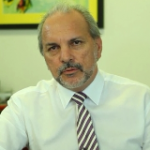 Greg Carroll has a graduate degree in Operations Research from Swinburne University. He has a certificate in Machine Learning from Stanford University and in Data Science from the University of Michigan. He has over thirty years’ experience in Enterprise Risk Management. He has applied risk management techniques to IT and Artificial Intelligence systems in mission critical environments like the Department of Defense and Victorian Infectious Disease Reference Laboratories. Continue reading
Greg Carroll has a graduate degree in Operations Research from Swinburne University. He has a certificate in Machine Learning from Stanford University and in Data Science from the University of Michigan. He has over thirty years’ experience in Enterprise Risk Management. He has applied risk management techniques to IT and Artificial Intelligence systems in mission critical environments like the Department of Defense and Victorian Infectious Disease Reference Laboratories. Continue reading
#312 – EDUCATIONAL INDUSTRIAL COMPLEX AND THE FUTURE OF WORK – HOWARD WIENER
Featured
 In a previous article I explored how workers and employers should approach the future and opined that both would be better off if they each understood the motivations and tactics that the other would employ to further their interests. Workers are concerned about achieving and maintaining marketability to employers and companies are concerned about acquiring the workforce they need to compete in the markets in which they do business. I assert that understanding what’s driving the approach each side will take to achieve its aims will be crucial to competing. Continue reading
In a previous article I explored how workers and employers should approach the future and opined that both would be better off if they each understood the motivations and tactics that the other would employ to further their interests. Workers are concerned about achieving and maintaining marketability to employers and companies are concerned about acquiring the workforce they need to compete in the markets in which they do business. I assert that understanding what’s driving the approach each side will take to achieve its aims will be crucial to competing. Continue reading
#312 – CONSTRUCTION STRESS AND ANXIETY – BILL POMFRET PH.D.
Featured
 High stress and anxiety rates in construction continue to rise, as do Suicides, what are the causes? And how can we reverse the trend which is having an enormous impact on the construction industry?
High stress and anxiety rates in construction continue to rise, as do Suicides, what are the causes? And how can we reverse the trend which is having an enormous impact on the construction industry?
Construction jobs are full of stressors, but those are compounded by factors that extend beyond the workplace, including the global pandemic, Civil Disobedience, unpredictable weather conditions, and an uncertain economy. When taken together, these stressors give us at least a partial explanation of the prevalence of suicide in the industry. Continue reading
#312 – AUDITING YOUR BCP AND DR PROGRAM – JUST HOW RESILIENT IS YOUR ORGANIZATION? – DAN SWANSON
Featured
 Being able to respond (i.e. continue critical business processes) during a major disaster and recover normal operations efficiently afterwards is a critical success factor for all organizations. An effective business continuity plan (BCP) and disaster recovery (DR) program is vital and must receive proper management attention and support. Continue reading
Being able to respond (i.e. continue critical business processes) during a major disaster and recover normal operations efficiently afterwards is a critical success factor for all organizations. An effective business continuity plan (BCP) and disaster recovery (DR) program is vital and must receive proper management attention and support. Continue reading
#312 – WHY DO WE LOSE STRENGTH AS WE AGE? – ALLEN TAYLOR
Featured
 Last week I talked about the cognitive decline that so often comes with aging. I mentioned new research into a mechanism that not only halts, but even reverses that decline, restoring the mental powers of old mice to what they had been when they were much younger. This is great for mice, and the mechanism might just possibly work in humans too. You can bet the researchers will be proposing research with human subjects soon. It would be nice to be able to extend the mental health of your pet mouse, but it would be even nicer to be able to extend the mental health of your grandmother. Continue reading
Last week I talked about the cognitive decline that so often comes with aging. I mentioned new research into a mechanism that not only halts, but even reverses that decline, restoring the mental powers of old mice to what they had been when they were much younger. This is great for mice, and the mechanism might just possibly work in humans too. You can bet the researchers will be proposing research with human subjects soon. It would be nice to be able to extend the mental health of your pet mouse, but it would be even nicer to be able to extend the mental health of your grandmother. Continue reading
#311 – BEIRUT CHEMICAL CATASTROPHE: COULD THIS HAPPEN IN CANADA? – BILL POMFRET PH.D.
Featured
 It is several months since tragedy in Beirut with its catastrophic destruction of most of the Port and a large part of the city should provide a serious wake-up call for all the chemical manufacturers importers, and storage facilities
It is several months since tragedy in Beirut with its catastrophic destruction of most of the Port and a large part of the city should provide a serious wake-up call for all the chemical manufacturers importers, and storage facilities
Could this or a similar tragedy likely to occur in Canada? Continue reading
#311 – SEARCHING FOR RISK IN ALL THE WRONG PLACES – GEARY SIKICH & SARA ROBERTSON
Featured
Introduction
 Much like the song, “Lookin’ for Love in All the Wrong Places” sung by Johnny Lee; risk management professionals need to ask the question “Are we searching for risk in all the wrong places”? Are risk professionals being deluded or deluding themselves by seeing risk based on media driven analysis; applying outmoded tools, models, etc. that no longer reflect the reality of risk? Continue reading
Much like the song, “Lookin’ for Love in All the Wrong Places” sung by Johnny Lee; risk management professionals need to ask the question “Are we searching for risk in all the wrong places”? Are risk professionals being deluded or deluding themselves by seeing risk based on media driven analysis; applying outmoded tools, models, etc. that no longer reflect the reality of risk? Continue reading
#311 – BRUCE TURNER – FUTURE OF WORK – INTERNAL AUDIT – HOWARD WIENER INTERVIEWER
Featured
 Bruce is an active company director and audit committee chair. He is a well-respected transformational leader with deep and broad professional governance, risk, compliance and audit experience. He was appointed a Member of the Order of Australia (AM) in the Queen’s Birthday Honours of 2015 in recognition of his significant service to public administration through governance and risk management practices, and to the profession of internal auditing.
Bruce is an active company director and audit committee chair. He is a well-respected transformational leader with deep and broad professional governance, risk, compliance and audit experience. He was appointed a Member of the Order of Australia (AM) in the Queen’s Birthday Honours of 2015 in recognition of his significant service to public administration through governance and risk management practices, and to the profession of internal auditing.
#311 – MAYBE WE DON’T HAVE TO LOSE OUR MARBLES AFTER ALL – ALLEN TAYLOR
Featured
A research paper appearing in the January 20 issue of the high impact Nature scientific journal exposes a mechanism by which the cognitive decline associated with aging is probably caused. If this research is confirmed it points the way to not just the halting, but even the reversal, of cognitive decline with aging.
Inflammation, which is a defense mechanism our bodies have to fight off infections, turns from the good Dr. Jekyll into the evil Mr. Hyde of Robert Louis Stevenson’s famous story. As we age, this mechanism turns against us, with chronic inflammation attacking our brain and other parts of our body rather than targeting invaders from outside. The result is the cognitive decline along with the physical decline that seems inevitable as we get older. We take longer to remember a name, place, or fact.
 You have seen this happen. You’ve noticed it in your grandparents, perhaps in your parents, and perhaps even in yourself. Based on common experience, this mental decline seems inevitable, without even considering more severe manifestations, such as Alzheimer’s Disease. There may be multiple causes that contribute to this pathology, but one in particular has recently been described in a paper by researchers at Stanford University titled, “Restoring metabolism of myeloid cells reverses cognitive decline in ageing.”
You have seen this happen. You’ve noticed it in your grandparents, perhaps in your parents, and perhaps even in yourself. Based on common experience, this mental decline seems inevitable, without even considering more severe manifestations, such as Alzheimer’s Disease. There may be multiple causes that contribute to this pathology, but one in particular has recently been described in a paper by researchers at Stanford University titled, “Restoring metabolism of myeloid cells reverses cognitive decline in ageing.”
Whoa!! Did I read that right? Reverses cognitive decline in ageing. Is it possible that we can not only prevent the loss of our marbles, but even get those marbles back after we have lost them? Maybe.
The experiment described in the paper, is about mice, not humans. Mice are a model organism that is used for research. Because of their short lifespans, we can draw conclusions about whether a therapy is effective relatively soon after an experiment with mice is started. What the Stanford researchers have found is that in aged mice, inhibition of a signal called myeloid EP2 rescues cognitive abilities that the mice had lost due to age. Their mental abilities had returned to that of young mice.
Clearly, more research must be done. Studies must also be extended to humans. We must not get carried away here. However, this is the first credible evidence that I have seen that indicates that it is possible that cognitive ability that has been lost due to aging can be regained. I will be following continuing work by this group as well as others, very closely. This could change the way we think about old age. It could also garner more respect for society’s elders. Indigenous people have traditionally held elders in high esteem. Maybe it will be easier for the rest of us to do that too, if the elders are able to retain the wisdom they have accumulated over a long life, and to pass it on to the rest of us.
BIO:
Allen G. Taylor is a 40-year veteran of the computer industry and the author of over 40 books, including Develop Microsoft HoloLens Apps Now, Get Fit with Apple Watch, Cruise for Free, SQL For Dummies, 9th Edition, Crystal Reports 2008 For Dummies, Database Development For Dummies, Access Power Programming with VBA, and SQL All-In-One For Dummies, Third Edition. He lectures internationally on astronomy, databases, innovation, and entrepreneurship. He also teaches database development and Crystal Reports through a leading online education provider. For the latest news on Allen’s activities, check out his blog at wwwallengtaylor.com or contact him at allen.taylor@ieee.org.
#311 – INFRASTRUCTURE IS NOT A ONE TIME INVESTMENT – FRED SCHENKELBERG
Featured
 In a recent blog post, Seth Goin discussed the need for ongoing investment to maintain infrastructure. Whether a road or building or even your own skills, it takes regular care to avoid system failures or obsolesce.
In a recent blog post, Seth Goin discussed the need for ongoing investment to maintain infrastructure. Whether a road or building or even your own skills, it takes regular care to avoid system failures or obsolesce.
An Act of Maturity
Seth opens his piece with:
If you want to see wisdom and maturity in action, look for someone (or a community) investing in infrastructure before it’s too late.
#310 – HOW TO GET A PROJECT MANAGER JOB? – JOHN AYERS
Featured
 The demand for project managers today is high and will continue to grow well into the future. It is a well-paying, satisfying profession to pursue. The question is, how to get a project manager job. The short answer is: some education; lot of relevant experience; and an opportunity. Three stories are presented herein to illustrate some of the different approaches that have worked to get a project manager job. Continue reading
The demand for project managers today is high and will continue to grow well into the future. It is a well-paying, satisfying profession to pursue. The question is, how to get a project manager job. The short answer is: some education; lot of relevant experience; and an opportunity. Three stories are presented herein to illustrate some of the different approaches that have worked to get a project manager job. Continue reading
#310 – COULD A ‘NO’ AS ANY OTHER WORD BE A POSITIVE? – MALCOLM PEART
Featured
The right word at the right time can make all the difference between a successful negotiation with an amicable agreement and collaborative banter, or a bitter and twisted tête-à-tête with an entrenched stand-off, raised hackles and, at best, fog-horn diplomacy. But what is the ‘right word’; unfortunately, it depends on the time and place and people’s personality but one thing is almost certain, if it begins with “n” it is oftentimes not considered to be right and many consider it to be downright wrong. Continue reading
#310 – DATA AND INFORMATION RISK – JIM TONEY
Featured
 What if the data and information used to make important decisions are incomplete, inaccurate, misunderstood or just plain wrong? Not identifying all relevant data and information attributes could affect not only individuals dealing with personal risk, but also businesses coping with risks to the quality of strategic planning and sustainability.
What if the data and information used to make important decisions are incomplete, inaccurate, misunderstood or just plain wrong? Not identifying all relevant data and information attributes could affect not only individuals dealing with personal risk, but also businesses coping with risks to the quality of strategic planning and sustainability.
Risk definition: possibility of loss or injury (1) Continue reading
#310 – BRUCE TURNER – FUTURE OF INTERNAL AUDIT – HOWARD WIENER INTERVIEWER
Featured
 Bruce is an active company director and audit committee chair. He is a well-respected transformational leader with deep and broad professional governance, risk, compliance and audit experience. He was appointed a Member of the Order of Australia (AM) in the Queen’s Birthday Honours of 2015 in recognition of his significant service to public administration through governance and risk management practices, and to the profession of internal auditing.
Bruce is an active company director and audit committee chair. He is a well-respected transformational leader with deep and broad professional governance, risk, compliance and audit experience. He was appointed a Member of the Order of Australia (AM) in the Queen’s Birthday Honours of 2015 in recognition of his significant service to public administration through governance and risk management practices, and to the profession of internal auditing.
#310 – STAYING HEALTHY – LONG TERM PRESCRIPTION – ALLEN TAYLOR
Featured
 In recent years there has been increasing acceptance of the idea that the debilitating effects that go along with aging are not inevitable. Various interventions have been found that hold out the promise of a long life that is healthy to the end. Among these interventions are:
In recent years there has been increasing acceptance of the idea that the debilitating effects that go along with aging are not inevitable. Various interventions have been found that hold out the promise of a long life that is healthy to the end. Among these interventions are:
- Eating healthy foods
- Restricting calories, particularly “empty” calories that provide energy without much nutrition
- Practicing intermittent fasting, where eating is confined to a prescribed interval of time
- Taking drugs that seem to slow aging in animals, such as metformin and rapamycin
- Exercising on a regular basis
#309 – CIVIL UNREST IS ON THE RISE – BILL POMFRET PH.D.
Featured
 Watching the news, almost daily is depressing, the civil unrest and protests looks bleak and it feels like there is nothing you or I can do. This is not a predicament exclusive to our time, history can point to ordinary people who, constrained by injustice, acted to challenge those who held the power“ The match was lit by Donald Trump and his most ardent enablers, including many in Congress, to overturn the results of an election he lost,” Clinton tweeted. Condemnation also rained down from members of Trump’s party in Congress. Continue reading
Watching the news, almost daily is depressing, the civil unrest and protests looks bleak and it feels like there is nothing you or I can do. This is not a predicament exclusive to our time, history can point to ordinary people who, constrained by injustice, acted to challenge those who held the power“ The match was lit by Donald Trump and his most ardent enablers, including many in Congress, to overturn the results of an election he lost,” Clinton tweeted. Condemnation also rained down from members of Trump’s party in Congress. Continue reading
#309 – INSTITUTE OF INTERNAL AUDITORS PUSHES RISK BASED THINKING – JAMES KLINE PH.D.
Featured
 In 2019 Greg Hutchins and I co-authored an article (1) which showed how the finance, accounting and auditing professions are pushing the adoption of Enterprise Risk Management (ERM) in the public sector. In a forthcoming article in Quality Digest, I examine the strengthens and weakness of the quality and audit and accounting professions relative to involvement in and promotion of ERM. In this piece I am going to examine the 2020 Institute of Internal Auditors’ (IIA) update of their Three Lines Model and how it both promotes ERM and positions auditors to take a more active role in ERM implementation. Continue reading
In 2019 Greg Hutchins and I co-authored an article (1) which showed how the finance, accounting and auditing professions are pushing the adoption of Enterprise Risk Management (ERM) in the public sector. In a forthcoming article in Quality Digest, I examine the strengthens and weakness of the quality and audit and accounting professions relative to involvement in and promotion of ERM. In this piece I am going to examine the 2020 Institute of Internal Auditors’ (IIA) update of their Three Lines Model and how it both promotes ERM and positions auditors to take a more active role in ERM implementation. Continue reading
#309 – LEARNING CURVES: A BITTER TRUTH BUT UNDENIABLE RISK! – MALCOLM PEART
Featured
 Despite our collective educational establishments that purport to teach so that people can learn, ‘education’ is not necessarily learning. Mark Twain wrote disparagingly that “Education consists mainly in what we have unlearned” and also that he never let schooling interfere with his own education. Education is not necessarily knowledge and real learning comes from the application of theory tempered with experience which will make for better decisions and better outcomes. Benjamin Franklin’s words from over 200 years’ ago “Tell me, I forget. Teach me, I remember. Involve me and I learn” still ring true today. Continue reading
Despite our collective educational establishments that purport to teach so that people can learn, ‘education’ is not necessarily learning. Mark Twain wrote disparagingly that “Education consists mainly in what we have unlearned” and also that he never let schooling interfere with his own education. Education is not necessarily knowledge and real learning comes from the application of theory tempered with experience which will make for better decisions and better outcomes. Benjamin Franklin’s words from over 200 years’ ago “Tell me, I forget. Teach me, I remember. Involve me and I learn” still ring true today. Continue reading
#309 – ANTICIPATORY LEADERS LEVERAGE FUTURE FACTS™ – DANIEL BURRUS
Featured
 We cannot turn back the clocks and undo the damage the pandemic has done, but we can move forward with an anticipatory mindset and a firm plan of action. For many decades now, and in all industries, digital disruption has been on an exponential curve upward. Because the pandemic forced us to turn to technology for help on both a personal and business level, the pace of technology-driven change increased dramatically, far beyond merely exponential levels. Now that this change has been set in motion, the question remains: What do we do now? Continue reading
We cannot turn back the clocks and undo the damage the pandemic has done, but we can move forward with an anticipatory mindset and a firm plan of action. For many decades now, and in all industries, digital disruption has been on an exponential curve upward. Because the pandemic forced us to turn to technology for help on both a personal and business level, the pace of technology-driven change increased dramatically, far beyond merely exponential levels. Now that this change has been set in motion, the question remains: What do we do now? Continue reading
#309 – WE’RE STILL FINDING NEW THINGS ABOUT ASPIRIN – ALLEN TAYLOR
Featured
 The use of the primary ingredient of aspirin as a medicine, goes back thousands of years. Clay tablets from ancient Sumer describe the preparation of that primary ingredient, salicylate, from willow bark, and enumerate a laundry list of ailments that it could be used to treat. In the late nineteenth century, the acetylsalicylic acid form of the drug was marketed around the world by the Bayer company of Germany. In the 20th century, aspirin was found to be effective at lowering fever, reducing pain, and treating rheumatic fever. Continue reading
The use of the primary ingredient of aspirin as a medicine, goes back thousands of years. Clay tablets from ancient Sumer describe the preparation of that primary ingredient, salicylate, from willow bark, and enumerate a laundry list of ailments that it could be used to treat. In the late nineteenth century, the acetylsalicylic acid form of the drug was marketed around the world by the Bayer company of Germany. In the 20th century, aspirin was found to be effective at lowering fever, reducing pain, and treating rheumatic fever. Continue reading
#308 – VICTORIA’S NEW RISK MANAGEMENT FRAMEWORK – JAMES KLINE PH.D.
Featured
 Enterprise Risk Management (ERM) is considered an important management tool and part of good public sector governance in Australia. The Commonwealth of Australia and the states of Victoria and New South Wales have implemented ERM. In addition, the states of Tasmania and Western Australia have issued good governance frameworks which include risk management. This piece will provide a historical overview of the risk management approach used by the Australian State of Victoria. It will then discuss the changes made in the 2020 revisions to its 2018 Victorian Government Risk Management Framework. Continue reading
Enterprise Risk Management (ERM) is considered an important management tool and part of good public sector governance in Australia. The Commonwealth of Australia and the states of Victoria and New South Wales have implemented ERM. In addition, the states of Tasmania and Western Australia have issued good governance frameworks which include risk management. This piece will provide a historical overview of the risk management approach used by the Australian State of Victoria. It will then discuss the changes made in the 2020 revisions to its 2018 Victorian Government Risk Management Framework. Continue reading
#308 – CORRUPTION: CAUSES, EFFECTS, & CONSEQUENCES – BILL POMFRET PH.D.
Featured
 In this article Dr. Bill Pomfret looks at the growing worldwide concerns over corruption, he states that several factors are responsible for this.
In this article Dr. Bill Pomfret looks at the growing worldwide concerns over corruption, he states that several factors are responsible for this.
First, a consensus has now been reached that corruption is universal. It exists in all countries, both developed and developing, in the public and private sectors, as well as in nonprofit and charitable organizations. Continue reading
#308 – CAREER LONG LESSONS FROM A ONCE IN A LIFETIME DISRUPTION – DANIEL BURRUS
Featured
 For some, the post-coronavirus “new normal” is a frightening concept that rattles their status quo, while others are taking this moment to seize new opportunities afforded to us by a global disruption, as COVID-19 has proven to be. The fact of the matter is that aforementioned opportunity is available to all of us, whether our “new normal” is unbearably difficult or extremely simple. Continue reading
For some, the post-coronavirus “new normal” is a frightening concept that rattles their status quo, while others are taking this moment to seize new opportunities afforded to us by a global disruption, as COVID-19 has proven to be. The fact of the matter is that aforementioned opportunity is available to all of us, whether our “new normal” is unbearably difficult or extremely simple. Continue reading
#308 – ANNETTE DAVISON PH.D. – FUTURE OF WORK – RISK MANAGEMENT – JAMES KLINE PH.D. INTERVIEWER
Featured
 Dr. Davison has more than 30 years’ experience in environmental management, integrated water cycle management and risk assessment. Davison has more than 30 years’ experience in environmental management, integrated water cycle management and risk assessment. She is the Principal Risk Analyst and founding Director of Risk Edge® Pty Ltd. and co-founder and R&D Manager, D2K Information Pty Ltd. She received her PhD in Environmental Biochemistry and Microbiology from Macquarie University. Her most recent book is entitled: The Application of ISO 31000 to Drinking Water Quality Risk Management: A Practical Approach. It is published by Edge Pty Ltd, Sydney Australia. Continue reading
Dr. Davison has more than 30 years’ experience in environmental management, integrated water cycle management and risk assessment. Davison has more than 30 years’ experience in environmental management, integrated water cycle management and risk assessment. She is the Principal Risk Analyst and founding Director of Risk Edge® Pty Ltd. and co-founder and R&D Manager, D2K Information Pty Ltd. She received her PhD in Environmental Biochemistry and Microbiology from Macquarie University. Her most recent book is entitled: The Application of ISO 31000 to Drinking Water Quality Risk Management: A Practical Approach. It is published by Edge Pty Ltd, Sydney Australia. Continue reading
#308 – CAN WHAT YOU EAT AFFECT HOW YOU THINK? – ALLEN TAYLOR
Featured
 Last week, I wrote about the fact that, as many, perhaps even most, people age, their ability to recall names and other facts declines. Often the information is still sitting there in their brain, but for some reason, it is far more difficult to recall than it was when they were younger. Now I sometimes must go through a string of associations before I can call up a name that I used to be able to access directly. Continue reading
Last week, I wrote about the fact that, as many, perhaps even most, people age, their ability to recall names and other facts declines. Often the information is still sitting there in their brain, but for some reason, it is far more difficult to recall than it was when they were younger. Now I sometimes must go through a string of associations before I can call up a name that I used to be able to access directly. Continue reading
#307 – PROJECT MANAGEMENT FUTURE OF WORK RISKS – JOHN AYERS
Featured
 What does the future hold for project management? Remote and flexible work arrangements were trends prior to COVID-19. The pandemic greatly accelerated the trends and a lot of it will be permanent well after the virus is tamed. Remote work arrangement means any work you do that dose not require commuting into an office. A flexible work arrangement are alternate arrangements or schedules from the traditional working day and week. Employees may choose a different work schedule to meet personal or family needs Continue reading
What does the future hold for project management? Remote and flexible work arrangements were trends prior to COVID-19. The pandemic greatly accelerated the trends and a lot of it will be permanent well after the virus is tamed. Remote work arrangement means any work you do that dose not require commuting into an office. A flexible work arrangement are alternate arrangements or schedules from the traditional working day and week. Employees may choose a different work schedule to meet personal or family needs Continue reading
#307 – FROM QUALITY TO RISK: LOCAL GOVERNMENT’S JOURNEY – JAMES KLINE PH.D.
Featured
 This piece will examine how the move away from quality management to risk management in United Kingdom local governments developed and how risk management became a mandate. It will then move to the specific by looking at Cheltenham Borough Council’s risk management policy and aspects of the 2018 Audit Committee Annual Risk Management Report. It will close with some observation on where risk and quality management are being used together. Continue reading
This piece will examine how the move away from quality management to risk management in United Kingdom local governments developed and how risk management became a mandate. It will then move to the specific by looking at Cheltenham Borough Council’s risk management policy and aspects of the 2018 Audit Committee Annual Risk Management Report. It will close with some observation on where risk and quality management are being used together. Continue reading
#307 – JIM TONEY – FUTURE OF WORK – QUALITY – INTERVIEWED BY JAMES KLINE PH.D.
Featured
James Toney has more than thirty years of experience in the quality profession. His clients have included the U.S. Department of Labor, IRS, Federal Aviation Administration, U.S. Navy, Housing and Urban Development, Pension Benefit Guaranty Corporation, the Federal Deposit Insurance Corporation, and Health and Human Services. Commercial clients included financial, telecommunications, hospitality, educational, and healthcare organizations. Continue reading
#307 – MEETING PROCRASTINATION RISK OR PRODUCTIVITY OPPORTUNITY – MALCOLM PEART
Featured
You wait 15 minutes for people to turn up, call-in, or get on-line. Some may have popped down to Starbucks to get their daily fix of skinny hazelnut caramel latte, or green tea or Evian water. The punctual few chit-chat away about anything and everything except the meeting agenda in case they commit some anticipatory faux pas. Then there are those, particularly the decision makers, who let everybody know that they only have a certain amount of time available; they will need to leave promptly so they won’t be late for their next meeting and with all plausible deniability may avoid decisions and conclusions; but wasn’t that the point of the meeting? Continue reading
#307 – MUST WE LOSE OUR MARBLES AS WE AGE? – ALLEN TAYLOR
Featured
 Since time immemorial, people who have been fortunate enough to live a long life, have suffered toward the end of that span. They gradually lose the memories that they could quickly and easily call up when they were younger. Names, facts, and places become progressively harder to access and bring into conscious awareness. It has been widely accepted that this is just the natural order of things. People are born, grow to maturity, reach the height of their powers in adulthood, and then decline into old age and death. Nothing new here. It has always been this way. But just because it has always been this way does not mean that it must necessarily be this way. Continue reading
Since time immemorial, people who have been fortunate enough to live a long life, have suffered toward the end of that span. They gradually lose the memories that they could quickly and easily call up when they were younger. Names, facts, and places become progressively harder to access and bring into conscious awareness. It has been widely accepted that this is just the natural order of things. People are born, grow to maturity, reach the height of their powers in adulthood, and then decline into old age and death. Nothing new here. It has always been this way. But just because it has always been this way does not mean that it must necessarily be this way. Continue reading
#306 – HOWARD WIENER – FUTURE OF WORK – CIO TO COO TO CEO
Featured
 A recent Wall Street Journal article, entitled Coronavirus Pandemic Helps Speed More CIOs Toward Business Operations Accountability, observed:
A recent Wall Street Journal article, entitled Coronavirus Pandemic Helps Speed More CIOs Toward Business Operations Accountability, observed:
“Large businesses are starting to hold their chief information officers accountable for the results of corporate-wide digital business operations, giving them much wider responsibility within the organization. . . Gartner, which last month released its annual list of top strategic predictions, said that by 2024, a quarter of the CIOs working in large, traditional enterprises will effectively become, as the research and advisory firm calls it, ‘COO by proxy.’” Continue reading
#306 – HERD STUPIDITY – GEARY SIKICH
Featured
 Have you ever heard or uttered words, such as: “I am healthy; I eat healthy, I exercise and maintain my health. So, this COVID thing is not a concern. Besides, it only affects old people who are already sick with something else.” Or, “Masks are inconvenient to wear. Besides, I can’t hear what you are saying when I am wearing my mask”. Continue reading
Have you ever heard or uttered words, such as: “I am healthy; I eat healthy, I exercise and maintain my health. So, this COVID thing is not a concern. Besides, it only affects old people who are already sick with something else.” Or, “Masks are inconvenient to wear. Besides, I can’t hear what you are saying when I am wearing my mask”. Continue reading
#306 – DRONES USED TO SABOTAGE A DAM – BILL POMFRET PH.D.
Featured
 In 2018 while on assignment in Iran, I was looking into conducting an audit of the largest dam in the country, the Karun dam, one of my comments regarding how and what I would audit, and then while explaining the measurement criteria for emergency response, I said I would have the company undergo one or two practical exercises, and that I would draft out some realistic scenarios. Continue reading
In 2018 while on assignment in Iran, I was looking into conducting an audit of the largest dam in the country, the Karun dam, one of my comments regarding how and what I would audit, and then while explaining the measurement criteria for emergency response, I said I would have the company undergo one or two practical exercises, and that I would draft out some realistic scenarios. Continue reading
#306 – WHAT IS RISK MANAGEMENT? – ANDREW SHEVES
Featured
 Asking ‘what is risk management?’ often gets you the trite answer ‘it’s the management of risk’ or we get a list of activities associated with risk management. Neither result is satisfying and we need a better definition that explains the intent of risk management along with some clarification of what this is and is not. Here, I’ve presented some initial ideas on a definition along with four components that should give us a more thorough definition. Continue reading
Asking ‘what is risk management?’ often gets you the trite answer ‘it’s the management of risk’ or we get a list of activities associated with risk management. Neither result is satisfying and we need a better definition that explains the intent of risk management along with some clarification of what this is and is not. Here, I’ve presented some initial ideas on a definition along with four components that should give us a more thorough definition. Continue reading
#306 – SOME COVID PATIENTS LOSE THEIR SENSE OF SMELL. SHOULD WE WORRY ABOUT THAT? – ALLEN TAYLOR
Featured
 Yes, we should worry. The aroma of savory food is one of life’s great pleasures. The perception of foul odors can protect us from eating or breathing-in something harmful. However, those are not the main reasons for raising concerns over the loss of the sense of smell, or the sense of taste. They are indicators of a far more serious danger. Continue reading
Yes, we should worry. The aroma of savory food is one of life’s great pleasures. The perception of foul odors can protect us from eating or breathing-in something harmful. However, those are not the main reasons for raising concerns over the loss of the sense of smell, or the sense of taste. They are indicators of a far more serious danger. Continue reading
#305 – IS YOUR ORGANIZATION RISK READY: ALL OPTIONS ON THE TABLE – ANNETTE DAVISON
Featured
 As the world grapples with the issues of future water security and dwindling supplies of fresh water, more and more organisations and communities are scanning more broadly and reviewing how they can meet their future water needs. There is now an increased risk appetite for considering all water source options for drinking water production – beyond the traditional surface and ground water sources. In the water industry, we talk about the multiple barrier approach, that is, if one barrier fails, there is another in place as insurance. Continue reading
As the world grapples with the issues of future water security and dwindling supplies of fresh water, more and more organisations and communities are scanning more broadly and reviewing how they can meet their future water needs. There is now an increased risk appetite for considering all water source options for drinking water production – beyond the traditional surface and ground water sources. In the water industry, we talk about the multiple barrier approach, that is, if one barrier fails, there is another in place as insurance. Continue reading
#305 – SUBCONTRACTOR RISK IS A MAJOR REASON FOR PROJECT FAILURES – JOHN AYERS
Featured
 Studies show that the majority of companies today outsource up to 60-70% of their work scope to subcontractors to stay competitive. As a result, subcontractors are a major source of risk to a project.
Studies show that the majority of companies today outsource up to 60-70% of their work scope to subcontractors to stay competitive. As a result, subcontractors are a major source of risk to a project.
How to minimize the subcontractor risk on a project is addressed in this paper. The approach to do this is based on my 30 years of project and project risk management experience and knowledge. Continue reading
#305 – DOCTORS TO A SICK INDUSTRY – SAFETY MANAGEMENT – BILL POMFRET PH.D.
Featured
 DOCTORS TO A SICK INDUSTRY
DOCTORS TO A SICK INDUSTRY
The Gulf region is a vibrant, exciting and rapidly growing area of the world, it reminds me of Hong Kong in the 1980’s, and while there are thousands of wonderful things that the Gulf can justifiably be proud, its management of occupational Safety and health is not one of them.
During my frequent visits to the region, I have the opportunity to see both living and working conditions of the workforce, many of whom are having their basic human rights violated. Continue reading
#305 – WAITING TO RUSH IN PROJECT MANAGEMENT – MALCOLM PEART
Featured
 How often do we rush something only to wait for somebody else to finish their work, or make a decision, or even turn up to a meeting? The military have a humoristic expression for this; ‘’hurry up and wait’’ which was spawned during WW2. This is not only frustrating but an all too true sign of failing to plan and not preparing properly. When we fail to plan we have, either deliberately or naively, planned to fail. But why do some endeavors fail even when a ‘plan’ exists and we end up ‘’waiting to rush’’. Continue reading
How often do we rush something only to wait for somebody else to finish their work, or make a decision, or even turn up to a meeting? The military have a humoristic expression for this; ‘’hurry up and wait’’ which was spawned during WW2. This is not only frustrating but an all too true sign of failing to plan and not preparing properly. When we fail to plan we have, either deliberately or naively, planned to fail. But why do some endeavors fail even when a ‘plan’ exists and we end up ‘’waiting to rush’’. Continue reading
#305 – GO HARD AND GO EARLY! – ALLEN TAYLOR
Featured
 By any measure, the United States has not done well in the fight against the Covid-19 pandemic. Some of this is due to willful ignorance, the rejection of sound scientific evidence. Some is due to the independence-minded nature of American culture. Some is due to the lack of a coordinated national policy on how to deal with the situation. Each state, and even individual cities and towns are on their own in terms of what actions people should take. Voluntary compliance with policies such as mask-wearing and social distancing has been spotty to put it mildly. Continue reading
By any measure, the United States has not done well in the fight against the Covid-19 pandemic. Some of this is due to willful ignorance, the rejection of sound scientific evidence. Some is due to the independence-minded nature of American culture. Some is due to the lack of a coordinated national policy on how to deal with the situation. Each state, and even individual cities and towns are on their own in terms of what actions people should take. Voluntary compliance with policies such as mask-wearing and social distancing has been spotty to put it mildly. Continue reading
#304 – GOLDILOCKS MANAGEMENT: GETTING THINGS ‘JUST RIGHT’ – MALCOLM PEART
Featured
 I was once taught that good project management and mitigating the risk of failure was a combination of Fayol’s three pillars of planning, organising and controlling glued together by effective communication and enclosed in a bubble of morale. I was later to learn that that if one overindulges or ignores any one pillar, or fails to communicate effectively rather than just efficiently, the oftentimes thin bubble of morale may rupture. The unfortunate result is the loss of management coherence and the real possibility of project failure. Continue reading
I was once taught that good project management and mitigating the risk of failure was a combination of Fayol’s three pillars of planning, organising and controlling glued together by effective communication and enclosed in a bubble of morale. I was later to learn that that if one overindulges or ignores any one pillar, or fails to communicate effectively rather than just efficiently, the oftentimes thin bubble of morale may rupture. The unfortunate result is the loss of management coherence and the real possibility of project failure. Continue reading
#304 – CHANGE DRIVERS THAT WILL IMPACT WORK AND PROFESSIONS – HOWARD WIENER
Featured
 In my previous post, What’s Driving the Future of Work and Professions?, I mentioned PESTLE as a helpful framework for classifying external forces that act on all of us and the companies for which we work. In this article, I present a list of them for you to consider. It’s not encyclopedic, but it’s a good start.
In my previous post, What’s Driving the Future of Work and Professions?, I mentioned PESTLE as a helpful framework for classifying external forces that act on all of us and the companies for which we work. In this article, I present a list of them for you to consider. It’s not encyclopedic, but it’s a good start.
As you do, ask yourself:
- What was the old norm?
- What is the new norm?
- What does a person need to thrive in the new norm?
#304 – PROJECT CHANGE CONTROL – JOHN AYERS
Featured
 How changes are controlled can be a risk to a project. Changes can be non-disruptive or disruptive to a project.
How changes are controlled can be a risk to a project. Changes can be non-disruptive or disruptive to a project.
An authorized change is not disruptive to a project. It is initiated by the customer and does not represent a risk because the contractor prepares and submits a proposal to incorporate the change into the baseline plan. It is a contract change that comes with budget and schedule for the change. Unauthorized changes constitute a risk to a project because they do not include a budget or schedule. They are disruptive to a project. The key to change control management risk reduction is to minimize the number of unauthorized changes. Continue reading
#304 – KAREN HARDY – FUTURE OF WORK – ERM – JAMES KLINE PH.D.
Featured
 Dr. Hardy is an expert risk management professional with extensive experience in the public sector. Dr. Hardy is the co-founder of the Association for Federal Enterprise Risk Management and served on the U.S. Technical Advisory Group for ISO 31000. She has worked at Citibank and the White House Office of Management and Budget. Continue reading
Dr. Hardy is an expert risk management professional with extensive experience in the public sector. Dr. Hardy is the co-founder of the Association for Federal Enterprise Risk Management and served on the U.S. Technical Advisory Group for ISO 31000. She has worked at Citibank and the White House Office of Management and Budget. Continue reading
#304 – EFFECTIVE COVID 19 VACCINES HAVE BEEN ANNOUNCED. ARE WE SAFE NOW? – ALLEN TAYLOR
Featured
 Covid-19 is spiking everywhere. Entire countries are reverting to hard lockdowns. Current disease spread shows that staged re-openings ordered by governments have been premature. As a result, in most countries, infections now are far higher than they were when lockdowns were first imposed back in the spring. In light of all this, what do the recent announcements of 95% effective vaccines mean? Are we about to win the battle against Covid-19 or not? Continue reading
Covid-19 is spiking everywhere. Entire countries are reverting to hard lockdowns. Current disease spread shows that staged re-openings ordered by governments have been premature. As a result, in most countries, infections now are far higher than they were when lockdowns were first imposed back in the spring. In light of all this, what do the recent announcements of 95% effective vaccines mean? Are we about to win the battle against Covid-19 or not? Continue reading
#303 – JOHN AYERS – FUTURE OF WORK – PROJECT MANAGEMENT – JAMES KLINE PH.D.
Featured
 John Ayers has a BS in Mechanical Engineering and a MS in Engineering Management. He is a member of Project Management Institute. He has managed large highly technical development projects for the private sector and the Department of Defense. Professionally he has held positions such as Director of Programs, Director of Operations, Project Engineer and Design Engineer. He writes a weekly column for CERM. He also writes a monthly blog for Association of Project Managers. His book “Project Risk Management” is available on Amazon. Continue reading
John Ayers has a BS in Mechanical Engineering and a MS in Engineering Management. He is a member of Project Management Institute. He has managed large highly technical development projects for the private sector and the Department of Defense. Professionally he has held positions such as Director of Programs, Director of Operations, Project Engineer and Design Engineer. He writes a weekly column for CERM. He also writes a monthly blog for Association of Project Managers. His book “Project Risk Management” is available on Amazon. Continue reading
#303 – HINDSIGHT FROM 2020: STRATEGIES FOR THE NEW NORMAL – DANIEL BURRUS
Featured
 These days, you can find a slurry of memes and motivational graphics on social media alluding to the concept that you must always beat out your competition in business. But contrary to popular belief, competing with other businesses is actually quite counterproductive, especially in the post-pandemic “new normal” we face – something we never expected to be facing as we entered this new decade. Continue reading
These days, you can find a slurry of memes and motivational graphics on social media alluding to the concept that you must always beat out your competition in business. But contrary to popular belief, competing with other businesses is actually quite counterproductive, especially in the post-pandemic “new normal” we face – something we never expected to be facing as we entered this new decade. Continue reading
#303 – QUALITY IS A BALANCE BETWEEN VALUE, RISK AND COST: THE QVRC MODEL – NIGEL GRIGG PH.D.
Featured
1. INTRODUCTION
 Risk, value and cost are terms that have been especially prevalent in quality management literature over recent years. A recent review of over one hundred years of published writings relating to quality revealed them to be themes that always underscored much of quality theory and practice. While references to the economics of quality have remained quite consistent over that time, however, value and risk are keywords that have substantially increased in their occurrence during the present century. Continue reading
Risk, value and cost are terms that have been especially prevalent in quality management literature over recent years. A recent review of over one hundred years of published writings relating to quality revealed them to be themes that always underscored much of quality theory and practice. While references to the economics of quality have remained quite consistent over that time, however, value and risk are keywords that have substantially increased in their occurrence during the present century. Continue reading
#303 – SIMPLE DOESN’T MEAN EASY – ANDREW SHEVES
Featured
 I realized a while back that it can be too easy to mistake ‘simple’ with ‘easy’ and I’ve been concerned that promoting a simple approach to risk management might lead people to think that this makes everything easy. Unfortunately, even though a KISS approach makes risk management easier, it doesn’t do away with the need for hard work altogether. Worst of all, it can be easy to mistake shortcuts for simplification. Continue reading
I realized a while back that it can be too easy to mistake ‘simple’ with ‘easy’ and I’ve been concerned that promoting a simple approach to risk management might lead people to think that this makes everything easy. Unfortunately, even though a KISS approach makes risk management easier, it doesn’t do away with the need for hard work altogether. Worst of all, it can be easy to mistake shortcuts for simplification. Continue reading
#303 – BATTEN DOWN THE HATCHES – ALLEN TAYLOR
Featured
 There’s a colossal storm approaching. I’m not talking about a hurricane, cyclone, or tornado. I’m talking about Covid-19. With over 52 million confirmed cases and 1.3 million deaths worldwide, we have just seen the smallest inkling of the carnage that will occur over the next several months. As the weather turns cold in the northern hemisphere, people will be spending most of their time indoors, often in places with poor ventilation. These are ideal conditions for spreading airborne virus particles. People who do not take the danger seriously will be at the forefront of those who contract the virus and then spread it to others. Continue reading
There’s a colossal storm approaching. I’m not talking about a hurricane, cyclone, or tornado. I’m talking about Covid-19. With over 52 million confirmed cases and 1.3 million deaths worldwide, we have just seen the smallest inkling of the carnage that will occur over the next several months. As the weather turns cold in the northern hemisphere, people will be spending most of their time indoors, often in places with poor ventilation. These are ideal conditions for spreading airborne virus particles. People who do not take the danger seriously will be at the forefront of those who contract the virus and then spread it to others. Continue reading
#302 – THE PROBLEMATIC PROJECT – IGNORANCE, CURVES, SPIRALS, AND SLOPES – MALCOLM PEART
Featured
 A project with a problem…not a new phenomenon and more likely than not ‘business as usual’ for most, but how do we address the problems on our projects?
A project with a problem…not a new phenomenon and more likely than not ‘business as usual’ for most, but how do we address the problems on our projects?
Theoretically there’s the risk register and plan with a predetermined set of mitigation actions and designated owners who, although being potential scapegoats, are expected to manage risks magnificently while still dealing with the rest of their, hopefully, nonproblematic scope. Problems plague projects despite alleged prior preparation and proper planning. But it’s the way that people behave and interact that can make all the difference when resolving the problem and keeping the rest of the project on-track. Continue reading
#302 – NIGEL GRIGG PH.D.: FUTURE OF WORK – QUALITY – JAMES KLINE PH.D.
Featured
 This piece is with Dr. Nigel Grigg. Dr. Grigg is a Professor of Quality Systems at Massey University New Zealand.
This piece is with Dr. Nigel Grigg. Dr. Grigg is a Professor of Quality Systems at Massey University New Zealand.
- You are a Fellow of the Charter Quality Institute, a senior member of ASQ, a former president of the New Zealand Organisation for Quality and an active supporter of the Australian Organisation for Quality. You are also a Professor of Quality Systems. With this extensive involvement in quality how would you describe the status of the quality profession in New Zealand and Australia?
#302 – COVID 19, MILLENNIALS, AND RISK – JIM TONEY
Featured
 Are Millennials over reacting to the COVID-19 crisis? Why are people in the 25-40 age group disproportionately affected by fear and anxiety from COVID-19?[i] Healthcare Hotline telephone evidence suggests that the level of COVID-19 associated anxiety and fear expressed by Millennials, sometimes referred to as “Generation Y,” are vastly exaggerated when compared to the reality of COVID-19 deaths correlated with this age group. Millennials account for approximately for 73 million people in the United States.[ii] Continue reading
Are Millennials over reacting to the COVID-19 crisis? Why are people in the 25-40 age group disproportionately affected by fear and anxiety from COVID-19?[i] Healthcare Hotline telephone evidence suggests that the level of COVID-19 associated anxiety and fear expressed by Millennials, sometimes referred to as “Generation Y,” are vastly exaggerated when compared to the reality of COVID-19 deaths correlated with this age group. Millennials account for approximately for 73 million people in the United States.[ii] Continue reading
#302 – MENTAL HEALTH FIRST AID TRAINING – BILL POMFRET PH.D.
Featured
 Every day over 500,000 Canadians are off work due to mental health
Every day over 500,000 Canadians are off work due to mental health- Every Day 200 Canadians attempt suicide
- My clients report that about a quarter of disability claims are related to mental health
- Mental illnesses cost Canada about $51.7 billion in 2015, 452,000 more Canadians would be participating in the labour force in 2016 if they were not affected by mental illness.
- These estimates of the economic impact do not include the costs of patient care, insurance for employers, services in communities, and the many intangible costs for the individuals affected and their families, too many people suffer in silence with mental health issues.
- One in five employees will experience a mental health issue during their working life. One in four people will experience a mental health condition in any one year and depression and anxiety affect 20 per cent of the Canadian working population.
#302 – COVID 19: WHAT PREDISPOSES PEOPLE TO SEVERE ILLNESS AND DEATH? – ALLEN TAYLOR
Featured
 Covid-19 is a real puzzler. Its effects are all over the map from unnoticeable to death, along with every point in between. Some people exhibit no symptoms and are unaware that they are infected until a positive test for the SARS-Cov-2 virus delivers the bad news. Others rapidly deteriorate and then die within a few days. Some (the “long haulers”} remain weak and tired for months after the acute disease has left them. Some even suffer permanent damage to their internal organs. Continue reading
Covid-19 is a real puzzler. Its effects are all over the map from unnoticeable to death, along with every point in between. Some people exhibit no symptoms and are unaware that they are infected until a positive test for the SARS-Cov-2 virus delivers the bad news. Others rapidly deteriorate and then die within a few days. Some (the “long haulers”} remain weak and tired for months after the acute disease has left them. Some even suffer permanent damage to their internal organs. Continue reading
#301 – 66 VALUABLE LESSONS WE CAN LEARN FROM COVID – PATRICK OW
Featured
 Since March 2020, I have been intimately involved in the COVID-19 response. I have also read and researched many articles related to this pandemic.
Since March 2020, I have been intimately involved in the COVID-19 response. I have also read and researched many articles related to this pandemic.
For me, there are 66 lessons that we can learn through our response and living through a pandemic. Some of these lessons may overlap with each other.
These 66 lessons have been categories into five categories. Continue reading
#301 – SHUTTING THE GATE SYNDROME -MALCOLM PEART
Featured
 “Puttin’ wood in t’ole after ‘oss ‘as bolted“… this is actually English, it really is, and it’s a Yorkshire phrase meaning ‘shutting the gate after the horse has gone’.
“Puttin’ wood in t’ole after ‘oss ‘as bolted“… this is actually English, it really is, and it’s a Yorkshire phrase meaning ‘shutting the gate after the horse has gone’.
How often are we wise after the fact? How often is more time and effort spent focusing on the gate rather than retrieving the horse? There is a tendency to try and find the person responsible for not closing the gate, requiring more people to check on gate closing, writing procedures for closing the gate and this is coupled with hours of pointless and misdirected discussions by every man along with their barking dogs. But what about catching the horse that now runs free and ensuring it can’t bolt again? Continue reading
#301 – DEALING WITH UNCERTAINTY IN YOUR RISK ASSESSMENT – ANDREW SHEVES
Featured
 Most of the risk assessment models I’ve discussed before use a basic formula to calculate a value for risk. By adding or multiplying values for the individual factors, you’ll get a numeric value for the risk itself. That’s going to allow you to put things into order, apply a color-code or description. That gives you enough differentiation to start a risk-based discussion or determine where you need to focus your attention and resources. Continue reading
Most of the risk assessment models I’ve discussed before use a basic formula to calculate a value for risk. By adding or multiplying values for the individual factors, you’ll get a numeric value for the risk itself. That’s going to allow you to put things into order, apply a color-code or description. That gives you enough differentiation to start a risk-based discussion or determine where you need to focus your attention and resources. Continue reading
#301 – EARNED VALULE MANAGEMENT(EVM) CAN IMPROVE LARGE IT PROJECT MEASUREMENT PERFORMANCE – JOHN AYERS
Featured
 Studies show approximately 97 percent of organizations are now practicing agile development methods. Agile is very popular. Measurement performance has been and still is lacking for large IT projects. Texas bill (HB) 3275 (2017) requires state agencies to improve measuring and monitoring of large IT projects. IT project performance measurement is getting attention. Continue reading
Studies show approximately 97 percent of organizations are now practicing agile development methods. Agile is very popular. Measurement performance has been and still is lacking for large IT projects. Texas bill (HB) 3275 (2017) requires state agencies to improve measuring and monitoring of large IT projects. IT project performance measurement is getting attention. Continue reading
#301 – GREATEST RISK FACTOR FOR THE LEADING CAUSE OF DEATH – ALLEN TAYLOR
Featured
 In the 14 October 2020 issue of the medical journal, Biogerontology, Leonard Hayflick published an opinion piece titled “The greatest risk factor for the leading cause of death is ignored.” Hayflick is renowned for many important discoveries made over a long career. Perhaps he is best known for his discovery of the so-called “Hayflick Limit,” which contradicted the received wisdom at the time that he made it. Continue reading
In the 14 October 2020 issue of the medical journal, Biogerontology, Leonard Hayflick published an opinion piece titled “The greatest risk factor for the leading cause of death is ignored.” Hayflick is renowned for many important discoveries made over a long career. Perhaps he is best known for his discovery of the so-called “Hayflick Limit,” which contradicted the received wisdom at the time that he made it. Continue reading
#300 – QUALITY RISK IS A MAJOR REASON FOR PROJECT FAILURES – JOHN AYERS
Featured
 My contention is management many times compromises quality to mitigate budget and cost issues resulting in a major risk to the project.
My contention is management many times compromises quality to mitigate budget and cost issues resulting in a major risk to the project.
How to minimize the quality risk on a project is addressed in this paper. The approach to do this is based on my 30 years of project and project risk management experience and knowledge. Let’s start with a story to illustrate my contention. Continue reading
#300 – ASSOCIATION OF FEDERAL ENTERPRISE RISK MANAGEMENT AND GUIDANCE 2020 SURVEY – JAMES KLINE PH.D.
Featured
 This is the sixth survey on the status of Enterprise Risk Management (ERM) in federal agencies. The survey was conducted by the Association of Federal Enterprise Risk Management and Guidance (1) The survey covers 37 federal agencies. This includes 15 cabinet agencies. Of the respondents, 14% have more than 50,000 employees, 22% have 10,000 – 50,000, 42% have 500 – 10,000 and 21% have less than 500 employees. Continue reading
This is the sixth survey on the status of Enterprise Risk Management (ERM) in federal agencies. The survey was conducted by the Association of Federal Enterprise Risk Management and Guidance (1) The survey covers 37 federal agencies. This includes 15 cabinet agencies. Of the respondents, 14% have more than 50,000 employees, 22% have 10,000 – 50,000, 42% have 500 – 10,000 and 21% have less than 500 employees. Continue reading
#300 – SMOKE ALARMS: HOW TO BECOME MORE PROACTIVE – ANDREW SHEVES
Featured
 Many people have a few smoke alarms dotted around their house and, to me, these are some of the most straightforward set-it-and-forget-it risk management tools you can get. You set these up and then…nothing. You can forget about them until that annoying ‘chirp’ sound wakes you up one night, telling you to change the battery.
Many people have a few smoke alarms dotted around their house and, to me, these are some of the most straightforward set-it-and-forget-it risk management tools you can get. You set these up and then…nothing. You can forget about them until that annoying ‘chirp’ sound wakes you up one night, telling you to change the battery.
And most people will never hear their smoke alarm go off except for those times that their cooking gets a little out of hand. Continue reading
#300 – HANK LINDBORG PH.D.: FUTURE OF WORK QUALITY – JAMES KLINE PH.D.
Featured
 This piece is with Henry J. Lindborg, Ph. D.
This piece is with Henry J. Lindborg, Ph. D.
Dr. Lindborg has degrees from Fordham University and the University of Wisconsin at Madison. He has extensive experience in all areas of higher education. Positions include senior vice president, academic vice president, dean of faculty and Executive Director of the Internal Values Institute. He has consulted for Fortune Five Hundred corporations, an Indian Nation, utilities, publishers, manufacturers, and health care providers. He is a founder of ASQ’s Education Division and past member of its Education and Training Board. Continue reading
#300 – CHINA HAS BEATEN COVID-19. CAN AMERICA DO THE SAME? – ALLEN TAYLOR
Featured
 The world is on fire with Covid-19 infections. We have never faced an enemy like the SARS-Cov-2 virus. The closest analog was the 1918 flu virus, but the world is much more tightly interconnected now and there is no place on Earth where you can go to hide from the virus. It has reached into the remotest corners of the planet. Most of the nations of the world are ill-equipped to combat the plague. Continue reading
The world is on fire with Covid-19 infections. We have never faced an enemy like the SARS-Cov-2 virus. The closest analog was the 1918 flu virus, but the world is much more tightly interconnected now and there is no place on Earth where you can go to hide from the virus. It has reached into the remotest corners of the planet. Most of the nations of the world are ill-equipped to combat the plague. Continue reading
#299 – COST RISK IS A MAJOR REASON FOR PROJECT FAILURES – JOHN AYERS
Featured
 Studies show most projects fail due to poor management of known risks. The known risks on a project are:
Studies show most projects fail due to poor management of known risks. The known risks on a project are:
- Scope.
- Schedule.
- Cost.
- Quality.
Generally speaking, cost problems are due to insufficient budget, poor budget control, and poor planning. How to minimize the cost (budget) risk on a project is addressed in this paper. The approach to do this is based on my 30 years of project and project risk management experience and knowledge. Continue reading
#299 – NO NEWS IS GOOD NEWS: WHO’S RISK? – MALCOLM PEART
Featured
 It is said that ‘no news’ is ‘good news’. However, in todays media driven environment the news we are exposed to is inevitably about doom and gloom and is not ‘good’ for those affected. The ‘headlines’ that reflect crises, uncertainty and disaster are certainly ‘bad news’. But it’s good news for those journalists and reporters who thrive on pestilence. Even positive news can be turned into a negative vibe through the casting of doubt and anecdotes of failure elsewhere; optimism can quickly become pessimism and pessimism sells. Continue reading
It is said that ‘no news’ is ‘good news’. However, in todays media driven environment the news we are exposed to is inevitably about doom and gloom and is not ‘good’ for those affected. The ‘headlines’ that reflect crises, uncertainty and disaster are certainly ‘bad news’. But it’s good news for those journalists and reporters who thrive on pestilence. Even positive news can be turned into a negative vibe through the casting of doubt and anecdotes of failure elsewhere; optimism can quickly become pessimism and pessimism sells. Continue reading
#299 – AGILE ERM #3 – HOWARD WIENER
Featured
 In the previous article (Enabling Agile Enterprise Risk Management Part II: Disciplines) I identified the disciplines necessary to enable you to transform your enterprise at speed. At the conclusion of that article, I promised to present a design for a repository and system to support AERM. This article will fulfill that promise. Continue reading
In the previous article (Enabling Agile Enterprise Risk Management Part II: Disciplines) I identified the disciplines necessary to enable you to transform your enterprise at speed. At the conclusion of that article, I promised to present a design for a repository and system to support AERM. This article will fulfill that promise. Continue reading
#299 – IAN DALLING: FUTURE OF THE WORK: QUALITY – JIM KLINE PH.D.
Featured
 This is the second part of the dialogue with Ian Dalling. In this part Ian discusses Quality 4.0, the skills needed by quality professional in the future and Integrated Management Systems.
This is the second part of the dialogue with Ian Dalling. In this part Ian discusses Quality 4.0, the skills needed by quality professional in the future and Integrated Management Systems.
Ian Dalling is the Director of the “Unified Management Solutions”. It specializes in integrated approaches to quality and risk management. He is a Chartered Mechanical and Electrical Engineer, a fellow of the Charter Quality Institute, and a fellow of the International Institute of Safety and Risk Management. He holds degrees in engineering and physics. From 2007 to 2020 he chaired the Chartered Quality Institute Integrated Management Special Interest Group. He led the development of the world’s first universal system standard (MSS1000). Continue reading
#299 – DR. FAUCI AT 79, IS AT HIGH RISK FOR COVID-19: WHAT DOES HE DO? – ALLEN TAYLOR
Featured
 Dr. Anthony Fauci, the director of the National Institute of Allergy and Infectious Diseases is the United States’ top expert on the Covid-19 pandemic. He is the voice of reason and solid, reliable science at a time when politicians and a cacophony of other voices are spreading confusion and outright misinformation. Supplements, herbs, and other nostrums are being promoted as preventatives, and a host of drugs are being tested as possible treatments. Some people are even talking about “cures,” although that is a mighty strong word for something whose long-term effects are, at this point, far from fully known or understood. Continue reading
Dr. Anthony Fauci, the director of the National Institute of Allergy and Infectious Diseases is the United States’ top expert on the Covid-19 pandemic. He is the voice of reason and solid, reliable science at a time when politicians and a cacophony of other voices are spreading confusion and outright misinformation. Supplements, herbs, and other nostrums are being promoted as preventatives, and a host of drugs are being tested as possible treatments. Some people are even talking about “cures,” although that is a mighty strong word for something whose long-term effects are, at this point, far from fully known or understood. Continue reading
#298 – RISK OF ELUSIVE ELEPHANTS IN DECISION MAKING – MALCOLM PEART
Featured
 This is not an article about an endangered species plundered to near extinction as trophies for big game hunters or being poached for its aphrodisiacal ivory or describing a mythical elephant’s graveyard…it’s about those metaphorical elephants that frequent rooms in political corridors of power, boardroom suites and project offices around the World. Although these elephants are known to exist they are either not immediately recognised or conveniently avoided. Continue reading
This is not an article about an endangered species plundered to near extinction as trophies for big game hunters or being poached for its aphrodisiacal ivory or describing a mythical elephant’s graveyard…it’s about those metaphorical elephants that frequent rooms in political corridors of power, boardroom suites and project offices around the World. Although these elephants are known to exist they are either not immediately recognised or conveniently avoided. Continue reading
#298 – IAN DALLING – FUTURE OF THE WORK: QUALITY – JIM KLINE PH.D.
Featured
 This is a two-part series with Ian Dalling of the United Kingdom. These pieces discuss a wide range of issues. The first piece discusses the idea of quality and the impact of the Bretix on the quality profession in the United Kingdom. The second will discuss the impact of Quality 4.0 and the future of the quality profession. Ian Dalling is the Director of the “Unified Management Solutions”. It specializes in integrated approaches to quality and risk management. Continue reading
This is a two-part series with Ian Dalling of the United Kingdom. These pieces discuss a wide range of issues. The first piece discusses the idea of quality and the impact of the Bretix on the quality profession in the United Kingdom. The second will discuss the impact of Quality 4.0 and the future of the quality profession. Ian Dalling is the Director of the “Unified Management Solutions”. It specializes in integrated approaches to quality and risk management. Continue reading
#298 – CLEANING IN A PANDEMIC – BILL POMFRET PH.D.
Featured
 Priority # 1 Professional Cleaning in Workplaces.
Priority # 1 Professional Cleaning in Workplaces.
At no time is cleanliness more critical than in a pandemic, the need for sterilization The founder of Safety Projects International Inc, has a mission – to help clean up Canada and several other countries. However, rather than doing it himself, Dr Bill Pomfret aka Dr. Clean is getting the workers themselves to do it – which is simple in its logic but offers a huge challenge in execution. Continue reading
#298 – WHAT IS A BLACK SWAN AND WHY YOU NEED CONTINGENCIES? – ANDREW SHEVES
Featured
 I’m sure you’ve heard people referring to COVID-19 as a ‘Black Swan’ – something that no-one could have seen coming – but is that actually the case?
I’m sure you’ve heard people referring to COVID-19 as a ‘Black Swan’ – something that no-one could have seen coming – but is that actually the case?
Terrible though it is, I don’t think it’s accurate to describe the current situation as a Black Swan because we’ve had to deal with highly contagious, deadly diseases before.
Calling this a ‘Black Swan’ is, therefore, a way to excuse a confused response: ‘how could we have prepared for something that no-one could see coming?’ Continue reading
#298 – THERE IS NO CURE FOR OSTEOARTHRITUS. YET! – ALLEN TAYLOR
Featured
 Osteoarthritis causes a tremendous amount of pain and disability. It is a disease that usually develops over a period of years, progressively getting worse, and currently affects over 237 million people, worldwide. As medical science has reduced mortality from infectious diseases, cancer, and metabolic diseases, people are living longer, and thanks to osteoarthritis, they are living longer with disability and suffering. Continue reading
Osteoarthritis causes a tremendous amount of pain and disability. It is a disease that usually develops over a period of years, progressively getting worse, and currently affects over 237 million people, worldwide. As medical science has reduced mortality from infectious diseases, cancer, and metabolic diseases, people are living longer, and thanks to osteoarthritis, they are living longer with disability and suffering. Continue reading
#297 – MICRO-MANAGEMENT: MACRO RISK? – MALCOLM PEART
Featured
 Micromanagement is rarely praised but is sometimes very necessary. When new operations commence and procedures are being developed, or there is a high degree of complexity, it is essential to get things right and ‘micromanagement’ comes into its own. Training new people can require micromanagement until they get up to speed, understand an organisation’s processes and procedures, and develop any necessary experience. Also, if there is a need for greater control over an operation requiring accurate performance metrics then micromanagement will be the order of the day. Continue reading
Micromanagement is rarely praised but is sometimes very necessary. When new operations commence and procedures are being developed, or there is a high degree of complexity, it is essential to get things right and ‘micromanagement’ comes into its own. Training new people can require micromanagement until they get up to speed, understand an organisation’s processes and procedures, and develop any necessary experience. Also, if there is a need for greater control over an operation requiring accurate performance metrics then micromanagement will be the order of the day. Continue reading
#297 – PREVENTING LEGIONNAIRES DISEASE – BILL POMFRET PH.D.
Featured
 If you are an employer, or someone in control of premises, including landlords, you must understand the health risks associated with legionella. Dr. Bill Pomfret help you to recognise and control any risks.
If you are an employer, or someone in control of premises, including landlords, you must understand the health risks associated with legionella. Dr. Bill Pomfret help you to recognise and control any risks.
Duties under both Federal and Provincial laws extend to risks from legionella bacteria, which may arise from work activities. The Health and Safety at Work Regulations provide a broad framework for controlling health and safety at work. Continue reading
#297 – YOU WANT TO SWITCH CAREERS BUT DO NOT KNOW HOW TO DO IT – JOHN AYERS
Featured
 Disruption rules today and into the future. COVID -19 has caused uncertainty and turmoil worldwide. New technologies (Artificial Intelligence; Robotics; Big Data) are driving future work.
Disruption rules today and into the future. COVID -19 has caused uncertainty and turmoil worldwide. New technologies (Artificial Intelligence; Robotics; Big Data) are driving future work.
You may have lost your job or about to due to COVID-19. You may be a middle manager and about to become irrelevant and want to get in a secure future work career. You might be an aspiring Project Manager. Thee are many reasons for switching careers. Continue reading
#297 – SPEAKING UP IS HARD (ESPECIALLY) FOR RISK MANAGERS – ANDREW SHEVES
Featured
 In David McKee’s book for children ‘Not Now Bernard’, a young boy tries to warn his parents about a monster in the yard, but they’re too busy to pay attention. All they say is ‘not now Bernard’ and ignore him. In the end, the monster eats Bernard and moves into the house, but his parents are still too busy to notice.
In David McKee’s book for children ‘Not Now Bernard’, a young boy tries to warn his parents about a monster in the yard, but they’re too busy to pay attention. All they say is ‘not now Bernard’ and ignore him. In the end, the monster eats Bernard and moves into the house, but his parents are still too busy to notice.
I don’t think the author meant this to be a homily about risk management, but this will be a familiar refrain if you’re a risk manager. The slot for the update on the risk register gets pushed to one side. Or your data is dismissed out of hand because someone doesn’t like what they’re hearing. Or you simply get shouted down. Continue reading
#297 – DOES ANYTHING WORK AGAINST COVID-19 – ALLEN TAYLOR
Featured
 There is a lot of confusion about what to do if you contract a Covid-19 infection. Multiple drugs have been suggested as possible treatments, and clinical trials have been conducted to determine whether any of these treatments is effective at keeping the disease from progressing to a life-threatening stage.
There is a lot of confusion about what to do if you contract a Covid-19 infection. Multiple drugs have been suggested as possible treatments, and clinical trials have been conducted to determine whether any of these treatments is effective at keeping the disease from progressing to a life-threatening stage.
Early on, it was suggested that hydroxychloroquine might be an effective treatment. Since then, dozens of drugs have entered clinical trials. As of the current date, none of these have been proven to be both safe and effective, nor has it become clear when in the course of the disease these drugs should be administered. Continue reading
#296 – ARE GOVERNMENT ENQUIRIES FIT FOR PURPOSE? (GRENFELL TOWER FIRE) – IAN DALLING
Featured
 “On 14 June 2017, a fire broke out in the 24-storey Grenfell Tower block of flats in North Kensington, West London, it caused 72 deaths, including those of two victims who later died in hospital. More than 70 others were injured, and 223 people escaped. It was the deadliest structural fire in the United Kingdom since the 1988 Piper Alpha disaster and the worst UK residential fire since the Second World War. Continue reading
“On 14 June 2017, a fire broke out in the 24-storey Grenfell Tower block of flats in North Kensington, West London, it caused 72 deaths, including those of two victims who later died in hospital. More than 70 others were injured, and 223 people escaped. It was the deadliest structural fire in the United Kingdom since the 1988 Piper Alpha disaster and the worst UK residential fire since the Second World War. Continue reading
#296 – GREAT COMMUNICATIONS – A MATTER OF TIMING? – MALCOLM PEART
Featured
 Punch lines, ad-libs, and instrumental solos, even a single note on a Tibetan singing bowl, all depend on one thing…timing. Project Communication is also about timing and, whilst many people speak and opine with impunity the timing of written communication and converting possibly wild words into black & white can often mean the difference between collaboration and cooperation or resistance and antagonism. Continue reading
Punch lines, ad-libs, and instrumental solos, even a single note on a Tibetan singing bowl, all depend on one thing…timing. Project Communication is also about timing and, whilst many people speak and opine with impunity the timing of written communication and converting possibly wild words into black & white can often mean the difference between collaboration and cooperation or resistance and antagonism. Continue reading
#296 – ENABLING AGILE ERM PART 2 – HOWARD WIENER
Featured
 In the previous article (Enabling Agile Enterprise Risk Management: Artifacts and Disciplines,) I identified the artifacts necessary to enable you to transform your enterprise at speed. In this article, I will discuss the disciplines required to avoid creating Technical Debt by transforming and not just changing.
In the previous article (Enabling Agile Enterprise Risk Management: Artifacts and Disciplines,) I identified the artifacts necessary to enable you to transform your enterprise at speed. In this article, I will discuss the disciplines required to avoid creating Technical Debt by transforming and not just changing.
Artifacts Document WHAT
The artifacts that document the state of your organization include your Enterprise and Business Architecture (EA and BA) models, your Business Process Management (BPM) models and your Risk Register. Continue reading
#296 – FINDING CERTAINTY IN AN UNCERTAIN FUTURE – DANIEL BURRUS
Featured
 In many ways, I am sure society is well aware of certain leadership principles that have stood the test of time in business environments. Personality traits such as integrity, honesty, and responsibility immediately come to mind; however, in a disruptive world, there are more that, many do not realize, are vital to professional success to find certainty. Continue reading
In many ways, I am sure society is well aware of certain leadership principles that have stood the test of time in business environments. Personality traits such as integrity, honesty, and responsibility immediately come to mind; however, in a disruptive world, there are more that, many do not realize, are vital to professional success to find certainty. Continue reading
#296 – COVID-19 IS BAD ENOUGH. GET READY FOR MIS-C. IT’S WORSE – ALLEN TAYLOR
Featured
 Covid-19 hits elderly people particularly hard, with severe disease and high mortality. That’s sad, but society may rationalize the loss, by saying, “He led a good life.” When a child contracts a serious disease and dies from it, the loss is far worse than just sad. The world will never know what that child might have accomplished had she lived. The parents will suffer a loss that I can’t even imagine. Continue reading
Covid-19 hits elderly people particularly hard, with severe disease and high mortality. That’s sad, but society may rationalize the loss, by saying, “He led a good life.” When a child contracts a serious disease and dies from it, the loss is far worse than just sad. The world will never know what that child might have accomplished had she lived. The parents will suffer a loss that I can’t even imagine. Continue reading
#295 – PREVENTING ACCIDENTS DURING STAY @ HOME – BILL POMFRET PH.D.
Featured
 Dr. Bill Pomfret; Managing Consultant: of Safety Projects International Inc. shares with us some of the hazards and precautions required to reduce accidents and Incidents in the home. Employers have responsibilities and potential liabilities for employees who, during the Pandemic are required to work from home. Continue reading
Dr. Bill Pomfret; Managing Consultant: of Safety Projects International Inc. shares with us some of the hazards and precautions required to reduce accidents and Incidents in the home. Employers have responsibilities and potential liabilities for employees who, during the Pandemic are required to work from home. Continue reading
#295 – SOLVING PROBLEMS BEFORE THEY OCCUR – PATRICK OW
Featured
 How to get better results by solving problems before they occur in a fragile world
How to get better results by solving problems before they occur in a fragile world
When people think of problem-solving, their mind may instinctively jump to thoughts of things that are broken or things that need fixing.
Problem to most people is a matter or situation regarded as unwelcome or harmful and needing to be dealt with and overcome. Continue reading
#295 – ENABLING AGILE ERM: ARTIFACTS AND DISCIPLINES – HOWARD M. WIENER
Featured
 Succeeding at Enterprise Risk Management depends upon your organization’s ability to identify existing risks and foresee what new or transformed ones you might be exposed to as your business evolves. While companies may be capable of identifying obvious risks, they often fall short of accounting for dependencies that create or magnify others. In addition, companies that employ a periodic process for adjusting their Risk Management to accommodate changing circumstances leave potential gaps in which things may have changed but await reassessment before they are managed. Continue reading
Succeeding at Enterprise Risk Management depends upon your organization’s ability to identify existing risks and foresee what new or transformed ones you might be exposed to as your business evolves. While companies may be capable of identifying obvious risks, they often fall short of accounting for dependencies that create or magnify others. In addition, companies that employ a periodic process for adjusting their Risk Management to accommodate changing circumstances leave potential gaps in which things may have changed but await reassessment before they are managed. Continue reading
#295 – SCHEDULE RISK IS A MAJOR REASON FOR PROJECT FAILURES – JOHN AYERS
Featured
 Studies show most projects fail due to poor management of known risks. The known risks on a project are:
Studies show most projects fail due to poor management of known risks. The known risks on a project are:
- Scope.
- Schedule.
- Cost.
- Quality.
How to minimize the schedule risk on a project is addressed in this paper. The approach to do this is based on my 30 years of project and project risk management experience and knowledge. Continue reading
#295 – PRE-COVID ‘NORMAL’ IS GONE FOREVER. DEAL WITH IT! – ALLEN TAYLOR
Featured
 Little by little, we are learning more about Coronavirus SARS-CoV-2, and the disease it causes, Covid-19. What we are learning is clearing up some of the misconceptions we had initially.
Little by little, we are learning more about Coronavirus SARS-CoV-2, and the disease it causes, Covid-19. What we are learning is clearing up some of the misconceptions we had initially.
- Covid-19 is not a “Chinese flu.” It is not any kind of flu.
- Covid-19 is HIGHLY infectious. All it takes is a single virus particle penetrating one of your cells to trigger the virus replication machinery that will produce an army of virus particles within you.
- If you are lucky and in robust good health, you will recover from a Covid-19 infection, but that does not mean that you will be as healthy as you were before you were infected. It appears for many, that damage to the lungs, heart, and other internal organs is permanent. This is true even of people who have a “light” case and show no symptoms. This damage will almost certainly shorten a recovered person’s healthy lifespan.
- Even if you are young and in robust good health before contracting the disease, Covid-19 could still incapacitate you for months. It could still kill you.
- It is insane to counsel people to deliberately become infected so that society can reach “herd immunity” where the virus dies out because there are no longer susceptible people to infect. At best, you are consigning such people to internal damage and a shortened life. At worst, you are consigning them, and the people closest to them, to death.
#294 – DO YOUR DUTY! – IAN DALLING
Featured
 Lord Horatio Nelson’s famous message “England expects that every man will do his duty”, signalled from HMS Victory to the fleet before the Battle of Trafalgar in 1805, is just as relevant in today’s COVID 19 and other planetary crises including global warming, the toxic pollution of our environment, and the genetic modification of our food threatening our health and consciousness. Nelson’s message is now applicable to everyone on Earth irrespective of race or creed or whatever roles they may perform. Continue reading
Lord Horatio Nelson’s famous message “England expects that every man will do his duty”, signalled from HMS Victory to the fleet before the Battle of Trafalgar in 1805, is just as relevant in today’s COVID 19 and other planetary crises including global warming, the toxic pollution of our environment, and the genetic modification of our food threatening our health and consciousness. Nelson’s message is now applicable to everyone on Earth irrespective of race or creed or whatever roles they may perform. Continue reading
#294 – SHORT ON RESOURCES: WHERE TO APPLY YOUR FOCUS – ANDREW SHEVES
Featured
 Effective execution is a matter of dealing with scarcity: a scarcity of time, a scarcity of resources, and scarcity of information (although too much information can also cause problems). Tools like a risk assessment help manage this scarcity by prioritizing things to allow you to better allocate resources on what’s most important. Continue reading
Effective execution is a matter of dealing with scarcity: a scarcity of time, a scarcity of resources, and scarcity of information (although too much information can also cause problems). Tools like a risk assessment help manage this scarcity by prioritizing things to allow you to better allocate resources on what’s most important. Continue reading
#294 – HOW TO IDENTIFY AND ELIMINATE THE ENEMY (WITHIN YOUR ORGANIZATIONS) – PATRICK OW
Featured
 Employees are often referred to as the greatest asset. Many authors and organisations have considered people as their most valuable asset. And there are good reasons for doing so.
Employees are often referred to as the greatest asset. Many authors and organisations have considered people as their most valuable asset. And there are good reasons for doing so.
Yet, there is mounting evidence to show that employees are also the greatest liability or risk for employers. They are not engaged in the workplace, are incompetent at their work, conduct employee theft, and are involved in political manoeuvring. When these occur, employees will more likely be making self-interest decisions that will not benefit their employer. Their actions can also cause financial and reputational damage. Continue reading
#294 – ERM IMPLEMENTATION REQUIRES CULTURE CHANGE – JOHN AYERS
Featured
 Enterprise Risk Management (ERM) is a relatively new concept (been around 10-12 years). It is a top down approach to business system management and execution It is a risk-based problem solving and decision-making process. Everything is looked through a risk prism. Continue reading
Enterprise Risk Management (ERM) is a relatively new concept (been around 10-12 years). It is a top down approach to business system management and execution It is a risk-based problem solving and decision-making process. Everything is looked through a risk prism. Continue reading
#294 – SUDDEN SHIFT: FROM HEALTH BLOGGER TO WILDFIRE EVACUEE – ALLEN TAYLOR
Featured
 How quickly one’s idea of what’s important can change. The shift of focus of this weekly series of articles from general principles of healthy living to the more immediate threat of a Covid-19 infection has now been superseded for me by rampant wildfires, one of which is on the move toward my house. My family and I bugged out, to what seems to be a safer location, at least for the present. Continue reading
How quickly one’s idea of what’s important can change. The shift of focus of this weekly series of articles from general principles of healthy living to the more immediate threat of a Covid-19 infection has now been superseded for me by rampant wildfires, one of which is on the move toward my house. My family and I bugged out, to what seems to be a safer location, at least for the present. Continue reading
#293 – CHANGE AND RESISTANCE ARE FUTILE – MALCOLM PEART
Featured
 Organisations exist in a dynamic world where business uncertainty and socio-political volatility can adversely affect their existence. The mass of data available and the contradictory interpretations that can be made add ambiguity and complexity to the mix. Our modern day organisations, or at least their management or leadership team realise, or should realise, that their operating environments are changing and, in order to adapt and survive, they too need to change. Continue reading
Organisations exist in a dynamic world where business uncertainty and socio-political volatility can adversely affect their existence. The mass of data available and the contradictory interpretations that can be made add ambiguity and complexity to the mix. Our modern day organisations, or at least their management or leadership team realise, or should realise, that their operating environments are changing and, in order to adapt and survive, they too need to change. Continue reading
#293 – THE GLOBAL RISK OF FRAGMENTED VACCINE DEVELOPMENT – GEARY SIKICH
Featured
 The world has the opportunity to change the paradigm and create a new framework of cooperation. COVID19 poses such a grave potential threat to health, peace, prosperity and stability for the world. A crisis following a disputed vaccine breakthrough would be a disaster. It would come just when the world urgently needs to address not only COVID19, but an array of shared problems ranging from climate change to geopolitical instability. Continue reading
The world has the opportunity to change the paradigm and create a new framework of cooperation. COVID19 poses such a grave potential threat to health, peace, prosperity and stability for the world. A crisis following a disputed vaccine breakthrough would be a disaster. It would come just when the world urgently needs to address not only COVID19, but an array of shared problems ranging from climate change to geopolitical instability. Continue reading
#293 – COVID TREATMENT THAT SAVES LIVES – ALLEN TAYLOR
Featured
 Some people with a Covid-19 infection show no symptoms at all and after the disease runs its course, they recover and can no longer infect others. Some people do show symptoms, feel ill for weeks or months, and eventually recover. Other people become seriously ill, require hospitalization, and many of them die. Until recently, the prognosis for patients with serious disease, on mechanical ventilation or supplementary oxygen, has not been good. Continue reading
Some people with a Covid-19 infection show no symptoms at all and after the disease runs its course, they recover and can no longer infect others. Some people do show symptoms, feel ill for weeks or months, and eventually recover. Other people become seriously ill, require hospitalization, and many of them die. Until recently, the prognosis for patients with serious disease, on mechanical ventilation or supplementary oxygen, has not been good. Continue reading
#293 – ASBESTOS IS FAR FROM AN ANTIQUATED THREAT – BILL POMFRET PH.D.
Featured
 Dr. Bill Pomfret; Managing Consultant of Safety Projects International Inc.re-looks at an old problem and what employers are required to do, if Asbestos is on their site, that it is properly catalogued, and where it exists, and people are trained to deal with it
Dr. Bill Pomfret; Managing Consultant of Safety Projects International Inc.re-looks at an old problem and what employers are required to do, if Asbestos is on their site, that it is properly catalogued, and where it exists, and people are trained to deal with it
Anyone involved in manufacturing or production should be intimately aware of the legacy of asbestos. The diseases most commonly associated with the mineral are asbestosis and mesothelioma – commonly take 20 to 30 years to gestate, long after the underlying problems have been corrected. The result is that mistakes made as far back as the 1970s are still returning to haunt businesses – and may continue to do so for decades to come. Continue reading
#293 – MILT DENTCH – FUTURE OF WORK: QUALITY – JAMES KLINE PH.D.
Featured
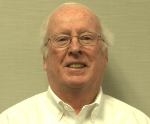 This piece is a new feature for CERM Risk Insights. It is a dialogue with authors who have significant insights on risk and quality management. The intent is to give these authors an opportunity to expand upon important risk and quality topics.
This piece is a new feature for CERM Risk Insights. It is a dialogue with authors who have significant insights on risk and quality management. The intent is to give these authors an opportunity to expand upon important risk and quality topics.
Our first author is Milt Dentch. He is the author of The Rise and Impending Demise of ISO 9001. This is the second part of the interview. Continue reading
#292 – MILT DENTCH: FUTURE OF WORK: QUALITY – JAMES J. KLINE PH.D.
Featured
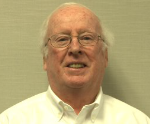 This piece is a new feature for CERM Risk Insights. It is a dialogue with authors who have significant insights on risk and quality management. The intent is to give these authors an opportunity to expand upon important risk and quality topics.
This piece is a new feature for CERM Risk Insights. It is a dialogue with authors who have significant insights on risk and quality management. The intent is to give these authors an opportunity to expand upon important risk and quality topics.
Our first author is Milt Dentch. He is the author of The Rise and Impending Demise of ISO 9001. Below is our review of the book (available on Amazon). Continue reading
#292 – AGILE ERM ARCHITECTURE – HOWARD M. WIENER
Featured
 If you are building a home addition, you would not have a contractor begin demolition where you think you want the addition to go, construct what seems to make sense and hope the project will meet your expectations. You would hire an architect to obtain or recreate plans for the existing structure and draw up plans for the new configuration. Then, she would create a work plan for how the project would be executed, based upon the materials, techniques, equipment, and personnel to be used. Continue reading
If you are building a home addition, you would not have a contractor begin demolition where you think you want the addition to go, construct what seems to make sense and hope the project will meet your expectations. You would hire an architect to obtain or recreate plans for the existing structure and draw up plans for the new configuration. Then, she would create a work plan for how the project would be executed, based upon the materials, techniques, equipment, and personnel to be used. Continue reading
#292 – DERECHO. A BLACK SWAN EVENT? – GEARY SIKICH
Featured
 On 10 August 2020 the US Midwest experienced a Derecho that brought widespread devastation to many areas. A Derecho is a widespread, long-lived, straight-line wind storm that is associated with a fast-moving group of severe thunderstorms known as a mesoscale convective system. Derechos can cause hurricane-force winds, tornadoes, heavy rains, and flash floods. As depicted below the 10 August 2020 Derecho spanned serval states over a 12 hour period. Continue reading
On 10 August 2020 the US Midwest experienced a Derecho that brought widespread devastation to many areas. A Derecho is a widespread, long-lived, straight-line wind storm that is associated with a fast-moving group of severe thunderstorms known as a mesoscale convective system. Derechos can cause hurricane-force winds, tornadoes, heavy rains, and flash floods. As depicted below the 10 August 2020 Derecho spanned serval states over a 12 hour period. Continue reading
#292 – THE NEW NORMAL – AGAIN! – MALCOLM PEART
Featured
 The last ‘new normal’, by definition, was generally recognised in the aftermath of the 2008-2012 global recession. Before that it was the financial crisis of 2007-2008 and before that, at least in Asia, it was in 2004 after SARS. COVID is now causing another ‘new normal’ as people adopt various governmental mandated behavioral changes. Continue reading
The last ‘new normal’, by definition, was generally recognised in the aftermath of the 2008-2012 global recession. Before that it was the financial crisis of 2007-2008 and before that, at least in Asia, it was in 2004 after SARS. COVID is now causing another ‘new normal’ as people adopt various governmental mandated behavioral changes. Continue reading
#292 – TROPICAL DISEASES ARE SPREADING. ARE YOU READY? – ALLEN TAYLOR
Featured
 People who live in temperate and polar climes, far from the equator, have not had to think much about the insect-borne diseases of the tropics. That situation is changing. As the globe warms, the diseases heard about in faraway lands are now on our doorstep. Some have already made it into the front vestibule. Continue reading
People who live in temperate and polar climes, far from the equator, have not had to think much about the insect-borne diseases of the tropics. That situation is changing. As the globe warms, the diseases heard about in faraway lands are now on our doorstep. Some have already made it into the front vestibule. Continue reading
#291 – BEST PRACTICES FOR DRINKING WATER QUALITY REGULATION – MEGAN DYSON & ANNETTE DAVISON
Featured
 Governance is an essential part of managing any resource, but if you were starting from a clean slate, what sort of framework would you use? If you already have regulation in place, how can you test if it is actually fit for purpose, including the social and cultural aspects of the time, and identify what needs to be changed?
Governance is an essential part of managing any resource, but if you were starting from a clean slate, what sort of framework would you use? If you already have regulation in place, how can you test if it is actually fit for purpose, including the social and cultural aspects of the time, and identify what needs to be changed?
ISO 31000 is the international standard of risk management. It applies to any aspect of risk (‘risk’ being ‘the effect of uncertainty on objectives’). Understanding risks associated with a statutory regime is just as important as understanding risks associated with any aspect of managing a coherent and functional society.
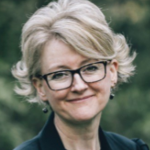 Using ISO 31000, we have thought about what the risks might be to achieving the objective of a fit-for-purpose legal and institutional framework for drinking water quality, and put forward some best practice principles to help address these risks. The principles will help you to assess your current legal framework or if you are starting from scratch, help you to craft a robust and contextually relevant legal framework for regulating drinking water quality. Continue reading
Using ISO 31000, we have thought about what the risks might be to achieving the objective of a fit-for-purpose legal and institutional framework for drinking water quality, and put forward some best practice principles to help address these risks. The principles will help you to assess your current legal framework or if you are starting from scratch, help you to craft a robust and contextually relevant legal framework for regulating drinking water quality. Continue reading
#291 – HOW LESS DATA CAN GIVE YOU BETTER RESULTS – ANDREW SHEVES
Featured
 “Hi, I’m Andrew, and I have a weakness for data.”
“Hi, I’m Andrew, and I have a weakness for data.”
There, I said it.
I love spreadsheets. I love national statistics. I love primary sources.
I could probably have completed my Master’s dissertation without an extension if I had just accepted that cited quotes were valid instead of looking for all the original sources*. And I don’t need to read the last three years of a company’s annual reports before I have a 20-minute call with them. Continue reading
#291 – POOR MANAGEMENT OF KNOWN RISKS IS MAJOR CAUSE OF FAILED PROJECTS – JOHN AYERS
Featured
 Studies show most projects fail due to poor management of known risks. The known risks on a project are:
Studies show most projects fail due to poor management of known risks. The known risks on a project are:
- Scope
- Schedule.
- Cost.
- Quality.
The question is how do we manage known risks better? Known risks can be significantly mitigated with application of basic Project Management methods and processes. Continue reading
#291 – WHAT IS DIGITAL TRANSFORMATION? – HOWARD WIENER & STEPHEN VILLAESCUSA
Featured
 To fully grasp the digital transformation paradigm, it is helpful to have a transformative digital experience. For me, it came purchasing eyeglasses online.
To fully grasp the digital transformation paradigm, it is helpful to have a transformative digital experience. For me, it came purchasing eyeglasses online.
Born with bad eyesight, I have worn glasses since I was two-years old. Every other year, I buy new frames and lenses – a necessary, mundane, and expensive experience. After my eye exam, I selected potential frames from the limited selection at the optometrist’s office. Then I would try them on, examining my profile in the mirror, and soliciting opinions from staff. I would wait weeks for them to be crafted and finally return to pick them up.
 When Costco began selling glasses, the selection improved, the price was better, and the wait time dropped to a week. My customer experience incrementally improved.
When Costco began selling glasses, the selection improved, the price was better, and the wait time dropped to a week. My customer experience incrementally improved.
Recently, searching the web, I found EyeBuyDirect.Com. I registered, typed in my prescription, and found hundreds of designer frames. When I dragged in a picture of my face, I was able examine how the frames looked on me. The website suggested different styles and let me examine them, side-by-side. The process was simple, fast, easy, enjoyable, and 35% cheaper than Costco. I was able to pay with my Amazon account and the glasses were delivered by the USPS in a week. Best-of-all, once my order was complete, I was prompted to donate a free pair of prescription glasses to a needy person in a country or geographic region of my choice. WOW! Continue reading
#291 – PREVENTING DEMENTIA – ALLEN TAYLOR
Featured
 If you are lucky enough to survive Covid-19, as well as heart disease, cancer, and all the other slings and arrows that are directed your way by outrageous fortune, what a downer it would be to lose your mind to Alzheimer’s disease or one of the other forms of dementia. What can you do to avoid that fate? Continue reading
If you are lucky enough to survive Covid-19, as well as heart disease, cancer, and all the other slings and arrows that are directed your way by outrageous fortune, what a downer it would be to lose your mind to Alzheimer’s disease or one of the other forms of dementia. What can you do to avoid that fate? Continue reading
#290 – IGNORING THE COVID WAKE UP CALL OR IN DENIAL – GEARY SIKICH
Featured
 As of 5 August 2020, COVID19 has claimed over 700,000 lives and has over 18 million confirmed cases. Yet, it seems that people are casually disregarding protective measures that have been enacted by governments at all levels. Could it be that confusing information in the early stages of the pandemic contribute to the seemingly casual approach people are taking? Or, could people be numb to the seriousness of this pandemic because they have been conditioned by movies, such as, Contagion, Outbreak, Flu, etc.? Continue reading
As of 5 August 2020, COVID19 has claimed over 700,000 lives and has over 18 million confirmed cases. Yet, it seems that people are casually disregarding protective measures that have been enacted by governments at all levels. Could it be that confusing information in the early stages of the pandemic contribute to the seemingly casual approach people are taking? Or, could people be numb to the seriousness of this pandemic because they have been conditioned by movies, such as, Contagion, Outbreak, Flu, etc.? Continue reading
#290 – FEAR IS THE NEW PANDEMIC – JIM TONEY
Featured
 We moved from the early uncertainties associated with COIV-19 to more knowledge about it, but is fear the new pandemic?[i]
We moved from the early uncertainties associated with COIV-19 to more knowledge about it, but is fear the new pandemic?[i]
“Fear is an insidious and deadly thing. It can warp judgment, freeze reflexes, breed mistakes. Worse, it’s contagious.”[ii]― Jimmy Stewart Continue reading
#290 – WHAT’S YOUR SURVIVAL PLAN IF THERE’S NO VACCINE – PATRICK OW
Featured
 Using the 1918 Spanish flu pandemic as a model, experts have suggested that the COVID-19 outbreak will last between 18 and 24 months.
Using the 1918 Spanish flu pandemic as a model, experts have suggested that the COVID-19 outbreak will last between 18 and 24 months.
A group of researchers at the Center for Infectious Disease Research and Policy (CIDRAP) suggest that the outbreak would not end until 60% to 70% of the human population is immune to the virus. This may take between 18 and 24 months. Continue reading
#290 – DELIVERING OUTCOMES, BUILDING TRUST – JAMES KLINE PH.D.
Featured
 On July 17, 2020, the American Council for Technology – Industry Advisory Council (ACT-IAC) issued a report entitled “Delivering Outcomes, Building Trust”. The ACT-IAC is a non-profit educational organization established to create a “more effective and innovative government”. The report provides some ideas on how the United States Federal government can become “more resilient, adaptable, and responsive.” This piece will look at the report and its recommendations. Continue reading
On July 17, 2020, the American Council for Technology – Industry Advisory Council (ACT-IAC) issued a report entitled “Delivering Outcomes, Building Trust”. The ACT-IAC is a non-profit educational organization established to create a “more effective and innovative government”. The report provides some ideas on how the United States Federal government can become “more resilient, adaptable, and responsive.” This piece will look at the report and its recommendations. Continue reading
#290 – IF I STAY 6 FEET AWAY FROM EVERYBODY, THEN I’M SAFE. RIGHT? – ALLEN TAYLOR
Featured
T he World Health Organization (WHO) and the United States Department of Health and Human Services (HHS.gov) recommend what you should do to protect yourself against Covid-19. The guidelines include:
he World Health Organization (WHO) and the United States Department of Health and Human Services (HHS.gov) recommend what you should do to protect yourself against Covid-19. The guidelines include:
- Wash hands often
- Put 6 feet of distance between yourself and people who don’t live in your household
- Cover mouth and nose with a mask when around others
- Cover coughs and sneezes
- Clean and disinfect surfaces that people touch
- Be alert for symptoms such as fever, cough, and shortness of breath
#289 – HOW TO IDENTIFY AND MANAGE UNCERTAINTIES OF AN UNPREDICTABLE FUTURE – PATRICK OW
Featured
 On 31 December 2019, the World Health Organization (WHO) learned of several cases of severe pneumonia in the Chinese city of Wuhan. This strain of coronavirus has since spread through China and into other countries. WHO later named COVID-19. Continue reading
On 31 December 2019, the World Health Organization (WHO) learned of several cases of severe pneumonia in the Chinese city of Wuhan. This strain of coronavirus has since spread through China and into other countries. WHO later named COVID-19. Continue reading
#289 – PROJECT COMMUNICATIONS – MALCOLM PEART
Featured
 George Bernhard Shaw once said, and it’s now been written down and put on posters and the like: “The problem with communication is the illusion that it has taken place”.
George Bernhard Shaw once said, and it’s now been written down and put on posters and the like: “The problem with communication is the illusion that it has taken place”.
In this ‘Information Age’ we have access to, receive, generate, and send more information than ever before. People can suffer from infoxication as a consequence of ‘information overload’ and decision making has, we are told, become more difficult as a consequence. Continue reading
#289 – CHANGED YOUR ASSUMPTION FOR THE NEW NORMAL YET? – JIM TONEY
Featured
 The assumptions by which you live your life, that underpin your expectations, that serve as unwritten security, and guide your personal life and career have been torn asunder by COVID-19 and societal upheaval.
The assumptions by which you live your life, that underpin your expectations, that serve as unwritten security, and guide your personal life and career have been torn asunder by COVID-19 and societal upheaval.
something accepted as true – merriam-webster.com
People may sense, but perhaps have not yet consciously acknowledged, that these assumptions, have been shredded. Or better yet, turned upside down. Continue reading
#289 – ELECTRIC CAR HIDDEN RISK – JOHN AYERS
Featured
 Fifty years ago, having your own car was a sign of adulthood and your ticket around town. But that is all going to change within the next five to ten years due to rising CO2 levels and a new trend called Transportation as a Service. TaaS sits at the intersection of four technical macro trends. These are:
Fifty years ago, having your own car was a sign of adulthood and your ticket around town. But that is all going to change within the next five to ten years due to rising CO2 levels and a new trend called Transportation as a Service. TaaS sits at the intersection of four technical macro trends. These are:
- Autonomous vehicles
- Electric vehicles
- Connectivity
- Sharing economy
#289 – NEW ALZHEIMER’S TREATMENT HOLDS PROMISE – ALLEN TAYLOR
Featured
 Alzheimer’s Disease (AD) patients and the people who are closest to them, suffer for years—the patient suffers the gradual loss of self and the friends and loved ones watch as the person they have known and loved fades away. This contrasts with the sharp, searing pain of loss that goes along with a fatal heart attack. In that case, the pain is acute, but it is quickly over. Friends can mourn, but in short order they can get on with their lives. With Alzheimer’s disease, friends and loved ones must live with the incremental loss that happens day after day. It is like a train wreck in slow motion. Continue reading
Alzheimer’s Disease (AD) patients and the people who are closest to them, suffer for years—the patient suffers the gradual loss of self and the friends and loved ones watch as the person they have known and loved fades away. This contrasts with the sharp, searing pain of loss that goes along with a fatal heart attack. In that case, the pain is acute, but it is quickly over. Friends can mourn, but in short order they can get on with their lives. With Alzheimer’s disease, friends and loved ones must live with the incremental loss that happens day after day. It is like a train wreck in slow motion. Continue reading
#288 – FEEL GOOD: AN EASY AND EFFECTIVE MINDFULNESS HACK – STEPHEN VILLAESCUSA
Featured
 My 7-year old, second-grade students already understood the “Feel-Good!” technique when I taught it. It involves finding pleasant emotions and then basking in them. I asked these questions: “Think about burying your face into your puppy’s belly or your cat’s fur. Imagine biting into your favorite spaghetti, hamburger, or pizza. Remember the last time you were lovingly hugged. Which senses do freshly baked cookies arouse?” Continue reading
My 7-year old, second-grade students already understood the “Feel-Good!” technique when I taught it. It involves finding pleasant emotions and then basking in them. I asked these questions: “Think about burying your face into your puppy’s belly or your cat’s fur. Imagine biting into your favorite spaghetti, hamburger, or pizza. Remember the last time you were lovingly hugged. Which senses do freshly baked cookies arouse?” Continue reading
#288 – IN RISK MANAGEMENT, IT’S THE DESTINATION, NOT THE JOURNEY – ANDREW SHEVES
Featured
 A while back, I felt that pretty much everything was out of sync and I was highly disorganized. There was a growing list of undone things whether that was around the house, at work, with my family, or at the places where I volunteer.
A while back, I felt that pretty much everything was out of sync and I was highly disorganized. There was a growing list of undone things whether that was around the house, at work, with my family, or at the places where I volunteer.
It was definitely time for a reorganization.
A few weeks later, things were back in order (I even had time to write again), and a big part of my reorganization was refocussing on the systems I use for productivity. Continue reading
#288 – WHERE’S OUR NEXT SHOCK COMING FROM? – GEARY SIKICH
Featured
 The Coronavirus pandemic (COVID19) continues to spread throughout the world despite the best efforts of governments and the medical community. With no vaccine becoming available in the near term and perhaps even in the long term we are faced with growing uncertainty. It seems that ever since the emergence of COVID19 that conflicting advice, information and guidance has exacerbated the situation and created a lack of trust on the part of the public on what measures to take. Wear a mask. Continue reading
The Coronavirus pandemic (COVID19) continues to spread throughout the world despite the best efforts of governments and the medical community. With no vaccine becoming available in the near term and perhaps even in the long term we are faced with growing uncertainty. It seems that ever since the emergence of COVID19 that conflicting advice, information and guidance has exacerbated the situation and created a lack of trust on the part of the public on what measures to take. Wear a mask. Continue reading
#288 – AFTER COVID, WHAT HAPPENS NEXT? – ALLEN TAYLOR
Featured
The SARS-Cov-2 virus causes respiratory symptoms that range from unnoticeable to fatal. After the virus is cleared from a person’s system and is undetectable in a nasal swab test, there are continuing symptoms of fatigue and weakness. That’s bad enough, but it is not the worst possible outcome. Damage to the heart could be a much more serious long-term problem. Continue reading
is cleared from a person’s system and is undetectable in a nasal swab test, there are continuing symptoms of fatigue and weakness. That’s bad enough, but it is not the worst possible outcome. Damage to the heart could be a much more serious long-term problem. Continue reading
#288 – AGILE ENTERPRISE RISK MANAGEMENT – HOWARD M. WIENER
Featured
 Managing enterprises is far more complicated today than ever. The average life span of companies is plummeting. According to a CNBC.com article, Is Technology Killing Off Corporate America, “ . . .The average age of a company listed on the [S&P 500] has fallen from 60 years in the 1950s to less than 20 years now. . .” This was in 2017, prior to COVID and the evolution of technology and business models that has taken place over the last three years. The margin for error in setting and executing your strategy is decreasing while the rate at which critical events occur increases. Continue reading
Managing enterprises is far more complicated today than ever. The average life span of companies is plummeting. According to a CNBC.com article, Is Technology Killing Off Corporate America, “ . . .The average age of a company listed on the [S&P 500] has fallen from 60 years in the 1950s to less than 20 years now. . .” This was in 2017, prior to COVID and the evolution of technology and business models that has taken place over the last three years. The margin for error in setting and executing your strategy is decreasing while the rate at which critical events occur increases. Continue reading
#287 – HAVE THE FAITH TO SEIZE RISK OPPORTUNITIES – PATRICK OW
Featured
 Have faith to seize on opportunities that come your way (but the risk is within us!)
Have faith to seize on opportunities that come your way (but the risk is within us!)
Everyone has opportunities. But it is up to us to seize the opportunities that come our way!
There will be opportunities to build lives, to better ourselves, or to serve the community.
Faith and opportunities
Faith is the complete trust or confidence in someone or something. It is the confident assurance that something we want is going to happen. Faith is the certainty that what we hope for is waiting for us, even though we cannot see it up ahead. Continue reading
#287 – DO YOU REALLY KNOW WHAT YOU’RE PROTECTING? – DAN SHOEMAKER PH.D.
Featured
 I have talked in earlier posts about holistic solutions to cybersecurity problems. But the term “holistic” is actually an empty word. Especially when you couple it with the king of all empty words, “cyber security”. So, let me start this with a couple of necessary definitions. Cyber security is a concatenated term, “cyber,” in essence, of or related to computers, and “security,” protection from threat.” Continue reading
I have talked in earlier posts about holistic solutions to cybersecurity problems. But the term “holistic” is actually an empty word. Especially when you couple it with the king of all empty words, “cyber security”. So, let me start this with a couple of necessary definitions. Cyber security is a concatenated term, “cyber,” in essence, of or related to computers, and “security,” protection from threat.” Continue reading
#287 – GET SMART OF YOUR RISK MITIGATION – ANDREW SHEVES
Featured
 Often, the end of the risk assessment feels like the end of the process and things start to ease off. Unfortunately, this is when the real work begins because, now that you have identified and prioritized your risks, you need to do something about them.
Often, the end of the risk assessment feels like the end of the process and things start to ease off. Unfortunately, this is when the real work begins because, now that you have identified and prioritized your risks, you need to do something about them.
There are several options when it comes to dealing with a risk but it’s risk treatments I want to focus on here. These often go askew when mitigation measures aren’t designed carefully. This wastes resources and the risks aren’t reduced. Continue reading
#287 – QUALITY 4.0: WHAT DOES THIS MEAN FOR THE QUALITY PROFESSION? – JAMES KLINE PH.D.
Featured
 In several pieces for Insights, I have discussed the decline of ISO 9001 certifications, the internal and financial problems ASQ is experiencing and the implications for the quality profession. Recently I was on the ASQ website. There are several references to Quality 4.0. This article will look at Quality 4.0 and its implications for the Quality Profession. It will also provide an update on ASQ’s financial problems and the possibility it will declare bankruptcy. Continue reading
In several pieces for Insights, I have discussed the decline of ISO 9001 certifications, the internal and financial problems ASQ is experiencing and the implications for the quality profession. Recently I was on the ASQ website. There are several references to Quality 4.0. This article will look at Quality 4.0 and its implications for the Quality Profession. It will also provide an update on ASQ’s financial problems and the possibility it will declare bankruptcy. Continue reading
#287 – LESSONS FROM WUHAN ON COVID 19 – ALLEN TAYLOR
Featured
 Covid-19 first arose in Wuhan, China when it jumped from an animal carrier to the first human subject. It was highly infectious and humans, encountering it for the first time, had no immunity against it. Many of the people carrying the infection had no symptoms of disease, causing it to spread silently to large groups of people, who ultimately, thanks to frequent worldwide air travel, spread the disease around the world. Continue reading
Covid-19 first arose in Wuhan, China when it jumped from an animal carrier to the first human subject. It was highly infectious and humans, encountering it for the first time, had no immunity against it. Many of the people carrying the infection had no symptoms of disease, causing it to spread silently to large groups of people, who ultimately, thanks to frequent worldwide air travel, spread the disease around the world. Continue reading
#286 – QUALITY’S JOURNEY TO CREATE ‘SUSTAINED SUCCESS’ – BOB POJASEK PH.D.
Featured
 The initial journey to create “sustained success” got off to a difficult start in 1987 when the intent was for quality managers to implement ISO 9004 followed by ISO 9001 for certification purposes. ISO 9004 was viewed as being associated with TQM. The extra work that was needed to fulfill TQM led organizations to use ISO 9001:1987 alone to certify their processes. Continue reading
The initial journey to create “sustained success” got off to a difficult start in 1987 when the intent was for quality managers to implement ISO 9004 followed by ISO 9001 for certification purposes. ISO 9004 was viewed as being associated with TQM. The extra work that was needed to fulfill TQM led organizations to use ISO 9001:1987 alone to certify their processes. Continue reading
#286 – TAKE A RISK AND ACQUIRE SKILLS FOR FUTURE WORK – JOHN AYERS
Featured
 Today, there is a lot of attention and discussion regarding future work. How will new technology impacts jobs? What will it look like? What jobs will be eliminated? What will the future jobs look like? How should I prepare?
Today, there is a lot of attention and discussion regarding future work. How will new technology impacts jobs? What will it look like? What jobs will be eliminated? What will the future jobs look like? How should I prepare?
It is difficult to identify with any accuracy what jobs will be eliminated and what new jobs will be available. My advice is to focus on skills. What skills will help ensure job security in the future? This is the real question. Continue reading
#286 – IT’S TIME FOR PULL STANDARDS: NOT PUSH! – RICHARD MALLORY
Featured
 It never occurs to those in the quality industry that all of our quality standards violate a primary rule of lean practice – we build them as push systems rather than pull systems! And then we expect them to be a seamless part of our organizational practice. Big wonder that they are not. Continue reading
It never occurs to those in the quality industry that all of our quality standards violate a primary rule of lean practice – we build them as push systems rather than pull systems! And then we expect them to be a seamless part of our organizational practice. Big wonder that they are not. Continue reading
#286 – HAPPINESS @ RISK: WHAT IS UNDER YOUR CONTROL? – STEVE VILLAESCUSA
Featured
Has happiness become a risk factor we should have a mitigation strategy for? As Covid-19 has brusquely demonstrated, sometimes we have little control over our personal situation – even on the best of days. In these unprecedented and unsettled times, there are numerous perils to fret about. Not surprisingly, stress, anxiety, and hopelessness are at historic levels. Continue reading
#286 – WHAT IF ADVANCING AGE DID NOT IMPLY MENTAL DECLINE? – ALLEN TAYLOR
Featured
 If you have been around older people, perhaps your parents or grandparents, you may have noticed that as they got older, it took them a little longer to dredge up the precise word they needed to express a thought, or to remember the name of a person, a place, or perhaps the title of a book that they wanted to recommend to you. Even in the absence of any of the recognized dementias, older people gradually lose some of the cognitive ability that they had at younger ages. Continue reading
If you have been around older people, perhaps your parents or grandparents, you may have noticed that as they got older, it took them a little longer to dredge up the precise word they needed to express a thought, or to remember the name of a person, a place, or perhaps the title of a book that they wanted to recommend to you. Even in the absence of any of the recognized dementias, older people gradually lose some of the cognitive ability that they had at younger ages. Continue reading
#285 – STRUCTURE, SILENCE AND LOTS OF LOTS OF NOTES: HOW TO CONDUCT AN EFFECTIVE INTERVIEW – ANDREW SHEVES
Featured
 “Well, there was the kidnapping. Is that something you’re interested in?”
“Well, there was the kidnapping. Is that something you’re interested in?”
It was our last day of a week-long site security survey. We were meeting with the site manager to wrap up our visit but this was the first time we had heard anything about something as serious as this.
So yes, a kidnapping was something we were very, very interested in learning about…. Continue reading
#285 – PRIMAL FEAR – FEEL IT? – JIM TONEY
Featured
 People are challenged to take action while immersed in an environment of fear brought on by a contagious and deadly virus that enveloped the globe in just two months and compounded by economic and social upheaval, turning the world upside down.
People are challenged to take action while immersed in an environment of fear brought on by a contagious and deadly virus that enveloped the globe in just two months and compounded by economic and social upheaval, turning the world upside down.
What is fear and why should we be concerned about it? Merriam-Webster defines fear as an unpleasant often strong emotion caused by anticipation or awareness of danger. Continue reading
#285 – FAULTY STRATEGY OR FAULTY EXECUTION – PATRICK OW
Featured
 Organisations cannot afford to have a faulty strategy, a faulty strategy execution, or both. Getting them right is vital for their survival especially in today’s crisis and economic downturn.
Organisations cannot afford to have a faulty strategy, a faulty strategy execution, or both. Getting them right is vital for their survival especially in today’s crisis and economic downturn.
Businesses survive and thrive by taking risks. They falter when risks and opportunities are not managed effectively. Continue reading
#285 – WHAT IS YOUR RISK APPETITE? – JOHN AYERS
Featured
 Businesses take risks to pursue opportunities. What is your risk appetite? This question has been asked by companies for years. Risk appetite is the amount and type of risk an organization is able to support in the pursuit of business objectives. Examples of successful high risk appetite companies are: Amazon; Uber; and Tesla. Continue reading
Businesses take risks to pursue opportunities. What is your risk appetite? This question has been asked by companies for years. Risk appetite is the amount and type of risk an organization is able to support in the pursuit of business objectives. Examples of successful high risk appetite companies are: Amazon; Uber; and Tesla. Continue reading
#285 – THE GOVERNMENT IS NOT TELLING THE WHOLE TRUTH ABOUT COVID-19 – ALLEN TAYLOR
Featured
 The governments of most of the world’s countries, as well as the World Health Organization (WHO) have given people advice on how to avoid infection by Covid-19. These measures include:
The governments of most of the world’s countries, as well as the World Health Organization (WHO) have given people advice on how to avoid infection by Covid-19. These measures include:
- Wear a mask over your mouth and nose when in public places
- Wash your hands frequently
- Maintain of distance of 6 feet (2 meters) from other people
- Sanitize surfaces such as doorknobs and kitchen counters with disinfectant
- Sanitize mail and packages delivered to you by postal workers or delivery people
#284 – UNEXPECTED CONNECTION BETWEEN COVID-19 AND DIABETES – ALLEN TAYLOR
Featured
 Covid-19 is not the only pandemic ravaging the world’s population right now. Diabetes is another one—one that we have been dealing with for a long time. There seems to be a connection between the two, and that connection may be deeper than is currently thought. Continue reading
Covid-19 is not the only pandemic ravaging the world’s population right now. Diabetes is another one—one that we have been dealing with for a long time. There seems to be a connection between the two, and that connection may be deeper than is currently thought. Continue reading
#284 – PLANS FOR ISO 9001 – JAMES J. KLINE PH.D.
Featured
 The International Organization for Standardization (ISO) technical committee TC176/TF has developed a “Future Concepts Final Draft” (1). The purpose of the draft is to:
The International Organization for Standardization (ISO) technical committee TC176/TF has developed a “Future Concepts Final Draft” (1). The purpose of the draft is to:
- Explore concept that can impact quality, quality management, or quality management systems.
- Provide guidance and recommendations to ISO/TC 176 committees, sub committees, working groups and task forces on future concepts.
- Provide an input for all groups revising current ISO/TC 176 documents.
#284 – RESKILLING FOR THE VUCA CENTURY – BOB LEONARD & DAVID ROSS
Featured
“The illiterate of the 21st century will not be those who cannot read and write, but those who cannot learn, unlearn, and relearn.” – Alvin Toffler, futurist
This is the first in a series of articles concerning the needs to reskill to meet the challenges of a VUCA world and our imminent climate crisis. In subsequent articles we will dive deeper into reskilling for the effects and opportunities of climate change, reskilling for digital transformation, and reskilling for the evolved style of leadership required. Continue reading
#284 – ACCELERATED HARD TRENDS – DANIEL BURRUS
Featured
#284 – RISK VELOCITY: HOW TO SURVIVE THE TSUNAMI OF REALIZED RISK – PETER HOLTMANN
Featured
 Risks, like tsunamis, start as ripples far away; as they approach us they gather momentum, speed and force. A tsunami making land and causing devastation is a horrific reality; how well you monitor the ripples will decide your emergency plans.
Risks, like tsunamis, start as ripples far away; as they approach us they gather momentum, speed and force. A tsunami making land and causing devastation is a horrific reality; how well you monitor the ripples will decide your emergency plans.
Risk velocity is a relatively new concept within the risk management scene. It strays away from traditional “two-dimensional” risk management practices and offers an extra dimension for consideration: the speed at which risk impacts an organisation. Continue reading
#283 – THIS IS THE BEST TIME TO DO YOUR CORPORATE PLANNING DIFFERENTLY – PATRICK OW
Featured
 This is the best time to do your corporate planning differently
This is the best time to do your corporate planning differently
Steve Jobs envisioned a future state with computers on every worker’s desk. It will be a progressive culture where technology creates more opportunities for employees and a workplace without secretaries. Continue reading
#283 – THE REAL FOUNDATIONS OF QUALITY 4.0: STRUCTURED SYSTEMS MANAGEMENT – RICHARD MALLORY
Featured
 Almost 50 years ago Dr. W. Edwards Deming announced that systems management was fundamental to what we can now call quality science[1], and he introduced a “system of profound knowledge[2]” as a framework for transformation of our organizational work and our entire economy[3]. He said that “An integral part of the system of profound knowledge is appreciation for a system.” But while his system of profound knowledge got a lot of attention for about 10 years, interest waned when no one could figure out how to structure or measure systems. Continue reading
Almost 50 years ago Dr. W. Edwards Deming announced that systems management was fundamental to what we can now call quality science[1], and he introduced a “system of profound knowledge[2]” as a framework for transformation of our organizational work and our entire economy[3]. He said that “An integral part of the system of profound knowledge is appreciation for a system.” But while his system of profound knowledge got a lot of attention for about 10 years, interest waned when no one could figure out how to structure or measure systems. Continue reading
#283 – WHO IS DYING OF COVID-19? – ALLEN TAYLOR
Featured
Unless you have been hiking solo across Antarctica, you are aware that the rest of the world is caught in the grip of a worldwide Covid-19 pandemic. As of June 25, 2020, 9.4 million people across the world have been confirmed to have the disease. As of June 24, 2020, 477,271 of those people have died from the disease. Both numbers are still rising unabated. Continue reading
#283 – A RISK IMPERATIVE FOR AGENCY LEADERS – JAMES KLINE PH.D.
Featured
 In June 2019, the Association for Federal Risk Management publish a document entitled: “Getting Ahead of Risks Before They Become Government Failures: An Imperative for Agency Leaders to Embrace Enterprise Risk Management”. The document states: “Agencies are under increasing pressure to perform their missions more effectively and efficiently, while the types of challenges that government confronts are growing more complex. Continue reading
In June 2019, the Association for Federal Risk Management publish a document entitled: “Getting Ahead of Risks Before They Become Government Failures: An Imperative for Agency Leaders to Embrace Enterprise Risk Management”. The document states: “Agencies are under increasing pressure to perform their missions more effectively and efficiently, while the types of challenges that government confronts are growing more complex. Continue reading
#283 – DECISION POINTS: HOW TO PREPARE FOR BIG DECISIONS – ANDREW SHEVES
Featured
 A decision point is a moment when a significant choice presents itself and the decision made will result in a significant change of course that cannot be undone easily. Moreover, that same choice or option is unlikely to reemerge in the future. The essential elements are that the decision is significant, non-repeatable, and non-reversible. Continue reading
A decision point is a moment when a significant choice presents itself and the decision made will result in a significant change of course that cannot be undone easily. Moreover, that same choice or option is unlikely to reemerge in the future. The essential elements are that the decision is significant, non-repeatable, and non-reversible. Continue reading
#282 – A SOLUTION FOR THE CHANGING NATURE OF WORK – STEPHEN MILLER
Featured
 Much is being written these days about the future of work and the problems it presents. This piece presents one way we could manage this constantly evolving situation.
Much is being written these days about the future of work and the problems it presents. This piece presents one way we could manage this constantly evolving situation.
The world is changing rapidly in so many ways, primarily, but not limited to technology, geopolitics and climate change. There is no attempt to assign priorities here; these factors are all intimately connected and affect the outcome in concert. Continue reading
#282 – KEY SKILLS REQUIRED FOR POST COVID SUCCESS – PATRICK OW
Featured
 The pandemic is delivering a profound shock to the economy. This crisis could last well into 2021 and beyond.
The pandemic is delivering a profound shock to the economy. This crisis could last well into 2021 and beyond.
It will shrink the global economy by 5.2 per cent this year. According to the World Bank, it represents the deepest recession since World War Two, triggering a dramatic rise in extreme poverty. Continue reading
#282 – RADICAL RISK MANAGEMENT – HORST SIMON
Featured
 If you are still trying to Identify all the risks you are exposed to within the context of your business or spend endless hours converting historic data into useless risk reports in an effort to mitigate as much risk as possible for a green light on the road to taking less risk (for less reward); spending a fortune on controls and the digging of trenches for your lines of “defense”…. Fear no more!
If you are still trying to Identify all the risks you are exposed to within the context of your business or spend endless hours converting historic data into useless risk reports in an effort to mitigate as much risk as possible for a green light on the road to taking less risk (for less reward); spending a fortune on controls and the digging of trenches for your lines of “defense”…. Fear no more!
#282 – REMOTE AUDITING: THE 3P’S – ANNETTE DAVISON & SARAH LODER & MATT PARKINSON
Featured
COVID-19 has flipped everything on its head – including the way we undertake water quality management system audits. While ISO 19011 has provisions for remote auditing, it’s not something we normally do in undertaking water quality management system audits – usually we like to physically ‘go out in the field’ as part of our evidence gathering. Water supply systems have big infrastructure and a multitude of management and operational systems, which usually means a requirement for physical inspection. Continue reading
#282 – IS THE KEY TO AGING IN OUR BLOOD? – ALLEN TAYLOR
Featured
 Back in 2005, Irena M. Conboy and colleagues published a paper in Nature detailing a heterochronic parabiosis experiment, that investigated aging in mice. They were investigating whether the blood coursing through the arteries and veins of old animals differed from the blood that kept young animals alive. To perform the experiment, they surgically connected the circulatory system of an old mouse to that of a young one. This caused the blood sustaining the old mouse to be 50% old and 50% young. Continue reading
Back in 2005, Irena M. Conboy and colleagues published a paper in Nature detailing a heterochronic parabiosis experiment, that investigated aging in mice. They were investigating whether the blood coursing through the arteries and veins of old animals differed from the blood that kept young animals alive. To perform the experiment, they surgically connected the circulatory system of an old mouse to that of a young one. This caused the blood sustaining the old mouse to be 50% old and 50% young. Continue reading
#281 – FUTURE OF WORK: COVID-19 AS ACCELERANT – HOWARD WIENER
Featured
 As businesses begin to reopen across the country many are hoping and waiting for life to return to what it was before the virus appeared. In just a few short months people seem to have forgotten that life as we knew it really wasn’t life as we knew it, at all. It was life as we like to think it was and it was already changing at a startling rate. Now, we need to think about what post-pandemic life is going to look like. Continue reading
As businesses begin to reopen across the country many are hoping and waiting for life to return to what it was before the virus appeared. In just a few short months people seem to have forgotten that life as we knew it really wasn’t life as we knew it, at all. It was life as we like to think it was and it was already changing at a startling rate. Now, we need to think about what post-pandemic life is going to look like. Continue reading
#281 – LINKING RISK ASSESSMENTS TO DECISION MAKING – ANDREW SHEVES
Featured
 The point of risk management is to understand and react to the threats and opportunities that might affect your business. The problem is that risk management can often become dislocated from the mainstream business processes. Instead of being integrated into the organization, risk management takes place in a parallel but separate workstream: one that decision-makers dip into occasionally but generally look at as a specialized, technical process. Continue reading
The point of risk management is to understand and react to the threats and opportunities that might affect your business. The problem is that risk management can often become dislocated from the mainstream business processes. Instead of being integrated into the organization, risk management takes place in a parallel but separate workstream: one that decision-makers dip into occasionally but generally look at as a specialized, technical process. Continue reading
#281 – WHEN GOOD PRODUCTS GO BAD – WILL YOUR DECISIONS MAKE IT A PRODUCT WITHDRAWAL, RECALL, OR CRISIS – PETER HOLTMANN
Featured
 Reacting to potential product risks and consumer safety can take many paths, knowing which one to follow relies on good systems and great decisions.
Reacting to potential product risks and consumer safety can take many paths, knowing which one to follow relies on good systems and great decisions.
Consider the following scenario, you pride yourself on the quality of product you produce and sell; then one day you experience a large increase in consumer complaints, your social media accounts are under siege with angry followers, and you have a product in the market that is impacting your reputation and revenue. What you do next will define your company for years to come. Continue reading
#281 – OCCUPATIONAL RISK AND SAFETY MANAGEMENT SYSTEM FOR COVID-19 AT THE WORKPLACE – SHAN SANKARAN
Featured
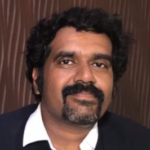 Now that the economy is rising back up after the downfall due to the COVID-19, workplaces and organizations are opening up one by one. Even though we have come past this overwhelming phase of being quarantined, all of us are obviously excited to get out there and resume our normal lives. But when it comes to going back to our normal life of going out and working, it basically means that there will be contact between individuals now. Continue reading
Now that the economy is rising back up after the downfall due to the COVID-19, workplaces and organizations are opening up one by one. Even though we have come past this overwhelming phase of being quarantined, all of us are obviously excited to get out there and resume our normal lives. But when it comes to going back to our normal life of going out and working, it basically means that there will be contact between individuals now. Continue reading
#281 – WHY IS COVID-19 SO DANGEROUS TO OLDER PEOPLE? – ALLEN TAYLOR
Featured
 In a recent issue of the scientific journal Aging, a paper from David Sinclair’s lab noted that among the risk factors associated with bad outcomes of a COVID-19 infection, far and away, the most important risk factor is a person’s age. The statistics are astounding.
In a recent issue of the scientific journal Aging, a paper from David Sinclair’s lab noted that among the risk factors associated with bad outcomes of a COVID-19 infection, far and away, the most important risk factor is a person’s age. The statistics are astounding.
- 80% of confirmed cases who are hospitalized are over 65
- Patients who are over 65 are 23 times more likely to die of COVID-19 than younger patients
- 74% of COVID-19 deaths are of people who are over 65, while those seniors are a much smaller percentage of the population.
#280 – RISK – QUALITY STANDARD REVIEW REQUEST
Featured
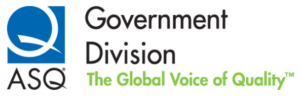 Review of a proposed ANSI Quality of Government Standard invited
Review of a proposed ANSI Quality of Government Standard invited
The ASQ[1] Government Division is inviting professional review of a new Standard for the Quality of Government Operations and Services which is being developing as part of an ANSI[2] Standards package. The package includes a Process Maturity Model and a System Maturity Model that can be used to assess the use of best practice operations within the span of control of every manager and supervisor in any government agency. Continue reading
#280 – DISCOVER NEW OPPORTUNITIES NEVER BEFORE AVAILABLE – DANIEL BURRUS
Featured
 Disruption is a central component of the Anticipatory Organization Model, focusing closely on how Anticipatory Organizations and individuals can look at disruption and see enormous opportunities.
Disruption is a central component of the Anticipatory Organization Model, focusing closely on how Anticipatory Organizations and individuals can look at disruption and see enormous opportunities.
The untimely situation we currently face with COVID-19 is no exception; not only has every industry been touched by the coronavirus pandemic and subsequent lockdown, every country has. There is literally no safe haven from this disease, and businesses both large and small have found themselves in a predicament unlike ever before. Continue reading
#280: WILL THE ARM FALL OFF YOUR SUIT IF YOU PULL THE THREAD?: UNDERSTANDING CORRELATED RISKS – HOWARD WIENER
Featured
 In my previous post, I asserted that many companies are not good at managing risks and I’ll stand by that statement. They’re not good at identifying them, poor at pinpointing dependencies, don’t understand the interactions that create or exacerbate risks and fail to actively quantify and evaluate the effectiveness of their risk management programs. I believe that a number of disciplines should be applied to help address these issues. Continue reading
In my previous post, I asserted that many companies are not good at managing risks and I’ll stand by that statement. They’re not good at identifying them, poor at pinpointing dependencies, don’t understand the interactions that create or exacerbate risks and fail to actively quantify and evaluate the effectiveness of their risk management programs. I believe that a number of disciplines should be applied to help address these issues. Continue reading
#280 – COVID’S IMPACT ON CDC REPUTATIONS – JAMES KLINE PH.D.
Featured
 Charles Seife wrote an article in Slate entitled “The CDC has been on a steady Decline. We’re Just Finally Noticing”. The thesis of the article is that the CDC’s credibility is being damaged by extensive political pressure. He states: “Sometimes an agency doesn’t decline from the zenith like a falling star, but its reputation slouches, bit by bit toward mediocrity.” (1) Continue reading
Charles Seife wrote an article in Slate entitled “The CDC has been on a steady Decline. We’re Just Finally Noticing”. The thesis of the article is that the CDC’s credibility is being damaged by extensive political pressure. He states: “Sometimes an agency doesn’t decline from the zenith like a falling star, but its reputation slouches, bit by bit toward mediocrity.” (1) Continue reading
#280 – KEEPING SHARP IN MIND AS WELL AS BODY – ALLEN TAYLOR
Featured
 Yesterday, as I do every day, I collected our mail from our mailbox at the end of our driveway. I didn’t look at it. I just carried it into the house so my wife could wipe it off with a sanitizing wipe. Thanks, COVID-19 for providing some unneeded hassle! Anyway, my wife, Joyce, read the envelopes and discovered that some were addressed to people she didn’t know. Continue reading
Yesterday, as I do every day, I collected our mail from our mailbox at the end of our driveway. I didn’t look at it. I just carried it into the house so my wife could wipe it off with a sanitizing wipe. Thanks, COVID-19 for providing some unneeded hassle! Anyway, my wife, Joyce, read the envelopes and discovered that some were addressed to people she didn’t know. Continue reading
#279 – CORONAVIRUS: ASSESSING RISK AND PLANNING INITIATIVES – GEARY SIKICH
Featured
 Coronavirus seems to be spreading quicker than previous pandemic potential viruses, i.e., H5N1, H7N1, SARS, Ebola, MERS, etc. Could this be the long awaited/anticipated threat realization, or is it becoming a media driven phenomenon? Needless to say, planners should be implementing some assessment analysis regarding the potential for impacting business operations. Here is a brief look back at one of my articles from 2006, entitled, “Pre-Pandemic Planning: Business Continuity Perspectives“, when Bird Flu (H5N1) was the hot topic: Continue reading
Coronavirus seems to be spreading quicker than previous pandemic potential viruses, i.e., H5N1, H7N1, SARS, Ebola, MERS, etc. Could this be the long awaited/anticipated threat realization, or is it becoming a media driven phenomenon? Needless to say, planners should be implementing some assessment analysis regarding the potential for impacting business operations. Here is a brief look back at one of my articles from 2006, entitled, “Pre-Pandemic Planning: Business Continuity Perspectives“, when Bird Flu (H5N1) was the hot topic: Continue reading
#279 – OUR DESTINATION IS RESILIENCE – VICTOR DEYGLIO
Featured
 Our destination is resilience. It requires a new way to think, decide, plan and act. It demands flexibility and fortitude to rebound, adapt, innovate, and lead. So what makes us resilient?
Our destination is resilience. It requires a new way to think, decide, plan and act. It demands flexibility and fortitude to rebound, adapt, innovate, and lead. So what makes us resilient?
Generally, resilience is about adapting in the face of adversity, trauma, tragedy, threats or significant sources of stress. Resilient people are aware of situations, of their own reactions and of the behavior of those around them. Resilient people meet the world head-on with eyes wide open. Continue reading
#279 – COVID 19: BLAME IS FOR GOD AND SMALL CHILDREN – JOSEPH PARIS
Featured
 Unless you are a person that firmly believes there will be a second wave – or even that there might be a second wave – the reactions and measures taken to the COVID-19 pandemic are starting to calm down and the world is beginning to unwind the measures that have been put in place; albeit to varying degrees and velocities and with little consistency. Continue reading
Unless you are a person that firmly believes there will be a second wave – or even that there might be a second wave – the reactions and measures taken to the COVID-19 pandemic are starting to calm down and the world is beginning to unwind the measures that have been put in place; albeit to varying degrees and velocities and with little consistency. Continue reading
#279 – YOUR RISK ASSESSMENT’S A THERMOMETER, NOT A CRYSTAL BALL! – ANDREW SHEVES
Featured
 If you’re cooking, you need a way to tell how hot the oven is. You won’t be able to tell the difference between 275F and 325F just by sticking your hand inside – both are going to feel hot to you – but this is the difference between a perfect, crunchy yet chewy meringue and something that’s dry and explodes into a pile of dust. So we use a thermometer to give us the information we need. Continue reading
If you’re cooking, you need a way to tell how hot the oven is. You won’t be able to tell the difference between 275F and 325F just by sticking your hand inside – both are going to feel hot to you – but this is the difference between a perfect, crunchy yet chewy meringue and something that’s dry and explodes into a pile of dust. So we use a thermometer to give us the information we need. Continue reading
#279 – DOES GOVERNMENT POLICY AFFECT COVID DEATH RATE?: ASK THE NORDIC COUNTRIES – ALLEN TAYLOR
Featured
 Norway, Finland, and Denmark all instituted lockdown policies.
Norway, Finland, and Denmark all instituted lockdown policies.
Sweden did not. It is said that a picture is worth a thousand words.
I’ll just show one picture and leave it at that. Continue reading
#278 – COVID 19 VACCINE: NOW WHAT? – GEARY SIKICH
Featured
 The rush to develop a vaccine for COVID19 is making headlines on a daily basis. But have we asked the right questions? Let us say that a vaccine is discovered and it is proven effective. The world rejoices! We have beaten the coronavirus. Or have we? Continue reading
The rush to develop a vaccine for COVID19 is making headlines on a daily basis. But have we asked the right questions? Let us say that a vaccine is discovered and it is proven effective. The world rejoices! We have beaten the coronavirus. Or have we? Continue reading
#278 – IN COVID TIME, IS YOUR TUCHIS HANGING OUT? – HOWARD WIENER
Featured
 Only when the tide goes out do you discover who’s been swimming naked.”
Only when the tide goes out do you discover who’s been swimming naked.”
– Warren Buffett
The current pandemic has wreaked profound dislocation on businesses throughout the world and upended societal norms as we know them. It may have been an unpredictable, ‘black swan’ event that will not recur anytime soon, though that’s open to discussion, but it’s worth evaluating your risk management practices to see whether you could have done better. Continue reading
#278 – NEW NORM FOR STAFFING PROJECTS – JOHN AYERS
Featured
 The COVID-19 pandemic has changed the world. Social distancing, face masks, confinement at home and other restrictions is the new norm. This will be the case at least for the foreseeable future as the economy re-opens. The long-term effects are yet to be determined. One change that is likely to emerge is to find a more efficient, less costly way to perform work with minimal workers to make up for lost revenue. Continue reading
The COVID-19 pandemic has changed the world. Social distancing, face masks, confinement at home and other restrictions is the new norm. This will be the case at least for the foreseeable future as the economy re-opens. The long-term effects are yet to be determined. One change that is likely to emerge is to find a more efficient, less costly way to perform work with minimal workers to make up for lost revenue. Continue reading
#278 – STRATEGY + EXECUTION = SUCCESS – PATRICK OW
Featured
 As COVID-19 has disrupted life all over the globe, organisations are forced to significantly change and adapt to the ever-changing customer attitudes and preferences resulting from the pandemic.
As COVID-19 has disrupted life all over the globe, organisations are forced to significantly change and adapt to the ever-changing customer attitudes and preferences resulting from the pandemic.
The competitive playing field and business environment have been reset. It is now back to square one for many businesses. Businesses have to operate like a start-up, big and small. And they have to start at the same time when governments relax their social isolation requirements. Continue reading
#278 – STAYING FIT IN THE NEW NORMAL – ALLEN TAYLOR
Featured
 Back in the old days before COVID-19, many of us had routines that we practiced, to keep healthy.
Back in the old days before COVID-19, many of us had routines that we practiced, to keep healthy.
- Some of us went to the local gym and lifted weights, ran on a treadmill, or worked out on elliptical machines
- Some ran around the neighborhood with our fitness-minded friends, and then retired to a pub to socialize
- Some participated in road races with several hundred or perhaps several thousand of our closest friends, raising our arms in triumph as we crossed the finish line
#277 – NEW PROJECT FRAMEWORK FOR LONG DURATION PROJECTS – JOHN AYERS
Featured
 The Central Artery/Tunnel Project, known as the Big Dig in Boston, originally was planned to take 10 years to complete for a budget of $2.5B. It actually took 30 years and cost $14.8 B. The traditional project framework used was inadequate for a long duration project. A new project framework, I call Adaptive Rolling Wave, is needed. It is a combination of the Adaptive Project and Rolling Wave framework, that is more suited for a long duration project because it breaks down the project into a number of smaller projects. Continue reading
The Central Artery/Tunnel Project, known as the Big Dig in Boston, originally was planned to take 10 years to complete for a budget of $2.5B. It actually took 30 years and cost $14.8 B. The traditional project framework used was inadequate for a long duration project. A new project framework, I call Adaptive Rolling Wave, is needed. It is a combination of the Adaptive Project and Rolling Wave framework, that is more suited for a long duration project because it breaks down the project into a number of smaller projects. Continue reading
#277 – EDUCATION AND THE NOT QUITE PROFESSION OF CYBER SECURITY – DAN SHOEMAKER
Featured
 In my last post, I laid out the Yogi Berra theorem; to wit, “You aren’t secure, if you aren’t secure.” I also pointed out that cybersecurity is fragmented into a number of camps, all of whom claim that they have the answer, but none of whom address all of the problem. Continue reading
In my last post, I laid out the Yogi Berra theorem; to wit, “You aren’t secure, if you aren’t secure.” I also pointed out that cybersecurity is fragmented into a number of camps, all of whom claim that they have the answer, but none of whom address all of the problem. Continue reading
#277 – THE NEW NORMAL: WHAT WAS THE OLD ONE? – MALCOLM PEART
Featured
 Working From Home (WFH)…just one of the things that the “New Normal” will bring according to a few voices from the populations of various workforces who have contributed to economies during lockdowns. People seem to have enjoyed the utopia of ‘flexible’ working hours with a freedom to work when they want, attending virtual meetings and collaborating in on-line virtual offices. Continue reading
Working From Home (WFH)…just one of the things that the “New Normal” will bring according to a few voices from the populations of various workforces who have contributed to economies during lockdowns. People seem to have enjoyed the utopia of ‘flexible’ working hours with a freedom to work when they want, attending virtual meetings and collaborating in on-line virtual offices. Continue reading
#277 – ADDRESS YOUR LOI BEFORE YOUR ROI – ANDREW SHEVES
Featured
 As a risk manager, you will often be asked to explain the RoI (return on investment) of you, your team, even the whole risk management program.
As a risk manager, you will often be asked to explain the RoI (return on investment) of you, your team, even the whole risk management program.
Effective risk management can help an organization grasp an opportunity and realizing an upside risk should generate a positive RoI. Continue reading
#277 – WHAT CAUSES ALZHEIMER’S DISEASE? THE ANSWER IS SIMPLE – ALLEN TAYLOR
Featured
 Alzheimer’s disease (AD) is one of the conditions that humans fear the most. It is horrible enough, for a person to leave the land if the living in an automobile crash or with a sudden heart attack. AD is far worse. People gradually lose their memory, their ability to function, and their very identity, to the ravages of the disease. After decades of study, there is still no consensus on what causes AD, but recent findings are revealing that, unlike infectious diseases that are caused by a single pathogenic agent, there are multiple contributing factors. Continue reading
Alzheimer’s disease (AD) is one of the conditions that humans fear the most. It is horrible enough, for a person to leave the land if the living in an automobile crash or with a sudden heart attack. AD is far worse. People gradually lose their memory, their ability to function, and their very identity, to the ravages of the disease. After decades of study, there is still no consensus on what causes AD, but recent findings are revealing that, unlike infectious diseases that are caused by a single pathogenic agent, there are multiple contributing factors. Continue reading
#276 – MAKING RISK MANAGEMENT MORE EFFECTIVE, RELEVANT, AND VALUE ADDING – PATRICK OW
Featured
 This is where the achievement of objectives must be translated into tangible successes that are linked to positive outcomes.
This is where the achievement of objectives must be translated into tangible successes that are linked to positive outcomes.
Growth for growth’s sake is meaningless. Achieving objectives for the sake of it is meaningless unless you want to game the system and get your financial bonuses by meeting some meaningless performance targets. It becomes a meaningless compliance exercise. Continue reading
#276 – IT’S ALL ABOUT JOBS! – JOHN AYERS
Featured
 COVID 19 throws a curve ball in the path of life and job security. If you compare life as a walk through a forest, then COVID-19 is a high stone wall (curve ball) along the path of life. Do you stop and retreat or go over or around it and continue your journey? I think you get through the pandemic and continue along the path back to job security and low unemployment. Continue reading
COVID 19 throws a curve ball in the path of life and job security. If you compare life as a walk through a forest, then COVID-19 is a high stone wall (curve ball) along the path of life. Do you stop and retreat or go over or around it and continue your journey? I think you get through the pandemic and continue along the path back to job security and low unemployment. Continue reading
#276 – WHAT TO EXPECT FROM THE COVID 19 RECOVERY? – VICTOR GRANADOS
Featured
 I have been following the situation with the COVID-19 pandemic since the start and I have developed some insights I think the Supply Chain community might find useful.
I have been following the situation with the COVID-19 pandemic since the start and I have developed some insights I think the Supply Chain community might find useful.
A little bit of background how I started accumulating all this information. From the last part of 2019 until mid-January, I had a project that involved a long commute and to pass the time I started listening news podcasts. Continue reading
#276 – ICELAND SHOWS HOW TO RESPOND TO THE PANDEMIC – ALLEN TAYLOR
Featured
 The COVID-19 pandemic has ripped through country after country after first emerging in Wuhan, China in December 2019. It has exposed for all to see, how poorly prepared most countries have been at coping with a highly infectious disease, let alone stamping it out. One country, however, stands out as one that responded early and effectively to the threat. A paper that recently appeared in the New England Journal of Medicine (NEJM) describes the spread of the SARS-CoV-2 virus in Iceland, and how the medical establishment there dealt with the infection. Continue reading
The COVID-19 pandemic has ripped through country after country after first emerging in Wuhan, China in December 2019. It has exposed for all to see, how poorly prepared most countries have been at coping with a highly infectious disease, let alone stamping it out. One country, however, stands out as one that responded early and effectively to the threat. A paper that recently appeared in the New England Journal of Medicine (NEJM) describes the spread of the SARS-CoV-2 virus in Iceland, and how the medical establishment there dealt with the infection. Continue reading
#276 – WHO DECIDES THE NEW NORMAL? – STEPHEN VILLAESCUSA & STEVEN BRADT
Featured
 On April 20, a group of ICU Healthcare workers in Phoenix counter-protested people demanding Arizona’s governor reopen the state. In the face of verbal assault and bluster from the protestors, the nurses wearing scrubs and respiratory masks stood silently with arms crossed, making a strong statement against prematurely exposing people to COVID-19. Since then the photo has gone viral. Continue reading
On April 20, a group of ICU Healthcare workers in Phoenix counter-protested people demanding Arizona’s governor reopen the state. In the face of verbal assault and bluster from the protestors, the nurses wearing scrubs and respiratory masks stood silently with arms crossed, making a strong statement against prematurely exposing people to COVID-19. Since then the photo has gone viral. Continue reading
#275 – WHAT HELPS IN DIFFICULT TIMES: WHILE STAFF IS BEING LAID OFF – ZUBAIR ANWAR
Featured
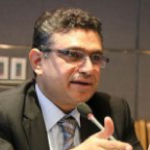 Recent COVID-19 pandemic has caused havoc and chain of economic downturn is hitting the world. Several hundreds of thousands employees are being laid off following the industry shutdowns and filing of bankruptcy by the organizations. This situation is pushing the unemployed people on how to get new jobs since the petty aid they are receiving is not sufficient to maintain the living standards. Continue reading
Recent COVID-19 pandemic has caused havoc and chain of economic downturn is hitting the world. Several hundreds of thousands employees are being laid off following the industry shutdowns and filing of bankruptcy by the organizations. This situation is pushing the unemployed people on how to get new jobs since the petty aid they are receiving is not sufficient to maintain the living standards. Continue reading
#275 – CORONAVIRUS PANDEMIC UNKNOWN RISK – JOHN AYERS
Featured
 I was shocked to find out about our drug and medical supplies reliance on China, a dangerous risk to the U.S. I believe most Americans were also shocked. I believe this revelation is a game changer and the American people will insist on change.
I was shocked to find out about our drug and medical supplies reliance on China, a dangerous risk to the U.S. I believe most Americans were also shocked. I believe this revelation is a game changer and the American people will insist on change.
CHINA’S MONOPOLY ON U.S. DRUG AND MEDICAL SUPPLIES RISK Continue reading
#275 – RISKS INTRODUCED BY RISK ASSESSMENT – DUKE OKES
Featured
 While the past 20 years has seen risk management spread from primarily the financial industry to now being utilized in nearly all sectors, it’s become more evident that much of these efforts have failed to prevent some very serious failures. Part of the reason is the increased complexity of systems and interconnections, but some of the failures can also be attributed to the risk management process itself. Continue reading
While the past 20 years has seen risk management spread from primarily the financial industry to now being utilized in nearly all sectors, it’s become more evident that much of these efforts have failed to prevent some very serious failures. Part of the reason is the increased complexity of systems and interconnections, but some of the failures can also be attributed to the risk management process itself. Continue reading
#275 – BREAKING OUT OF LOCKDOWN – ALLEN TAYLOR
Featured
 The world has been locked down for several weeks now, some countries longer than others. As the lockdown continues, economic consequences mount.
The world has been locked down for several weeks now, some countries longer than others. As the lockdown continues, economic consequences mount.
- Many businesses cannot sell their products and services
- People cannot buy many products and services
- People who cannot work from home have lost their jobs
- People’s normal routine has been seriously disrupted
#275 – REDEFINE RISK IN THE FACE OF THE UNKNOWN – DAN BURRUS
Featured
In the past, organizations have pr acticed agility more than anything else because it is easy to simply pivot and put out small fires as they arise.
acticed agility more than anything else because it is easy to simply pivot and put out small fires as they arise.
But with the world facing a global pandemic, statewide lock downs here in the United States, and a once booming economy now seemingly frozen in time, organizations both large and small are caught in the blaze as those small fires are now an uncontrollable inferno of a great unknown. Continue reading
#274 – CORONAVIRUS UNCERTAINTY AND THE BUREAUCRACY – JAMES KLINE PH.D.
Featured
 In his book “Willful Ignorance: The Mismeasurement of Uncertainty”, Herbert I. Weisberg notes: “Medical research is often held up as the paragon of statistical research methodology. Evidence-based medicine, based on randomized clinical trials, can provide proof of the effectiveness and safety of various drugs and other therapies.” (1) He goes on to note that clinical practitioners, who’s judgement is informed by evidence-based data, are finding little in the research that is useful. Continue reading
In his book “Willful Ignorance: The Mismeasurement of Uncertainty”, Herbert I. Weisberg notes: “Medical research is often held up as the paragon of statistical research methodology. Evidence-based medicine, based on randomized clinical trials, can provide proof of the effectiveness and safety of various drugs and other therapies.” (1) He goes on to note that clinical practitioners, who’s judgement is informed by evidence-based data, are finding little in the research that is useful. Continue reading
#274 – POST COVID: FEAR AND LOATHING IN PANDEMIA – MALCOLM PEART
Featured
 The risk of a pandemic is not an unknown unknown. In the 2019 World Economic Forum’s Global Risk Report it ranked at a less than average likelihood with a more than average impact. Not a bad assessment but the causes and consequences are difficult to evaluate. There is a barrage of statistical data by country; a lack of knowledge and changing opinions which generates misinformation that is then clouded by journalistic sensationalism in the hunt for yet more breaking news and a spot on the TV. Continue reading
The risk of a pandemic is not an unknown unknown. In the 2019 World Economic Forum’s Global Risk Report it ranked at a less than average likelihood with a more than average impact. Not a bad assessment but the causes and consequences are difficult to evaluate. There is a barrage of statistical data by country; a lack of knowledge and changing opinions which generates misinformation that is then clouded by journalistic sensationalism in the hunt for yet more breaking news and a spot on the TV. Continue reading
#274 – THE RISKS THAT GO WITH GLOBALIZATION – JOSEPH PARIS
Featured
 It is undoubtedly and incontrovertibly true that global extreme poverty has declined as capitalism has driven globalization – the trade between and among nations – to increase over time. Certainly, there are arguments to be made that the growth in wealth has also been increasingly concentrated in the hands of fewer people, but the world as a whole has benefited. The charts below from Our World in Data, showing the number of people living in extreme poverty from 1820 to present, clearly demonstrate that the economic benefit of globalization has been as positive as it has been apparent Continue reading
It is undoubtedly and incontrovertibly true that global extreme poverty has declined as capitalism has driven globalization – the trade between and among nations – to increase over time. Certainly, there are arguments to be made that the growth in wealth has also been increasingly concentrated in the hands of fewer people, but the world as a whole has benefited. The charts below from Our World in Data, showing the number of people living in extreme poverty from 1820 to present, clearly demonstrate that the economic benefit of globalization has been as positive as it has been apparent Continue reading
#274 – NOW YOU UNDERSTAND YOUR RISKS: WHAT’S NEXT? – ANDREW SHEVES
Featured
 Naturally, a lot of time and effort in risk management goes into understanding the risks that you face. After all, if you don’t understand what you’re up against, there’s not a lot of risk management to be done. However, even when you complete a comprehensive risk assessment, this is just the beginning of the process. Now the real work starts and you have to answer the big question. Continue reading
Naturally, a lot of time and effort in risk management goes into understanding the risks that you face. After all, if you don’t understand what you’re up against, there’s not a lot of risk management to be done. However, even when you complete a comprehensive risk assessment, this is just the beginning of the process. Now the real work starts and you have to answer the big question. Continue reading
#274 – DOES EXERCISE PROTECT AGAINST COVID 19 – ALLEN TAYLOR
Featured
 Perhaps you remember the old aphorism “Exercise is the best medicine.” For at least the past 40 years, regular exercise has been universally recognized as being a healthful thing. Many people such as the late Jack LaLanne, who died at age 96, have been promoting exercise much longer than that. It’s clear that regular exercise protects people from many of the impairments that otherwise seem to be an inevitable consequence of aging. Continue reading
Perhaps you remember the old aphorism “Exercise is the best medicine.” For at least the past 40 years, regular exercise has been universally recognized as being a healthful thing. Many people such as the late Jack LaLanne, who died at age 96, have been promoting exercise much longer than that. It’s clear that regular exercise protects people from many of the impairments that otherwise seem to be an inevitable consequence of aging. Continue reading
#273 – BLACK SWANS AND THE CORONAVIRUS – JAMES KLINE PH.D.
Featured
 The term Black Swan has been used frequently. This is particularly so, with respect to the Coronavirus. In an earlier piece, I discussed the term Black Swan. Given the increased use of the term in the current circumstances, it is worth revisiting the concept. Continue reading
The term Black Swan has been used frequently. This is particularly so, with respect to the Coronavirus. In an earlier piece, I discussed the term Black Swan. Given the increased use of the term in the current circumstances, it is worth revisiting the concept. Continue reading
#273 – QUALITY RISK MANAGEMENT – PAUL SIMPSON
Featured
 There is a continuing discussion of the difference between risk management and quality management. Some believe they are the same thing while others say there is no area of overlap. The article is not intended to be an exercise in wordplay, it is my personal view of how ISO 9001 covers aspects of managing quality risk and, at the same time, is not a general risk management standard. Continue reading
There is a continuing discussion of the difference between risk management and quality management. Some believe they are the same thing while others say there is no area of overlap. The article is not intended to be an exercise in wordplay, it is my personal view of how ISO 9001 covers aspects of managing quality risk and, at the same time, is not a general risk management standard. Continue reading
#273 – BUSINESS RECOVERY POST COVID 19 – PATRICK OW
Featured
 [This article is the third in my COVID-19 series, helping organizations and people conquer the crisis. The first two can be found here and here.]
[This article is the third in my COVID-19 series, helping organizations and people conquer the crisis. The first two can be found here and here.]
After the initial response to the emergence of COVID-19, businesses will have to organize themselves to survive the impact of COVID-19. Continue reading
#273 – KEEP THE BALL ROLLING: INTERVENTIONS FOR SUSTAINING SME DURING AND AFTER COVID 19 – ZUBAIR ANWAR
Featured
 Special circumstances require specific ways of management. Current COVID-19 has hit the world very hard and caused major shutdown of the industry worldwide besides the fact that the majority of population has been forced to remain at home in a lockdown state. Continue reading
Special circumstances require specific ways of management. Current COVID-19 has hit the world very hard and caused major shutdown of the industry worldwide besides the fact that the majority of population has been forced to remain at home in a lockdown state. Continue reading
#273 – PREVENTION AND TREATMENT OF COVID 19 – ALLEN TAYLOR
Featured
 Over two million people around the world have become infected with the SARS-CoV-2 coronavirus, and so far, over one hundred thousand of those have died. The COVID-19 disease has been so devastating because it is easily transmitted, and a carrier of the disease may initially show no symptoms, leading to exponential spread. Continue reading
Over two million people around the world have become infected with the SARS-CoV-2 coronavirus, and so far, over one hundred thousand of those have died. The COVID-19 disease has been so devastating because it is easily transmitted, and a carrier of the disease may initially show no symptoms, leading to exponential spread. Continue reading
#272 – CHOOSING THE DELIVERY METHOD FOR A CONSTRUCTION PROJECT CAN BE RISKY – JOHN AYERS
Featured
 The Central Artery/Tunnel Project, known as the Big Dig in Boston, selected probably the riskiest delivery method which helped cause the massive schedule and cost growth it experienced. The delivery method is called DBB (design bid build). This article is not about the Big Dig but it is about the risks involved in selecting a delivery method for your construction project. Continue reading
The Central Artery/Tunnel Project, known as the Big Dig in Boston, selected probably the riskiest delivery method which helped cause the massive schedule and cost growth it experienced. The delivery method is called DBB (design bid build). This article is not about the Big Dig but it is about the risks involved in selecting a delivery method for your construction project. Continue reading
#272 – THE FIRST PANDEMIC WAR? – MALCOLM PEART
Featured
 COVID-19 is real. It’s affecting the entire world and, being a virus with no ‘intelligence’, it has no clue that it is wreaking havoc on our sophisticated life form that also infects, or is it inhabits, this planet Earth. Some say that we are at war with the virus, and they use nationalistic appeals to the masses and describe the virus as virulent, insidious, unrelenting etc. But are we really all at war, or are warmonger advocates merely beating their war drums so that they may manage the outcome? Continue reading
COVID-19 is real. It’s affecting the entire world and, being a virus with no ‘intelligence’, it has no clue that it is wreaking havoc on our sophisticated life form that also infects, or is it inhabits, this planet Earth. Some say that we are at war with the virus, and they use nationalistic appeals to the masses and describe the virus as virulent, insidious, unrelenting etc. But are we really all at war, or are warmonger advocates merely beating their war drums so that they may manage the outcome? Continue reading
#272 – HOW TO PREVENT WORK BURNOUT DURING THE COVID 19 PANDEMIC – RAPHAEL AMARUBE
Featured
 The world is facing a lot of challenges in this COVID-19 pandemic. Some of these challenges emerge from the imposed social distancing and isolation. It has greatly affected what we love to do, where we want to be, and who we want to be with. Many companies are switching to remote work to protect their employees, and help minimize disruptions and keep operations running as close to normal as possible. Continue reading
The world is facing a lot of challenges in this COVID-19 pandemic. Some of these challenges emerge from the imposed social distancing and isolation. It has greatly affected what we love to do, where we want to be, and who we want to be with. Many companies are switching to remote work to protect their employees, and help minimize disruptions and keep operations running as close to normal as possible. Continue reading
#272 – YOU CAN REDUCE CONSEQUENCE – RIGHT? – ANNETTE DAVISON & SARAH LODER
Featured
 Over the years we’ve heard many people state that a control cannot modify consequence – especially in the public health space. Well, we’ve been considering this a lot lately and we just want to put a common sense lens on this statement. Here we have a look at the importance of understanding your controls in context, and understanding what controls modify which part of the Likelihood x Consequence equation.
Over the years we’ve heard many people state that a control cannot modify consequence – especially in the public health space. Well, we’ve been considering this a lot lately and we just want to put a common sense lens on this statement. Here we have a look at the importance of understanding your controls in context, and understanding what controls modify which part of the Likelihood x Consequence equation.
Risk Control Continue reading
#272 – HOW MIGHT YOU CONTRACT COVID 19? – ALLEN TAYLOR
Featured
 I probably do not need to tell you that if a person coughs anywhere near you, you should immediately make yourself scarce. Droplets in the air containing virus particles are spreading out and wafting their way toward you. Even if the person coughing shows none of the symptoms of COVID-19, such as fever, dry cough, or headache, they could have a mild case, or even exhibit no symptoms at all, yet still spread the virus to you. Continue reading
I probably do not need to tell you that if a person coughs anywhere near you, you should immediately make yourself scarce. Droplets in the air containing virus particles are spreading out and wafting their way toward you. Even if the person coughing shows none of the symptoms of COVID-19, such as fever, dry cough, or headache, they could have a mild case, or even exhibit no symptoms at all, yet still spread the virus to you. Continue reading
#271 – PANDEMIC. PANDEMONIUM. RISK MANAGEMENT – MALCOLM PEART
Featured
 COVID-19 is now among the ranks of The Black Death, Spanish ‘Flu, and SARS. Another submicroscopic demon is attacking humanity and bringing the mankind of this Information Age to its knees both physically and economically despite its insignificant size.
COVID-19 is now among the ranks of The Black Death, Spanish ‘Flu, and SARS. Another submicroscopic demon is attacking humanity and bringing the mankind of this Information Age to its knees both physically and economically despite its insignificant size.
Viruses have been around longer than man and, when we become part of a future paleaontological record, they will still be plaguing whatever species takes over from us. Continue reading
#271 – WHY HAS COVID 19 EXPLODED IN ITALY, SPAIN, AND NOW US? – ALLEN TAYLOR
Featured
 In some countries, most notably Italy, Spain, and the United States, confirmed COVID-19 cases are exploding and overcoming the ability of the infrastructure to care for the afflicted. In others, such as China and South Korea, the number of new cases has either been reduced to a trickle, or never took off in the first place. What’s the difference? What are China and South Korea doing that Italy, Spain, and the United States are not? Continue reading
In some countries, most notably Italy, Spain, and the United States, confirmed COVID-19 cases are exploding and overcoming the ability of the infrastructure to care for the afflicted. In others, such as China and South Korea, the number of new cases has either been reduced to a trickle, or never took off in the first place. What’s the difference? What are China and South Korea doing that Italy, Spain, and the United States are not? Continue reading
#271 – NEVER LET A SERIOUS CRISIS GO TO WASTE – JOSEPH PARIS
Featured
 In an interview with the Wall Street Journal on November 19,2008, Rahm Emanuel was quoted as saying; “You never want a serious crisis to go to waste. And what I mean by that [is] it’s an opportunity to do things that you think you could not before.” Continue reading
In an interview with the Wall Street Journal on November 19,2008, Rahm Emanuel was quoted as saying; “You never want a serious crisis to go to waste. And what I mean by that [is] it’s an opportunity to do things that you think you could not before.” Continue reading
#271 – WHAT HATH GOD WROUGHT: A MODEST PROPOSAL – DAN SHOEMAKER
Featured
 A while back, I was on a panel where speaker-after-speaker stood up and pitched their virtual doodad, without mentioning the ways that it could be exploited. But still, why would anybody want to talk about something as dreary as security with all of the “benefits!?” Well, according to Juniper Research, in 2015 cybercrime cost the world five-hundred-billion dollars, which increased to two-trillion in 2018. If you’re keeping score, that’s roughly the GDP of France. So yes indeed, maybe security is something you should think about when you deploy your next technological “innovation.” Continue reading
A while back, I was on a panel where speaker-after-speaker stood up and pitched their virtual doodad, without mentioning the ways that it could be exploited. But still, why would anybody want to talk about something as dreary as security with all of the “benefits!?” Well, according to Juniper Research, in 2015 cybercrime cost the world five-hundred-billion dollars, which increased to two-trillion in 2018. If you’re keeping score, that’s roughly the GDP of France. So yes indeed, maybe security is something you should think about when you deploy your next technological “innovation.” Continue reading
#271 – COVID 19: MANAGING YOUR WATER UTILITY RISKS – ANNETTE DAVISON
Featured
 I’ve written before about the need to understand internal and external context on the risk management process. But in a COVID-19 era, what are the things that water utilities need to understand before they can determine the risk on their objectives – what do you need to be doing differently, if anything? Here I take a look at the importance of understanding your products and services, your objectives, the risk to your objectives, what you should be looking at in managing the issues and how you know that the risk is being managed. Continue reading
I’ve written before about the need to understand internal and external context on the risk management process. But in a COVID-19 era, what are the things that water utilities need to understand before they can determine the risk on their objectives – what do you need to be doing differently, if anything? Here I take a look at the importance of understanding your products and services, your objectives, the risk to your objectives, what you should be looking at in managing the issues and how you know that the risk is being managed. Continue reading
#270 – ASQ STORY: CORONAVIRUS FORCES ORGANIZATIONS TO ADAPT BUSINESS MODELS – JAMES KLINE PH.D. CERM
Featured
 As readers of my pieces know, there are concerns about how ASQ is being managed. These concerns have caused a split among the membership. Some hold fast and support corporate management, while others want changes. This piece is the result of a question and an exchange on the LinkedIn Restore ASQ community. Continue reading
As readers of my pieces know, there are concerns about how ASQ is being managed. These concerns have caused a split among the membership. Some hold fast and support corporate management, while others want changes. This piece is the result of a question and an exchange on the LinkedIn Restore ASQ community. Continue reading
#270 – HOW TO ACT RATIONALLY AMID CHAOS – ALLEN TAYLOR
Featured
 There is a lot of confusion about how to best survive the COVID-19 pandemic. This need not be. There is a rational way of analyzing the situation that leads to a best course of action for individual people as well as for entire nations. It’s really not that hard to determine what course of action leads to the best result. Continue reading
There is a lot of confusion about how to best survive the COVID-19 pandemic. This need not be. There is a rational way of analyzing the situation that leads to a best course of action for individual people as well as for entire nations. It’s really not that hard to determine what course of action leads to the best result. Continue reading
#270 – COVID 19 AND ISO 31000 DEFINITION OF RISK – PETER BLOKLAND
Featured
 Today, the whole world is involved in a fierce battle to counter an attack of the SARS-COV-2 virus, causing a worldwide dissemination of the COVID-19 disease and its consequences for society. Not only the health impacts will be severe, but also the economic effects will be devastating. Some people consider this worldwide catastrophe being a “black swan” and see it as something completely unexpected and unthought-of. Yet, every virologist knew this was bound to happen. Continue reading
Today, the whole world is involved in a fierce battle to counter an attack of the SARS-COV-2 virus, causing a worldwide dissemination of the COVID-19 disease and its consequences for society. Not only the health impacts will be severe, but also the economic effects will be devastating. Some people consider this worldwide catastrophe being a “black swan” and see it as something completely unexpected and unthought-of. Yet, every virologist knew this was bound to happen. Continue reading
#270 – COVID 19 CRISIS PSYCHOLOGY AND INTERVENTION – DR. TRUDY
Featured
#270 – BUILDING A RISK ANALYSIS FRAMEWORK – ANDREW SHEVES
Featured
 Your assessment needs a clear framework to help you process the information you have and analyze the risks. Sometimes you will have one prepared but at other times, you need to do this yourself. Whatever the situation, you need to know what goes into designing and building a framework if you’re going to be successful. Continue reading
Your assessment needs a clear framework to help you process the information you have and analyze the risks. Sometimes you will have one prepared but at other times, you need to do this yourself. Whatever the situation, you need to know what goes into designing and building a framework if you’re going to be successful. Continue reading
#269 – EXECUTIVE IMPERATIVES: NECESSARY INGREDIENTS TO IMPROVE ORGANIZATIONAL PERFORMANCE – RANDALL ENGLUND & RALF MULLER
Featured
 A widespread desire to improve organizational performance may be sated by focusing on a key set of executive imperatives—necessary and high priority actions. Personal experiences reveal that an essential focus on creating excellence in people, processes, and the working environment reaps tremendous benefits and enables executives and their organizations to achieve desired objectives. Continue reading
A widespread desire to improve organizational performance may be sated by focusing on a key set of executive imperatives—necessary and high priority actions. Personal experiences reveal that an essential focus on creating excellence in people, processes, and the working environment reaps tremendous benefits and enables executives and their organizations to achieve desired objectives. Continue reading
#269 – WANT TO HELP?: YOU CAN SAVE THOUSANDS OF PEOPLE FROM DEATH BY COVID 19 – ALLEN TAYLOR
Featured
 The news media has been providing almost non-stop coverage of the worldwide COVID-19 pandemic. One of the things stated is that older people are more likely to be severely affected by the disease. This is borne out by mortality statistics.
The news media has been providing almost non-stop coverage of the worldwide COVID-19 pandemic. One of the things stated is that older people are more likely to be severely affected by the disease. This is borne out by mortality statistics.
There are three measures of the spread of COVID-19:
- The number of people who are infected
- The number of confirmed infections
- The number of deaths due to a COVID-19 infection
#269 – CULTURE, COMPETENCE & CONSEQUENCES – MALCOLM PEART
Featured
 Major projects, particularly infrastructure projects, can be spectacular in terms of their scale, timeframe, public and private investment, and the capital cost for their implementation. Completion is often celebrated and overruns of time and cost are temporarily put aside, technical calamities become bygone memories, and ‘success’ is the order of the day. Continue reading
Major projects, particularly infrastructure projects, can be spectacular in terms of their scale, timeframe, public and private investment, and the capital cost for their implementation. Completion is often celebrated and overruns of time and cost are temporarily put aside, technical calamities become bygone memories, and ‘success’ is the order of the day. Continue reading
#269 – CHECKLIST TO DEVELOP YOUR PRACTICAL COVID 19 BUSINESS CONTINUITY STRATEGIES – PATRICK OW
Featured
 Here are some practical considerations you need to make in developing and implementing your COVID-19 business continuity strategies for your organization or business, or even for yourself.
Here are some practical considerations you need to make in developing and implementing your COVID-19 business continuity strategies for your organization or business, or even for yourself.
If you already have some form of business continuity plans already developed, execute them. Otherwise, you have to take a practical short-cut and use the information below to flexibly develop your next steps as you go. Continue reading
#269 – IN UNCERTAIN TIMES, YOU HAVE MORE CONTROL THAN YOU REALIZE – DANIEL BURRUS
Featured
 When an individual or organization fears change and are uncertain, it’s usually in regard to digital technology disrupting their status quo or from new, fast-moving competition.
When an individual or organization fears change and are uncertain, it’s usually in regard to digital technology disrupting their status quo or from new, fast-moving competition.
While I myself have discussed at length these fears and many more, few would have thought that in the early stages of 2020, our economy would be in a downturn, we would be instantly converted to remote work or laid off, and we would be quarantined to our homes due to a global pandemic. Continue reading
#268 – WHO DECLARES PANDEMIC – NOW WHAT? – GEARY SIKICH
Featured
 Now that WHO has declared a pandemic can we rest easy? What exactly does this mean? Should you be worried? Should your organization be worried? Have you implemented your plan? Do all the team members know what their functions, duties and tasks are? Is Senior Management and the Board of Directors engaged; have they been briefed? What is the status of your supply chain; “value chain”, product/service demand? What is our risk profile now? Can we operate if staff is disrupted by school closures, illness, recall to active duty (for military and healthcare personnel). Can we pay our employees? Continue reading
Now that WHO has declared a pandemic can we rest easy? What exactly does this mean? Should you be worried? Should your organization be worried? Have you implemented your plan? Do all the team members know what their functions, duties and tasks are? Is Senior Management and the Board of Directors engaged; have they been briefed? What is the status of your supply chain; “value chain”, product/service demand? What is our risk profile now? Can we operate if staff is disrupted by school closures, illness, recall to active duty (for military and healthcare personnel). Can we pay our employees? Continue reading
#268 – SURVIVING COVID 19 – ALLEN TAYLOR
Featured
 To live out your maximum possible lifespan in the best possible health, you must first survive the current threat to your life and well-being, the COVID-19 pandemic. A pandemic disease is one that occurs over a wide area and affects a major portion of the population living in that wide area. It has been over 100 years since the last true world-wide pandemic, the 1918 flu, which killed millions of people all over the world. Now, over 100 years later, COVID-19 has been officially declared a pandemic by the World Health Organization (WHO). COVID-19 is potentially the most dangerous infectious disease to affect humanity since the 1918 strain of flu. Continue reading
To live out your maximum possible lifespan in the best possible health, you must first survive the current threat to your life and well-being, the COVID-19 pandemic. A pandemic disease is one that occurs over a wide area and affects a major portion of the population living in that wide area. It has been over 100 years since the last true world-wide pandemic, the 1918 flu, which killed millions of people all over the world. Now, over 100 years later, COVID-19 has been officially declared a pandemic by the World Health Organization (WHO). COVID-19 is potentially the most dangerous infectious disease to affect humanity since the 1918 strain of flu. Continue reading
#268 – COVID 19: HAVE A RESILIENT SUPPLY CHAIN, STOP JIT, NEVER SINGLE SOURCE? REALLY? – ARNAUD ANJORAN
Featured
 I am getting tired of reading “expert commentaries” about the impact of the Covid-19 epidemic on supply chains. They all seem to say the same thing, and (in my mind) they tend to overlook certain facts.
I am getting tired of reading “expert commentaries” about the impact of the Covid-19 epidemic on supply chains. They all seem to say the same thing, and (in my mind) they tend to overlook certain facts.
Let’s look at 4 commonly held truths that I disagree with.
First truth: “the current epidemic is a ‘black swan’ event” Continue reading
#268 – CHINA RX AND MORE! – JAMES KLINE PH.D.
Featured
 The first part of the title is a nod to a book by the same name. The book by Rosemary Gibson and Janardan Prasad Singh, “China Rx”, discusses the consequences of China’s dominance in the production of the world’s basic drugs and how it occurred. The “More” discusses the global supply train and how the Coronavirus is highlighting its downside. Continue reading
The first part of the title is a nod to a book by the same name. The book by Rosemary Gibson and Janardan Prasad Singh, “China Rx”, discusses the consequences of China’s dominance in the production of the world’s basic drugs and how it occurred. The “More” discusses the global supply train and how the Coronavirus is highlighting its downside. Continue reading
#268 – IT’S A VERY RISKY BUSINESS – GODFREY PARTRIDGE
Featured
 One of the main objectives for the Business Management Standard BMS75k was to address the need to establish and verify Business Decisions with the same degree of control that we afford products and service quality.
One of the main objectives for the Business Management Standard BMS75k was to address the need to establish and verify Business Decisions with the same degree of control that we afford products and service quality.
In dealing with the individual clauses and subjects of the management standards, the subject of risk has to be considered as this is significant in ISO9001:2015: and even more so for the Business Management Standard BMS75k which commends the use of planning and preparation in respect of risk management and control. Continue reading
#267 – WHAT THE THEORY OF CONSTRAINTS CAN DO FOR YOUR ORGANIZATION? – ELI SCHRAGENHEIM
Featured
 Most executives believe that no one can tell them how to do better in order to achieve more of the goal of the organization. This is a very comfortable thought, and it could be logically based on the claim that the one who achieved so nicely so far is able to continue to do even more. Continue reading
Most executives believe that no one can tell them how to do better in order to achieve more of the goal of the organization. This is a very comfortable thought, and it could be logically based on the claim that the one who achieved so nicely so far is able to continue to do even more. Continue reading
#267 – CAN THE DECLINE IN HEALTH WITH AGE BE AVERTED? – ALLEN TAYLOR
Featured
 We are born. We grow up to become adults. We reach a peak of functionality and capability. Then we start a long slow slide into weakness, sickness, and ultimately to death by “old age.” Old Age is effectively synonymous with chronic diseases and disability. Those chronic diseases are all too familiar to people who have entered their “golden years” or who know someone who has. Continue reading
We are born. We grow up to become adults. We reach a peak of functionality and capability. Then we start a long slow slide into weakness, sickness, and ultimately to death by “old age.” Old Age is effectively synonymous with chronic diseases and disability. Those chronic diseases are all too familiar to people who have entered their “golden years” or who know someone who has. Continue reading
#267 – NOVEL CORONAVIRUS (COVID 19) – YOU HAVE ALREADY MADE RISK DECISIONS – CAROLYN TURBYFILL
Featured
 You have already made an important risk management decision this year. You have already actively or passively determined what you are doing about the novel coronavirus COVID-19(COVID19) pandemic.
You have already made an important risk management decision this year. You have already actively or passively determined what you are doing about the novel coronavirus COVID-19(COVID19) pandemic.
Regardless of the decision you have made to date, the rapidly evolving COVID19 pandemic requires continuous assessment and adjustment of your risk management decisions and mitigations. Continue reading
#267 – HOW EFFECTIVE PROJECT RISK MANAGEMENT IMPROVES QUALITY – JOHN AYERS
Featured
 What is quality? In a manufacturing or heavy industry, it is to minimize the defects and errors. Today it emphasizes customer satisfaction as well. It means quality is achieved if in the end the customer or user can effectively use the product. High quality is important to project success. Poor quality has a cost. Some examples are:
What is quality? In a manufacturing or heavy industry, it is to minimize the defects and errors. Today it emphasizes customer satisfaction as well. It means quality is achieved if in the end the customer or user can effectively use the product. High quality is important to project success. Poor quality has a cost. Some examples are:
– Not meeting customers’ expectations
– Cost of corrective actions are high
– Team morale may suffer Continue reading
#267 – PRIMA DONNAS AND IVORY TOWERS – CONVENIENTLY AVOIDING RISKS – MALCOLM PEART
Featured
 We rely upon skilled, able and talented individuals to assist in the successful delivery projects and improve businesses. They are gifted in their niche areas of expertise and without their stellar performances, where would we be? They are akin to the Prima Donna of an operatic performance and they are respected for their superior skills and ability. But when respect turns to reverence the lesser mortals around them may flail in the wake of the rising star. Continue reading
We rely upon skilled, able and talented individuals to assist in the successful delivery projects and improve businesses. They are gifted in their niche areas of expertise and without their stellar performances, where would we be? They are akin to the Prima Donna of an operatic performance and they are respected for their superior skills and ability. But when respect turns to reverence the lesser mortals around them may flail in the wake of the rising star. Continue reading
#266 – FIRST STEPS TOWARD GENE THERAPY OF CANCER IN HUMANS – ALLEN TAYLOR
Featured
 Last week I talked about how a couple of small gene tweaks, using CRISPR-CAS9 technology, has massively reduced levels of “bad” cholesterol and triglycerides in lab mice. If this technology could be extended to humans, it could potentially lower the incidence of coronary heart disease and enable many people to live longer and in better health. Coronary heart disease is one of the two biggest killers of people in developed countries. The other big killer is cancer. CRISPR-CAS9 is being applied on this front as well. Continue reading
Last week I talked about how a couple of small gene tweaks, using CRISPR-CAS9 technology, has massively reduced levels of “bad” cholesterol and triglycerides in lab mice. If this technology could be extended to humans, it could potentially lower the incidence of coronary heart disease and enable many people to live longer and in better health. Coronary heart disease is one of the two biggest killers of people in developed countries. The other big killer is cancer. CRISPR-CAS9 is being applied on this front as well. Continue reading
#266 – RISK MATRIX AS A COMMUNICATION TOOL – FRED SCHENKELBERG
Featured
 Not all risks the same. Some are minor with little consequence, while others are not. Every organization or reliability program facings a plethora of risks and being able to communicate the range of identified risks is helped by using a risk matrix.
Not all risks the same. Some are minor with little consequence, while others are not. Every organization or reliability program facings a plethora of risks and being able to communicate the range of identified risks is helped by using a risk matrix.
The risk matrix is a simple two-dimensional grid that lays out on one access the expected consequence of risk, from minor to catastrophic. The other axis has the likelihood or occurrence of the risk becoming realized, ranging from rare too certain. Continue reading
#266 – SOURCING: WHAT YOU NEED TO KNOW ABOUT CORONAVIRUS SUPPLY CHAIN DISRUPTION – GRAHAM PARKER
Featured
 Countries globally are working tirelessly to enforce containment measures in an effort to halt the Coronavirus’ path of destruction. However, these measures may impose significant consequences on global supply networks.
Countries globally are working tirelessly to enforce containment measures in an effort to halt the Coronavirus’ path of destruction. However, these measures may impose significant consequences on global supply networks.
Given China’s position in the global economy, the Coronavirus, COVID-19 , has the potential to disrupt sourcing and manufacturing processes significantly. Continue reading
#266 – REVENGE OF THE NERDS – DAN SHOEMAKER
Featured
 Something is brewing out there in nerd-land that is potentially dangerous to you and me. The concern centers on the Gerrymandering of the field that is presently going on in DC. Whether it is intentional or not, the logic goes like this.
Something is brewing out there in nerd-land that is potentially dangerous to you and me. The concern centers on the Gerrymandering of the field that is presently going on in DC. Whether it is intentional or not, the logic goes like this.
- The functions in our critical infrastructure are enabled by computers.
- So, if the computer is secure then the infrastructure is secure.
- Computers are electronic devices.
- Electronic devices obey physical laws.
- Therefore the discipline that underlies the security of our infrastructure is science.
#266 – IS SUCCESS A BIG LIMITATION? – DANIEL BURRUS
Featured
 I was giving a commencement speech a number of years ago at a university where several students were getting their degrees of varying levels, and I could tell my first comment took the parents as well as many of the graduates completely by surprise. I said, “I don’t want you to try to live a successful life. A focus on success will limit you because it’s a scarcity mindset.” Continue reading
I was giving a commencement speech a number of years ago at a university where several students were getting their degrees of varying levels, and I could tell my first comment took the parents as well as many of the graduates completely by surprise. I said, “I don’t want you to try to live a successful life. A focus on success will limit you because it’s a scarcity mindset.” Continue reading
#265 – CORONAVIRUS: ASSESSING RISKS – GEARY SIKICH
Featured
 Coronavirus seems to be spreading quicker than previous pandemic potential viruses, i.e., H5N1, H7N1, SARS, Ebola, MERS, etc. Could this be the long awaited/anticipated threat realization, or is it becoming a media driven phenomenon? Needless to say, planners should be implementing some assessment analysis regarding the potential for impacting business operations. Here is a brief look back at one of my articles from 2006, entitled, “Pre-Pandemic Planning: Business Continuity Perspectives“, when Bird Flu (H5N1) was the hot topic: Continue reading
Coronavirus seems to be spreading quicker than previous pandemic potential viruses, i.e., H5N1, H7N1, SARS, Ebola, MERS, etc. Could this be the long awaited/anticipated threat realization, or is it becoming a media driven phenomenon? Needless to say, planners should be implementing some assessment analysis regarding the potential for impacting business operations. Here is a brief look back at one of my articles from 2006, entitled, “Pre-Pandemic Planning: Business Continuity Perspectives“, when Bird Flu (H5N1) was the hot topic: Continue reading
#265 – CAN GENE THERAPY ARREST THE WORLD’S BIGGEST KILLER? – ALLEN TAYLOR
Featured
 Ever since the discovery of antibiotics knocked down infectious diseases as major reapers of human lives, coronary heart disease (CHD) has ascended to the number one position on the causes of human deaths. Multiple factors contribute to people’s chance of contracting CHD, including unhealthy diets, lack of exercise, chronic stress, obesity, and environmental toxins. These are all things that people have some degree of control over. Continue reading
Ever since the discovery of antibiotics knocked down infectious diseases as major reapers of human lives, coronary heart disease (CHD) has ascended to the number one position on the causes of human deaths. Multiple factors contribute to people’s chance of contracting CHD, including unhealthy diets, lack of exercise, chronic stress, obesity, and environmental toxins. These are all things that people have some degree of control over. Continue reading
#265 – HOME DEADLY RISKS – JOHN AYERS
Featured
 In 2004, The Home Safety Council completed the most comprehensive study ever done of the severity and causes of home injury in the United States. Not surprisingly, the rates of injury are highest among young children and older adults. While there are literally millions of home hazards that exist, the study was able to separate out the five leading causes of unintentional home injury. These five leading causes are: Continue reading
In 2004, The Home Safety Council completed the most comprehensive study ever done of the severity and causes of home injury in the United States. Not surprisingly, the rates of injury are highest among young children and older adults. While there are literally millions of home hazards that exist, the study was able to separate out the five leading causes of unintentional home injury. These five leading causes are: Continue reading
#265 – WORLD ECONOMIC FORUM 2020 GLOBAL RISK REPORT – JAMES KLINE PH.D.
Featured
 The World Economic Forum has conducted an annual survey of its members since 2007. This piece looks at the results of the 2020 survey of 800 members. For the first time the survey separately reports the results of 200 members of a “Global Shapers Community”. This group is considered a younger generation of social entrepreneurs and leaders. By comparing the response of these two groups, one can see a divergence perspective on risk. This piece will also discuss how survey results can be overtaken by events. Continue reading
The World Economic Forum has conducted an annual survey of its members since 2007. This piece looks at the results of the 2020 survey of 800 members. For the first time the survey separately reports the results of 200 members of a “Global Shapers Community”. This group is considered a younger generation of social entrepreneurs and leaders. By comparing the response of these two groups, one can see a divergence perspective on risk. This piece will also discuss how survey results can be overtaken by events. Continue reading
#265 – CORONAVIRUS, TRADE, AND DIGITAL CURTAIN – GREG HUTCHINS
Featured
#264 – FIVE CHALLENGES TO YOUR RISK ASSESSMENT – ANDREW SHEVES
Featured
 Since 2002, I’ve been involved in well over 100 risk assessments as either an in-house risk manager or as a consultant. Actually, let me rephrase that.
Since 2002, I’ve been involved in well over 100 risk assessments as either an in-house risk manager or as a consultant. Actually, let me rephrase that.
Since 2002, I’ve been involved in the beginning of well over 100 risk assessments. However, I’ve seen many fewer risk assessments completed. Of those completed assessments, fewer still actually get turned into any kind of meaningful action. Continue reading
#264 – ELECTRONIC HEALTH RECORDS: ONE STEP FORWARD TWO STEPS BACK – JEFF HARRIS
Featured
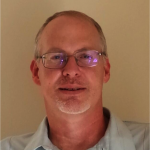 Growing up in rural South Alabama, the nearest doctor was about 20 miles away in a little town called Frisco City. His name was Dr B. L. Hanks, and he received his medical degree from Harvard Medical School. I’m told he made house calls in his younger years, but when I knew him he could barely walk. He would shuffle into the examination room, lean against the wall and run his hand through a head full of unruly white hair and ask what was wrong, while all the while looking at non-verbal signals which were just as important as anything I said. Continue reading
Growing up in rural South Alabama, the nearest doctor was about 20 miles away in a little town called Frisco City. His name was Dr B. L. Hanks, and he received his medical degree from Harvard Medical School. I’m told he made house calls in his younger years, but when I knew him he could barely walk. He would shuffle into the examination room, lean against the wall and run his hand through a head full of unruly white hair and ask what was wrong, while all the while looking at non-verbal signals which were just as important as anything I said. Continue reading
#264 – CARDIO OR STRENGTH TRAINING: WHICH IS BETTER? – ALLEN TAYLOR
Featured
#264 – THE 40% MYTH – GEARY SIKICH
Featured
 Myth Busters – Statistical Mystery Solved?
Myth Busters – Statistical Mystery Solved?
We have all heard and/or read the oft quoted “40% of all businesses experiencing a crisis go out of business within one year…”. Ever wonder where that statistic came from? For many years a colleague of mine, unfortunately now deceased, searched for the answer; to no avail. No one could actually cite the source for this statistic. Many refer to FEMA or the US Small Business Administration: Continue reading
#264 – USING ISO 31000 IN DRINKING WATER – ANNETTE DAVISON
Featured
 ISO 31000 notes the importance of understanding internal and external context on the risk management process. Similarly, contemporary water quality risk management frameworks include the need to understand the system from source to end point (what we refer to as S2E). We find that the ‘gold’ in risk assessments is in setting up your foundation properly – once you have a good understanding of your context, the risk assessment has much more power and you will get so much more out of it. Continue reading
ISO 31000 notes the importance of understanding internal and external context on the risk management process. Similarly, contemporary water quality risk management frameworks include the need to understand the system from source to end point (what we refer to as S2E). We find that the ‘gold’ in risk assessments is in setting up your foundation properly – once you have a good understanding of your context, the risk assessment has much more power and you will get so much more out of it. Continue reading
#263 – POTENTIAL ECONOMIC CONSEQUENCES OF A PANDEMIC – GEARY SIKICH
Featured
 At the time of this writing coronavirus is spreading in China and is appearing in other areas of the world. Seasonal flu is also spreading through much of the world. As a comparison, the below graphics provide a snapshot of the current situations. First is the CDC (Centers for Disease Control) graphic with its representative statistics. Alarming? CDC estimates 19 – 26 million flu illnesses; currently there have been approximately 8,000 flu deaths. Alarming? Continue reading
At the time of this writing coronavirus is spreading in China and is appearing in other areas of the world. Seasonal flu is also spreading through much of the world. As a comparison, the below graphics provide a snapshot of the current situations. First is the CDC (Centers for Disease Control) graphic with its representative statistics. Alarming? CDC estimates 19 – 26 million flu illnesses; currently there have been approximately 8,000 flu deaths. Alarming? Continue reading
#263 – THE FUTURE OF QUALITY IN BUSINESS: A CONTINUATION OF THE DIALOG – JAMES KLINE CERM PH.D.
Featured
T he CERM Risk Insights article #262 by Tom Taormina and the comments by Paul Simpson and Greg Hutchins, open an important discussion on the future of the quality profession. This piece builds on that discussion. The discussion is important because the quality profession is being disrupted. Both the business approaches and professional organizations which have supported and advanced the quality profession are being affected by this disruption. Continue reading
he CERM Risk Insights article #262 by Tom Taormina and the comments by Paul Simpson and Greg Hutchins, open an important discussion on the future of the quality profession. This piece builds on that discussion. The discussion is important because the quality profession is being disrupted. Both the business approaches and professional organizations which have supported and advanced the quality profession are being affected by this disruption. Continue reading
#263 – ONE INTERVENTION THAT REDUCES RISK OF DEATH BY 20 TO 30 PERCENT – ALLEN TAYLOR
Featured
 People are living longer in good health today than has ever been true throughout recorded history. Even so, a lot of people check out early. Some of the shortening of lifespan is due to choices that people make.
People are living longer in good health today than has ever been true throughout recorded history. Even so, a lot of people check out early. Some of the shortening of lifespan is due to choices that people make.
- Some people choose to smoke tobacco
- Some choose to drink alcohol to excess
- Some abuse addictive painkillers
- Some drive when they shouldn’t
#263 – HOW TYPES OF PROJECT RISKS AFFECT YOUR PROJECT – JOHN AYERS
Featured
 There are basically two types of risks on a project. They are programmatic risks and technical risks. A project cannot meet schedule (hence cost) without resolution of issues that affect the schedule. Events that impact the schedule are programmatic risks. These types of risks determine the risk level of the project. The assumption in making this statement is if the schedule cannot be made, then the project will be over budget. Continue reading
There are basically two types of risks on a project. They are programmatic risks and technical risks. A project cannot meet schedule (hence cost) without resolution of issues that affect the schedule. Events that impact the schedule are programmatic risks. These types of risks determine the risk level of the project. The assumption in making this statement is if the schedule cannot be made, then the project will be over budget. Continue reading
#263 – LEAVING A POSITIVE AND INDELIBLE MARK – JOSEPH PARIS
Featured
 As we get older, it’s interesting what we recall from our youth and the impact it had upon us – even if we didn’t know it at the time. For me, I was blessed with having several teachers who supported me and influenced me a great deal. Continue reading
As we get older, it’s interesting what we recall from our youth and the impact it had upon us – even if we didn’t know it at the time. For me, I was blessed with having several teachers who supported me and influenced me a great deal. Continue reading
#262 – DISRUPTION RULES – GREG HUTCHINS PE CERM
Featured
 This has been one of the most disruptive week ins recent memory – at the individual, country, and global levels. I’ll go through a couple of these events.
This has been one of the most disruptive week ins recent memory – at the individual, country, and global levels. I’ll go through a couple of these events.
Risks and More Risks
In the United States, we have had the Trump impeachment trial. We’ve had 24 – 7 news coverage on the smallest items in the impeachment. People in the U.S. are polarized, may be even traumatized by the blow-by-blow reporting. More risk in the political process. Continue reading
#262 – TEASING APART THE ALZHEIMER’S PUZZLE – ALLEN TAYLOR
Featured
T he brain deterioration caused by Alzheimer’s Disease (AD) is one of the largest challenges facing medical science today. Postmortem analyses of the brains of people who had died of AD have found two substances not found in normal brains, amyloid-beta plaques and tau tangles. Continue reading
he brain deterioration caused by Alzheimer’s Disease (AD) is one of the largest challenges facing medical science today. Postmortem analyses of the brains of people who had died of AD have found two substances not found in normal brains, amyloid-beta plaques and tau tangles. Continue reading
#262 – FUTURE AIRLINE PILOT CAREERS – STEPHEN MILLER
Featured
 The global economy and the nature of work is changing rapidly in ways that will impact all of us for the foreseeable future. This is true of aviation as well, with airline pilot opportunities being a particularly challenging case. Technology, and automation in particular are transforming the world in ways we couldn’t even imagine just a few years ago. For those individuals considering a career in aviation or a related industry, this article endeavors to prepare you for both the challenges and opportunities of the future. Continue reading
The global economy and the nature of work is changing rapidly in ways that will impact all of us for the foreseeable future. This is true of aviation as well, with airline pilot opportunities being a particularly challenging case. Technology, and automation in particular are transforming the world in ways we couldn’t even imagine just a few years ago. For those individuals considering a career in aviation or a related industry, this article endeavors to prepare you for both the challenges and opportunities of the future. Continue reading
#262 – THE FUTURE OF QUALITY MANAGEMENT IS BUSINESS SUCCESS – TOM TAORMINA
Featured
 In 1989, I was handed a copy of ISO 9001:1987 by my employer with the direction to find out what it was all about. Our company was headquartered in Europe, and we would be compelled to implement the standard straightaway.
In 1989, I was handed a copy of ISO 9001:1987 by my employer with the direction to find out what it was all about. Our company was headquartered in Europe, and we would be compelled to implement the standard straightaway.
My first reaction was that I wished it had been published 20 years earlier when I was operating under the burdensome military specification MIL-Q-9858A. ISO 9001 was very straightforward and written so that virtually any organization could use is as the foundation for an effective quality management system. Continue reading
#262 – WHY RELIABILITY NEEDS RISK MANAGEMENT TO SUCCEED – JOHN AYERS –
Featured
 Most of my career was spent with the Department of Defense (DOD) industry. The many programs I worked on included a fairly difficult reliability requirement. I was taught that reliability is designed into a system. I learned that verifying a reliability requirement was done by analysis. But for the system reliability to succeed, you need to consider the manufacturing and installation of the system. This is when risk management comes into play to ensure system reliability requirements succeed. This paper explains why. Continue reading
Most of my career was spent with the Department of Defense (DOD) industry. The many programs I worked on included a fairly difficult reliability requirement. I was taught that reliability is designed into a system. I learned that verifying a reliability requirement was done by analysis. But for the system reliability to succeed, you need to consider the manufacturing and installation of the system. This is when risk management comes into play to ensure system reliability requirements succeed. This paper explains why. Continue reading
#261 – HOW THE TYPE OF CONTRACT AFFECTS PROJECT RISK – JOHN AYERS
Featured
 WHAT ARE THE TYPES OF CONTRACTS?
WHAT ARE THE TYPES OF CONTRACTS?
Table 1 lists the various types of contracts and comments as to the salient features of them. The type of contract awarded is based on a number of factors including considerations such as: complexity of project requirements; uncertainty of scope; party assuming unexpected cost risk; need for predictable project costs; and period of performance. Continue reading
#261 – MAKING RISK MANAGEMENT LESS RISKY WITH ANTICIPATION – DANIEL BURRUS
Featured
 One of the central principles of the Anticipatory Organization Model is to move beyond the idea of mere competition. By that, I mean going past the idea of measuring your organization’s success and performance against others. Instead, set your own standards through transformational planning and ongoing innovation. In so doing, by being anticipatory you redefine the concept of risk management. Continue reading
One of the central principles of the Anticipatory Organization Model is to move beyond the idea of mere competition. By that, I mean going past the idea of measuring your organization’s success and performance against others. Instead, set your own standards through transformational planning and ongoing innovation. In so doing, by being anticipatory you redefine the concept of risk management. Continue reading
#261 – DOES EXERCISE MAKE YOU SMARTER AND STRONGER? – ALLEN TAYLOR
Featured
 There is an overwhelming mountain of evidence to support the proposition that exercise is good for you. You can build strength and endurance with strenuous exercise. Depending on what you want the exercise to do for you, one form of exercise may be better than another.
There is an overwhelming mountain of evidence to support the proposition that exercise is good for you. You can build strength and endurance with strenuous exercise. Depending on what you want the exercise to do for you, one form of exercise may be better than another.
For example, if your goal is to have the body of a Greek god or Mr. Universe contest winner, you will probably need to hit the gym for a couple of hours at least three times a week, working with the free weights, bar bells, and Nautilus machines. Continue reading
#261 – SACRED COWS NEED SLAUGHTERING – GREG HUTCHINS PE CERM
Featured
 I guess I’ve got your attention now.
I guess I’ve got your attention now.
Volkswagen is the world’s biggest automaker. The problem is that traditional diesel and gas powered automobiles are endangered and will be less profitable in a consumer world worried about climate change.
Volkswagen Chief Executive Officer Herbert Diess last week warned VW senior management that they’ll have to “slaughter some sacred cows” within the organization. Tough words for tough times. Continue reading
#261 – HOW TO PLAN A RISK ASSESSMENT – ANDREW SHEVES
Featured
 I’ve written elsewhere about how you need to have a clear idea of what you’re trying to achieve with your risk assessment and to get everyone onto the same page. Without this kind of understanding, it’s very unlikely that you will complete the assessment in the time available. Even if you do, you might not have answered the original question.
I’ve written elsewhere about how you need to have a clear idea of what you’re trying to achieve with your risk assessment and to get everyone onto the same page. Without this kind of understanding, it’s very unlikely that you will complete the assessment in the time available. Even if you do, you might not have answered the original question.
#260 – HERE’S THE REAL ARTICLE ON ASPIRIN AND CANCER – ALLEN TAYLOR
Featured
 When aspirin (acetylsalicylic acid) was first recognized by the medical profession over a hundred years ago, it was thought to be something of a miracle drug. It had the effect of lessening or even eliminating pain from headaches, reducing fever and inflammation, as well as lessening the pain of injuries to muscles. Continue reading
When aspirin (acetylsalicylic acid) was first recognized by the medical profession over a hundred years ago, it was thought to be something of a miracle drug. It had the effect of lessening or even eliminating pain from headaches, reducing fever and inflammation, as well as lessening the pain of injuries to muscles. Continue reading
#260 – WHY RISK ASSESSMENTS PROVIDE LIMITED VALUE – GEARY SIKICH
Featured
 I just finished reading two very different books; one a novel, the other a fact-based investigative report. The first book, entitled “Second Sleep” by Robert Harris (ISBN 9780525656692) is fiction. The second book, entitled “Lights Out” by Ted Koppel (ISBN 9780553419962) is a critical look at how unprepared we are for a cyberattack on our electric grid. Two very different books, yet they overlap in many ways. Continue reading
I just finished reading two very different books; one a novel, the other a fact-based investigative report. The first book, entitled “Second Sleep” by Robert Harris (ISBN 9780525656692) is fiction. The second book, entitled “Lights Out” by Ted Koppel (ISBN 9780553419962) is a critical look at how unprepared we are for a cyberattack on our electric grid. Two very different books, yet they overlap in many ways. Continue reading
#260 – COMBAT UNPREDICTABLE CHANGE WITH ANTICIPATION – DANIEL BURRUS
Featured
 It is often assumed that people don’t like change, when in reality humans are born to instinctively love change. It’s why we take vacations and crave travel, because we want and need change. We must get out of our usual surroundings and witness something new in order to regain focus and refresh our perspectives. In this case, change is a choice, so we like it. Continue reading
It is often assumed that people don’t like change, when in reality humans are born to instinctively love change. It’s why we take vacations and crave travel, because we want and need change. We must get out of our usual surroundings and witness something new in order to regain focus and refresh our perspectives. In this case, change is a choice, so we like it. Continue reading
#260 – THE WORLD’S SIMPLEST RISK MODEL – ANDREW SHEVES
Featured
 In addition to the many different definitions for risk, there are lots of different ways to calculate risk. Having a way to assess a risk and ascribe a value is the core of any risk assessment: this valuation allows us to prioritize our risks and differentiate between those of low priority vs the higher, more urgent issues we need to deal with. Continue reading
In addition to the many different definitions for risk, there are lots of different ways to calculate risk. Having a way to assess a risk and ascribe a value is the core of any risk assessment: this valuation allows us to prioritize our risks and differentiate between those of low priority vs the higher, more urgent issues we need to deal with. Continue reading
#260 – ASQ AND QUALITY THOUGHTS – JAMES KLINE PH.D.
Featured
 Last week I wrote an article: ASQ at an Inflection Point. I received many personal comments and emails.
Last week I wrote an article: ASQ at an Inflection Point. I received many personal comments and emails.
I appreciate all comments received. I value them. There may have been some confusion about the point of my article. Below is a more bulleted approach to the key points.
- The 9001 certification is seen as having less value. Hence, its decline. ISO 9001 is the largest ISO certification. The combined certification numbers of the other ISO certification do not match ISO 9001’s. ASQ offers certifications, specific training and books associated with ISO 9001. To the extent that ISO 9001 certifications decline, ASQ’s revenues decline.
#259 – ASQ: AT AN INFLECTION POINT – JAMES KLINE PH.D.
Featured
 In several pieces I have raised concerns about the future of ASQ. Recently, the CEO of ASQ resigned and the Board of Governors is being presented with a petition from membership. This piece discusses the petition and its implications.
In several pieces I have raised concerns about the future of ASQ. Recently, the CEO of ASQ resigned and the Board of Governors is being presented with a petition from membership. This piece discusses the petition and its implications.
By way of disclosure, I am a long time member of ASQ. I was not directly asked to sign the petition. However, I’m a very concerned member of ASQ Continue reading
#259 – WHAT IS TRIZ? – VLADIMIR PETROV
Featured
 Theory of Inventive Problem Solving (TRIZ) is a technology innovation, in which the creative process is controllable and not chaotic. This technology allows us to solve creative problems; using special laws, practices, policies, and tools.
Theory of Inventive Problem Solving (TRIZ) is a technology innovation, in which the creative process is controllable and not chaotic. This technology allows us to solve creative problems; using special laws, practices, policies, and tools.
Application of TRIZ helps to develop creative (inventive) thinking and creative personality qualities, making it possible to look at objects and phenomena in a new way.
#259 – HEALTHY MIND DEPENDS ON HEALTHY BODY – ALLEN TAYLOR
Featured
 A few months ago, I wrote an article about keeping high functioning cognition as you age. The gist of that article was that regular exercise tends to preserve cognition better than a lifestyle that includes little physical exertion. This raises a question:
A few months ago, I wrote an article about keeping high functioning cognition as you age. The gist of that article was that regular exercise tends to preserve cognition better than a lifestyle that includes little physical exertion. This raises a question:
Why does exercise seem to preserve brain function? What’s the connection between the body and the brain? Continue reading
#259 – THROUGHPUT ECONOMICS: MAKING GOOD DECISIONS – ELI SCHRAGENHEIM, HENRY CAMP, ROCCO SURACE
Featured
 How to evaluate a new opportunity, its financial contribution, the generated cost and the involved risk, when quantitative information is, at best, partial?
How to evaluate a new opportunity, its financial contribution, the generated cost and the involved risk, when quantitative information is, at best, partial?
Managers have to make decisions no matter what. They combine considerable intuition with various tools like cost-per-unit and forecasts that are usually not more than wishful thinking. Continue reading
#259 – WHAT IS RELIABILITY ENGINEERING? – FRED SCHENKELBERG
Featured
 One of best features about working in reliability engineering is everything fails, eventually. This fact provides a bit of career stability.
One of best features about working in reliability engineering is everything fails, eventually. This fact provides a bit of career stability.
Another aspect I enjoy is the concepts and approaches that create the foundation for reliability engineering knowledge do not change very much over time. The basics of reliability engineering are the same as when the earliest engineers began design structures and products. Continue reading
#258 – DOES ASPIRIN PROTECT AGAINST CANCER AND HEART DISEASE – ALLEN TAYLOR
Featured
 When aspirin (acetylsalicylic acid) was first recognized by the medical profession over a hundred years ago, it was thought to be something of a miracle drug. It had the effect of lessening or even eliminating pain from headaches, reducing fever and inflammation, as well as lessening the pain of injuries to muscles. More recently, clinical trials showed benefits in older people in delaying or preventing cancer and heart disease. Continue reading
When aspirin (acetylsalicylic acid) was first recognized by the medical profession over a hundred years ago, it was thought to be something of a miracle drug. It had the effect of lessening or even eliminating pain from headaches, reducing fever and inflammation, as well as lessening the pain of injuries to muscles. More recently, clinical trials showed benefits in older people in delaying or preventing cancer and heart disease. Continue reading
#258 – WHY RISK MANAGEMENT IS A KNOWLEDGE CORNERSTONE – JOHN AYERS
Featured
 The four knowledge cornerstones of project risk management are:
The four knowledge cornerstones of project risk management are:
- Project Management
- Earned Value Management
- Risk Management
- Subcontract Management
Why are these called the four cornerstones? Each cornerstone addresses a primary risk source as shown in Table 1. This article address risk management. The remaining cornerstones will be addressed in separate articles. Continue reading
#258 – ASSESSING UNCERTAINTY IN WATER QUALITY ASSESSMENTS – ANNETTE DAVISON
Featured
 ISO 31000 defines ‘risk’ as the effect of uncertainty on objectives. The Framework for Management of Drinking Water Quality (Australian Drinking Water Guidelines) includes a requirement to identify hazards, understand risk and the uncertainty associated with it. Understanding uncertainty is important in making sure the management of your water supply systems is optimised. Continue reading
ISO 31000 defines ‘risk’ as the effect of uncertainty on objectives. The Framework for Management of Drinking Water Quality (Australian Drinking Water Guidelines) includes a requirement to identify hazards, understand risk and the uncertainty associated with it. Understanding uncertainty is important in making sure the management of your water supply systems is optimised. Continue reading
#258 – GUIDE TO AVIATION SAFETY – STEPHEN B. MILLER
Featured
 Most of us travel by air and have probably wondered about the safety aspects of this mode of transportation, especially in light of the almost daily news media reports of accidents, terrorist plots, problems involving aircraft crews etc. The 737 MAX debacle alone would give anyone pause! This guide gives a broad picture of how the entire aviation industry works and will hopefully shed some light on the question “how safe is it?”. Continue reading
Most of us travel by air and have probably wondered about the safety aspects of this mode of transportation, especially in light of the almost daily news media reports of accidents, terrorist plots, problems involving aircraft crews etc. The 737 MAX debacle alone would give anyone pause! This guide gives a broad picture of how the entire aviation industry works and will hopefully shed some light on the question “how safe is it?”. Continue reading
#258 – THIS IS YOUR BRAIN ON RISK – ANDREW SHEVES
Featured
 There are lots of things that are hard about risk and risk management: you are often dealing with abstracts and potential events; showing success can be challenging when your job sometimes means nothing happens; you might not be seen as adding value Continue reading
There are lots of things that are hard about risk and risk management: you are often dealing with abstracts and potential events; showing success can be challenging when your job sometimes means nothing happens; you might not be seen as adding value Continue reading
#257 – INSTITUTE OF INTERNAL AUDITORS 2020 RISK SURVEY – JAMES KLINE PH.D.
Featured
 The Institute of Internal Auditors (IIA) just issued “On Risk: A guide to Understanding, Aligning, and Optimizing Risk 2020”. This is the first risk assessment survey conducted by IIA. It is also the first survey which includes responses from board members, the C-suit and the Chief Audit Executive (CAE). This article looks at the results of the survey and its implications. Continue reading
The Institute of Internal Auditors (IIA) just issued “On Risk: A guide to Understanding, Aligning, and Optimizing Risk 2020”. This is the first risk assessment survey conducted by IIA. It is also the first survey which includes responses from board members, the C-suit and the Chief Audit Executive (CAE). This article looks at the results of the survey and its implications. Continue reading
#257 – AENOR: ISO 31000 RISK MANAGEMENT CERTIFICATIONS – GREG HUTCHINS
Featured
 You may be thinking this can’t be right. ISO 31000 is a guideline document. ISO 31000 – 2019 explicitly states that it is NOT for certification.
You may be thinking this can’t be right. ISO 31000 is a guideline document. ISO 31000 – 2019 explicitly states that it is NOT for certification.
Well things change.
AENOR offers an ISO 31000 certification.
AENOR is the Spanish Association for Standardization. It is global Certification Body. It has 20 offices in Spain, almost 600 employees and almost 19,000 management system certificates.[1]
#257 – HOW TO MANAGE KNOWN RISKS – JOHN AYERS
Featured
 There are two categories of project risk:
There are two categories of project risk:
- Known risks
- Unknown risks
Known risks comprise:
- Scope
- Cost
- Schedule
- Quality
Unknown risks are the uncertainties and variations that surround every project. For example, an unplanned labour strike at one of your major subcontractor’s. Continue reading
#257 – THE FIRST THING YOU NEED TO DO IN ANY RISK CONVERSATION – ANDREW SHEVES
Featured
 You say either and I say either
You say either and I say either
You say neither and I say neither
Either, either, neither, neither
Let’s call the whole thing off
“Let’s call the whole thing off” George and Ira Gershwin
Before you start any discussion, it’s good to have an idea of what you are going to be talking about, but this is vitally important when you are talking about risk. Continue reading
#257 – CURING THE INCURABLE – ALLEN TAYLOR
Featured
 Many diseases, including very serious ones, are caused or made more likely by mutations in a person’s DNA. For most of such diseases, multiple mutations must be present for the corresponding disease to manifest. However, there are serious diseases that are due to a mutation in a single gene. These diseases are the low hanging fruit of stem cell therapy. In such cases, the correction of a single mutation could prevent a life of suffering and early death. The first two pieces of low hanging fruit have just been harvested. Continue reading
Many diseases, including very serious ones, are caused or made more likely by mutations in a person’s DNA. For most of such diseases, multiple mutations must be present for the corresponding disease to manifest. However, there are serious diseases that are due to a mutation in a single gene. These diseases are the low hanging fruit of stem cell therapy. In such cases, the correction of a single mutation could prevent a life of suffering and early death. The first two pieces of low hanging fruit have just been harvested. Continue reading
#256 – DEVELOPMENTAL RISKS OF FUTURE COMMERCIAL AVIATION – STEVE MILLER
Featured
 Commercial aviation is undergoing constant technological change which, although apparent to the aviation community, is little noticed or understood by the flying public. These changes are driving the industry inexorably toward increasing automation for reasons of both safety and cost reduction, the ultimate long term goal being to produce the “totally autonomous” aircraft. Continue reading
Commercial aviation is undergoing constant technological change which, although apparent to the aviation community, is little noticed or understood by the flying public. These changes are driving the industry inexorably toward increasing automation for reasons of both safety and cost reduction, the ultimate long term goal being to produce the “totally autonomous” aircraft. Continue reading
#256 – USING ISO 19011 FOR ROBUST AUDITS OF DRINKING WATER – ANNETTE DAVISON & SARAH LODER
Featured
 ISO 19011 sets the standard for auditing of management systems. When conducting an audit, ISO 19011 sets out 6 principles for an effective and reliable audit with sound outcomes:
ISO 19011 sets the standard for auditing of management systems. When conducting an audit, ISO 19011 sets out 6 principles for an effective and reliable audit with sound outcomes:
- Integrity: the requirement to act in a professional manner
- Fair presentation: the obligation that an auditor has to report truthfully and accurately (including as stated in ASAE 3150 to maintain professional scepticism).
 Due professional care: the application of diligence and judgement when undertaking audits. Continue reading
Due professional care: the application of diligence and judgement when undertaking audits. Continue reading
#256 – KNOWN RISKS ARE THE MAJOR CAUSES WHY PROJECTS FAIL – JOHN AYERS
Featured
 Studies have shown that most project failures are due to poor management of known risks. The known risks are:
Studies have shown that most project failures are due to poor management of known risks. The known risks are:
- Scope
- Schedule
- Cost
- Quality
Scope
The contract statement of work (SOW) defines the project scope. The challenge to the project manager is to perform to the scope but not more and not less. Sometimes the scope is not fully defined or mis-understood creating a serious risk situation which may not be known until late in project. The project manager is responsible to ensure that the scope is clear to the project team, so everyone is on the same page. Continue reading
#256 – RISK OF RANSOMWARE ATTACKS ON LOCAL GOVERNMENT – JAMES KLINE PHD CERM
Featured
In several previous Risk Insights, I discussed the need to view state and local government computer network as part of the national infrastructure. This was needed because of the importance of the networks in providing and supporting basic services. Further, by viewing these networks as part of the national infrastructure they become an important part of the overall federal effort to protect and defend the nation’s computer infrastructure. This issue is so important that another paper is appropriate. This piece extends the prior two pieces. Continue reading
#256 – TURNING POINT IN ALZHEIMER’S RESEARCH – ALLEN TAYLOR
Featured
 A new discovery, announced in a Nature Medicine paper published on November 4, 2019, offers insight into the mystery of Alzheimer’s Disease (AD). The specter of AD is one of the most frightening aspects of growing older. The gradual erosion and final disappearance of the mental activity that defines personhood is much worse than a sudden, violent death. Continue reading
A new discovery, announced in a Nature Medicine paper published on November 4, 2019, offers insight into the mystery of Alzheimer’s Disease (AD). The specter of AD is one of the most frightening aspects of growing older. The gradual erosion and final disappearance of the mental activity that defines personhood is much worse than a sudden, violent death. Continue reading
#255 – PROJECT RISK MANAGEMENT: THE MOST IMPORTANT CORNERSTONE – JOHN AYERS
Featured
 Financial planners would advise you that the key to a successful retirement are four cornerstones:
Financial planners would advise you that the key to a successful retirement are four cornerstones:
- Income
- Liquidity
- Security
- Growth
I would advise you that the four knowledge cornerstones of effective project risk management are key to a successful project. They are:
- Project Management
- Earned Value Management
- Risk management
- Subcontract Management
#255 – NEW SOUTH WALES MANDATES LOCAL GOVERNMENTS ADOPT ERM – JAMES KLINE PH.D. CERM
Featured
 In September 2019, the Local Government Department of the Australian State of New South Wales (NSW), issued “A New Risk Management And Internal Audit Framework” (1). The Minister of Local Government in a forward to the framework states: “Formal risk management and internal audit is a vital part of the NSW Government’s plan to ensure that councils achieve their strategic objectives in the most efficient effective and economical manner. Continue reading
In September 2019, the Local Government Department of the Australian State of New South Wales (NSW), issued “A New Risk Management And Internal Audit Framework” (1). The Minister of Local Government in a forward to the framework states: “Formal risk management and internal audit is a vital part of the NSW Government’s plan to ensure that councils achieve their strategic objectives in the most efficient effective and economical manner. Continue reading
#255 – KISS: TAKING A SIMPLE APPROACH TO RISK MANAGEMENT – ANDREW SHEVES
Featured
 I like to keep things simple but there’s a paradox to simplicity – simple is hard. Sometimes, working out what the essentials are and how to do things efficiently isn’t just hard; it can seem like more work than just sticking with the complicated path in the first place. Continue reading
I like to keep things simple but there’s a paradox to simplicity – simple is hard. Sometimes, working out what the essentials are and how to do things efficiently isn’t just hard; it can seem like more work than just sticking with the complicated path in the first place. Continue reading
#255 – ARTIFICIAL INTELLIGENCE: THE NEXT UNDERDISCOVERED COUNTRY – JOSEPH PARIS
Featured
 In William Shakespeare’s “The Tragedy of Hamlet, Prince of Denmark” (usually referred to simply as “Hamlet”), the main character, Hamlet, uses the phrase “undiscovered country” to refer to what lies beyond the grave – the afterlife – and our lack of knowledge of it, and our fear of it. As it is with death, so is it with “Artificial Intelligence”, or “AI”. Continue reading
In William Shakespeare’s “The Tragedy of Hamlet, Prince of Denmark” (usually referred to simply as “Hamlet”), the main character, Hamlet, uses the phrase “undiscovered country” to refer to what lies beyond the grave – the afterlife – and our lack of knowledge of it, and our fear of it. As it is with death, so is it with “Artificial Intelligence”, or “AI”. Continue reading
#255 – LEADERS OF CHANGE – BILL ASTON
Featured
 ISO 9001:2015 included several changes, but the mandate for top management to demonstrate leadership and commitment to the quality management system (QMS)—as described in subclauses 5.1.1 and 5.1.2—is an important one. Continue reading
ISO 9001:2015 included several changes, but the mandate for top management to demonstrate leadership and commitment to the quality management system (QMS)—as described in subclauses 5.1.1 and 5.1.2—is an important one. Continue reading
#254 – RISK MANAGEMENT – VICTOR GRANADOS
Featured
 The first time I had a glance to the total concept of Risk Management was when I was studying to get my Supply Chain Management certification (APCS’ CSCP)
The first time I had a glance to the total concept of Risk Management was when I was studying to get my Supply Chain Management certification (APCS’ CSCP)
As part of the best practices chapter I learned about the idea of identifying risks on multiple points of the Supply Chain and how to differentiate between Risks and make priorities. Continue reading
#254 – TOP 5 AREAS WHERE MANUFACTURERS ARE ‘MISSING THE MARK’ LEADING TO RECALLS & PRODUCT LIABILITY LAWSUITS – RANDALL GOODDEN
Featured
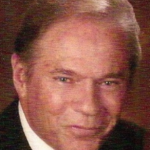 It’s apparent in today’s marketplace that far too many corporate management teams and manufacturing corporations are primarily focused on increasing sales, then profits, and lastly, if at all, assuring their products are safe and reliable. And to further compound that problem, making the assumption their employees know what to do with regards to preventing product recalls and product liability lawsuits. Continue reading
It’s apparent in today’s marketplace that far too many corporate management teams and manufacturing corporations are primarily focused on increasing sales, then profits, and lastly, if at all, assuring their products are safe and reliable. And to further compound that problem, making the assumption their employees know what to do with regards to preventing product recalls and product liability lawsuits. Continue reading
#254 – REDEEMING QUALITY – MIKE RICHMAN
Featured
 The quest for quality is a worthwhile pursuit as well as noble calling. What it isn’t is a career with a sexy cachet. How many young people in college, much less high school, are interested in pursuing opportunities as quality managers, quality inspectors, or auditors of quality management system standards? How many even know what those jobs entail? Continue reading
The quest for quality is a worthwhile pursuit as well as noble calling. What it isn’t is a career with a sexy cachet. How many young people in college, much less high school, are interested in pursuing opportunities as quality managers, quality inspectors, or auditors of quality management system standards? How many even know what those jobs entail? Continue reading
#254 – PRODUCT CORRECTION AND CORRECTIVE ACTIONS – MAJED MUTAIRI
Featured
 The high cost of low quality and product rejection are one of the major challenges that face organizations. Solving this through improved quality management is the right approach.
The high cost of low quality and product rejection are one of the major challenges that face organizations. Solving this through improved quality management is the right approach.
Many businesses are pursuing master quality management and global synchronization to create efficient and standardised integrity that can in turn mitigate the hidden costs of inaccurate and flawed product quality. Continue reading
#253 – KEEPING CURRENT – BILL ASTON
Featured
 Changes in every industry, standard, specification and code are inevitable. So is the need for quality professionals to keep up with these changes as they occur. Trained and experienced quality professionals—such as quality assurance and quality control managers; health, safety and environmental managers; auditors; and consultants—all play essential roles in the continued success of organizations.
Changes in every industry, standard, specification and code are inevitable. So is the need for quality professionals to keep up with these changes as they occur. Trained and experienced quality professionals—such as quality assurance and quality control managers; health, safety and environmental managers; auditors; and consultants—all play essential roles in the continued success of organizations.
It’s vital that they stay abreast of changes in their industry and applicable standards. Management systems are continually changing and so must the quality professionals who implement, audit and maintain those systems. Continue reading
#253 – WHAT ARE THE 4 CORNERSTONES OF RISK MANAGEMENT? – JOHN AYERS
Featured
 Based on my years of experience, the secret to effective Project Risk Management is what I call the four cornerstones: Project Management; Earned Value Management; Risk Management; and Subcontract Management. This paper explains why. Continue reading
Based on my years of experience, the secret to effective Project Risk Management is what I call the four cornerstones: Project Management; Earned Value Management; Risk Management; and Subcontract Management. This paper explains why. Continue reading
#253 – TRANSFER OR AVOIDANCE – VICTOR GRANADOS
Featured
 The first time I attended a conference about Supply Chain Risk Management I learned the definition of Insurance: The transfer of risk for a fee.
The first time I attended a conference about Supply Chain Risk Management I learned the definition of Insurance: The transfer of risk for a fee.
I had to ponder the definition for a few moments before I could digest it, but it is actually true: When you insure your car for total loss, it is the insurance company the one that runs with the risk of the car being damaged in an accident, but you pay a fee for that transfer. Continue reading
#253 – TANTALIZING EVIDENCE THAT YOUR BRAIN AFFECTS YOUR LIFESPAN – ALLEN TAYLOR
Featured
 Some people live longer than others. Why is that? Setting aside life-shortening causes, such as accidents, violent acts, and infectious diseases, some people seem to age more slowly than others. Their physical and mental powers decline at a slower rate. Some of this is due to lifestyle and diet choices, but there is more to it than that. Continue reading
Some people live longer than others. Why is that? Setting aside life-shortening causes, such as accidents, violent acts, and infectious diseases, some people seem to age more slowly than others. Their physical and mental powers decline at a slower rate. Some of this is due to lifestyle and diet choices, but there is more to it than that. Continue reading
#253 – EXPLORING DRONE RELIABILITY – FRED SCHENKELBERG
Featured
I n a few Twitter conversations, I’ve learned about the perceived lack of reliability of commercially available quadcopter or drones.
n a few Twitter conversations, I’ve learned about the perceived lack of reliability of commercially available quadcopter or drones.
And, being encouraged to write a paper or two on drone reliability. Now that Amazon has a delivery drone patent, and industrial applications continue to announced daily, there is a need for serious reliability in these devices. Continue reading
#252 – HONG KONG MEGA RISKS AND TRAUMA – DR. TRUDY
Featured
Hong Kong is a living historical mixture of imperial China, British Empire, democratic China (ROC), or communistic China (PRC). Today, it’s suffering from trauma. T rauma can be defined as an intense stressful event which changes an individual’s internal equilibrium, threatens a person’s survival, and arouses a sense of crisis, such as violence, robbery, sudden near-death accident, loss of a loved one, laid-off, divorce, financial bankruptcy, etc.
rauma can be defined as an intense stressful event which changes an individual’s internal equilibrium, threatens a person’s survival, and arouses a sense of crisis, such as violence, robbery, sudden near-death accident, loss of a loved one, laid-off, divorce, financial bankruptcy, etc.
Traumatic experience sends shock waves to an individual’s brain and activates fight-or-flight cognitive, emotional and behavioral reactions. So-called normal rational cognitive process and executive planning are interrupted and bypassed, replaced by a hyper vigilant mental state in preparation of fight or run for life. Continue reading
#252 – QQMOO: WHO KNEW?: ASSESSING THE FITNESS OF YOUR WATER SUPPLY CHAIN AGREEMENTS – ANNETTE DAVISON & MEGAN DYSON
Featured
 We have written before about the importance of understanding your handover points, from a governance and water quality supply chain risk perspective. However, in our experience, we still see many water supply chain agreements in which it is difficult to interpret exactly what is being required of the parties and therefore, how it is possible to understand whether those water supply chain agreements are actually being complied with in practice.
We have written before about the importance of understanding your handover points, from a governance and water quality supply chain risk perspective. However, in our experience, we still see many water supply chain agreements in which it is difficult to interpret exactly what is being required of the parties and therefore, how it is possible to understand whether those water supply chain agreements are actually being complied with in practice.
We have therefore come up with a simple five part framework to help address the issues that we see and help you to assess whether your water supply chain agreements are fit for purpose: QQMOO – who knew?!. Continue reading
#252 – MANAGING RISK IS ESSENTIAL TO PROJECT SUCCESS – JOHN AYERS
Featured
 A project with a poor risk management foundation is like a house with a fragile foundation. Eventually it will fail.
A project with a poor risk management foundation is like a house with a fragile foundation. Eventually it will fail.
Why Should It Matter to You?
Knowledge and skills with the four cornerstones of risk management, dramatically increase the probability of you realizing project manager success. Conversely, a lack of knowledge will likely lead to poor project manager performance.
#252 – CONTINGENCY RISK – VICTOR GRANADOS
Featured
 This is a personal story of understanding the importance of contingency risk planning.
This is a personal story of understanding the importance of contingency risk planning.
Many years ago, I was working for this great company and I was about to get married.
The Saturday before my wedding day, somebody came knock on my bedroom door and yelled the company is on fire. At the time I was living around the corner from the said company. I could see the flames through my bedroom window. The warehouse had caught fire. Continue reading
#252 – RUSHING TO WAIT – FAILING TO PLAN? – MALCOLM PEART
Featured
 Just Do It!; “He who hesitates is lost”; and “Strike while the iron is hot” are all expressions used with impunity when a project is about to start as we are encouraged to ‘get on with it’ as nothing can go wrong, go wrong?, wrong!
Just Do It!; “He who hesitates is lost”; and “Strike while the iron is hot” are all expressions used with impunity when a project is about to start as we are encouraged to ‘get on with it’ as nothing can go wrong, go wrong?, wrong!
After all, ‘a journey of a thousand miles begins with a single step‘ and projects have to start sooner or later. Continue reading
#251 – READING IS FUNDAMENTAL, BUT COMPREHENSION IS IMPORTANT TOO – JOSEPH PARIS
Featured
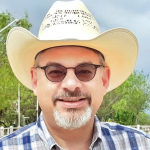
The art of debate has devolved. No longer is it used as a tool of discovery, understanding, reconciliation, and progress. Today, it is a tool used to beat one another into submission –with the wholesale surrender of the beliefs and values held by one party over the other being the goal.
Continue reading#251 – WHAT DOES BLOOD PRESSURE HAVE TO DO WITH DEMENTIA? – ALLEN TAYLOR
Featured

As people age, they tend to slow down. They don’t run as fast as they used to run. They take a little longer to recall the names of people they haven’t seen in a while. They might even forget your birthday. All these things are signs of normal aging. If you live long enough, these things will happen to you.
Continue reading#251 – POSITIVE DISRUPTION USING HARD AND SOFT TRENDS – DANIEL BURRUS
Featured
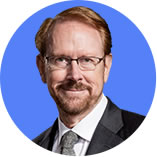
Strategies based on uncertainty come with high levels of risk, but strategies based on certainty dramatically reduce risk and produce superior results. This is the difference between Soft Trends and Hard Trends.
Continue reading#251 – CYBERSECURITY AND LONG TERM RISK (PART 2) – JAMES KLINE PH.D.
Featured

Introduction
This the second of two articles on cyber security and long-term risk. The first article introduced the issue and discussed the first of two issues that underly the long-term risk. This is the need to have a robust Enterprise Risk Management process. This article will discuss the second issue, competition for resources both human and money. It also provides some policy recommendations.
Continue reading#251 – NOT UNDERSTANDING RISK WILL CAUSE YOUR PROJECT TO FAIL – JOHN AYERS
Featured

Risk is an event or activity that can go wrong and cause an impact to the project. Risks can have a negative or positive impact to the project. Risks that have a positive impact are called opportunities. If they a negative impact to the project, they are called risks.
Continue reading#250 – WHAT IS THE FUTURE OF WORK? – JOHN AYERS
Featured

What will the future hold for jobs and the work place? In the following paragraphs, we look back to after WWII ended to understand how work changed during that period of time and look forward to gain some insight into the future and the potential impact on jobs.
Continue reading#250 – ISO 2018 CERTIFICATION NUMBERS – JAMES KLINE PH.D.
Featured
Introduction

In April 2018, I wrote a piece entitled “Whither ISO Certifications?” In that piece, I discussed the latest certification numbers as reported by the International Organization for Standardization (ISO). It was noted that overall certifications were down by 2% in 2017 compared to 2016. In addition, certifications for ISO 9001:2015 were down by 4%. ISO has released the numbers for 2018. This piece looks at these numbers and their implications for quality management.
Continue reading#250 – THREE QUESTIONS WITH GREG HUTCHINS – MIKE RICHMAN
Featured

This regular column in The Auditor is intended to shine a light on the people, standards, and events that mean the most to auditors and registered organizations.
In this segment, we chat with Greg Hutchins, the founder of the Certified Enterprise Risk Manager (CERM) Academy and author of the books, Value Added Auditing, RiskBased Auditing, Supply Chain Risk Management, and ISO31000:2018. He is offering a presentation titled, “The Future of (Quality) Auditing” during Exemplar Global’s forthcoming Future of Auditing Expo.
Continue reading#250 – WHAT’S TRUTH: WHO’S FOOLING WHOM? – MIKE RICHMAN
Featured

This four-part article explores the nature of truth through the prism of quality, mass media, culture, and art. In part one, we posed the question of why truth matters, and considered how the quality professional’s toolkit can help mine mountains of data to uncover hidden nuggets of meaningful information. In part two, we delved into how media helps and hurts in the quest for truth.
Continue reading#250 – RELIABILITY MANAGEMENT AND RISK – FRED SCHENKELBERG
Featured

What is reliability management? Reliability Engineering? Would a product design or an organization benefit with a focus on reliability management and engineering? What is the value of a focus on reliability?
Any organization, that develops and produces products, has resource limits. It may be talent, capabilities, time, funding, or some combination of these. Continue reading
#249 – CUSTOMER FOCUSED, SUPPLY CHAIN MANAGEMENT – JIM STRONG
Featured
 Supply Chain Management (SCM) was introduced in the 1990’s as a buzzword often used by logistics and software providers to describe the integrated network of product, information, and cash flow between the various entities in a supply chain. SCM has been embraced by many non-supply chain professionals simply as a new and faster way of acquiring goods and services using integrated software tools and global logistics. Continue reading
Supply Chain Management (SCM) was introduced in the 1990’s as a buzzword often used by logistics and software providers to describe the integrated network of product, information, and cash flow between the various entities in a supply chain. SCM has been embraced by many non-supply chain professionals simply as a new and faster way of acquiring goods and services using integrated software tools and global logistics. Continue reading
#249 – HOW TO BREEZE THROUGH YOUR NEXT WATER QUALITY AUDIT! – ANNETTE DAVISON
Featured
 Are you a Compliance Manager, Compliance Advisor, Water and Sewer Manager, Internal Auditor or Water Quality Compliance Officer? Are you responsible for preparing for and managing your external operating licence and drinking water management system audits? Are you responsible for handling the audit outcomes? Are you confused over why you are not getting full compliance when you think you have fulfilled all the requirements? Continue reading
Are you a Compliance Manager, Compliance Advisor, Water and Sewer Manager, Internal Auditor or Water Quality Compliance Officer? Are you responsible for preparing for and managing your external operating licence and drinking water management system audits? Are you responsible for handling the audit outcomes? Are you confused over why you are not getting full compliance when you think you have fulfilled all the requirements? Continue reading
#249 – RISK MITIGATION – VICTOR GRANADOS
Featured
 Responsibilities in all companies are always at risk of unexpected personnel changes. Illnesses/injuries, resignations, etc., and some planned ones such as promotions.
Responsibilities in all companies are always at risk of unexpected personnel changes. Illnesses/injuries, resignations, etc., and some planned ones such as promotions.
I used to work in a multi-national company that kept a very healthy succession plan. Every key position was identified, replacements were identified, training, job rotation, procedures, alignment with career plans were complete. The first time I heard about that plan I was impressed on how focused they were on preventing interruptions in the chain of command. Continue reading
#249 – EMOTIONAL INTELLIGENCE – JOSEPH PARIS
Featured
 I took a break from writing in August so that I could develop and refine a new Masterclass and Workshop for Emotional Intelligence (sometimes referred to as EQ). Among the reference books that I used was “The Emotional Intelligence Quick Book“. Written by Travis Bradberry and Jean Greaves, it was one of the first books of its kind on the subject – and one I recommend to gain a base of understanding. Continue reading
I took a break from writing in August so that I could develop and refine a new Masterclass and Workshop for Emotional Intelligence (sometimes referred to as EQ). Among the reference books that I used was “The Emotional Intelligence Quick Book“. Written by Travis Bradberry and Jean Greaves, it was one of the first books of its kind on the subject – and one I recommend to gain a base of understanding. Continue reading
#249 – VUCA AND KUROSAWA – MIKE RICHMAN
Featured
 This four-part article explores the nature of truth through the prism of quality, mass media, culture, and art. In part one, we posed the question of why truth matters, and considered how the quality professional’s toolkit can help mine mountains of data to uncover hidden nuggets of meaningful information. In part two, we delved into how media helps and hurts in the quest for truth. Here, in part three, we talk about volatility, uncertainty, complexity, and ambiguity, and explain why 1950 changed truth and fiction forever. Continue reading
This four-part article explores the nature of truth through the prism of quality, mass media, culture, and art. In part one, we posed the question of why truth matters, and considered how the quality professional’s toolkit can help mine mountains of data to uncover hidden nuggets of meaningful information. In part two, we delved into how media helps and hurts in the quest for truth. Here, in part three, we talk about volatility, uncertainty, complexity, and ambiguity, and explain why 1950 changed truth and fiction forever. Continue reading
#248 – MARIE KONDO AND THE INFORMATION DELUGE – ALLEN TAYLOR
Featured
 Marie Kondo is a best-selling author and media star who has built her brand as a tidying expert. She recommends organizing your life and your living space by discarding everything that does not bring you joy, then organizing what is left so that it can be easily accessed and used. Her message has resonated with people, with Time magazine naming her one of the 100 Most Influential People in the World. Continue reading
Marie Kondo is a best-selling author and media star who has built her brand as a tidying expert. She recommends organizing your life and your living space by discarding everything that does not bring you joy, then organizing what is left so that it can be easily accessed and used. Her message has resonated with people, with Time magazine naming her one of the 100 Most Influential People in the World. Continue reading
#248 – RISK CONTINGENCY PLANNING – VICTOR GRANADOS
Featured
 Many years ago, I was working for this great company and I was about to get married.
Many years ago, I was working for this great company and I was about to get married.
The Saturday before my wedding day, somebody came knock on my bedroom door and yelled the company is on fire. At the time I was living around the corner from the said company. I could see the flames through my bedroom window. The warehouse had caught fire. Continue reading
#248 – THE ROLE OF MEASUREMENT IN QUALITY MANAGEMENT – PAUL SIMPSON
Featured
 For as long as quality has been part of the human endeavour we have been measuring those products and services we provide.
For as long as quality has been part of the human endeavour we have been measuring those products and services we provide.
Context of measurement
Quality control as a practice has been around ever since man has been making things. There is even a school of thought that evolution itself is a form of quality control. One favoured term is “survival of the fittest.” Continue reading
#248 – CYBER SECURITY AND LONG TERM RISK – PART 1 – JAMES KLINE PH.D.
Featured
This is the first of two articles on cyber security and long-term risk. This article discusses the first of two issues that underly the long-term risk. That issue is the need to have a robust Enterprise Risk Management process. It also provides policy recommendations. The second article will discuss the second issue, competition for resources both human and money. It will also present policy recommendations. Continue reading
#248 – MEDIA’S BIG UGLY TRUTH AND PRETTY LITTLE LIES – MIKE RICHMAN
Featured
 This four-part article explores the nature of truth through the prism of quality, mass media, culture, and art. In part one, we posed the question of why truth matters, and considered how the quality professional’s toolkit can help mine mountains of data to uncover hidden nuggets of meaningful information. Here, in part two, we delve into how media helps and hurts in the quest for truth. Continue reading
This four-part article explores the nature of truth through the prism of quality, mass media, culture, and art. In part one, we posed the question of why truth matters, and considered how the quality professional’s toolkit can help mine mountains of data to uncover hidden nuggets of meaningful information. Here, in part two, we delve into how media helps and hurts in the quest for truth. Continue reading
#247 – LIFE IS LIKE A CARD GAME – ALLEN TAYLOR
Featured
 Life is like that. We are all dealt a collection of genes that is a random mixture of the genes of our parents. Each individual collection of genes gives its owner a set of advantages and disadvantages.
Life is like that. We are all dealt a collection of genes that is a random mixture of the genes of our parents. Each individual collection of genes gives its owner a set of advantages and disadvantages.
- Some people have the potential to become great athletes, like Kareem Abdul-Jabbar.
- Some people could become great musicians, like Wolfgang A. Mozart.
- Some people could potentially make huge breakthroughs in science, like Albert Einstein.
- Some people could lead long and healthy lives, like Jeanne Calment.
#247 – INNOVATION AS A VALUE – NOT AN ASSIGNMENT – DAVID WILSON
Featured
 When innovation is truly adopted as a value everyone in the organization will be encouraged to take ownership and an active interest in its evolution.
When innovation is truly adopted as a value everyone in the organization will be encouraged to take ownership and an active interest in its evolution.
At Bechtel, innovation is clearly captured in in our Vision, Values, and Covenants, and like safety, quality, integrity, diversity, and inclusivity, it is widely regarded within our organization as everyone’s responsibility. Continue reading
#247 – PURPOSE OF A RELIABILITY PROGRAM – FRED SCHENKELBERG
Featured
 The reliable performance of a system is important. It is important to the customer, to our business and to us.
The reliable performance of a system is important. It is important to the customer, to our business and to us.
Very few argue that we should ignore the reliability characteristics of a product. We also deem cost, time to market or feature set as important also. The trouble is we can measure the latter directly every day, where the reliability performance is often difficult to measure. Continue reading
#247 – QUALITY’S HOLY GRAIL: WHAT IS TRUTH? – MIKE RICHMAN
Featured
 The quest for truth is as old as our species, and likely far older. Organisms have always used misdirection, misrepresentation, and outright deception to get what they want and need, whether it be food, shelter, or mates. Modern humans, however, show a particular affinity for fabrication. For some, lying is a pastime, an entertainment; for others, it’s a sign of emotional illness, a compulsion. Continue reading
The quest for truth is as old as our species, and likely far older. Organisms have always used misdirection, misrepresentation, and outright deception to get what they want and need, whether it be food, shelter, or mates. Modern humans, however, show a particular affinity for fabrication. For some, lying is a pastime, an entertainment; for others, it’s a sign of emotional illness, a compulsion. Continue reading
#246 – INCREASING THE ODDS OF LIVING A LONG AND HEALTHY LIFE – ALLEN TAYLOR
Featured
 If you are reasonably healthy and reasonably happy now, without a doubt, you would like the good times to continue rolling. Due to some unforeseen event, such as an unseen pickup truck turning a corner as you step out into the street, you could check out tomorrow. There are all kinds of disasters that could befall you, even if you are obsessively conscientious and careful. However, there is no point in dwelling on those possibilities. Continue reading
If you are reasonably healthy and reasonably happy now, without a doubt, you would like the good times to continue rolling. Due to some unforeseen event, such as an unseen pickup truck turning a corner as you step out into the street, you could check out tomorrow. There are all kinds of disasters that could befall you, even if you are obsessively conscientious and careful. However, there is no point in dwelling on those possibilities. Continue reading
#246 – PRACTICAL PATH TO MITIGATING GLOBAL WARMING RISK – JOHN AYERS
Featured
 The 2020 democratic presidential candidates are backing the New Green Deal, which calls for the elimination of fossil fuels within 10-40 years (depending on which candidate you are talking to). If America is serious about this goal, then nuclear fusion power is the only practical way to begin to achieve it. Continue reading
The 2020 democratic presidential candidates are backing the New Green Deal, which calls for the elimination of fossil fuels within 10-40 years (depending on which candidate you are talking to). If America is serious about this goal, then nuclear fusion power is the only practical way to begin to achieve it. Continue reading
#246 – USE ANTICIPATION TO TURN DISRUPTION INTO OPPORTUNITY – DANIEL BURRUS
Featured
 For the longest time, cable television was a miraculous technology that not everybody had in their homes, mostly because not everybody could afford it. Now, not everyone has it in their homes because YouTube TV, Sling TV, and other new, emerging technologies have disrupted the broadcast industry. So why didn’t Spectrum think of it first? Why did they become the disrupted and not the disruptor? Continue reading
For the longest time, cable television was a miraculous technology that not everybody had in their homes, mostly because not everybody could afford it. Now, not everyone has it in their homes because YouTube TV, Sling TV, and other new, emerging technologies have disrupted the broadcast industry. So why didn’t Spectrum think of it first? Why did they become the disrupted and not the disruptor? Continue reading
#246 – CRISIS BRINGS ABOUT REAL CHANGE: A CASE FOR IN-SOURCING – JIM STRONG
Featured
 For the past decade companies have spent considerable time and resources on strategically outsourcing their products and services. But maybe now, while our economy is in a real crunch, is the time to reconsider this strategy and put people back to work in this country. Continue reading
For the past decade companies have spent considerable time and resources on strategically outsourcing their products and services. But maybe now, while our economy is in a real crunch, is the time to reconsider this strategy and put people back to work in this country. Continue reading
#246 – THAT’S NOT MY JOB: DENIAL, REALITY, OR CHANGE CATALYST? – MALCOLM PEART
Featured
 “That’s not my job” …an inevitable response when a ‘somebody’ is asked to do something that requires their effort and which they believe they don’t have to do, don’t won’t do, or can’t do. This familiar cry is often said with such impunity that the requester may well feel that they are in the wrong…but who is wrong and who has been wronged?
“That’s not my job” …an inevitable response when a ‘somebody’ is asked to do something that requires their effort and which they believe they don’t have to do, don’t won’t do, or can’t do. This familiar cry is often said with such impunity that the requester may well feel that they are in the wrong…but who is wrong and who has been wronged?
Continue reading
#245 – ENHANCE STRENGTH AND STAMINA THE NATURAL WAY – ALLEN TAYLOR
Featured
 Forget performance enhancing drugs. Get better the natural way with performance-enhancing bugs. More and more research has been coming out lately about the human microbiome, and specifically the organisms that populate the human gut. Recent studies have shown that the composition of a person’s microbiome can have a major affect on a person’s brain, their mood, and even whether they are likely to become obese.
Forget performance enhancing drugs. Get better the natural way with performance-enhancing bugs. More and more research has been coming out lately about the human microbiome, and specifically the organisms that populate the human gut. Recent studies have shown that the composition of a person’s microbiome can have a major affect on a person’s brain, their mood, and even whether they are likely to become obese.
#245 – WATER QUALITY SUPPLY CHAIN RISK: HOW WELL DO YOU UNDERSTAND YOURS? – ANNETTE DAVISON
Featured
 The Australian Drinking Water Guidelines note that assessment of the drinking water supply system, including understanding its characteristics and sources of hazard and risks, is an essential prerequisite for subsequent steps in which effective strategies for prevention and control of hazards are planned and implemented. A water supply system can be defined as anything from source to endpoint – the components of this system depend on the type of water product or service being delivered, the specific processes involved, the interested parties in the supply chain and the required regulatory and formal requirements. Continue reading
The Australian Drinking Water Guidelines note that assessment of the drinking water supply system, including understanding its characteristics and sources of hazard and risks, is an essential prerequisite for subsequent steps in which effective strategies for prevention and control of hazards are planned and implemented. A water supply system can be defined as anything from source to endpoint – the components of this system depend on the type of water product or service being delivered, the specific processes involved, the interested parties in the supply chain and the required regulatory and formal requirements. Continue reading
#245 – WHERE IS THE QUALITY FEAR FACTOR? – JAMES KLINE PH.D.
Featured
 The title is based on a comment: “The quality fear factor is gone.” The assumption behind the comment is that fear often motivates behavioral change. This was certainly true for the quality movement. But, if the movement was driven by fear, what happens when the fear is no longer there? Does anything replace it? This piece looks at these questions. Continue reading
The title is based on a comment: “The quality fear factor is gone.” The assumption behind the comment is that fear often motivates behavioral change. This was certainly true for the quality movement. But, if the movement was driven by fear, what happens when the fear is no longer there? Does anything replace it? This piece looks at these questions. Continue reading
#245 – TAKING 100% RESPONSIBILITY – JIM STRONG
Featured
I recently attended a workshop on personal motivation. The recurring message in this workshop was, “if you want to be totally happy you must learn to take 100% responsibility for everything in your life.” While this is a simple concept, how many of us can truly say that we take 100% responsibility for our lives? It is easy to blame others for our circumstances or for our lot in life. It is easier to rationalize why we haven’t done something because of the actions of others, than it is to take 100% responsibility for our own actions. Continue reading
recently attended a workshop on personal motivation. The recurring message in this workshop was, “if you want to be totally happy you must learn to take 100% responsibility for everything in your life.” While this is a simple concept, how many of us can truly say that we take 100% responsibility for our lives? It is easy to blame others for our circumstances or for our lot in life. It is easier to rationalize why we haven’t done something because of the actions of others, than it is to take 100% responsibility for our own actions. Continue reading
#245 – ‘STEALTH’ MENTORSHIP – JOSEPH PARIS
Featured
 I would find it hard to believe that any successful person achieved that success without having at least one mentor along their journey – someone who was instrumental and influential in the life journey of the person being mentored (the mentee). But what is mentorship? Continue reading
I would find it hard to believe that any successful person achieved that success without having at least one mentor along their journey – someone who was instrumental and influential in the life journey of the person being mentored (the mentee). But what is mentorship? Continue reading
#244 – 70 YEARS OF RISK MANAGEMENT PRINCIPLES: WHAT’S CHANGED? – PETER HOLTMANN
Featured
 Risk management, as a practice and set of principles, has been utilised since the 1940’s; 70 years after its introduction what has been accomplished?
Risk management, as a practice and set of principles, has been utilised since the 1940’s; 70 years after its introduction what has been accomplished?
History of Risk
Historically risk was the product of the insurance industry to assess financial risks of the businesses they insured. As a sustainable practice it is best to know if your insured will cause financial ruin for your or make a significant negative effect on your profits. Risk was seen as a negative influence on business and should be eliminated. Risk was the practice used by business owners and boards. Continue reading
#244 – CHINA AND DIGITAL CURTAIN RISK – JOHN AYERS
Featured
 The trade and tariff disputes with China are not stopping and are escalating. We’re going to hear a lot more about the digital curtain with China. This seems to be the only issue that the U.S. Democrats and Republicans seem to agree on.
The trade and tariff disputes with China are not stopping and are escalating. We’re going to hear a lot more about the digital curtain with China. This seems to be the only issue that the U.S. Democrats and Republicans seem to agree on.
What is the Digital Curtain?
The short answer is a digital technological divide between the US and China that started years ago but has intensified greatly recently due to President Trump’s assault on Huawei, China’s largest technological company. Continue reading
#244 – CONGRESSIONAL BUDGET OFFICE REPORT ON STORM DAMAGE COST – JAMES KLINE PH.D.
Featured
 In April 2019, the Congressional Budget Office (CBO) released a report entitled: ‘Expected Cost of Damage from Hurricane Winds and Storm-Related Flooding’. Because the CBO is an arm of the United States Congress, it does not state policies. Instead, it presents policy options. This article discusses the report, the policy options and the relationship to Enterprise Risk Management (ERM). Continue reading
In April 2019, the Congressional Budget Office (CBO) released a report entitled: ‘Expected Cost of Damage from Hurricane Winds and Storm-Related Flooding’. Because the CBO is an arm of the United States Congress, it does not state policies. Instead, it presents policy options. This article discusses the report, the policy options and the relationship to Enterprise Risk Management (ERM). Continue reading
#244 – COST OF QUALIY AND RISK: GETTING LEADERS TO PAY ATTENTION – DOUGLAS WOOD
Featured
 Do you know what risks your organization faces, but have trouble gaining top leadership attention?
Do you know what risks your organization faces, but have trouble gaining top leadership attention?
Consider this: all managers have an unwritten duty to reduce risk for their organization. It falls under “other duties as assigned” in job descriptions. You may have determined what these risks are and started to work on them, or you may be trying to ignore them as risks. Continue reading
#246 – DRIVING A WINNING CULTURE? DON’T FORGET YOUR SUPPLIER – JIM STRONG
Featured
 Often, when companies talk about “cultural change”, they are referring to changes in the internal culture of their own enterprise; i.e. empowering its employees to make decisions related to problem solving and process improvement, using the formal system in place of its informal systems, or an un-relenting commitment to quality. But, what about the external culture? Continue reading
Often, when companies talk about “cultural change”, they are referring to changes in the internal culture of their own enterprise; i.e. empowering its employees to make decisions related to problem solving and process improvement, using the formal system in place of its informal systems, or an un-relenting commitment to quality. But, what about the external culture? Continue reading
#243 – DELEGATION: IT’S YOUR CHOICE – MALCOLM PEART
Featured
We have probably all uttered (or muttered) that immortal line of “if you want something done, do it yourself’ when confronted with a less than satisfactory performance from somebody else. The quote is attributable to Napoleon Bonaparte who, as an emperor, certainly found that this dream of doing everything yourself wasn’t really possible and, perhaps, his downfall may have been attributable to trying to live this dream rather than delegate effectively? Continue reading
#243 – MEETINGS: AS CERTAIN AND AS JOYOUS AS DEATH AND TAXES – JOE PARIS
Featured
 There are very few people that actually enjoy meetings. I have never heard anyone say, “I can’t wait for the meeting this afternoon” unless it’s followed by “I won’t have to eat at my desk.” Continue reading
There are very few people that actually enjoy meetings. I have never heard anyone say, “I can’t wait for the meeting this afternoon” unless it’s followed by “I won’t have to eat at my desk.” Continue reading
#243 – FEMA’S SHIFT TO PROACTIVE RISK MITIGATION – JAMES KLINE PH.D.
Featured
The U.S. federal government is beginning a shift from a reactive approach to a risk event such as a flood or hurricane, to a proactive approach to risk management. This can be seen clearly in the changes to the Federal Emergency Management Agency (FEMA) requirements as stated in the 2018 Disaster Recovery Reform Act (DRRA) and the Draft National Mitigation Investment Strategy. This piece looks at these changes. Continue reading
#243 – AUTO INSURANCE INDUSTRY: DISRUPTED OR DISRUPTOR? – DANIEL BURRUS
Featured
 Fifty years ago, television shows and cartoons showed us a future where people would be using flying cars, hovercrafts, or maybe even teleportation as a common way to get around. As the years ticked by, we saw small features, both aesthetic and functional, change and improve within the automobile industry, but nothing big until recently. Now we have fully electric vehicles with AI-enabled, self-driving, semi-autonomous features, as well as fully autonomous vehicle applications and experiments going on globally. Continue reading
Fifty years ago, television shows and cartoons showed us a future where people would be using flying cars, hovercrafts, or maybe even teleportation as a common way to get around. As the years ticked by, we saw small features, both aesthetic and functional, change and improve within the automobile industry, but nothing big until recently. Now we have fully electric vehicles with AI-enabled, self-driving, semi-autonomous features, as well as fully autonomous vehicle applications and experiments going on globally. Continue reading
#243 – HOW DO CREATIVE PEOPLE COME UP WITH NEW IDEAS – ALLEN TAYLOR
Featured
 We all admire creative people, although we don’t always reward them for their creativity, as shown by the case of Vincent Van Gogh or Scott Joplin. Van Gogh, unable to sell even one of the many paintings he had created, committed suicide. Scott Joplin, although regarded as a master of ragtime music, was unable to get his opera published. The starving artist has become a cliché, with many creative people coming close to starving, or at least living in poverty as they try to pursue their art. Continue reading
We all admire creative people, although we don’t always reward them for their creativity, as shown by the case of Vincent Van Gogh or Scott Joplin. Van Gogh, unable to sell even one of the many paintings he had created, committed suicide. Scott Joplin, although regarded as a master of ragtime music, was unable to get his opera published. The starving artist has become a cliché, with many creative people coming close to starving, or at least living in poverty as they try to pursue their art. Continue reading
#242 – GO WITH THE FLOW – WHAT MAKES A GOOD WATER SUPPLY SYSTEM PROCESS DIAGRAM? – ANNETTE DAVISON
Featured
 Objective: to protect public health by supplying safe, quality drinking water to our customers
Objective: to protect public health by supplying safe, quality drinking water to our customers
Risk: the effect of uncertainty on objectives. (ISO 31000:2018)
The Australian Drinking Water Guidelines note that assessment of the drinking water supply system, including understanding its characteristics, sources of hazard and risks, is an essential prerequisite for subsequent steps in which effective strategies for prevention and control of hazards are planned and implemented. A water supply system can be defined as anything from source to endpoint – the components of this system depend on the type of water product or service being delivered, the specific processes involved, the interested parties in the supply chain and the required regulatory and formal requirements. Continue reading
#242 – AON GLOBAL RISK MANAGEMENT SURVEY – JAMES KLINE PH.D.
Featured
In earlier articles for Insights I discussed two risk-oriented surveys. One conducted at the World Economic Forum was of the world movers and shakers. The second was conducted by North Carolina State University. It reflected the responses of CEOs and senior managers. This article discusses the results of the Aon “Risk Management Survey” of risk managers. Continue reading
#242 – ADAPTIVE, ANTIFRAGILE, RESILIENT, OR JUST TRYING TO BE COMPLIANT – GEARY SIKICH
Featured
 Some interesting points about how organizations apply current standards such as Business Impact Analysis (Assessment) (BIA), risk assessment methodologies, compliance and planning has been written about lately. Each author presents good arguments for their particular methodology. Nassim Taleb created the concept of “Antifragile” because he did not feel that “resilience” adequately described the need for organizations to be ready to absorb the impact of an event and bounce back quickly. Continue reading
Some interesting points about how organizations apply current standards such as Business Impact Analysis (Assessment) (BIA), risk assessment methodologies, compliance and planning has been written about lately. Each author presents good arguments for their particular methodology. Nassim Taleb created the concept of “Antifragile” because he did not feel that “resilience” adequately described the need for organizations to be ready to absorb the impact of an event and bounce back quickly. Continue reading
#242 – WATER 101: A PRIMER ON THE PRIMACY OF H20 – ANNA KUCIRKOVA
Featured
 If you’re reading this, water is probably easily available to you. You may even have a bottle of water sitting right next to you. Chances are, you’ve never had to worry about how you were going to get your water. It’s just always been there. Continue reading
If you’re reading this, water is probably easily available to you. You may even have a bottle of water sitting right next to you. Chances are, you’ve never had to worry about how you were going to get your water. It’s just always been there. Continue reading
#242 – YOU ARE A SYSTEM OF UNIMAGINABLE COMPLEXITY – ALLEN TAYLOR
Featured
 Considering how complex human beings are, it’s a miracle that most of us are reasonably healthy most of the time. Our bodies consist of an intertwined set of functional subsystems. We have:
Considering how complex human beings are, it’s a miracle that most of us are reasonably healthy most of the time. Our bodies consist of an intertwined set of functional subsystems. We have:
- A circulatory system
- A digestive system
- An endocrine system
- A nervous system
- A lymphatic system
- A respiratory system
- An immune system
- A microbiome
#241 – CHANGING THE GAME: REPUTATION RISK IN THE CYBER ERA – GEARY SIKICH
Featured
 Merriam Webster Dictionary defines reputation as:
Merriam Webster Dictionary defines reputation as:
1a: overall quality or character as seen or judged by people in general
b: recognition by other people of some characteristic or ability has the reputation of being clever
2: a place in public esteem or regard: good name; trying to protect his reputation Continue reading
#241 – THE 2019 STATE OF RISK OVERSIGHT – JAMES KLINE PH.D.
Featured
 In my article in CERM Insights #240, I discussed the results of the risk survey conducted annually by the World Economic Forum. The survey respondents are considered the economic elite. The responses provide an indication of the concerns of the movers and shakers of business. Consequently, the questions asked, and the risk concerns expressed are more policy oriented. Continue reading
In my article in CERM Insights #240, I discussed the results of the risk survey conducted annually by the World Economic Forum. The survey respondents are considered the economic elite. The responses provide an indication of the concerns of the movers and shakers of business. Consequently, the questions asked, and the risk concerns expressed are more policy oriented. Continue reading
#241 – PROJECT RISK AND EMERGENCY MANAGEMENT: RESPONSE OR REACTION – MALCOLM PEART
Featured
 In project management we can’t always be in control of the environment around us. We can only forecast rather than predict risk and despite our ‘reasonable’ or even ‘best’ efforts to mitigate risk; shit happens and emergencies ensue! It’s not just physical emergencies but also those related to time and cost; overbudget or late projects can create an emergency for stakeholders. Continue reading
In project management we can’t always be in control of the environment around us. We can only forecast rather than predict risk and despite our ‘reasonable’ or even ‘best’ efforts to mitigate risk; shit happens and emergencies ensue! It’s not just physical emergencies but also those related to time and cost; overbudget or late projects can create an emergency for stakeholders. Continue reading
#241 – HURRY UP AND SLOW DOWN – JOSEPH PARIS
Featured
 I just got off the golf course hitting 9-holes with my Pop, who is 84 years old. God bless him, I hope he has many more rounds to play and I look forward to getting out as often as I can with him. We played the En-Joie Golf Club; a stop on the PGA Tour from 1972 to 2005 when the BC Open was played there – and now, as the Dick’s Sporting Goods Open, which is a stop on the Champions Tour. Continue reading
I just got off the golf course hitting 9-holes with my Pop, who is 84 years old. God bless him, I hope he has many more rounds to play and I look forward to getting out as often as I can with him. We played the En-Joie Golf Club; a stop on the PGA Tour from 1972 to 2005 when the BC Open was played there – and now, as the Dick’s Sporting Goods Open, which is a stop on the Champions Tour. Continue reading
#241 – CHRONIC STRESS CAN MAKE YOU SICK – ALLEN TAYLOR
Featured
 One of the biggest enemies of robust good health is chronic stress. I say chronic stress because there is another kind of stress besides chronic stress, called acute stress. Both kinds of stress are a state of mental or emotional strain, resulting from adverse circumstances. A stressful situation causes the release of cortisol and adrenaline into your bloodstream, putting you into fight or flight mode. Continue reading
One of the biggest enemies of robust good health is chronic stress. I say chronic stress because there is another kind of stress besides chronic stress, called acute stress. Both kinds of stress are a state of mental or emotional strain, resulting from adverse circumstances. A stressful situation causes the release of cortisol and adrenaline into your bloodstream, putting you into fight or flight mode. Continue reading
#240 – WORLD ECONOMIC FORUM RISK ASSESSMENT SURVEY – JAMES KLINE PH.D.
Featured
 The World Economic Forum conducts a risk assessment survey annually. The 2019 survey is the 14th edition. It contains information from 2009 to 2019. The article looks at the results of the survey for these years and discusses some implications. Continue reading
The World Economic Forum conducts a risk assessment survey annually. The 2019 survey is the 14th edition. It contains information from 2009 to 2019. The article looks at the results of the survey for these years and discusses some implications. Continue reading
#240 – PROJECT LEADERSHIP: A MATTER OF STYLE – MALCOLM PEART
Featured
 I recently googled “Project Leadership 2018” and was advised of 340 million results found in only 0.48 seconds; for 1996 the number was a mere 59 million. In the first PMI BoK (1996) there were 8 references to leadership compared to 150 in 2017.
I recently googled “Project Leadership 2018” and was advised of 340 million results found in only 0.48 seconds; for 1996 the number was a mere 59 million. In the first PMI BoK (1996) there were 8 references to leadership compared to 150 in 2017.
Leadership is recognised more today than yesteryear and far from being a fad it is an essential element of society in general and projects in particular; but what essentials does a project leader require? Continue reading
#240 – RISK MANAGEMENT FOR AUTOMOTIVE SUPPLIERS – PAUL FOSTER
Featured
 When you look at standards like IATF 16949 or ISO 9001, the requirements boil down to two essential elements: improving customer satisfaction and reducing risk.
When you look at standards like IATF 16949 or ISO 9001, the requirements boil down to two essential elements: improving customer satisfaction and reducing risk.
They go hand in hand because effective risk management means safer products and happier customers—and fewer problems for their suppliers. Continue reading
#240 – THE 16/8 INTERMITTENT FASTING DIET – ALLEN TAYLOR
Featured
 People have been engaging in fasts for thousands of years, sometimes for religious reasons and other times to enhance their mental focus, or for other reasons. Fasting parallels the natural lives of many animal species from penguins to grizzly bears. Many animals fatten up during a season of plenty, so that they can survive when food is scarce. Continue reading
People have been engaging in fasts for thousands of years, sometimes for religious reasons and other times to enhance their mental focus, or for other reasons. Fasting parallels the natural lives of many animal species from penguins to grizzly bears. Many animals fatten up during a season of plenty, so that they can survive when food is scarce. Continue reading
#240 – THE IMPORTANCE OF A RELIABILITY ENGINEERING COMMUNITY – FRED SCHENKELBERG
Featured
 Years ago I was a part of a reliability engineering community and I had not met more than two or three members. This was before the internet and was using a new-fangled system called an email list.
Years ago I was a part of a reliability engineering community and I had not met more than two or three members. This was before the internet and was using a new-fangled system called an email list.
At the time, it filled the role of helping me understand the many facets of reliability engineering. It helped me answer questions and allowed me to help others as well. Continue reading
#239 – TECHNOLOGY DISRUPTION EATS YOUR JOB! – GREG HUTCHINS
Featured
 McKinsey estimates that between now and 2030, 75 to 375 million workers need to switch jobs that will require new skills and new education just due to automation and tech disruption:
McKinsey estimates that between now and 2030, 75 to 375 million workers need to switch jobs that will require new skills and new education just due to automation and tech disruption:
“In terms of magnitude, it’s akin to coping with the large-scale shift from agricultural work to manufacturing that occurred in the early 20th century in North America and Europe, and more recently in China. But in terms of who must find new jobs, we are moving into uncharted territory. Continue reading
#239 – MULTI-VOTING: WHEN MORE THAN ONE VOTE IS BETTER – FRED SCHENKELBERG
Featured
 In brainstorming, you may face a large number of unique ideas even after affinity diagraming. Multi-voting is a great tool to gain consensus on the top priority ideas with your team.
In brainstorming, you may face a large number of unique ideas even after affinity diagraming. Multi-voting is a great tool to gain consensus on the top priority ideas with your team.
For less than 10 or so items we could use a rank ordering method, yet that method becomes cumbersome when there are a lot of items to prioritize. There are a couple of ways to conduct multiple-voting. Mastering this technique will help your team quickly focus on what is truly important. Continue reading
#239 – WHITHER ISO CERTIFICATION? – JAMES KLINE PH.D.
Featured
 In the last issue of CERM Risk Insights #238 Greg Hutchins wrote an article “ISO 31000 Certification: Next Big Thimg”. In the article he discussed the ISO 31000 certification of Cholamandalam MS General Insurance Company India. As is noted, there is technically no such certification.
In the last issue of CERM Risk Insights #238 Greg Hutchins wrote an article “ISO 31000 Certification: Next Big Thimg”. In the article he discussed the ISO 31000 certification of Cholamandalam MS General Insurance Company India. As is noted, there is technically no such certification.
ISO 31000 is an Enterprise Risk Management standard. ISO has not created a 31000 certification. What is this all about? Is it the next big thing for ISO and Certification Bodies, or is it a symptom of certification dry rot? This article explores this question in a little more detail. Continue reading
#239 – BEING CLEAR AND CONCISE – JOSEPH PARIS
Featured
 The date is November 19th, 1863. A crisp autumn day in the fields of southern Pennsylvania in a little farm-town called Gettysburg. Just four months earlier, the fierce battle of Gettysburg raged there as the Union and Confederate forces clashed in what mark the decisive high-water mark of the Confederate efforts to separate from the United States and become their own country. Continue reading
The date is November 19th, 1863. A crisp autumn day in the fields of southern Pennsylvania in a little farm-town called Gettysburg. Just four months earlier, the fierce battle of Gettysburg raged there as the Union and Confederate forces clashed in what mark the decisive high-water mark of the Confederate efforts to separate from the United States and become their own country. Continue reading
#239 – THE MODERN LONGEVITY DIET – ALLEN TAYLOR
Featured
 In last week’s post, I discussed the CRAN diet (Calorie Restriction with Adequate Nutrition). It’s a diet that is intended to prolong healthy life by drastically reducing calorie intake. Anyone who follows the diet will lose excess weight as a side benefit, but that is not the purpose of the diet. Continue reading
In last week’s post, I discussed the CRAN diet (Calorie Restriction with Adequate Nutrition). It’s a diet that is intended to prolong healthy life by drastically reducing calorie intake. Anyone who follows the diet will lose excess weight as a side benefit, but that is not the purpose of the diet. Continue reading
#238 – CONUNDRUM: GLOBAL WARMING – ELECTRIC DEMAND – GEARY SIKICH
Featured
 We hear so much about global warming, climate change and disruptive weather these days. It is often difficult to understand what is fact, truth and valid from hype, hysteria, and hyperbole. Should we all be driving electric cars, not eating as much meat, using wind and solar; redefining our lives? Or, should we forget about it and continue doing what we have been doing since the early days of the industrial revolution? Continue reading
We hear so much about global warming, climate change and disruptive weather these days. It is often difficult to understand what is fact, truth and valid from hype, hysteria, and hyperbole. Should we all be driving electric cars, not eating as much meat, using wind and solar; redefining our lives? Or, should we forget about it and continue doing what we have been doing since the early days of the industrial revolution? Continue reading
#238 – COULD THE CARNIVORE DIET POSSIBLY BE HEALTHY? – ALLEN TAYLOR
Featured
 Are you tired of counting calories or juggling the percentages of carbs, fats, and proteins that you consume in an effort to improve your health? You can discard all that bother by adopting the carnivore diet, which is simplicity itself. Eat nothing but meat, preferably fatty beef, and drink nothing but water. Don’t worry about sticking to a schedule for meals. Just eat whenever you are hungry, and keep on eating until you feel full. No need to worry about measuring servings. Continue reading
Are you tired of counting calories or juggling the percentages of carbs, fats, and proteins that you consume in an effort to improve your health? You can discard all that bother by adopting the carnivore diet, which is simplicity itself. Eat nothing but meat, preferably fatty beef, and drink nothing but water. Don’t worry about sticking to a schedule for meals. Just eat whenever you are hungry, and keep on eating until you feel full. No need to worry about measuring servings. Continue reading
#238 – THE INDUSTRY 4.0 ADVANTAGE – DANIEL BURRUS
Featured
 When the word “industry” is used in conversation, the picture painted in most minds is a gritty shop floor and blue-collar individuals on an assembly line.
When the word “industry” is used in conversation, the picture painted in most minds is a gritty shop floor and blue-collar individuals on an assembly line.
While this visceral image is still true to some degree, when you add the term “4.0” after the word “industry,” newfound interest perks in the minds of both white-collar and digital technology professionals. Simultaneously, fear looms in the hearts of those blue-collar workers accustomed to that initial visual of what industry means. They think instantly of job loss, robots, and artificial intelligence (A.I.) deleting them from the equation. Continue reading
#238 – CALCULATING THE PROBABILITY OF A SAMPLE CONTAINING BAD PARTS – FRED SCHENKELBERG
Featured
 Received a question from a reader this morning that will make a nice tutorial.
Received a question from a reader this morning that will make a nice tutorial.
A box contains 27 black and 3 red balls. A random sample of 5 balls is drawn without replacement. What is the probability that the sample contains one red ball?
So here’s my thinking and two ways to solve this problem. Instead of red and black balls in an urn type problem, which is pretty abstract, let’s say we know 3 bad parts are in a bin of 30 total parts. Continue reading
#238 – ISO 31000:2018 CERTIFICATION: NEXT BIG THING – GREG HUTCHINS
Featured
 ISO 31000:2018 is the world’s foremost risk management standard. The Standard provides guidelines, principles, framework, and a process for managing risk.
ISO 31000:2018 is the world’s foremost risk management standard. The Standard provides guidelines, principles, framework, and a process for managing risk.
The standard explicitly states that it should NOT be used for certification or registration. But, it is.
So, what’s going on? We can only speculate. But, here goes: Continue reading
#237 – WHY WOMEN AREN’T PERCEIVED AS POWERFUL (AT WORK)? – ELIZABETH LIONS
Featured
 Every women may know the feeling over being overlooked or run over in a meeting. No one likes it. Especially executive women.
Every women may know the feeling over being overlooked or run over in a meeting. No one likes it. Especially executive women.
Harvard Business Review surveyed more than 7,000 people, including female executives at or above the Vice President level. The consistent feedback was the women feel less acknowledged during meetings. While men agreed with this opinion, the disagreed with why women didn’t feel powerful. Continue reading
#237 – WHY IS EXCESS SALT BAD FOR YOU? – ALLEN TAYLOR
Featured
 Earlier this year, I wrote an article titled A Diet that Could Save Your Life. Heart disease is the leading cause of death in the Western world, and high blood pressure, also known as hypertension, is a major risk factor for heart attacks and strokes, as well as other serious health problems. I described the DASH diet, which advocates limiting salt intake to lower blood pressure. Continue reading
Earlier this year, I wrote an article titled A Diet that Could Save Your Life. Heart disease is the leading cause of death in the Western world, and high blood pressure, also known as hypertension, is a major risk factor for heart attacks and strokes, as well as other serious health problems. I described the DASH diet, which advocates limiting salt intake to lower blood pressure. Continue reading
#237 – SPEAKERS, SPONSORS, ATTENDEES BEWARE: UNETHICAL CONFERENCE OPERATORS – GEARY SIKICH
Featured
 I have been speaking at conferences and conducting workshops for many years. I have presented throughout the world and consider myself fortunate that I have generally had wonderful experiences engaging with attendees, organizers, sponsors, etc. However, as you will see in this article, one can run across a ‘bad apple’ and it may not initially present itself as a ‘bad apple’. My hope is to enlighten you a bit as you seek to find that speaking spot, sponsorship and attend a conference. Continue reading
I have been speaking at conferences and conducting workshops for many years. I have presented throughout the world and consider myself fortunate that I have generally had wonderful experiences engaging with attendees, organizers, sponsors, etc. However, as you will see in this article, one can run across a ‘bad apple’ and it may not initially present itself as a ‘bad apple’. My hope is to enlighten you a bit as you seek to find that speaking spot, sponsorship and attend a conference. Continue reading
#237 – ‘UPSIDE – DOWNSIDE’ OR ‘BACK – TO – FRONT’ THINKING? – IAN DALLING
Featured
 Management is not a one-sided coinage, it has an upside and a downside, and all is perceived and judged on the level of the conscious mind. It is about maximising gain while minimising loss in all its forms significant to stakeholders. It is at the basis of commercial activity and inseparably dances together like conjoined associates born out of management exercising choice. Continue reading
Management is not a one-sided coinage, it has an upside and a downside, and all is perceived and judged on the level of the conscious mind. It is about maximising gain while minimising loss in all its forms significant to stakeholders. It is at the basis of commercial activity and inseparably dances together like conjoined associates born out of management exercising choice. Continue reading
#237 – FUTURE OF WORK: RISKS AND OPPORTUNITIES IN THE NEW WORLD OF WORK: PART 2 – MIKE RICHMAN
Featured
 Part 1 of this two-part article offered an analysis of the origins of the longstanding worker-owner contract and weighed the opinions of thought leaders as to where the human endeavor of work may go.
Part 1 of this two-part article offered an analysis of the origins of the longstanding worker-owner contract and weighed the opinions of thought leaders as to where the human endeavor of work may go.
To get a better sense of the shifting sands inherent in this issue, it helps to consider an acronym that the U.S. Army coined more than 30 years ago: VUCA, which stands for volatility, uncertainty, complexity, and ambiguity. Strategic instructors at the U.S. Army War College began using the term to describe the unpredictable New World Order emerging at that time from the ashes of the Cold War. Continue reading
#236 – LEADERSHIP – POWER, RANK, OR RESPECT – MALCOLM PEART
Featured
 Many moons ago during a visit to a major tunnel project a senior executive realised that he was lost; the tour group had moved on. He saw a locomotive and asked the driver “where am I” and demanded to be taken to the surface. During the ensuing altercation the executive said, “Do you know who I am?” as he ‘pulled rank‘ and put the driver ‘in his place‘ through ‘executive’ power. The driver radioed the surface saying that a man who didn’t know who he was, or where he was, needed help! Continue reading
Many moons ago during a visit to a major tunnel project a senior executive realised that he was lost; the tour group had moved on. He saw a locomotive and asked the driver “where am I” and demanded to be taken to the surface. During the ensuing altercation the executive said, “Do you know who I am?” as he ‘pulled rank‘ and put the driver ‘in his place‘ through ‘executive’ power. The driver radioed the surface saying that a man who didn’t know who he was, or where he was, needed help! Continue reading
#236 – THE REAL REASONS WHY WOMEN EARN LESS THAN MEN – ELIZABETH LIONS
Featured
 Statistically, women earn less than men, but when you look at the same job and the same skill set, the wage disparity is lower than you’d think, according to Pay Scale.
Statistically, women earn less than men, but when you look at the same job and the same skill set, the wage disparity is lower than you’d think, according to Pay Scale.
Often the wage difference between men and women has little to do with skill set. Many times it all boils down to how a person perceives themselves and their self-worth. Confidence plays a big factor. Having the guts to ask for more money often equates to earning more. Continue reading
#236 – WHAT IS PROCESSED FOOD AND WHY DO POPULAR DIETS SAY TO AVOID IT? – ALLEN TAYLOR
Featured
 By the strictest definition of the term, practically everything we eat is a processed food.
By the strictest definition of the term, practically everything we eat is a processed food.
- If you cut the leafy part off a stalk of celery, you have processed it.
- Any food that comes in a can has been processed.
- Any bag of frozen fruit or vegetables has been processed.
- That milk that you pour on your processed corn flakes has been processed.
- Any loaf of organic, non-GMO, gluten-free bread that you buy in a store has been processed.
- Any loaf of bread that you bake in your own oven has been processed.
- Any food that you cook in any way has been processed.
#236 – OODA AND AGILITY: REACHING A DECISION FASTER – JOSEPH PARIS
Featured
 Since the beginning of recorded history, great leaders of engagements have known two things; 1) Time is the enemy with speed and decisiveness in making a decision being an advantage and 2) there is no such thing as the perfect plan. Therefore the ability to adapt as circumstances unfold is critical to success.
Since the beginning of recorded history, great leaders of engagements have known two things; 1) Time is the enemy with speed and decisiveness in making a decision being an advantage and 2) there is no such thing as the perfect plan. Therefore the ability to adapt as circumstances unfold is critical to success.
Sun Tzu, a military strategist in the 6th century BC and known for his writings on military doctrine in “The Art of War”, recognized and understood the importance of speed and planning very well. Continue reading
#236 – FUTURE OF WORK – OLD CONTRACT: PART 1 – MIKE RICHMAN
Featured
 “The danger of the past was that men became slaves. The danger of the future is that men may become robots. True enough, robots do not rebel. But given man’s nature, robots cannot live and remain sane, they become Golems, they will destroy their world and themselves because they cannot stand any longer the boredom of a meaningless life.”— Erich Fromm Continue reading
“The danger of the past was that men became slaves. The danger of the future is that men may become robots. True enough, robots do not rebel. But given man’s nature, robots cannot live and remain sane, they become Golems, they will destroy their world and themselves because they cannot stand any longer the boredom of a meaningless life.”— Erich Fromm Continue reading
#235 – TRADE WAR AND SUPPLY CHAIN RISK MANAGEMENT – GREG HUTCHINS PE CERM
Featured
 For the last few months, I’ve been giving talks on the trade war between US and China. A few of these talks have been in the US. Others were skyped to China.
For the last few months, I’ve been giving talks on the trade war between US and China. A few of these talks have been in the US. Others were skyped to China.
The bottom line is that trade between the US and China has been weaponized.
The Wall Street Journal on December 13, 2018 distilled the challenge:
“… it is questionable whether fragile globalized supply chains can thrive at all in an environment where the world’s two largest economies are disinclines to play by the rules, even their own.” Continue reading
#235 – BREXIT: THE UNINTENTIONAL EVOLUTION OF AN UNINTENDED ‘BLACK SWAN’ – GEARY SIKICH
Featured
 In the headlines today (11 March 2019) on Risk.net:
In the headlines today (11 March 2019) on Risk.net:
- Firms fear EU’s ambitious regulatory reforms, known as Mifid-style reporting crunch for Brexit day one
- Brexit threatens to trip up derivatives reporting
- Split will increase firms’ workload and costs, and result in less-accurate regulatory reports
- Brexit relief aids Singapore on EU swaps trading equivalence
#235 – HOW TO SUPPORT ANOTHER WOMAN AT WORK – ELIZABETH LIONS
Featured
 “I just don’t like working with women. They are so catty. I’d prefer to work with men and when I look around, all of my friends are men too.” she said to me over coffee.
“I just don’t like working with women. They are so catty. I’d prefer to work with men and when I look around, all of my friends are men too.” she said to me over coffee.
“I used to feel that way.” I responded. “Then I realized that the women I didn’t like were more like me than I thought they were. Somehow rather than reject them, I embraced them.” Continue reading
#235 – WHAT IS THE RELIABILITY OF THE RELIABILITY FUNCTION? – FRED SCHENKELBERG
Featured
 Review: What is the Reliability of the Reliability Function?
Review: What is the Reliability of the Reliability Function?
Jezdimir Knezevic of the MIRCE Akademy published a paper with the title above and I have a few comments.
In the article, Jezdimir suggests that the statistical approach to describing the world about us is fundamental flaws and not inherently useful for our use. He compares a mathematical/statistical approach to a scientific approach and finds the stats wanting. Continue reading
#235 – THE MENTAL HEALTH MYSTERY – ALLEN TAYLOR
Featured
- Why do some people suffer from depression, while others don’t?
- Why do some people suffer from schizophrenia, while others don’t?
- Why do some people who experience trauma suffer from PTSD, while others don’t?
#234 – THE TRANSITION FROM LEGACY ARCHITECTURES: APPLICATIONS TO SERVICES – HOWARD WIENER
Featured
 In the previous post, we examined some of the characteristics of early application systems, through the lens of the tools employed to build and operate them, and the impact of these characteristics on the organizations that used them. Clearly, limitations of the available technologies imposed constraints of how and how fast companies could adapt and transform to reposition themselves in the markets in which they operated, exploit opportunities and respond to business threats. Continue reading
In the previous post, we examined some of the characteristics of early application systems, through the lens of the tools employed to build and operate them, and the impact of these characteristics on the organizations that used them. Clearly, limitations of the available technologies imposed constraints of how and how fast companies could adapt and transform to reposition themselves in the markets in which they operated, exploit opportunities and respond to business threats. Continue reading
#234 – ‘WHAT IS COLLATERAL RISK: AND WHY SHOULD I BE WORRIED ABOUT IT?’ – GEARY SIKICH
Featured
The Law Dictionary defines Collateral Risk as:
The RISK of loss arising from errors in the nature, quantity, pricing, or characteristics of COLLATERAL securing a transaction with CREDIT RISK. Institutions that actively accept and deliver collateral and are unable to manage the process accurately are susceptible to loss. A subcategory of PROCESS RISK. Continue reading
#234 – WHY WOMEN SHOULD TAKE RISKS AT WORK? – ELIZABETH LIONS
Featured
Stepping out of your comfort zone and taking risks. Especially when it can backfire and cause you your paycheck.
Even the most confident women have a flinch point when it comes to risk. She often knows her limits and capabilities so well that she is completely content to keep producing high quality without the risk of well…risk.
#234 – ‘FROM PERFUNCTORY TO PREDICTION’ – GETTING VALUE FROM WATER QUALITY DATA – ANNETTE DAVISON
Featured
 The Framework for Management of Drinking Water Quality (Australian Drinking Water Guidelines) includes several requirements for water supply system monitoring. You’ve been collecting water quality data for years. You will be doing compliance reporting. You will probably be doing some short-term trending analysis. You might be doing long-term trending analysis. Continue reading
The Framework for Management of Drinking Water Quality (Australian Drinking Water Guidelines) includes several requirements for water supply system monitoring. You’ve been collecting water quality data for years. You will be doing compliance reporting. You will probably be doing some short-term trending analysis. You might be doing long-term trending analysis. Continue reading
#234 – PERSONALIZED MEDICINE CANNOT COME TOO SOON FOR ME – ALLEN TAYLOR
Featured
 A commonly prescribed medication could have killed me. “One size fits all” medicine works fairly well most of the time for most people. But what about those people who don’t fall near the mean? What about the outliers? Aside from that, none of us are truly average. Even identical twins are not exactly the same at birth, and as they age the difference between them grows ever wider. Continue reading
A commonly prescribed medication could have killed me. “One size fits all” medicine works fairly well most of the time for most people. But what about those people who don’t fall near the mean? What about the outliers? Aside from that, none of us are truly average. Even identical twins are not exactly the same at birth, and as they age the difference between them grows ever wider. Continue reading
#233 – BLAME ALLOCATION, BIASED OPINION, OR OBJECTIVE REALITY – MALCOLM PEART
Featured
 “I told you so…” is so often cried after something has gone wrong. But was that ‘telling‘ stated clearly and unequivocally before things went wrong or was it merely a passing counter view against a probable likelihood based on an alternative possibility.
“I told you so…” is so often cried after something has gone wrong. But was that ‘telling‘ stated clearly and unequivocally before things went wrong or was it merely a passing counter view against a probable likelihood based on an alternative possibility.
When a risk manifests itself and takes a grip on a project it’s amazing how quickly hindsight can kick in. This comes in the form of free advice as to what could have happened to avoid the risk ‘after the fact’. Continue reading
#233 – EVOLVING TECHNOLOGY AND THE NEW RISK/REWARD PICTURE IN INFORMATION SYSTEMS – HOWARD WIENER
Featured
 After people and processes, applications are a primary enabler of business capabilities for most organizations of any size. In the early days of commercial computing, most companies had to develop their own applications and run them on their own computers. As things evolved, vendors entered the market in a variety of spaces, including: Continue reading
After people and processes, applications are a primary enabler of business capabilities for most organizations of any size. In the early days of commercial computing, most companies had to develop their own applications and run them on their own computers. As things evolved, vendors entered the market in a variety of spaces, including: Continue reading
#233 – INTEGRATED MANAGEMENT PROSPECT AND RISK – IAN DALLING
Featured
 As professionals we all have some notion of the concept of risk even if we do not understand the technical assessment tools and mathematics involved with the more challenging risk assessment processes. To manage anything in isolation is not the most successful approach and it is just as true of managing risk. Why do we put so much management attention on the downside risk issues and often ignore the upside which is prospect? Continue reading
As professionals we all have some notion of the concept of risk even if we do not understand the technical assessment tools and mathematics involved with the more challenging risk assessment processes. To manage anything in isolation is not the most successful approach and it is just as true of managing risk. Why do we put so much management attention on the downside risk issues and often ignore the upside which is prospect? Continue reading
#233 – WHY WOMEN LOSE CONFIDENCE AT WORK? – ELIZABETH LIONS
Featured
 I always take questions at the end of my talks, and recently I distinctly remember a woman in the back of the room that said, ” Elizabeth, I attended one of your talks recently, and you told us about the monkey in our heads. That really helped me. Can you tell that story again?”
I always take questions at the end of my talks, and recently I distinctly remember a woman in the back of the room that said, ” Elizabeth, I attended one of your talks recently, and you told us about the monkey in our heads. That really helped me. Can you tell that story again?”
So here goes:
Your mind is like a monkey. It goes from thought to thought for hours on end. It rattles on so much that we often don’t have any idea about what is going on up there at all. Continue reading
#233 – THE SUNNY DAY ‘USED CAR’ RISK BIAS & SOLUTION – ANDY GOLE
Featured
 There is a powerful 4-part solution to addressing skepticism and risk aversion. You will see the need for this, if you stop for a moment and consider…
There is a powerful 4-part solution to addressing skepticism and risk aversion. You will see the need for this, if you stop for a moment and consider…
Did you ever buy a used car? Do you remember what the weather was like that day? Hopefully, you didn’t make the same mistake I made…. Continue reading
#232 – ‘R’ IS FOR (WATER QUALITY) REPORT: BUT WHAT TYPE OF REPORT? – ANNETTE DAVISON & PHIL KRASNOSTEIN
Featured
 …..an explosive noise: the ‘report’ of a rifle.
…..an explosive noise: the ‘report’ of a rifle.
…..an account or statement describing details or observations of an event, situation or other
 A document plops into your inbox, you’re about to present these water quality results to your board, you’ve been waiting for them all day and you need to understand the content quickly.You’re hoping for the latter definition of report, but do you feel like you’ve just received the former? Here we look at what makes a good report, in particular, for water quality. Continue reading
A document plops into your inbox, you’re about to present these water quality results to your board, you’ve been waiting for them all day and you need to understand the content quickly.You’re hoping for the latter definition of report, but do you feel like you’ve just received the former? Here we look at what makes a good report, in particular, for water quality. Continue reading
#232 – GLADIATORIAL MANAGEMENT – MALCOLM PEART
Featured
 We’ve all seen it in some form or another on our projects and in the work place. The persons in charge (or with the most influence) who wish for popularity surround themselves with an entourage of kowtowing followers. However, when confronted by contrary views or situations that impact their ego, their decisiveness is challenged; after all the challengers may be correct and the ebb of popularity may be flowing. Continue reading
We’ve all seen it in some form or another on our projects and in the work place. The persons in charge (or with the most influence) who wish for popularity surround themselves with an entourage of kowtowing followers. However, when confronted by contrary views or situations that impact their ego, their decisiveness is challenged; after all the challengers may be correct and the ebb of popularity may be flowing. Continue reading
#232 – POTENTIAL ECONOMIC CONSEQUENCES OF A PANDEMIC – GEARY SIKICH
Featured
Ever since the H1N1 outbreak in 2007 that was declared a pandemic by a reactive World Health Organization (WHO); WHO and Centers for Disease Control (CDC) have been reluctant to move too quickly in declaring an outbreak, whether influenza, Ebola, Norovirus, Adenovirus, Mengla virus or any of the myriad of potential pandemic causing viruses a pandemic. Continue reading
#232 – YOU ARE UNIQUE, BUT NOT SPECIAL – JOSEPH PARIS
Featured
 In my article, “Build Organizational Capacity and Capability – For Free”, I listed several root-causes for training and education programs reaching a “stall speed” and a detailed approach for avoiding it. Among the root-causes listed were; time, expense, work/learning balance, scalability, retention rate, and atrophy.
In my article, “Build Organizational Capacity and Capability – For Free”, I listed several root-causes for training and education programs reaching a “stall speed” and a detailed approach for avoiding it. Among the root-causes listed were; time, expense, work/learning balance, scalability, retention rate, and atrophy.
But there is considerable risk to the program even prior to its launch, and that involves the creation of a proper curriculum and learning environment. Continue reading
#232 – HOW CAN I MAKE SENSE OF ALL THE CONFLICTING DIET ADVICE? – ALLEN TAYLOR
Featured
 When it comes to diet, there are so many “experts,” with some recommending the exact opposite of others, there is a tendency to throw up your hands and reject them all. That’s probably not the best answer to the questions, “What should I eat?” and “What should I avoid?” but how can I decide what is the right diet for me? Continue reading
When it comes to diet, there are so many “experts,” with some recommending the exact opposite of others, there is a tendency to throw up your hands and reject them all. That’s probably not the best answer to the questions, “What should I eat?” and “What should I avoid?” but how can I decide what is the right diet for me? Continue reading
#231 – FAILING PROJECTS – A SUM OF ALL FEARS – MALCOLM PEART
Featured
 What is ‘the sum of all fears‘…apart from a Hollywood movie? During WW2 Winston Churchill knew the risk of failure and he postulated that, even when courageous people amalgamate, they will know fear:
What is ‘the sum of all fears‘…apart from a Hollywood movie? During WW2 Winston Churchill knew the risk of failure and he postulated that, even when courageous people amalgamate, they will know fear:
“…take the most gallant sailor, the most intrepid airman or the most audacious soldier, put them at a table together – what do you get? The sum of [all] their fears”. Continue reading
#231 – IS YOUR LIFE IN BALANCE? – ALLEN TAYLOR
Featured
 How does one go about creating health, both for yourself and for those who choose to follow your example? As we have discussed in previous newsletters, and as we will continue to discuss in the future, your dietary habits are critical determinants of your long-term health. However, other things besides diet can be equally important, or even more important. Continue reading
How does one go about creating health, both for yourself and for those who choose to follow your example? As we have discussed in previous newsletters, and as we will continue to discuss in the future, your dietary habits are critical determinants of your long-term health. However, other things besides diet can be equally important, or even more important. Continue reading
#231 – HOW TO GET INVITED INTO THE BOY’S CLUB AND WHY IT MATTERS? – ELIZABETH LIONS
Featured
 Every woman knows the feeling of being overlooked or run over in a meeting.
Every woman knows the feeling of being overlooked or run over in a meeting.
No one likes it. Especially the female executive.
In 2014, Harvard Business Review came out with a report that surveyed more than seven thousand people, including female executives at or above the Vice President level. The consistent feedback was that women feel less acknowledged during meetings. Although men agreed with this opinion, they disagreed with why women didn’t feel powerful. Continue reading
#231 – BLACK SWANS OR JUST WISHFUL THINKING AND MISINTERPRETATION – GEARY SIKICH
Featured
 There seem to be a lot of sightings of “Black Swans” lately. Should we be concerned or are we wishfully thinking, caught up in media hype; or are we misinterpreting what a “Black Swan” event really is? The term “Black Swan” has become a popular buzzword for many; including, contingency planners, risk managers and consultants. However, are there really that many occurrences that qualify to meet the requirement of being termed a “Black Swan” or are we just caught up in the popularity of the moment? Continue reading
There seem to be a lot of sightings of “Black Swans” lately. Should we be concerned or are we wishfully thinking, caught up in media hype; or are we misinterpreting what a “Black Swan” event really is? The term “Black Swan” has become a popular buzzword for many; including, contingency planners, risk managers and consultants. However, are there really that many occurrences that qualify to meet the requirement of being termed a “Black Swan” or are we just caught up in the popularity of the moment? Continue reading
#231 – WHY SALES PEOPLE FAIL? – ANDY GOLE
Featured
#230 – HUMAN RESOURCES – TAKING HUMANITY OUT OF PERSONNEL – MALCOLM PEART
Featured
 Projects need people. Projects also need materials, plant and equipment, accommodation and logistical support amongst many other things which are under the direct control and indirect influence of people. The latest PMI BoK (6th Edition) now includes all resources under ‘Project Resource Management’ which includes the competent persons that will be responsible for delivering a project. Continue reading
Projects need people. Projects also need materials, plant and equipment, accommodation and logistical support amongst many other things which are under the direct control and indirect influence of people. The latest PMI BoK (6th Edition) now includes all resources under ‘Project Resource Management’ which includes the competent persons that will be responsible for delivering a project. Continue reading
#230 – THE WHAT AND, MORE IMPORTANTLY, THE WHY OF THE WEIBULL ANALYSIS – JAMES KOVACEVIC
Featured
 Every failure is part of a puzzle. The equipment we are maintaining is trying to communicate with use with each and every failure.
Every failure is part of a puzzle. The equipment we are maintaining is trying to communicate with use with each and every failure.
Often the message is not obvious.
There is the immediate failure. And, if we’re paying attention we can sort out the root cause of the failure along with replacing or repairing the damaged parts. Sometimes though the damage is caused by another issue with the system. Continue reading
#230 – EVOLVING TECHNOLOGY AND THE NEW RISK/REWARD PICTURE IN IT – HOWARD WIENER
Featured
 I have written in past posts about the need to apply a risk-adjusted approach to managing information and communication technology (ICT). The focus I have advocated, and continue to, employs a risk/reward model to specify how much discipline, with its attendant time requirements and costs, to employ to inform how companies should manage their governance processes, initiative portfolios and projects. Continue reading
I have written in past posts about the need to apply a risk-adjusted approach to managing information and communication technology (ICT). The focus I have advocated, and continue to, employs a risk/reward model to specify how much discipline, with its attendant time requirements and costs, to employ to inform how companies should manage their governance processes, initiative portfolios and projects. Continue reading
#230 – IS CHRONIC STRESS WEARING YOU DOWN? – ALLEN TAYLOR
Featured
 It’s difficult to achieve work/life balance when suffering from chronic stress. There’s a big difference between acute stress and chronic stress. Acute stress is a sharp, painful situation that comes on suddenly, you deal with it, and then it’s over. For example, the Californians who had to evacuate their homes in the face of a massive wildfire this past fall, while they were running for their lives, were suffering acute stress. Continue reading
It’s difficult to achieve work/life balance when suffering from chronic stress. There’s a big difference between acute stress and chronic stress. Acute stress is a sharp, painful situation that comes on suddenly, you deal with it, and then it’s over. For example, the Californians who had to evacuate their homes in the face of a massive wildfire this past fall, while they were running for their lives, were suffering acute stress. Continue reading
#230 – ARE YOUR INSPECTION AND TEST REQUIREMENTS LEAN? – AFAQ AHMED
Featured
If you google “lean” you will probably find many definitions of lean. The definition that I prefer is “an initiative focus on eliminating all waste in manufacturing processes”. This definition is taken from the American Society for Quality (ASQ) Quality Progress magazine. In this article I want to highlight a lean initiative related to Inspection and Test (I&T) Requirements. Continue reading
#229 – STORIES FROM CYBERIA – KIRBY URNER
Featured
 I wanted to share some recent findings, from the perspective of someone with lots of white hair and memories.
I wanted to share some recent findings, from the perspective of someone with lots of white hair and memories.
My fantasies around computers started around 8th grade, when I scoured the Time-Lifeseries with titles like Mathematics, The Mind, The Cell, The Body… twenty-six volumes in all. Continue reading
#229 – DELIVERING DIFFICULT FEEDBACK – ELIZABETH LIONS
Featured
 Delivering difficult feedback with grace is one of the hardest things a female leader can do, and is the most necessary. In general, many women when delivering feedback sound angry, judgmental, or attacking. It could be the tone of their voice or the look on their face, but whatever it is, it’s not good to be on the other side of it. Others can’t quite say what they need to say, leaving the team member fuzzy about what really took place in the one-on-one meeting. Continue reading
Delivering difficult feedback with grace is one of the hardest things a female leader can do, and is the most necessary. In general, many women when delivering feedback sound angry, judgmental, or attacking. It could be the tone of their voice or the look on their face, but whatever it is, it’s not good to be on the other side of it. Others can’t quite say what they need to say, leaving the team member fuzzy about what really took place in the one-on-one meeting. Continue reading
#229 – ISO 31000 IN GOVERNMENT: A CASE STUDY – JAMES KLINE PH.D.
Featured
 ISO 31000 is the International Enterprise Risk Management (ERM) framework developed in 2009 by the International Organization for Standardization (ISO). Its use in government is increasing. The reason for the increase is that governments around the world are recognizing that risk events are increasing in frequency and cost. For instance, Hurricane Harvey impacted the States of Texas, Louisiana, Mississippi, Tennessee and Kentucky. It flooded 19 water systems, 31 waste water systems and 13 super fund sites spreading toxic waste throughout the region. It cost Texas $125 billion dollars. (1) Continue reading
ISO 31000 is the International Enterprise Risk Management (ERM) framework developed in 2009 by the International Organization for Standardization (ISO). Its use in government is increasing. The reason for the increase is that governments around the world are recognizing that risk events are increasing in frequency and cost. For instance, Hurricane Harvey impacted the States of Texas, Louisiana, Mississippi, Tennessee and Kentucky. It flooded 19 water systems, 31 waste water systems and 13 super fund sites spreading toxic waste throughout the region. It cost Texas $125 billion dollars. (1) Continue reading
#229 – RISK MANAGEMENT: BLAME ALLOCATION, BIASED OPINION, OR OBJECTIVE REALITY – MALCOLM PEART
Featured
 “I told you so…” is so often cried after something has gone wrong. But was that ‘telling‘ stated clearly and unequivocally before things went wrong or was it merely a passing counterview against a probable likelihood based on an alternative possibility.
“I told you so…” is so often cried after something has gone wrong. But was that ‘telling‘ stated clearly and unequivocally before things went wrong or was it merely a passing counterview against a probable likelihood based on an alternative possibility.
When a risk manifests itself and takes a grip on a project it’s amazing how quickly hindsight can kick in. This comes in the form of free advice as to what could have happened to avoid the risk ‘after the fact’. Continue reading
#229 – TAKING CONTROL – J. P. RUSSELL
Featured
 Organizations need controls to ensure objectives are achieved. Management’s job is to establish, implement and monitor controls, and the auditor’s job is to determine whether they are adequate.
Organizations need controls to ensure objectives are achieved. Management’s job is to establish, implement and monitor controls, and the auditor’s job is to determine whether they are adequate.
In some cases, organizations adopt standards that require controls. Many performance standards call for control of an activity, process, function, department or system. Continue reading
#228 – MINDFULNESS AT WORK – STEPHEN VILLAESCUSA
Featured

Are you looking to discover a path to your “own” inspiration, grace, fluidity, confidence, satisfaction & happiness? Ever thought about using mindfulness to chart the course?
What is Mindfulness? A Google query to the topic yielded no fewer than 168 million results. Although you’’find a lot of hype – without substance, there are many excellent resources to help build your skill set and start you on the pathway.
Continue reading#228 – BUILD ORGANIZATIONAL CAPACITY AND CAPABILITY FOR FREE – JOSEPH PARIS
Featured

I was coaching one of the national oil companies in the Middle East, offering mentorship to the director of their operational excellence program. He was frustrated because he had invested considerable funds building a team of sixty Lean Six Sigma Black Belts over a nine-month period, and they had not yet worked on—much less completed—any project nor had they realized any benefit to the company.
Continue reading#228 – RESILIENCE AND ENTERPRISE RISK MANAGEMENT – JAME KLINE PH.D.
Featured

The term resilience is used in reports and studies by numerous government agencies and international institutions. For instance, in 20014 the Organization forEconomic Cooperation and Development issued a report entitled “OECD Reviews ofRisk Management Policies: Boosting Resilience Through Innovative Risk Governance”.
Continue reading#228 – PROJECT ORGANIZATIONS – HARMONY OR CACOPHONY – MALCOLM PEART
Featured

In a galaxy far-far-away a Jedi Knight said, “Integrated Matrix” and, with a sweeping wave of his hand, the project organisation was immediately taken from the Dark side of chaotic confusion and the Force was with them…
This could be the end to a Star Wars movie about project management (LOL). However, and with few earthbound Jedi project management practitioners, our project organisations are rarely perfect and not what they would claim to be.
Continue reading#228 – LET’S STOP CLOSING CORRECTIVE ACTIONS – TED SCHMIDT
Featured
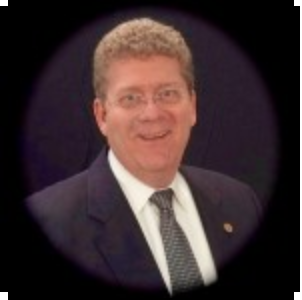
I would ask you to look in your copy ofISO 9001:2015, clause 10.2 and highlight or underline the word “close” as it relates to corrective actions. Before you look, it’s not there. It’s not there….not anywhere in ISO 9001. Well, if it is not there, where does it come from and why do we have to “close”corrective actions? Here’s where we need to talk about how Uncle Buck found us in the first place.
Continue reading#227 – TRUTH, LIES, AND PALTERING LEADERS – WHAT & WHO CAN BE BELIEVED? – MALCOLM PEART
Featured

“Lies, damn lies and statistics” is an often-used phrase attributed to the 18th Century British Prime Minister Benjamin Disraeli. He acknowledged the persuasive power of numbers to bolster weak arguments.
In a statistical moment his contemporary, Abraham Lincoln, said; “You can fool all the people some of the time and some of the people all the time, but you cannot fool all of the people all of the time“. Politics, persuasion and manipulation (deception) have gone hand in hand for centuries.
Continue reading#227 – ENTERPRISE RISK MANAGEMENT, MILLENNIALS, AND CYBER – JAMES KLINE PH.D.
Featured

Kevin Curry in an opinion piece for The Hill raised several issues which will ultimately impact the adoption of Enterprise Risk Management (ERM) in government. The article entitled “America’s public sector has a problem –
Continue reading#227 – HOW EDTECH IS RESHAPING THE EDUCATION LANDSCAPE – TREVOR MCCREADY
Featured

There’s no denying that the landscape of education is changing. With the advent of computers, the internet and mobile phones, there are so many technologies available today that were not present in the 1950s, or even five or ten years ago. A decade ago, the iPad didn’t exist. Now you’ll find them in millions of classrooms around the country.
Continue reading#227 – HOW MULTI-GENERATIONAL COLLABORATION CAN HELP US FIND SUCCESS IN MANUFACTURING – DANIEL BURRUS
Featured

We as humans like to categorize. Whether it be genres and sub genres of music, which mobile apps that all accomplish something similar are best to worst, or which foods are the healthiest.
But the area we find ourselves categorizing the most today is our generational differences in the workforce, success and what success means to different generations, especially in manufacturing.
Continue reading#227 – FOCUSING ON THE ‘ENTERPISE’ IN ENTERPRISE RISK MANAGEMENT – BOB POJASEK
Featured

Why does COSO ERM:2017[i] use the word “enterprise” in the title of their standard and ISO 31000:2018[ii] is a “risk management standard?” CERM Academy also has a book on this topic[iii]. So, what does the concept of an “enterprise” impart to an organization, if anything, to set apart the COSO standard from the ISO standard?
Continue reading#226 – WHAT CAN YOU DO WITH DATA? – JAMES KOVACEVIC/FRED SCHENKELBERG
Featured
 A Question & Answer Period with Fred Schenkelberg and James Kovacevic on what can be done with your data and analysis.
A Question & Answer Period with Fred Schenkelberg and James Kovacevic on what can be done with your data and analysis.
Data and the analyses that use the data can be tricky to manage at best, let along extremely difficult.
In this last post of the series on using the maintenance data you have, Fred and James will answer many of the common questions asked about data and the analyses. Continue reading
#226 – GETTING STARTED WITH HEALTHY LIVING – ALLEN TAYLOR
Featured
 Nobody wants to be sick, or to gradually become less and less functional as they grow older. Sometimes sickness is unavoidable, such as when a sick coworker sneezes on you, or you grasp a doorknob that they have just touched. There’s not much you can do about that, aside from becoming a hermit and living alone in a cave on a mountaintop. Continue reading
Nobody wants to be sick, or to gradually become less and less functional as they grow older. Sometimes sickness is unavoidable, such as when a sick coworker sneezes on you, or you grasp a doorknob that they have just touched. There’s not much you can do about that, aside from becoming a hermit and living alone in a cave on a mountaintop. Continue reading
#226 – STEPPING STONES IN THE LEAN JOURNEY – JOSEPH PARIS
Featured
 As very young children, we had an instinctive need to be very close to our parents – feeling a great deal of anxiety, even a sense of abandonment, if they were not within our sight. As we grew older – and whether it was geographically, intellectually, or psychologically – we would become more comfortable with greater distances from what we felt were our basic truths, but almost always as stepping stones and rarely great leaps. Continue reading
As very young children, we had an instinctive need to be very close to our parents – feeling a great deal of anxiety, even a sense of abandonment, if they were not within our sight. As we grew older – and whether it was geographically, intellectually, or psychologically – we would become more comfortable with greater distances from what we felt were our basic truths, but almost always as stepping stones and rarely great leaps. Continue reading
#226 – PLANNING, UK GOVERNMENT INITIATIVES, & INDOLENCE, THE I’S HAVE IT! – MALCOLM PEART
Featured
 Planning has been said to be more important the plan. This is at all levels from planning a dinner party and finding out if a guest has an allergy to changing the way in which a country can deal with its industry in an ever changing world and considering its position in a global market. Continue reading
Planning has been said to be more important the plan. This is at all levels from planning a dinner party and finding out if a guest has an allergy to changing the way in which a country can deal with its industry in an ever changing world and considering its position in a global market. Continue reading
#226 – RESILIENCE AND ENTERPRISE RISK MANAGEMENT – JAMES KLINE PH.D.
Featured
 Introduction
Introduction
The term resilience is used in reports and studies by numerous government agencies and international institutions. For instance, in 20014 the Organization for Economic Cooperation and Development issued a report entitled “OECD Reviews of Risk Management Policies: Boosting Resilience Through Innovative Risk Governance”. Continue reading
#225 – CHANGE. FROM THE INSIDE OUT. – DANIEL BURRUS
Featured
 Here’s a question I like to ask my consulting clients. When you make business changes, are they coming at you from the outside in or inside out? At first, it seems like a trick question, but there is some good logic behind it. Your answer can reveal a lot about your preparedness for the future. In other words, whether you’re anticipatory or reactionary. Continue reading
Here’s a question I like to ask my consulting clients. When you make business changes, are they coming at you from the outside in or inside out? At first, it seems like a trick question, but there is some good logic behind it. Your answer can reveal a lot about your preparedness for the future. In other words, whether you’re anticipatory or reactionary. Continue reading
#225 – LESS IS MORE – MALCOLM PEART
Featured
Less is More – Efficiency in Project Management Plans

We’ve all seen it…a filing cabinet full of project management plans and procedures from the last job that people have tried to adapt and modify to meet the current project. Amazing that such a plethora can give the impression of effectiveness and, to a sceptic, surprising if they are relevant, read or assimilated. Continue reading
#225 – US CLIMATE CHANGE ASSESSMENT – JAMES KLINE PH.D.
Featured

Introduction
In November 2018, the U.S. Global Change Research Program issued Volume II of the Fourth National Climate Assessment Report. Volume I was issued in 2017. It deals with the science behind global change. Volume II deals with the impact of global warming on natural environment, agriculture, energy production, human welfare, and societal impact. This article discusses the assessments made in Volume II. Continue reading
#225 – THE SQL MYTH – ALLEN TAYLOR
Featured
#225 – INTEGRATING ISO 31000:2018 RISK MANAGEMENT THROUGHOUT THE ORGANIZATION – BOB POJASEK
Featured
In the Beginning

In 2012, ISO’s ‘Joint Technical Coordinating Group’ (JTCG) completed work to provide a high-level structure, text, and common terms and definitions for all future and revised management system standards. All Technical Committees developing management system standards were required to follow Annex SL found in the ISO/IEC Directives, Part 1, Annex SL[i]. Continue reading
#224 – SCRM VUCA – GREG HUTCHINS
Featured
 Just think of all the changes occurring in your organization. New regulations. Changing customers with new product preferences. New competitive product offerings. New technologies. New branding. New business platforms. New business models. Compressed lifecycles. Change is no longer gradual. Change is rapid and abrupt. Continue reading
Just think of all the changes occurring in your organization. New regulations. Changing customers with new product preferences. New competitive product offerings. New technologies. New branding. New business platforms. New business models. Compressed lifecycles. Change is no longer gradual. Change is rapid and abrupt. Continue reading
#224 – RELIABILITY MODELING USING MONTE CARLO – FRED SCHENKELBERG
Featured
 Monte Carlo relies on data that describes the variation of elements within the system. It also connects the elements such that their result is an estimate of performance.
Monte Carlo relies on data that describes the variation of elements within the system. It also connects the elements such that their result is an estimate of performance.#224 – THE ANTIDOTE TO VUCA IS OODA – JOSEPH PARIS
Featured
 The date is September 15, 2008. The crisis in subprime mortgages had been going on for a little over a year. It was triggered in the last half of 2006 when house prices began to fall as the housing bubble in the United States burst. This caused those who had taken NINJA (No Income, No Job, or Assets) loans to buy their home, with the expectation that prices were going to increase five per-cent year on year forever, to default. This accelerated the decline in home prices which, in turn, accelerated the number of defaults – a financial and economic death spiral had formed. Continue reading
The date is September 15, 2008. The crisis in subprime mortgages had been going on for a little over a year. It was triggered in the last half of 2006 when house prices began to fall as the housing bubble in the United States burst. This caused those who had taken NINJA (No Income, No Job, or Assets) loans to buy their home, with the expectation that prices were going to increase five per-cent year on year forever, to default. This accelerated the decline in home prices which, in turn, accelerated the number of defaults – a financial and economic death spiral had formed. Continue reading
#224 – THE ‘D-WORD’ – DISCIPLINE IS NOT A DIRTY WORD – MALCOLM PEART
Featured
 In our aging societies with a work force ranging from Baby Boomers through Generation Xers to Millennials the ‘D-Word’ may summon up images of stoical sergeant-major types shouting and barking and removing any freedom of thought or act. Discipline is variously defined but it is generally understood to be ‘the ‘training that produces orderliness, obedience and self control to follow rules‘ and, operatively, if rules are broken ‘chastising or punishing‘. . Continue reading
In our aging societies with a work force ranging from Baby Boomers through Generation Xers to Millennials the ‘D-Word’ may summon up images of stoical sergeant-major types shouting and barking and removing any freedom of thought or act. Discipline is variously defined but it is generally understood to be ‘the ‘training that produces orderliness, obedience and self control to follow rules‘ and, operatively, if rules are broken ‘chastising or punishing‘. . Continue reading
#224 – STATUS OF ERM IN THE U.S. FEDERAL GOVERNMENT – JAMES KLINE PH.D.
Featured
 Introduction
Introduction
In 2015 the Office of Management and Budget (OMB) issued Circular A-123. It requires all federal agencies to implement Enterprise Risk Management (ERM). ERM is a methodology which allows an organization to, in a systematic manner, identify, prioritize and reduce the adverse impact of risks events, such as fraud, cyber-attacks, mismanagement, and natural disasters, that could prevent the organization from accomplishing its mission and objectives. Continue reading
#223 – WORKING IT – GREG HUTCHINS
Featured
 This is my story and in many ways may become the story of your work, career, and job. So, pay heed. Understand the conventional rules and challenge/hack the rules of work. Your story arc will be different.
This is my story and in many ways may become the story of your work, career, and job. So, pay heed. Understand the conventional rules and challenge/hack the rules of work. Your story arc will be different.
I started out of high school doing manual work. My first job was as an ordinary seaman in the merchant marine. I worked on rust buckets on and off for 5 years. This manual work was very hard and frankly not suited to my style, abilities, temperament, and life direction. Continue reading
#223 – FORECASTING – RECOGNISING THE FUTURE OR IGNORING IT? – MALCOLM PEART
Featured
 It is said that there are two types of forecast…lucky or wrong. The outcome of a forecast can mean the difference between the success or failure of a venture; predicting the future is fraught with risk and it can be quite literally be a gamble. Information is typically incomplete, and foretelling requires assumptions and guesses as people spend valuable time preparing plans and schedules, resource estimates, and budgets and cash flows upon which execution will depend. Continue reading
It is said that there are two types of forecast…lucky or wrong. The outcome of a forecast can mean the difference between the success or failure of a venture; predicting the future is fraught with risk and it can be quite literally be a gamble. Information is typically incomplete, and foretelling requires assumptions and guesses as people spend valuable time preparing plans and schedules, resource estimates, and budgets and cash flows upon which execution will depend. Continue reading
#223 – ‘MUST KNOW’ CAREER TIPS & TRICKS (V. DONE) – JOSEPH PARIS
Featured
 I have been an entrepreneur and in business – nonstop – since 1985. And over the course of those 30-plus years, I have gained a lot of experience. But as the saying goes; “Experience is the most difficult teacher, she gives the test first and teaches the lesson after.” So I can say, with some degree of certainty, that I have made every mistake a business person could make. Sometimes, I would repeat the mistake just to be certain. Continue reading
I have been an entrepreneur and in business – nonstop – since 1985. And over the course of those 30-plus years, I have gained a lot of experience. But as the saying goes; “Experience is the most difficult teacher, she gives the test first and teaches the lesson after.” So I can say, with some degree of certainty, that I have made every mistake a business person could make. Sometimes, I would repeat the mistake just to be certain. Continue reading
#223 – MY RELIABILITY ENGINEERING PASSION – FRED SCHENKELBERG
Featured
 Welcome to Accendo Reliability – join us and learn the art and craft of reliability engineering.
Welcome to Accendo Reliability – join us and learn the art and craft of reliability engineering.
As I started my career, I focused on mastering the tools. My first accelerated test plan and results used a Wiener diffusion model and non-linear regression techniques. Presenting the methods and results, my boss asked, “What does it mean to our business and customers?” Continue reading
#223 – DEMONSTRATING CONFORMITY TO YOUR ISO MANAGEMENT SYSTEM BY MAKING A ‘SELF DETERMINATION’ AND ‘SELF DECLARATION’ – BOB POJASEK
Featured
 In my previous blog (Issue 222), it was noted that ISO clearly states – “There is no requirement to certify an ISO management system standard.[i]” This statement by ISO is unqualified. It means any ISO management system standard. ISO also states in the management system standards with the high-level structure – “This International Standard[ii] contains the requirements used to assess conformity. Continue reading
In my previous blog (Issue 222), it was noted that ISO clearly states – “There is no requirement to certify an ISO management system standard.[i]” This statement by ISO is unqualified. It means any ISO management system standard. ISO also states in the management system standards with the high-level structure – “This International Standard[ii] contains the requirements used to assess conformity. Continue reading
#222 – ARE YOU READY TO ‘SELF DECLARE’ YOUR ISO 9001:2015 MANAGEMENT SYSTEM – BOB POJASEK
Featured
 Why did your company decide not to certify to ISO 9001:2015?
Why did your company decide not to certify to ISO 9001:2015?
Many companies decided not to seek certification for a transition to ISO 9001:2015. On September 15, 2018, their certification to ISO 9001:2008 was no longer valid unless they entered into an agreement with a certification company. No one has yet conducted a thorough post-mortem on this situation. However, there are some clear deficiencies in how ISO 9001:2015 was written and how it was presented to the companies that were already certified to ISO 9001:2008. Continue reading
#222 – SUPPLY CHAIN PROCESS CONTROL AND CAPABILITY – FRED SCHENKELBERG
Featured
 If you buy more than one of an item used in your product, you will have to deal with variability. In general, the variability from part to part is minimal and expected. Occasionally, the variability is large and causes reliability problems.
If you buy more than one of an item used in your product, you will have to deal with variability. In general, the variability from part to part is minimal and expected. Occasionally, the variability is large and causes reliability problems.
According to O’Connor and Kleyner, “The main cause of production-induced unreliability, as well as rework and scrap, is the variability inherent in production processes.” O’Connor, Patrick D. T. and Andre Kleyner. 2012. Practical Reliability Engineering. Chicester: John Wiley and Sons. Web. Continue reading
#222 – PROFESSIONAL DEVELOPMENT AND NETWORKING USING SOCIAL MEDIA – JOSEPH PARIS
Featured
 If you are reading this, you probably engage in professional networking on social media. And if you are like me, you have been engaging for a very long time.
If you are reading this, you probably engage in professional networking on social media. And if you are like me, you have been engaging for a very long time.
The motivation is probably similar to mine. You want to learn and understand what’s going on in your profession, your industry, your community – and probably the world at large – so you can remain aware and up to date on the latest information and knowhow. Continue reading
#222 – SMART CITIES AND RISK MANAGEMENT – JAMES KLINE PH.D.
Featured
Smart cities and the Internet of Things are slowly becoming a reality. However, as information technology becomes implemented into government activities, they become increasingly at risk to cyber-attacks. Continue reading
#222 – HISTORY OR GEOGRAPHY: RISK AND GRIEF – MALCOLM PEART
Featured
 Whatever happens and whatever is decided upon in a project or in business, there will always be some retrospective analysis whether asked for or not. People will argue as to what happened and why and when, and opine on how it should have happened and, inevitably, who was responsible, or irresponsible. ‘Shutting the gate after the horse has bolted’; retrospective risk analysis…and it works every time! Continue reading
Whatever happens and whatever is decided upon in a project or in business, there will always be some retrospective analysis whether asked for or not. People will argue as to what happened and why and when, and opine on how it should have happened and, inevitably, who was responsible, or irresponsible. ‘Shutting the gate after the horse has bolted’; retrospective risk analysis…and it works every time! Continue reading
#221 – RISK MANAGEMENT IN AUSTRALIAN LOCAL GOVERNMENT – JAMES KLINE PH.D.
Featured
 Internationally, Australian local governments are among the most sophisticated and prevalent with respect to Enterprise Risk Management (ERM) implementation. By way of example, out of 103 Canadian local government websites examined 15 have an ERM policy. In the United States, out of over 200 websites examined only 7 has some aspect of ERM. In Australia, of 140 websites examined 71 had an ERM policy. Continue reading
Internationally, Australian local governments are among the most sophisticated and prevalent with respect to Enterprise Risk Management (ERM) implementation. By way of example, out of 103 Canadian local government websites examined 15 have an ERM policy. In the United States, out of over 200 websites examined only 7 has some aspect of ERM. In Australia, of 140 websites examined 71 had an ERM policy. Continue reading
#221 – DRAMA TURNS INTO TRAUMA OR VICE VERSA – DR. TRUDY
Featured
 Since the political drama unfolded in Dr. Christine Blasey Ford and Judge Brett Kavanaugh’s hearings on 9/27/18 in Capital Hill, multiple crises in institutional, political and personal levels were exposed. When the whole country was shocked and impacted by the devastating real-life drama, two exemplary stateswomen demonstrated their courageous, wise and deliberate decision making process to turn the traumatic agitation back to stability. Continue reading
Since the political drama unfolded in Dr. Christine Blasey Ford and Judge Brett Kavanaugh’s hearings on 9/27/18 in Capital Hill, multiple crises in institutional, political and personal levels were exposed. When the whole country was shocked and impacted by the devastating real-life drama, two exemplary stateswomen demonstrated their courageous, wise and deliberate decision making process to turn the traumatic agitation back to stability. Continue reading
#221 – VIEW FROM THE SHOP FLOOR ON WHAT IS PREVENTING IMPROVEMENT – JAMES KOVACEVIC
Featured
 I recently had a very interesting discussion with a craftsman at a large automotive manufacturer. During this discussion, he outlined a few of the issues he saw in his plant, and why they weren’t able to overcome them.
I recently had a very interesting discussion with a craftsman at a large automotive manufacturer. During this discussion, he outlined a few of the issues he saw in his plant, and why they weren’t able to overcome them.
The craftsman indicated that he had been reading my previous posts and that it all made sense. In fact, he stated, ” it is common sense, but we don’t have that here”. Continue reading
#221 – HOW TO BUILD A STRATEGY EXECUTION SYSTEM – PAUL DOCHERTY
Featured
 Most experienced middle managers and staff are naturally wary of ‘new initiatives’. They have good cause. In general, you only have to have been in an organization for a few years to remember the last great initiative that fizzled out before it got off the ground. Piggy-backing on something that already has critical mass, momentum and – most importantly – a track record of short term success within the organization gets that ‘new initiative’ hurdle out of the way. Continue reading
Most experienced middle managers and staff are naturally wary of ‘new initiatives’. They have good cause. In general, you only have to have been in an organization for a few years to remember the last great initiative that fizzled out before it got off the ground. Piggy-backing on something that already has critical mass, momentum and – most importantly – a track record of short term success within the organization gets that ‘new initiative’ hurdle out of the way. Continue reading
#221 – RISK BASED PROBLEM SOLVING AND DECISION MAKING – GREG HUTCHINS
Featured
 All organizations regardless if they are public or private, for profit or not for profit, large or small face uncertainty. Uncertainty results in risks. More organizations will face uncertainty in the design, implementation, and assurance of their Quality Management System (QMS), Environmental Management System (EMS), Information Security Management System (ISMS), and most ISO management systems. The critical organizational challenge over the next decade is how organizations will address and treat the risks that result from the uncertainty. ISO 31000:2018 was developed to address this growing uncertainty. Continue reading
All organizations regardless if they are public or private, for profit or not for profit, large or small face uncertainty. Uncertainty results in risks. More organizations will face uncertainty in the design, implementation, and assurance of their Quality Management System (QMS), Environmental Management System (EMS), Information Security Management System (ISMS), and most ISO management systems. The critical organizational challenge over the next decade is how organizations will address and treat the risks that result from the uncertainty. ISO 31000:2018 was developed to address this growing uncertainty. Continue reading
#220 – DORIS DAY PROJECT MANAGEMENT – FATALISM OR CRITICAL THINKING – MALCOLM PEART
Featured
 For those of us who remember, or whose parents told them, Doris Day played the ‘bubbly blonde’ of the 1950’s and 60’s and was the effervescent optimist in feel good movies. She also famously sang “Que Será, Será” in the Hitchcock film “The Man Who Knew Too Much“: Continue reading
For those of us who remember, or whose parents told them, Doris Day played the ‘bubbly blonde’ of the 1950’s and 60’s and was the effervescent optimist in feel good movies. She also famously sang “Que Será, Será” in the Hitchcock film “The Man Who Knew Too Much“: Continue reading
#220 – THE IMMEASURABLE VALUE OF INTELLECTUAL CAPITAL – DANIEL BURRUS
Featured
 Your most valuable business asset may not be the raw materials, cash reserves, or even the technology found within your company. It’s the knowledge of the people on your team. Yet a good number of executives overlook the value of this collective knowledge, commonly called Intellectual Capital. Continue reading
Your most valuable business asset may not be the raw materials, cash reserves, or even the technology found within your company. It’s the knowledge of the people on your team. Yet a good number of executives overlook the value of this collective knowledge, commonly called Intellectual Capital. Continue reading
#220 – TRANSFORMATION VS. DISRUPTION – JOSEPH PARIS
Featured
 Transformation… I am hearing more and more talk about how companies are seeking to transform themselves, or that they are launching a transformation initiative. And as expected, there is the corresponding increase in transformation conferences, symposia, articles and books.
Transformation… I am hearing more and more talk about how companies are seeking to transform themselves, or that they are launching a transformation initiative. And as expected, there is the corresponding increase in transformation conferences, symposia, articles and books.
But what is “transformation”?
One definition for transformation is; “a thorough or dramatic change in form or appearance.”
“… thorough and dramatic…” Seems rather subjective. Continue reading
#220 – LEARNING ABOUT ASSET MANAGEMENT – JAMES KOVACEVIC
Featured
 My personal insights on Asset Management
My personal insights on Asset Management
NOTE: This post will be a little different from my normal posts. Instead of discussing a specific topic, I will be covering my journey in understanding Asset Management and some key takeaways from the journey.
My Journey in Asset Management
I first heard about asset management when I came across PAS55, a Public Available Standard from the UK. I was trying to find some information on a cross-functional maintenance program. As I briefly read about it, I was intrigued and started to read about more asset management. It was exactly what I was looking for. Continue reading
#220 – THE FUTURE IS HERE AND IT’S CALLED BIG DATA – ANNA KUCIRKOVA
Featured
 Big data is a big term that can mean a lot of different things, depending on who you ask. Everyone thinks of something slightly different when they hear the phrase, and almost everyone is “right.”
Big data is a big term that can mean a lot of different things, depending on who you ask. Everyone thinks of something slightly different when they hear the phrase, and almost everyone is “right.”
With the amount of data swirling around the world wide web–which grows daily at a staggering rate–information about virtually anything can be gathered in massive volumes and then dissected and analyzed. Continue reading
#219 – DO YOU REALLY UNDERSTAND? – JUST KNOWING IS NOT ENOUGH – J.P. RUSSELL
Featured
 Being a quality professional can be frustrating. People don’t seem to get what we do, and if they get it, they soon forget.
Being a quality professional can be frustrating. People don’t seem to get what we do, and if they get it, they soon forget.
I recently had a conversation in which I told someone I was a quality professional. The response was, “Oh yeah, I know. You’re a quality inspector.” It can be just as frustrating working with fellow quality professionals who know what to do, but don’t understand why they are doing it. Continue reading
#219 – GETTING THE CONTEXT RIGHT BY IMPROVING ISO STANDARDS – ROBERT POJASEK
Featured
 ISO ‘Misses the Mark’ on Context
ISO ‘Misses the Mark’ on Context
SO 31000:2009 included several definitions that provide the support for organizations to understand the meaning of context:
Establishing the context (2.9) – defining the external and internal parameters to be considered when managing risk and setting the scope and risk criteria (2.22) for the risk management policy (2.4). Continue reading
#219 – RISK MANAGEMENT: DELUSION, ILLUSION, AND REALITY – MALCOLM PEART
Featured
 Can we really manage risk, or do we delude ourselves by going through the prescribed activities of ‘risk management’ giving the illusion that it’s happening? Is risk management merely a hypocritical ritual and applying some science to fate through statistical mumbo-jumbo, decision trees, and quantitative analyses? Continue reading
Can we really manage risk, or do we delude ourselves by going through the prescribed activities of ‘risk management’ giving the illusion that it’s happening? Is risk management merely a hypocritical ritual and applying some science to fate through statistical mumbo-jumbo, decision trees, and quantitative analyses? Continue reading
#219 – QUALITY = BRANDING – STUART ROSENBERG
Featured
 Quality should never be seen as an accident. It should be envisioned as an intelligent and proactive effort. Poor quality, unsafe working conditions and or ignoring or non-compliance with regulations will lead to business disruption, financial loss, lawsuits and damage to the brand image of an organization. Continue reading
Quality should never be seen as an accident. It should be envisioned as an intelligent and proactive effort. Poor quality, unsafe working conditions and or ignoring or non-compliance with regulations will lead to business disruption, financial loss, lawsuits and damage to the brand image of an organization. Continue reading
#219 – ISO 9001:2015 CERTIFICATIONS AND AMERICAN SOCIETY FOR QUALITY – JAMES KLINE PH.D.
Featured
 I am a Senior member of ASQ, a quality professional association. I have two ASQ certifications. One, the Manager of Quality and Organizational Excellence (MQ/OE), is the highest general certification ASQ offers. The other is a Six Sigma Green Belt (SSGB). Over the past year or so, I have become concerned about the viability of ASQ. Some friends now liken ASQ to a Moose Lodges. While some lodges are still around, they are pretty much relics of earlier generations. Continue reading
I am a Senior member of ASQ, a quality professional association. I have two ASQ certifications. One, the Manager of Quality and Organizational Excellence (MQ/OE), is the highest general certification ASQ offers. The other is a Six Sigma Green Belt (SSGB). Over the past year or so, I have become concerned about the viability of ASQ. Some friends now liken ASQ to a Moose Lodges. While some lodges are still around, they are pretty much relics of earlier generations. Continue reading
#218 – ROCKING THE PROJECT BOAT- MALCOLM PEART
Featured
 ROCKING THE PROJECT BOAT – NOT A CRIME, POSSIBLY A VIRTUE.
ROCKING THE PROJECT BOAT – NOT A CRIME, POSSIBLY A VIRTUE.
The project has hit a bad patch, it’s in a rut and the wheels are spinning; it’s not moving forward, and the rut is getting deeper. “When you’re in a hole – stop digging!” goes the project management adage because digging only makes the hole deeper and makes it more difficult to get out of both physically and figuratively. Continue reading
#218 – FACEBOOK: A CRISIS UNSEEN – GEARY SIKICH
Featured
 BP’s Deepwater Horizon costs total $62billion. BP said Thursday that it expects the pre-tax cost of its 2010 Deepwater Horizon explosion and oil spill on the Gulf Coast to total $61.6 billion. The 1989 Exxon Valdez oil spill costs exceeded $7 billion. At market close 25 July 2018, Facebook Inc. was worth $630 billion. A day later: $510 billion. Continue reading
BP’s Deepwater Horizon costs total $62billion. BP said Thursday that it expects the pre-tax cost of its 2010 Deepwater Horizon explosion and oil spill on the Gulf Coast to total $61.6 billion. The 1989 Exxon Valdez oil spill costs exceeded $7 billion. At market close 25 July 2018, Facebook Inc. was worth $630 billion. A day later: $510 billion. Continue reading
#218 – TRUST BUT VERIFY – J.P. RUSSELL
Featured
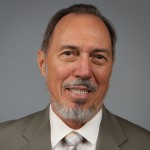 For one reason or another, there are far more audits of a product, service or process than audits of systems. While system audits verify management system conformance or compliance, their more prevalent brethren focus on the verification of specific methods and product or service characteristics. Continue reading
For one reason or another, there are far more audits of a product, service or process than audits of systems. While system audits verify management system conformance or compliance, their more prevalent brethren focus on the verification of specific methods and product or service characteristics. Continue reading
#218 – RETAIL APOCALYPSE: A STORY OF DISRUPTION – VICTORIA LAI
Featured
 Malls are going south in the U.S. General retail may also go the same way, unless shops transform themselves. Here’s our story why retail is facing an apocalypse.
Malls are going south in the U.S. General retail may also go the same way, unless shops transform themselves. Here’s our story why retail is facing an apocalypse.
My family used to own two businesses in different malls. The rent in the mall was ten times higher than a retail space outside the mall. Also, the retailer would have to sign a rental contract for five to ten years and every year the rent would increase. Continue reading
#218 – COMPARING RISK MANAGEMENT FRAMEWORKS – ROBERT POJASEK
Featured
 In my past two blogs, we have examined the risk-aware culture[i] and the risk management process[ii] as found in ISO 31000:2018 and COSO ERM 2017. This blog will address the third structural element defined by these documents – “risk management framework.” ISO 31000:2018 includes the risk management framework along with the risk-aware culture and the risk management process. COSO ERM 2017 is a risk management framework even though it addresses what ISO 31000:2018 addresses in its three-component risk management standard. Continue reading
In my past two blogs, we have examined the risk-aware culture[i] and the risk management process[ii] as found in ISO 31000:2018 and COSO ERM 2017. This blog will address the third structural element defined by these documents – “risk management framework.” ISO 31000:2018 includes the risk management framework along with the risk-aware culture and the risk management process. COSO ERM 2017 is a risk management framework even though it addresses what ISO 31000:2018 addresses in its three-component risk management standard. Continue reading
#217 – TRADE WAR WITH CHINA – YOUR MOST IMPORTANT QUESTION – GREG HUTCHINS
Featured
 We are entering a time of global trade wars: US vs. China, US vs. EU, EU vs. China and frankly:China vs. The World.
We are entering a time of global trade wars: US vs. China, US vs. EU, EU vs. China and frankly:China vs. The World.
And, it’s not going away. China is on it’s way to becoming ‘evil empire.’ The new Soviet Union of unfair trade.
THE MOST CRITICAL QUESTION
This means that companies must now revisit and answer their most critical question: ‘Make or Buy’ products that used to be made by suppliers Continue reading
#217 – YOU STILL HAVE TIME TO SAVE YOUR ISO 9001 CERTIFICATION, BUT YOU MUST ACT NOW – ANDREW FOY
Featured
 So, if you haven’t successfully completed your transition activities by Sept 15th 2018 then you will lose your certification – and need to start the whole process again. Is that you? Continue reading
So, if you haven’t successfully completed your transition activities by Sept 15th 2018 then you will lose your certification – and need to start the whole process again. Is that you? Continue reading
#217 – BIG DATA IS A BIG DEAL, HERE’S WHAT YOU NEED TO KNOW ABOUT IT – ANNA KUCIRKOVA
Featured
 “Big Data” is tracking you (among other things).
“Big Data” is tracking you (among other things).
Most people have heard the term “big data,” but few know exactly what it means. To make matters worse, the term can mean pretty significantly different things in different domains. For the sake of simplicity, we’ll begin by focusing on a very relatable aspect of big data: building user profiles, such as the kind Facebook and Google create of their users. Continue reading
#217 – UNDERSTANDING THE RISK MANAGEMENT ‘PROCESS’ – ROBERT POJASEK
Featured
 There are two widely-used risk management standards:
There are two widely-used risk management standards:
- ISO 31000:2018
- COSO ERM 2017
In my previous blog[i], I presented details on how these risk management standards address the development of a risk-aware culture – a necessary foundation for risk management success. As promised, this blog will address the risk management “process.” This is how the organization addresses specific risks. Continue reading
#217 – PROJECT AIN’T BROKE: DON’T FIX IT, BUT ARE YOU MAINTAINING IT? – MALCOLM PEART
Featured
 Projects go wrong and in our binary world projects either succeed or fail. There is a plethora of articles, opinions and reasons for such success and failure but why, and how, is this possible when we have more and more ‘qualified’ project managers?
Projects go wrong and in our binary world projects either succeed or fail. There is a plethora of articles, opinions and reasons for such success and failure but why, and how, is this possible when we have more and more ‘qualified’ project managers?
When a project is still moving or hasn’t fallen apart it may be categorised as “it ain’t broke” and optimistic project managers may conclude “no need to fix it“. However, we all know that preventive maintenance will allow for successful operation and minimise breakdowns and avoid trouble, “a stitch in time saves nine“. Continue reading
#216 – THE FAULT LIES NOT IN THE STARS, BUT WITHIN OURSELVES – JOSEPH PARIS
Featured
 I hear all too often from professionals in Continuous Improvement how “Senior Leadership does not give me the support I need”. Some go further by making the claim that “Senior Leadership just doesn’t understand”. And some go further still and make the suggesting there is a conscious, if not curious, effort by senior leaders to sabotage the Continuous Improvement programs. Continue reading
I hear all too often from professionals in Continuous Improvement how “Senior Leadership does not give me the support I need”. Some go further by making the claim that “Senior Leadership just doesn’t understand”. And some go further still and make the suggesting there is a conscious, if not curious, effort by senior leaders to sabotage the Continuous Improvement programs. Continue reading
#216 – BOTH/AND THINKING – DANIEL BURRUS
Featured
 There is a long-standing trend in the global marketplace when it comes to the qualities of top executives. They are often rewarded for their willingness to definitively say yes or no to big financial and technological decisions. This is a quality that may have served you well in your career as well. However, when it comes to new technology, there may be more than one answer. Continue reading
There is a long-standing trend in the global marketplace when it comes to the qualities of top executives. They are often rewarded for their willingness to definitively say yes or no to big financial and technological decisions. This is a quality that may have served you well in your career as well. However, when it comes to new technology, there may be more than one answer. Continue reading
#216 – PROJECT MANAGERS, MISSIONARIES, MERCENARIES, OR MISFITS – MALCOLM PEART
Featured
 Who really starts out their career wanting to be a Project Manager?
Who really starts out their career wanting to be a Project Manager?
According to Patricia Ensworth, author of The Accidental Project Manager: Surviving the Transition from Techie to Manager, people don’t typically have a burning desire to become project managers at the outset. Continue reading
#216 – HOW RISK INFORMED, DECISION MAKING CHANGED A LIFE – JOHN AYERS
Featured
 Risk Based Informed Decision Making (RIDM) has a risk assessment as input as well as social and other benefits residual risks. This data or information empowers the person to make an informed decision. This following is an example of RIDM. Continue reading
Risk Based Informed Decision Making (RIDM) has a risk assessment as input as well as social and other benefits residual risks. This data or information empowers the person to make an informed decision. This following is an example of RIDM. Continue reading
#216 – CREATING A RISK AWARE CULTURE – BOB POJASEK
Featured
 The two most widely-used risk management system standards are ISO 31000:2018 and COSO ERM:2017.
The two most widely-used risk management system standards are ISO 31000:2018 and COSO ERM:2017.
ISO 31000:2018[i] presents eight ‘principles’ to provide guidance on the characteristics of having efficient and effective risk management, communicating its value, and explaining its intention and purpose. These principles are offered as the foundation for managing risk and seeks the users’ consideration when establishing the organization’s risk management framework and processes. Continue reading
#215 – THE PROCRASTINATION FIX: TURN LAZINESS INTO PRODUCTIVITY – TYLER TERVOOREN
Featured
 The problem: We normally think of procrastination as inherently bad. When we do it, we feel a sense of shame.
The problem: We normally think of procrastination as inherently bad. When we do it, we feel a sense of shame.
The solution: “Active” procrastination will actually make you more productive and happy. You should embrace it.
It was two weeks until the marathon and I still didn’t have my ticket to Greece. Then it was two days, and I still hadn’t replaced my shoes. Then it was two hours and my bag wasn’t packed. Continue reading
#215 – PROGRAMMATIC VS. PROJECT LEVEL OF RISK – JOHN AYERS
Featured
 Enterprise Risk Management (ERM) is a relatively new concept. It is a top down approach to business system management and execution. It is designed to identify potential events and risks that can impact the organization. There are 3 levels to ERM. These are: Enterprise Level; Program/Project Level; and Product level. This paper explains the differences between the program and project level. Continue reading
Enterprise Risk Management (ERM) is a relatively new concept. It is a top down approach to business system management and execution. It is designed to identify potential events and risks that can impact the organization. There are 3 levels to ERM. These are: Enterprise Level; Program/Project Level; and Product level. This paper explains the differences between the program and project level. Continue reading
#215 – RISK MANAGEMENT STANDARD TASTE TEST – BOB POJASEK
Featured
 On My Left is COSO ERM:2017! On My Right is ISO 31000:2018!
On My Left is COSO ERM:2017! On My Right is ISO 31000:2018!
Many companies are in the process of conducting the risk management taste test. The problem is that many of these companies are not yet sold on risk management. However, stakeholders, institutional investors and the US Securities and Exchange Commission have other ideas. Continue reading
#215 – REAL LEADERS DON’T EAT QUICHE: THEY DON’T BLAME EITHER – MALCOLM PEART
Featured
 We live in an age where blame seems to be the name of the game. When something has gone wrong, somebody is doing better, or something is ‘strange’, a scapegoat must be found.
We live in an age where blame seems to be the name of the game. When something has gone wrong, somebody is doing better, or something is ‘strange’, a scapegoat must be found.
The recent US Congressional Hearing into Facebook failed to make blame stick as modern-day dinosaurs “interrogated” a tech-savvy icon…just as in the days of McArthy’s efforts with gays and commies; maybe next time Congress, maybe. Continue reading
#215 – I’M A TERRIBLE COMMUNICATOR – GARY HINKLE
Featured
 People in my workshops often end up confessing that they know they’re “terrible communicators.” They say they know it’s important to listen openly, write clearly, and present well but that they don’t do it well and never have. Continue reading
People in my workshops often end up confessing that they know they’re “terrible communicators.” They say they know it’s important to listen openly, write clearly, and present well but that they don’t do it well and never have. Continue reading
#214 – “NEXT JOB SYNDROME’ – A RISK TO FUTURE PROJECTS – MALCOLM PEART
Featured
 The project is in progress and, no matter what stage it is at, the project management team and all other stakeholders will see it from different perspectives. Management is called upon to face reality rather than rely on their forecast of what should be happening or what should have happened.
The project is in progress and, no matter what stage it is at, the project management team and all other stakeholders will see it from different perspectives. Management is called upon to face reality rather than rely on their forecast of what should be happening or what should have happened.
But when the going gets tough, and the tough get going, others may well have left physically or metaphorically by ‘keeping their head down’ and ‘going with the flow’. Continue reading
#214 – AS TECHNOLOGY CONTINUES TO IMPACT OUR LIVES – DANIEL BURRUS
Featured
 As technology continues to impact our lives, workers at every level in today’s ever-changing labor market need to be prepared with skills to adapt and succeed in the workplace.
As technology continues to impact our lives, workers at every level in today’s ever-changing labor market need to be prepared with skills to adapt and succeed in the workplace.
The problem is, we live in an uncertain world, and because of the high levels of uncertainty we all face, people of all ages and career levels are finding it difficult to know what new skills to learn, what courses to take, and what degrees to get that will provide them with the most opportunity going forward. Uncertainty keeps us stuck in the present. Continue reading
#214 – PROCESS AUDITING AND TECHNIQUES – J.P. RUSSELL
Featured
 Process audits are highly focused, but their effective techniques are not always understood. Because there is no sanctioned process audit standard, anyone can claim to be doing process audits. Also, the use of process auditing techniques such as tracing is not limited to process audits or process-based management systems. Continue reading
Process audits are highly focused, but their effective techniques are not always understood. Because there is no sanctioned process audit standard, anyone can claim to be doing process audits. Also, the use of process auditing techniques such as tracing is not limited to process audits or process-based management systems. Continue reading
#214 – LIFE AFTER ISO 9001:2015 – ROBERT POJASEK
Featured
There have been many articles in the past few weeks that provided information about disruption and its effect on the transition that many companies must make to ISO 9001:2015. This must be all wrapped up by September 15, 2018. A recent article in ASQ’s Quality Progress magazine[i] is adding fuel to the fire. Let’s take a look at the recently-released ISO 9004:2018. Continue reading
#214 – THE ‘GREEN FAIRY’ AND OPERATIONAL EXCELLENCE – JOSEPH PARIS
Featured
 XONITEK-US and XONITEK-UK recently hosted an Operational Excellence Summit in Amsterdam, the Netherlands. If you have ever been to Amsterdam, you will know there are distinct cultural differences which are quite obvious if you are from New York – even from a pre-Giuliani New York. Continue reading
XONITEK-US and XONITEK-UK recently hosted an Operational Excellence Summit in Amsterdam, the Netherlands. If you have ever been to Amsterdam, you will know there are distinct cultural differences which are quite obvious if you are from New York – even from a pre-Giuliani New York. Continue reading
#213 – AUTOMATION OF THE SUPPLY CHAIN & THE HUMAN TOUCH – STUART ROSENBERG
Featured
 Automating the supply chain is crucial to the future of the industry, but humans will never be replaced. People have always been and will continue to be the drivers of these processes. Instead of eliminating the human employees, supply chain technology is moving humans from the repetitive data entry and numbers crunching tasks to more intelligent supply chain decision making, enabled by smart data and technology support. Continue reading
Automating the supply chain is crucial to the future of the industry, but humans will never be replaced. People have always been and will continue to be the drivers of these processes. Instead of eliminating the human employees, supply chain technology is moving humans from the repetitive data entry and numbers crunching tasks to more intelligent supply chain decision making, enabled by smart data and technology support. Continue reading
#213 – KISS: A PRINCIPLE FOR PROPER PROJECT PLANNING – MALCOLM PEART
Featured
 KISS, “Keep It Simple, Stupid” is a US Navy principle from the 1960’s advocating that systems function best if they are kept simple rather than made complicated and that unnecessary complexity should be avoided.
KISS, “Keep It Simple, Stupid” is a US Navy principle from the 1960’s advocating that systems function best if they are kept simple rather than made complicated and that unnecessary complexity should be avoided.
In our politically correct world ‘stupid’ is often taken as an insult and ‘keep it short and simple’ or ‘small and simple’ is often substituted. ‘Stupid’ is not an insult, it’s a warning! It takes a bright person to keep things simple, particularly when it’s easier to have a complex mess under the guise of sophistication. Projects inevitably become complicated as they develop which increases the risk of potential failings. Continue reading
#213 – RAPID ITERATIONS PROJECT MANAGEMENT – GARY HINKLE
Featured
The cost of delay on technical projects averages tens of thousands of dollars per day in lost profit. This briefing describes a project management approach called Rapid Iterations Project Management (RIPM), which is optimized for speed and efficiency with the assumption that project requirements will be changing for a period of time. RIPM utilizes elements of Agile, Lean, Kanban and general project management best practices combined – yielding an optimal methodology for rapid development with changing requirements. Continue reading
#213 – FIRM FIXED PRICE CONTRACTS CAN BE RISKY – JOHN AYERS
Featured
 A Firm Fixed Price (FFP) contract is a commonly used one by the government because the price is fixed and not subject to change unless the scope changes. The government assumes very little risk while the contractor assumes the majority of the risk. But if you want to play in the sand box and the RFP (request for quote) requires an FFP contract then the contractor has to bid it that way and hopefully has included adequate risk budget in the price. This is a story about an FFP contract that did not work out well for my company resulting in serious consequences. Continue reading
A Firm Fixed Price (FFP) contract is a commonly used one by the government because the price is fixed and not subject to change unless the scope changes. The government assumes very little risk while the contractor assumes the majority of the risk. But if you want to play in the sand box and the RFP (request for quote) requires an FFP contract then the contractor has to bid it that way and hopefully has included adequate risk budget in the price. This is a story about an FFP contract that did not work out well for my company resulting in serious consequences. Continue reading
#213 – RESPONSES TO ISO DISRUPTION – GREG HUTCHINS
Featured
 We have focused over the last 5 years on transforming business models using tailored risk-control frameworks. This is also part of our digitization effort.
We have focused over the last 5 years on transforming business models using tailored risk-control frameworks. This is also part of our digitization effort.
In this week’s post, we continue our discussion of the ISO/Quality disruption. Hopefully, we are going to offer a few suggestions of what one association and one Certification body are doing. Continue reading
#212 – DISRUPTION OF THE ISO MARKET – GREG HUTCHINS
Featured
 By September 14, 2018, all ISO 9001:2008 and ISO 14,001:2004 companies will have transitioned to ISO 9001:2015 (Quality Management System) and ISO 14001:2015 (Environmental Management System).
By September 14, 2018, all ISO 9001:2008 and ISO 14,001:2004 companies will have transitioned to ISO 9001:2015 (Quality Management System) and ISO 14001:2015 (Environmental Management System).
This is a big deal in the standards world. These standards are among the best selling standards in the world impacting more then 1.6 million certified companies. Continue reading
#212 – DESIGN ASSUMPTION RISKS – JOHN AYERS
Featured
This story is about risk at the enterprise program/project level. Design is based on primarily requirements and assumptions. Meeting requirements is usually achievable if they are complete and clear. Soft or poorly written requirements are the source of cost and schedule growth for many projects. Assumptions made during the analysis or design phase if wrong are also a source of poor project performance. This story is one example of a bad assumption. Continue reading
#212 – CRITICAL RISKS AND ENTERPRISE RISK MANAGEMENT – JAMES KLINE PH.D.
Featured
 In other pieces the Lloyd’s of London City Risk and the Natural Hazard Mitigation Saves studies were discussed. It was noted that both studies provide an assessment of the costs associated with the adverse impact of risk events. The Natural Hazard study focused on natural Hazards, while the Lloyd’s study incorporates both man-made and natural hazard risk events. Continue reading
In other pieces the Lloyd’s of London City Risk and the Natural Hazard Mitigation Saves studies were discussed. It was noted that both studies provide an assessment of the costs associated with the adverse impact of risk events. The Natural Hazard study focused on natural Hazards, while the Lloyd’s study incorporates both man-made and natural hazard risk events. Continue reading
#212 – YOUR GOVERNANCE FRAMEWORK: ARE LIVES SAFE ON YOUR WATCH? – ANNETTE DAVISON
Featured
 In June 2015, Paul Lau died in Macquarie University Hospital, after being admitted for a routine knee operation. In October 2016, a raft flipped over on the Thunder River Rapids ride at Dreamworld. Four people were killed. In a world that is moving towards customers being at the heart of everything, what happened to the focus on governance? Are lives safe on your watch? Continue reading
In June 2015, Paul Lau died in Macquarie University Hospital, after being admitted for a routine knee operation. In October 2016, a raft flipped over on the Thunder River Rapids ride at Dreamworld. Four people were killed. In a world that is moving towards customers being at the heart of everything, what happened to the focus on governance? Are lives safe on your watch? Continue reading
#212 – CONTINUOUS IMPROVEMENT OF THE RISK MANAGEMENT FRAMEWORK – FRED SCHENKELBERG
Featured
 Systems and processes exist in our dynamic world. Each organization and situation is different. Just as there is not one risk management process that works for any organization, there also is the need for continuous improvement of an existing system. Continue reading
Systems and processes exist in our dynamic world. Each organization and situation is different. Just as there is not one risk management process that works for any organization, there also is the need for continuous improvement of an existing system. Continue reading
#212 –
Featured
#211 – ARE COUNTRIES AND CITIES RUNNING OUT OF WATER? – UNIVERSITY OF AUCKLAND
Featured
 There is a water crisis. Because water covers 70% of our planet, we tend to think water will always be around. But, freshwater is actually quite rare. In fact, only 3% of Earth’s water is freshwater, and most of that is frozen in glaciers or otherwise unattainable. Continue reading
There is a water crisis. Because water covers 70% of our planet, we tend to think water will always be around. But, freshwater is actually quite rare. In fact, only 3% of Earth’s water is freshwater, and most of that is frozen in glaciers or otherwise unattainable. Continue reading
#211 – STARBUCKS ROBOTIZATION – GREG HUTCHINS
Featured
 Late afternoon one day, I ordered a coffee latte in a Portland Oregon Starbucks.
Late afternoon one day, I ordered a coffee latte in a Portland Oregon Starbucks.
I waited for the order. One minute. Two minutes. Three minutes. Four minutes. No latte.
What had happened? The 3 baristas were all swapping stories and laughing.
My order. Forgotten. Continue reading
#211 – NATURAL HAZARD MITIGATION SAVES – JAMES KLINE PH.D.
Featured
 The year 2017 was a good year for conducting risk mitigation studies. Two 2017 studies came out about the same time. In 2018, Lloyd’s of London and Cambridge published their 2017 risk assessment study. Several months earlier, the National Institute of Building Science published “Natural Hazard Mitigation Saves: 2017 Interim Report”. The Lloyd’s of London and Cambridge study are discussed in another piece. The differences between the two studies is that the Lloyd’s study is a global assessment. It also expands the risk perspective by including man-made and natural hazard risks. Continue reading
The year 2017 was a good year for conducting risk mitigation studies. Two 2017 studies came out about the same time. In 2018, Lloyd’s of London and Cambridge published their 2017 risk assessment study. Several months earlier, the National Institute of Building Science published “Natural Hazard Mitigation Saves: 2017 Interim Report”. The Lloyd’s of London and Cambridge study are discussed in another piece. The differences between the two studies is that the Lloyd’s study is a global assessment. It also expands the risk perspective by including man-made and natural hazard risks. Continue reading
#211 – ELIMINATING WASTE – SCHEDULING – JOSEPH PARIS
Featured
 If you ever find yourself saying; “There must be a better way”, I can guarantee you that there is. All we must do is find it. And, once a successful solution is suspected, try it. And when found, implement.
If you ever find yourself saying; “There must be a better way”, I can guarantee you that there is. All we must do is find it. And, once a successful solution is suspected, try it. And when found, implement.
One of the biggest stones in my shoe was scheduling appointments and calls. It was a giganormous time-suck. Continue reading
#211 – RISK MANAGEMENT DETAILS FOUND IN ISO 14001:2015 – BOB POJASEK
Featured
 ISO 14001:2015 placed its position on risk management in the Annex (A.6.1.1): “Although risks and opportunities need to be determined and addressed, there is no requirement for formal risk management or a documented risk management process. It is up to the organization to select the method it will use to determine its risks and opportunities. The method may involve a simple qualitative process or a full quantitative assessment depending on the context in which the organization operates.” However, they neutralized the confusing “risks and opportunities” phrase by defining it (3.2.11) as: “potential adverse effects (threats) and potential beneficial effects (opportunities).” Continue reading
ISO 14001:2015 placed its position on risk management in the Annex (A.6.1.1): “Although risks and opportunities need to be determined and addressed, there is no requirement for formal risk management or a documented risk management process. It is up to the organization to select the method it will use to determine its risks and opportunities. The method may involve a simple qualitative process or a full quantitative assessment depending on the context in which the organization operates.” However, they neutralized the confusing “risks and opportunities” phrase by defining it (3.2.11) as: “potential adverse effects (threats) and potential beneficial effects (opportunities).” Continue reading
#210 – CROSSING THE STREET OF ACCELERATED CHANGE – DANIEL BURRUS
Featured
 It’s one of life’s universal lessons: Look both ways before crossing the street. Parents have been impressing its importance on every generation since Henry Ford tinkered with the internal combustion engine. However, many of us forgot that good advice, or assumed it didn’t apply, when crossing from one decade of business into the next. Continue reading
It’s one of life’s universal lessons: Look both ways before crossing the street. Parents have been impressing its importance on every generation since Henry Ford tinkered with the internal combustion engine. However, many of us forgot that good advice, or assumed it didn’t apply, when crossing from one decade of business into the next. Continue reading
#210 – WHAT HAPPENED TO GENERAL ELECTRIC? – GREG HUTCHINS
Featured
 General Electric (GE) for many years was the go-to company for competitiveness, efficiency, and innovation. General Electric’s tagline was ‘Imagination at work.’
General Electric (GE) for many years was the go-to company for competitiveness, efficiency, and innovation. General Electric’s tagline was ‘Imagination at work.’
GE more recently has had a number of troubles. GE’s profitability tanked. GE is selling many of its assets and divisions. GE was also taken off the Dow after 110 years. Continue reading
#210 – COST OF PROJECT DELAYS – GARY HINKLE
Featured
 The cost of delay on technical projects averages tens of thousands of dollars per day in lost profit. Major factors involved in these delay costs are lost revenue, cost of resources and opportunity cost.
The cost of delay on technical projects averages tens of thousands of dollars per day in lost profit. Major factors involved in these delay costs are lost revenue, cost of resources and opportunity cost.
This briefing describes a recommended practice for estimating project delay costs and using those estimates for decision making. Cost of delay factors are first explained; followed by examples; then, recommendations for using the estimates to increase profits. Continue reading
#210 – TAKING ON UNNECESSARY PROJECT RISK – JOHN AYERS
Featured
 This story is about risk at the enterprise program/project level. It is an example of centering your design around a high-tech solution to a problem when a low risk proven technology would have more than sufficed. Technical expertise ego got in the way of a practical low-cost approach resulting in unplanned schedule and cost growth. Continue reading
This story is about risk at the enterprise program/project level. It is an example of centering your design around a high-tech solution to a problem when a low risk proven technology would have more than sufficed. Technical expertise ego got in the way of a practical low-cost approach resulting in unplanned schedule and cost growth. Continue reading
#210 – CITY RISK INDEX AND ERM – JAMES KLINE PH.D.
Featured
 Recently, Lloyd’s of London in conjunction with the University of Cambridge Center for Risk Studies, published the results of their global risk analysis. Lloyd’s document is entitled “Lloyd’s City Risk Index: Executive Summary”. Cambridge has entitled theirs “Cambridge Global Risk Outlook 2017”. This is their second risk assessment. The first was published in 2004. Continue reading
Recently, Lloyd’s of London in conjunction with the University of Cambridge Center for Risk Studies, published the results of their global risk analysis. Lloyd’s document is entitled “Lloyd’s City Risk Index: Executive Summary”. Cambridge has entitled theirs “Cambridge Global Risk Outlook 2017”. This is their second risk assessment. The first was published in 2004. Continue reading
#209 – TECHNICAL PROJECT PORTFOLIO MANAGEMENT – GARY HINKLE
Featured
 Technical projects have complexity, risk and expense that make them more difficult than average projects. With so much at stake, it’s important to manage a portfolio of technical projects exceptionally well. Management of the resources involved must also be top-notch.
Technical projects have complexity, risk and expense that make them more difficult than average projects. With so much at stake, it’s important to manage a portfolio of technical projects exceptionally well. Management of the resources involved must also be top-notch.
This briefing describes best practices for managing a portfolio of technical projects and managing the resource allocation for those projects. Portfolio management is first explained; followed by a process for determining business value; then, best practices for resource allocation across the portfolio. Continue reading
#209 – LIVING IN VUCA TIME – GREG HUTCHINS
Featured
 Just think of all the changes occurring in your organization. New regulations. Changing customers with product preferences. New competitive product offerings. New technologies. New branding. New business platforms. New business models. Compressed lifecycles. Change is no longer gradual. Change is rapid and abrupt. Continue reading
Just think of all the changes occurring in your organization. New regulations. Changing customers with product preferences. New competitive product offerings. New technologies. New branding. New business platforms. New business models. Compressed lifecycles. Change is no longer gradual. Change is rapid and abrupt. Continue reading
#209 – THE DIGITIZED SUPPLY CHAIN – SHEREEN MOSALLAM
Featured
 The economy is at the beginning of the next major industrial revolution, and technology is the driver, this time as the heart of both the production of many different products and as a core intelligent component of the things we use every day.
The economy is at the beginning of the next major industrial revolution, and technology is the driver, this time as the heart of both the production of many different products and as a core intelligent component of the things we use every day.
Digitization has long since moved into factories, and is now enabling operations in which humans work side by side with intelligent machines. Continue reading
#209 – GUIDELINES FOR AUDITING MANAGEMENT SYSTEMS ISO 19011: A SEA CHANGE – JIM KLINE Ph.D.
Featured
 In June 2018, the International Organization for Standards (ISO) is expected to release a revision of ISO 19011, its Guide to Auditing Management Systems. The final draft is out. Based on it, a sea change is coming for all ISO certifications. However, the impact is not fully understood. This piece discusses some of the implications. Continue reading
In June 2018, the International Organization for Standards (ISO) is expected to release a revision of ISO 19011, its Guide to Auditing Management Systems. The final draft is out. Based on it, a sea change is coming for all ISO certifications. However, the impact is not fully understood. This piece discusses some of the implications. Continue reading
#209 – HOW TO ESTIMATE THE NUMBER OF FAILURES NEXT MONTH – FRED SCHENKELBERG
Featured
 Let’s say you have shipped 1,000 products to your customer on January 1st. All are immediately placed into service. And each month since you have received a few product returns, what we are going to call failures. We also have fitted the data to a Weibull distribution. Then in May, your boss asks you to estimate how many failures to expect in June. Continue reading
Let’s say you have shipped 1,000 products to your customer on January 1st. All are immediately placed into service. And each month since you have received a few product returns, what we are going to call failures. We also have fitted the data to a Weibull distribution. Then in May, your boss asks you to estimate how many failures to expect in June. Continue reading
#208 – LESSONS LEARNED: SELDOM REMEMBERED? SOON FORGOTTEN – MALCOLM PEART
Featured
 Something on the Project goes wrong and is fixed – “Let’s put this down for lessons learned” goes the management mantra. But was this experience just a failing that should not have happened in the first place and relearning a previously taught, but now forgotten, ‘lesson’? Continue reading
Something on the Project goes wrong and is fixed – “Let’s put this down for lessons learned” goes the management mantra. But was this experience just a failing that should not have happened in the first place and relearning a previously taught, but now forgotten, ‘lesson’? Continue reading
#208 – SUPPLY CHAIN CYBER RISK MANAGEMENT – GREG HUTCHINS
Featured
 Cyber security risk is among the most critical risks to the supply chain:
Cyber security risk is among the most critical risks to the supply chain:
“Cyber and data privacy breaches are perceived to be the largest threat to the stability of transport and logistics, with the sector facing potential breaches of $2 trillion by 2019.”[i] Continue reading
#208 – THOUGHTS ON LIVING A FULFILLED LIFE – DR. TRUDY
Featured
#208 – CRAFTING A CONVENIENT TRUTH: THE CRISIS OF LEADERSHIP – GEARY SIKICH & DEBORAH HILEMAN
Featured
 The number, size and scope of things distracting management’s attention from the task of running the business continues to expand at an increasing pace. Denial of the threats from smoldering issues drives leaders to underestimate the potential for reputational and financial damage that can be caused by bad information gone viral. Continue reading
The number, size and scope of things distracting management’s attention from the task of running the business continues to expand at an increasing pace. Denial of the threats from smoldering issues drives leaders to underestimate the potential for reputational and financial damage that can be caused by bad information gone viral. Continue reading
#208 – QUALITY & RELIABILITY: SIMILARITIES AND DIFFERENCES – FRED SCHENKELBERG
Featured
 I like to say Reliability is all about quality over time. Quality professionals tend to say reliability is an element of quality. David A. Garvin of the Harvard Business School suggests there are eight dimensions to quality, including reliability.
I like to say Reliability is all about quality over time. Quality professionals tend to say reliability is an element of quality. David A. Garvin of the Harvard Business School suggests there are eight dimensions to quality, including reliability.
Either way one relates quality and reliability we need to remember that quality or reliability are not a department, team, the engineering down the hall. Quality and reliability are part of the culture of the organization. It is how we make decisions the impact how the product or service performs for customers. Continue reading
#207: RISKS OF HIGH ACHIEVEMENT – DR. TRUDY
Featured
 “Suicide is the act of intentionally causing one’s own death.[6] Risk factors include mental disorders such as depression, bipolar disorder, schizophrenia, personality disorders, and substance abuse” according to Wikipedia.
“Suicide is the act of intentionally causing one’s own death.[6] Risk factors include mental disorders such as depression, bipolar disorder, schizophrenia, personality disorders, and substance abuse” according to Wikipedia.
Traditionally, suicide is associated with misery, pain and suffering mostly resulting from financial troubles, traumatic loss and poverty. Logically, ending one’s life puts an end on the sources of suffering and brings relief. Continue reading
#207 – CONSEQUENCES OF INTERNATIONAL CONFLICT: NORTH KOREA VS. UNITED STATES – GEARY SIKICH
Featured
 On the Path to Probability and Uncertainty?
On the Path to Probability and Uncertainty?
Is the current situation with the Democratic People’s Republic of Korea on your radar screen as a business continuity planning consideration? Is this situation a realistic risk that your planning should begin to address with a thorough analysis of the potential consequences of an escalation? What about the situation in Syria? Ukraine? Iran? India/Pakistan? Or are these risks too far away and remote to begin to understand? Continue reading
#207 – MADE IN CHINA PART 2 – DIRK DUSHARME
Featured
 In part one we saw that China has made great strides in terms of product quality, notably in the tech sector. But it still has a long way to go in other products. Driven by the growing middle class, who like all middle class buyers want value for their money, and by the Chinese government’s desire to improve the tarnished “made in China” brand, there is a strong interest in improving product quality. Continue reading
In part one we saw that China has made great strides in terms of product quality, notably in the tech sector. But it still has a long way to go in other products. Driven by the growing middle class, who like all middle class buyers want value for their money, and by the Chinese government’s desire to improve the tarnished “made in China” brand, there is a strong interest in improving product quality. Continue reading
#207 – CHAINS OF COMMAND: UNFASHIONABLE BUT NECESSARY – MALCOLM PEART
Featured
 Chains are often associated with oppression and stultification; chained to one’s desk or being on a ‘chain gang’ are immediate analogies. But chains also drive machines, and provide security through their links.
Chains are often associated with oppression and stultification; chained to one’s desk or being on a ‘chain gang’ are immediate analogies. But chains also drive machines, and provide security through their links.
There are also chains of command which, in the security forces such as the military and police, allow command to be exercised through a clearly defined rank structure with defined responsibility, accountability and liability at all levels. Continue reading
#207 – WALMART’S: SUPPLY MANAGEMENT FOR ALL – GREG HUTCHINS
Featured
 Walmart sees the future: Educating its workforce in Supply Chain Management and business.
Walmart sees the future: Educating its workforce in Supply Chain Management and business.
Last week in its yearly shareholder meeting, Walmart announced several important initiatives that will impact its 1.4 million workers.
Walmart will subsidize college tuition so its employees can earn college degrees in supply chain management and business. These are core assets and differentiators to Walmart and now to more companies. Continue reading
#206 – MADE IN CHINA: FROM SCARY BAD TO SCARY GOOD – DIRK DUSHARME
Featured
 Back in the 1950s and 1960s, Japanese products were synonymous with cheaply made. Anyone over the age of 50 probably remembers cheap Japanese transistor radios when they were a kid. We all believed, in the day, that the more transistors a radio had, the better. That wasn’t necessarily true, but try telling that to a 9-year-old. And of course, we all knew that Japanese radios might claim to have 10 transistors but really only five of them worked. Continue reading
Back in the 1950s and 1960s, Japanese products were synonymous with cheaply made. Anyone over the age of 50 probably remembers cheap Japanese transistor radios when they were a kid. We all believed, in the day, that the more transistors a radio had, the better. That wasn’t necessarily true, but try telling that to a 9-year-old. And of course, we all knew that Japanese radios might claim to have 10 transistors but really only five of them worked. Continue reading
#206 – DATA OUTLIERS AND QUESTIONS – FRED SCHENKELBERG
Featured
 Data Outliers and Questions
Data Outliers and Questions
When looking at a pile of data, sometimes there is a data point that is not like the others. It attracts attention as it is different than the rest of the data.
When I spot something odd in a dataset, I wonder if there is something to learn here. Is this an opportunity to make a discovery or improve a process? Continue reading
#206 – MUST KNOW CAREER TIPS AND TRICKS (VS. DONE) – JOSEPH PARIS
Featured
 I have been an entrepreneur and in business – nonstop – since 1985. And over the course of those 30-plus years, I have gained a lot of experience. But as the saying goes; “Experience is the most difficult teacher, she gives the test first and teaches the lesson after.” So I can say, with some degree of certainty, that I have made every mistake a business person could make. Sometimes, I would repeat the mistake just to be certain. Continue reading
I have been an entrepreneur and in business – nonstop – since 1985. And over the course of those 30-plus years, I have gained a lot of experience. But as the saying goes; “Experience is the most difficult teacher, she gives the test first and teaches the lesson after.” So I can say, with some degree of certainty, that I have made every mistake a business person could make. Sometimes, I would repeat the mistake just to be certain. Continue reading
#206 – 4 QUESTIONS OF WORLD CLASS ENTREPRENEURS – DANIEL BURRUS
Featured
 One of the many honors in my career as serial entrepreneur, author and keynote speaker has been my involvement as a keynote speaker at several national and international Ernst & Young (EY) Entrepreneur of the Year Awards, a global competition that fuels and celebrates innovative business thinking. The annual awards were started in Milwaukee, Wisconsin, in 1986 and have now been run in all 50 states and more than 60 countries. Continue reading
One of the many honors in my career as serial entrepreneur, author and keynote speaker has been my involvement as a keynote speaker at several national and international Ernst & Young (EY) Entrepreneur of the Year Awards, a global competition that fuels and celebrates innovative business thinking. The annual awards were started in Milwaukee, Wisconsin, in 1986 and have now been run in all 50 states and more than 60 countries. Continue reading
#206 – THE ORIGINAL SIX RULES OF RISK MANAGEMENT – ROBERT POJASEK
Featured
 When AS/NZS 4360:2004 was morphed into ISO 31000:2009, we somehow lost the “six rules of risk management” to a popular investment phrase, ‘risks and opportunities’. In the financial world, risk is a potential for a loss. Opportunity is a potential for a gain. Continue reading
When AS/NZS 4360:2004 was morphed into ISO 31000:2009, we somehow lost the “six rules of risk management” to a popular investment phrase, ‘risks and opportunities’. In the financial world, risk is a potential for a loss. Opportunity is a potential for a gain. Continue reading
#205 – RISK MODELING AND BUSINESS CONTINUITY – GEARY SIKICH
Featured
 Risk modeling is a useful tool for business continuity managers, but over-reliance and flawed approaches can create difficulties.
Risk modeling is a useful tool for business continuity managers, but over-reliance and flawed approaches can create difficulties.
Introduction
Fundamental uncertainties derive from our fragmentary understanding of risk and complex system dynamics and interdependencies. Abundant stochastic variation in risk parameters further exacerbates the ability to clearly assess uncertainties. Continue reading
#205 – BASICS OF PLANNED AND DEFERRED MAINTENANCE – FRED SCHENKELBERG
Featured
 We can plan to do more than we are capable of accomplishing. The remaining items, if they warranty accomplishing become deferred. They roll over to the next’s day’s list of actions to take.
We can plan to do more than we are capable of accomplishing. The remaining items, if they warranty accomplishing become deferred. They roll over to the next’s day’s list of actions to take.
Of course, in practice, the process to plan, execute, and defer maintenance activities is a bit more complex than described above. The ability to maintain equipment in working order along with minimizing downtime and costs is in large part the balance between resources available to conduct maintenance and the increased risk of system failure due to deferred maintenance. Continue reading
#205 – UGLY COMMUNICATIONS – MALCOLM PEART
Featured
 Good communication; the effective and efficient issue and receipt of the right information, by the right parties, at the right time, and in the right medium allowing both timely responses and decisions. It’s easy on paper and in theory but oftentimes the ‘noise’ in the communication channels are blamed for ‘bad’ communication.
Good communication; the effective and efficient issue and receipt of the right information, by the right parties, at the right time, and in the right medium allowing both timely responses and decisions. It’s easy on paper and in theory but oftentimes the ‘noise’ in the communication channels are blamed for ‘bad’ communication.
This ‘noise’ is attributed to the distractions of an inadequate meeting room, noisy neighbours, a flaky internet connection, black & white rather than colour copies, decentralised teams, and even international time differences. But are these just excuses rather than real reasons? Continue reading
#205 – A MAJOR SUBCONTRACT GONE WRONG – JOHN AYERS
Featured
T his risk story involves a major subcontract that went awry impacting the program and one of my company’s growth goals. The goal was to become the sole provider to the Navy for a mine killing system comprising two major components. One is an underwater kill vehicle and the second one is a launcher (from a helicopter). To accomplish this goal, we landed a contract with the Navy to design, build and perform tests of a small quantity of units (called first article units). Continue reading
his risk story involves a major subcontract that went awry impacting the program and one of my company’s growth goals. The goal was to become the sole provider to the Navy for a mine killing system comprising two major components. One is an underwater kill vehicle and the second one is a launcher (from a helicopter). To accomplish this goal, we landed a contract with the Navy to design, build and perform tests of a small quantity of units (called first article units). Continue reading
#205 – POLITICAL RISK AND ENTERPRISE RISK MANAGEMENT – JAMES KLINE PH.D.
Featured
 Former Secretary of State Condoleezza Rice PhD. and Amy B. Zegart PhD. have written a book called Political Risk: How Businesses and Organizations Can Anticipate Global Insecurity. It has received good reviews. Having read the book, I would concur. It is an important book for those concerned with the increasing volatility and associated risk of the global economy. This piece discusses the relationship between Political Risk and Enterprise Risk Management (ERM). Continue reading
Former Secretary of State Condoleezza Rice PhD. and Amy B. Zegart PhD. have written a book called Political Risk: How Businesses and Organizations Can Anticipate Global Insecurity. It has received good reviews. Having read the book, I would concur. It is an important book for those concerned with the increasing volatility and associated risk of the global economy. This piece discusses the relationship between Political Risk and Enterprise Risk Management (ERM). Continue reading
#204 – TODAY’S RISK MANAGERS – TOMORROW’S CEO’S – JIM TONEY
Featured
 Last year I read an article that said today’s risk managers are tomorrow’s CEO’s. I was intrigued and wanted to advance my career. This is my story with Carnegie Mellon University’s Chief Risk Officer (CRO) program.
Last year I read an article that said today’s risk managers are tomorrow’s CEO’s. I was intrigued and wanted to advance my career. This is my story with Carnegie Mellon University’s Chief Risk Officer (CRO) program.
The Carnegie-Mellon Chief Risk Officer (CRO) course is timely. Having attended the inaugural CRO course, some observations and thoughts might be of interest. First off, the curriculum, faculty, advisers, and facilities are all first rate. Continue reading
#204 – ERM, WHEN NOT DOING ‘RISK’ IS RISKY! – ED BALFOUR
Featured
 As businesses globalize and operate in an ever more interconnected (think social) world, consumers and stakeholders increasingly wield great power from a keyboard! Combine this with the pace of technical innovation and disruption (cyber, fintech etc) it is no surprise that traditional ways of viewing risk have started to change. Continue reading
As businesses globalize and operate in an ever more interconnected (think social) world, consumers and stakeholders increasingly wield great power from a keyboard! Combine this with the pace of technical innovation and disruption (cyber, fintech etc) it is no surprise that traditional ways of viewing risk have started to change. Continue reading
#204 – ADDING RISK AND OPPORTUNITY IN HEALTH AND SAFETY AT WORK – ROBERT POJASEK
Featured
Fanfare Over New International Health and Safety Standard
On March 12, 2018, ISO published the World’s first International Standard dealing with health and safety at work. This document “offers a single, clear framework for all organizations wishing to improve OH&S performance.”[i] ISO 45001:2018 is also the first health and safety standard to deal with risks and opportunities instead of focusing only on hazard risk. Continue reading
#204 – CUSTOMER SERVICE, REINVENTED – STUART ROSENBERG
Featured
 In this new age of customer service, there are those who argue that canned “scripts” are the direct opposite of great service. Customer service should be a conversation instead of a cold, formal and lifeless play on words.
In this new age of customer service, there are those who argue that canned “scripts” are the direct opposite of great service. Customer service should be a conversation instead of a cold, formal and lifeless play on words.
So, one ask, how is Customer Service and Supply Chain intertwined. With customer service the aspiration is to stand out from the crowd – surpass the competition and become indispensable. Continue reading
#203 – IS YOUR RECENT GRADUATE LIFE AND WORK READY? – PROBABLY NOT! – GREG HUTCHINS
Featured
 This is the time of year when millions of kids are told if they’re getting into their college or university of choice. It’s a time of huge stress for kids and their parents.
This is the time of year when millions of kids are told if they’re getting into their college or university of choice. It’s a time of huge stress for kids and their parents.
The kids think that their life’s arc is going to be facilitated by a name university. The parents are anxious to see if their 18 years of mentoring and parenting have pointed their kid in the right direction for life and work. And, oh by the way: who’s going to pay for the educational launch pad (i.e. college)? Continue reading
#203 – ENTERING A NEW MARKET GONE WRONG – JOHN AYERS
Featured
 This risk story includes risk at the enterprise level, the program/project level, and the product level. From the enterprise level risk, it was a little naïve on my company’s part to think they could go from zero not having manufactured any sonobuoys previously) to full up production the first time around without investing the time and finances to go up the learning curve prior to making the bid. From the program/product level risk viewpoint, the baseline plan did not include sufficient component and subassembly trial builds and testing before finalizing the concept, preliminary design and final design. Continue reading
This risk story includes risk at the enterprise level, the program/project level, and the product level. From the enterprise level risk, it was a little naïve on my company’s part to think they could go from zero not having manufactured any sonobuoys previously) to full up production the first time around without investing the time and finances to go up the learning curve prior to making the bid. From the program/product level risk viewpoint, the baseline plan did not include sufficient component and subassembly trial builds and testing before finalizing the concept, preliminary design and final design. Continue reading
#203 – WAS BP’S CATASTROPHE IN THE GULF A DEFINING MOMENT FOR THE OIL INDUSTRY – GEARY SIKICH
Featured
The BP Deepwater Horizon catastrophe cast a shadow on the oil industry and its senior executives. Has the industry learned its lessons or will it be forced to repeat the same mistakes over and over again? Oil company executives and board members should have seen the Deepwater Horizon event is as a wake-up call for the industry. Continue reading
#203 – LEVERAGING TECHNOLOGY IN PHARMA – JOSEPH PARIS
Featured
 I am not easily impressed by technology. In fact, I am often a contrarian and don’t easily buy into the hype of the “next great thing”. It’s probably a combination of factors.
I am not easily impressed by technology. In fact, I am often a contrarian and don’t easily buy into the hype of the “next great thing”. It’s probably a combination of factors.
One being that I started my professional career during the 1980’s and 90’s – a period of time when there was a veritable explosion in new technology. A period of time when technology titans such as Apple, Microsoft, Intel, and Oracle (to name just a few) were born. A time when mainframes were giving way to distributed computing and the internet was coming of age. Continue reading
#203 – THE DISRUPTED OR THE DISRUPTOR: PICK ONE – DANIEL BURRUS
Featured
 What comes to mind when you hear the term “disrupt”? Does it suggest chaos, lack of direction or other unsettling events? Or do you see it from the other side of the coin—when you’re the one causing the disruption and, as a result, leveraging the opportunity that results?
What comes to mind when you hear the term “disrupt”? Does it suggest chaos, lack of direction or other unsettling events? Or do you see it from the other side of the coin—when you’re the one causing the disruption and, as a result, leveraging the opportunity that results?
If your organization has an anticipatory mentality, disruption is often synonymous with opportunity—that is, if you’re able to accurately anticipate the future and plan to act on it accordingly instead of merely reacting. Continue reading
#202 – COMMUNICATION FAILURE: WHAT TO DO? – MALCOLM PEART
Featured
 “Communication failure” is an often cited reason for project failure or cancellation. All too often it is only recognised after the fact even though ‘poor communication’ will almost inevitably have been included on the risk register.
“Communication failure” is an often cited reason for project failure or cancellation. All too often it is only recognised after the fact even though ‘poor communication’ will almost inevitably have been included on the risk register.
Communication is the transfer (and receipt) of the right data, information and knowledge to the right party(s), at the right time, in the right place, and in the right medium. Information provides the power to make the decisions that are needed to make a project successful and resolve and overcome difficulties. Continue reading
#202 – FINDING OPPORTUNITIES WITH SWIFT – BOB POJASEK
Featured
 Why are we still using risk management tools (e.g. ISO 31010) to focus only on the threats to an organization? I was pleasantly surprised when reading the description of the “Structured “What-if” Technique” where I found the following strength and limitations information: “SWIFT can be used to identify opportunities for improvement of processes and systems and generally can be used to identify actions that lead to and enhance their probabilities of success.” Continue reading
Why are we still using risk management tools (e.g. ISO 31010) to focus only on the threats to an organization? I was pleasantly surprised when reading the description of the “Structured “What-if” Technique” where I found the following strength and limitations information: “SWIFT can be used to identify opportunities for improvement of processes and systems and generally can be used to identify actions that lead to and enhance their probabilities of success.” Continue reading
#202 – MAPPING LAYERED PROCESS AUDITS TO LEAN MANUFACTURING PRINCIPLES –
Featured
 Roughly 7 in 10 manufacturershave implemented Lean manufacturing principles in their organizations, with 5S, Six Sigma and Kaizen representing the most popular strategies today.
Roughly 7 in 10 manufacturershave implemented Lean manufacturing principles in their organizations, with 5S, Six Sigma and Kaizen representing the most popular strategies today.
One tool that supports these specific approaches and Lean manufacturing principles more generally is a layered process audit (LPA) program. LPAs draw auditors from all management layers and departments to verify mission-critical processes on a daily basis. Continue reading
#202 – THE DETAIL NECESSARY IN A RISK MANAGEMENT PLAN – FRED SCHENKELBERG
Featured
 A risk management plan has to meet your organizations needs as the organization identifies, manages, and mitigates potential and actual risks. The ISO 31000 framework does not detail how an organization should plan or what elements are required for an effective plan.
A risk management plan has to meet your organizations needs as the organization identifies, manages, and mitigates potential and actual risks. The ISO 31000 framework does not detail how an organization should plan or what elements are required for an effective plan.
This short article outlines a few details that may comprise a starting point as you build a risk management plan within your organization. Or, the suggestions here may help you review and improve your existing plan. Continue reading
#202 – CALIFORNIA HIGH-RISK AUDITS – JAMES KLINE PH.D.
Featured
 In January 2005, the California Legislature authorized the state auditor to conduct audits of state agencies to determine those that are at risk. The rationale for the authorization was that identification and mitigation of these risk would improve government efficiency and effectiveness. This piece looks at key aspects of the 2013 and 2018 high risk audits results and how the process of mitigating risk can link to broader risk management efforts. Continue reading
In January 2005, the California Legislature authorized the state auditor to conduct audits of state agencies to determine those that are at risk. The rationale for the authorization was that identification and mitigation of these risk would improve government efficiency and effectiveness. This piece looks at key aspects of the 2013 and 2018 high risk audits results and how the process of mitigating risk can link to broader risk management efforts. Continue reading
#201 – DIFFERENT PERSPECTIVES ON NON-FINANCIAL RISKS – ROBERT POJASEK
Featured
 Financial institutions state that the “non-financial risk” of their business customers is often related to compliance failure, misconduct, technology or operational challenges.
Financial institutions state that the “non-financial risk” of their business customers is often related to compliance failure, misconduct, technology or operational challenges.
These financial institutions describe non-financial risks as only having a downside. At the same time, ESG investor groups are seeking businesses that use harmonized international standards to improve the environmental, social and governance situations at all facilities and their supply chains. Continue reading
#201 – WHO HAS THE ‘OLD MAID’ – JOSEPH PARIS
Featured
 I was speaking with a friend who is the Chief Operating Officer of a multi-national chemical processing company a few weeks ago. We were speaking about the various challenges that he is facing, which are not unlike the challenges faced by many companies. His most important goal was to maximize profits whilst minimizing inventory – nothing new here. Continue reading
I was speaking with a friend who is the Chief Operating Officer of a multi-national chemical processing company a few weeks ago. We were speaking about the various challenges that he is facing, which are not unlike the challenges faced by many companies. His most important goal was to maximize profits whilst minimizing inventory – nothing new here. Continue reading
#201 – VALIDATING BUSINESS CONTINUITY PLANS USING FAILURE POINT EXERCISE METHODOLOGY – GEARY SIKICH
Featured
 Imagine that your plan has been implemented as it was designed. You and your organization carried out the plan following every detail that was contained in the planning documents. Your plan has failed. That is all you know. Your plan failed. Now your challenge and that of your planning team is to explain why they think that the plan failed. You must determine how much contrary evidence (information) was explained away based on the theory that the plan you developed will succeed if you implement the steps required to respond to a disruption of your business operations. Continue reading
Imagine that your plan has been implemented as it was designed. You and your organization carried out the plan following every detail that was contained in the planning documents. Your plan has failed. That is all you know. Your plan failed. Now your challenge and that of your planning team is to explain why they think that the plan failed. You must determine how much contrary evidence (information) was explained away based on the theory that the plan you developed will succeed if you implement the steps required to respond to a disruption of your business operations. Continue reading
#201 – REAL PROJECT RECOVERY: IT’S ABOUT SURVIVAL – MALCOLM PEART
Featured
 The troubled project is on the road to recovery; it’s been recognised, escalated, planned and the execution team had been briefed and appointed. The team has started to address the issues and expect (hope) to recover the project as per plan.
The troubled project is on the road to recovery; it’s been recognised, escalated, planned and the execution team had been briefed and appointed. The team has started to address the issues and expect (hope) to recover the project as per plan.
But the plan was based on a diagnosis rather than a full autopsy. It’s only during recovery that any lurking complications manifest themselves and relapses occur; so be prepared for the worst. Continue reading
#201 – RISK BASED THINKING AND SMART CITIES – JAMES KLINE PH.D.
Featured
 One of the interesting things I found, while doing research for the book, “Risk Based Thinking For Government”, is that Risk-Based Thinking (RBT) has permeated so many activities in government. RBT is a two-step process. The first step is to recognize that risks exist and to assess and prioritize them. The second step is utilizing the prioritized information to make decisions. Continue reading
One of the interesting things I found, while doing research for the book, “Risk Based Thinking For Government”, is that Risk-Based Thinking (RBT) has permeated so many activities in government. RBT is a two-step process. The first step is to recognize that risks exist and to assess and prioritize them. The second step is utilizing the prioritized information to make decisions. Continue reading
#200 – THE ROBOTS ARE COMING TO THE WORKPLACE – IQS
Featured
In the history of business and manufacturing, automation has become commonplace. In many ways, people have been replaced by machines in the manufacturing, retail, restaurant, and corporate settings.
At the same time, opportunities have arisen for employees who specialize in programming, engineering, and maintenance of machines in all areas of commerce and industry.
So here’s the crucial question: Will automation kill or create jobs? Continue reading
#200 – RISK AND THE LIMITATIONS OF KNOWLEDGE – GEARY SIKICH
Featured
 Awareness of risk can lead to unforeseen risk behaviors based on knowledge that is sufficiently convincing to lead to false positives.
Awareness of risk can lead to unforeseen risk behaviors based on knowledge that is sufficiently convincing to lead to false positives.
“The more you know, the more you know you don’t know.”
― attributed to Aristotle
Introduction
Knowledge is an opening door to understanding risk; the risk of knowledge is knowing how much you do not know. Unfortunately we have a very limited understanding of where risk is or where risk is going to materialize. Here is a small excerpt from “I, Pencil” by Leonard E. Read. The reason for this example is that we all use or have used pencils in our lifetimes. The pencil is a simple implement, right? Continue reading
#200 – THE 1 PARAMETER OF POISSON DISTRIBUTION’S 4 FORMULAS – FRED SCHENKELBERG
Featured
 This is part of a short series on the common life data distributions.
This is part of a short series on the common life data distributions.
The Poisson distribution is a discrete distribution. This short article focuses on 4 formulas of the Poisson Distribution. It is also known as the rare event distribution. It has application in a homogeneous Poisson princess and with renewal theory. Continue reading
#200 – ERM AND GOOD GOVERNANCE – JAMES KLINE PH.D.
Featured
 When people think of best practice in government, two things come to mind, benchmarking and national award winners. While both represent best practice, there is another approach which is growing in use and importance. This is the Good Governance Framework. The Good Governance Framework is the concept of identifying and listing the best practices in government. Continue reading
When people think of best practice in government, two things come to mind, benchmarking and national award winners. While both represent best practice, there is another approach which is growing in use and importance. This is the Good Governance Framework. The Good Governance Framework is the concept of identifying and listing the best practices in government. Continue reading
#200 – USING IOT INTELLIGENT THINGS TO MONITOR RISK IN REAL-TIME – GREG CARROLL
Featured
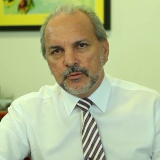 Although in ISO 31000 monitoring risk is another of its key tenets, I again see little monitoring in most risk management systems. Periodic review, dashboards, heat maps, and KRI reports are all Review (a different ISO 31000 tenet) not monitoring. IoT technology can deliver real-time monitoring of risk for more than just physical environmental metrics. Continue reading
Although in ISO 31000 monitoring risk is another of its key tenets, I again see little monitoring in most risk management systems. Periodic review, dashboards, heat maps, and KRI reports are all Review (a different ISO 31000 tenet) not monitoring. IoT technology can deliver real-time monitoring of risk for more than just physical environmental metrics. Continue reading
#199 – ‘A’ TO ‘Z’ TO ‘A’ OF PROJECT DELIVERY – MALCOLM PEART
Featured
How can we deliver projects in a timely, workmanlike and effective manner; there are many guides. This is an A to Z process linked to delivery, required decisions, and the establishment of an ethical project environment in which people may work. People may then realise their potential and the potential for their project to be delivered successfully. Continue reading
#199 – MINDING THE THREE CONTEXTS OF EHS RISK – ROBERT POJASEK
Featured
 After the Australian’s risk management standard (AS/NZS 4360:2004) walked on ISO’s world stage in 2009, management system users from other countries have shrugged their shoulders over the need to determine the context BEFORE getting into the familiar plan-do-check-act (PDCA) cycle. However, what lies between the organization and meeting its objectives is uncertainty. Continue reading
After the Australian’s risk management standard (AS/NZS 4360:2004) walked on ISO’s world stage in 2009, management system users from other countries have shrugged their shoulders over the need to determine the context BEFORE getting into the familiar plan-do-check-act (PDCA) cycle. However, what lies between the organization and meeting its objectives is uncertainty. Continue reading
#199 – IS PROCESS RISK A THREAT TO ENTERPRISE SUSTAINABILITY? – JIM TONEY
Featured
 Failure to continuously improve processes across the enterprise faster than competitors creates insidious enterprise threatening risk. Not dramatic. It might just be death by 1,000 small cuts. Continue reading
Failure to continuously improve processes across the enterprise faster than competitors creates insidious enterprise threatening risk. Not dramatic. It might just be death by 1,000 small cuts. Continue reading
#199 – USING PREDICTIVE ANALYTICS FOR THREAT MANAGEMENT/PREVENTIVE ACTION – GREG CARROLL
Featured
 The failed Risk Management practice of the ubiquitous risk matrix will finally be laid to rest in the 2020s. Vague subjective estimation of likelihoods and consequences will be replaced with Predictive Analytics objective predictions, based historical patterns and current trends, leading to informed risk based decision making. Continue reading
The failed Risk Management practice of the ubiquitous risk matrix will finally be laid to rest in the 2020s. Vague subjective estimation of likelihoods and consequences will be replaced with Predictive Analytics objective predictions, based historical patterns and current trends, leading to informed risk based decision making. Continue reading
#199 – HOW THE LAW OF OPPOSITES PROPELS BUSINESS FORWARD – DANIEL BURRUS
Featured
 Being anticipatory often boils down to the ability to see what everyone else misses. How can you do that? One way is to simply look where no one else happens to be looking. And how and where you look can help broaden both your and your organization’s capacity for being anticipatory. Leveraging the Law of Opposites isn’t just about being contrarian or being different just for the sake of being different. Continue reading
Being anticipatory often boils down to the ability to see what everyone else misses. How can you do that? One way is to simply look where no one else happens to be looking. And how and where you look can help broaden both your and your organization’s capacity for being anticipatory. Leveraging the Law of Opposites isn’t just about being contrarian or being different just for the sake of being different. Continue reading
#198 – A FRAMEWORK FOR QUALITY RISK MANAGEMENT OF FACILITIES AND EQUIPMENT – PHIL DESANTIS
Featured
 This two-part article focuses on risk management of facilities and equipment. It describes how a risk-based approach to facilities and equipment management fits into an integrated, effective quality systems structure. The principles discussed are equally applicable to all quality systems. Facilities and equipment represent a broad range of risk to product quality and are one of the key quality systems commonly identified in the pharmaceutical manufacturing industry. Continue reading
This two-part article focuses on risk management of facilities and equipment. It describes how a risk-based approach to facilities and equipment management fits into an integrated, effective quality systems structure. The principles discussed are equally applicable to all quality systems. Facilities and equipment represent a broad range of risk to product quality and are one of the key quality systems commonly identified in the pharmaceutical manufacturing industry. Continue reading
#198 – RISK MANAGEMENT … THE WHAT, WHY, AND HOW – MICHAEL STANLEIGH
Featured
Risk Management is the process of identifying, analyzing and responding to risk factors throughout the life of a project and in the best interests of its objectives. Proper risk management implies control of possible future events and is proactive rather than reactive. Continue reading
#198 – SEARCHING FOR ZERO – ROBERT POJASEK
Featured
In the 1990’s, we all got involved looking for “zero.” DuPont tried to lead the way in the slogan department. “Our goal is zero – zero accidents, zero wastes, zero emissions, and zero excuses!” I loved the last part. Despite all of the whoopla, DuPont and a lot of other companies are still searching for zero. This despite that the zero advocates set the null point as something “north of zero.” Consider six sigma, which some people referred to as zero waste. This term represents 3.4 defects per million operations. If you are a scientist, this is not zero. If you are an engineer, it is darn close. Continue reading
#198 – DECISIONS OR INDECISIONS – IT’S A LEADERSHIP THING! – MALCOLM PEART
Featured
 Question: Decisions, why do we need them?
Question: Decisions, why do we need them?
Answer: To know what to do; when, where and how to do it; and by who.
But who makes them? Everybody makes decisions everyday, all the time, about what to eat, what to do at the weekend, and decisions regarding work. Work decisions are made at all levels of an organisation and can influence time, cost, and quality and may contribute to failure or success. Continue reading
#198 – FIVE PRIMARY REASONS FOR THE FAILURE OF PREDICTIVE ANALYTICS IN ERM – GREG CARROLL
Featured
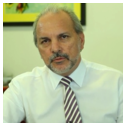 Regardless of the hype surrounding Predictive Analytics, and even the fact there are some excellent and relatively inexpensive tools available, not only has its implementation been weak, but a 2017 Gartner survey found in many areas investment is going backwards. Continue reading
Regardless of the hype surrounding Predictive Analytics, and even the fact there are some excellent and relatively inexpensive tools available, not only has its implementation been weak, but a 2017 Gartner survey found in many areas investment is going backwards. Continue reading
#197 – WHY WOMEN LOSE CONFIDENCE? – ELIZABETH LIONS
Featured
 “The problem is not with life. The problem is you haven’t taken charge of your mind.”—sadguru, Isha Foundation
“The problem is not with life. The problem is you haven’t taken charge of your mind.”—sadguru, Isha Foundation
I always take questions at the end of my talks, and recently I distinctly remember a women in the back of the room that said, ” Elizabeth, I attended one of your talks recently, and you told us about the monkey in our heads. That really helped me. Can you tell that story again?” Continue reading
#197 – ROAD TO PROJECT RECOVERY IS PAVED WITH GOOD INTENTIONS – MALCOLM PEART
Featured
 The management declares the project will be recovered. “Recovery” is on everybody’s lips but, just as actions speak louder than words, talking never cured anything. A plan for recovery is essential, a recovery team is needed, and implementation must take place for effective recovery. Continue reading
The management declares the project will be recovered. “Recovery” is on everybody’s lips but, just as actions speak louder than words, talking never cured anything. A plan for recovery is essential, a recovery team is needed, and implementation must take place for effective recovery. Continue reading
#197 – CALTRANS’ APPROACH TO ENTERPRISE RISK MANAGEMENT – JAMES KLINE PH.D.
Featured
 The California Department of Transportation (Caltrans) is under two risk management mandates. One is the federal requirements under the Moving Ahead for Progress for the 21st Century Act (MAP 21). Continue reading
The California Department of Transportation (Caltrans) is under two risk management mandates. One is the federal requirements under the Moving Ahead for Progress for the 21st Century Act (MAP 21). Continue reading
#197 – RETHINKING MANAGEMENT SYSTEM STANDARDS – IAN DALLING
Featured
 “It must be remembered that there is nothing more difficult to plan, more doubtful of success, nor more dangerous to manage than a new system. For the initiator has the enmity of all who would profit by the preservation of the old institution and merely lukewarm defenders in those who gain by the new ones. ” Niccolò Machiavelli. Continue reading
“It must be remembered that there is nothing more difficult to plan, more doubtful of success, nor more dangerous to manage than a new system. For the initiator has the enmity of all who would profit by the preservation of the old institution and merely lukewarm defenders in those who gain by the new ones. ” Niccolò Machiavelli. Continue reading
#197 – USING BIG DATA TO IDENTIFY TRENDS AND EVOLVING RISKS – GREG CARROLL
Featured
 Probably one of the most recognized but least understood disruptive technologies for Risk Management in the 2020’s is Big Data.
Probably one of the most recognized but least understood disruptive technologies for Risk Management in the 2020’s is Big Data.
This is the 2nd in the risk analytics series covering the Top 10 Disruptive Technologies that will change Risk Management as we know it being:
10. Scenario Analysis – to provide operational management with decision marking collateral
9. Big Data – to identify trends and evolving risk Continue reading
#196 – DECODING THE RIMS RISK MANAGEMENT MATURITY MODEL: PART II – JIGNESH PADIA
Featured
 In Part 1: Decoding The RIMS Risk Management Maturity Model, I introduced the first of seven key attributes of the RIMS Risk Management Maturity Model, which was ERM-Based Approach. Here, in Part 2 of Decoding The RIMS Risk Management Maturity Model, I will discuss the attribute number two – ERM Process Management. Continue reading
In Part 1: Decoding The RIMS Risk Management Maturity Model, I introduced the first of seven key attributes of the RIMS Risk Management Maturity Model, which was ERM-Based Approach. Here, in Part 2 of Decoding The RIMS Risk Management Maturity Model, I will discuss the attribute number two – ERM Process Management. Continue reading
#196 – OH, THE PAIN ASSOCIATED WITH OPPORTUNITY SEARCHING – ROBERT POJASEK
Featured
 With a threat, you search for the solution. With an opportunity, you search for the benefit. Reducing negative risk exposure is a good focus, but we need to understand that it is not value creating.
With a threat, you search for the solution. With an opportunity, you search for the benefit. Reducing negative risk exposure is a good focus, but we need to understand that it is not value creating.
Are you tired of hearing all the excuses? Reducing risk exposure by attending to the threats is the predominant focus for today’s risk managers. There is no point in looking for opportunities if the boss wants us to treat the threats – the sooner the better. Continue reading
#196 – FIXING THE PROJECT THAT’S ABOUT TO CRASH – MALCOLM PEART
Featured
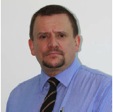 ‘Management’, whoever they are, has finally woken up to the fact that the project is in difficulty. It’s been in trouble for some time and attempts to fix it haven’t worked. Somebody, somewhere, decides that Recovery is needed before the project crashes and burns.
‘Management’, whoever they are, has finally woken up to the fact that the project is in difficulty. It’s been in trouble for some time and attempts to fix it haven’t worked. Somebody, somewhere, decides that Recovery is needed before the project crashes and burns.
Blinkered participants who denied all problems and reacted in anger realise that the bad tidings were not false-news. While they bask in depression others look at fixing the problem. If this ‘fix’ is just reorganising then, inevitably, the real problem(s) will not be addressed. Continue reading
#196 – THE STATE OF CALIFORNIA’S RISK CATALOG – JAMES KLINE PH.D.
Featured
In 2015, the California Legislature passed the State Leadership Accountability Act (SLAA). The act updated previous legislation. The purpose of the update was to broaden the reporting requirements to operational and programmatic activities. It reemphasized the responsibility of management to establish and maintain effective systems of internal controls. It also set up bi-annual reporting requirements and included risk assessment as part of the internal controls. To assist departments and agencies with the risk assessment, in 2017, the Department of Finance published the State Leadership Accountability Act Risk Catalog. Continue reading
#196 – USING SCENARIO ANALYSIS FOR RISK BASED, DECISION MAKING – GREG CARROLL
Featured
 ISO 31000:2018 stresses the need for risk management to be integrated into operational functionality and decision making, but little has be written on how to actually achieve this. Scenario Analysis is not a modern technology but how you can provide operational management with risk based decision marking collateral. Continue reading
ISO 31000:2018 stresses the need for risk management to be integrated into operational functionality and decision making, but little has be written on how to actually achieve this. Scenario Analysis is not a modern technology but how you can provide operational management with risk based decision marking collateral. Continue reading
#195 – PROBLEM SOLVERS HATE OPPORTUNITIES – ROBERT POJASEK
Featured
 By training, inclination, and expectancy, risk managers tend to focus on threats because they are expert problem-solvers. Any deficiency in the smooth operation of an organization is a threat and it is the risk manager’s responsibility to treat the threat. This will help get things up and running smoothly once again. Yet, risk is very risky for the organization if the focus is solely on threats. Continue reading
By training, inclination, and expectancy, risk managers tend to focus on threats because they are expert problem-solvers. Any deficiency in the smooth operation of an organization is a threat and it is the risk manager’s responsibility to treat the threat. This will help get things up and running smoothly once again. Yet, risk is very risky for the organization if the focus is solely on threats. Continue reading
#195 – POTENTIAL ECONOMIC CIRCUMSTANCES OF A PANDEMIC – GEARY SIKICH
Featured
 At the time of this writing seasonal flu is spreading through much of the world. The current flu vaccine is approximately 30% effective. Ever since the H1N1 outbreak in 2007 that was declared a pandemic by a reactive World Health Organization (WHO); WHO and Centers for Disease Control (CDC) have been reluctant to move too quickly in declaring an outbreak, whether influenza, Ebola, Norovirus, Adenovirus or any of the myriad of potential pandemic causing viruses a pandemic. Continue reading
At the time of this writing seasonal flu is spreading through much of the world. The current flu vaccine is approximately 30% effective. Ever since the H1N1 outbreak in 2007 that was declared a pandemic by a reactive World Health Organization (WHO); WHO and Centers for Disease Control (CDC) have been reluctant to move too quickly in declaring an outbreak, whether influenza, Ebola, Norovirus, Adenovirus or any of the myriad of potential pandemic causing viruses a pandemic. Continue reading
#195 – TOP 20 TECHNOLOGY – DRIVEN HARD TRENDS SHAPING 2018 AND BEYOND – DANIEL BURRUS
Featured
 There has never been a shortage of trends. The real problem for you is figuring out which ones will happen so that you know where to place your strategic bets. I have been publishing a list of top trends since 1983, as well as speaking and writing about their future impact, and if you have read any of my seven books or thousands of articles over the decades, you know they have been highly accurate. Continue reading
There has never been a shortage of trends. The real problem for you is figuring out which ones will happen so that you know where to place your strategic bets. I have been publishing a list of top trends since 1983, as well as speaking and writing about their future impact, and if you have read any of my seven books or thousands of articles over the decades, you know they have been highly accurate. Continue reading
#195 – WATER GOVERNANCE: A REPEATING FAILURE – ANNETTE DAVISON
Featured
 In 2016, we posed the question – ‘Is our Water Supply Governance Broken?’. We talked about waterborne incidents being a repeating occurrence and the need to have good evidence-based governance in place to assure good outcomes for our communities and ratepayers.
In 2016, we posed the question – ‘Is our Water Supply Governance Broken?’. We talked about waterborne incidents being a repeating occurrence and the need to have good evidence-based governance in place to assure good outcomes for our communities and ratepayers.
So what have we learnt since then? Have waterborne incidents and outbreaks stopped happening? Has water governance improved? Continue reading
#195 – PROJECT TRAIN WRECKS – MALCOLM PEART
Featured
 The term ‘troubled project’ is an oft quoted, possibly overly-used, but well-known term that is bandied about in a manner that possibly exaggerates any difficulty on a project.
The term ‘troubled project’ is an oft quoted, possibly overly-used, but well-known term that is bandied about in a manner that possibly exaggerates any difficulty on a project.
“Troubled” has been variously defined but is, essentially, variance from predetermined values and trends in terms of time, cost and scope such that the forecast for the project meeting its objectives is unlikely unless there is (immediate) intervention. Continue reading
#194 – LIFE AND PROJECT SUCCESS – WHAT EXACTLY ARE THEY? – MALCOLM PEART
Featured
 There are many articles on failed projects and why they ‘fail’ but one can only define failure if we know what is meant by success. Typically, project success is about meeting the triple constraint of completion on time, in budget and to quality. But is that all…just surviving is success but only the fittest survive! Continue reading
There are many articles on failed projects and why they ‘fail’ but one can only define failure if we know what is meant by success. Typically, project success is about meeting the triple constraint of completion on time, in budget and to quality. But is that all…just surviving is success but only the fittest survive! Continue reading
#194 – THE RECESSION IS DEAD – LONG LIVE THE RECESSION – JOSEPH PARIS
Featured
 The competitive advantage for businesses in the 20th Century was centered around the efforts related to process excellence – making the processes throughout a business as efficient and as effective as possible. And this was accomplished using a variety of disciplines including (but not limited to) Lean, Six Sigma, Theory of Constraints, and so on. Continue reading
The competitive advantage for businesses in the 20th Century was centered around the efforts related to process excellence – making the processes throughout a business as efficient and as effective as possible. And this was accomplished using a variety of disciplines including (but not limited to) Lean, Six Sigma, Theory of Constraints, and so on. Continue reading
#194 – ISO AND ORGANIZATIONAL RISK – ROBERT POJASEK
Featured
 In my online class at Harvard University, I teach my students how organizations create their strategic objectives from their mission statement, whether this is done explicitly or implicitly. Risk can be defined as the “effects of uncertainty” on setting and achieving their strategic objectives. These “effects of uncertainty” are a deviation from what is expected in an organization’s internal and external context (Clause 4.1) of every new and revised ISO management system standard. Continue reading
In my online class at Harvard University, I teach my students how organizations create their strategic objectives from their mission statement, whether this is done explicitly or implicitly. Risk can be defined as the “effects of uncertainty” on setting and achieving their strategic objectives. These “effects of uncertainty” are a deviation from what is expected in an organization’s internal and external context (Clause 4.1) of every new and revised ISO management system standard. Continue reading
#194 – HOW TO STAND OUT IN THE JOB MARKET TO GET HIRED – SIMON GRAY
Featured
 When it comes to the job market at any level, and especially when it comes to executive positions, you have a choice.
When it comes to the job market at any level, and especially when it comes to executive positions, you have a choice.
The choice is to follow the crowd and react to opportunities you’re given, or to proactively pursue what you really want whether it’s currently advertised or not. Continue reading
#194 – THE FUTURE OF ENTERPRISE RISK MANAGEMENT IN THE 2020’S – GREG CARROLL
Featured
 The 2009 release of ISO 31000 was the first step across the threshold into 21st century risk management. Unfortunately the industry that has developed around it has firmly grabbed the doorway and won’t let go. Although the latest revisions make references to decision making and integration into functional purpose, it totally misses the point of risk management, which is to assist navigating a complex world. Continue reading
The 2009 release of ISO 31000 was the first step across the threshold into 21st century risk management. Unfortunately the industry that has developed around it has firmly grabbed the doorway and won’t let go. Although the latest revisions make references to decision making and integration into functional purpose, it totally misses the point of risk management, which is to assist navigating a complex world. Continue reading
#193 – THE GREAT WRECKONING – GEARY SIKICH
Featured
 Time matters most when decisions are irreversible
Time matters most when decisions are irreversible
Transparent vulnerabilities are so obvious that they are easily overlooked; they are the ones we:
- see when they are pointed out;
- recognize when we are made aware of them;
- fail to acknowledge, leading to potentially significant consequences when the vulnerability is realized.
#193 – THE LOW BID: WHO’S RISK? – MALCOLM PEART
Featured
 We live in a competitive environment and business generates the money that makes the world go round, or at least should do. Money is the medium of exchange for goods and services and allows society as we know it and the global economy to function.
We live in a competitive environment and business generates the money that makes the world go round, or at least should do. Money is the medium of exchange for goods and services and allows society as we know it and the global economy to function.
Those who have money engage those who want money to provide them with products or services and this is done through contracts. Contracts are awarded at a price that the person who has the money (the Client) is prepared to pay and ‘the winner’ is typically the lowest compliant bid. Continue reading
#193 – IS INTELLIGENT RISK AN OXYMORON – JIM TONEY
Featured
 Is Intelligent Risk and Oxymoron? There is an implied contradiction in the term – Intelligent risk. An intelligent risk is one deemed worth taking, not to be avoided. Risk is everywhere in our lives and we deal with it on the personal level daily. Unfortunately, but rightfully so, risk is usually thought of as something bad, undesirable, and to be avoided. We have health insurance, life insurance, long term care insurance, auto insurance, and others, all to ensure us against catastrophic financial loss. Continue reading
Is Intelligent Risk and Oxymoron? There is an implied contradiction in the term – Intelligent risk. An intelligent risk is one deemed worth taking, not to be avoided. Risk is everywhere in our lives and we deal with it on the personal level daily. Unfortunately, but rightfully so, risk is usually thought of as something bad, undesirable, and to be avoided. We have health insurance, life insurance, long term care insurance, auto insurance, and others, all to ensure us against catastrophic financial loss. Continue reading
#193 – NEW ISO 31000 COMING THIS YEAR: ARE YOU READY? – ALEXEI SIDORENKO
Featured
 After more than 5 years in the making and thousands of comments received from representatives of 54 participating and observing countries as well as multiple liaison organizations, updated ISO 31000 standard is going through the final stages of feedback and will likely be published in early 2018.
After more than 5 years in the making and thousands of comments received from representatives of 54 participating and observing countries as well as multiple liaison organizations, updated ISO 31000 standard is going through the final stages of feedback and will likely be published in early 2018.
In this short article I will attempt to summarize key changes to the most popular in the world risk management standard ISO31000 and how will the changes impact businesses. Continue reading
#193 – WHO WINS: THE MACHINE OR HUMAN? – GREG HUTCHINS
Featured
 Who Wins: The Machine or the Human?
Who Wins: The Machine or the Human?
There is a huge fear around the globe that:
The Machines Are Coming!
How much is this reality, fear, or over hype?
Upcoming Machine and robot wars are posed this way. Continue reading
#192 – #1 BUSINESS RISK FOR 2018 – GREG HUTCHINS
Featured
 What do you think is the #1 business risk in 2018 according to the World Economic Forum?
What do you think is the #1 business risk in 2018 according to the World Economic Forum?
- Weapons of mass destruction? It’s #29.
- Natural catastrophes? It’s # 19.
- Cyber attacks? It’s #8. We’re getting closer.
Guess again? Continue reading
#192 – PRODUCING RESULTS YOUR ORGANIZATION NEEDS THROUGH CONTINUOUS IMPROVEMENT – BILL COOPER
Featured
 Money got tight and we weren’t getting the results we needed. We were forced to make adjustments in how we worked and they weren’t well received. From a management perspective we needed to look at how we were performing and what we needed to improve. To do that we examined ourselves in terms of these two essential issues:
Money got tight and we weren’t getting the results we needed. We were forced to make adjustments in how we worked and they weren’t well received. From a management perspective we needed to look at how we were performing and what we needed to improve. To do that we examined ourselves in terms of these two essential issues:
- Money suffocates creativity
- Leadership is tested by necessity
#192 – ISO 31000 RISK VALIDATION – NARESH RAO
Featured
 ISO 31000 Says in “Introduction”
ISO 31000 Says in “Introduction”
Organizations of all types and sizes face internal and external factors and influences that make it uncertain whether and when they will achieve their objectives. The effect this uncertainly has an organization’s objectives is “risks”.
All activities of an organization involve risk. Organizations manage risk by identifying it, analysing it and then evaluating whether the risk should be modified by risk treatment in order to satisfy their risk criteria. Throughout this process, they communicate and consult with stakeholders and monitor and review the risk and the controls that are modifying the risk in order to ensure that no further risk treatment is required.
Risk Framework – Life Cycle with Risk Validation
The risks which are identified are based on what one’s vision can point out. There are many unearthed risks which “Risk Owner” may not be able to visualize and also may not be able to identify certain unknown risks or vulnerabilities, which may cause an incident.
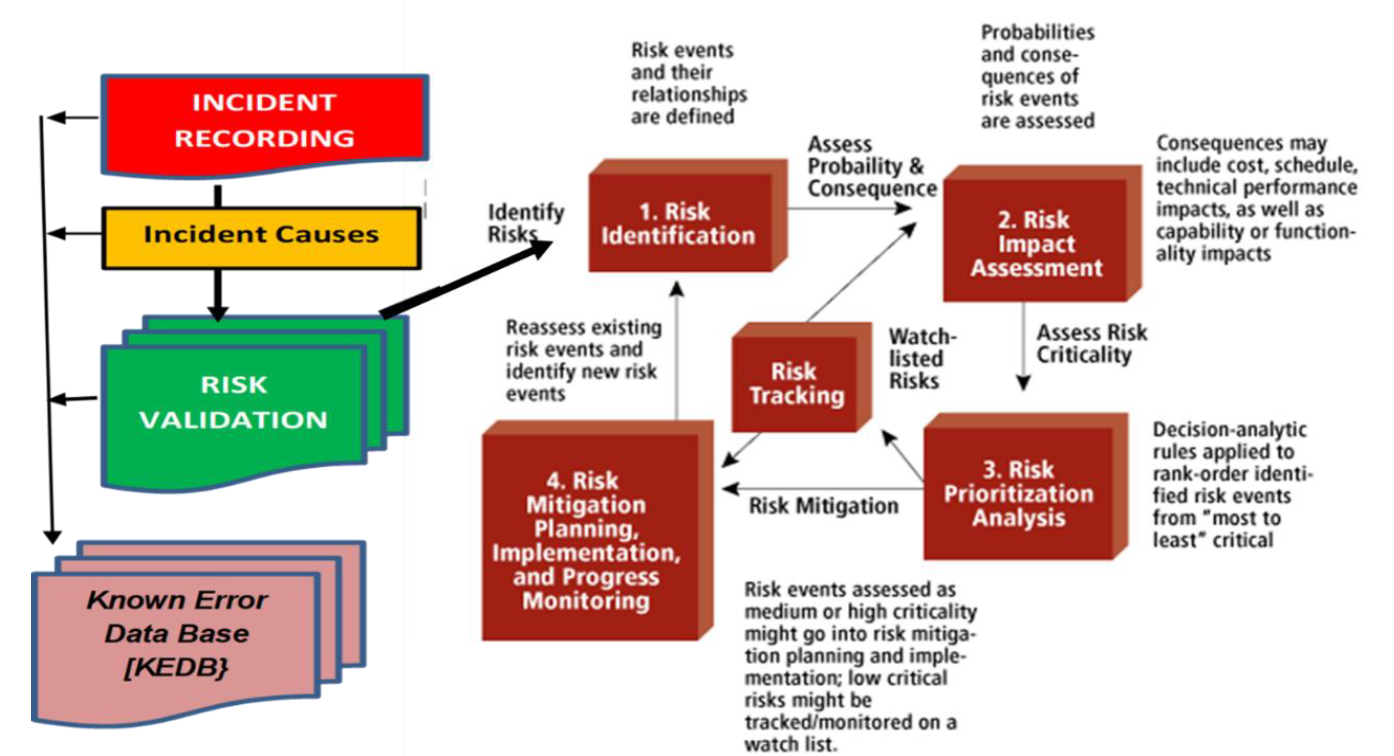
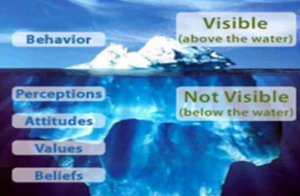 The initial “Risk Identification” is done by the Risk Owners” based on:
The initial “Risk Identification” is done by the Risk Owners” based on:
➢ Past Experience
(Every Experience has a price to pay)
&
➢ Future Vision
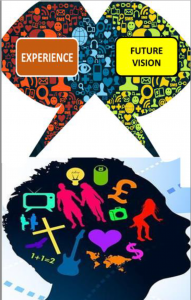 (Based on Capability and Capacity of the “Risk Owner”)
(Based on Capability and Capacity of the “Risk Owner”)
This means the Risk Management is Vision Based, initially.
Objective > How to convert Vision Based Risk Assessment to Factual Based Risk Assessment?
Why ?
Well > Evidence Based to Decision Making is the basic Principle of Management System and Auditing
Risk Evaluation
Before proceeding
to understand Risk Validation, it is important to look more deep into RISK MANAGEMENT:
- a) Risk Evaluation : Generally parameters considered in evaluating Risk are:
PROBABILITY OF OCCURANCE & SEVERITY OF IMPACT which consolidated result is considered as RISK LEVEL – this Risk Level can be achieved through Quantitative or Qualitative Methodology.
If you observe carefully following conclusion of Impacts differ between scenarios of Stable Asset or Moving Assets:
In Stable Assets – Probability Changes more than Severity
In Moving Assets – Severity of Impact Changes more than Probability
Examples >
STABLE ASSETS
MOVABLE ASSETS
In Industry, most of the processes work on IT platform and IT (Information Technology) falls under Stable Assets – thus any controls implemented (to reduce the risk), reduces the Probability – example is Firewall on Servers – all controls reduce the probability only as if they are breached, Impact is same – high risk.
Impact changing generally occur in Moving Assets like moving machine, health & safety like road accident (as shown above) or person falling from height (impact changes based on speed or height).
Risk Mitigation Effectiveness
- A) – Residual Risk Existence
Another important aspect of Risk Management is Control to reduce the risk – no matter what controls are put, the Risk Cannot be reduced to Zero – some element of residual risk is bound to be there.
The type of investment in mitigations depends on below or any combination
➢ Probability and / or Impact of vulnerability;
➢ Risk Appetite & Risk Tolerance;
➢ Monitoring Controls or Risk Reduction controls;
➢ Management perception of the Risk;
➢ Risk Owner’s perception of the Risk;
➢ Market influence on business;
➢ Competition perception;
➢ Risk Acceptance Criteria
The residual risk visualization / perception also gives rise to Risk Owner’s decision, in case Residual Risks are not acceptable.
B) – Risk Control Effectiveness
There are two types of controls which exists
If Monitoring Controls are more than Risk Reduction Controls in RA – Risk Management is NOT EFFECTIVE
If Risk Reduction Controls are more than Risk Monitoring Controls in RA – Risk Management is EFFECTIVE
After all risks are identified, mitigated & monitored – what next?
Well, there is one more objective left out, which we discussed above:
Question>
– How to covert a vision based Risk Assessment into Factual based Risk Assessment?
Answer>
– Updating Risk Assessment after an incident occurs
Now “Risk Owners” have to do is – “Risk Validation” when incident happens
1) Identify the causes of the risks
2) Compare the causes of the incident to risk assessment and update the same – which is Risk Validation.
Some cautions are to be taken as below:
> Residual Risks
> Controls – Risk Reduction controls like (Server Firewall, etc.) and Monitoring Controls (like CCTV, etc.)
> Relevant Interested party not identified
> Interested party identified but not the risk or vulnerability
We need to know why the Incident occurred on first place, in spite of existing controls. Risk Validation shall help us to understand –which vulnerability in the Risk Assessment lead to the incident:
– The Risk Management Strategy OR
– Risk Process (criteria or evaluation or mitigation or acceptance criteria)
KEDB (Known Error Data Base) – updated after every Risk Validation in Incidents, apart from linking up to RA for required corrective actions. This updated KEDB is used for future reference, thus building up the knowledge base for the scope of the organization. By doing this, you are actually validating actual incidents with vision based current risks – thus converting vision based RA to Factual based RA.
Risk Assessment – Preventive Action Vs Corrective Action
As per Annex SL on which most of ISO Management Standards, new versions are released, the Preventive Action word is replaced by “Risk & Opportunities” there is no need for Preventive Actions;
– but when Risk Assessment is updated based on an incident – entire information of that specific risk (including controls & residual risks) now gets converted as corrective action(s) and do not remain as preventive, any more.
The definition of Corrective Actions is “Eliminating the causes of detected non-compliance and Pre-venting from recurrence”
Example: (Information Security)
There are three parameters of Information Security:
➢ Confidentiality ( Information is available only to authorised personnel and not to unauthorized personnel )
➢ Integrity ( Accuracy and Completeness of Information )
➢ Availability ( Information is available to authorised personnel, when required)
Note >
If Confidentiality Breaches, changes of Integrity & Availability breaches automatically increases
If Integrity Breaches, chances of Availability breaches automatically increases
If Availability Breaches, then no risk for Confidentiality & Integrity is not there
Hope you have gained from this white paper on RISK VALIDATION and hope that this would benefit, if practiced. Requesting you to share your comments via mail to naresh@ircbo.solutions
Best Regards > Naresh RAO, Technical Director, IRCBO Solutions Pvt. Ltd., INDIA
Bio:
Started carrier from banking software development in 1986 then was an entrepreneur of textile mill. Entered Management Systems in 1993. Became and auditor with DNV(III CB) and later AQSR, RINA , KPMG, BSI and Intertek in senior positions like Regional Manager, Head Operations, General Manager , Head Standards and Business Solutions. Also a Lead Trainer in qualifying III party auditors on risk based standards. Now running a consulting firm in all Management system standards, apart from III party auditor for Intertek etc. and also has his own Lead Auditor course in Business Continuity (ISO 22301:2012) , Annex A based ISMS software (ISO 27001:2013 – new product about to be released globally)”
Naresh RAO,
Technical Director,
IRCBO Solutions Pvt Ltd.,
www.ircbo.solutions
mail > naresh@ircbo.solutions
mobile > +91 981182 7758
#192 – PROJECT FAILURE – THE WHAT, WHY, WHEN, HOW, WHERE, AND WHO … – MALCOLM PEART
Featured
 Most are familiar with an oft referenced 1970’s observation of the all-too-true life cycle of big projects. Although written in humour it holds the main reasons for projects failing and the phases may be mapped against Kipling’s six famous questions as follows: Continue reading
Most are familiar with an oft referenced 1970’s observation of the all-too-true life cycle of big projects. Although written in humour it holds the main reasons for projects failing and the phases may be mapped against Kipling’s six famous questions as follows: Continue reading
#192 – RISK 2018 AND THE MISSED OPPORTUNITIES OF 2017 – GREG CARROLL
Featured
 In my 2013 book “Mastering 21st Century Enterprise Risk Management” I quipped “just as the Wild West of the 1890’s had disappeared without trace by the Roaring 1920s, so too will the business world of the 1990s, be long forgotten by the 2020s”. Just 5 years on and not only has the world changed emphatically but the rate of change is accelerating. Continue reading
In my 2013 book “Mastering 21st Century Enterprise Risk Management” I quipped “just as the Wild West of the 1890’s had disappeared without trace by the Roaring 1920s, so too will the business world of the 1990s, be long forgotten by the 2020s”. Just 5 years on and not only has the world changed emphatically but the rate of change is accelerating. Continue reading
#191 – NO BUDGET FOR THAT! – GARY HINKLE
Featured
 There’s a TV commercial for oil filters where the mechanic warns the customer, “You can pay me now or you can pay me later.” Of course what he means is maintain your car, or wait for an expensive breakdown and an engine overhaul.
There’s a TV commercial for oil filters where the mechanic warns the customer, “You can pay me now or you can pay me later.” Of course what he means is maintain your car, or wait for an expensive breakdown and an engine overhaul.
Makes total sense, right? Continue reading
#191 – REAL WORLD VOLATILITY – GEARY SIKICH
Featured
In the risk-neutral world, all business and government continuity planning would be risk-balanced. However, in reality, risks, threats, hazards and their consequences change depending on an organizations exposure, sensitivities to impact and other factors. For instance, a natural disaster, can occur without much warning and can have direct and indirect impact on an organization. Complicating the Business Continuity Planners life is a simple fact, events have unforeseen consequences that can rarely be planned for. Continue reading
#191 – FORGET SUPPLY CHAIN MANAGEMENT – RICK FELTENBERGER
Featured
W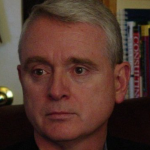 hen people discuss Supply Chain Management, there doesn’t seem to be any common understanding of what it is all about. I get it! To some, it is software and technology. To others, it is just purchasing and logistics. And still others believe that it is ‘big data’ and analytics. No wonder that eyes glaze-over when the subject is mentioned. Continue reading
hen people discuss Supply Chain Management, there doesn’t seem to be any common understanding of what it is all about. I get it! To some, it is software and technology. To others, it is just purchasing and logistics. And still others believe that it is ‘big data’ and analytics. No wonder that eyes glaze-over when the subject is mentioned. Continue reading
#191 – HOW TO TURN A STRATEGIC PLAN INTO RESULTS – GREG CARROLL
Featured
 Recently I read a new 6-star hotel is opening in Australia in 2018. 6-Stars, really? I remember when 5-star rating was synonymous with 1st Class, as opposed to 2nd Class. Now we have 0th Class. I stayed in a 6-star hotel once and couldn’t see the difference to a true 5-star hotel, in fact it wasn’t as good as the 5-star Royal Crescent Hotel in Bath UK, which I would have to say is the best hotel experience I have enjoyed (that includes The Plaza, Savoy & Peninsula). Truly sublime. So if ISO 31000 is the 5-star of the GRC field what would be 6-stars? I would put that as being Strategic Management, it’s what turns the Plan into reality. Continue reading
Recently I read a new 6-star hotel is opening in Australia in 2018. 6-Stars, really? I remember when 5-star rating was synonymous with 1st Class, as opposed to 2nd Class. Now we have 0th Class. I stayed in a 6-star hotel once and couldn’t see the difference to a true 5-star hotel, in fact it wasn’t as good as the 5-star Royal Crescent Hotel in Bath UK, which I would have to say is the best hotel experience I have enjoyed (that includes The Plaza, Savoy & Peninsula). Truly sublime. So if ISO 31000 is the 5-star of the GRC field what would be 6-stars? I would put that as being Strategic Management, it’s what turns the Plan into reality. Continue reading
#191 – INTELLECTUAL ABUSE: A NEW PROBLEM IN THE WORKPLACE – MALCOLM PEART
Featured
 In the workplace we have identified and attempted to eradicate racial and gender discrimination, sexual harassment and bullying. We now battle age discrimination in our aging society in a (supposedly) increasingly politically correct world. However, our intellects are also being abused as individuals find increasing ways to breach of the bounds of reasonable behavior and put our sanity and dignity at risk. Continue reading
In the workplace we have identified and attempted to eradicate racial and gender discrimination, sexual harassment and bullying. We now battle age discrimination in our aging society in a (supposedly) increasingly politically correct world. However, our intellects are also being abused as individuals find increasing ways to breach of the bounds of reasonable behavior and put our sanity and dignity at risk. Continue reading
#190 – WALKING ON SHIFTING SANDS IN THE AGE OF UNCERTAINTY – GEARY SIKICH
Featured
 “To do something very dangerous takes a certain lack of imagination”
“To do something very dangerous takes a certain lack of imagination”
– Anonymous
Introduction
Governments and companies worldwide are emerging from the current financial crisis and subsequent recession. While governments are crafting new regulations, businesses around the world are walking in shifting sand as risk exposures are high and new regulations will create compliance challenges. According to a recent survey by Korn/Ferry International, corporate leaders are focusing more attention on risk management after what is considered by many to be excessive risk-taking during the boom times that factored into the global financial crisis. Continue reading
#190 – FEDERAL HIGHWAY ADMINISTRATION RISK BASED ASSET MANAGEMENT – JAMES KLINE PH.D.
Featured
The 2012 Moving Ahead for Progress in the 21st Century Transportation Act (MAP 21) requires state departments of transportation to develop a Transportation Asset Management Plan (TAMP). The TAMP is to include a Risk Based Asset Management Plan (RBAMP). The two plans must be certified by the Federal Highway Administration (FHWA) by June 30, 2019. Continue reading
#190 – THE ‘CHECK’ STEP OF A RISK MANAGEMENT FRAMEWORK – FRED SCHENKELBERG
Featured
Planning and Implementing a risk  management framework is an admirable accomplishment. Now make sure it is running well and will do so into the future.
management framework is an admirable accomplishment. Now make sure it is running well and will do so into the future.
As with any process, there will be opportunities to make improvements. By monitoring and reviewing your program you will find what is working well and what is not. Continue reading
#190 – JUST A JOB SYNDROME – RISK TO JOBS PRESENT – MALCOLM PEART
Featured
 You’ve started a new project; or joined one that’s up and running or it’s nearing closure – and it’s going well. With no problems to speak of, it’s business as usual; so stick to the plan and it will be all right in the end ‘cos nothing can go wrong.
You’ve started a new project; or joined one that’s up and running or it’s nearing closure – and it’s going well. With no problems to speak of, it’s business as usual; so stick to the plan and it will be all right in the end ‘cos nothing can go wrong.
Or perhaps there are problems; but all projects have problems! It’s not your problem as the bid team, planning team, or those awkward stakeholders and ever present over demanding clients can be blamed. Continue reading
#190 – DECODING THE RIMS RISK MANAGEMENT MATURITY MODEL – JIGNESH PADIA
Featured
 Let’s start with what is ERM? Enterprise Risk Management (ERM): is a process of planning, organizing, leading, and controlling the activities of an organization in order to minimize the effects of a risk to an organization. It expands beyond a daily run of the mill operational management! A true ERM program will have its scope expand to strategic, financial, reputational, human resource and business continuity as well as operational and legal risks. Most organizations, as they mature embark on a journey of establishing a robust Enterprise Risk Management (ERM) Program! Continue reading
Let’s start with what is ERM? Enterprise Risk Management (ERM): is a process of planning, organizing, leading, and controlling the activities of an organization in order to minimize the effects of a risk to an organization. It expands beyond a daily run of the mill operational management! A true ERM program will have its scope expand to strategic, financial, reputational, human resource and business continuity as well as operational and legal risks. Most organizations, as they mature embark on a journey of establishing a robust Enterprise Risk Management (ERM) Program! Continue reading
#189 – BLACK SWANS, SHAPESHIFTERS, AND FLEXIBILITY – GEARY SIKICH & JOHN M. STAGL
Featured
 It’s all about targeted flexibility, the art of being prepared, rather than preparing for specific events. Being able to respond rather than being able to forecast, facilitates the ability to respond to the consequences of an event.
It’s all about targeted flexibility, the art of being prepared, rather than preparing for specific events. Being able to respond rather than being able to forecast, facilitates the ability to respond to the consequences of an event.
Perspective
It seems that there many experts today who are jumping on the bandwagon and laying claim to some aspect of, or permutation of, the “Black Swan” concept. I recently read about someone claiming to be a “Master Black Swan Hunter.” Continue reading
#189 – CITY OF HOUSTON’S RISK ASSESSMENT PROCESS – JAMES KLINE PH.D., CERM
Featured
 Houston Texas is one of the few local governments in the United States with an Enterprise Risk Management (ERM) based risk assessment approach. This policy was reviewed and updated in 2016. This was the latest step in the city’s use of risk assessment.
Houston Texas is one of the few local governments in the United States with an Enterprise Risk Management (ERM) based risk assessment approach. This policy was reviewed and updated in 2016. This was the latest step in the city’s use of risk assessment.
From 1996 to 2004, the city outsourced risk assessment. The assessment was performed every five years. Beginning in 2009, the city’s audit department took over the assessment. This article discusses the risk assessment process used by the City of Houston. Continue reading
#189 – THE LAST MINUTE AND IT WILL BE ALL RIGHT IN THE END – MALCOLM PEART
Featured
 Two famous references to time and delivery but why do we often wait to the last minute to ensure that a project, no matter how big or small is delivered with all the risks associated with rushing? No matter what rushing takes place and what deadlines are put in place a project will only be ‘all right’, when its ‘all right’.
Two famous references to time and delivery but why do we often wait to the last minute to ensure that a project, no matter how big or small is delivered with all the risks associated with rushing? No matter what rushing takes place and what deadlines are put in place a project will only be ‘all right’, when its ‘all right’.
As John Lennon said:
“Everything will be OK in the end; but if it’s not OK, it’s not the end“ Continue reading
#189 – VUCA WORLD AND TIMES – GREG HUTCHINS
Featured
 “From North Korean missiles to the eclipse to fidget spinners, 2017 was a year so surreal, so densely populated with strange and alarming events, that you have to seriously consider the possibility that somebody — and when we say “somebody,” we mean “Russia” — was putting LSD in our water supply.”
“From North Korean missiles to the eclipse to fidget spinners, 2017 was a year so surreal, so densely populated with strange and alarming events, that you have to seriously consider the possibility that somebody — and when we say “somebody,” we mean “Russia” — was putting LSD in our water supply.”
The above quote is from Dave Barry in a cover page article in today’s (12/31/17) Washington Post. Continue reading
#189 – FOUR RISK MITIGATION STRATEGIES – FRED SCHENKELBERG
Featured
 Identifying risk is an important first step. It is not sufficient though.
Identifying risk is an important first step. It is not sufficient though.
Taking steps to deal with risk is an essential step. Knowing about and thinking about risk is not the same as doing something about risk. Continue reading
#188 – LAST JOB SYNDROME, THE RISKS OF PROJECT PAST – MALCOLM PEART
Featured
 We all use our work experience to a greater or lesser extent and often the most recent project is recalled as it is at the forefront of our minds. However, is it the most relevant if we try to adapt our most recent, and hopefully successful, experience to meet the current situation.? Continue reading
We all use our work experience to a greater or lesser extent and often the most recent project is recalled as it is at the forefront of our minds. However, is it the most relevant if we try to adapt our most recent, and hopefully successful, experience to meet the current situation.? Continue reading
#188 – STRATEGIC RISK REGISTER OF SASKATOON CANADA – JAMES KLINE PH.D.
Featured
A Risk Register is a key product of the Enterprise Risk Management Methodology. The register provides information which allows them to prioritize the risk and to determine the action necessary to mitigate its impact.
This piece lists the major elements of a risk register. It also presents portions of the Strategic Risk Register for the City of Saskatoon Canada. The specific example comes from the inherent risk of Disengaged and Uninformed Citizens. Saskatoon is used because it has one of the better formats encountered so far. Continue reading
#188 – ARE YOU AN ENGINEER OR A MANAGER – GARY HINKLE
Featured
 Jeff’s venture into engineering management isn’t quite what he expected. He manages a group of seven engineers at a semiconductor company, but he continues to work as a hands-on engineer. He’s highly regarded for his technical expertise, which is why he was offered the management position five years ago. Continue reading
Jeff’s venture into engineering management isn’t quite what he expected. He manages a group of seven engineers at a semiconductor company, but he continues to work as a hands-on engineer. He’s highly regarded for his technical expertise, which is why he was offered the management position five years ago. Continue reading
#188 – COMPLIANCE MANAGER ROLE IN MODERN ORGANIZATIONS – GREG CARROLL
Featured
 The Compliance Manager’s role in the modern organization is to enable/empower decision makers to take action and leave the building defensive walls to the Risk Manager with his heat maps. So how can compliance managers start realising their value adding role? Continue reading
The Compliance Manager’s role in the modern organization is to enable/empower decision makers to take action and leave the building defensive walls to the Risk Manager with his heat maps. So how can compliance managers start realising their value adding role? Continue reading
#188 – IMPLEMENTING ISO 14001 WITH MINIMAL DOCUMENTS – DEBRA HAY HAMPTON
Featured
 Focus on What Adds Value
Focus on What Adds Value
So many environmental management systems have an environmental management manual! Why? There isn’t a requirement in the standard for a manual. It adds no value. It wasn’t a requirement in the 2004 standard. It isn’t a requirement in the 2015 standard. Why do some organizations choose to have one? Continue reading
#187 – NANOPARTICLES AND OUR WATER SUPPLIES – ANNETTE DAVISION & IAN LAW
Featured
 The Engineered Nanomaterial (ENM) industry is developing rapidly worldwide, bringing with it an expected increasing presence of ENMs in municipal wastewaters and ultimately, community water sources and supplies, over time. Happening in parallel, there is an increasing integration of the water cycle to help optimize use of our precious water resource – an integration that may increase exposure to ENMs. Given their increasing prevalence, what are the exposure pathways and public health risks posed by these ENMs? Can our water utilities really say we need not fear ENMs in our water supplies? How safe is the water we drink? Continue reading
The Engineered Nanomaterial (ENM) industry is developing rapidly worldwide, bringing with it an expected increasing presence of ENMs in municipal wastewaters and ultimately, community water sources and supplies, over time. Happening in parallel, there is an increasing integration of the water cycle to help optimize use of our precious water resource – an integration that may increase exposure to ENMs. Given their increasing prevalence, what are the exposure pathways and public health risks posed by these ENMs? Can our water utilities really say we need not fear ENMs in our water supplies? How safe is the water we drink? Continue reading
#187 – GOOD COMMUNICATION – ILLUSIONAL, ACCIDENTAL, OR PREMEDITATED – MALCOLM PEART
Featured
 Firstly, what is ‘good communication’? Many people have views, but my definition is “the effective and efficient transfer and receipt of information by the right people, at the right time, in the right medium, at the right place and in the right amount”.
Firstly, what is ‘good communication’? Many people have views, but my definition is “the effective and efficient transfer and receipt of information by the right people, at the right time, in the right medium, at the right place and in the right amount”.
The key word though is ‘efficient’. A voluminous report to the right person on time covering everything may be effective but will the recipient be able to synthesise everything and make a decision; or would an email, letter, SMS, ‘phone call, or face-to-face meeting be the more efficient? Continue reading
#187 – ENTERPRISE RISK MANAGEMENT IS NOT A STANDALONE – JAMES KLINE PH.D.
Featured
 When Enterprise Risk Management (ERM) is advocated, it often seems like it is the end all and be all. However, this is not true. It is a methodology which assists management in identifying the risk that can prevent an organization from accomplishing it desired goals. As such, it should be viewed as another management tool in a range of tools. Perhaps the best presentation of this idea, for local government, is from the city of Oshawa Canada. This piece discusses how it has integrated ERM into it continuous improvement process. Continue reading
When Enterprise Risk Management (ERM) is advocated, it often seems like it is the end all and be all. However, this is not true. It is a methodology which assists management in identifying the risk that can prevent an organization from accomplishing it desired goals. As such, it should be viewed as another management tool in a range of tools. Perhaps the best presentation of this idea, for local government, is from the city of Oshawa Canada. This piece discusses how it has integrated ERM into it continuous improvement process. Continue reading
#187 – WHY MOST ERM SYSTEMS DON’T WORK? – GREG CARROLL
Featured
 So why don’t most Enterprise Risk Management system work? Simply, they don’t “manage” risk, they just record it. Manage is a verb not a noun. It is activity not an item. Making a list might be adequate for those who want to check off regulatory compliance, but it’s does not produce a ROI. Continue reading
So why don’t most Enterprise Risk Management system work? Simply, they don’t “manage” risk, they just record it. Manage is a verb not a noun. It is activity not an item. Making a list might be adequate for those who want to check off regulatory compliance, but it’s does not produce a ROI. Continue reading
#187 – Risk Based Thinking in Healthcare: Managing Knowledge – Ted Schmidt
Featured
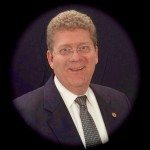 I continue to be amazed at the hidden jewels in our hospital accreditation requirements, there by design yet oftentimes not apparent. One of my newest amazements is knowledge management. Continue reading
I continue to be amazed at the hidden jewels in our hospital accreditation requirements, there by design yet oftentimes not apparent. One of my newest amazements is knowledge management. Continue reading
#186 – WHAT KEEPS ENGINEERS FROM ADVANCING IN THEIR CAREERS? – GARY HINKLE
Featured
 Chris is an engineer at a leading scientific instrument company, and his career is stuck. He hasn’t been promoted in years. He’s an Engineer III, but he thinks he should be at least a IV (out of six levels altogether). He has more than ten years of experience, and he knows he’s made several significant technical contributions to the company’s products. Continue reading
Chris is an engineer at a leading scientific instrument company, and his career is stuck. He hasn’t been promoted in years. He’s an Engineer III, but he thinks he should be at least a IV (out of six levels altogether). He has more than ten years of experience, and he knows he’s made several significant technical contributions to the company’s products. Continue reading
#186 – BEHIND COMPLIANCE MANAGEMENT FAILURE AT MITSUBISHI, VW, & TARGET – GREG CARROLL
Featured
 2016 and 2017 have seen a virtual tsunami of compliance failures involving some of our largest companies. From Mitsubishi to VW, from ANZ to Target, almost weekly there have been media reports about some company employees having run amok – unbeknownst to their executives and boards. People are asking: “What happened to the compliance management systems that are supposed to monitor and prevent such abuses?” Executives and boards are naturally starting to question the entire compliance management function. Continue reading
2016 and 2017 have seen a virtual tsunami of compliance failures involving some of our largest companies. From Mitsubishi to VW, from ANZ to Target, almost weekly there have been media reports about some company employees having run amok – unbeknownst to their executives and boards. People are asking: “What happened to the compliance management systems that are supposed to monitor and prevent such abuses?” Executives and boards are naturally starting to question the entire compliance management function. Continue reading
#186 – PREDICTABLE SURPRISES: THE VOLKSWAGEN STORY – JIM KLINE PH.D.
Featured
 A predictable surprise is a risk event that in some form is known within the organization. It is of a nature that if left unresolved, it could be costly. But fixing the problem appears to have larger short run costs, than long term benefits. The Volkswagen diesel emissions fraud is one such example. It also a case where the penalties imposed outweighed the short term costs. Moreover, had a risk assessment occurred at several points along the way, there might not have been a scandal. Continue reading
A predictable surprise is a risk event that in some form is known within the organization. It is of a nature that if left unresolved, it could be costly. But fixing the problem appears to have larger short run costs, than long term benefits. The Volkswagen diesel emissions fraud is one such example. It also a case where the penalties imposed outweighed the short term costs. Moreover, had a risk assessment occurred at several points along the way, there might not have been a scandal. Continue reading
#186 – INNOVATION VS. TRANSFORMATON – JOSEPH PARIS
Featured
 If you want your business to survive, you need to innovate. If you want your business to have a chance of thriving, you need transformation. Certainly, either innovation or transformation are no guarantees of success – but the lack of both almost certainly leads to doom. Need proof? Can you name one company or one industry (other than government) today that, when faced with a change in the marketplace, failed to innovate – and instead stayed with its traditions, and survived – not to mention, thrived? If you think of one, let me know. How about a company that faced a transformation in the marketplace – how did it fare over time? Continue reading
If you want your business to survive, you need to innovate. If you want your business to have a chance of thriving, you need transformation. Certainly, either innovation or transformation are no guarantees of success – but the lack of both almost certainly leads to doom. Need proof? Can you name one company or one industry (other than government) today that, when faced with a change in the marketplace, failed to innovate – and instead stayed with its traditions, and survived – not to mention, thrived? If you think of one, let me know. How about a company that faced a transformation in the marketplace – how did it fare over time? Continue reading
#186 – STRATEGIC ITAM: THE WAY FOR REACHING THE STRATEGIC CAPABILITY THAT EMPOWERS YOUR BUSINESS – FRANCISCO JAVIER TEN MORON
Featured
 The increasing complexity and dynamism that the markets have today, but especially those where organizations operate using Information and Communication Technologies as the core of the business, as well as the resulting uncertainty thereof, suggests that the Strategic Development in those Organizations should be based on the usage of traditional processes as well as other emergent strategies that arise from internal processes and daily activities. Continue reading
The increasing complexity and dynamism that the markets have today, but especially those where organizations operate using Information and Communication Technologies as the core of the business, as well as the resulting uncertainty thereof, suggests that the Strategic Development in those Organizations should be based on the usage of traditional processes as well as other emergent strategies that arise from internal processes and daily activities. Continue reading
#185 – WHICH IS IT: A SYSTEM OR PROCESS AUDIT? – J.P. RUSSELL
Featured
 It seems that everyone knows the difference between a system and a process. We know processes and systems are related, but most of us aren’t sure when one begins and the other ends. ISO 9000 provides definitions, but they seem inadequate at times.
It seems that everyone knows the difference between a system and a process. We know processes and systems are related, but most of us aren’t sure when one begins and the other ends. ISO 9000 provides definitions, but they seem inadequate at times.
Understanding the differences between a process and a system is important for effective organization management and auditing programs. Understanding some of the dynamics will help in the development of value-added auditing strategies. Continue reading
#185 – WHAT IS COLLATERAL RISK? AND WHY SHOULD WE BE WORRIED ABOUT IT?- GEARY SIKICH
Featured
The Law Dictionary defines Collateral Risk as:
The RISK of loss arising from errors in the nature, quantity, pricing, or characteristics of COLLATERAL securing a transaction with CREDIT RISK. Institutions that actively accept and deliver collateral and are unable to manage the process accurately are susceptible to loss. A subcategory of PROCESS RISK. Continue reading
#185: “MADE IN JAPAN”: OUR QUALITY STORY – GREG HUTCHINS
Featured
 Takata airbags. Now Kobe Steel.
Takata airbags. Now Kobe Steel.
… “more cases of misconduct have continued to emerge, including revelations that Kobe Steel group falsified quality inspection data for steel powders and steel rods.”
Japan Times, ‘Kobe Said Employees’ Cover Up Hampered Probe on Data Falsification Scandal, October 201, 2017
Here’s our story of a similar event:
A few years back, our firm, Quality Plus Engineering, was asked why an industrial product was having quality and reliability problems. The manufacturer’s products were failing prematurely in a very important application.
We had to go to the source – the corporate design and manufacturing center in Japan. Continue reading
#185 – HOW A CULTURAL AUDIT CAN ASSIST RISK MANAGEMENT – JAMES KLINE PH.D.
Featured
An organization’s culture is an important determinant of its success or failure. This is because an organization’s culture is the combined effect of the employees’ underlying assumptions, beliefs, attitudes and expectations. Each can affect performance and adaptability. A cultural assessment can help determine areas that can inhibit mission accomplishment. This article lists the different techniques used in conducting a cultural audit and indicates how it can help guide corrective action. Continue reading
#185 – PROJECT MANAGEMENT: A RISK TO PRODUCT DELIVERY – MALCOLM PEART
Featured
 Most of us are aware of the old saw “the operation was successful, but the patient died!” which has been around since 1829 and used to describe medical, as well as military and business failures. There are many reasons for failure but is ‘over-management’ one of them? Can too much ‘project management’ be applied to the point that the aim of the project, i.e. the product, is compromised? Continue reading
Most of us are aware of the old saw “the operation was successful, but the patient died!” which has been around since 1829 and used to describe medical, as well as military and business failures. There are many reasons for failure but is ‘over-management’ one of them? Can too much ‘project management’ be applied to the point that the aim of the project, i.e. the product, is compromised? Continue reading
#184 – DEVELOPING RECOVERY PROGRAMS: WHAT CAN WE LEARN FROM HURRICANES IRMA AND HARVEY – GEARY SIKICH
Featured
When planning for disasters we often time opt for “worst case” scenario plans. Yet, time and again we are surprised when the “worst case” based plan that has been developed is superseded by an actual event that occurs. Hurricane Katrina taught this lesson. Will we be going back to school to learn the same lessons from Hurricane Harvey and Hurricane Irma? And, Hurricane Jose is coming in on the heels of Irma. Continue reading
#184 – STEPPING STONES IN THE LEAN JOURNEY – JOSEPH PARIS
Featured
 As very young children, we had an instinctive need to be very close to our parents – feeling a great deal of anxiety, even a sense of abandonment, if they were not within our sight. As we grew older – and whether it was geographically, intellectually, or psychologically – we would become more comfortable with greater distances from what we felt were our basic truths, but almost always as stepping stones and rarely great leaps. Think of early commanders of sailing ships always keeping sight of land until traveling ever greater distances was more predictable because of maps and navigation techniques and tools. Continue reading
As very young children, we had an instinctive need to be very close to our parents – feeling a great deal of anxiety, even a sense of abandonment, if they were not within our sight. As we grew older – and whether it was geographically, intellectually, or psychologically – we would become more comfortable with greater distances from what we felt were our basic truths, but almost always as stepping stones and rarely great leaps. Think of early commanders of sailing ships always keeping sight of land until traveling ever greater distances was more predictable because of maps and navigation techniques and tools. Continue reading
#184 – DEMYSTIFYING RISK: LIFE VS. DEATH – GREG CARROLL
Featured
 Risk management is suffering from too much consultant-speak – mystifying what is a standard business practice. When inducting new staff in the concepts of risk management, I use the most obvious analogy which clarifies the issues simply: that of our own mortality. Continue reading
Risk management is suffering from too much consultant-speak – mystifying what is a standard business practice. When inducting new staff in the concepts of risk management, I use the most obvious analogy which clarifies the issues simply: that of our own mortality. Continue reading
#184 – RELIABILITY AND RISK MITIGATION ACTIONS – FRED SCHENKELBERG
Featured
 Once reliability risks have been identified and analyzed, we have to do something.
Once reliability risks have been identified and analyzed, we have to do something.
Well, not really.
If the risk is acceptable to the stakeholders, then we can simply continue with the current plan and monitor or any new risks or changes in our understanding of the existing risks. Continue reading
#184 – THREE MANAGEMENT METHODS TO HELP YOUR BUSINESS IN THE TRUMP ECONOMY – GARY HINKLE
Featured
 President Trump promises a more business-friendly government that should stimulate economic growth. Regardless of the actual economic growth in our future, here are three methods that will help your business increase profits if you depend on successful completion of projects to make money.
President Trump promises a more business-friendly government that should stimulate economic growth. Regardless of the actual economic growth in our future, here are three methods that will help your business increase profits if you depend on successful completion of projects to make money.
These are relatively simple concepts, but they require in-depth knowledge, consistent effort and discipline to get full benefit. Continue reading
#183 – CONSEQUENCES OF INTERNATIONAL CONFLICT: NORTH KOREA VS. THE UNITED STATES – GEARY SIKICH
Featured
 On the Path to Probability and Uncertainty?
On the Path to Probability and Uncertainty?
Is the current situation with the Democratic People’s Republic of Korea on your radar screen as a business continuity planning consideration? Is this situation a realistic risk that your planning should begin to address with a thorough analysis of the potential consequences of an escalation? What about the situation in Syria? Ukraine? Iran? India/Pakistan? Or are these risks too far away and remote to begin to understand? Continue reading
#183 – USING LEAN TO MAKE REAL CHANGE IN YOUR CONTINUOUS IMPROVEMENT ROLE – PAUL SERAFINO
Featured
 My name is Paul. I grew up in the northeast part of the United States, and have spent most of my life here. I went to college in New York and landed my first job right out of school as a process engineer in the Boston area.
My name is Paul. I grew up in the northeast part of the United States, and have spent most of my life here. I went to college in New York and landed my first job right out of school as a process engineer in the Boston area.
That was 17 years ago. Continue reading
#183 – BEING THE BOSS: WHY SO MANY LEADERS FAIL? – ELIZABETH LIONS
Featured
 Nothing is more flattering than a promotion. When the executives choose you to be a leader, it sends a powerful message about your skills and knowledge.
Nothing is more flattering than a promotion. When the executives choose you to be a leader, it sends a powerful message about your skills and knowledge.
But if a promotion is proof that a person knows what they’re doing at work, why is it so hard for so many employees to make the move from individual contributor to leader successfully? Continue reading
#183 – WE ALL NOW LIVE IN VUCA TIME – GREG HUTCHINS
Featured
 Pick up any paper. Listen to any news. What’s the common thread that weaves through all news?
Pick up any paper. Listen to any news. What’s the common thread that weaves through all news?
VUCA – Volatility, Uncertain, Complexity, Ambiguity
It’s the scary. It’s the unknown. It’s the unknowable.
Today’s new normal is VUCA. That’s why we say: “We now live in VUCA time”
Today’s Typical NY Times Front Page Headlines (August 30, 2017) Continue reading
#183 – BREXIT AND THE FAILURE OF ERM – GREG CARROLL
Featured
 I have often written on my view that there is an over emphasis these days on Black Swans in risk management. The Brexit vote not only shot shockwaves through financial markets but has created a whole new paradigm to world economic stability both short and long term. And if Risk is defined as uncertainty then as of today, this must be one of our greatest risks. Continue reading
I have often written on my view that there is an over emphasis these days on Black Swans in risk management. The Brexit vote not only shot shockwaves through financial markets but has created a whole new paradigm to world economic stability both short and long term. And if Risk is defined as uncertainty then as of today, this must be one of our greatest risks. Continue reading
#182 – SEEING THE BIGGER PICTURE: WHERE OPERATIONS MEET BUSINESS – ANDREW CAMPBELL
Featured
 Those working on operational excellence are typically focused on optimisation, waste elimination, capacity utilization, process redesign and other operational challenges. This focus can lead to a lack of business perspective. How can operational excellence professionals keep the business in mind while making operational improvements?
Those working on operational excellence are typically focused on optimisation, waste elimination, capacity utilization, process redesign and other operational challenges. This focus can lead to a lack of business perspective. How can operational excellence professionals keep the business in mind while making operational improvements?
The business model canvas is one widely used tool. By laying out the main elements of the business in a simple canvas, operational excellence professionals can make sure that their work is always connected with the needs of the business. Continue reading
#182 – RETHINKING RISK AND UNCERTAINTY – GEARY SIKICH
Featured
 What is risk? Think about it before you leap to answer. Do we really know and understand risk? Some facts to consider:
What is risk? Think about it before you leap to answer. Do we really know and understand risk? Some facts to consider:
- Risk is not static, it is fluid.
- Risk probes for weaknesses to exploit.
- Risk, therefore, can only be temporarily mitigated and never really eliminated.
- Over time risk mitigation degrades and loses effectiveness as risk mutates, creating new risk realities.
#182 – ENGINEERING LEADERSHIP LESSONS FROM JAPAN – GARY HINKLE
Featured
 Toyota’s ongoing success is often attributed to their legendary quality and manufacturing systems. Another important element that doesn’t get as much attention is the role of Toyota’s Chief Engineers.
Toyota’s ongoing success is often attributed to their legendary quality and manufacturing systems. Another important element that doesn’t get as much attention is the role of Toyota’s Chief Engineers.
I recently read The Toyota Product Development System (by James M. Morgan and Jeffrey Liker) where I learned that each Toyota product has a Chief Engineer who is responsible for the design, manufacturability and sales of that product. Yes, even sales, because Toyota’s philosophy is that the vehicle’s design has to be attractive to consumers, and if they don’t get design and manufacturability right, sales suffer. Continue reading
#182 – TIPPING THE REPUTATIONAL SCALE – JAMES KLINE PH.D.
Featured
 An organization’s reputation is important. In the private sector it can account for twenty-five percent of its book value. It can also make the difference between market dominance and slow decline. For government there is no good way to quantify reputation. However, having a good reputation may mean the difference between obtaining the needed funds and continuing to beg. Continue reading
An organization’s reputation is important. In the private sector it can account for twenty-five percent of its book value. It can also make the difference between market dominance and slow decline. For government there is no good way to quantify reputation. However, having a good reputation may mean the difference between obtaining the needed funds and continuing to beg. Continue reading
#182 – WHICH NON-FINANCIAL RISK MANAGEMENT CERTIFICATION TO CHOOSE – ALEXEI SIDORENKO
Featured
 There seem to be a lot of angry talk about various risk management certifications on the web lately. Most such comments are coming from people who are very ill-informed about how certification, any certification, works in general. As a creater of 2 national risk management certification programs that have been hugely successful in Russia, here are my 5 cents. Continue reading
There seem to be a lot of angry talk about various risk management certifications on the web lately. Most such comments are coming from people who are very ill-informed about how certification, any certification, works in general. As a creater of 2 national risk management certification programs that have been hugely successful in Russia, here are my 5 cents. Continue reading
#181 – INDIVIDUAL AND CORPORATE RISKS ARE NOT THE SAME – ALEXEI SIDORENKO
Featured
 In the first of a four-part series, Alex Sidorenko, founder and CEO of Risk-Academy, explains how the key to managing corporate risks is often through dealing with the individual risks of decision-makers first.
In the first of a four-part series, Alex Sidorenko, founder and CEO of Risk-Academy, explains how the key to managing corporate risks is often through dealing with the individual risks of decision-makers first.
If there is one thing I learned in my previous role as head of risk at a multibillion-dollar sovereign investment fund, risk management is not about managing risks. It’s about helping management make strategic, operational and investment decisions while keeping the risks in mind. Continue reading
#181 – HOW TO MAKE AUDIT MANAGEMENT EFFECTIVE – GREG CARROLL
Featured
 Effectiveness is the holy grail of Compliance Management. Whether regulatory or ERM, ensuring business is conducted as intended is the base requirement to optimising your organization’s performance.
Effectiveness is the holy grail of Compliance Management. Whether regulatory or ERM, ensuring business is conducted as intended is the base requirement to optimising your organization’s performance.
Let’s face it, business spends its money where it will deliver the best return, i.e. to shareholders, so the key to increasing the compliance budget is to measure compliance as a factor of performance not as a safety net. Continue reading
#181 – THE ANTIDOTE TO FRACTURED MANAGEMENT THINKING – IAN DALLING
Featured
 Organisations, through their structures and processes, exist to deliver a purpose. They also impact their internal and external stakeholders’ needs, expectations and aspirations positively and negatively. Ideally, they should be delivering equitable win-win outcomes across their stakeholders while making the best use of the available resources which is the principle of integrated management. Continue reading
Organisations, through their structures and processes, exist to deliver a purpose. They also impact their internal and external stakeholders’ needs, expectations and aspirations positively and negatively. Ideally, they should be delivering equitable win-win outcomes across their stakeholders while making the best use of the available resources which is the principle of integrated management. Continue reading
#181 – FIVE THINGS THAT NEED TO BE REMOVED FROM YOUR RESUME IN 2017 – ELIZABETH LIONS
Featured
 Everyone I know agonizes over what is on their resume because we all know if it’s not perfect, you may not get a call from a recruiter. This constant process of gathering feedback, from peers and experts alike, can make the job search confusing before you even start. Continue reading
Everyone I know agonizes over what is on their resume because we all know if it’s not perfect, you may not get a call from a recruiter. This constant process of gathering feedback, from peers and experts alike, can make the job search confusing before you even start. Continue reading
#181 – Moose Lodge Syndrome – Greg Hutchins
Featured
 Some 20 years ago, I was volunteering with a not-for-profit organization to develop new products and services.
Some 20 years ago, I was volunteering with a not-for-profit organization to develop new products and services.
Our team had lots of ideas. We were excited to innovate, change, add value, and do better. You could feel the energy. It was electric.
The challenge: The organization was riding high and making lots of money on its core products. They did not want or did not need to look at anything new. Why fix something that was not broken from its point of view. OK. We got it. Continue reading
#180 – MISUNDERSTANDING INNOVATION – GREG CARROLL
Featured
 Last week saw the latest in misguided innovation talkfests, the AFR Innovation Summit #Innovation16. For several days academics, public servants, journalists, and corporate employees put forward their insights into how Australia can develop an Innovation culture.
Last week saw the latest in misguided innovation talkfests, the AFR Innovation Summit #Innovation16. For several days academics, public servants, journalists, and corporate employees put forward their insights into how Australia can develop an Innovation culture.
Excuse me, but this is a bit like 3 high street bankers sitting around discussing the plight of the homeless. Very few of these self-appointed experts have ever started a business let alone been directly responsible for innovation in the marketplace. Continue reading
#180 – WHY DO ACCOUNTANTS AND OTHER PROFESSIONALS NEED BETTER RISK MANAGEMENT COMPETENCIES – ALEXEI SIDORENKO
Featured
 Risk management competencies can significantly improve decision making in any profession. The bad news is that these competencies do not come to us naturally. They have to be developed. Even if you do not operate in a high risk, uncertain environment one should consider the extensive research, into what is referred to by scientists as heuristics and biases, cognitive psychology and psychometric paradigm, collectively called risk perception. Continue reading
Risk management competencies can significantly improve decision making in any profession. The bad news is that these competencies do not come to us naturally. They have to be developed. Even if you do not operate in a high risk, uncertain environment one should consider the extensive research, into what is referred to by scientists as heuristics and biases, cognitive psychology and psychometric paradigm, collectively called risk perception. Continue reading
#180 – HEALTHCARE, NO END IN SIGHT, POOR VALUE AT UNSUSTAINABLE COSTS – JOSEPH PARIS
Featured
The healthcare industry as a whole in the United States is corrupt, dysfunctional, ineffective, and inefficient. And regardless of “party affiliation”, everyone appears to share this opinion. The only real disagreement (and a heated disagreement at that) is what should be done about it, and whether what has been done to date has a chance of working as promised over time. Continue reading
#180 – A FRAMEWORK FOR RISK MANAGEMENT – FRED SCHENKELBERG
Featured
 Making or supporting decisions involving product or system reliability is fraught with uncertainty. Is it reliable enough? Will failures occur prematurely? Are failures dangerous?
Making or supporting decisions involving product or system reliability is fraught with uncertainty. Is it reliable enough? Will failures occur prematurely? Are failures dangerous?
Uncertainty is risk.
In recent years more organizations and international standard bodies have focused on risk management. Identifying, analyzing, and mitigating uncertainty in a systematic manner. Continue reading
#180 – I’VE SEEN THE FUTURE OF WORK AND I DON’T LIKE IT! – GREG HUTCHINS
Featured
 I live in the northwest of the US. We are now the small business and start up mecca of the US. Why? San Francisco and Silicon Valley are too expensive. So, folks are moving in droves to Portland and Seattle – 1/3 of the license plates in my hood are out of state.
I live in the northwest of the US. We are now the small business and start up mecca of the US. Why? San Francisco and Silicon Valley are too expensive. So, folks are moving in droves to Portland and Seattle – 1/3 of the license plates in my hood are out of state.
But, there are challenges. The cost of housing and living in the NW is now approaching San Francisco standards of 4 years ago. The challenge is that the surplus of new folks (millennials in their late 20’s and early 30’s) moving into town require livable wage work. So with the influx of folks into the NW, Seattle and Portland are raising the minimum wage to $15/hour. Continue reading
#179 – LACK OF AN ERM POLICY IS RISKY – JOHN AYERS
Featured
A defense company I worked for wanted to get into the Sonobuoy business. At the time, one company dominated the market and usually received the largest share of the Navy contract. A couple of other suppliers got the balance of the production quantity to keep it a competitive business.
My company developed a win strategy based on a ¼ scale prototype and purposely under bidding the competition. It worked. They won the largest piece of the production contract. Continue reading
#179 – THE ART OF TELLING PEOPLE WHAT TO DO – GARY HINKLE
Featured
 When you were a kid, people told you what to do. Later in life, the same. We don’t like to be told what to do.
When you were a kid, people told you what to do. Later in life, the same. We don’t like to be told what to do.
When we think about delegation, it comes with this baggage: that being told what to do is a drag. We only take it well from people we really respect. We don’t want to be that awful Do this! person, and we don’t want to be resented by people we’re delegating to. So, it’s easy to fall into the trap of not delegating enough. Continue reading
#179 – REDEFINING BUSINESS CONTINUITY – GEARY SIKICH
Featured
 Redefining the BIA – Usefulness and Uses
Redefining the BIA – Usefulness and Uses
If we agree on the basic premise that Business Continuity can be defined as sustaining what is critical to the enterprise’s survivability during periods of discontinuity; then we must recognize that the activity known as the Business Impact Assessment (Analysis) or BIA needs to be redefined. The BIA, as currently practiced does not necessarily achieve the following:
- Define what is critical to the organization;
- Develop strategies to recover/sustain during times of discontinuity.
#179 – FUTURE OF DIGITAL TRANSFORMATION – GREG CARROLL
Featured
 Senior management have to come to grips with the fact that Digital Transformation is not an Event but rather the operating environment of 21st century business.
Senior management have to come to grips with the fact that Digital Transformation is not an Event but rather the operating environment of 21st century business.
Like music, photos, TV, and data, once something becomes digital it becomes a consumable and moves from the domain of the specialised expert to a public commodity. As with Blockbuster, Borders, Capital Records, and newspapers, businesses based on non-digital product are the hand-crafted hobbies of the 21st century. Craft markets will exist into the future but they are generally not profitable and rather a labour of love. Continue reading
#179 – OPERATIONAL EXCELLENCE: WHAT IS IT? – JOSEPH PARIS
Featured
 Operational Excellence is a term you’ve probably heard a thousand times. So what is operational excellence—what is the definition of operational excellence— what does it mean? And why is it important? Before we can be it, we have to know what it is. If I were to stub my toe on it, what would it look like?
Operational Excellence is a term you’ve probably heard a thousand times. So what is operational excellence—what is the definition of operational excellence— what does it mean? And why is it important? Before we can be it, we have to know what it is. If I were to stub my toe on it, what would it look like?
Let’s start by differentiating operations from operational. Operations is about processes, whereas operational deals with systems—even entire enterprises. Accordingly, there must be a difference between excellence in operations, or process excellence, and operational excellence. Simply put, excellence in operations is efficiency—doing things right—but operational excellence is effectiveness—doing the right things. Continue reading
#178 – HOW TO REDUCE SECURITY RISK WHEN MOVING TO CLOUD COMPUTING – GREG CARROLL
Featured
 In my last article “Is Cloud based Risk Management worth the Risk?” I confirmed cloud solutions can be the right and effective solution given that you do the appropriate due diligence on being fit-for-purpose. If a cloud solution is appropriate, that’s any application not just risk and compliance, then how can you minimise your internet infrastructure risk?
In my last article “Is Cloud based Risk Management worth the Risk?” I confirmed cloud solutions can be the right and effective solution given that you do the appropriate due diligence on being fit-for-purpose. If a cloud solution is appropriate, that’s any application not just risk and compliance, then how can you minimise your internet infrastructure risk?
With over 16 years’ experience working in security conscience environments at Dept of Defence, Victorian Infectious Disease Ref Labs, and Australian Border Security, I have put together my top 10 suggestions for mimimizing your risks when moving to cloud computing. Continue reading
#178 – THREE MANAGEMENT METHODS TO HELP YOUR BUSINESS IN THE TRUMP ECONOMY – GARY HINKLE
Featured
 President Trump promises a more business-friendly government that should stimulate economic growth. Regardless of the actual economic growth in our future, here are three methods that will help your business increase profits if you depend on successful completion of projects to make money.
President Trump promises a more business-friendly government that should stimulate economic growth. Regardless of the actual economic growth in our future, here are three methods that will help your business increase profits if you depend on successful completion of projects to make money.
These are relatively simple concepts, but they require in-depth knowledge, consistent effort and discipline to get full benefit. Continue reading
#178 – LISTENING SKILLS FOR RELIABILITY ENGINEERS – FRED SCHENKELBERG
Featured
 Did you hear what they said? Or, were you busy loading for your next verbal barrage?
Did you hear what they said? Or, were you busy loading for your next verbal barrage?
As my mother would remind me, one should listen twice of often as speaking. Something about the ratio of ears to mouths in the population. I have to agree with her, that one can learn a lot by listening.
Listening may not seem to be a skill that one needs to master. Yet, how often have you walked away from a meeting where one or more participants obviously were not listening? How often are points repeated in an effort to be heard?
#178 – WHY TYPE A PERSONALITIES DON’T ALWAYS GET AHEAD AT WORK – ELIZABETH LIONS
Featured
#178 – QUALITY AND INNOVATION – JAMES J. KLINE PH.D.
Featured
In 2015, innovation was added to the Baldrige Excellence Framework. While there is no doubt that innovation is important for an organization’s survival, a fundamental question is: How much does a quality improvement process, which is encouraged by the Baldrige Excellence Framework, contribute to innovation? While there is no simple answer to this question, some indication can be seen in an examination of the focus of the quality improvement process and what happens to a company, with a reputation for innovation, when a quality improvement process is implemented. Continue reading
#177 – WICKED PROBLEMS – JOSEPH PARIS
Featured
 There are all manner of problems (being an optimist, I rather use the term “challenge”) that we face each and every day.
There are all manner of problems (being an optimist, I rather use the term “challenge”) that we face each and every day.
Most of these challenges are simple enough: what’s for dinner this eve; is there traffic on the highway that is going to impede my progress; do I have any clean underwear, and so on. Some challenges are more complex; how are we going to meet our production schedule; my primary vendor has failed and I need to bring a replacement on-line; which automobile or house should I purchase and what are the financing options, etc… Continue reading
#177 – RECOVERY: LEAST UNDERSTOOD ELEMENT OF BUSINESS CONTINUITY LIFECYCLE – GEARY SIKICH
Featured
 The post-crisis recovery phase is one of the least addressed in planning, training and simulations. This is an area that, if not properly managed, can cost financially, reputationally and operationally. Communications, internal and external are, at best, misjudged. Guidelines for recovery are lacking and most entities lose focus when it comes to discussing recovery operations. It may be that recovery is one of the most complicated of the lifecycle elements and that no two recoveries are going to follow the same pattern. Continue reading
The post-crisis recovery phase is one of the least addressed in planning, training and simulations. This is an area that, if not properly managed, can cost financially, reputationally and operationally. Communications, internal and external are, at best, misjudged. Guidelines for recovery are lacking and most entities lose focus when it comes to discussing recovery operations. It may be that recovery is one of the most complicated of the lifecycle elements and that no two recoveries are going to follow the same pattern. Continue reading
#177 – NON-COMPLIANCE PROBLEMS COST 3X MORE THAN A STRONG COMPLIANCE PROGRAM – GREG CARROLL
Featured
 Study shows that non-compliance problems cost nearly three times as much as doing it properly from the start.
Study shows that non-compliance problems cost nearly three times as much as doing it properly from the start.
Many companies view compliance programs as a headache — something they’re required to invest time and money in, but which produces little. A benchmark report from the United States shows that the opposite is the case. Investing in strong compliance programs saves money in the long run. Continue reading
#177 – THE FUTURE OF AUDITING – PETER HOLTMANN
Featured
 Social collaboration, online audit tools and in-house expertise point the way forward for the future audit.
Social collaboration, online audit tools and in-house expertise point the way forward for the future audit.
Using social platforms to support the audit process with electronic audit tools and remote auditors is the way of the future. How we start to position ourselves for the future audit is something I have been thinking about since I first wrote parts of this article in 2013. Let’s look back now to go forward. Continue reading
#177 – ROOT CAUSE ANALYSIS FRAMEWORK: HOW TO LEVERAGE AND ADAPT A FRAMEWORK TO MEET YOUR UNIQUE NEEDS – JIGNESH PADIA
Featured
 Albert Einstein once said that … “Insanity is doing the same thing over and over again and expecting different results.” If you find yourself doing a root cause analysis on the same problem again and again, it may be a time to revisit the root cause analysis from a framework point of view rather than a tool. In this article, I will go over an example of root cause analysis as a risk management framework rather than one of the tools or a process that you use for troubleshooting a problem. Continue reading
Albert Einstein once said that … “Insanity is doing the same thing over and over again and expecting different results.” If you find yourself doing a root cause analysis on the same problem again and again, it may be a time to revisit the root cause analysis from a framework point of view rather than a tool. In this article, I will go over an example of root cause analysis as a risk management framework rather than one of the tools or a process that you use for troubleshooting a problem. Continue reading
#176 – CAN ENGINEERING AND MARKETING GET ALONG? – GARY HINKLE
Featured
 They’re selling features we haven’t even designed yet!—is a common complaint from engineers about sales and marketing. Requirements are a moving target, thanks to marketing. They’re not well-defined. They’re growing and changing, yet deadlines and schedules are firm.
They’re selling features we haven’t even designed yet!—is a common complaint from engineers about sales and marketing. Requirements are a moving target, thanks to marketing. They’re not well-defined. They’re growing and changing, yet deadlines and schedules are firm.
While engineering is pointing fingers at marketing, marketing is pointing back. Engineers aren’t getting the importance of cost, schedule, and features. To marketing, it seems that engineers care about creating technically superior solutions, regardless of cost or schedule. Continue reading
#176 – POWER COMMUNICATIONS – PETER HOLTMANN
Featured
 If I gave you six minutes only to communicate your next project; your current workload; the past hurdles; your wish list of positive activities; your best learning’s, how would you use the time? Remember only six minutes.
If I gave you six minutes only to communicate your next project; your current workload; the past hurdles; your wish list of positive activities; your best learning’s, how would you use the time? Remember only six minutes.
If I asked you to write down for me your thoughts on how you would change your work outcomes, how much would you write about the past, the present and the future? Let’s say I gave you six paragraphs to do it in with a 250 word-count limit. Continue reading
#176 – TEMPERATURE AND HUMIDITY ACCELERATED LIFE TESTING – FRED SCHENKELBERG
Featured
 High temperature & humidity is a common test condition. For specific failure mechanisms there are models available (or you can create a model) to determine the translation from test to use conditions.
High temperature & humidity is a common test condition. For specific failure mechanisms there are models available (or you can create a model) to determine the translation from test to use conditions.
These acceleration models generally only apply to one specific failure mechanisms and do not apply to a system level estimate of life. If the failure mechanism is the dominate failure mechanism for the product, then an ALT exploring just that mechanisms would provide a life estimate. Continue reading
#176 – REPUTATIONAL RISK AND ERM – JAMES K. KLINE PH.D. CERM
Featured
It is estimated that an organization’s reputation accounts for over a quarter of its market value. As such managing reputational risk has become an important issue for C-Suite members. This piece examines the issues surrounding reputational risk and how an Enterprise Risk Management (ERM) approach can help manage this risk. (This piece is an extension of an earlier piece on Reputation and Risk presented in #153.) Continue reading
#176 – HORSESHOWS AND CERTIFICATIONS – MURRAY GONZALEZ
Featured
 My family has owned horses for many years. Showing horses is a natural extension of this ownership. Equestrians are, by nature, typically somewhat athletic, but also, they can be fiercely competitive. The true purpose of horseshows, however, is for the equestrian to hone his or her skills to become more proficient at riding. Carriage driving, another equestrian sport I’ve engaged in, can also be quite competitive. As it turns out, those who prepare the best win the most in both showing horses and in the professional arena. Continue reading
My family has owned horses for many years. Showing horses is a natural extension of this ownership. Equestrians are, by nature, typically somewhat athletic, but also, they can be fiercely competitive. The true purpose of horseshows, however, is for the equestrian to hone his or her skills to become more proficient at riding. Carriage driving, another equestrian sport I’ve engaged in, can also be quite competitive. As it turns out, those who prepare the best win the most in both showing horses and in the professional arena. Continue reading
#175 – REAL WORLD VOLATILITY: IMPLICATIONS FOR SCENARIO GENERATION – GEARY SIKICH
Featured
In the risk-neutral world, all business and government continuity planning would be risk-balanced. However, in reality, risks, threats, hazards and their consequences change depending on an organizations exposure, sensitivities to impact and other factors. For instance, a natural disaster, can occur without much warning and can have direct and indirect impact on an organization. Complicating the Business Continuity Planners life is a simple fact, events have unforeseen consequences that can rarely be planned for. Continue reading
#175 – IS IT ‘WORTH THE CLICK’? – JOSEPH PARIS
Featured
 From the publicly-traded, multi-national conglomerates, to Girl Scouts selling their cookies (Thin-Mints rule), to the budding entrepreneur who opens a lemonade stand – and everything in between – there are all manner of companies and individuals offering a near infinite variety of products and services. And about as diverse as the companies and their offerings are, are the ways in which they attempt to build awareness (and the hoped-for resultant sales). Continue reading
From the publicly-traded, multi-national conglomerates, to Girl Scouts selling their cookies (Thin-Mints rule), to the budding entrepreneur who opens a lemonade stand – and everything in between – there are all manner of companies and individuals offering a near infinite variety of products and services. And about as diverse as the companies and their offerings are, are the ways in which they attempt to build awareness (and the hoped-for resultant sales). Continue reading
#175 – RISK TIP #6 – MANAGING SHARED RISKS – ROD FARRAR
Featured
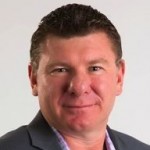 I have often been asked to provide insight into the management of shared risks, particularly by those working in Commonwealth Government Departments.
I have often been asked to provide insight into the management of shared risks, particularly by those working in Commonwealth Government Departments.
Element 7 of the Commonwealth Risk Management Policy states that: each entity must implement arrangements to understand and contribute to the management of shared risks. It goes onto to define shared risks as: those risks extending beyond a single entity which require shared oversight and management. Accountability and responsibility for the management of shared risks must include any risks that extend across entities and may involve other sectors, community, industry or other jurisdictions. Continue reading
#175 – COMPENSATING FOR SHAREPOINT DOCUMENT CONTROL DEFICIENCIES – GREG CARROLL
Featured
 The benefits of SharePoint as a content management system and information portal tool are indisputable. With great search functionality and user definable portal pages SharePoint is now the leading Content Management solution chosen by most IT departments.
The benefits of SharePoint as a content management system and information portal tool are indisputable. With great search functionality and user definable portal pages SharePoint is now the leading Content Management solution chosen by most IT departments.
But what if your business demands strict document controls protocols, not just because it’s good practice but life depends on it? Unfortunately there is generally a poor appreciation by IT departments of the importance of document control in mission critical business. Continue reading
#175 – ‘MY IDEAS ARE WAY BETTER THAN YOURS’ – EGOS IN ACTION – GARY HINKLE
Featured
 A leading electronics company suffered a setback when a systems engineer was pushing his own ideas hard, all the while belittling the ideas of others. It was clear to everyone he thought highly of his own ideas and expertise and not much of everyone else’s. The irony is that his approach for developing an important new product was actually great but ended up rejected because he alienated the rest of the team. Continue reading
A leading electronics company suffered a setback when a systems engineer was pushing his own ideas hard, all the while belittling the ideas of others. It was clear to everyone he thought highly of his own ideas and expertise and not much of everyone else’s. The irony is that his approach for developing an important new product was actually great but ended up rejected because he alienated the rest of the team. Continue reading
#174 – OPERATIONAL EXCELLENCE MATURITY MODEL – JOSEPH PARIS
Featured
 I have met countless Continuous Improvement and Operational Excellence professionals over the course of my career. And, in turn, I have become acquainted with their roles and efforts in regards to driving value to their organizations. Oftentimes, these professionals, although possessing great passion for, and pride in, the value they drive to their companies, express their frustrations at the lack of proper support from their company in their efforts. Continue reading
I have met countless Continuous Improvement and Operational Excellence professionals over the course of my career. And, in turn, I have become acquainted with their roles and efforts in regards to driving value to their organizations. Oftentimes, these professionals, although possessing great passion for, and pride in, the value they drive to their companies, express their frustrations at the lack of proper support from their company in their efforts. Continue reading
#174 – TIME COMPRESSION ACCELERATED LIFE TESTING – FRED SCHENKELBERG
Featured
 The easiest ALT is one that you operate an item more often then operated by the customer. Removing spans of time the item is not being bent, moved, heated, etc allows you to use time compression.
The easiest ALT is one that you operate an item more often then operated by the customer. Removing spans of time the item is not being bent, moved, heated, etc allows you to use time compression.
For example, a home kitchen toaster may be used for a few cycles during breakfast time in your home. In the lab, we can avoid having to wait the day of idle time and just make toast more often than just at breakfast to accelerate the operation of a toaster. Continue reading
#174 – MISUNDERSTANDING INNOVATION – GREG CARROLL
Featured
 Excuse me, but this is a bit like 3 high street bankers sitting around discussing the plight of the homeless. Very few of these self-appointed experts have ever started a business let alone been directly responsible for innovation in the marketplace.
Excuse me, but this is a bit like 3 high street bankers sitting around discussing the plight of the homeless. Very few of these self-appointed experts have ever started a business let alone been directly responsible for innovation in the marketplace.
After being in the computer software business for over 3 decades I have been directly involved in the most innovative period mankind has seen. From the introduction of “mini” computers to the “cloud” to IoT (the Internet of Things), technical change has been a staple of the industry. But from text files to relational databases to big data, the evolution of information as a tool has been the backbone of innovation in the aptly named “information revolution”. Continue reading
#174 – SELECTING BOARD OF DIRECTORS – JIGNESH PADIA
Featured
 The Board of Directors are vital for any organization’s good governance. Governance determines how an organization is centered and where it stands. “The Boards of Directors are a group of individuals within an organization that are either elected or appointed as representatives of Shareholders or Owners to establish Corporate Governance and enterprise risk management policies”. (Source: ERMGovernance.com) It is given that for an organization to be successful, it should have a Board of Directors (BOD) with a broad mix of skills to oversee the wide range of issues that may arise. Continue reading
The Board of Directors are vital for any organization’s good governance. Governance determines how an organization is centered and where it stands. “The Boards of Directors are a group of individuals within an organization that are either elected or appointed as representatives of Shareholders or Owners to establish Corporate Governance and enterprise risk management policies”. (Source: ERMGovernance.com) It is given that for an organization to be successful, it should have a Board of Directors (BOD) with a broad mix of skills to oversee the wide range of issues that may arise. Continue reading
#174 – THE BUSINESS AND LEADERSHIP CONFLICT – GARY HINKLE
Featured
 It’s ridiculous if you think about it – businesses invest billions of dollars per year on leadership development, yet we continue to have a shortage of true leaders in business. Not every business suffers from this shortage, but I know that within most organizations involved in technology development and manufacturing there are major leadership voids in the management ranks. Continue reading
It’s ridiculous if you think about it – businesses invest billions of dollars per year on leadership development, yet we continue to have a shortage of true leaders in business. Not every business suffers from this shortage, but I know that within most organizations involved in technology development and manufacturing there are major leadership voids in the management ranks. Continue reading
#173 – PUBLIC APATHY IN THE PATH OF PREPAREDNESS – GEARY SIKICH
Featured
I was supposed to be in Boston presenting at “The Disaster Conferences” a few years ago on 28 January 2015. Well, the weather just put us out to 19 March 2015 for the now, rescheduled Boston conference. I guess that they are still feeling the effects of this week’s blizzard, now named “Juno”; that left Boston with over 24 inches of snow. Continue reading
#173 – A STATE OF READINESS – JOSEPH PARIS
Featured
 It’s taken a long time—but the time has finally come. The release of my book, “State of Readiness”, has arrived.
It’s taken a long time—but the time has finally come. The release of my book, “State of Readiness”, has arrived.
My project officially started almost two and a half years ago. That was the day I formally sat down and decided to write a book. But it’s beginning can be traced to an article I wrote in 2012 entitled, “The Operational Excellence Manifesto”. It was one of the more significant articles I had written and was the result of a considerable amount of listening, learning, and experiencing. Continue reading
#173 – OPERATIONAL RISK MANAGEMENT AND COMPLIANCE MANAGEMENT IN AN EMERGENCY DEPARTMENT – JIGNESH PADIA
Featured
 I recently got a question from one of my clients regarding risks associated with non-compliance in Emergency Department concerning two patient identifiers. The risk identified by my client is not uncommon among many healthcare organizations and falls under operational and compliance risk management. In order to comply with the required organizational practices (ROPs), we first need to have a closer look at it. Continue reading
I recently got a question from one of my clients regarding risks associated with non-compliance in Emergency Department concerning two patient identifiers. The risk identified by my client is not uncommon among many healthcare organizations and falls under operational and compliance risk management. In order to comply with the required organizational practices (ROPs), we first need to have a closer look at it. Continue reading
#173 – SUPPLY CHAIN RISK, RELIABILITY, RESILIENCE & FUTURE PROOFING – CHRIS DAVIES
Featured
Introduction:
Previously I have introduced Supply Chain Risk Management in 5 Questions (link here). The aim here is to highlight elements of supply chain Risk, Reliability, Resilience and Futureproofing
What does Supply Chain Reliability & Resilience mean?
Supply Chain Reliability is where your supplier or service provider can repeatedly satisfy your purchase requirements. Resilience in very basic terms is how quickly your business can respond to and recover situations or issues (Risks) to the last good part, state, or improved condition, that otherwise could have a real or potential impact on your business operations Continue reading
#173 – I BEFORE ME, EXCEPT AFTER WE – HOW YOU LEAD WITH YOUR WORDS – PETER HOLTMANN
Featured
 The intentions of your words of leadership may be hijacked by their impact. Words like I, Me, We and their synonyms can bring people together, drive people with purpose and passion; or they can divide people and demotivate. Knowing the context of these words and how they impact, can define your leadership. Continue reading
The intentions of your words of leadership may be hijacked by their impact. Words like I, Me, We and their synonyms can bring people together, drive people with purpose and passion; or they can divide people and demotivate. Knowing the context of these words and how they impact, can define your leadership. Continue reading
# 204 – ARE STANDARDS BEST PRACTICES? – JP RUSSELL
Featured
 Standards represent some of the best ideas on how to do something. Everyone reading this article has an opportunity to make things better through standards. Did you know ASQ is accredited by the American National Standards Institute (ANSI) to issue US national standards and technical reports (TR) related to quality management principles, tools, and technology? Technically speaking, ASQ is an ANSI-accredited Standards Development Organization (SDO) with the ASQ Standards Committee serving as the consensus body for the development of American National Standards that are not product-specific or safety-related. Continue reading
Standards represent some of the best ideas on how to do something. Everyone reading this article has an opportunity to make things better through standards. Did you know ASQ is accredited by the American National Standards Institute (ANSI) to issue US national standards and technical reports (TR) related to quality management principles, tools, and technology? Technically speaking, ASQ is an ANSI-accredited Standards Development Organization (SDO) with the ASQ Standards Committee serving as the consensus body for the development of American National Standards that are not product-specific or safety-related. Continue reading
#172 – FAIL FAST – FAIL SMALL – LEARN AND MOVE ON – JOSEPH PARIS
Featured
 Nobody likes to fail. Failing causes us embarrassment. Failing bruises our ego. Failing might be a dark spot on our performance assessments. All we have to do is reflect on our childhood for when we failed and how poorly we felt. Even if our parents did give us encouragement, we still felt bad about failing. Let’s face it – failing sucks.
Nobody likes to fail. Failing causes us embarrassment. Failing bruises our ego. Failing might be a dark spot on our performance assessments. All we have to do is reflect on our childhood for when we failed and how poorly we felt. Even if our parents did give us encouragement, we still felt bad about failing. Let’s face it – failing sucks.
In most countries, if you fail at business, you carry the stigma of that failure with you for a long time – perhaps forever. The Economist did a great article entitled “European entrepreneurs; Les misérables” in June of 2012. Continue reading
#172 – MATHEMATICAL MODELS, ALGORITHMS, AND RISK MANAGEMENT METHODOLOGIES – GEARY SIKICH
Featured
We are enamored by risk models, mathematic algorithms, equations and formulae. As a matter of fact, we have become so enamored by complex mathematical algorithms, formulas, models and derivatives that we have abdicated much of the analysis of risk, to these complex formulas and quantitative analysis methodologies touted by firms far and wide. Where has this gotten us? Are we better able to predict and measure risk exposures? Are we managing risk more effectively? Continue reading
#172 – INTRODUCTION TO THE QUALITY TRIANGLE – FRED SCHENKELBERG
Featured
 Have you ever worked on a project with no deadlines, unlimited resources, and boundless scope? Probably not.
Have you ever worked on a project with no deadlines, unlimited resources, and boundless scope? Probably not.
You may have worked under the guidelines of a quality triangle, also known as a project management triangle, iron triangle, or project triangle.
Why is that? Why the limits to our ability to create a product or improve a system? Continue reading
#172 – UNDERSTANDING THE GOVERNANCE PART OF GRC SYSTEMS – GREG CARROLL
Featured
 Unfortunately, there seems to be a lack of understanding of what GRC really is. Contrary to popular belief GRC is NOT ERM, but 3 separate disciplines Governance, Risk and Compliance. Here I look at the neglected Governance component. Continue reading
Unfortunately, there seems to be a lack of understanding of what GRC really is. Contrary to popular belief GRC is NOT ERM, but 3 separate disciplines Governance, Risk and Compliance. Here I look at the neglected Governance component. Continue reading
#172 – ADVANCING AUDITOR RECOGNITION – ASSESSMENT OF INDUSTRY KNOWLEDGE – PETER HOLTMANN
Featured
 For many years the selection of audit professionals to audit technical areas, industrial categories, NACE codes, IAF codes, etc has relied on the logging of audits to codes and the review of work experience via resumes.
For many years the selection of audit professionals to audit technical areas, industrial categories, NACE codes, IAF codes, etc has relied on the logging of audits to codes and the review of work experience via resumes.
Whilst this process provides a qualification focus it does not standardize the knowledge or even base line technical competence. For those involved in the assessment and certification, management and coordination of auditor to audit, this is the holy grail. Continue reading
#171 – DOING RIGHT VS. DOING IT RIGHT – JOSEPH PARIS
Featured
 It seems that not a day goes by without our reading about someone getting caught in the processes of a system – aggreged not (necessarily) by nefarious intent, but by a process that didn’t take into consideration some set of circumstances. Sometimes, the angst endured is amplified by the subsequent processes initiated in a chain of events.
It seems that not a day goes by without our reading about someone getting caught in the processes of a system – aggreged not (necessarily) by nefarious intent, but by a process that didn’t take into consideration some set of circumstances. Sometimes, the angst endured is amplified by the subsequent processes initiated in a chain of events.
Take the situation of Dr. David Dao who, on April 9th 2017, was supposed to fly from Chicago to Louisville on United Flight 3411. Continue reading
#171 – EXPLOITING NEW CHALLENGES IN ENTERPRISE RISK MANAGEMENT – GEARY SIKICH
Featured
 Heightened Awareness or Reactive, Backwards Looking?
Heightened Awareness or Reactive, Backwards Looking?
From financial crises to energy catastrophes to earthquakes and threats of terrorism, we hear a lot about events that challenge our ability to identify and manage risk. Unfortunately some of the things that emerge from many of these events are reactive regulatory rules and requirements.
What this means is that businesses and governments need to be even more vigilant in their prosecution of enterprise risk management initiatives. Private and Public Sector operations are complex and becoming more complex as more entrants to the global marketplace compete for fewer and fewer available resources at an ever quickening pace. Continue reading
#171 – YOU ARE A RELIABILITY LEADER – NOW MAKE A DIFFERENCE – FRED SCHENKELBERG
Featured
 Leadership is not a position or title within an organization. It is an attitude.
Leadership is not a position or title within an organization. It is an attitude.
You’ve seen the internet meme’s about the difference between leadership and management. There is a difference and while not everyone is going to be in top management, everyone can (and should) be a leader.
As a reliability professional, you are conveniently looked to for leadership. You are expected to use your knowledge and skill to solve problems. To help teams solve problems. To improve the reliability performance of your system and across your industry. Continue reading
#171 – WHAT IS GRC AND WHY USE COMPLIANCE MANAGEMENT SOFTWARE – GREG CARROLL
Featured
 When starting out on the Compliance Management journey, understanding the alphabet soup of acronyms can be confusing. Here we try to explain the terms, what needs to be done, and need for compliance management software in the process.
When starting out on the Compliance Management journey, understanding the alphabet soup of acronyms can be confusing. Here we try to explain the terms, what needs to be done, and need for compliance management software in the process.
Continue reading
#171 – ERM AND INTELLIGENT RISK – JAMES J. KLINE PH.D.
Featured
 In the Baldrige Excellence Framework the term “Intelligent Risk” appears. It is defined as: “Opportunities for which the potential gain outweighs the potential harm or loss to your organization’s future success.” This definition expresses a concern that risk might inhibit innovation. With the addition of Enterprise Risk Management to the 2017-18 Framework has a condition been created where two best business criteria, innovation and risk management, might cancel each other out? More basically, does Enterprise Risk Management (ERM) inhibit innovation related risk taking? Continue reading
In the Baldrige Excellence Framework the term “Intelligent Risk” appears. It is defined as: “Opportunities for which the potential gain outweighs the potential harm or loss to your organization’s future success.” This definition expresses a concern that risk might inhibit innovation. With the addition of Enterprise Risk Management to the 2017-18 Framework has a condition been created where two best business criteria, innovation and risk management, might cancel each other out? More basically, does Enterprise Risk Management (ERM) inhibit innovation related risk taking? Continue reading
#170 – CONSIDERATION OF RISKS IMPROVES THE VALUE OF STRATEGIC PLANNING – J. WOODY STANLEY, MICHAEL GRAF, DANIEL FODERA
Featured
Government agencies continually face the challenge of addressing complex societal problems with constrained resources. Among Federal agencies, strategic planning is a common practice that helps agency leaders identify their priorities and improve performance. While strategic planning does not guarantee they will foresee all future events and issues, a risk based strategic planning process is more likely to highlight emergent trends and, as a result, agency managers are better positioned to face an uncertain future. Continue reading
#170 – WHAT DOES ELOQUENT DESIGN MEAN TO YOU? – JOHN AYERS
Featured
 Eloquence has many definitions primarily applied to speaking and writing. One definition is the art or practice of using fluent, forceful, and persuasive discourse. Over the ages, authors have variously described eloquence as “words sweetly placed and modestly directed” (William Shakespeare), “a painting of thought” (Blaise Pascal), “the poetry of prose” (William Cullen Bryant), “the appropriate organ of the highest personal energy” (Ralph Waldo Emerson), and “the art of clothing the thought in apt, significant and sounding words” (John Dryden). Continue reading
Eloquence has many definitions primarily applied to speaking and writing. One definition is the art or practice of using fluent, forceful, and persuasive discourse. Over the ages, authors have variously described eloquence as “words sweetly placed and modestly directed” (William Shakespeare), “a painting of thought” (Blaise Pascal), “the poetry of prose” (William Cullen Bryant), “the appropriate organ of the highest personal energy” (Ralph Waldo Emerson), and “the art of clothing the thought in apt, significant and sounding words” (John Dryden). Continue reading
#170 – IT’S ALL ABOUT SURVIVABILITY – GEARY SIKICH
Featured
 If you want senior management to pay attention give them something that challenges their focus – and understand that their focus is not on how many computers you have or RTO, RPO stats. It is on business survivability – will we be in business tomorrow given the issues that we face today.
If you want senior management to pay attention give them something that challenges their focus – and understand that their focus is not on how many computers you have or RTO, RPO stats. It is on business survivability – will we be in business tomorrow given the issues that we face today.
What is more important to your organization’s continuity of operations – how many computers you have or where your competition will be coming from in the next five years? Continue reading
#170 – THE NEED TO IMPROVE THE RELIABILITY NARRATIVE – FRED SCHENKELBERG
Featured
 Little Compromises and Future Costs
Little Compromises and Future Costs
In a recent Seth Godin blog, Counting beans he talks about the eventual costs of little compromises. The immediate benefit may be celebration worthy, yet
But overlooked are the unknown costs over time, the erosion in brand, the loss in quality, the subtraction from something that took years to add up.
This certainly applies to reliability as well. Deferring maintenance just one more month, addressing one more software bug can be done after shipping, and similar small shifts erode reliability of your system. Continue reading
#170 – HOW THE JOB SEARCH CHANGED SINCE 2009 – ELIZABETH LIONS
Featured
 Did realize how many people are looking for a new job?
Did realize how many people are looking for a new job?
According to LinkedIn’s survey report in 2016, 87% of passive and active candidates are open to a new job. The number one reason for wanting a new job is career advancement and growth.
In the last three years, I’ve been surprised to find clients come to me looking for new roles that have been with a company ten years or more. Baffled with how much the job market and recruiting trends have changed, they seek solid advice. Continue reading
#169 – PDCA IS NOT BEST PRACTICE – GREG CARROLL
Featured
 There is a gaggle of Management Consultants pushing the 20th century mantra of Good Management Practice as a panacea to all the ill of today’s business environment. The key plank in most of these methodologies is that old chestnut “the PDCA cycle” for Continuous Improvement. If your consultant wears this as a badge, run a mile
There is a gaggle of Management Consultants pushing the 20th century mantra of Good Management Practice as a panacea to all the ill of today’s business environment. The key plank in most of these methodologies is that old chestnut “the PDCA cycle” for Continuous Improvement. If your consultant wears this as a badge, run a mile
Business Management is no longer just about Financial Accounting or Office Administration. And Best Practice is not just someone’s vague opinion. Leading businesses from around the world have, thru the international standards organization, put down a comprehensive set of guidelines for a broad range of Systems Management areas covering the lifecycle management Best Practices. Continue reading
#169 – BALDRIGE CYBERSECURITY AWARD IS COMING – GREG HUTCHINS
Featured
 We are all familiar with the Malcolm Baldrige National Quality Award (MBNQA). Now simply known as the Baldrige Award – the Performance Excellence Award.
We are all familiar with the Malcolm Baldrige National Quality Award (MBNQA). Now simply known as the Baldrige Award – the Performance Excellence Award.
Well, a new award is coming – The Baldrige Cybersecurity award may be out in a year or so.
Why? Well, information and data is where value is more commonly found. The information may be organizational, personal, or intellectual property. This information is hugely valuable and is commonly digitized. The information has to be protected through cybersecurity. Continue reading
#169 – IS YOUR ORGANIZATION’S PLANNING BRITTLE – GEARY SIKICH
Featured
 Good intentions do not make for the creation of a robust/resilient organization. Business Continuity plans, Disaster Recovery plans, Emergency Response plans, etc., that are standalone documents generally reflect good intentions – whether to meet regulatory requirements or to address governance. I would have to say that this should be a wake-up call for executives in all industries. We live in a complex and interdependent world. Complex systems are full of interdependencies that are hard to detect. The result is nonlinearity in responses to events, especially random events/shocks. Continue reading
Good intentions do not make for the creation of a robust/resilient organization. Business Continuity plans, Disaster Recovery plans, Emergency Response plans, etc., that are standalone documents generally reflect good intentions – whether to meet regulatory requirements or to address governance. I would have to say that this should be a wake-up call for executives in all industries. We live in a complex and interdependent world. Complex systems are full of interdependencies that are hard to detect. The result is nonlinearity in responses to events, especially random events/shocks. Continue reading
#169 – CEO’s AND THEIR SAUSAGES – LEARN TO LOVE THEM LIKE THEY DO – JOSEPH PARIS
Featured
 It’s been another week, much like the many other weeks for me. In addition to running a couple of companies, working on a few projects and pitching others, and the routine management and engagement of the Operational Excellence Group on LinkedIn; I had a few more conversations with the leadership of Continuous Improvement or Operational Excellence (CI/OpEx) Programs at various companies (most in the Fortune 1,000).
It’s been another week, much like the many other weeks for me. In addition to running a couple of companies, working on a few projects and pitching others, and the routine management and engagement of the Operational Excellence Group on LinkedIn; I had a few more conversations with the leadership of Continuous Improvement or Operational Excellence (CI/OpEx) Programs at various companies (most in the Fortune 1,000).
#169 – GIVE A LITTLE TO GET MORE – TIM RODGERS
Featured
 I’ve been managing supplier relationships for almost my entire career, including hardware component suppliers, contract manufacturers, technology alliance partners, and engineering service providers. Over that time I’ve worked with a number of people at all levels who seem to believe that their one-up position as the customer entitles them to demand more from suppliers while paying less. The attitude seems to be: “Do as I say or we’ll take our business elsewhere.” Continue reading
I’ve been managing supplier relationships for almost my entire career, including hardware component suppliers, contract manufacturers, technology alliance partners, and engineering service providers. Over that time I’ve worked with a number of people at all levels who seem to believe that their one-up position as the customer entitles them to demand more from suppliers while paying less. The attitude seems to be: “Do as I say or we’ll take our business elsewhere.” Continue reading
#168 – SUPPLY CHAIN RISK MANAGEMENT: PUTTING THE PIECES TOGETHER – GEARY SIKICH
Featured
It is mid-year 2014 as I write this article. We have recognized the need to better manage supply chain risks for the better part of a decade now. Yet, we still seem to be deluded into thinking that the modern supply chain is resilient to the point of invulnerability. Most organizations have a supply chain that is a mix of competencies, from manufacturing to professional advisory services. Continue reading
#168 – CUSTOMERS EXPERIENCE PRODUCT RELIABILITY IN REAL TIME – FRED SCHENKELBERG
Featured
 In a customer’s mind, the product works or it doesn’t. If it doesn’t work as expected it has failed. This may or may not be a reliability problem.
In a customer’s mind, the product works or it doesn’t. If it doesn’t work as expected it has failed. This may or may not be a reliability problem.
A customer or someone using your product brings a set of expectations to the experience. The range of expectations may range from very little to very high functional, value production, and durability.
Failures are defined by customers. Continue reading
#168 – THE PM CONSULTANT – WHAT DO THEY DO (& WHY); BUT WHAT SHOULD THEY DO(& HOW)? – MALCOLM PEART
Featured
In a nutshell, many people think that the role of the Project Management Consultant (PMC) is to look after the Client’s best interests. But what are the Client’s best interests and does this just amount to keeping the Client happy and not upsetting him?
I would suggest that completing the project in terms of time, cost and quality prevail and that this is the PMC’s real role. This requires the PMC to let the Client know that his best interests are (1) being met, (2) not being met, (3) what needs to be done to meet those interests, and (4) explain why the Client needs to pay or be delayed, or fail. Continue reading
#168 – 800COMPETE.COM – NEW SUPPLY MANAGEMENT BUSINESS MODEL – GREG HUTCHINS
Featured
Think of the following: your CEO gets a tweet from President Trump calling out your company for being Un-American for offshoring jobs? No!
“The biggest idea (globalization/offshoring) of the past three decades is in deep trouble,” says the Economist.¹
President Trump advocates critical infrastructure spending to build/upgrade the electric grid, roads, and airports. The American Society of Civil Engineers (ASCE) rates the infrastructure D+. Domestic investment will be $1 up to $4 trillion. Most of the infrastructure will be sourced domestically. Continue reading
#167 – THE RISK OF FALSE DEMAND – STEVEN BRADT
Featured
When organizations consider risk it is usually centric to mitigating sentinel events or Black Swans (Special Cause) and not usually focused on what is called common cause variation. By definition these special cause events have a low probability to predict because it is a random from an unusual occurrence and is unstable and unpredictable. Common cause or process variation is stable and predictable as it is part of the system which means we can identify and reduce variation which reduces risk. Continue reading
#167 – RISK EXPOSURE REDUCTION AND MITIGATION – GEARY SIKICH
Featured
 Exposure to threats, hazards and risks leads to vulnerabilities that an organization must deal with. Commonly these are addressed via a mitigation process. Once mitigation is accomplished, often times the organization feels that the risk, threat, hazard does not need to be revisited. However, as a result of the mitigation efforts on the part of the organization, the risks, threats, hazards reconfigure and re-emerge in a different form. Continue reading
Exposure to threats, hazards and risks leads to vulnerabilities that an organization must deal with. Commonly these are addressed via a mitigation process. Once mitigation is accomplished, often times the organization feels that the risk, threat, hazard does not need to be revisited. However, as a result of the mitigation efforts on the part of the organization, the risks, threats, hazards reconfigure and re-emerge in a different form. Continue reading
#167 – USE AND ENVIRONMENTAL PROFILES – FRED SCHENKELBERG
Featured
 Use / Environmental profiles
Use / Environmental profiles
Did you know that hot air doesn’t rise when there is no or very little gravity?
The electronics used to steer an oil exploration drill head 5 miles deep in the earth experiences 200°C sulfuric acid immersion along with continuous 50,000G shocks.
I used to think the environment under the hood a car was difficult. Continue reading
#167 – 4 STEPS TO INTEGRATE RISK MANAGEMENT INTO STRATEGIC PLANNING – ALEXEI SIDORENKO
Featured
 Let me first start by saying integrating risk management into strategic planning is NOT doing a startegic risk assessment or even having a risk conversation at the strategy setting meeting, it is so much more. You will also find it difficult to relate if the objectives have not been defined or documented in your company or if the objectives are not measurable. Continue reading
Let me first start by saying integrating risk management into strategic planning is NOT doing a startegic risk assessment or even having a risk conversation at the strategy setting meeting, it is so much more. You will also find it difficult to relate if the objectives have not been defined or documented in your company or if the objectives are not measurable. Continue reading
#167 – IS RBT THE ‘NEW’ TQM? – MILT DENTCH
Featured
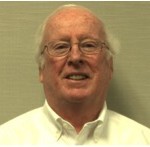 Will Risk Based Thinking (RBT) as a cultural change for organizations be successful in reducing quality or business upsets for organizations of all sizes and complexity? In the past 50 years, there have been several quality improvement initiatives that attempted to bring about a change in a company’s culture that have not had a sustainable impact on the company’s quality or business results. Continue reading
Will Risk Based Thinking (RBT) as a cultural change for organizations be successful in reducing quality or business upsets for organizations of all sizes and complexity? In the past 50 years, there have been several quality improvement initiatives that attempted to bring about a change in a company’s culture that have not had a sustainable impact on the company’s quality or business results. Continue reading
#166 – BALDRIGE CRITERIA POSES CHALLENGES TO THE QUALITY PROFESSION – JIM KLINE PH.D.
Featured
The title may sound strange given the Baldrige’s origin as the U.S. National Quality Award. Yet, its migration to a Performance Excellence Criteria and the addition of Cyber Security, Innovation, and Enterprise Risk Management (ERM) does pose challenges to the quality profession. This is particularly true since the many of the Baldrige examiners are quality professionals. Continue reading
#166 – FUTURE OF CONFORMITY ASSESSMENT – GREG HUTCHINS
Featured
 We are seeing more global certification bodies create their own assurance and branded certification schemes.
We are seeing more global certification bodies create their own assurance and branded certification schemes.
Like ISO 31000 letter of conformance for airports.
Dubai Airports this week received a letter of conformance for ISO 31000 – 2009 Enterprise Risk Management from Lloyds’ Register Quality Assurance (LRQA). Continue reading
#166 – CHANGING A CONTINUOUS IMPROVEMENT INITIATIVE INTO A GLOBAL PROGRAM – JOSEPH PARIS
Featured
 The “laws of nature” are absolute. When we discover a contradiction to a supposed law of nature, it is not nature that is wrong, but our understanding and definition. Once, it was believed that the Earth was the center of the solar system, supported in our understanding of the science at the time – and was proved incorrect. And it was once believed that the Earth was flat – and this too, was disproved. Continue reading
The “laws of nature” are absolute. When we discover a contradiction to a supposed law of nature, it is not nature that is wrong, but our understanding and definition. Once, it was believed that the Earth was the center of the solar system, supported in our understanding of the science at the time – and was proved incorrect. And it was once believed that the Earth was flat – and this too, was disproved. Continue reading
# 166 – THE BEST LEADERS I KNOW DID THIS – ELIZABETH LIONS
Featured
 Leadership is every bit an inward process as much as it is an outward process.
Leadership is every bit an inward process as much as it is an outward process.
I’ve been lucky in my career. I’ve had the pleasure to work with some of the best Directors and Vice Presidents in several major technology companies. Listening to what kept them up at night, taught me a lot.
What I found was this: Every good leader sets aside time for self-reflection. Continue reading
#166 – THE MANY WAYS WE USE VARIANCE – FRED SCHENKELBERG
Featured
 The term variance is a statistical concept related to the spread or dispersion of a set of data. Second to the mean, it a common value we may calculate.
The term variance is a statistical concept related to the spread or dispersion of a set of data. Second to the mean, it a common value we may calculate.
We find standard deviation easier to understand and use (it uses the same units as the data) whereas variance uses the units squared.
We use variance in quite a few different ways. Let’s review just a few. Continue reading
#165 – ISO 9001:2015 SHOULD BE AMENDED – PART 2 – MILT DENTCH
Featured
My previous article in CERM Insights #164: “The ISO 9001:2015 Standard should be amended”, described my thoughts related to the confusion and ambiguous requirements in both the text of the Standard and the Annex to ISO 9001:2015. This article describes additional requirements that, in my opinion, are not clearly presented in ISO 9001:2015.
- The difference between purchasing and outsourcing;
- ISO 9001:2015 does not include definitions and with helpful guidance:
- The requirements of the Design and Development clause and project complexity;
- Organizational Knowledge and client confidentiality.
#165 – GOOD ADVICE FOR RISING STARS: YOUR PERSONAL BRAND SAYS A LOT ABOUT YOU – CHRIS MCMANES
Featured
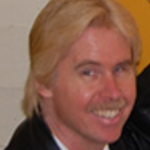 Two recent TV appearances…two vastly different reactions.
Two recent TV appearances…two vastly different reactions.
Mariah Carey, singing on New Year’s Eve, had a meltdown and proceeded to blame others for her flawed performance. Lady Gaga, during halftime of Super Bowl LI, soared to (and from) new heights.
The impression they left on viewers were at polar opposites. Carey was generally lambasted by traditional and social media. Gaga scored high marks and saw downloads of her songs soar nearly 1,000 percent. Continue reading
#165 – DRIVERS OF CHANGE: GEOPOLITICAL, ENERGY, AND COMMODITY RISKS – GEARY SIKICH
Featured
Unpredictability is the new normal. As the world approaches 7 billion in population this year, there is an ever increasing demand for food, energy and a voice in how things are run. How do these changes affect business continuity planners, you may be asking? Then simple answer is, they will have far reaching effects on how business continuity planning is conducted. No longer can we be satisfied with the assurance that our “hot site” is available, or that we can maintain business operations in the face of a pandemic; or that we can deal with the aftermath of a natural disaster. Continue reading
#165 – INTRODUCTION TO DESIGN FOR RELIABILITY – FRED SCHENKELBERG
Featured
The reliability of a product is strongly influenced by decisions made during the design process.
 The key message here is reliability occurs at the point of decision. Each time someone makes a decision, selects a component, chooses a material, assumes a use profile, the eventual product reliability takes shape. Continue reading
The key message here is reliability occurs at the point of decision. Each time someone makes a decision, selects a component, chooses a material, assumes a use profile, the eventual product reliability takes shape. Continue reading
#165 – USING THE ‘RIGHT’ MEASURES TO CREATE OPPORTUNITIES AND REDUCE RISK – STEVEN BRADT
Featured
#164 – BALDRIGE ADDS ENTERPRISE RISK MANAGEMENT – JAMES KLINE PH.D.
Featured
The National Institute of Standards and Technology (NIST) just issued the 2017-2018 Baldrige Excellence Frame Work. There were modifications to a number of categories such as Category 1 Leadership, Category 2, Strategy and Category 6 Operations. Included in the modifications were substantive additions for Cyber Attacks and Enterprise Risk Management (ERM). Continue reading
#164 – POST TRUTH, ALTERNATIVE FACTS, FAKE NEWS – THE CRISIS OF LEADERSHIP – GEARY SIKICH
Featured
 Post Truth, Alternative Facts, Fake News – The Crisis for Leadership
Post Truth, Alternative Facts, Fake News – The Crisis for Leadership
Introduction
If you want senior management to pay attention give them something that challenges their focus – and understand that their focus is not on how many computers you have or RTO, RPO statistics. It is on business survivability – will we be in business tomorrow given the issues that we face today. What is more important to your organization’s continuity of operations – how many computers you have or where your competition will be coming from in the next five years? Continue reading
#164 – GUIDE TO RISK MANAGEMENT 3.0 – FREE BOOK – ALEXEI SIDORENKO
Featured
 Risk management is ultimately about creating a culture that would facilitate risk discussion when performing business activities or making any strategic, investment or project decision.
Risk management is ultimately about creating a culture that would facilitate risk discussion when performing business activities or making any strategic, investment or project decision.
In this free book, Alex Sidorenko and Elena Demidenko talk about practical steps risk managers can take to integrate risk management into decision making and core business processes. Continue reading
#164 – ISO 9001:2015 STANDARD SHOULD BE AMENDED – MILT DENTCH
Featured
I have been an RABQSA (Exemplar Global) lead auditor for twenty years. My auditing experience includes conducting over 500 audits for worldwide organizations and providing dozens of Internal Auditor training classes. I am currently assisting several companies in upgrading to the ISO 9001:2015 quality management system (QMS) requirements. While the previous ISO 9001 revisions had their share of interpretation issues, the latest revision, ISO 9001:2015, has many issues which are hampering the transition to the new standard in my opinion. Continue reading
#164 – AUDITOR ETIQUETTE: MAKING A GOOD IMPRESSION – J.P. RUSSELL
Featured
 An audit system manager recently told me that it was relatively easy to identify quality auditors who had good technical skills for collecting and evaluating data. What was really hard was to find auditors with good people skills (perhaps auditors need to go to charm school). Even though an auditor is not trying to win a popularity contest, the impressions that the auditor makes with auditee management, interviewees, and escorts can influence the audit and its effectiveness.
An audit system manager recently told me that it was relatively easy to identify quality auditors who had good technical skills for collecting and evaluating data. What was really hard was to find auditors with good people skills (perhaps auditors need to go to charm school). Even though an auditor is not trying to win a popularity contest, the impressions that the auditor makes with auditee management, interviewees, and escorts can influence the audit and its effectiveness.
#163 – THE GIG ECONOMY – NO JOBS JUST WORK! – JOSEPH PARIS
Featured
 There has been a lot written lately of the “Gig Economy” – the notion that, in the future of earning a living, there will no longer be jobs, just work. It’s an earnings environment where the supply and demand for skillsets are contracted between those that have a need and those who can fulfill that need. Continue reading
There has been a lot written lately of the “Gig Economy” – the notion that, in the future of earning a living, there will no longer be jobs, just work. It’s an earnings environment where the supply and demand for skillsets are contracted between those that have a need and those who can fulfill that need. Continue reading
#163 – COMPLEXITY: THE WAGER – ANALYSIS OR INTUITION? – GEARY SIKICH
Featured
Business Continuity professionals need to rethink some of the paradigms of the practice. All too often we tend to fall back on what are considered the tried and true ways of doing things. This essentially leaves us in two camps; the first, evolved out of information technology and disaster recovery and the second, evolved out of emergency preparedness (tactical planning), financial risk management (operational) and strategic planning (strategic). These two camps each offer much to be desired. Continue reading
#163 – WHEN MANAGEMENT DOESN’T LISTEN – FRED SCHENKELBERG
Featured
 A Bloomberg articles details the Takata airbag recall series of events. The line that caught my attention is:
A Bloomberg articles details the Takata airbag recall series of events. The line that caught my attention is:
…company documents suggesting that Takata executives discounted concerns from their own employees and hid the potential danger… Continue reading
#163 – SYNTAX ERRORS IN HEALTH INFORMATION SYSTEMS INCREASE PATIENT RISK – STEVEN BRADT
Featured
 Incorrect interpretation of drug abbreviation’s can lead to serious harm for patients. Consider the following: At 7:00 AM, Jane, a registered nurse enters the details for Mary, the last of her five patients as she completes a 12-hour shift. As the day begins, Ann is checking on patients and reviewing their charts. She is confused by an abbreviation “MTX” for a medication given to Mary at 4:30 AM. It can be interpreted as methotrexate (used for rheumatoid arthritis) or mitoxantrone (a cancer drug). Continue reading
Incorrect interpretation of drug abbreviation’s can lead to serious harm for patients. Consider the following: At 7:00 AM, Jane, a registered nurse enters the details for Mary, the last of her five patients as she completes a 12-hour shift. As the day begins, Ann is checking on patients and reviewing their charts. She is confused by an abbreviation “MTX” for a medication given to Mary at 4:30 AM. It can be interpreted as methotrexate (used for rheumatoid arthritis) or mitoxantrone (a cancer drug). Continue reading
#163 – #2 BEST JOB – RISK MANAGER – GREG HUTCHINS
Featured
 “One Thing is Certain: 2017 Will Be the Year of Uncertainty for CEO’s’”
“One Thing is Certain: 2017 Will Be the Year of Uncertainty for CEO’s’”
Shouted a recent Wall Street Journal article.[1]
Why?
Let’s look at the reasons at why we live in VUCA time (Volatility, Uncertainty, Complexity, and Ambiguity).
- President Trump is disrupting business rules and business models.
- Technological change is increasing.
- Mass immigration is resulting in political divisions.
- Climate change is real and increasing.
- Globalization benefits are unclear due to job and work transference.
#162 – TRUMP DISRUPTS BUSINESS MODELS – GREG HUTCHINS
Featured
 You’re a company that has been outsourcing for the last 10 years. This makes good business sense, since you can’t find local or domestic sources that can make products or provide the services you need. Also, the savings of outsourcing can be substantial so this increases your revenue and is good for your shareholders.
You’re a company that has been outsourcing for the last 10 years. This makes good business sense, since you can’t find local or domestic sources that can make products or provide the services you need. Also, the savings of outsourcing can be substantial so this increases your revenue and is good for your shareholders.
Then, you get tweeted: President Trump calls your company out as being UnAmerican for outsourcing jobs. Continue reading
#162 – CASCADING EFFECTS RIPPLE THROUGH ORGANIZATIONS ILL PREPARED TO DEAL WITH THEM – GEARY SIKICH
Featured
We live in a world of consequences. Everything that we experience is a consequence of some action, decision, reaction and/or choice. For organizations the consequences of a choice, action, decision and/or reaction can cascade throughout the organization and extend to its “Value Chain” rippling through all the known touchpoints and the as yet, unidentified touchpoints. Continue reading
#162 – WHY DO WE USE THE SUM OF SQUARES CONCEPT SO OFTEN? – FRED SCHENKELBERG
Featured
 The data analysis course professor tended to focus on the practical application of statistics.
The data analysis course professor tended to focus on the practical application of statistics.
Avoiding statistical theory was fine with me. Learning statistics for me was on how to solve problems, optimize designs, and understanding data. Continue reading
#162 – LEAD FROM WITHIN – ELIZABETH LIONS
Featured
 Leadership is every bit an inward process as much as it is an outward process.
Leadership is every bit an inward process as much as it is an outward process.
I’ve been lucky in my career. I’ve had the pleasure to work with some of the best Directors and Vice Presidents in several major technology companies. Listening to what kept them up at night, taught me a lot. Continue reading
#161 – INTRODUCTION TO THE SIX SIGMA DESIGN APPROACH – FRED SCHENKELBERG
Featured
 Sigma, σ, is the Greek character we use to represent standard deviation. 6 σ represents the spread of data about the mean. For data with a normal distribution 6 σ includes 99.7% of the data.
Sigma, σ, is the Greek character we use to represent standard deviation. 6 σ represents the spread of data about the mean. For data with a normal distribution 6 σ includes 99.7% of the data.
The 6 σ design approach incorporates knowledge of the variation that will occur within the design such that the design has is unlikely to fail. Continue reading
#161 – THE ISO 9001:2015 STANDARD AND THE PLAN-DO-CHECK-ACT CYCLE – MURRAY GONZALEZ
Featured
- Adapt to a changing world
- Reflect the complex environments in which organizations operate
- Provide a consistent foundation for the future
- Ensure the new standard reflects the needs of all relevant interested parties
- Ensure alignment with other management system standards1
#161 – RISK BASED THINKING IN HEALTHCARE 2.0 – TED SCHMIDT
Featured
 In my May 2015 article on Risk-Based Thinking (RBT), I discussed the current state of healthcare related to risk and our current performance as a profession. Since that article, there have been other journal articles that showed improvements in our performance, related to risk, which we all know translates to patient safety. Today I see that 241 hospitals appeared on the CMS HAC (Hospital Acquired Conditions) list for the third year in a row. Continue reading
In my May 2015 article on Risk-Based Thinking (RBT), I discussed the current state of healthcare related to risk and our current performance as a profession. Since that article, there have been other journal articles that showed improvements in our performance, related to risk, which we all know translates to patient safety. Today I see that 241 hospitals appeared on the CMS HAC (Hospital Acquired Conditions) list for the third year in a row. Continue reading
#161 – WHAT DONALD TRUMP’S WIN TELLS US ABOUT DECISION BIAS – GREG CARROLL
Featured
 Just like the Brexit win 2 months ago, Donald Trump’s election as US President beggars belief but has some valuable lessons to learn from both a Risk Management and corporate governance perceptive.
Just like the Brexit win 2 months ago, Donald Trump’s election as US President beggars belief but has some valuable lessons to learn from both a Risk Management and corporate governance perceptive.
Why is business now OK with Trump? It’s due to widely adopted view of billionaire Peter Thiel (co-founder of PayPal) to “take Trump Seriously, Not Literally”. Continue reading
#161 – CAN THE US GOVERNMENT TRANSFORM ITSELF? – STEPHEN VILLAESCUSA
Featured
9901834.CERM_Risk_News__92 (2)  The $3.5 trillion U.S. Federal Government is one of the largest and most complex organizations in the world. Recently the Office of Management and Budget mandated all federal agencies to implement and integrate Enterprise Risk Management (ERM) into their strategic planning, strategic review and internal control processes (Revised OMB Circular No. A-123, July 2016). Continue reading
The $3.5 trillion U.S. Federal Government is one of the largest and most complex organizations in the world. Recently the Office of Management and Budget mandated all federal agencies to implement and integrate Enterprise Risk Management (ERM) into their strategic planning, strategic review and internal control processes (Revised OMB Circular No. A-123, July 2016). Continue reading
#160 – BUILDING RISK CULTURE IS EASIER THAN MAKING HOT DOGS – ALEXEI SIDORENKO
Featured
 Yes, building risk culture is that easy! Before I explain, let me first clear few weird misconceptions about risk culture that have been floating around in the non-financial companies:
Yes, building risk culture is that easy! Before I explain, let me first clear few weird misconceptions about risk culture that have been floating around in the non-financial companies:
Making decisions under uncertainty is not natural for humans Continue reading
#160 – OFFSHORING RULES HAVE CHANGED – GREG HUTCHINS
Featured
 One article title this week screamed: “Trump Put Companies on Notice: Outsource At Your Own Peril.[1]
One article title this week screamed: “Trump Put Companies on Notice: Outsource At Your Own Peril.[1]
President Elect Trump had his first news conference this week and a reporter asked a question of US companies continued sourcing. His response was:
“when you want to move your plant to Mexico or some other place … you’re going to pay a big border tax.”
Ouch. We have heard the tax may be 10% to 35%. Continue reading
#160 – HOW PLAYING WITH JIGSAW PUZZLES CAN HELP REDUCE THE RISK OF DEMENTIA – KEITH RIDGEWAY
Featured
 What did Albert Einstein, Ludwig von Beethoven, Leonardo da Vinci, Marie Curie and George Washington Carver all have in common? They were all extraordinarily tapped into the imaginative and visual power of the right brain. Playing with jigsaw puzzles daily will tap into the right brain and will could help reduce the risk of dementia. Continue reading
What did Albert Einstein, Ludwig von Beethoven, Leonardo da Vinci, Marie Curie and George Washington Carver all have in common? They were all extraordinarily tapped into the imaginative and visual power of the right brain. Playing with jigsaw puzzles daily will tap into the right brain and will could help reduce the risk of dementia. Continue reading
#160 – ESTABLISHING AUDIT PROGRAM OBJECTIVES – J. P. RUSSELL
Featured
 To most, establishing program/department objectives seems like the normal thing to do. However, that is not always the case. Sometimes managers of programs/departments only focus on the purpose of their program/department. For example, the purpose of the audit program is to conduct audits. Continue reading
To most, establishing program/department objectives seems like the normal thing to do. However, that is not always the case. Sometimes managers of programs/departments only focus on the purpose of their program/department. For example, the purpose of the audit program is to conduct audits. Continue reading
#160 – SUPPLIER MANAGMENT FUNDAMENTALS – TIM RODGERS
Featured
 I’ve managed suppliers at multi-national, US-based firms, and I’ve worked for a large electronics manufacturing services company, and those experiences have given me the opportunity to think a lot about the power dynamics on both sides of the table. Continue reading
I’ve managed suppliers at multi-national, US-based firms, and I’ve worked for a large electronics manufacturing services company, and those experiences have given me the opportunity to think a lot about the power dynamics on both sides of the table. Continue reading
#159 – ARE WE MISSING THE POINT OF RISK MANAGEMENT ACTIVITIES? – GEARY SIKICH
Featured
The focus of this article is on the application of guidance (ISO 31000, FFIEC, etc.) often resulting in the appearance of compliance resulting from a checkbox perspective rather than actually and actively identifying and managing risk(s) by organizations.
#159 – IS YOUR OPERATION AT RISK? – JAMES KOVACEVIC
Featured
 There are many internal & external pressures on our operations. Many we don’t even think about, or are even aware of. These pressures greatly influence our ability to be profitable, and therefore sustainable. Being aware of these pressures & barriers will allow us to head them off and ensure our profitability. Continue reading
There are many internal & external pressures on our operations. Many we don’t even think about, or are even aware of. These pressures greatly influence our ability to be profitable, and therefore sustainable. Being aware of these pressures & barriers will allow us to head them off and ensure our profitability. Continue reading
#159 – LIVING IN VUCA TIME – GREG HUTCHINS
Featured
 VUCA is an acronym for Volatility, Uncertainty, Complexity, and Ambiguity. VUCA is the driver of most disruption in business.
VUCA is an acronym for Volatility, Uncertainty, Complexity, and Ambiguity. VUCA is the driver of most disruption in business.
I believe we live in VUCA time. And, VUCA is changing how business is done: Continue reading
#159 – I JUST DON’T LIKE WORKING WITH WOMEN – ELIZABETH LIONS
Featured
 “I just don’t like working with women. They are so catty. I’d prefer to work with men and when I look around, all of my friends are men too.” she said to me over coffee.
“I just don’t like working with women. They are so catty. I’d prefer to work with men and when I look around, all of my friends are men too.” she said to me over coffee.
“I used to feel that way.” I responded. “Then I realized that the women I didn’t like were more like me than I thought they were. Somehow rather than reject them, I embraced them.” Continue reading
#159 – CANADIAN JUSTICE FAILS AGAIN FOR VICTIMS OF LAC MEGANTIC – BILL POMFRET
Featured
 Can you believe that two workers, but no management have been formally charged in the Lac Megantic railway disaster back in July 2013, what is Canadian Justice about?
Can you believe that two workers, but no management have been formally charged in the Lac Megantic railway disaster back in July 2013, what is Canadian Justice about?
The safety related laws of Canada are, generally speaking reasonably adequate, at least on paper, but the administration and enforcement of these laws can only be described as pathetic and widely influenced by politics at the highest level’. Continue reading
#158 – PROBLEM SOLVING AND RISK MANAGEMENT – DR. JOOP REMME
Featured
We human beings are born problem solvers. We even band together in order to more efficiently so lve problems (we are reminded of the definition of “culture” from Fons Trompenaars: “social context for shared problem solving”[1]). This can even be seen as hardwired into our very being, once we see the evolution of human beings and then specifically their brains. The oldest part of the human brain, often called the “reptilian brain”, alerts us to danger and forces us to respond to the threat from that danger. Continue reading
lve problems (we are reminded of the definition of “culture” from Fons Trompenaars: “social context for shared problem solving”[1]). This can even be seen as hardwired into our very being, once we see the evolution of human beings and then specifically their brains. The oldest part of the human brain, often called the “reptilian brain”, alerts us to danger and forces us to respond to the threat from that danger. Continue reading
#158 – THE UNPREDICTABILITY OF UNCERTAINTY? – GEARY SIKICH
Featured
Recently I wrote an article titled “Can You Calculate the Probability of Uncertainty?” The article posited that the heavy dependence on mathematics to determine the probability of risk realization may actually create “false positives” regarding the basis for the determination of probability. My point was that there is too much uncertainty, things that we just do not know, to be able to calculate the probability of uncertainty with any degree of confidence. I received several comments from readers telling me that I was confusing the issue and that determining the probability of risk is all about “uncertainty”. I have to say that this gave me pause to think. And, my conclusion is that risk is all about the probability of identified certainties that carry an uncertain realization. Continue reading
#158 – STRANGLEHOLD ON SUPPLY CHAINS – STUART ROSENBERG
Featured
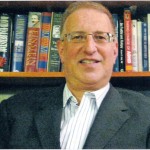 The dispute concerning chemical regulation rages on – Congress had its first hearing on the Safe Cosmetics Act. The outcome of these hearings is that the FDA has decided against the regulation of bisphenol-A in food packaging. So this leaves us with this question; what if anything will be done to update the thirty-six year old Toxic Substance Control Act. Continue reading
The dispute concerning chemical regulation rages on – Congress had its first hearing on the Safe Cosmetics Act. The outcome of these hearings is that the FDA has decided against the regulation of bisphenol-A in food packaging. So this leaves us with this question; what if anything will be done to update the thirty-six year old Toxic Substance Control Act. Continue reading
#158 – 3 THINGS LARGE CORPORATIONS CAN LEARN FROM SME’S WHEN MANAGING RISKS – ALEXEI SIDORENKO
Featured
 Couple of weeks ago I was very fortunate to host one of the roundtables during the FERMA risk seminar in Malta. I am very thankful for the opportunity because the experience of brainstorming for 45 mins with the representatives from various small and medium enterprises (SMEs) really highlighted some major problems with modern day risk management and risk managers.
Couple of weeks ago I was very fortunate to host one of the roundtables during the FERMA risk seminar in Malta. I am very thankful for the opportunity because the experience of brainstorming for 45 mins with the representatives from various small and medium enterprises (SMEs) really highlighted some major problems with modern day risk management and risk managers.
#185 – ISO 31000 CHALLENGES – GREG HUTCHINS
Featured
 ISO 31000 is going to be used more often as more ISO certified companies adopt Risk Based Thinking. However, ISO 31000 can be challenging. Why?
ISO 31000 is going to be used more often as more ISO certified companies adopt Risk Based Thinking. However, ISO 31000 can be challenging. Why?
Interestingly, the descriptive nature of the ISO 31000 standard may well be its strength, but may also be its weakness. The standard without the proper guidance of a risk practitioner maybe come discretionary and even arbitrary.
ISO 9001:2015 has Risk Based Thinking requirements. Note ISO 31000 was developed in 2009 and is not harmonized with the new annex SL standards and ISO 9001:2015. Continue reading
#157 – 7 POWERFUL SUPPLY CHAIN TRENDS YOU SHOULD NOT IGNORE – DR. MUDDASSIR AHMED
Featured
 Old industries are dying and new ones are rising. We have seen Amazon destroy the book stores, Uber transform the transport industry and Netflix make a video store a fond memory.
Old industries are dying and new ones are rising. We have seen Amazon destroy the book stores, Uber transform the transport industry and Netflix make a video store a fond memory.
Today’s technological disruption is fast and ruthless and it is transforming most of the industries. But I think we are behind supply chain if you compare the disruption happening in other functions like marketing and finance and it is time to focus on key supply chain trends. Continue reading
#157 – SUPPLY CHAIN PROCESS CONTROL AND CAPABILITY – FRED SCHENKELBERG
Featured
 If you buy more than one of an item used in your product, you will have to deal with variability. In general, the variability from part to part is minimal and expected. Occasionally, the variability is large and causes reliability problems.
If you buy more than one of an item used in your product, you will have to deal with variability. In general, the variability from part to part is minimal and expected. Occasionally, the variability is large and causes reliability problems.
According to O’Connor and Kleyner, “The main cause of production-induced unreliability, as well as rework and scrap, is the variability inherent in production processes.” O’Connor, Patrick D. T. and Andre Kleyner. 2012. Practical Reliability Engineering. Chicester: John Wiley and Sons. Web. Continue reading
#157 – INTEGRATING ISO 9001:2015 WITH ISO 17025 – GREG CARROLL
Featured
 It is not uncommon for laboratories to be saddled with maintaining both ISO 17025 and ISO 9001 certification. Although it is simpler to create and implement two QMS – and to “merge” those activities which can be merged – this approach is arduous, inefficient, and prone to mistakes.
It is not uncommon for laboratories to be saddled with maintaining both ISO 17025 and ISO 9001 certification. Although it is simpler to create and implement two QMS – and to “merge” those activities which can be merged – this approach is arduous, inefficient, and prone to mistakes.
Understanding the difference
ISO 17025 is an “Accreditation” standard which means the laboratory is authorised to issue “Certifications” i.e. they have the qualifications and capabilities to issue certificates of authentication from the tests they carry out. ISO 9001 relates to the quality and reliability of service a customer can expect from the testing company. Continue reading
#157 – HOW TO START AN ERM INITIATIVE? – INTERVIEW WITH GEARY SIKICH
Featured
 Tell us a little about yourself and your latest risk engagements?
Tell us a little about yourself and your latest risk engagements?
I have over 30 years of experience in what I will term the broad base of risk management. I have been engaged by over 100 clients nationally and internationally, representing major components of the public and prvate sectors. I have written four books on crisis management, business continuity, pandemic planning and have published over 380 articles relating to crisis, risk, business continuity, pandemic planning and contingency planning issues. Continue reading
#157 – WHY RISK MANAGEMENT IS A TOP PRIORITY? – JAMES BULLOCK
Featured
 How effective an organization manages risks can be the difference between success and failure. The effectiveness of how risk management works relies on the information feeding into it, a commitment to continuously improve deficiencies, and how well the tools are applied. Adequate time is required for risk management which is an integral part of planning. Continue reading
How effective an organization manages risks can be the difference between success and failure. The effectiveness of how risk management works relies on the information feeding into it, a commitment to continuously improve deficiencies, and how well the tools are applied. Adequate time is required for risk management which is an integral part of planning. Continue reading
#156 – ELEMENTS OF WARRANTY MANAGEMENT – FRED SCHENKELBERG
Featured
 Warranty is a part of doing business. Warranty management is not just the terms listed on the box.
Warranty is a part of doing business. Warranty management is not just the terms listed on the box.
Understanding the entire warranty process, along with your options, permits you to manage your warranty, rather than the other way around.
This is a short overview. Pieces of a warranty program occur well before the first product ships and may affect the company bottom line for years after you ship your last product. Brand promise, marketing, finance, customer service are not common areas for a reliability engineer. Yet, the impact of product failures tends to dominant warranty expenses. Therefore understanding the many elements around warranty management is essential for any reliability engineer. Continue reading
#156 – BLACK SWANS, VOLATILITY, AND FLEXIBILITY – GEARY SIKICH
Featured
 We live in a volatile world full of uncertainty. It’s all about targeted flexibility, the art of being prepared, rather than preparing for specific events. Being able to respond rather than being able to forecast, facilitates the ability to respond to the consequences of an event. Continue reading
We live in a volatile world full of uncertainty. It’s all about targeted flexibility, the art of being prepared, rather than preparing for specific events. Being able to respond rather than being able to forecast, facilitates the ability to respond to the consequences of an event. Continue reading
#156 – HOW TO IDENTIFY A BULLY AT WORK? – DR. TRUDY
Featured
 Bullies come in different forms, shapes and ages. Nevertheless, people tend to have typical images of bullies, usually little boys in elementary schools and playgrounds. Or an adult bully demonstrates violent and threatening behaviors or emotions. Those typical bully images were forged in the editing room of anchors and journalists through the lens of most of the popular media. Continue reading
Bullies come in different forms, shapes and ages. Nevertheless, people tend to have typical images of bullies, usually little boys in elementary schools and playgrounds. Or an adult bully demonstrates violent and threatening behaviors or emotions. Those typical bully images were forged in the editing room of anchors and journalists through the lens of most of the popular media. Continue reading
#156 – RANSOMWARE IN HEALTHCARE ORGANIZATIONS: THE HUMAN FACTOR – JEFF HARRIS
Featured
 Bob is a hockey fan. His Facebook timeline is filled with posts about his favorite team and his search for tickets. Bob also works in the department of Health Information Services for a major hospital in a large city. One day Bob receives an email at work informing him that he has won two tickets to the upcoming semi-finals in which his beloved team will be top seeded. Finally entering in every contest for free tickets that popped up on social media had paid off! He eagerly clicks on the link but nothing seems to happen. The next week the hospital’s network is down and a shadowy group is demanding thousands of dollars to unlock critical records. Continue reading
Bob is a hockey fan. His Facebook timeline is filled with posts about his favorite team and his search for tickets. Bob also works in the department of Health Information Services for a major hospital in a large city. One day Bob receives an email at work informing him that he has won two tickets to the upcoming semi-finals in which his beloved team will be top seeded. Finally entering in every contest for free tickets that popped up on social media had paid off! He eagerly clicks on the link but nothing seems to happen. The next week the hospital’s network is down and a shadowy group is demanding thousands of dollars to unlock critical records. Continue reading
#156 – ISO 14001 CHANGES – MILT DENTCH
Featured
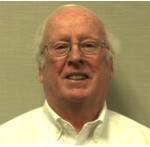 What are the key changes in ISO 14001:2015?
What are the key changes in ISO 14001:2015?
Organizations currently certified to ISO14001: 2004 will need to address the new (or expanded) requirements of ISO14001: 2015 with the following general groupings:
- Understanding the context of the organization and expectations of interested parties
- The integration of the environmental management system (EMS) requirements into the organization’s business processes
- Actions to address risks and opportunities
- Expanded top management commitment
- Expanded definition of Operational Controls
#155 – THREE FATAL MISTAKES MOST RISK CONSULTANTS MAKE – ALEXEI SIDORENKO
Featured
 Warning: this article may upset some conservative risk managers
Warning: this article may upset some conservative risk managers
Risk management in modern non-financial companies is very different compared to say 5 years ago. The level of risk management maturity, for lack of a better word, has grown significantly.
As more and more companies across the globe are looking to implement robust risk management, the demand for risk management consultants is also growing. Unfortunately, not all risk consultants are able to generate long term value for their clients, here are three reasons why: Continue reading
#155 – BLACK SWANS OR JUST WISHFUL THINKING AND MISINTERPRETATION – GEARY SIKICH
Featured
There seem to be a lot of sightings of “Black Swans” lately. Should we be concerned or are we wishfully thinking, caught up in media hype; or are we misinterpreting what a “Black Swan” event really is? The term “Black Swan” has become a popular buzzword for many; including, contingency planners, risk managers and consultants. However, are there really that many occurrences that qualify to meet the requirement of being termed a “Black Swan” or are we just caught up in the popularity of the moment? Continue reading
#155 – JOHN AYERS – LIFE LESSONS EARNED™ – GREG HUTCHINS
Featured
 John Ayers has been writing for CERM Risk Insights for two years. His pieces are among the most popular. In this piece, he provides his perspective on life lessons earn. Earning a living. Having fun. Making a difference.
John Ayers has been writing for CERM Risk Insights for two years. His pieces are among the most popular. In this piece, he provides his perspective on life lessons earn. Earning a living. Having fun. Making a difference.
Greg Hutchins (GH)
Why did you pick engineering for a career?
John Ayers (JA)
When I was a sophomore in high school, a friend of mine told me his father was an engineer. I had not heard the term before. After my friend explained it to me, I began to think about it and decided to pursue it in college. Continue reading
#155 – EMOTIONAL INTELLIGENCE – ELIZABETH LIONS
Featured
 Recently a client called me and wanted me to do a speaking engagement for a major insurance company and the topic of emotional intelligence came up. When I stated that my presentation is based in facts and science, the client didn’t understand. I explained that it would take a great deal of pain for an executive to take input and would only do so if changing would create more of what they wanted in terms of career. For example, a Vice President that suddenly loses a 175k base salary and finds himself or herself in job search, would have an impetus to change. Continue reading
Recently a client called me and wanted me to do a speaking engagement for a major insurance company and the topic of emotional intelligence came up. When I stated that my presentation is based in facts and science, the client didn’t understand. I explained that it would take a great deal of pain for an executive to take input and would only do so if changing would create more of what they wanted in terms of career. For example, a Vice President that suddenly loses a 175k base salary and finds himself or herself in job search, would have an impetus to change. Continue reading
#155 – ADVICE TO PRACTICALLY EVERYONE): LEARN TO COOK N’ CODE – KIRBY URNER
Featured
 Programming or coding is becoming the 4th basic skill for everyone following writing, arithmetic, and reading. This is global statement.
Programming or coding is becoming the 4th basic skill for everyone following writing, arithmetic, and reading. This is global statement.
Coding for kids is a global industry that is on the verge of disrupting global education. And is as important as learning to cook. Continue reading
#154 – ROBOTICS, TRADE, JOBS, AND WHOSE RESPONSIBILITY – DR. MICHAEL HOPKINS
Featured
 The question of technology replacing jobs has a long history. Perhaps the most famous was the notorious so-called half-wit Ned Ludd who led a movement to destroy cotton making machines in 17 th Century Britain. That incident led to a movement called Luddites. They were much criticised as being in the way of progress. Yet Luddites appear often in contemporary society – most notably Donald Trump during his 2016 USA Presidential bid. The consequence of Trump Luddism, echoed by Bernie Sanders on the left of the bid, has also led to a huge attack on trade and implicitly technological progress itself. Continue reading
The question of technology replacing jobs has a long history. Perhaps the most famous was the notorious so-called half-wit Ned Ludd who led a movement to destroy cotton making machines in 17 th Century Britain. That incident led to a movement called Luddites. They were much criticised as being in the way of progress. Yet Luddites appear often in contemporary society – most notably Donald Trump during his 2016 USA Presidential bid. The consequence of Trump Luddism, echoed by Bernie Sanders on the left of the bid, has also led to a huge attack on trade and implicitly technological progress itself. Continue reading
#154 – BLACK SWANS, GREY SWANS, WHITE SWANS … – GEARY SIKICH
Featured
 We hear a lot about things that are being called “Black Swans” today thanks to Nassim Taleb and his extremely successful book, “The Black Swan: The Impact of the Highly Improbable,” now in its second edition. I have written several articles centering on the “Black Swan” phenomenon; defending, clarifying and analyzing the nature of “Black Swan” events. And, I am finding that wildly improbable events are becoming perfectly routine events. Continue reading
We hear a lot about things that are being called “Black Swans” today thanks to Nassim Taleb and his extremely successful book, “The Black Swan: The Impact of the Highly Improbable,” now in its second edition. I have written several articles centering on the “Black Swan” phenomenon; defending, clarifying and analyzing the nature of “Black Swan” events. And, I am finding that wildly improbable events are becoming perfectly routine events. Continue reading
#154 – SAFETY AND GEMBA WALK – JAMES KLINE PH.D.
Featured
The United State Occupational Safety and Health Administration (OSHA) estimate that $60 billion is lost annually from workplace injuries and illness. Using their $afety Pays Program calculator, twenty Carpal Tunnel Syndrome injuries will cost a company $1,260,000 in direct and indirect costs. A single back injury would cost $101,933 total. This makes safety a prime target for risk analysis. Continue reading
#154 – THE ENVIRONMENTAL TEST MANUAL – FRED SCHENKELBERG
Featured
 Let’s say you run across a lightweight, inexpensive, easy-to-manufacture metal that you are considering for a new bike frame. Beyond the functional considerations of strength, size, and finish options what else do you consider?
Let’s say you run across a lightweight, inexpensive, easy-to-manufacture metal that you are considering for a new bike frame. Beyond the functional considerations of strength, size, and finish options what else do you consider?
Is it durable? If it fails, how does it fail (e.g., a shattering of a bicycle frame would not be good). You may also consider how the bicycle will be used and stored. What stress will the frame experience over its lifetime? Continue reading
#154 – COMMUNICATE YOUR STRATEGY LIKE A NINJA – SHAJI BHASKARAN
Featured
 How often have you faced issues in effectively communicating a well formulated strategy to the right stakeholders? Understanding organizations’ strategic plan by all who are involved in the execution is as important as optimally creating it. A well-orchestrated process must be in place to facilitate better understanding of the strategy and the specific roles to be played by different teams. Unless the goals are understood clearly, chances are that you end up having a big gap between intended strategy and the realized strategy. Continue reading
How often have you faced issues in effectively communicating a well formulated strategy to the right stakeholders? Understanding organizations’ strategic plan by all who are involved in the execution is as important as optimally creating it. A well-orchestrated process must be in place to facilitate better understanding of the strategy and the specific roles to be played by different teams. Unless the goals are understood clearly, chances are that you end up having a big gap between intended strategy and the realized strategy. Continue reading
#153 – MILT DENTCH – ISO 9001:2015 IMPLEMENTATION HANDBOOK INTERVIEW
Featured
 Tell us a little about your self?
Tell us a little about your self?
I have worked in manufacturing quality for over 40 years in a wide variety of industries, including pulp and paper, chemical, plastic and rubber processing, battery manufacturing, converting, electronics assembly and machine building. I was employed by the Polaroid Corporation for 27 years as a process engineer; manufacturing manager and technical director. My last assignment at Polaroid was Director of Materials for World Wide Instant Film Manufacturing. In this role I was responsible for supplier quality. Additionally, I was Plant Manager for the Custom Coating Plant of the Furon Company (now Saint Gobain) for several years.
#153 – HOW THE GRINCH IS STEALING OUR HEALTHCARE RECORDS – JEFF HARRIS
Featured
 As I mentioned in the previous article, Healthcare Privacy, Farrah Fawcett and Blockchain, a blockchain is a distributed database that acts as a ledger for transactions. It is best known as the technology behind Bitcoin, a type of digital currency that is both easily accessible and very secure. Blockchain technology allows users to transfer bitcoin anonymously and securely while still insuring that the data itself is trustworthy. Continue reading
As I mentioned in the previous article, Healthcare Privacy, Farrah Fawcett and Blockchain, a blockchain is a distributed database that acts as a ledger for transactions. It is best known as the technology behind Bitcoin, a type of digital currency that is both easily accessible and very secure. Blockchain technology allows users to transfer bitcoin anonymously and securely while still insuring that the data itself is trustworthy. Continue reading
#153 – PROJECT SPECIFIC RELIABILITY PLANS – FRED SCHENKELBERG
Featured
 A project-specific reliability plan is a guide or roadmap for intended action. It is also a collection of specific tasks and milestones, enhanced with rationale to allow the entire team to fully understand its role in accomplishing the reliability objectives.
A project-specific reliability plan is a guide or roadmap for intended action. It is also a collection of specific tasks and milestones, enhanced with rationale to allow the entire team to fully understand its role in accomplishing the reliability objectives.
The plan is a way to achieve the desired business objectives. This means that the product must be reliable enough to meet customer expectations, minimize warranty expenses, and garner market acceptance. The plan is just a plan. It is the accomplishment of the tasks, the decision that improve the design, the signals monitored that stabilize the supply chain and assembly process that all make the difference. Continue reading
#153 – THE COST OF QUALITY ACCORDING TO THE EXPERTS – MURRAY GONZALEZ
Featured
 Philip “Phil” Crosby, Dr. W. Edwards Deming, and Joseph Juran, all made paramount and lasting contributions to the field of quality management. Each was truly phenomenal in his own right. Thanks to the knowledge shared by consultants W. Edward Deming and Joseph M. Juran, war-torn Japan improved their products and their processes. The Japanese became so proficient at quality management, their success was a catalyst for Western companies to adopt their philosophy and practices. Continue reading
Philip “Phil” Crosby, Dr. W. Edwards Deming, and Joseph Juran, all made paramount and lasting contributions to the field of quality management. Each was truly phenomenal in his own right. Thanks to the knowledge shared by consultants W. Edward Deming and Joseph M. Juran, war-torn Japan improved their products and their processes. The Japanese became so proficient at quality management, their success was a catalyst for Western companies to adopt their philosophy and practices. Continue reading
#153 – REPUTATION AND RISK – JIM KLINE PH.D.
Featured
 INTRODUCTION
INTRODUCTION
Increasingly organizations, both public and private, are recognizing that what citizens, customers, shareholders, legislators, and the financial markets think about their integrity or competency has a significant impact. In a 2014 Global Survey on Reputation Risk a majority of the companies were concerned about situations beyond their control that could affect the reputation of their companies. Continue reading
#152 – ARE WE MISSING THE POINT OF EXERCISING OUR PLANS? – GEARY SIKICH
Featured
Imagine that your plan has been implemented as it was designed. You and your organization carried out the plan following every detail that was contained in the planning documents. Your plan has failed. That is all you know. Your plan failed. But, you think, “We exercised the plan!” Yes, indeed you did exercise your plan. And now you are being taken to task because the plan failed and this reflects on you and your planning team and on your customers – those who provided input and those who were supposed to execute the plan. Continue reading
#152 – THE DERATING AND SAFETY MARGIN MANUAL – FRED SCHENKELBERG
Featured
 Do you have derating & safety margin manual in your organization? Is it used regularly? If not, your organization’s products are likely not as reliable as they should be. You are shipping products that are not as robust nor as reliable as your customers deserve.
Do you have derating & safety margin manual in your organization? Is it used regularly? If not, your organization’s products are likely not as reliable as they should be. You are shipping products that are not as robust nor as reliable as your customers deserve.
Derating and safety factors provide a means to select components or create design features that have sufficient margin to accommodate variation in use and strength over time. So why are these tools routinely ignored or given only fleeting attention? Continue reading
#152 – CAN RISK MANAGEMENT EVEN BE EFFECTIVE – ALEXEY SIDORENKO
Featured
 Lately, everyone, from the government agencies to regulators to corporate board members, seem to be talking about the need for better, more effective risk management. The challenging part is that, despite the guidance provided in ISO 31000:2009, the concept of risk management effectiveness still remains vague. This article attempts to summarize the basic components of effective risk management which should help risk managers to respond to the challenges set by regulators and shareholders. Continue reading
Lately, everyone, from the government agencies to regulators to corporate board members, seem to be talking about the need for better, more effective risk management. The challenging part is that, despite the guidance provided in ISO 31000:2009, the concept of risk management effectiveness still remains vague. This article attempts to summarize the basic components of effective risk management which should help risk managers to respond to the challenges set by regulators and shareholders. Continue reading
#152 – WHEN YOUR ‘A PLAYER’ QUITS THE TEAM – ELIZABETH LIONS
Featured
 Take a moment and really look at your team. My sense is that you know exactly who your A player is, but have you bothered to check in with them and ensure they are happy? It’s easy to work day after day and rely on that one person that can hit all the deliverables and never really pay attention. Suddenly, (or at least it seems sudden), they give notice and you are stuck wondering how you’ll ever go about replacing them. Continue reading
Take a moment and really look at your team. My sense is that you know exactly who your A player is, but have you bothered to check in with them and ensure they are happy? It’s easy to work day after day and rely on that one person that can hit all the deliverables and never really pay attention. Suddenly, (or at least it seems sudden), they give notice and you are stuck wondering how you’ll ever go about replacing them. Continue reading
#152 – ON FARRAH FAWCETT, HEALTHCARE PRIVACY AND BLOCKCHAIN – JEFF HARRIS
Featured
 Farrah Fawcett, actress and model, was diagnosed with cancer in 2006. She battled the disease until her death in 2009, the details of which were widely publicized in tabloid magazines often before she had a chance to tell her friends and family. In an interview in 2009, given just before she died, she is quoted as saying, “It seems that there are areas that should be off limits.” Of course she was a celebrity, the average person has nothing to fear, right? Continue reading
Farrah Fawcett, actress and model, was diagnosed with cancer in 2006. She battled the disease until her death in 2009, the details of which were widely publicized in tabloid magazines often before she had a chance to tell her friends and family. In an interview in 2009, given just before she died, she is quoted as saying, “It seems that there are areas that should be off limits.” Of course she was a celebrity, the average person has nothing to fear, right? Continue reading
#151 – RISK MANAGEMENT FOR IMPROVED RELATIONSHIPS – JOHN AYERS
Featured
 Risk management methodologies are utilized today in many industries and companies successfully to minimize risk impact to the company and projects. In light of this, my question is: can risk management be applied effectively to new relationships to maximize the probability of a successful relationship? I explore this idea below. Please keep in mind that I have presented a simple picture of risk mitigation to get my points made. Continue reading
Risk management methodologies are utilized today in many industries and companies successfully to minimize risk impact to the company and projects. In light of this, my question is: can risk management be applied effectively to new relationships to maximize the probability of a successful relationship? I explore this idea below. Please keep in mind that I have presented a simple picture of risk mitigation to get my points made. Continue reading
#151 – CAN YOU CALCULATE THE PROBABILITY OF UNCERTAINTY? – GEARY SIKICH
Featured
 Many aspects of risk management are deeply rooted in mathematical formulae for determining probability. This heavy dependence on mathematics to determine probability of risk realization may create “false positives” regarding a risk that can be either positive or negative. There is also a limitation on how much data can be gathered and assessed in respect to the development of the probability equation regarding the risk being assessed. Continue reading
Many aspects of risk management are deeply rooted in mathematical formulae for determining probability. This heavy dependence on mathematics to determine probability of risk realization may create “false positives” regarding a risk that can be either positive or negative. There is also a limitation on how much data can be gathered and assessed in respect to the development of the probability equation regarding the risk being assessed. Continue reading
#151 – PRODUCT RELIABILITY DESIGN GUIDELINES: THE DESIGN FOR RELIABILITY MANUAL – FRED SCHENKELBERG
Featured
 One way to capture and disseminate reliability engineering related information and advice is through internal documents. This of course only works if they are both useful and used.
One way to capture and disseminate reliability engineering related information and advice is through internal documents. This of course only works if they are both useful and used.
The focus should be on gathering and providing essential and meaningful information that will improve the reliability of your product. Another element that makes these design guidelines valuable is if they save time. Engineers love to save time. Continue reading
#151 – OMB A – 123: HOW DID WE GET HERE AND WHAT DOES IT MEAN? – JAMES KLINE PH.D.
Featured
 INTRODUCTION
INTRODUCTION
In a recent e-mail in which he noted that of U.S. Office of Management and Budget (OMB) is issuing its update to Circular A-123 on July 15, 2016, Greg Hutchins, co-founder of the CERM Academy, commented “this is really big. The circular is entitle “Management’s Responsibility for Enterprise Risk Management (ERM)”. It requires all federal agencies to adopt ERM. ERM is a framework by which federal agencies can identify and mitigate risk. I agree with Greg, this will be big. Thus, it is worth stepping back and seeing some of the factors which lead to the adoption of ERM. Continue reading
#151- LEADERSHIP TURNOVER RISK – ERIC SCHULSE
Featured
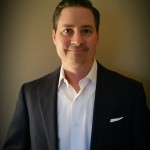 “Elevated turnover among hospital CEOs seems to be a feature of the current healthcare environment,” says Deborah J. Bowen, president and CEO of the American College of Healthcare Executives.
“Elevated turnover among hospital CEOs seems to be a feature of the current healthcare environment,” says Deborah J. Bowen, president and CEO of the American College of Healthcare Executives.
Leadership turnover is a known risk; thus, you should have it in your risk management program. Continue reading
#150 – SOCIAL RESPONSIBILITY IS THE NEW BLACK IN RISK – GREG CARROLL
Featured
 Even more than reputational risk or cyber risk, social unrest is lining up to be a greater disrupter than any other issue. From Brexit to ISIS to race relations, civil unrest is shaping up to have a profound impact on business. For the management of uncertainty on business objectives to be truly effective then risk needs to also include all items that disrupt the marketplace. As such, Social Responsibility is the primary strategy to ensure business resilience. Continue reading
Even more than reputational risk or cyber risk, social unrest is lining up to be a greater disrupter than any other issue. From Brexit to ISIS to race relations, civil unrest is shaping up to have a profound impact on business. For the management of uncertainty on business objectives to be truly effective then risk needs to also include all items that disrupt the marketplace. As such, Social Responsibility is the primary strategy to ensure business resilience. Continue reading
#150 – ERM PLAYBOOK – FOR THE US FEDERAL GOVERNMENT – GREG HUTCHINS
Featured
 We’ve been talking about ERM for the US Federal Government for a while. While, the US federal government has been implementing risk management in many departments, operational ERM to all Federal agencies is a game changer.
We’ve been talking about ERM for the US Federal Government for a while. While, the US federal government has been implementing risk management in many departments, operational ERM to all Federal agencies is a game changer.
The Executive Office issued Circular A 123 last month with the specific requirement that:
“The Administration has emphasized the importance of having appropriate risk management processes and systems to identify challenges early, to bring them to the attention of Agency leadership, and to develop solutions. … Over the years, government operations have changed dramatically, becoming increasingly complex and driven by changes in technology. Continue reading
#150 – FUTURE PROOFING – THE PROCESS OF ACTIVE ANALYSIS – GEARY SIKICH
Featured
The ability to effectively respond to and manage the consequences of an event in a timely manner is essential to ensure an organization’s survivability in today’s fast paced business environment. With the emergence of new threats, such as cyber-terrorism and bio-terrorism; and the increasing exposure of companies to traditional threats such as, fraud, systems failure, fire, explosions, spills, natural disasters, etc. an “integrated” approach to Business Continuity Planning is essential. Continue reading
#150 – DO YOUR KPI’S ADVERSELY IMPACT RELIABILITY – FRED SCHENKELBERG
Featured
 Key performance indicators (KPIs) are measurable values related to essential business objectives. A KPI provides a means to monitor the performance of a specific function.
Key performance indicators (KPIs) are measurable values related to essential business objectives. A KPI provides a means to monitor the performance of a specific function.
In larger organizations, with sales & marketing, research & development, operations, supply chain, and other teams working to bring products to market, each department has a specific role. For example, the sales team engages with potential customers to assist with the customer’s purchase decision. The organization and the sales team may want to focus on sales growth or average profit margin as KPIs. Continue reading
#150 – CSR THE NEW WAY … WAS I WRONG? – DR. MICHAEL HOPKINS
Featured
 … in Europe and, as we can see, in the US too. Entirely false promises are being made, but this is a fantasy that comforts many. It is a fantasy of withdrawal from a globalised world, stopping the free movement of people and labour. The real challenge for anyone vaguely liberal/left is to counter this, not with some old-school internationalist vision, but with something that is both local and modern, that accepts there is anxiety instead of telling people they are simply wrong and stupid to feel it, or that it is some kind of false consciousness.
… in Europe and, as we can see, in the US too. Entirely false promises are being made, but this is a fantasy that comforts many. It is a fantasy of withdrawal from a globalised world, stopping the free movement of people and labour. The real challenge for anyone vaguely liberal/left is to counter this, not with some old-school internationalist vision, but with something that is both local and modern, that accepts there is anxiety instead of telling people they are simply wrong and stupid to feel it, or that it is some kind of false consciousness.
Continue reading
#149 – MINIMIZING CAREER PATH RISK – JOHN AYERS
Featured
 Some people say take what you love in college. Problem is, not too many high school seniors know what they love. Others say college should be an intellectual journey. Problem is many degrees will not prepare you for the real world in terms of making a good living. I believe college is to prepare you for a career which can support you and a family down the road. If important, intellectual studies can take place outside of work using the internet. Continue reading
Some people say take what you love in college. Problem is, not too many high school seniors know what they love. Others say college should be an intellectual journey. Problem is many degrees will not prepare you for the real world in terms of making a good living. I believe college is to prepare you for a career which can support you and a family down the road. If important, intellectual studies can take place outside of work using the internet. Continue reading
#149 – WORKING IT (FREE REVIEW BOOK) – GREG HUTCHINS
Featured
 This book is my story and in many ways may become the story of your work, career, and job. So, pay heed. Understand the conventional rules and challenge/hack the rules described in Working It: The Rules Have Changed.
This book is my story and in many ways may become the story of your work, career, and job. So, pay heed. Understand the conventional rules and challenge/hack the rules described in Working It: The Rules Have Changed.
Freemiums:
1. At the end of this article, we share how you can get a free review copy of the 200 page book.
2. Visit WorkingIt.com for additional fun and insights on work. Continue reading
#149 – THE BIG SHORT: COULD IT HAPPEN AGAIN? – ANNETTE DAVISON
Featured
 Risk as a term, is often used or perceived as being synonymous with defence. Being defensive is not a bad thing – but being solely defensive, means your organisation may be missing opportunities. Events of recent times, global financial crisis (GFC) and others, have shown that the historical approaches to governance oversight have not worked. Key points arising from the inquiry into the GFC included:
Risk as a term, is often used or perceived as being synonymous with defence. Being defensive is not a bad thing – but being solely defensive, means your organisation may be missing opportunities. Events of recent times, global financial crisis (GFC) and others, have shown that the historical approaches to governance oversight have not worked. Key points arising from the inquiry into the GFC included:
- Widespread failure in regulation
- Breakdowns in corporate governance
- Policymakers lacked a full understanding of the system they oversaw
- Systemic breaches of accountability and ethics
#149 – INCORPORATING RELIABILITY INTO DESIGN REVIEWS – FRED SCHENKELBERG
Featured
 Reliability Input into Design Reviews
Reliability Input into Design Reviews
Consider the following scenario: You are a reliability engineer working for a large corporation that plans to launch a new product. On occasion, you and the team sit down to review the design. The idea is to check the design for any issues with the combined wisdom of all the players involved. Or, perhaps, the review serves as just a status update for the entire team, providing a focus on the most important issues and action items. Continue reading
#149 – SOFTWARE WASTAGE: TIME SPENT, CANCELED PROJECTS, CYBER ATTACKS, AND LITIGATION FOR POOR QUALITY – CAPERS JONES
Featured
 Software demographics and software work patterns show interesting changes over the past few decades. A study in 1990 noted 116 software occupations but only 5 involving quality and none involving risks or cyber-attacks. An updated study in 2016 noted 205 total software occupations of which 32 were involved with risks, cyber-attacks, and quality. This is due to the huge increase in numbers and types of software cyber-attacks. Continue reading
Software demographics and software work patterns show interesting changes over the past few decades. A study in 1990 noted 116 software occupations but only 5 involving quality and none involving risks or cyber-attacks. An updated study in 2016 noted 205 total software occupations of which 32 were involved with risks, cyber-attacks, and quality. This is due to the huge increase in numbers and types of software cyber-attacks. Continue reading
#148 – UNINTENDED CONSEQUENCES OF RISK REPORTING – GEARY SIKICH AND JOOP REMME
Featured
In this article we posit three questions. The first question is: “Is it a social responsibility of companies that they undertake a comprehensive risk assessment?” The second question: “Does the notion of conscience and its application to the generation and use of risk information and information in general, create an obligation for the organization to disclose
the results of the comprehensive risk assessment?” The third question “How do the people  in the organization communicate the information from the comprehensive risk assessment to stakeholders and yet preserve security and protect the organization?” Continue reading
in the organization communicate the information from the comprehensive risk assessment to stakeholders and yet preserve security and protect the organization?” Continue reading
#148 – US GOVERNMENT ERM REQUIREMENT FINALIZED – GREG HUTCHINS
Featured
 We’ve been discussing how ISO 9001:2015 has adopted Risk Based Thinking that will impact 1.2 million companies. ISO 14001:2015 will impact 400,000 companies. Now, government agencies are adopting and putting into statute risk management.
We’ve been discussing how ISO 9001:2015 has adopted Risk Based Thinking that will impact 1.2 million companies. ISO 14001:2015 will impact 400,000 companies. Now, government agencies are adopting and putting into statute risk management.
We’ve been talking up the fact the US government is requiring Enterprise Risk Management (ERM), specifically Office of Management and Budget Circular OMB A 123, of all US departments. This is a game changer for federal agencies. In this article, we’ll look at some of the significant changes in ERM for Federal agencies. Continue reading
#148 – HOW TO MAKE AUDIT MANAGEMENT EFFECTIVE – GREG CARROLL
Featured
 Effectiveness is the holy grail of Compliance Management. Whether regulatory or ERM, ensuring business is conducted as intended is the base requirement to optimising your organization’s performance.
Effectiveness is the holy grail of Compliance Management. Whether regulatory or ERM, ensuring business is conducted as intended is the base requirement to optimising your organization’s performance.
Let’s face it, business spends its money where it will deliver the best return, i.e. to shareholders, so the key to increasing the compliance budget is to measure compliance as a factor of performance not as a safety net. Continue reading
#148 – 3 THINGS YOU HAVE TO KNOW ABOUT ISO 9001:2015 RISK’S DEFINITION BEFORE MOVING ON – MOHAMMAD ELSHAHAT
Featured
 Why do you think most executives and quality practitioners are focusing on the strategies, techniques, and tools when it comes to Risk Based Thinking?
Why do you think most executives and quality practitioners are focusing on the strategies, techniques, and tools when it comes to Risk Based Thinking?
I bet you’ve heard or even read these questions before; What are the best tools to address risks? Is it SWOT or FMEA will be more helpful? How can I implement this risk-based thinking? Continue reading
#148 – USING YOUR ACCREDITATION TO MAINTAIN HIPAA COMPLIANCE – TED SCHMIDT
Featured
 With the recent changes to the enforcement of HIPAA and HITECH (Health Information Technology for Economic and Clinical Health Act), “covered entities and their business associates” (aka hospitals and their providers) will now be subject to fines/penalties for noncompliance. Since HIPAA was enacted in 2005, the consensus is that there has been little enforcement of these requirements. Continue reading
With the recent changes to the enforcement of HIPAA and HITECH (Health Information Technology for Economic and Clinical Health Act), “covered entities and their business associates” (aka hospitals and their providers) will now be subject to fines/penalties for noncompliance. Since HIPAA was enacted in 2005, the consensus is that there has been little enforcement of these requirements. Continue reading
#147 – THE NINE CIRCLES OF PLANNING HELL – GEARY SIKICH
Featured
 The Nine Circles of Planning Hell (Adapted from Dante’s Inferno)
The Nine Circles of Planning Hell (Adapted from Dante’s Inferno)
Introduction
Inferno, the first part of Dante’s Divine Comedy that inspired the latest Dan Brown’s bestseller of the same title describes the poet’s vision of Hell. The story begins with the narrator (who is the poet himself) being lost in a dark wood where he is attacked by three beasts which he cannot escape. He is rescued by the Roman poet Virgil who is sent by Beatrice (Dante’s ideal woman). Together, they begin the journey into the underworld or the Nine Circles of Hell. Continue reading
#147 – DONATING TO CAUSES YOU CARE ABOUT IS EASY WITH YOURCAUSE – KELLY EISENHARDT
Featured
 More and more companies are offering employee engagement programs within their benefits package. It is a winning benefit for the employee, the company, the nonprofits and those the nonprofits serve. While there are multiple platform providers that support employee engagement programs there is only one that has always ensured that no portion of the donation is deducted to cover the platform providers’ operational expense…YourCause. Continue reading
More and more companies are offering employee engagement programs within their benefits package. It is a winning benefit for the employee, the company, the nonprofits and those the nonprofits serve. While there are multiple platform providers that support employee engagement programs there is only one that has always ensured that no portion of the donation is deducted to cover the platform providers’ operational expense…YourCause. Continue reading
#147 – ICT FASHION VICTIMHOOD – HOWARD WEINER
Featured
 When I think of the term ‘Fashion Victim’ these two shots from Brazil (one of my favorite movies of all time) come to mind:
When I think of the term ‘Fashion Victim’ these two shots from Brazil (one of my favorite movies of all time) come to mind:
There seems to be no length to which some of us will not go to prove that we are on top of the latest and greatest trends. Katherine Helmond’s character in the film, above, is a case in point. Over the course of the film she sports ridiculous clothing and submits herself to intrusive, painful and ultimately destructive medical procedures, all for the sake of fashion. By the end of the film she has virtually destroyed herself. Continue reading
#147 – ACHIEVING PROCESS STABILITY – FRED SCHENKELBERG
Featured
 What Is Process Stability?
What Is Process Stability?
Everything varies. Your vendors provide components with a range of values. Your production process varies, too. Creating, monitoring, and maintaining process stability enhances your product reliability performance.
When I started my professional life as a manufacturing engineer, a senior engineer told me that we take a product design and can only make it worse. He said that, if we could make every unit exactly according to the nominal values of the drawing, every unit would work well. Continue reading
#147 – ERM STATUS UPDATE WITH FEDS – GREG HUTCHINS
Featured
US Office of Management and Budget is releasing Enterprise Risk Management update to Circular A – 123 on July 15, 2016.
The new policy document is known as ‘Management’s Responsibility for Enterprise Risk Management and Internal Controls.’ The policy document requires an enterprise risk management program with operational risk controls. The policy document is a game changer. Continue reading
#146 – THE REAL REASONS WHY WOMEN EARN LESS THAN MEN – ELIZABETH LIONS
Featured
 Statistically, women earn less than men, but when you look at the same job and the same skill set, the wage disparity is lower than you’d think, according to Pay Scale.
Statistically, women earn less than men, but when you look at the same job and the same skill set, the wage disparity is lower than you’d think, according to Pay Scale.
Often the wage difference between men and women has little to do with skill set. Many times it all boils down to how a person perceives themselves and their self-worth. Confidence plays a big factor. Having the guts to ask for more money often equates to earning more. Continue reading
#146 – SUPPLY CHAIN RISK MANAGEMENT IS THE HOT NEW CAREER – GREG HUTCHINS
Featured
 The idea of supply chain risk management has been around for about 10 years. It is only in the last 5 years, that it has become popular. We are still at the early stage of supply chain risk management adoption and deployment.
The idea of supply chain risk management has been around for about 10 years. It is only in the last 5 years, that it has become popular. We are still at the early stage of supply chain risk management adoption and deployment.
In terms of total dollar amount, external suppliers provide a significant portion of a manufacturer’s product. For U.S. firms, 50% to 80% or more of the final price of a product can be the cost of purchased goods. In Japan, it can be even higher.
For these reasons, any supply disruption can kill a supply chain. As a result, supply chain risk management is now critical to a company’s competitiveness.
Continue reading
#146 – IT IS ALL ABOUT SURVIVABILITY – GEARY SIKICH
Featured
 If you want senior management to pay attention give them something that challenges their focus – and understand that their focus is not on how many computers you have or RTO, RPO stats. It is on business survivability – will we be in business tomorrow given the issues that we face today.
If you want senior management to pay attention give them something that challenges their focus – and understand that their focus is not on how many computers you have or RTO, RPO stats. It is on business survivability – will we be in business tomorrow given the issues that we face today.
What is more important to your organization’s continuity of operations – how many computers you have or where your competition will be coming from in the next five years? Continue reading
#146 – BASELINING SUSTAINABILITY PERFORMANCE WITH ESG, SCIENCE, & TECHNOLOGY – KELLY EISENHARDT
Featured
 By leveraging their comprehensive ESG database, Thomson Reuters helps companies’ baseline sustainability performance and stay ahead of emerging global sustainability trends. TR recently released their latest Greenhouse Gas Emissions report highlighting “sustainable growth,” in addition to reducing GHG emissions and alignment with the U.N. Guidelines. Continue reading
By leveraging their comprehensive ESG database, Thomson Reuters helps companies’ baseline sustainability performance and stay ahead of emerging global sustainability trends. TR recently released their latest Greenhouse Gas Emissions report highlighting “sustainable growth,” in addition to reducing GHG emissions and alignment with the U.N. Guidelines. Continue reading
#146 – HOW SAMPLE SIZE AFFECTS DECISION MAKING – FRED SCHENKELBERG
Featured
 Sample Size Determination
Sample Size Determination
When planning for quality or reliability testing, an often posed question is: How many samples do you need? The trite answer is: Just as many samples as you need and not one more. A better answer is: Enough samples to make the right decision. The realistic expectation is : You will not have enough samples. Continue reading
#146 – RISK AHEAD OR RISK BEHIND – ERIC SCHULZE
Featured
 Only after the ship has sunk does everyone know how it might have been saved. Healthcare is changing at an incredible pace. Identifying what is relevant and prioritizing the changes that will impact a hospital is an enormous challenge for a hospital’s leadership. Unfortunately, many hospitals, especially rural hospitals, are not able to mitigate the problems successfully. Continue reading
Only after the ship has sunk does everyone know how it might have been saved. Healthcare is changing at an incredible pace. Identifying what is relevant and prioritizing the changes that will impact a hospital is an enormous challenge for a hospital’s leadership. Unfortunately, many hospitals, especially rural hospitals, are not able to mitigate the problems successfully. Continue reading
#145 – ALTERED STATES: RISK PERCEPTION AFTER THE EVENT – GEARY SIKICH
Featured
 Heightened Awareness or Reactive, Backwards Looking?
Heightened Awareness or Reactive, Backwards Looking?
From financial crises to energy catastrophes to earthquakes and threats of terrorism, we hear a lot about events that challenge our ability to identify and manage risk. Unfortunately some of the things that emerge from many of these events are reactive regulatory rules and requirements. Continue reading
#145 – GATHERING DATA WITH NEVADA CHARTS – FRED SCHENKELBERG
Featured
 Gathering Field Failure Data
Gathering Field Failure Data
A common and rather poor technique to gather field data is to count the number of returns by week or month. This can provide a graph showing the number of returns over time. However, it hides useful information you need to understand your field failures.
Let’s take a look at a way to gather the same field failure data and retain the critical information necessary for time-to-failure analysis. Continue reading
#145 – DEMYSTIFYING RISK – LIFE VS. DEATH – GREG CARROLL
Featured
 Risk management is suffering from too much consultant-speak – mystifying what is a standard business practice. When inducting new staff in the concepts of risk management, I use the most obvious analogy which clarifies the issues simply: that of our own mortality. Continue reading
Risk management is suffering from too much consultant-speak – mystifying what is a standard business practice. When inducting new staff in the concepts of risk management, I use the most obvious analogy which clarifies the issues simply: that of our own mortality. Continue reading
#145 – SASB: PROMOTING SUSTAINABILITY – KELLY EISENHARDT
Featured
 In today’s world, many investors are looking closely at a company’s sustainability performance and risks. The Sustainability Standards Accounting Board (SASB) continues to advance the use of sustainability accounting standards that are backed by evidence-based research and stakeholder participation. Continue reading
In today’s world, many investors are looking closely at a company’s sustainability performance and risks. The Sustainability Standards Accounting Board (SASB) continues to advance the use of sustainability accounting standards that are backed by evidence-based research and stakeholder participation. Continue reading
#145 – MEETING REQUIREMENTS, EXCEEDING EXPECTATIONS AND HAPPINESS – MALCOLM PEART
Featured
 How often do we hear or read that some organization or other purports to aim to exceed their Clients’ expectations? Are such statements mere puffery and sales pitch by some top-line grabbing salesman or are they genuine goals in line with the mantra of continuous improvement? And if we exceed somebody’s expectations are they happy about it? Continue reading
How often do we hear or read that some organization or other purports to aim to exceed their Clients’ expectations? Are such statements mere puffery and sales pitch by some top-line grabbing salesman or are they genuine goals in line with the mantra of continuous improvement? And if we exceed somebody’s expectations are they happy about it? Continue reading
#144 – EFFECTIVE CONCURRENT ENGINEERING REDUCES PRODUCIBILITY RISK – JOHN AYERS
Featured
 Most companies have policies and procedures for concurrent engineering but many are ineffective for various reasons resulting in poor implementation of improved producibilty in their products. I have made this observation based on working for a variety of companies in different industries. Three examples of different approaches I encountered are presented below for your consideration. Two of the examples were used by defense companies, one of which I consider excellent and the other poor. One method was used by a commercial company is one I consider to be very good. Continue reading
Most companies have policies and procedures for concurrent engineering but many are ineffective for various reasons resulting in poor implementation of improved producibilty in their products. I have made this observation based on working for a variety of companies in different industries. Three examples of different approaches I encountered are presented below for your consideration. Two of the examples were used by defense companies, one of which I consider excellent and the other poor. One method was used by a commercial company is one I consider to be very good. Continue reading
#144 – CHAMPIONING WOMEN IN THE SOCIAL IMPACT SECTOR – KELLY EISENHARDT
Featured
 Since launching The Wakeman Agency in 2003, Vanessa Wakeman has been recognized as a champion for nonprofits and progressive organizations at the forefront of innovation and social change. At the helm of an award-winning agency that produces high impact special events and public relations campaigns, Vanessa and her team help tell the stories of a diverse group of clients who want to make the world a better place. Ms. Wakeman has been featured and highlighted in media sources such as PR Week, The New York Daily News, ABC Eyewitness News, SmartMoney, Westchester, and Philanthropy Journal magazine. Continue reading
Since launching The Wakeman Agency in 2003, Vanessa Wakeman has been recognized as a champion for nonprofits and progressive organizations at the forefront of innovation and social change. At the helm of an award-winning agency that produces high impact special events and public relations campaigns, Vanessa and her team help tell the stories of a diverse group of clients who want to make the world a better place. Ms. Wakeman has been featured and highlighted in media sources such as PR Week, The New York Daily News, ABC Eyewitness News, SmartMoney, Westchester, and Philanthropy Journal magazine. Continue reading
#144 – GATHERING FIELD DATA FOR IMPROVING RELIABILITY – FRED SCHENKELBERG
Featured
 Importance of Field Data
Importance of Field Data
Customers experience product failures. Understanding these failures that occur in the hands of customers is an essential undertaking. We need this information to identify increasing failure rates, component batch or assembly errors, or design mistakes. Continue reading
#144 – BEHIND COMPLIANCE MANAGEMENT FAILURES AT MITSUBISHI, VW, AND TARGET – GREG CARROLL
Featured
 2016 has seen a virtual tsunami of compliance failures involving some of our largest companies. From Mitsubishi to VW, from ANZ to Target, almost weekly there have been media reports about some company employees having run amok – unbeknownst to their executives and boards. People are asking: “What happened to the compliance management systems that are supposed to monitor and prevent such abuses?” Executives and boards are naturally starting to question the entire compliance management function. Continue reading
2016 has seen a virtual tsunami of compliance failures involving some of our largest companies. From Mitsubishi to VW, from ANZ to Target, almost weekly there have been media reports about some company employees having run amok – unbeknownst to their executives and boards. People are asking: “What happened to the compliance management systems that are supposed to monitor and prevent such abuses?” Executives and boards are naturally starting to question the entire compliance management function. Continue reading
#144 – ARE YOU PLAYING ASSET ROULETTE? – KEITH RIDGEWAY
Featured
 Did you know on average around 30% of all organisations do not know what they own, where their assets are located or who is using them; and over 65% of information recorded on asset registers is incomplete, inaccurate or even missing. What’s more concerning is a number of these assets may not be statutory compliant e.g passenger/good/DDA lifts, fire, gas, pressure asset etc.
Did you know on average around 30% of all organisations do not know what they own, where their assets are located or who is using them; and over 65% of information recorded on asset registers is incomplete, inaccurate or even missing. What’s more concerning is a number of these assets may not be statutory compliant e.g passenger/good/DDA lifts, fire, gas, pressure asset etc.
How effective is your asset management system and how accurate is your asset register; To find out please answers below the following questions Continue reading
#144 – ENTERPRISE RISK MANAGEMENT AND STRESS – JIM KLINE PH.D.
Featured
Enterprise Risk Management is the process of determining what an organization’s operational risks are and the appetite that upper level management has for those risks. The idea is that by identifying the risks ahead of time, the risks can be avoided or mitigated.
Like all such procedures, the goal is worthy. However, there are weaknesses. One of the little recognized problems is how people react under stress. Continue reading
#143 – CORPORATE SOCIAL RESPONSIBILITY BALANCING THE RISKS AND REWARDS – GEARY SIKICH AND JOOP REMME
Featured
In this article, we intend to offer a realistic perspective on corporate social responsibility. First we offer our perspective on the related concepts of corporate social responsibility and sustainability, clarifying why anyone in the business community should spend some energy on them. Then we relate corporate social responsibility to corporate risk.
 Focusing corporate risk on the risk in future developments, we then see the background for the challenges within corporate social responsibility. From the complexities around those challenges, we then go to developing business, which then brings us to our conclusion. The conclusion has to make sense in managerial terms and that is why we give the reader a twelve step program to effectuate improvements in terms of corporate social responsibility. Continue reading
Focusing corporate risk on the risk in future developments, we then see the background for the challenges within corporate social responsibility. From the complexities around those challenges, we then go to developing business, which then brings us to our conclusion. The conclusion has to make sense in managerial terms and that is why we give the reader a twelve step program to effectuate improvements in terms of corporate social responsibility. Continue reading
#143 – TRACKING AND REPORTING FIELD FAILURES – FRED SCHENKELBERG
Featured
 Complications When Tracking Field Data
Complications When Tracking Field Data
Fielded products fail day by day. Customers report these failures, generally seeking a way to remedy this issue. Gathering the reported or returned products or confirmed failures is common practice.
Depending on the product, a simple replacement or exchange may suffice. For other products, repair or a refund may be appropriate. In general, and not always, when a product fails in the hands of a customer, the organization designing, manufacturing, and distributing the product learns of the failure. Continue reading
#143 – ARE YOU BEING MISLEAD OR CONNED? – KEITH RIDGEWAY
Featured
 Some weeks ago I wrote an article on all AB (accreditation bodies) and CB ( certification Bodies) should join up with institutes to ensure hard working companies do not get conned by using ISO management standard consultants claiming to be experts and non- UKAS approved certifying companies.
Some weeks ago I wrote an article on all AB (accreditation bodies) and CB ( certification Bodies) should join up with institutes to ensure hard working companies do not get conned by using ISO management standard consultants claiming to be experts and non- UKAS approved certifying companies.
I recently was asked by two companies to carry out independent 2nd party audits. Continue reading
#143 – SUSTAINABILITY KNOWLEDGE – KELLY EISENHARDT
Featured
 Alyson Slater heads GRI’s Knowledge Unit, which is tasked with collecting and mobilizing the vast knowledge and experience found within GRI’s staff and multi-stakeholder network. The Knowledge Unit also leads the development of new products and services to help reporting organizations, data users, and thought leaders optimize their use of GRI Sustainability Reporting Standards and the resulting reported data. GRI’s Emerging Market Regional Hubs in Hispanic America, Africa and South East Asia also fall under Alyson’s remit. Continue reading
Alyson Slater heads GRI’s Knowledge Unit, which is tasked with collecting and mobilizing the vast knowledge and experience found within GRI’s staff and multi-stakeholder network. The Knowledge Unit also leads the development of new products and services to help reporting organizations, data users, and thought leaders optimize their use of GRI Sustainability Reporting Standards and the resulting reported data. GRI’s Emerging Market Regional Hubs in Hispanic America, Africa and South East Asia also fall under Alyson’s remit. Continue reading
#143 – TECHNOLOGY THOUGHT LEADER: SHERI DOVER – MARGAUX HUTCHINS
Featured
 Sheri Dover is an entrepreneur and founder of the PDX Code Guild. She is a thought leader in the Portland tech startup community. Here, she talks with us about how the PDX Code Guild helps people get high-paying jobs in the technology sector.
Sheri Dover is an entrepreneur and founder of the PDX Code Guild. She is a thought leader in the Portland tech startup community. Here, she talks with us about how the PDX Code Guild helps people get high-paying jobs in the technology sector.
Can you tell me a few things about yourself?
My name is Sheri Dover. I am the founder and the CEO of PDX Code Guild. Continue reading
#143 – DO YOU KNOW THE RISKS IN YOUR MEASUREMENT SYSTEM? – AFAQ AHMED
Featured
 Organizations have processes and every process has a certain amount of risk associated with it due to variations. By managing process variations we can minimize risks to achieve desirable results. Every process has input variables (X) that delivers outputs (Y). Changes in (Y) is dependent on changes in (X) and can be expressed as:
Organizations have processes and every process has a certain amount of risk associated with it due to variations. By managing process variations we can minimize risks to achieve desirable results. Every process has input variables (X) that delivers outputs (Y). Changes in (Y) is dependent on changes in (X) and can be expressed as:
Y=f(X) Continue reading
#142 – AMAZON’S SECRET WEAPON: BEING ANTICIPATORY – DANIEL BURRUS
Featured
 In many ways it seems impossible that Amazon has been in business for more than 20 years. Time does fly! During that time, Amazon has been – and continues to be – the largest and most innovative leader in the e-commerce market. You may be surprised to discover the other markets Amazon has not only entered, but is also in the process of redefining and reinventing. Continue reading
In many ways it seems impossible that Amazon has been in business for more than 20 years. Time does fly! During that time, Amazon has been – and continues to be – the largest and most innovative leader in the e-commerce market. You may be surprised to discover the other markets Amazon has not only entered, but is also in the process of redefining and reinventing. Continue reading
#142 – WHAT CAN VALUE ADDED AUDITING™ DO FOR YOU? – GREG HUTCHINS
Featured
Value Added Auditing(VAA) is risk based auditing. Or another way to think about it is VAA is analytical auditing where the sponsor and auditee get valuable information to improve their operations and become more competitive.
So, what can VAA do for you?
Value added auditing facilitates the company’s and its supplier’s improvement. For example, the auditor may determine if controls or systems are in place ensuring that: Continue reading
#142 – RAISING THE VOICES OF SUSTAINABILITY THOUGHT LEADERSHIP – KELLY EISENHARDT
Featured
 Sustainability thought leaders are seeking experienced communications organizations to help get their vision and mission communicated both internally and externally, along with promoting new trends.
Sustainability thought leaders are seeking experienced communications organizations to help get their vision and mission communicated both internally and externally, along with promoting new trends.
Tim Gnatek is President and Co-founder of Blue Practice where he manages media relations, corporate and employee communications, thought leadership programs, content generation, and creative campaigns. Continue reading
#142 – BLACK SWANS, GREY SWANS, WHITE SWANS …. – GEARY SIKICH
Featured
 We hear a lot about things that are being called “Black Swans” today thanks to Nassim Taleb and his extremely successful book, “The Black Swan: The Impact of the Highly Improbable,” now in its second edition. I have written several articles centering on the “Black Swan” phenomenon; defending, clarifying and analyzing the nature of “Black Swan” events. And, I am finding that wildly improbable events are becoming perfectly routine events. Continue reading
We hear a lot about things that are being called “Black Swans” today thanks to Nassim Taleb and his extremely successful book, “The Black Swan: The Impact of the Highly Improbable,” now in its second edition. I have written several articles centering on the “Black Swan” phenomenon; defending, clarifying and analyzing the nature of “Black Swan” events. And, I am finding that wildly improbable events are becoming perfectly routine events. Continue reading
#142 – THE STRESS – STRENGTH CONCEPT IN PRACTICE – FRED SCHENKELBERG
Featured
Stress–Strength Concept
 Ideally, in every design of every component the stress–strength relationship looks like this figure:
Ideally, in every design of every component the stress–strength relationship looks like this figure: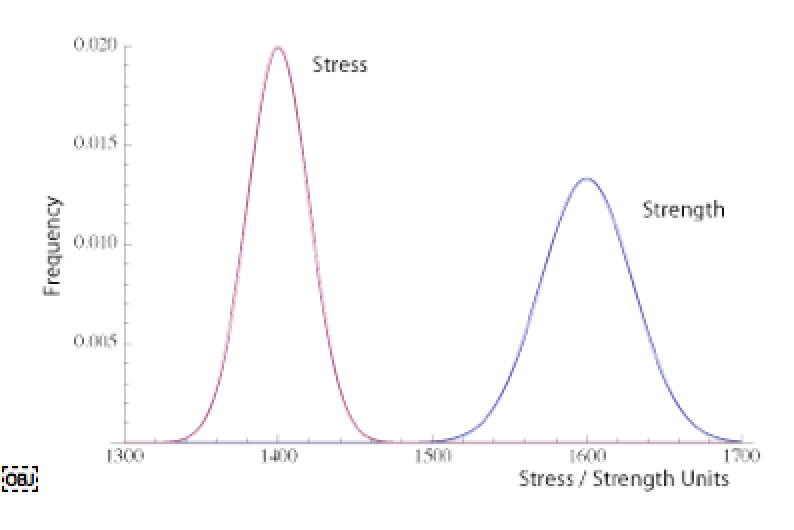 You will notice that the stress is well below the strength. This implies there is very little chance of failure as a result of the element being overstressed. Also, ideally, we fully characterize all stresses and all strengths for each element of a product. This is generally difficult to accomplish and it is rarely done to that extent. Continue reading
You will notice that the stress is well below the strength. This implies there is very little chance of failure as a result of the element being overstressed. Also, ideally, we fully characterize all stresses and all strengths for each element of a product. This is generally difficult to accomplish and it is rarely done to that extent. Continue reading
#142 – ARE YOU A SYSTEMS CONTROLLED AND/OR PEOPLE CONTROLLED ORGANIZATION? – KEITH RIDGEWAY
Featured
 Are you a (Systems Controlled & People Driven) or a (People Controlled and People Driven) organisation?
Are you a (Systems Controlled & People Driven) or a (People Controlled and People Driven) organisation?
Every day we hear of organisations failure to prevent accidents, environmental incidents, non-conformities, product recalls and at worst a child, adult or an animal was killed. Continue reading
#141 – WHAT WILL QUALITY LOOK LIKE IN 20 YEARS? – PETER J. HOLTMANN
Featured
 To look to the future, the quality profession is revisiting its roots. The question is, “Where is the next generation to help the profession look ahead?” Or, as I like to think of it, “What’s the emoticon for quality?”
To look to the future, the quality profession is revisiting its roots. The question is, “Where is the next generation to help the profession look ahead?” Or, as I like to think of it, “What’s the emoticon for quality?”
I recently attended ASQ’s World Conference on Quality and Improvement where we discussed powerful questions such as, “What will quality look like in 20 years? What will it be called? Will it still be relevant?”
#141 – WASHINGTON STATE ADOPTS ERM – GREG HUTCHINS
Featured
#141 – RELIABILITY MODELING USING THE MONTE CARLO APPROACH: WORTH GAMBLING ON – FRED SCHENKELBERG
Featured
 Modeling Complex Systems and Their Variability
Modeling Complex Systems and Their Variability
The Monte Carlo approach relies on data that describe the variation of elements within the system. It also connects the elements such that the result is an estimate of performance. For reliability modeling this is easiest to imagine for a series system. Continue reading
#141 – REAL WORLD VOLATILITY: IMPLICATIONS FOR SCENARIO GENERATION – GEARY SICKICH
Featured
In the risk-neutral world, all business and government continuity planning would be risk-balanced. However, in reality, risks, threats, hazards and their consequences change depending on an organizations exposure, sensitivities to impact and other factors. For instance, a natural disaster, can occur without much warning and can have direct and indirect impact on an organization. Complicating the Business Continuity Planners life is a simple fact, events have unforeseen consequences that can rarely be planned for. Continue reading
#141 – CARBON EMISSIONS AND FOOD WASTE REDUCED WITH BALDOR’S SPARCS PROGRAM – KELLY EISENHARDT
Featured
 The White House Climate Change Plan to Reduce Methane Emissions identified landfills as being responsible for 18% of all methane emissions and approximately 100 million metric tons of carbon dioxide pollution. [1] Baldor Specialty Foods, a leading produce distributor in the Northeast and Mid-Atlantic states based in the Bronx, NY, is on a mission to reduce these numbers by tackling the overwhelming problem of food waste in the United States. Continue reading
The White House Climate Change Plan to Reduce Methane Emissions identified landfills as being responsible for 18% of all methane emissions and approximately 100 million metric tons of carbon dioxide pollution. [1] Baldor Specialty Foods, a leading produce distributor in the Northeast and Mid-Atlantic states based in the Bronx, NY, is on a mission to reduce these numbers by tackling the overwhelming problem of food waste in the United States. Continue reading
#141 – RISK LEADERSHIP PROFILE: ED PERKINS BY MARGAUX HUTCHINS
Featured
 Ed Perkins is an electrical engineer and cyber security guru who is a candidate for 2017 President-elect of IEEE USA, the U.S. group of the biggest technical society in the world. Ed talks with us about what makes engineering cool, the importance of STEM, and the future of technology.
Ed Perkins is an electrical engineer and cyber security guru who is a candidate for 2017 President-elect of IEEE USA, the U.S. group of the biggest technical society in the world. Ed talks with us about what makes engineering cool, the importance of STEM, and the future of technology.
Ed Perkins CIA CERM is also the developer of the Certified Enterprise Risk Manager® – Cyber Security™ certificate and is an expert on the NIST Risk Management Framework. Continue reading
#140 – US FEDS ADOPT ERM – GREG HUTCHINS
Featured
 The President of the US has emphasized:
The President of the US has emphasized:
“the importance of having appropriate risk management processes and systems to identify challenges early, to bring them to the attention of Agency leadership, and to develop solutions.”
The President’s Executive Office (Office of Management and Budget) is updating Circular A – 123 to ensure Federal executives and managers are effectively, efficiently, and economically managing risks that inhibit the agency from achieving its strategic and operational objectives.
#140 – COVER YOUR ASSETS AND PLAUSIBLE DENIABILITY – ED PERKINS
Featured
 In an earlier post [1] we looked whether ‘plausible deniability’ was now a dead strategy in the face of enterprise risk management (ERM) and the likely impact of the US SEC (Securities and Exchange Commission) guidance [2] regarding disclosure obligations relating to operational and cybersecurity risks and cyber incidents. The SEC noted that “a number of disclosure requirements may impose an obligation on registrants to disclose such risks and incidents. Continue reading
In an earlier post [1] we looked whether ‘plausible deniability’ was now a dead strategy in the face of enterprise risk management (ERM) and the likely impact of the US SEC (Securities and Exchange Commission) guidance [2] regarding disclosure obligations relating to operational and cybersecurity risks and cyber incidents. The SEC noted that “a number of disclosure requirements may impose an obligation on registrants to disclose such risks and incidents. Continue reading
#140 – DRIVERS OF CHANGE: BUSINESS CONTINUITY PLANNING IMPLICATIONS – GEARY SIKICH
Featured
Unpredictability is the new normal. As the world approaches 7 billion in population this year, there is an ever increasing demand for food, energy and a voice in how things are run. How do these changes affect business continuity planners, you may be asking? Then simple answer is, they will have far reaching effects on how business continuity planning is conducted. No longer can we be satisfied with the assurance that our “hot site” is available, or that we can maintain business operations in the face of a pandemic; or that we can deal with the aftermath of a natural disaster. Continue reading
#140 – FAULT TREE ANALYSIS BASICS – FRED SCHENKELBERG
Featured
Fault tree analysis (FTA) is a technique used to explore the many potential or actual causes  of product or system failure. It is best applied when there are many possible ways for something may fail. For example, when my car doesn’t start, it could be a dead battery, a faulty starter, a loose wire, an absence of fuel, and on and on. Continue reading
of product or system failure. It is best applied when there are many possible ways for something may fail. For example, when my car doesn’t start, it could be a dead battery, a faulty starter, a loose wire, an absence of fuel, and on and on. Continue reading
#140 – THE RISK CHALLENGE TO THE QUALITY PROFESSION – JAMES KLINE PH.D
Featured
 With the adoption of ISO 9001.2015 and the Office of Management and Budget’s (OMB) revision of Circular A-123, management of both the private sector and federal government must now pay formal attention to risk across their enterprise. In addition, the Government Accountability Office (GAO) has updated the “Standards for Internal Control in the Federal Government”, the Green Book, to better accommodate risk assessment. Continue reading
With the adoption of ISO 9001.2015 and the Office of Management and Budget’s (OMB) revision of Circular A-123, management of both the private sector and federal government must now pay formal attention to risk across their enterprise. In addition, the Government Accountability Office (GAO) has updated the “Standards for Internal Control in the Federal Government”, the Green Book, to better accommodate risk assessment. Continue reading
#140 – RISK AHEAD OR RISK BEHIND? – ERIC SCHULZE
Featured
 “Only after the ship has sunk does everyone know how it might have been saved.”
“Only after the ship has sunk does everyone know how it might have been saved.”
Healthcare is changing at an incredible pace. Identifying what’s relevant and prioritizing the changes that will impact a hospital is an enormous challenge for a hospital’s leadership. Unfortunately, many hospitals, especially rural hospitals, are not able to mitigate the problems successfully. Continue reading
#139 – OPERATIONAL EXCELLENCE IS NOT SOMETHING NEW! – JOSEPH PARIS
Featured
 There is a lot of content created around Operational Excellence and its companion disciplines – including; Leadership, Lean, Six-Sigma, Theory of Constraints, Project Management, and so on – which together comprise Operational Excellence (including the content produced by myself). But are all of these concepts as “new” as some would have you believe? Have they never been embraced or implemented in the past? Continue reading
There is a lot of content created around Operational Excellence and its companion disciplines – including; Leadership, Lean, Six-Sigma, Theory of Constraints, Project Management, and so on – which together comprise Operational Excellence (including the content produced by myself). But are all of these concepts as “new” as some would have you believe? Have they never been embraced or implemented in the past? Continue reading
#139 – RISK TREATMENT STRATEGIES – GREG HUTCHINS
Featured
 When evaluating risk response strategies, executive management along with process owners must align risk responses with the organization’s risk appetite, business objectives, costs/benefits, and overall risk strategy/tactics. Risk response strategies and tactics may involve: Continue reading
When evaluating risk response strategies, executive management along with process owners must align risk responses with the organization’s risk appetite, business objectives, costs/benefits, and overall risk strategy/tactics. Risk response strategies and tactics may involve: Continue reading
#139 – WHY WE NEED INTELLIGENT DISOBEDIENCE IN CORPORATE AMERICA – KELLY EISENHARDT
Featured
 Empowering employees to speak up when they see something that is wrong or when they are asked to do something that might cause harm is critical to the survival of all organizations. Each employee needs to internalize their own personal accountability for the actions they take under executive leadership. Continue reading
Empowering employees to speak up when they see something that is wrong or when they are asked to do something that might cause harm is critical to the survival of all organizations. Each employee needs to internalize their own personal accountability for the actions they take under executive leadership. Continue reading
#139 – STAR ACADEMICS: DO THEY GARNER INCREASING RETURNS? – JAMES KLINE PH.D.
Featured
 I recently completed my dissertation of the same title. The evaluative purpose of the dissertation was twofold. The first was to determine if, as the title indicates, star academics garner increasing returns for the university they work at. The second was to determine what criteria helps academics in obtaining National Institute of Health (NIH) funds. NIH provides the largest amount of federal funding for scientific research. As a result, receipt of NIH funds makes a significant contribution to university revenue. Conventional wisdom and some supporting research indicate that star academics bring in substantial amounts of grant money. They also attract a higher quality of supporting academics and graduate students. Continue reading
I recently completed my dissertation of the same title. The evaluative purpose of the dissertation was twofold. The first was to determine if, as the title indicates, star academics garner increasing returns for the university they work at. The second was to determine what criteria helps academics in obtaining National Institute of Health (NIH) funds. NIH provides the largest amount of federal funding for scientific research. As a result, receipt of NIH funds makes a significant contribution to university revenue. Conventional wisdom and some supporting research indicate that star academics bring in substantial amounts of grant money. They also attract a higher quality of supporting academics and graduate students. Continue reading
#139 – EXPLOITING NEW CHALLENGES IN ERM – GEARY SIKICH
Featured
 Heightened Awareness or Reactive, Backwards Looking?
Heightened Awareness or Reactive, Backwards Looking?
From financial crises to energy catastrophes to earthquakes and threats of terrorism, we hear a lot about events that challenge our ability to identify and manage risk. Unfortunately some of the things that emerge from many of these events are reactive regulatory rules and requirements. Continue reading
#139 – A BRIEF INTRODUCTION TO HALT – FRED SCHENKELBERG
Featured
 What Is HALT
What Is HALT
Highly accelerated life testing (HALT) is a technique to expose weaknesses or faults with a product. HALT uses individual or combined stresses in a step-stress approach to quickly apply sufficient stress to reveal defects. Continue reading
#138 – IN A WORLD OF ‘BLACK SWANS’, HOW DO YOU KNOW WHICH ONE TO WORRY ABOUT? – GEARY SIKICH
Featured
There’s always a story that explains why an event is a “Black Swan” – after the fact. Where are the “Black Swan” prognosticators before events occur? I see “after the fact” articles and statements, such as, “we knew that was coming” or “we predicted this” – all after the fact. Generally projections and predictions seem never to hold sway until after the fact. Predictions and projections never seem to occur when the prognosticator specifies — is it just that the timing never seems to work out – until after the fact. From Nostradamus to the “Bible Code” we are enamored with predictions – after the fact. Does there seem to be a theme developing here? Continue reading
#138 – US FEDS REQUIRE ERM – GREG HUTCHINS
Featured
 The President of the US has emphasized:
The President of the US has emphasized:
“the importance of having appropriate risk management processes and systems to identify challenges early, to bring them to the attention of Agency leadership, and to develop solutions.”
The President’s Executive Office (Office of Management and Budget) is updating Circular A – 123 to ensure Federal executives and managers are effectively, efficiently, and economically managing risks that inhibit the agency from achieving its strategic and operational objectives. Continue reading
#138 – 6 TRAITS YOU SHOULD DEVELOP TO BECOME AN EXCEPTIONAL QUALITY PRO – CINDY FAZZI
Featured
 In a regulated company, quality professionals may be revered or dreaded or downright misunderstood. But there’s no denying their important role. As quality guru Joseph Juran said, all improvement happens project by project and in no other way. To paraphrase Juran, I would say a high-quality product or service happens step by step and process by process. Guess who’s responsible for making sure every step and every process is working effectively? You got that right—quality pros. Continue reading
In a regulated company, quality professionals may be revered or dreaded or downright misunderstood. But there’s no denying their important role. As quality guru Joseph Juran said, all improvement happens project by project and in no other way. To paraphrase Juran, I would say a high-quality product or service happens step by step and process by process. Guess who’s responsible for making sure every step and every process is working effectively? You got that right—quality pros. Continue reading
#138 – LIFE TESTING: WHERE TO START? – FRED SCHENKELBERG
Featured
 Reliability or life testing involves estimating the expected durability over time of an item. This may be an entire system, a product, or an individual component. We may also focus on an element of a component, such as a material property. At the end of the testing we want to say something meaningful about the expected performance over time. Continue reading
Reliability or life testing involves estimating the expected durability over time of an item. This may be an entire system, a product, or an individual component. We may also focus on an element of a component, such as a material property. At the end of the testing we want to say something meaningful about the expected performance over time. Continue reading
#138 – MITIGATE RISK BY DETERMINING CRITICAL DATUM – KEITH RIDGEWAY
Featured
 Every day we are exposed to all types of hazards, but what really makes these hazards become risks.
Every day we are exposed to all types of hazards, but what really makes these hazards become risks.
For the past 30 years, I’ve been involved in one way or another, investigating the root causes of failure modes be it a system, process, person, plant or product. During this time I’ve applied different problem-solving tools like “FMEA, 8D, 5Whys, FEA’s, DMAIC etc” in order to find the true root cause of this failure mode. Only to get frustrated, thinking I had found the root cause, only 3 months later a new failure mode would come to the surface. Continue reading
#138 – HEALTHCARE@RISK – ALIGNING YOUR STRATEGIC VISION WITH YOUR BUSINESS OBJECTIVES – TED SCHMIDT
Featured
 With all of the changes in healthcare reimbursements, how do you ensure that your hospital is properly funded to meet your financial/operational needs while achieving your hospital’s vision? These changes are especially concerning for Hill-Burton hospitals, Safety Net hospitals, and faith-based hospitals that serve a disproportionate share of indigent patients. Continue reading
With all of the changes in healthcare reimbursements, how do you ensure that your hospital is properly funded to meet your financial/operational needs while achieving your hospital’s vision? These changes are especially concerning for Hill-Burton hospitals, Safety Net hospitals, and faith-based hospitals that serve a disproportionate share of indigent patients. Continue reading
#137 – RESOLVING TEAM CONFLICT MINIMIZES LOW MORALE RISK – JOHN AYERS
Featured
 As we know, team conflict is not good and needs to be resolved quickly to maintain a high level of team moral and performance. This notion is true in sports as well in the work place. There are a number of approaches to resolve conflicts. For example: ignore them and hope they work themselves out; fire the main instigator as president Truman did with General MacArthur; confront them and resolve them. I offer an example herein of two approaches to resolve conflict, one of which I feel is a bad approach and one a good approach that I favor. Continue reading
As we know, team conflict is not good and needs to be resolved quickly to maintain a high level of team moral and performance. This notion is true in sports as well in the work place. There are a number of approaches to resolve conflicts. For example: ignore them and hope they work themselves out; fire the main instigator as president Truman did with General MacArthur; confront them and resolve them. I offer an example herein of two approaches to resolve conflict, one of which I feel is a bad approach and one a good approach that I favor. Continue reading
#137 – WHY IS ISO 31000 A MUST KNOW ISO STANDARD? – GREG HUTCHINS
Featured
 More ISO management systems are incorporating RBT and risk, so the standard is becoming a ‘must know’ standard. ISO 31000 risk management principles, risk management framework, and risk management process are the preferred tools to use with ISO management systems because ISO 31000: Continue reading
More ISO management systems are incorporating RBT and risk, so the standard is becoming a ‘must know’ standard. ISO 31000 risk management principles, risk management framework, and risk management process are the preferred tools to use with ISO management systems because ISO 31000: Continue reading
#137 – STILL USING PAPER FOR AUDITS? – HERE’S WHY YOU NEED TO AUTOMATE – STEVE HARRISON
Featured
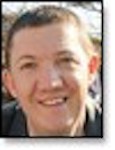 A recent quality management system benchmark survey showed manual processes are still predominant over automated systems.[1] The results of the survey were compiled from over 100,000 professionals worldwide and the majority of the participants work in quality or regulatory positions across pharmaceutical, medical device and biotech industries. Continue reading
A recent quality management system benchmark survey showed manual processes are still predominant over automated systems.[1] The results of the survey were compiled from over 100,000 professionals worldwide and the majority of the participants work in quality or regulatory positions across pharmaceutical, medical device and biotech industries. Continue reading
#137 – LEARNING FROM OUR FAILURES – FRED SCHENKELBERG
Featured
 Why do so many avoid failure? In product development of plant asset management, we are surrounded by people who steadfastly do not want to know about nor talk about failures.
Why do so many avoid failure? In product development of plant asset management, we are surrounded by people who steadfastly do not want to know about nor talk about failures.
Failure does happen. We cannot ignore this simple fact. Continue reading
#137 – WHEN IT COMES TO CYBERSECURITY, DISCONNECTS ‘R US’ – ED PERKINS
Featured
 A recent report from the cybersecurity firm Barkly, on results from a survey they conducted of IT professionals and IT executives, found that while the IT professionals who have direct responsible for cybersecurity feel their organizations are vulnerable, the executives from those organizations are significantly more confident that things in general are fine. For their Cybersecurity Confidence Report[1], Barkly surveyed of 350 IT professionals and found that 50 percent are not confident in their current security products or solutions. Continue reading
A recent report from the cybersecurity firm Barkly, on results from a survey they conducted of IT professionals and IT executives, found that while the IT professionals who have direct responsible for cybersecurity feel their organizations are vulnerable, the executives from those organizations are significantly more confident that things in general are fine. For their Cybersecurity Confidence Report[1], Barkly surveyed of 350 IT professionals and found that 50 percent are not confident in their current security products or solutions. Continue reading
#137 – AN EMPLOYEE RETENTION PROGRAM THAT COSTS NOTHING – ELIZABETH LIONS
Featured
 Retention is like life insurance. No one thinks about it until they need it.
Retention is like life insurance. No one thinks about it until they need it.
With the job market heating up and passive candidates starting to get antsy and look for different jobs, managers need to consider retaining their top talent. The irony is retention costs nothing. Continue reading
#136 – DOES YOUR COMPANY NEED A QUALITY DEPARTMENT? – TIM RODGERS
Featured
#136 – INTERNAL CONTROL AUDITING – GREG HUTCHINS
Featured
 Internal control audits are usually conducted as part of an overall risk assessment. First risks are identified and then internal controls are identified to mitigate the risks. Internal control assessments usually evaluate these 5 interrelated elements of effectiveness: Continue reading
Internal control audits are usually conducted as part of an overall risk assessment. First risks are identified and then internal controls are identified to mitigate the risks. Internal control assessments usually evaluate these 5 interrelated elements of effectiveness: Continue reading
#136 – HOW PERFORMANCE EXCELLENCE HELPS BROADEN THE HORIZON OF QUALITY – MICKEY GARCIA
Featured
 Since W. Edwards Deming’s pioneering work in the 1950s, we have witnessed remarkable progress in the disciplines of both quality and management. Through the years, the best practices of the day have been given fancy names such as total quality management (TQM), Six Sigma and, most recently, Lean everything—just to name a few. Continue reading
Since W. Edwards Deming’s pioneering work in the 1950s, we have witnessed remarkable progress in the disciplines of both quality and management. Through the years, the best practices of the day have been given fancy names such as total quality management (TQM), Six Sigma and, most recently, Lean everything—just to name a few. Continue reading
#136 – HOW MANY RELIABILITY ENGINEERS DOES IT TAKE TO REPLACE A LIGHT BULB? – FRED SCHENKELBERG
Featured
 How many reliability engineers does it take to replace a light bulb? Well, none, but that’s because reliability engineers would use a reliable bulb to avoid the need for replacement.
How many reliability engineers does it take to replace a light bulb? Well, none, but that’s because reliability engineers would use a reliable bulb to avoid the need for replacement.
Of more importance is answering the question ‘How many reliability engineers does an organization need?’ Is it
(a) none,
(b) one really good reliability engineering professional, or
(c) an entire staff of highly talented reliability engineers? Continue reading
#136 – HOW TO ESTIMATE AND PRIORITIZE RISKS – STEPHEN FLICK
Featured
 Estimating and prioritizing risks is a time-consuming process and the results of risk estimation and prioritization don’t often inspire a great deal of confidence in the process. It’s not a perfect process and it will probably never be. We’re not perfect and nothing we ever make[1] will ever be. Continue reading
Estimating and prioritizing risks is a time-consuming process and the results of risk estimation and prioritization don’t often inspire a great deal of confidence in the process. It’s not a perfect process and it will probably never be. We’re not perfect and nothing we ever make[1] will ever be. Continue reading
#136 – ON THE PAYOFF OF ATTENDING AN ELITE COLLEGE – NATIONAL BUREAU OF ECONOMIC RESEARCH
Featured
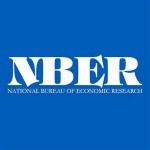 In today’s high-tech economy, just about everybody has gotten the message that it pays to get a college degree. What is less clear to many parents and their college-bound youngsters is whether it makes economic sense to attend an elite school with a total four-year price tag big enough to buy a nice suburban house in many parts of the country.
In today’s high-tech economy, just about everybody has gotten the message that it pays to get a college degree. What is less clear to many parents and their college-bound youngsters is whether it makes economic sense to attend an elite school with a total four-year price tag big enough to buy a nice suburban house in many parts of the country.
Does the earnings return from a diploma with the name of an elite institution stamped on it justify the higher expense, or is the reputation of the college aristocracy vastly overblown, at least when it comes to subsequent income? It’s a question that more and more economists are researching, while many parents and policymakers would like to know the answer.
Yet researchers have long found it difficult to tease out the labor market effects of college quality versus other characteristics that employers reward. The problem is that students who attend selective schools are likely to have higher earnings potential regardless of where they attend college for the very same reasons that they were admitted to the more selective schools in the first place. In a recent NBER Working Paper, Stacy Berg Dale and Alan Krueger try two novel approaches to solving this problem. In Estimating The Payoff To Attending A More Selective College: An Application of Selection On Observable and Unobservables (NBER Working Paper No. 7322) they use data from the College and Beyond Survey to match 6,335 students who were accepted and rejected by a comparable set of colleges in 1976. They then compare labor market outcomes in 1995 among students who had the same menu of choices, but among whom some attended more selective schools than others. They also use this data set and the National Longitudinal Survey of the High School Class of 1972 to estimate the impact on students’ subsequent earnings of the average SAT scores of all the schools they applied to as well as the average SAT score of the school they attended.
They find that school selectivity, measured by the average SAT score of the students at a school, doesn’t pay off in a higher income over time. “Students who attended more selective colleges do not earn more than other students who were accepted and rejected by comparable schools but attended less selective colleges,” the researchers write. They also find that the average SAT score of the schools students applied to but did not attend is a much stronger predictor of students’ subsequent income than the average SAT score of the school students actually attended. They call this finding the “Spielberg Model” because the famed movie producer applied to USC and UCLA film schools only to be rejected, and attended Cal State Long Beach. Evidently, students’ motivation, ambition, and desire to learn have a much stronger effect on their subsequent success than the average academic ability of their classmates.
Still, they do find that some aspects of colleges are related to students’ subsequent economic success, even after adjusting for the abilities of the students upon applying to college. For example, students who attend colleges with higher average tuition costs or spending per student tend to earn higher incomes later on. The internal real rate of return on college tuition for students who went to college in the late 1970s was a startlingly high 16 to 18 percent. But with college costs up sharply since then, returns have probably come down to a more normal range. The authors speculate that tuition may affect future earnings because schools with higher tuitions offer more resources or higher quality products to their students.
Finally, the results of this study suggest that no matter what measurement of college quality is used, the income gains from attending an elite college are highest for students from a disadvantaged background. “School admission and financial aid policies that have as a goal attracting students from more disadvantaged family backgrounds may raise national income, as these students appear to benefit most from attending a more elite college,” they say. Their results are bound to play a role in the national debate over financial aid and affirmative action policies at the nation’s premier schools.
Christopher Farrell – (C) National Bureau of Economic Research
#135 – OPERATIONAL EXCELLENCE MATURITY MODEL – JOSEPH PARIS
Featured
 I have met countless Continuous Improvement and Operational Excellence professionals over the course of my career. And, in turn, I have become acquainted with their roles and efforts in regards to driving value to their organizations. Oftentimes, these professionals, although possessing great passion for, and pride in, the value they drive to their companies, express their frustrations at the lack of proper support from their company in their efforts. Continue reading
I have met countless Continuous Improvement and Operational Excellence professionals over the course of my career. And, in turn, I have become acquainted with their roles and efforts in regards to driving value to their organizations. Oftentimes, these professionals, although possessing great passion for, and pride in, the value they drive to their companies, express their frustrations at the lack of proper support from their company in their efforts. Continue reading
#135 – RISK ASSESSMENT BENEFITS – GREG HUTCHINS
Featured
 Risk assessment is a critical element of ISO 31000 risk management framework. Risk assessment provides the requisite evidence based data and information for Risk Based Thinking, specifically risk based problem solving and risk based decision making. Using the appropriate risk assessment for the organization can determine how to treat and manage specific risks. Continue reading
Risk assessment is a critical element of ISO 31000 risk management framework. Risk assessment provides the requisite evidence based data and information for Risk Based Thinking, specifically risk based problem solving and risk based decision making. Using the appropriate risk assessment for the organization can determine how to treat and manage specific risks. Continue reading
#135 – STRUCTURING ICT MANAGEMENT TO ALIGN IT WITH THE ENTERPRISE – PART IV PRINCIPLES OF ENTERPRISE ICT ALIGNMENT – HOWARD WIENER
Featured
 In the previous posts in this series, we covered:
In the previous posts in this series, we covered:
- Part I: models of the enterprise and ICT and the need to rationalize the two in order to manage both properly.
- Part II: a four-level enterprise model consisting of strategy, business model, operating model and operational architecture; the need for and value of creating and maintaining the as-is model.
- Part III: the as-is model and its role in the existing EA, planning for transformation and ensuring that the enterprise is equally capable of evaluating changes emanating outside-in and inside-out.
#135 – HEALTHCARE AT RISK: LEADERSHIP, RISK, AND YOUR MANAGEMENT SYSTEM – ERIC SCHULZE
Featured
 During the DNV GL symposium, I overheard someone say that after four years of “doing” ISO, they can “kind of see” how leadership and management review can contribute to improvement. It is unfortunate that it has taken years for the benefits of ISO to be appreciated, but sadly it is a common observation and truth for many hospitals using the 9001 framework as part of their accreditation. Implementing, maintaining, and improving a management system is a journey, not a destination. Continue reading
During the DNV GL symposium, I overheard someone say that after four years of “doing” ISO, they can “kind of see” how leadership and management review can contribute to improvement. It is unfortunate that it has taken years for the benefits of ISO to be appreciated, but sadly it is a common observation and truth for many hospitals using the 9001 framework as part of their accreditation. Implementing, maintaining, and improving a management system is a journey, not a destination. Continue reading
#135 – HOW SAFE IS SAFE ENOUGH FOR YOUR SYSTEM – FRED SCHENKELBERG
Featured
 SETTING THE MARGIN FOR SAFETY
SETTING THE MARGIN FOR SAFETY
Estimating the set of stress and stress curves is an interesting exercise that may have a greater purpose: safety. The connection is clear when considering the potential consequences of failure. For example, the loss of braking power when landing an aircraft may result in the aircraft rolling off the end of the runway. Continue reading
#135 – SIX LESSONS QUALITY MANAGERS CAN LEARN FROM STAR WARS – DAVID BUTCHER
Featured
 Beginning with A New Hope nearly 40 years ago, characters in the epic Star Wars saga have offered many lessons that may prove valuable for even the most seasoned quality managers. There are numerous examples of positive behaviors that managers might consider emulating in their daily work and behaviors that should always be avoided. Continue reading
Beginning with A New Hope nearly 40 years ago, characters in the epic Star Wars saga have offered many lessons that may prove valuable for even the most seasoned quality managers. There are numerous examples of positive behaviors that managers might consider emulating in their daily work and behaviors that should always be avoided. Continue reading
#134 – HEALTHCARE @ RISK – UNDERSTANDING CONTEXT – TED SCHMIDT
Featured
 In an effort to better understand the “context” of the environment in our hospitals, we conducted some basic research. Our results, though mostly unscientific, do bring us to our current state in healthcare. We considered the different influences on how we practice medicine, how we run our hospitals (including most importantly, how our hospitals get paid) and the influences of technology and innovation. Here is a brief synopsis of what we found. Continue reading
In an effort to better understand the “context” of the environment in our hospitals, we conducted some basic research. Our results, though mostly unscientific, do bring us to our current state in healthcare. We considered the different influences on how we practice medicine, how we run our hospitals (including most importantly, how our hospitals get paid) and the influences of technology and innovation. Here is a brief synopsis of what we found. Continue reading
#134 – KKR PORTFOLIO COMPANIES GET NEW GREEN SOLUTIONS PLATFORM – KELLY EISENHARDT
Featured
 As Environmental, Social and Governance (ESG) issues continue to grow in importance for mainstream investors, KKR’s pioneering environmental initiative provides the resources and tools necessary for its participating private equity portfolio companies to determine materiality and the means to measure it. Continue reading
As Environmental, Social and Governance (ESG) issues continue to grow in importance for mainstream investors, KKR’s pioneering environmental initiative provides the resources and tools necessary for its participating private equity portfolio companies to determine materiality and the means to measure it. Continue reading
#134 – IT’S LONELY AT THE TOP! – KIRBY URNER
Featured
 Given ISO 9001:2015, we see new emphasis on executive involvement, who may even be the Chief Risk Officer (CRO) someone with lots of experience, most probably in IT, operations, legal or accounting.
Given ISO 9001:2015, we see new emphasis on executive involvement, who may even be the Chief Risk Officer (CRO) someone with lots of experience, most probably in IT, operations, legal or accounting.
Now let’s look at IT side of the risk business, where the CRO will need allies who grew up in computer science or something similar (philosophy?). Since IT is integral to all processes and project, we think that this is where we think most risks will reside. The CRO’s best friend may be the CEH, the Certified Ethical Hacker. Continue reading
#134 – HOW SIX SIGMA CAN HELP YOU? – JOHN AYERS
Featured
 Six Sigma is a powerful tool used to solve a problem or improve a process. The company (one of the 4 big defense companies) I worked for over 20 years lived, breathed and ate it every day. I became a six sigma specialist. For those readers not familiar with six sigma, I offer the following example to hopefully provide some insight into how it works and the benefits it offers. Continue reading
Six Sigma is a powerful tool used to solve a problem or improve a process. The company (one of the 4 big defense companies) I worked for over 20 years lived, breathed and ate it every day. I became a six sigma specialist. For those readers not familiar with six sigma, I offer the following example to hopefully provide some insight into how it works and the benefits it offers. Continue reading
#134 – WHY YOU WEREN’T HIRED – ELIZABETH LIONS
Featured
Rejection isn’t meant for the faint of heart and in a job search one must have a bullet proof ego to withstand hours of searching for the right job, applying, networking, re-writing the resume – and other mind numbing tasks in order to do one simple thing – replace an income. Continue reading
#133 – ISO 31000 AS AN ERM STANDARD – GREG HUTCHINS
Featured
I SO 31000 is 23 pages long, but these pages provide an entry level Enterprise Risk Management (ERM) guideline.
SO 31000 is 23 pages long, but these pages provide an entry level Enterprise Risk Management (ERM) guideline.
Why is this important?
An organization develops ISO 31000 ERM capabilities to provide a structured, consistent, disciplined, and achievable approach to risk management that facilitates Risk Based Thinking throughout the organization. Risk Based Thinking is composed of 1. Risk based, problem solving (RB – PS) and 2. Risk based, decision making (RB –DM). Both RB – PS and RB – DM are the basis for all management and supervision. We discuss this in our new book: ISO 31000: Enterprise Risk Management. Continue reading
#133 – PREPARING FOR ISO 13485:2016 CHANGES – JAMES JARDINE
Featured
 As 2015 comes to a close, medical device manufacturers throughout the world share one collective concern: how will the ISO 13485:2016 revision compare with other versions of the standard? In a new three-part video series, Walt Murray, MasterControl’s director of Quality and Compliance Consulting (QCC) services, walks through what, why, when and how changes are coming to the standard. Continue reading
As 2015 comes to a close, medical device manufacturers throughout the world share one collective concern: how will the ISO 13485:2016 revision compare with other versions of the standard? In a new three-part video series, Walt Murray, MasterControl’s director of Quality and Compliance Consulting (QCC) services, walks through what, why, when and how changes are coming to the standard. Continue reading
#133 – THOUGHTS ON SMART PHONES AND PRIVACY – KIRBY URNER
Featured
 Advanced high school students are getting exposed to RSA (the first public key cyrypto system) along with their math track. In such schools as the exclusive Phillips Academy, I’m sure they are having informed debates in their classrooms, regarding the Apple vs. FBI standoff.
Advanced high school students are getting exposed to RSA (the first public key cyrypto system) along with their math track. In such schools as the exclusive Phillips Academy, I’m sure they are having informed debates in their classrooms, regarding the Apple vs. FBI standoff.
I think this is important because everyone who wants privacy and to make sure that their financial, medical information, and all information is kept private should be interested in the Apple vs. FBI standoff that ended in a whimper. All of us will be eventually become cyber experts.
They’re certainly better equipped, concept-wise, than less privileged kids who might not even get any SQL, even in all four years of high school (!). Continue reading
#133 – MONSANTO’S PLAN: FEED 9.6 MILLION PEOPLE AND BE CARBON NEUTRAL BY 2021 – KELLY EISENHARDT
Featured
 The world’s population is expected to reach 9.6 billion people by 2050. Feeding everyone on a scale that big without increasing the world’s existing farming footprint by means of deforestation is a true challenge. With new technologies like precision agriculture, big data analytics, and the Internet of Things, Monsanto is creating the path to lower carbon emissions while increasing farming productivity. Continue reading
The world’s population is expected to reach 9.6 billion people by 2050. Feeding everyone on a scale that big without increasing the world’s existing farming footprint by means of deforestation is a true challenge. With new technologies like precision agriculture, big data analytics, and the Internet of Things, Monsanto is creating the path to lower carbon emissions while increasing farming productivity. Continue reading
#133 – RISK IS NOT EVEN HALF OF IT! – IAN DALLING
Featured
 Last month’s Insight explained that MSS 1000 is a universal management system standard that facilitates the creation of fully integrated management systems without boundaries addressing the totality of the management of an organisation irrespective of size and type. We now look at how it promotes a holistic management of uncertainty. Continue reading
Last month’s Insight explained that MSS 1000 is a universal management system standard that facilitates the creation of fully integrated management systems without boundaries addressing the totality of the management of an organisation irrespective of size and type. We now look at how it promotes a holistic management of uncertainty. Continue reading
#133 – PROJECT DASHBOARDS: ARE WE MISSING THE PICTURE? – MALCOLM PEART
Featured
 I was once asked by a non-English speaker; “What is a dashboard?” Our Client wanted a ‘dashboard’ summary of the monthly status as part of Project Controls for a ‘health check’.
I was once asked by a non-English speaker; “What is a dashboard?” Our Client wanted a ‘dashboard’ summary of the monthly status as part of Project Controls for a ‘health check’.
I explained that cars have dashboards. Analogously, I told her that my first car (a Spitfire) had a ‘dashboard’ with a speedometer (marginally functional) to measure speed, temperature gauge (working) to warn of impending overheating, fuel gauge (temperamental) to let me know when I needed to top-up the tank, an odometer (erratic) to let me know how far I had travelled, plus a rev-counter that didn’t work. Continue reading
#132 – WHAT TO DO IF THERE IS NO AUDIT DOCUMENTATION? – GREG HUTCHINS
Featured
 Most organizations have established operational standards, objectives, metrics and expectations, which are operationalized through procedures and work instructions. If these exist, then the value added auditor can use these as a metric to conduct an audit.
Most organizations have established operational standards, objectives, metrics and expectations, which are operationalized through procedures and work instructions. If these exist, then the value added auditor can use these as a metric to conduct an audit.
The internal auditor determines whether the business objectives, standards, metrics, processes and work instructions are acceptable to meet audit objectives and then determine if they are being met.
But, what does the internal auditor do if there are no technical, procedures, policies, specifications, standards, or other types of documents? Continue reading
#132 – STRUCTURING ICT MANAGEMENT TO ALIGN IT WITH THE ENTERPRISE: PART 3 CHARTING TO BE – HOWARD M. WIENER
Featured
 In previous posts (Part 2) , I defined a simple hierarchy for portraying the Enterprise and made a case for the importance of understanding and documenting the as-is Enterprise Architecture to a reasonable level of detail.
In previous posts (Part 2) , I defined a simple hierarchy for portraying the Enterprise and made a case for the importance of understanding and documenting the as-is Enterprise Architecture to a reasonable level of detail.
#132 – MERITS OF RISK MANAGEMENT: COMPLIANCE AS AN INVESTMENT – ANNETTE DAVISON, BOB BURFORD
Featured
ABSTRACT
Understanding and implementing sound compliance programs is a fundamental component of corporate governance and risk management. Effective risk management is not limited to understanding an organisation’s regulator-driven compliance requirements. It also includes managing an organisation’s overall operating context risks, within a business outcomes’ framework in order to mitigate these risks and in some cases, turn them into opportunities. With the increasing costs of implementing compliance systems and risk management measures, questions are often asked about their ‘worth’ to an organisation. In this paper, the costs of non-compliance as well as the benefits of good compliance and risk management programs are considered. Continue reading
#132 – 5 LESSONS I LEARNED FROM A SUCCESSFUL ISO 9001:2015 CERTIFICATON AUDIT – LILLIAN ERICKSON
Featured
 The publication of ISO 9001:2015 in September generated much anxiety among companies fearing a bumpy transition to the new and significantly changed international standard. Admittedly, we at MasterControl were not immune to those worries.
The publication of ISO 9001:2015 in September generated much anxiety among companies fearing a bumpy transition to the new and significantly changed international standard. Admittedly, we at MasterControl were not immune to those worries.
Despite having quality experts involved with the ISO changes since they were proposed some years ago, even we did not know how our ISO assessors would apply the new requirements, what evidence they would expect to see, and how to pre-emptively satisfy their expectations. Continue reading
#132 – A, B, AND C’S OF CAREER ADVANCEMENT – JOHN AYERS
Featured
 You may have heard about the Peter Principle (every employee tends to rise to his/her level of incompetency) and Putt’s law (the most competent person tends to sink to the bottom while the least talented person rises to the top). You have not heard of the A, B, C Theory because it is mine. I will explain what it is and you decide if there is any merit in it. Continue reading
You may have heard about the Peter Principle (every employee tends to rise to his/her level of incompetency) and Putt’s law (the most competent person tends to sink to the bottom while the least talented person rises to the top). You have not heard of the A, B, C Theory because it is mine. I will explain what it is and you decide if there is any merit in it. Continue reading
#132 – UNPREDICTABILITY OF CASCADE EFFECTS IN DISASTER PLANNING – GEARY SIKICH
Featured
 The definition below was presented in a recent questionnaire conducted by Project Snowball in the European Union (EU). As used in the questionnaire the term “cascading effects” is defined as:
The definition below was presented in a recent questionnaire conducted by Project Snowball in the European Union (EU). As used in the questionnaire the term “cascading effects” is defined as:
“Cascading effects are the dynamics present in disasters, in which the impact of a physical event or the development of an initial technological or human failure generates a sequence of events, linked or dependent from each other, that result in physical, social or economic disruption. Continue reading
#131 – DO YOU PYTHON? – KIRBY URNER
Featured
 If you have visited a bookstore recently you may have noticed an explosion in Python-related titles, especially for kids.
If you have visited a bookstore recently you may have noticed an explosion in Python-related titles, especially for kids.
The Python I mean is not the invasive species of the snake now eating Florida alligators, nor Monty Python the comedy troupe, but the computer language, made in Holland originally but nowadays world-owned. Python, the language, appears to be taking over the world! Continue reading
#131 – ISO 31000: MUST KNOW STANDARD – GREG HUTCHINS
Featured
 More ISO management systems are incorporating RBT and risk, so the ISO 31000 standard is becoming a ‘must know’ standard. ISO 31000 risk management principles, risk management framework, and risk management process are the preferred tools to use with ISO management systems because ISO 31000: Continue reading
More ISO management systems are incorporating RBT and risk, so the ISO 31000 standard is becoming a ‘must know’ standard. ISO 31000 risk management principles, risk management framework, and risk management process are the preferred tools to use with ISO management systems because ISO 31000: Continue reading
#131 – DISASTER PREPAREDNESS AND ISO 9001 – STEPHEN FLICK
Featured
 This week is “Severe Weather Awareness Week” in Missouri[1]. Seems odd, in a way, that we’re limiting our awareness of severe weather and what it can do to one week when weather disasters happen throughout the year.
This week is “Severe Weather Awareness Week” in Missouri[1]. Seems odd, in a way, that we’re limiting our awareness of severe weather and what it can do to one week when weather disasters happen throughout the year.
Damage caused by tornado, Joplin, MO – May, 2011 (Eric Thayer, Reuters) Continue reading
#131 – THOMSON REUTERS UNDERSTANDS CR&I IS KEY TO PERFORMANCE – KELLY EISENHARDT
Featured
 Thomson Reuters wants investors to know that corporate responsibility, sustainability, diversity, and inclusion are drivers that support strong financial performance. Combining these function areas into one global department has allowed the team to strengthen its purpose and work closer with business units to achieve measurable objectives and drive financial growth. Continue reading
Thomson Reuters wants investors to know that corporate responsibility, sustainability, diversity, and inclusion are drivers that support strong financial performance. Combining these function areas into one global department has allowed the team to strengthen its purpose and work closer with business units to achieve measurable objectives and drive financial growth. Continue reading
#131 – RETIREMENT RISK CONSIDERATIONS – JOHN AYERS
Featured
 In my view, the major retirement consideration is sufficient income to maintain a similar lifestyle you enjoyed when working. If you recently retired or plan to do so within the next few years, it is probably too late to assess considerations to improve your retirement position because your retirement income is already cast in stone. On the other hand, if you have a number of years before retirement and wondering how you should prepare for it, keep reading because I offer some valid recommendations for you to ponder based on my own experience since retiring in 2012 at the age of 71. Continue reading
In my view, the major retirement consideration is sufficient income to maintain a similar lifestyle you enjoyed when working. If you recently retired or plan to do so within the next few years, it is probably too late to assess considerations to improve your retirement position because your retirement income is already cast in stone. On the other hand, if you have a number of years before retirement and wondering how you should prepare for it, keep reading because I offer some valid recommendations for you to ponder based on my own experience since retiring in 2012 at the age of 71. Continue reading
#131 – RELIABILITY MATURITY MATRIX – FRED SCHENKELBERG
Featured
 The concept of a maturity model is not new. A maturity model provides a means to identify the current state and illuminate the possible improvements to a reliability program. The matrix serves a guide to assist an organization in improving its program.
The concept of a maturity model is not new. A maturity model provides a means to identify the current state and illuminate the possible improvements to a reliability program. The matrix serves a guide to assist an organization in improving its program.
The matrix has five stages. In general, the higher stages are most cost effective and efficient at achieving higher rates of product reliability performance. These stages—uncertainty, awaking, enlightenment, wisdom, and certainty—are described in the following. The complete matrix is posted at http://accendoreliability.com/reliability-maturity. Continue reading
#130 – WORST CASE TOLERANCE ANALYSIS – FRED SCHENKELBERG
Featured
 Worst-case tolerance analysis is the starting point when creating a tolerance specification. It is a conservative approach as it only considers the maximum or minimum values of part variation—whichever leads to the worst situation. Setting tolerances such that the system will function given the expected variation of manufactured components improves that ability of the system to perform reliably. Continue reading
Worst-case tolerance analysis is the starting point when creating a tolerance specification. It is a conservative approach as it only considers the maximum or minimum values of part variation—whichever leads to the worst situation. Setting tolerances such that the system will function given the expected variation of manufactured components improves that ability of the system to perform reliably. Continue reading
#130 – ISO 31000 ERM CERTIFICATES – GREG HUTCHINS
Featured
 British Standards Institution (BSI) continues to issue Enterprise Risk Management Certificates (ISO 31000) according to the Bahrain News Agency. BSI issued a certificate to Gulf Petrochemical Industries Company (GPIC).
British Standards Institution (BSI) continues to issue Enterprise Risk Management Certificates (ISO 31000) according to the Bahrain News Agency. BSI issued a certificate to Gulf Petrochemical Industries Company (GPIC).
What’s interesting is that IS 31000 is for implementing a risk management framework NOT for certification. But, the marketplace is saying something else: there is demand for ISO risk certificates and certification. Continue reading
#130 – WHO IS REALLY MANAGING YOUR PROJECT? – MALCOLM PEART
Featured
 As a client have you chosen to manage the project yourself or leave it to your Contractor or have you decided to utilise a consultant? If it’s too much to do it by yourself and Contractors are, well they’re contractors aren’t they… you have little choice but to engage a Consultant. Continue reading
As a client have you chosen to manage the project yourself or leave it to your Contractor or have you decided to utilise a consultant? If it’s too much to do it by yourself and Contractors are, well they’re contractors aren’t they… you have little choice but to engage a Consultant. Continue reading
#130 – ISO 9001:2015 – IMPLEMENTING RISK BASED THINKING: PART II – DENIS DEVOS
Featured
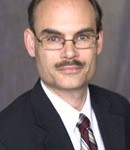 This is a continuation from Part 1: ISO 9001:2015 – IMPLEMENTING RISK BASED THINKING
This is a continuation from Part 1: ISO 9001:2015 – IMPLEMENTING RISK BASED THINKING
- Conducting a Qualitative Process-Level Risk Assessment – Without a Flowchart
In many cases, the risk assessment team may choose not to list risks on the flowchart itself, but brainstorm a list of process risks instead. In order to do that, a simple table can be used to guide the thought process. The sheet could look like the example in Figure 2 below. Enter the name of the process, the internal and external customers for the process, the stakeholders or “interested parties” in the header.
#130 – RBT IN HEALTHCARE: PROCESS METABOLISM – TED SCHMIDT
Featured
 Process metabolism is a concocted term to describe and hopefully understand how our processes work in their environment. It’s a concept that we need to begin to embrace if we want to improve our patient safety. Embracing and understanding process metabolism in our high-risk processes will allow for better process design and therefore yield more reliable results. Continue reading
Process metabolism is a concocted term to describe and hopefully understand how our processes work in their environment. It’s a concept that we need to begin to embrace if we want to improve our patient safety. Embracing and understanding process metabolism in our high-risk processes will allow for better process design and therefore yield more reliable results. Continue reading
#130 – CERM BOOTCAMP RELECTIONS – JAMES KLINE PH.D.
Featured
This article discusses my impressions of the CERM Boot Camp I attended from February 29 to March 4, 2016. The presenters were Greg Hutchins and Ed Perkins. At the outset I need to note that I have known Greg for more than 30 years. We also bid on a couple of jobs together. I met Ed a couple of times prior to the Boot Camp. Continue reading
#129 – TIGER MOM’S CRY: SILICON VALLEY SUICIDE CRISIS AND MYSTERY – DR. TRUDY
Featured
When the suicides happened in the most elite high school, Henry M. Gunn High School, an affluent community, also in the heart of Silicon Valley, the home of the most brilliant and successful inventors, invention and companies, it raises a red flag and Centers for Disease Control and Prevention (CDC) is conducting an investigation and trying to find out the root cause of the invisible, mysterious and contagious disease, suicide cluster. I was informed more than 10 years ago in Oregon that parents in Palo Alto have organized patrol teams around the Caltrain tracks but obviously the suicide symptom is not alleviated after a decade later. Continue reading
#129 – RISK ASSESSMENT: WHAT FUTURE ARE YOU PLANNING FOR? – GEARY SIKICH
Featured
There exists an overabundance of guidance for conducting risk assessments. Yet, it seems that we still have difficulty in getting risk assessments to reflect the appropriate level of concern for the identified risks that we are assessing. We also tend to view risk in relation to the place where we are employed and the industry that we work in. When we look at risk assessment from this perspective it should be clear that we are missing the point precisely, or at best, are being too narrowly focused, when it comes to assessing risk for our organizations. Continue reading
#129 – WHAT MAKES THE BEST RELIABILITY ENGINEER? – FRED SCHENKELBERG
Featured
 Formal education (masters or Ph.D) or design/manufacturing engineering experience?
Formal education (masters or Ph.D) or design/manufacturing engineering experience?
Where do you look when hiring a new reliability engineer? Do you head to U of Maryland or other university reliability program to recruit the top talent? Or, do you promote/assign from within? Where do yo find the best reliability people?
What make a good reliability engineer? Continue reading
#129 – ELIMINATING BIASES THAT CONTRIBUTE TO SAFETY ISSUES – DAVID PATRISHKOFF
Featured
 As stated in our CERM article 127, highly effective safety initiatives are not a short list of “Do’s” and “Don’ts” but include a complex mix of integrated and interacting best safety practices as shown in Figure 1. In this article, we will focus on one of the 7 critical ingredients of an effective Cascading Safety Management System: The Elimination of Biased Thinking and Mental Blocks highlighted with the arrow in Figure 1. Continue reading
As stated in our CERM article 127, highly effective safety initiatives are not a short list of “Do’s” and “Don’ts” but include a complex mix of integrated and interacting best safety practices as shown in Figure 1. In this article, we will focus on one of the 7 critical ingredients of an effective Cascading Safety Management System: The Elimination of Biased Thinking and Mental Blocks highlighted with the arrow in Figure 1. Continue reading
#129 – ISO 2015 – IMPLEMENTING RISK BASED THINKING PART 1 – DENIS DEVOS
Featured
The most important new concept to emerge in Quality Management Systems in the past 15 years is the Risk Based Thinking requirements of ISO 9001:2015. There are two definitions of risk in the ISO family of standards, and since they are very similar to each other, you can choose either one, or use them both together. Continue reading
#129 – VIACOM AND SECOND CHANCE TOYS PARTNER FOR KIDS AND ENVIRONMENT – KELLY EISENHARDT
Featured
 Viacom, one of the world’s largest media corporations and Second Chance Toys, an east coast nonprofit have partnered to reduce the amount of plastic toys that enter landfills and to put smiles on the faces of kids living below the poverty level by collecting and distributing toys to those in need.
Viacom, one of the world’s largest media corporations and Second Chance Toys, an east coast nonprofit have partnered to reduce the amount of plastic toys that enter landfills and to put smiles on the faces of kids living below the poverty level by collecting and distributing toys to those in need.
Ali Tuck, Vice President of Corporate Social Responsibility at Viacom, manages Viacom’s CSR strategies across multiple networks and develops cross-company partnerships with corporations and non-profit organizations. Continue reading
#128 – COMMON SENSE ESSENTIALS TO GREAT DESIGN – JOHN AYERS
Featured
 There are many design rules of thumb I have heard over the years. For example: KISS (keep it simple stupid); make it idiot proof; be realistic with tolerances; do not make assumptions that are not realizable (zero gap for instance); and many more. The most important rule of thumb I have experienced is “common sense”. To illustrate my point, I have a few examples that are below. Continue reading
There are many design rules of thumb I have heard over the years. For example: KISS (keep it simple stupid); make it idiot proof; be realistic with tolerances; do not make assumptions that are not realizable (zero gap for instance); and many more. The most important rule of thumb I have experienced is “common sense”. To illustrate my point, I have a few examples that are below. Continue reading
#128 – WHEN TO STOP TESTING – FRED SCHENKELBERG
Featured
 When should you stop testing? The quick answer is to stop testing when the testing provides no value. If no one is going to review the results or use the information to make decisions, those are good signs that the testing provides no value. Of course, this may be difficult to recognize. Continue reading
When should you stop testing? The quick answer is to stop testing when the testing provides no value. If no one is going to review the results or use the information to make decisions, those are good signs that the testing provides no value. Of course, this may be difficult to recognize. Continue reading
#128 – MAKING IT RAIN IN AFRICA SAVES LIVES – KELLY EISENHARDT
Featured
 The Coca Cola Foundation and its partners are working with local African governments to build infrastructure that supplies clean drinking water and sanitation facilities. These efforts are meant to minimize the spread of disease and empower local communities with educational opportunity and economic prosperity. Continue reading
The Coca Cola Foundation and its partners are working with local African governments to build infrastructure that supplies clean drinking water and sanitation facilities. These efforts are meant to minimize the spread of disease and empower local communities with educational opportunity and economic prosperity. Continue reading
#128 – BEWARE THE WALLS MAY BE LISTENING AND THE APPLIANCES ARE LOOSE – ED PERKINS
Featured
 Unsuspecting consumers, thinking they have found a bargain, or that they have joined the latest gadget trend, or both, can be unpleasantly surprised, according to recent revelations on how mobile and IoT (Internet of Things) devices can have built-in security issues.
Unsuspecting consumers, thinking they have found a bargain, or that they have joined the latest gadget trend, or both, can be unpleasantly surprised, according to recent revelations on how mobile and IoT (Internet of Things) devices can have built-in security issues.
Here is a recap of some if the issues found in consumer gadgets:
Smart TVs: A recent news report that Samsung “smart” TVs can listen to conversations in the room[1]. This became hot news during that week. Samsung published a “clarification” on its website[2]. Continue reading
#128 – ALARM FATIGUE – JEFF HARRIS
Featured
 In the mid 1960’s, a man witnessed an awful multi-car pileup in San Francisco. That man also happened to have a PhD in psychology and was an inventor as well and he decided to do something about rear end collisions. The result was a third brake light installed at the top of the rear window in automobiles. Testing showed that the addition of the third light reduced rear end collisions by 50 to 60%. Continue reading
In the mid 1960’s, a man witnessed an awful multi-car pileup in San Francisco. That man also happened to have a PhD in psychology and was an inventor as well and he decided to do something about rear end collisions. The result was a third brake light installed at the top of the rear window in automobiles. Testing showed that the addition of the third light reduced rear end collisions by 50 to 60%. Continue reading
#128 – PROVING QUALITY: TOOLS THAT SHAPE INFORMATION – QP SYSTEMS
Featured
To quality professionals, the challenge “So prove it!” is far more than a school yard taunt, since their organizations must continually demonstrate to customers, board members, suppliers, associations, regulatory bodies, and others that their products or services indeed meet the quality standards that they espouse.
#127 – CASCADING THREATS TO HOSPITAL PATIENT SAFETY – DAVID PATRISHKOFF
Featured
 Going to a hospital to get healthier should not be a life-threatening activity. Yet, various research accounts (The Institute of Medicine) state that around 100,000 Americans die annually from preventable hospital errors. Patient Safety America estimates the number of deaths to be between 210,000 and 440,000 a year. Whatever the real number may be, the fact is the cascading threats that create preventable hospital deaths are invisible, underestimated and can build up slowly and silently over time. Continue reading
Going to a hospital to get healthier should not be a life-threatening activity. Yet, various research accounts (The Institute of Medicine) state that around 100,000 Americans die annually from preventable hospital errors. Patient Safety America estimates the number of deaths to be between 210,000 and 440,000 a year. Whatever the real number may be, the fact is the cascading threats that create preventable hospital deaths are invisible, underestimated and can build up slowly and silently over time. Continue reading
#127 – CAREER DISRUPTION! – GREG HUTCHINS
Featured
 Today’s New York Times had an article: Is There Any Stopping Donald Trump?. “They (voters) want to try something utterly different—utterly disruptive, to use the locution du jour—and that leaves them, on the Republican side, with the options of Trump and Ben Carson. Trump has the fire.”
Today’s New York Times had an article: Is There Any Stopping Donald Trump?. “They (voters) want to try something utterly different—utterly disruptive, to use the locution du jour—and that leaves them, on the Republican side, with the options of Trump and Ben Carson. Trump has the fire.”
We live in the age of disruption. I’ve seem my career and work be disrupted. So, this is my story and in many ways may become the story of your work, career, and job. So, pay heed. Understand the conventional rules are now being changed. For more tips, visit: Working It.com
I started out of high school doing manual work. My first job was as an ordinary seaman in the merchant marine. I worked on rust buckets on and off for 5 years. This manual work was very hard and frankly not suited to my style, abilities, temperament, and life direction. Continue reading
#127 – DESIGN FOR RELIABILITY IS MORE THAN A SET OF TASKS – FRED SCHENKELBERG
Featured
 What is “design for reliability” (DFR) and how would you recognize it if it was occurring? Is it possible for an individual to ”do” DFR? Is design for reliability a specific technique? Like meditation, nearly anyone can strike a pose that appears similar to someone in deep meditation, yet can you tell by observation if that person is really mediating? Probably not. The same is true for organizations or people declaring that they are doing DFR. Maybe they are—or maybe not. Continue reading
What is “design for reliability” (DFR) and how would you recognize it if it was occurring? Is it possible for an individual to ”do” DFR? Is design for reliability a specific technique? Like meditation, nearly anyone can strike a pose that appears similar to someone in deep meditation, yet can you tell by observation if that person is really mediating? Probably not. The same is true for organizations or people declaring that they are doing DFR. Maybe they are—or maybe not. Continue reading
#127 – SASB ANNOUNCES NEW SUSTAINABILITY ACCOUNTING CREDENTIALS – KELLY EISENHARDT
Featured
 SASB has announced a new educational program focused on teaching professionals how to identify, manage, and evaluate sustainability topics relevant to the company’s bottom line. This new program is called the Fundamentals of Sustainability Accounting (FSA) Credential.
SASB has announced a new educational program focused on teaching professionals how to identify, manage, and evaluate sustainability topics relevant to the company’s bottom line. This new program is called the Fundamentals of Sustainability Accounting (FSA) Credential.
Nicolai Lundy is the Director of Education for the Sustainability Accounting Standards Board (SASB) where he oversees SASB’s educational products. His responsibilities include designing value-add educational programs, leading program development, and identifying opportunities to improve existing programs. Continue reading
#127 – CONWAY’S LAW – KIRBY URNER
Featured
 Not every day does one learn of a new law, such as Moore’s, so call me a latecomer in not learning of Conway’s Law until recently.
Not every day does one learn of a new law, such as Moore’s, so call me a latecomer in not learning of Conway’s Law until recently.
What does it say?
I’ll try from memory before checking a veridical source: that how organizations code themselves in software has a tremendous influence on their more overt intra-human communications patterns. Or, in other words.
“We are what dog food we eat.” Continue reading
#127 – IT’S JUST MONEY! – ELIZABETH LIONS
Featured
 My client looked at for me a long time across the table in Starbucks and said, “I can negotiate for others, but not for myself, she said. For whatever reason, talking about money really stresses me out.”
My client looked at for me a long time across the table in Starbucks and said, “I can negotiate for others, but not for myself, she said. For whatever reason, talking about money really stresses me out.”
This surprised me a great deal. Competent woman, educated and an admirable career path. Certainly well accomplished and in a sales role to boot! Continue reading
#126 – PROCESS DESIGN FOR PATIENT SAFETY – TED SCHMIDT
Featured
 Recently, I wrote about the benefits of using the SIPOC diagram for process identification and process control. As a profession, we still struggle with this concept of process approach or process management. We too often revert back to our old practices of addressing issues by revising our procedures and conducting training on the newly revised procedure. We should be smart enough not to keep doing the same things and expect different results. Continue reading
Recently, I wrote about the benefits of using the SIPOC diagram for process identification and process control. As a profession, we still struggle with this concept of process approach or process management. We too often revert back to our old practices of addressing issues by revising our procedures and conducting training on the newly revised procedure. We should be smart enough not to keep doing the same things and expect different results. Continue reading
#126 – HUMAN FACTORS AND RISK – PAUL KOSTEK
Featured
 There is an aviation old joke that in the future the airplane will have a crew of two, a pilot and a dog. The pilot to feed the dog and the dog to bite the pilot if he tries to touch anything.
There is an aviation old joke that in the future the airplane will have a crew of two, a pilot and a dog. The pilot to feed the dog and the dog to bite the pilot if he tries to touch anything.
I started this article after reading about United Airlines plan to bring in all 12,000 of its pilots for additional training outside of their normal training schedule. This was being done as a result of several incidents that raised concerns about pilot response to failures. Continue reading
#126 – AT&T – “ADAPT OR ELSE” – GREG HUTCHINS
Featured
 The New York Times this weekend had a front page article on the future of work.
The New York Times this weekend had a front page article on the future of work.
“Gearing Up for the Cloud: AT&T Tells It’s Workers: Adapt, or Else”
I guess this says it all: For large companies who have to compete in the world of disruption: employees are being told that they must adapt. But how? Continue reading
#126 – NATIONAL CSR AWARDS SPOTLIGHT UK SUSTAINABLE BUSINESSES – KELLY EISENHARDT
Featured
 With previous sponsors and supporters like Mercedes-Benz, Natwest and Carillion, the 2016 National CSR Awards celebrates business excellence and innovation in Corporate Social Responsibility and will be held on May 12, 2016 at The Crystal in London, England. The Awards focus on the disciplines of leadership, sustainability, community development, worker rights, education, circular economy and clean energy. Continue reading
With previous sponsors and supporters like Mercedes-Benz, Natwest and Carillion, the 2016 National CSR Awards celebrates business excellence and innovation in Corporate Social Responsibility and will be held on May 12, 2016 at The Crystal in London, England. The Awards focus on the disciplines of leadership, sustainability, community development, worker rights, education, circular economy and clean energy. Continue reading
#126 – PROCESS CAPABILITY AND REQUIREMENTS – FRED SCHENKELBERG
Featured
 Communication between suppliers or vendors and their customers often entails a mix of specifications and requirements. Customers set requirements and suppliers offer specifications. When they match, or when a supplier component specifications meet the customer’s requirements, we have the potential for a transaction. Continue reading
Communication between suppliers or vendors and their customers often entails a mix of specifications and requirements. Customers set requirements and suppliers offer specifications. When they match, or when a supplier component specifications meet the customer’s requirements, we have the potential for a transaction. Continue reading
#126 – ELECTRONIC HEALTH RECORDS: PANACEA OR PANDORA’S BOX? – JEFF HARRIS
Featured
 On September 25th, 2014, a 42 year old Liberian man in the U.S. visiting family fell ill and went to a Dallas, Texas hospital for treatment. He told the nurse that he had fever and abdominal pain and was from a West African country that was in the midst of an Ebola outbreak. The nurse duly noted this in their state of the art electronic health record (EHR) system and passed him along to the ER physician. He was sent home with antibiotics. Eleven days later he became the first person in the U.S. to die of the Ebola virus and set up an epidemiological nightmare. Continue reading
On September 25th, 2014, a 42 year old Liberian man in the U.S. visiting family fell ill and went to a Dallas, Texas hospital for treatment. He told the nurse that he had fever and abdominal pain and was from a West African country that was in the midst of an Ebola outbreak. The nurse duly noted this in their state of the art electronic health record (EHR) system and passed him along to the ER physician. He was sent home with antibiotics. Eleven days later he became the first person in the U.S. to die of the Ebola virus and set up an epidemiological nightmare. Continue reading
#125 – WALKERTON, NORTH BATTLEFORD, FLINT – IS OUR WATER SUPPLY GOVERNANCE BROKEN? – ANNETTE DAVISON
Featured
 Drinking waterborne outbreaks still occur in the developing world. However, it is not always the utility at fault. As the events of Flint continue to unfold, it is worth looking back at our waterborne outbreak history and whether we are doomed to keep repeating the governance errors of the past.
Drinking waterborne outbreaks still occur in the developing world. However, it is not always the utility at fault. As the events of Flint continue to unfold, it is worth looking back at our waterborne outbreak history and whether we are doomed to keep repeating the governance errors of the past.
The issue
The World Health Organization calls for a catchment to consumer approach to drinking water management. Part of this approach includes understanding the governance framework in which the water supplier operates. Continue reading
#125 – PRACTICING RADICAL TRANSPARENCY AND SHARED PROSPERITY AT BEN & JERRY’S – KELLY EISENHARDT
Featured
 Companies that commit to radical transparency and shared prosperity gain loyalty and increased profits, as consumers begin to buy from companies that share their values.
Companies that commit to radical transparency and shared prosperity gain loyalty and increased profits, as consumers begin to buy from companies that share their values.
Jostein Solheim is Chief Executive Officer, Ben & Jerry’s Homemade Inc. and Chair, CEO Connection® Social Impact Committee. CEO Connection leverages the combined resources of the mid-market community to provide mid-market companies ($100 million to $3 billion in revenue) programs they cannot get on their own, which makes the collaboration a natural fit. Continue reading
#125 – TO RETIRE OR NOT TO RETIRE? – VICTORIA LAI
Featured
Can I afford to retire?
I can’t retire until my kid has finished college and has a job. My daughter is still living at home and needs support.
So a little background:
Margaux is sixteen years old. She has been a homeschooler for five years. She is doing college math, physics, software, and working on a startup. I’m worried because college costs a lot of money and that means as parents, we have to help our kids get an education, find a job, and settle down – all of which take longer.
And by the way, don’t forget the huge debt that we co-signed. Bottom line: we may have to work longer to pay it off. So, good bye retirement.
#125 – PROCESS CONTROL AND CAPABILITY – FRED SCHENKELBERG
Featured
 If you buy more than one of an item used in your product, you will have to deal with variability. In general, the variability from part to part is minimal and expected. Occasionally, the variability is large and causes reliability problems.
If you buy more than one of an item used in your product, you will have to deal with variability. In general, the variability from part to part is minimal and expected. Occasionally, the variability is large and causes reliability problems.
According to O’Connor and Kleyner (2012, Practical Reliability Engineering, Wiley), “The main cause of production-induced unreliability, as well as rework and scrap, is the variability inherent in production processes.” Continue reading
#125 – HOW TO CORRECT A FAILING LEAN SIX SIGMA PROGRAM – DAVID PATRISHKOFF
Featured
 We are living in a time of great disruption and uncertainty. Every organization is facing great risks. Some of these risks are visible and many others are hidden. So, it’s crucial that every company develops and implements tools to identify, mitigate and transform risks into dramatic improvements and even disruptive innovations. Continue reading
We are living in a time of great disruption and uncertainty. Every organization is facing great risks. Some of these risks are visible and many others are hidden. So, it’s crucial that every company develops and implements tools to identify, mitigate and transform risks into dramatic improvements and even disruptive innovations. Continue reading
#125 – QUALITY MANAGEMENT HAS MOVED ON! – ANDREW FOY
Featured
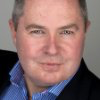 Quality assurance was originally conceived to document a set of procedures aimed at ensuring that quality standards and processes were adhered to by a business; but has now moved beyond the tick box concept and can play an integral part in improving business performance.
Quality assurance was originally conceived to document a set of procedures aimed at ensuring that quality standards and processes were adhered to by a business; but has now moved beyond the tick box concept and can play an integral part in improving business performance.
Specialist contractors are increasingly expected to demonstrate independent certification to the ISO standards of Quality Management (ISO 9001), Environmental Management (ISO 14001) and Health & Safety Management (OHSAS 18001), especially if they want to work for the better customers at the higher levels of the industry. Continue reading
#124 – US FEDERAL ERM REQUIREMENTS – GREG HUTCHINS
Featured
 Last year, we reported that White House Office of Management and Budget (OMB – executive office) is requiring US departments to design and implement Enterprise Risk Management (ERM). The requirements are part of the OMB Circular A 11 Section 270 – Performance and Strategic Reviews.
Last year, we reported that White House Office of Management and Budget (OMB – executive office) is requiring US departments to design and implement Enterprise Risk Management (ERM). The requirements are part of the OMB Circular A 11 Section 270 – Performance and Strategic Reviews.
#124 – COULD YOU BE LIABLE FOR THE HEALTH OF YOUR EMPLOYEE’S CHILDREN? – ANNETTE DAVISON
Featured
 Could you be liable for the health of your employees’ children and grandchildren?
Could you be liable for the health of your employees’ children and grandchildren?
Work health and safety legislation in Australia places a strict duty on the ‘person conducting the business or undertaking’ to understand, monitor and mitigate workplace risks. This is not new, we know that employers are responsible for their employees. Continue reading
#124 – AN ANGEL IN DISTRESS – DAVID PATRISHKOFF
Featured
 This is the second CERM Insights article in a series about the application of Cascade Effect Thinking and tools to mitigate risks and transform them into dramatic improvements and even disruptive innovations for small, mid-sized and very large organizations.
This is the second CERM Insights article in a series about the application of Cascade Effect Thinking and tools to mitigate risks and transform them into dramatic improvements and even disruptive innovations for small, mid-sized and very large organizations.
More than a million ISO certified companies will have to integrate risk management with a risk assessment. We detail a case study how this can be done using quality risk tools. Four of 40 possible cascading risk assessment and management tools are demonstrated in this case study: Gamified Process Risk Mapping, New Process Wish List, Cascading Risk Map & the Future State Process Map. Continue reading
#124 – ANATOMY OF A MEDICAL DEVICE ATTACK – JEFF HARRIS
Featured
 TrapX, a security company that specializes in medical device attacks, outlined how these attacks occur in a report titled “Anatomy of an Attack: MedJack” in May of 2015. In this report several case studies are examined in detail. In the first case study, malware was inserted on a blood gas analyzer. Continue reading
TrapX, a security company that specializes in medical device attacks, outlined how these attacks occur in a report titled “Anatomy of an Attack: MedJack” in May of 2015. In this report several case studies are examined in detail. In the first case study, malware was inserted on a blood gas analyzer. Continue reading
#124 – PERSONAL RISK IN THE INTERNET OF THINGS – KIRBY URNER
Featured
 Last month in this blog, I chronicled a “device failure”: my car key broke off in the ignition. I modeled this “exception” (to my reasonable expectations) using Python code, suggesting pseudo-coding one’s risk model as a first step in a risk assessment process. Continue reading
Last month in this blog, I chronicled a “device failure”: my car key broke off in the ignition. I modeled this “exception” (to my reasonable expectations) using Python code, suggesting pseudo-coding one’s risk model as a first step in a risk assessment process. Continue reading
#124 – PROJECT QUALITY REVIEWS AND AUDITS – MICHAEL STANLEIGH
Featured
 We have audited projects from a variety of industry sectors including: Manufacturing, Information Technology, Software Development, Insurance, Banking, Mining, Government and Universities. Despite the differences in their services and products, our approach to completing a project quality review & audit is similar. It requires about three (3) very intensive weeks to complete the in-depth quality review & audit and deliver the final report. Continue reading
We have audited projects from a variety of industry sectors including: Manufacturing, Information Technology, Software Development, Insurance, Banking, Mining, Government and Universities. Despite the differences in their services and products, our approach to completing a project quality review & audit is similar. It requires about three (3) very intensive weeks to complete the in-depth quality review & audit and deliver the final report. Continue reading
#123 – SHOULD MY KID GO TO COLLEGE? – VICTORIA LAI
Featured
 Nowadays, even an entry level job seems to require a college degree. But at what cost – to the student and to the parents?
Nowadays, even an entry level job seems to require a college degree. But at what cost – to the student and to the parents?
So, you can guess what’s keeping me up at night! “Should my kid go to college?’ Or so, we have all been trained to think. Continue reading
#123 – INCREASE ORGANIZATIONAL EFFECTIVENESS THROUGH PROJECT QUALITY REVIEWS & AUDITS – MICHAEL STANLEIGH
Featured
 Corporations throughout the world are losing billions in wasted project spending owing to their mis-management, poor quality processes, lack of knowledge in how to manage projects, etc. These projects are often not included in the normal auditing practices. Understanding the process of auditing projects, in addition to their other best practices; will positively impact the organization’s profits, shareholders and customers by ensuring well-informed decisions are made about their key projects. Continue reading
Corporations throughout the world are losing billions in wasted project spending owing to their mis-management, poor quality processes, lack of knowledge in how to manage projects, etc. These projects are often not included in the normal auditing practices. Understanding the process of auditing projects, in addition to their other best practices; will positively impact the organization’s profits, shareholders and customers by ensuring well-informed decisions are made about their key projects. Continue reading
#123 – MEDICAL DEVICE ATTACKS – JEFF HARRIS
Featured
 What cybersecurity threats are happening right now involving medical devices? In a word – malware. TrapX, a security company thoroughly examined three hospitals for the presence of malware. The results were astounding. They found malware in X-ray equipment, blood gas analyzers, CT scanners, and ventilators, as well as infusion pumps. Continue reading
What cybersecurity threats are happening right now involving medical devices? In a word – malware. TrapX, a security company thoroughly examined three hospitals for the presence of malware. The results were astounding. They found malware in X-ray equipment, blood gas analyzers, CT scanners, and ventilators, as well as infusion pumps. Continue reading
#123 – WHAT IS RISK? – GREG HUTCHINS
Featured
 Risk is an interesting concept because there are a number of definitions and interpretations. And this bears on quality because the lack of consistency can make deployment difficult.
Risk is an interesting concept because there are a number of definitions and interpretations. And this bears on quality because the lack of consistency can make deployment difficult.
Two elements to risk can be seen in the below definitions. There is upside risk and there is downside risk. Some risk definitions have this and others don’t.
Upside risk is opportunity risk, the reward that can be achieved in undertaking a new endeavor. Downside risk is the risk of loss. For example, project risk is the inability to achieve project objectives within cost, schedule, and quality constraints. Process risks are the risks of producing nonconforming products or services due to unstable and incapable processes. Continue reading
#123 – CASCADE EFFECT THINKING – DISRUPTIVE PARADIGM SHIFTING – DAVID PARISHKOFF
Featured
 If Knowledge is Power, then understanding the cascading factors that shape our destiny can potentially offer Disruptive Knowledge and Decisive Power. Cascade Effect Thinking (CET) is a new paradigm that dynamically discovers the truth about interacting threats and opportunities in unique, analytical and gamified ways. Continue reading
If Knowledge is Power, then understanding the cascading factors that shape our destiny can potentially offer Disruptive Knowledge and Decisive Power. Cascade Effect Thinking (CET) is a new paradigm that dynamically discovers the truth about interacting threats and opportunities in unique, analytical and gamified ways. Continue reading
#123 – Why Quality Professionals Fail to Get Boardroom Buy In – Syed Ali
Featured
 My observation in the last 40 years working and negotiating in various parts of the world is that we do not know how to effectively communicate the concept of quality in business and financial terms to the board. We are very poor at talking “Business”
My observation in the last 40 years working and negotiating in various parts of the world is that we do not know how to effectively communicate the concept of quality in business and financial terms to the board. We are very poor at talking “Business”
Quality professionals fail to get the attention of the top management and it’s often because they do little more than regurgitate the requirements of standard. Continue reading
#122 – NAPOLEON’S LESSONS IN STRATEGIC MANAGEMENT – GREG CARROLL
Featured
 With 2015 being the 200th anniversary of the Battle of Waterloo and having a man-crush on Napoleon B, I have taken this opportunity to revisit some of lessons we can learn (good & bad) from his 20 year reign as master of the universe. Continue reading
With 2015 being the 200th anniversary of the Battle of Waterloo and having a man-crush on Napoleon B, I have taken this opportunity to revisit some of lessons we can learn (good & bad) from his 20 year reign as master of the universe. Continue reading
#122 – IS FAA AGREEMENT WITH BOEING A TEMPLATE FOR RISK? – JAMES KLINE PH.D.
Featured
 In the past two years, a number of global companies have been fined for committing major violations of law or safety regulations. General Motors (GM) was fined $35 million. A US Congressional investigation determined that GM engineers looking at ignition switch complaints, made a design change, but failed to issue a recall notice. Continue reading
In the past two years, a number of global companies have been fined for committing major violations of law or safety regulations. General Motors (GM) was fined $35 million. A US Congressional investigation determined that GM engineers looking at ignition switch complaints, made a design change, but failed to issue a recall notice. Continue reading
#122 – Value Added Auditing™ = Analytical Auditing – Greg Hutchins
Featured
 Quality, system, and internal auditing are focusing on risk management, process control, process capability, and organizational effectiveness. These value added audits require more information to be collected and analyzed to evaluate value, risk, waste, effectiveness, and efficiency. As an organization moves toward value added auditing, the auditor or audit team will collect more information, conduct in-depth analysis, and obtain sufficient evidence in order to reach conclusions. Continue reading
Quality, system, and internal auditing are focusing on risk management, process control, process capability, and organizational effectiveness. These value added audits require more information to be collected and analyzed to evaluate value, risk, waste, effectiveness, and efficiency. As an organization moves toward value added auditing, the auditor or audit team will collect more information, conduct in-depth analysis, and obtain sufficient evidence in order to reach conclusions. Continue reading
#122 – METHODS TO ESTIMATE ALT VALUE – FRED SCHENKELBERG
Featured
 Here is an example of how to determine the future value of a specific reliability task. Many of us face the challenge of how to justify spending product development resources to provide insights and information to the rest of the team. Accelerated life testing (ALT) is particularly difficult: It is time consuming, expensive, and at times statistically complex. Having a clear method to estimate the value serves your career and the organization well, as both benefit from the right investments. Continue reading
Here is an example of how to determine the future value of a specific reliability task. Many of us face the challenge of how to justify spending product development resources to provide insights and information to the rest of the team. Accelerated life testing (ALT) is particularly difficult: It is time consuming, expensive, and at times statistically complex. Having a clear method to estimate the value serves your career and the organization well, as both benefit from the right investments. Continue reading
#122 – REVIEW OF TOP POTENTIAL THREATS AND EMERGING CRISES FOR 2016 – GEARY SIKICH
Featured
 Threat Analysis 2016 – A Review of Top Potential Threats and Emerging Crises for 2016
Threat Analysis 2016 – A Review of Top Potential Threats and Emerging Crises for 2016
We are well beyond the dreaded Mayan Calendar apocalypse of 2013. In November 2016, the United States will have a Presidential election and a new president. How well will we do, or, how poorly will we perform when, and if, unplanned for crises emerge from threats that we continue to overlook? My top picks for threats, emerging crisis issues and high impact risks in 2016 and their current status: Continue reading
#122 – YOUR MEDICAL DEVICE IS HACKABLE – JEFF HARRIS
Featured
 In 2011, at a hacking convention known as Black Hat, a security researcher and insulin pump user demonstrated how he could remotely disable and modify his insulin pump over a wireless connection using inexpensive and readily available equipment.
In 2011, at a hacking convention known as Black Hat, a security researcher and insulin pump user demonstrated how he could remotely disable and modify his insulin pump over a wireless connection using inexpensive and readily available equipment.
In 2012, another security researcher demonstrated how he could capture and reverse engineer wireless communication from an Implantable Cardioverter Defibrillator (ICD) and cause the device to deliver a lethal shock to the heart. Continue reading
#121 – RISK, CODING, AND LIFE – KIRBY URNER
Featured
As I was leaving the training facility (<guild />) this afternoon, turning the key in my car’s ignition, it broke off. Having a backup key somewhere hidden under the car would have been nice. No such luck. At least I had one at home, and access to public transportation. Continue reading
#121 – THREE REASONS WHY YOUR QMS IS LIKELY FRUSTRATING – ERIC SCHULZE
Featured
 Many hospitals have started the ISO 9001 journey. This journey probably started because the hospital wanted a fresh and new approach with their accreditation. For the first time a hospital could begin to decide how they would meet requirements and not have to abide by a prescriptive way of doing things. Continue reading
Many hospitals have started the ISO 9001 journey. This journey probably started because the hospital wanted a fresh and new approach with their accreditation. For the first time a hospital could begin to decide how they would meet requirements and not have to abide by a prescriptive way of doing things. Continue reading
#121 – WorkingIt.com Website, Prospering In Disruption – Greg Hutchins
Featured
We developed WorkingIt.com to explain how work, careers, and jobs are evolving. The site’s tagline is ‘Brand U Work in the Disruption Economy.”
A full treatment of work, careers, and jobs is beyond the scope of this site and frankly beyond my abilities. Hopefully, this site offers a unique structure, my thoughts about how you’ll work due to the current epidemic of disruption and how you’ll progress in your Brand U career. Continue reading
#121 – RISK AND POKA YOKE – JAMES KLINE PH.D.
Featured
 On March 28, 1979 there was a cascading failure in reactor number 2 at Three Mile Island. This failure allowed large amounts of nuclear reactor coolant to escape. The accident coalesced the anti-nuclear movement and ultimately caused the decline in nuclear plant construction in the United States. Continue reading
On March 28, 1979 there was a cascading failure in reactor number 2 at Three Mile Island. This failure allowed large amounts of nuclear reactor coolant to escape. The accident coalesced the anti-nuclear movement and ultimately caused the decline in nuclear plant construction in the United States. Continue reading
#121 – MECHANICAL RELIABILITY TESTING – FRED SCHENKELBERG
Featured
 Mechanical systems wear out and fail eventually. The ability of a structure to support a load, move though the specified range of motion, or spin degrades with use and time. Even our joints eventually wear out.
Mechanical systems wear out and fail eventually. The ability of a structure to support a load, move though the specified range of motion, or spin degrades with use and time. Even our joints eventually wear out.
Accelerated life testing (ALT) has value as it provides information about a system’s reliability performance in the future. There is plenty of ALT literature concerning the failure mechanisms unique to electronic components and materials but less has been written about mechanical reliability testing. Continue reading
#121 – FIXING AUDIT FINDINGS – JOHN MASON
Featured
 The audit is finished, the exit meeting conducted and the audit report has hit your desk. As discussed, there should be no surprises, there should be correctly categorised findings, and specific examples.
The audit is finished, the exit meeting conducted and the audit report has hit your desk. As discussed, there should be no surprises, there should be correctly categorised findings, and specific examples.
Now you have 3, 6, 9 or 12 months in which to fix them. Continue reading
#120 – RISK BASED, DECISION MAKING – ED PERKINS
Featured
 Risk based decision making is employed to implement risk management. But how is this implemented? In this article we will look at the process of making “risk based” decisions.
Risk based decision making is employed to implement risk management. But how is this implemented? In this article we will look at the process of making “risk based” decisions.
Risk management is a process that involves several activities.
- Risk Assessment, to identify and assess risks and Risk Events;
#120 – RISK BASED THINKING: PATIENT SAFETY THROUGH ACCREDITATION – TED SCHMIDT
Featured
 This past week, Centers for Medicare and Medicaid Services (CMS) identified 758 hospitals that have high rates of patient safety issues. As a result, their 2016 Medicare reimbursements are being reduced by 1%. This is the second year for this federal mandate and there are over 400 (over 50%) repeat hospitals. The CMS program is entitled “Hospital-Acquired Condition Reduction Program”. The name alone is very telling. Continue reading
This past week, Centers for Medicare and Medicaid Services (CMS) identified 758 hospitals that have high rates of patient safety issues. As a result, their 2016 Medicare reimbursements are being reduced by 1%. This is the second year for this federal mandate and there are over 400 (over 50%) repeat hospitals. The CMS program is entitled “Hospital-Acquired Condition Reduction Program”. The name alone is very telling. Continue reading
#120 – IS VUCA DISRUPTING ISO? – GREG HUTCHINS
Featured
 Yes. Standards making organizations are being disrupted by Volatility, Uncertainty, Complexity, Ambiguity (VUCA).
Yes. Standards making organizations are being disrupted by Volatility, Uncertainty, Complexity, Ambiguity (VUCA).
In much the same way, ISO is innovating with RBT and risk requirements.
It seems ISO is innovating and developing a new business model based on RBT due to its changing marketplace and its uncertainty, specifically: Continue reading
#120 – ALPHA AND BETA TESTING – FRED SCHENKELBERG
Featured
 During the development process you and team may work to understand what customers may want or expect for the new product. You may even conduct focus groups or review past product field failures and call center records. Alpha and beta testing are crucial components to the development process.
During the development process you and team may work to understand what customers may want or expect for the new product. You may even conduct focus groups or review past product field failures and call center records. Alpha and beta testing are crucial components to the development process.
Your customers are your best testers for your next product. They will explore the features, expose the product to use conditions in unconscious ways, and let you what they consider failures without needing the specification document. Continue reading
#120 – DESIGN FOR MANUFACTURABILITY, REVISITED – TIM RODGERS
Featured
 I was going through some old papers the other day and discovered an article I wrote in September 1990 about design for manufacturability (DFM). I had just completed my first assignment at Hewlett-Packard’s now-defunct Printed Circuit Division, co-authoring a DFM manual for circuit designers to guide their decision-making when evaluating options. Continue reading
I was going through some old papers the other day and discovered an article I wrote in September 1990 about design for manufacturability (DFM). I had just completed my first assignment at Hewlett-Packard’s now-defunct Printed Circuit Division, co-authoring a DFM manual for circuit designers to guide their decision-making when evaluating options. Continue reading
#119 – WHY DOESN’T PRODUCT TESTING CATCH EVERYTHING? – FRED SCHENKELBERG
Featured
 In an ideal world the design of a product or system will make use of perfect knowledge of all the risks and failure mechanisms. The designed product then is built perfectly without any errors or unexpected variation and will simply function as expected for the customer. Wouldn’t that be nice!
In an ideal world the design of a product or system will make use of perfect knowledge of all the risks and failure mechanisms. The designed product then is built perfectly without any errors or unexpected variation and will simply function as expected for the customer. Wouldn’t that be nice!
Along with perfect manufacturing and perfect materials, the assumption that we have perfect knowledge is the kicker though.
#119 – ARE WE SOWING THE SEEDS OF OUR OWN DESTRUCTION? – HOWARD M. WIENER
Featured
 I’m becoming increasingly concerned that we’re on our way to creating an environment that will breed domestic terrorists and enable foreign ones.
I’m becoming increasingly concerned that we’re on our way to creating an environment that will breed domestic terrorists and enable foreign ones.
First and most importantly, we’re creating an environment in which people are marginalized. This is exactly the mechanism that has spawned numerous splinter groups and terrorist organizations in the Middle East and Northern Africa. These groups have certainly exaggerated and publicized their marginalization to bolster their own agendas, but there’s a germ (or more) of truth in many cases. Continue reading
#119 – TEN WAYS OF COPING WITH A BAD BOSS – CHRIS ANDERSON
Featured
 First, understand that your boss may not know they are a bad boss. A hands-off manager may not realize that failure to provide any direction or feedback is a symptom of a bad boss. What are the main management mistakes that they’re making and how do you go about coping with a bad boss? Continue reading
First, understand that your boss may not know they are a bad boss. A hands-off manager may not realize that failure to provide any direction or feedback is a symptom of a bad boss. What are the main management mistakes that they’re making and how do you go about coping with a bad boss? Continue reading
#119 – IMPLEMENTING VALUE ADDED AUDITING IN HEALTHCARE – TED SCHMIDT
Featured
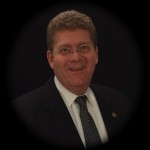 “We need help with our audit program”. “Our internal auditing is expensive and leadership wants it to show value”. And finally, “Our auditors will audit where they know they’ll find the known problems”.
“We need help with our audit program”. “Our internal auditing is expensive and leadership wants it to show value”. And finally, “Our auditors will audit where they know they’ll find the known problems”.
These are quotes that we hear routinely with DNVGL hospitals. These statements are coming from the individuals who are in charge of the audit program, the internal auditors, and of course, leadership. Continue reading
#119 – WHAT IS ISO CONTEXT? – GREG HUTCHINS
Featured
 Context is a critical concept introduced and used extensively in ISO 9001:2015. ISO 31000 defines context as the environment in which the organization operates and achieves its business objectives.
Context is a critical concept introduced and used extensively in ISO 9001:2015. ISO 31000 defines context as the environment in which the organization operates and achieves its business objectives.
In ISO 9001:2015, context may also include the following:
- Culture, tone at the top, Corporate Social Responsibility (CSR) and other critical competitive attributes.
#118 – THE JERK AT WORK! – ELIZABETH LIONS
Featured
 There is a game being played at work.
There is a game being played at work.
After witnessing thousands of promotions and job searches, this is the best analogy I have to describe what goes on: the office is nothing but a game.
As in any game, there are rules.
Make no mistake, the people at the top know the game and the rules, which is how they got there.
#118 – ISO 31000 PRINCIPLES – GREG HUTCHINS
Featured
 ISO 31000 is organized around 11 risk management principles. A management principle refers to a fundamental idea, rule, or truth about a subject. ISO 31000 risk principles serve as the guideline, method, logic, design, and implementation for the risk management framework and its process. Continue reading
ISO 31000 is organized around 11 risk management principles. A management principle refers to a fundamental idea, rule, or truth about a subject. ISO 31000 risk principles serve as the guideline, method, logic, design, and implementation for the risk management framework and its process. Continue reading
#118 – HOW TO ESTIMATE RELIABILITY WITHOUT PROTOTYPES – FRED SCHENKELBERG
Featured
 HOW TO ESTIMATE RELIABILTY EARLY IN A PROGRAM
HOW TO ESTIMATE RELIABILTY EARLY IN A PROGRAM
In a few discussions about the perils of the mean time between failures (MTBF), individuals have asked about estimating MTBF (reliability) early in a program. They quickly referred to various parts count prediction methods as the only viable means to estimate MTBF. Continue reading
#118 – HOW DISRUPTORS CAN LEARN FROM THEIR FOREBEARS – DANIEL BURRUS
Featured
 In today’s vastly complex economic landscape, many companies would like to be the “disruptor” instead of being the “disrupted” — that is, they want to find a new niche in a certain industry, a problem no one’s yet been able to solve or one nobody’s aware of, and they want to exploit this niche and solve this problem, thereby upending their industry with next-gen technology and unprecedented business methods. Continue reading
In today’s vastly complex economic landscape, many companies would like to be the “disruptor” instead of being the “disrupted” — that is, they want to find a new niche in a certain industry, a problem no one’s yet been able to solve or one nobody’s aware of, and they want to exploit this niche and solve this problem, thereby upending their industry with next-gen technology and unprecedented business methods. Continue reading
#118 – UAV’S COMING TO YOUR NEIGHBORHOOD – PAUL KOSTEK
Featured
 Here in Seattle we’ve had several interesting incidents/accidents with personal UAVs (unmanned aerial vehicles) or drones.
Here in Seattle we’ve had several interesting incidents/accidents with personal UAVs (unmanned aerial vehicles) or drones.
In one case a person flew their UAV into the Space Needle, no damage and no one was hurt; at a parade an operator lost control and hit and knocked out a parade attendee and the operator was cited by police; UAV stuck on power lines over a lake, result – power turned off and UAV recovered at a cost of $35K and the operator was not found; and just recently a UAV was flown into the Ferris wheel on the waterfront, no damage to the wheel though a table on a nearby deck was destroyed. Continue reading
#117 – A RISK WORTH TAKING – PAUL PALMES
Featured
 The 2015 revision of ISO 9001 adds the concept of “Risk-based Thinking” to quality management systems (QMS) requiring registered organizations to “determine the risks and opportunities” needed to ensure that the QMS achieves expected results and improvement. Clause 6.1, (Actions to address Risks and Opportunities), is one of several clauses created by ISO’s new “high level structure” designed to produce a common format and base level text within its catalog of management systems standards. The addition of risk-based thinking is a welcome addition to ISO 9001, currently the largest selling standard in the world and applicable to any organization seeking third party registration of their products and/or services in the marketplace. Continue reading
The 2015 revision of ISO 9001 adds the concept of “Risk-based Thinking” to quality management systems (QMS) requiring registered organizations to “determine the risks and opportunities” needed to ensure that the QMS achieves expected results and improvement. Clause 6.1, (Actions to address Risks and Opportunities), is one of several clauses created by ISO’s new “high level structure” designed to produce a common format and base level text within its catalog of management systems standards. The addition of risk-based thinking is a welcome addition to ISO 9001, currently the largest selling standard in the world and applicable to any organization seeking third party registration of their products and/or services in the marketplace. Continue reading
#117 – ISO 31000: MUST KNOW STANDARD – GREG HUTCHINS
Featured
 More ISO management systems are incorporating RBT and risk, so the standard is becoming a ‘must know’ standard. ISO 31000 risk management principles, risk management framework, and risk management process are the preferred tools to use with ISO management systems because ISO 31000: Continue reading
More ISO management systems are incorporating RBT and risk, so the standard is becoming a ‘must know’ standard. ISO 31000 risk management principles, risk management framework, and risk management process are the preferred tools to use with ISO management systems because ISO 31000: Continue reading
#117 – EMERGENCY EYEWASH RESPONSE BEST PRACTICES – DR. BILL POMFRET
Featured
 During the past year or so while conducting 5 Star Health & Safety Management System™ Audits, I have been astounded at the number of chemical plants and laborites where employees had not practiced, and could not use the provided eyewash stations. Continue reading
During the past year or so while conducting 5 Star Health & Safety Management System™ Audits, I have been astounded at the number of chemical plants and laborites where employees had not practiced, and could not use the provided eyewash stations. Continue reading
#117 – FACING THE FEAR OF STATISTICS – FRED SCHENKELBERG
Featured
 When reading a report and there is a large complex formula, maybe a derivation, do you just skip over it? Does a phrase such as 95% confidence of 98% reliability over 2 years not help your understanding of the result? When you read about hypothesis testing, confidence intervals, point estimates, parameters, independent identically distributed variables, random samples, orthogonal arrays, do you just shiver a bit? Do you know of folks around you who not only do not understand these terms but do not want to understand them? Continue reading
When reading a report and there is a large complex formula, maybe a derivation, do you just skip over it? Does a phrase such as 95% confidence of 98% reliability over 2 years not help your understanding of the result? When you read about hypothesis testing, confidence intervals, point estimates, parameters, independent identically distributed variables, random samples, orthogonal arrays, do you just shiver a bit? Do you know of folks around you who not only do not understand these terms but do not want to understand them? Continue reading
#117 – GET PRODUCTS TO MARKET SOONER BY SYSTEMATIZING QUALITY CYCLES – JAMES JARDINE
Featured
Creating a product and getting it to market is not a one-time achievement. It entails a series of ongoing cyclical processes.
It all starts with an initial idea developed with a collaborative team. Input is gathered from all the necessary sources and then tweaks to the original concept are made as needed. Many different types of reviews, approvals, and regulatory checks are also required during this development stage. Then it’s time to provide suppliers or vendors with specific orders to ensure all the puzzle pieces will fit together as planned. Once your organization’s employees receive all the training they need to make the product according to the specifications that have been devised it feels like you’ve almost reached the finish line. Now you just flip a switch and watch as the magic is made while you celebrate your magnificent accomplishment, right? Continue reading
#117 – PREVENTIVE ACTION IS DEAD: LONG LIVE RISK BASED THINKING – STEPHEN FLICK
Featured
 The latest revision of ISO 9001 has done away with the preventive actionclause[1], which reads as follows:
The latest revision of ISO 9001 has done away with the preventive actionclause[1], which reads as follows:
“The organization shall determine action to eliminate the causes of potential nonconformities in order to prevent their occurrence. Preventive actions shall be appropriate to the effects of the potential problems. Continue reading
#116 – RBT IN HEALTHCARE – WHY COMMUNICATION IS KEY – JEFF HARRIS
Featured
 “The single biggest problem in communication is the illusion that it has taken place.”
“The single biggest problem in communication is the illusion that it has taken place.”
―George Bernard Shaw
On January 13th, 1982, an Air Florida passenger jet crashed into the 14th Street Bridge after takeoff from Washington National Airport, killing 74 passengers on the plane and 4 people in their vehicles on the bridge. After reviewing the flight data recorder, it was discovered that the first officer had repeatedly told the captain that something wasn’t right at takeoff and was rebuffed. Instead of assertively repeating his concerns, the first officer finally agreed with the captain that everything was normal. Continue reading
#116 – ISO 31000 RISK MANAGMENT PRINCIPLES – GREG HUTCHINS
Featured
I’ve been working on an ISO 31000 book and am struggling to finish it. Why?
Well. ISO 31000 standard is 26 pages. And, my book has ballooned out to more than 26o pages. Do I have to say more?
One reason why my book is ten times longer than the standard is because ISO 31000 is a guideline that is open to interpretation and based on guidelines. Continue reading
#116 – WHAT QUALITY REALLY MEANS? – LANE HIRNING
Featured
 A friend of mine recently asked me to review his PowerPoint presentation for an upcoming investor conference, which I was happy to do. The first thing that struck me was his choice of fonts—different types and different colors. Second was the slide templates creating an inconsistent layout. It seemed like a trivial thing to point out, but I had to ask him: What kind of a first impression are you going to make with this presentation? Continue reading
A friend of mine recently asked me to review his PowerPoint presentation for an upcoming investor conference, which I was happy to do. The first thing that struck me was his choice of fonts—different types and different colors. Second was the slide templates creating an inconsistent layout. It seemed like a trivial thing to point out, but I had to ask him: What kind of a first impression are you going to make with this presentation? Continue reading
#116 – MAKING SUPPLY CHAINS SAFER WITH GENDER EQUALITY PRINCIPLES – KELLY EISENHARDT
Featured
 Women working in global supply chains are most at risk for being victims of unfair practices, violence, and slavery. The United Nations recognizes this and has created the Women’s Empowerment Principles to help companies view these issues through the gender lens. Continue reading
Women working in global supply chains are most at risk for being victims of unfair practices, violence, and slavery. The United Nations recognizes this and has created the Women’s Empowerment Principles to help companies view these issues through the gender lens. Continue reading
#116 – THE CONSTANT FAILURE RATE MYTH – FRED SCHENKELBERG
Featured
#116 – WHY SHOULD A SUPPLIER WORK HARDER FOR YOU? – TIM RODGERS
Featured
 A recent LinkedIn discussion addressed the question of the best strategy for dealing with poor supplier performance. A lot of the respondents seemed to advocate a punitive approach, either threatening the loss of future business if performance doesn’t improve, or combing through the terms & conditions in the contract for enforcement language. I’ve always thought that there’s a lot of similarity between managing suppliers and managing subordinates, and I wonder if some of these same people threaten their teams with punitive actions when individual performance doesn’t meet expectations. Continue reading
A recent LinkedIn discussion addressed the question of the best strategy for dealing with poor supplier performance. A lot of the respondents seemed to advocate a punitive approach, either threatening the loss of future business if performance doesn’t improve, or combing through the terms & conditions in the contract for enforcement language. I’ve always thought that there’s a lot of similarity between managing suppliers and managing subordinates, and I wonder if some of these same people threaten their teams with punitive actions when individual performance doesn’t meet expectations. Continue reading
#115 – PONTIUS PILATE MANAGEMENT (AVOIDING ACCOUNTABILITY) – MALCOLM PEART
Featured
 How many times do we experience the situation when something bad happens and the manager who feels they may be responsible has his, or her, moral-fortitude challenged? The challenged manager inevitably goes into self-preservation mode. “Can I duck for cover?” and avoid the flak is their first question. But, and as with most bad situations, there is no time so how can blame be diverted? Continue reading
How many times do we experience the situation when something bad happens and the manager who feels they may be responsible has his, or her, moral-fortitude challenged? The challenged manager inevitably goes into self-preservation mode. “Can I duck for cover?” and avoid the flak is their first question. But, and as with most bad situations, there is no time so how can blame be diverted? Continue reading
#115 – DOES A CERTIFICATION MAKE YOU A PROFESSIONAL RELIABILITY ENGINEER? – FRED SCHENKELBERG
Featured
 Does a Certification Make You a Professional Reliability Engineer?
Does a Certification Make You a Professional Reliability Engineer?
The short answer to this question is “No, it doesn’t.”
A certification is just a piece of paper that conveys that you have mastered some body of knowledge. You most likely also committed to abide by a code of ethics. You may also have committed to continuing education to maintain the certification. Continue reading
#115 – ISO 31000 – LET THE FUN BEGIN! – GREG HUTCHINS
Featured
 First a confession. We say that we’ve been using ISO 31000 for a ten or so years.
First a confession. We say that we’ve been using ISO 31000 for a ten or so years.
Say what? ISO 31000 was developed in 2009. How can you been using the standard since 2006. OK, technically you’re right. But, we’ve been using AS/NZS 4360 since 2006. The Australian and New Zealand risk management standard was developed in 2004. Most importantly, ISO 31000 has a strong ‘look and feel’ to AS/NZS 4360. Continue reading
#115 – USE OF UNTREATED SEWAGE AS FERTILIZER IN CANANA – DR. BILL POMFRET
Featured
 The headlines this week regarding Montreal’s eight-billion-litre untreated sewage dump came and went with a few large plumes of dark-brown water or white effluent witnessed in the St. Lawrence River and strong early morning odours in some quarters, but little visible sewage detected overall. Continue reading
The headlines this week regarding Montreal’s eight-billion-litre untreated sewage dump came and went with a few large plumes of dark-brown water or white effluent witnessed in the St. Lawrence River and strong early morning odours in some quarters, but little visible sewage detected overall. Continue reading
#115 – STRUCTURING ICT MANAGEMENT TO ALIGN IT WITH THE ENTERPRISE PART II: UNDERSTANDING AS IS – HOWARD M. WIENER
Featured
 In the previous post, I defined a simple hierarchy for portraying the Enterprise:
In the previous post, I defined a simple hierarchy for portraying the Enterprise:
- Strategy—What markets will we serve and how will we position ourselves in them?
- Business Model—What products and services will we sell? What characteristics will they have? How will they be priced? How will we publicize and advertise them?
- Operating Model—How will we produce what we will sell? What capabilities are required?
- Operational Architecture—How will we design and enable our organization to provide the capabilities needed?
#115 – WHAT MAKES A GOOD OPERATIONS MANAGER? – TIM RODGERS
Featured
 A few months ago someone posed an interesting question on a LinkedIn group discussion: What are the three most-important characteristics of a good operations manager? A lot of the discussions I’ve been following lately seem to be preoccupied with issues like this. What makes a good manager? Continue reading
A few months ago someone posed an interesting question on a LinkedIn group discussion: What are the three most-important characteristics of a good operations manager? A lot of the discussions I’ve been following lately seem to be preoccupied with issues like this. What makes a good manager? Continue reading
#114 – THE CONVENIENT USE OF MTBF – FRED SCHENKELBERG
Featured
 Sometimes making an assumption is a good thing. You can achieve more with less. A well-placed assumption saves you time, work, and worry. The right assumption may even be left unstated: It’s so good that no one questions it.
Sometimes making an assumption is a good thing. You can achieve more with less. A well-placed assumption saves you time, work, and worry. The right assumption may even be left unstated: It’s so good that no one questions it.
Have you ever assumed that the failures for a system follow an exponential distribution? Did you assume that tallying up the total hours and dividing by the number of failures was appropriate? Did you even check? Continue reading
#114 – RISK ASSESSMENT CHALLENGES – GREG HUTCHINS
Featured
 We have conducted hundreds of risk assessments in a number of sectors from homeland security to pension funds to Parks and Recreation departments. We have a number of hard lessons learned. These are some common mistakes we have made and seen: Continue reading
We have conducted hundreds of risk assessments in a number of sectors from homeland security to pension funds to Parks and Recreation departments. We have a number of hard lessons learned. These are some common mistakes we have made and seen: Continue reading
#114 – THREE THINGS I’VE LEARNED ABOUT QUALITY PROFESSIONALS – JOHN BECKSTRAND
Featured
 Over the past 15 years, as the leader of an organization dedicated to improving the success of the quality profession, I have met hundreds of people throughout the world who have a unique mission: build greater quality into the things we use every day. Continue reading
Over the past 15 years, as the leader of an organization dedicated to improving the success of the quality profession, I have met hundreds of people throughout the world who have a unique mission: build greater quality into the things we use every day. Continue reading
#114 – 5 STAR FIRE SAFETY AUDITING – Dr. BILL POMFRET
Featured
 Fire is probably the only single factor, which could completely paralyse a thriving enterprise in a short span of time, many managements have to their cost appreciated this too late when the stark realism of the situation presents itself in the form of twisted steel- work projecting a ghostly silhouette above a mass of blackened rubble. Continue reading
Fire is probably the only single factor, which could completely paralyse a thriving enterprise in a short span of time, many managements have to their cost appreciated this too late when the stark realism of the situation presents itself in the form of twisted steel- work projecting a ghostly silhouette above a mass of blackened rubble. Continue reading
#114 – RBT IN HEALTHCARE: SIPOC DIAGRAM FOR PROCESS MANAGEMENT – TED SCHMIDT
Featured
 This week I read in Forbes that a new study (published in October 2015 issue of Anesthesiology) finds that medication errors occur in one-half (50%) of all surgeries. This incorporates the perioperative, surgery and postoperative periods. The data continues to support the cold reality that as healthcare providers, we must change to protect our patients. Continue reading
This week I read in Forbes that a new study (published in October 2015 issue of Anesthesiology) finds that medication errors occur in one-half (50%) of all surgeries. This incorporates the perioperative, surgery and postoperative periods. The data continues to support the cold reality that as healthcare providers, we must change to protect our patients. Continue reading
#113 – IMPORTANCE OF PROFESSIONAL CLEANING – DR. BILL POMFRET
Featured
 The founder and president of Safety Projects International Inc, has a mission – to help clean up Canada and several other countries. However, rather than doing it himself, Dr Bill Pomfret aka Dr Clean is getting the workers themselves to do it – which is simple in its logic but offers a huge challenge in execution. Continue reading
The founder and president of Safety Projects International Inc, has a mission – to help clean up Canada and several other countries. However, rather than doing it himself, Dr Bill Pomfret aka Dr Clean is getting the workers themselves to do it – which is simple in its logic but offers a huge challenge in execution. Continue reading
#113 – CAN ISO 31K AND COSO ERM WORK TOGETHER? – GREG HUTCHINS
Featured
 ISO 31K and COSO ERM are the two competing risk management frameworks? ISO 31K is the national standard for many countries. However, COSO ERM is the de facto risk standard for many global and publicly listed companies.
ISO 31K and COSO ERM are the two competing risk management frameworks? ISO 31K is the national standard for many countries. However, COSO ERM is the de facto risk standard for many global and publicly listed companies.
We have used both. There are differences. However, the similarities outweigh the differences. And, the critical question is:
So, can ISO 31000 and COSO ERM work together?
Yes. The COSO definition of control supports and reinforces ISO 9001:2015 control requirements, specifically both frameworks are: Continue reading
#113 – THE PAPER ECONOMY! – STUART ROSENBERG
Featured
 No, this is not a reference to the Paper & Pulp Industry, though it could be considering how much paper money was floating.
No, this is not a reference to the Paper & Pulp Industry, though it could be considering how much paper money was floating.
The textbook definition of free-market capitalism states that the sole function of business is to create shareholder value and that the free market can regulate itself. Continue reading
#113 – DEFENDING WOMEN IN ASIA, AFRICA AND LATIN AMERICA – KELLY EISENHARDT
Featured
 Womankind Worldwide has helped more than 18 million women and their families across the globe over the last 26 years with issues of discrimination, poverty, and violence. The organization sees the newly passed U.N. Sustainable Development Goals as a path toward the future and as a way to engage all levels of government and civil society in the safety and empowerment of women and their families. Continue reading
Womankind Worldwide has helped more than 18 million women and their families across the globe over the last 26 years with issues of discrimination, poverty, and violence. The organization sees the newly passed U.N. Sustainable Development Goals as a path toward the future and as a way to engage all levels of government and civil society in the safety and empowerment of women and their families. Continue reading
#113 – WHY DO YOU NEED A CYBER SECURITY SYSTEM? – ED PERKINS
Featured
 Cybersecurity (or lack thereof) is nearly a daily news story. Many stories revolve around lack of ‘compliance’ with expected practices and regulations. Others detail how the cyber attackers apparently waltzed in and ran roughshod over a company’s or organization’s computer systems. Continue reading
Cybersecurity (or lack thereof) is nearly a daily news story. Many stories revolve around lack of ‘compliance’ with expected practices and regulations. Others detail how the cyber attackers apparently waltzed in and ran roughshod over a company’s or organization’s computer systems. Continue reading
#113 – DID YOU SAY ‘OLD FART’ – LEIZA DOLGHIH
Featured
#112 – HEALTHCARE@RISK: DEFINING RISK-BASED THINKING – TED SCHMIDT
Featured
 Hospitals that conform or certify to ISO 9001 (specifically those in the DNV-GL Healthcare accreditation scheme) are aware of the recent revision to ISO 9001. This 2015 version introduces a new term, “risk-based thinking”, that is raising eyebrows and causing ire in some circles. The main source of this ire is the fact that risk-based thinking is not defined in ISO 9001:2015 or in the associated standard ISO 9000:2015, “Fundamentals and Vocabulary”. Continue reading
Hospitals that conform or certify to ISO 9001 (specifically those in the DNV-GL Healthcare accreditation scheme) are aware of the recent revision to ISO 9001. This 2015 version introduces a new term, “risk-based thinking”, that is raising eyebrows and causing ire in some circles. The main source of this ire is the fact that risk-based thinking is not defined in ISO 9001:2015 or in the associated standard ISO 9000:2015, “Fundamentals and Vocabulary”. Continue reading
#112 – WHY I’M NOT IN HIGH SCHOOL – MARGAUX HUTCHINS
Featured
 In the United States, every child is supposed to go to high school. This is the law in most countries.
In the United States, every child is supposed to go to high school. This is the law in most countries.
I decided to break the law. I don’t go to high school.
If you’re a parent, check in with your kids and ask them what they think of school. It may be a good conversation starter on their future. It may save you money for not being on the hook for paying for college. Continue reading
#112 – LET’S TALK ABOUT PAY! – LEIZA DOLGHIH
Featured
 Negotiating employment agreements or the real reason why Jennifer Lawrence got paid less than Bradley Cooper. Somebody recently went through Sony’s hacked e-mails and found some that show Jennifer Lawrence and Amy Adams were paid less than the male leads in American Hustle. This prompted Jennifer Lawrence to write an essay titled“Why Do I make Less Than My Male Co-Stars?” Continue reading
Negotiating employment agreements or the real reason why Jennifer Lawrence got paid less than Bradley Cooper. Somebody recently went through Sony’s hacked e-mails and found some that show Jennifer Lawrence and Amy Adams were paid less than the male leads in American Hustle. This prompted Jennifer Lawrence to write an essay titled“Why Do I make Less Than My Male Co-Stars?” Continue reading
#112 – MENTAL HEALTH IS THE WEAK LINK IN HEALTH AND SAFETY PROGRAMS – DR. BILL POMFRET
Featured
 Mental Health is the weak link in most company’s health & safety programs, it is really a Silent Epidemic surrounded by stigma.
Mental Health is the weak link in most company’s health & safety programs, it is really a Silent Epidemic surrounded by stigma.
Mental health issues are often buried in the workplace says Dr. Bill Pomfret, Managing consultant of Safety Projects International Inc. who is trying to uncover them, at a recent conference he asked over 400 delegates, how many had a system in place for managing mental health, it was pitiful, with only a few hands being raised. Continue reading
#112 – LEAN SIX SIGMA AND THE SIPOC TOOL FOR HIGHER ED – NORMA SIMONS
Featured
 The Lean Six Sigma (LSS) methodology that was originally developed in manufacturing is slowly making its way to the education space. As the concepts of Lean Six Sigma spread and provide the template for improving efficiency and enhancing institutional performance, the SIPOC tool is invaluable for changing the thinking and approach to project management, process improvement and LSS implementation. Continue reading
The Lean Six Sigma (LSS) methodology that was originally developed in manufacturing is slowly making its way to the education space. As the concepts of Lean Six Sigma spread and provide the template for improving efficiency and enhancing institutional performance, the SIPOC tool is invaluable for changing the thinking and approach to project management, process improvement and LSS implementation. Continue reading
#111 – VW ‘ROGUE ENGINEERS’ MADE THE DECISION – PAUL KOSTEK
Featured
 “To the best of my knowledge today, this was not a corporate decision,” he said. “This was a couple of software engineers who put this in for whatever reasons and I would also like to find out.” Continue reading
“To the best of my knowledge today, this was not a corporate decision,” he said. “This was a couple of software engineers who put this in for whatever reasons and I would also like to find out.” Continue reading
#111 – WHAT IS ISO 9001: 2015 AUDITABILITY? – GREG HUTCHINS
Featured
 This is the #1 question for CB’s with the new revision of ISO 9001:2015 standard. Most management experts acknowledge that ISO 9001:2015 is a significant change.
This is the #1 question for CB’s with the new revision of ISO 9001:2015 standard. Most management experts acknowledge that ISO 9001:2015 is a significant change.
Auditability implies consistent outcomes from auditing management systems. If outcomes are different among CB’s, then the quality of the assessment and the reliance on the outcomes may be called into question. Continue reading
#111 – FDA REQUESTS PUBLIC INPUT ON QUALITY METRICS GUIDANCE – OLIVER WOLF
Featured
 In line with the general shift towards risk-driven approaches in the quality management world, FDA is now taking steps towards applying those same principles to its own auditing schedule. At the end of July, the Center for Drug Evaluation and Research (CDER) and the Center for Biologics Evaluation and Research (CBER) released the draft guidance “Request for Quality Metrics” and is now seeking public input by September 28, 2015 on a number of key points. Continue reading
In line with the general shift towards risk-driven approaches in the quality management world, FDA is now taking steps towards applying those same principles to its own auditing schedule. At the end of July, the Center for Drug Evaluation and Research (CDER) and the Center for Biologics Evaluation and Research (CBER) released the draft guidance “Request for Quality Metrics” and is now seeking public input by September 28, 2015 on a number of key points. Continue reading
#111 – WHAT IS QUALITY MANAGEMENT? – IAN WALKER
Featured
 ‘Quality Management’ is a generic term, and the word ‘Quality’ means nothing on its own.
‘Quality Management’ is a generic term, and the word ‘Quality’ means nothing on its own.
‘Quality’ is an individual’s perception. Take a wrist watch for example. What is its purpose?
My first initial thoughts are to tell the time, however for others a wrist watch is much more than that it may often be viewed a piece of jewellery and the more expensive the exclusive the brand name the better. Continue reading
#111 – ISO 9001:2015 IS OUT: WHAT NOW? – JAMES KLINE
Featured
The ISO 9001.2015 standard is out. Two important questions are: How did we get here? What happens now? Greg Hutchins, a Risk and Quality Expert, in his book “ISO: Risk Based Thinking 2015 Edition”, says we have gotten here through an evolutionary process, which, because of VUCA (Volatility, Uncertainty, Complexity and Ambiguity), requires a greater assessment of the external environment than is the case with just a quality focus. Continue reading
#111 – PREDICT FUTURE BENEFITS THROUGH EFFECTIVE RISK MANAGEMENT – KIRON BONDALE
Featured
Benefits management needs to be practiced over the full lifecycle of the project and  beyond.
beyond.
An integral component of benefits management is the regular re-validation of expected benefits. If this is not done, there is risk of continued investment without hope of a valid return based on changes to the assumptions and analysis supporting the original business case. Continue reading
#110 – T. ROWE PRICE INVESTS IN BALTIMORE WITH FINANCIAL EDUCATION – KELLY EISENHARDT
Featured
 To have the biggest impact companies need to invest in the communities in which they operate. T. Rowe Price believes Baltimore is worth the investment.
To have the biggest impact companies need to invest in the communities in which they operate. T. Rowe Price believes Baltimore is worth the investment.
Renee Christoff heads T. Rowe Price’s Corporate Social Responsibility department, focusing on strategic, effective, and impactful ways for the firm and its associates to engage in the community. Continue reading
#110 – THE 4 BIGGEST MISTAKES IN COMPLIANCE MANAGEMENT – GREG CARROLL
Featured
 Mere compliance with a Framework is an insufficient audit approach; it is critical to assess whether it is current, timely, communicated broadly, and meets the needs of the business. The 4 biggest mistakes are:
Mere compliance with a Framework is an insufficient audit approach; it is critical to assess whether it is current, timely, communicated broadly, and meets the needs of the business. The 4 biggest mistakes are:
- Not being Outcome focused
- Not using Risk base targeting
- Not Value Adding
- Not being timely Continue reading
#110 – SAFETY OF MIDDLE EASTERN MIGRANT WORKERS – DR. BILL POMFRET
Featured
 The culture in the Arab States is difficult to understand, especially the Kingdom of Saudi Arabia, e.g. the recent collapse of a crane at the Grand Mosque in Mecca was not a disaster but “a blessing in disguise”, the 107 people killed, say Muslim leaders “that dying while on the hajj is a ‘great honour from God” what about the other 238 who were injured?, they are not in heaven, but are innocent victims of the tragedy. Continue reading
The culture in the Arab States is difficult to understand, especially the Kingdom of Saudi Arabia, e.g. the recent collapse of a crane at the Grand Mosque in Mecca was not a disaster but “a blessing in disguise”, the 107 people killed, say Muslim leaders “that dying while on the hajj is a ‘great honour from God” what about the other 238 who were injured?, they are not in heaven, but are innocent victims of the tragedy. Continue reading
#110 – FIVE WAYS TO KEEP YOUR JOB SEARCH CONFIDENTIAL – ELIZABETH LIONS
Featured
 Many people decide the New Year is the time to find another job but with this fast moving market people are looking even in forth quarter. The exception to the rule would be individuals at the Manager, Director or Vice President level. They will hang onto their jobs until spring and ditch the job search until after they receive their sizable bonuses. Continue reading
Many people decide the New Year is the time to find another job but with this fast moving market people are looking even in forth quarter. The exception to the rule would be individuals at the Manager, Director or Vice President level. They will hang onto their jobs until spring and ditch the job search until after they receive their sizable bonuses. Continue reading
#110 – RBT IN HEALTHCARE: USING CHECKLISTS – TED SCHMIDT
Featured
 Failure Modes and Effects Analysis (FMEA) are utilized extensively in our hospitals in an effort to mitigate risk and help create a safer environment for our patients. As discussed in my last article, the completion of the FMEA is often times a pencil-whipping exercise. Continue reading
Failure Modes and Effects Analysis (FMEA) are utilized extensively in our hospitals in an effort to mitigate risk and help create a safer environment for our patients. As discussed in my last article, the completion of the FMEA is often times a pencil-whipping exercise. Continue reading
#110 – US REQUIREMENTS FOR RM AND ERM – GREG HUTCHINS
Featured
 We have been reporting for a year that the US government will be requiring risk management and enterprise risk management.
We have been reporting for a year that the US government will be requiring risk management and enterprise risk management.
WHITE HOUSE OFFICE OF MANAGEMENT AND BUDGET
The US Office of Management and Budget is requiring Enterprise Risk Management in operations through Order 1.11 because: Continue reading
#109 – SEPTEMBER 24TH HAJJ STAMPEDE DEATH TOLL REACHES 800 – DR. BILL POMFRET
Featured
 Yet another disaster has struck pilgrims on the annual Muslim pilgrimage, this time 800 worshippers were trampled to death and hundreds more were hurt beneath a crush of people making their way to a ritualistic stoning of the devil, a re-enactment of a story from the Quran involving the Prophet Abraham — that takes place during the hajj.
Yet another disaster has struck pilgrims on the annual Muslim pilgrimage, this time 800 worshippers were trampled to death and hundreds more were hurt beneath a crush of people making their way to a ritualistic stoning of the devil, a re-enactment of a story from the Quran involving the Prophet Abraham — that takes place during the hajj.
#109 – FAILING TO GET FEEDBACK ON FIELD FAILURES – FRED SCHENKELBERG
Featured
 Imagine you are requested to assist a design team in determining how to best improve the reliability of a product. You learn that the organization produces a range of point of sale (POS) devices and they have invited you to a meeting to discuss the product and ways to improve the field reliability. Continue reading
Imagine you are requested to assist a design team in determining how to best improve the reliability of a product. You learn that the organization produces a range of point of sale (POS) devices and they have invited you to a meeting to discuss the product and ways to improve the field reliability. Continue reading
#109 – THE INTERVIEW WITH KELLY EISENHARDT
Featured
 Kelly Eisenhardt, a writer for a number of publications including ours, is ascendent. Over the next few years, we’ll be hearing much more of her. Her specialty is sustainability and the environment. Here is her story: Continue reading
Kelly Eisenhardt, a writer for a number of publications including ours, is ascendent. Over the next few years, we’ll be hearing much more of her. Her specialty is sustainability and the environment. Here is her story: Continue reading
#109 – MOORE’S LAW CONTINUES TO DRIVE CHANGE – DANIEL BURRUS
Featured
 When I talk about digitization and digital advancement, I often mention what I refer to as the Three Digital Accelerators: bandwidth, storage, and processing power. These three technological tenets drive digital disruption and are increasing exponentially every year, and thanks to rapidly advancing technology, will continue to do so. Continue reading
When I talk about digitization and digital advancement, I often mention what I refer to as the Three Digital Accelerators: bandwidth, storage, and processing power. These three technological tenets drive digital disruption and are increasing exponentially every year, and thanks to rapidly advancing technology, will continue to do so. Continue reading
#109 – REQUIREMENTS DEVELOPMENT AND RISK MANAGEMENT – PAUL KOSTEK
Featured
 One of the keys to a successful project is having a set of requirements that are well defined and stable. We’ve all worked on projects where a lack of defined and controlled requirements has led to scope creep which result in schedule delays. Continue reading
One of the keys to a successful project is having a set of requirements that are well defined and stable. We’ve all worked on projects where a lack of defined and controlled requirements has led to scope creep which result in schedule delays. Continue reading
#108 – RELIABILITY GOALS: 4 KEY ELEMENTS – FRED SCHENKELBERG
Featured
 The reliability target, objective, mission, or goal is the statement that provides a design team with focus and direction. A well-stated goal will establish the business connection to the technical decisions related to product durability expectations, while providing clarity across the organization and enabling a common language for discussing design, supply chain, and manufacturing decisions. Continue reading
The reliability target, objective, mission, or goal is the statement that provides a design team with focus and direction. A well-stated goal will establish the business connection to the technical decisions related to product durability expectations, while providing clarity across the organization and enabling a common language for discussing design, supply chain, and manufacturing decisions. Continue reading
#108 – WHAT IS ERM? – GREG HUTCHINS
Featured
 ERM is a relatively new concept. There is a robust discussion among experts what it really means. Common ERM elements in most definitions include:
ERM is a relatively new concept. There is a robust discussion among experts what it really means. Common ERM elements in most definitions include:
- Follows a Governance, Risk, and Compliance (GRC) approach to business. Continue reading
#108 – INTEGRATING SUSTAINABILITY INTO TRADITIONAL EDUCATION: REVAMPING THE MBA – KELLY EISENHARDT
Featured
 Business school graduates who understand the concepts of sustainability and demonstrate practical knowledge, stand a better chance at landing positions with today’s leading companies. Continue reading
Business school graduates who understand the concepts of sustainability and demonstrate practical knowledge, stand a better chance at landing positions with today’s leading companies. Continue reading
#108 – CAPA SHOULD NOT BE A DREADED 4 LETTER WORD – CINDY FAZZI
Featured
 In a regulated environment, CAPA is a requirement for addressing and mitigating deviations and nonconformances. A quick review of FDA warning letters indicates it’s a dreaded four-letter word for many companies cited for violations. Continue reading
In a regulated environment, CAPA is a requirement for addressing and mitigating deviations and nonconformances. A quick review of FDA warning letters indicates it’s a dreaded four-letter word for many companies cited for violations. Continue reading #108 – FACT BASED, DECISION MAKING – STEVEN WORTH
Featured
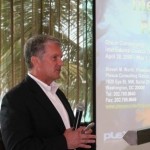 When I was a staffer on Capitol Hill I recall hearing two different stories told quite often during debates on the Senate floor.
When I was a staffer on Capitol Hill I recall hearing two different stories told quite often during debates on the Senate floor.
One was: There are three types of lies in the world—simple lies; damn lies; and then there are statistics! Continue reading
#108 – INDUSTRY AWAKENS TO AUTOMOTIVE PHYSICAL SECURITY – JOHN BLYLER
Featured
 Hackers and and RF jammers have made the news in recent car crimes, but industry is finally fighting back.
Hackers and and RF jammers have made the news in recent car crimes, but industry is finally fighting back.
Takeaways:
- Jamming of automotive-based RF and wireless signals is a growing security problem. Continue reading
#107 – PERCEPTION AND RISK – ANGELA MONTGOMERY
Featured
 Our brains really struggle to be rational. This is a big problem when it comes to management and making decisions, especially decisions about risk. What can we do about it? Continue reading
Our brains really struggle to be rational. This is a big problem when it comes to management and making decisions, especially decisions about risk. What can we do about it? Continue reading
#107 – GOALS WITHOUT APPORTIONMENT OR MEASURES: YOU GET WHAT YOU ASK FOR? – FRED SCHENKELBERG
Featured
 In my job as a reliability professional, I often encounter circumstances in which a company sets reliability goals that appear to have been met and yet the fielded product fails to perform as reliably as expected. Such a disconnect can have a number of causes, so let’s look at an example. Continue reading
In my job as a reliability professional, I often encounter circumstances in which a company sets reliability goals that appear to have been met and yet the fielded product fails to perform as reliably as expected. Such a disconnect can have a number of causes, so let’s look at an example. Continue reading
#107 – ERM IN ISO IS ENHANCED RISK MANAGEMENT – GREG HUTCHINS
Featured
 ISO maintains risk has implicitly been a part of the standard since the ISO 9001:2015 revision. How? In the new standard, ‘preventive action’ has evolved to ‘actions to address risk and opportunities.’ This changes the Corrective Action – Preventive Action (CAPA) model. In the past, Preventive Action was implemented as a result of Corrective Action specifically to prevent the recurrence of the nonconformity. Continue reading
ISO maintains risk has implicitly been a part of the standard since the ISO 9001:2015 revision. How? In the new standard, ‘preventive action’ has evolved to ‘actions to address risk and opportunities.’ This changes the Corrective Action – Preventive Action (CAPA) model. In the past, Preventive Action was implemented as a result of Corrective Action specifically to prevent the recurrence of the nonconformity. Continue reading
#107 – GREEN GIANTS MAKE OVER $100 BILLION WITH SUSTAINABILITY – KELLY EISENHARDT
Featured
 There are nine corporations that make over $1 billion in annual revenues from products or services with sustainability or social good at their core. These companies are known as the Green Giants. Continue reading
There are nine corporations that make over $1 billion in annual revenues from products or services with sustainability or social good at their core. These companies are known as the Green Giants. Continue reading
#107 – MEN AND WOMEN AT WORK: WHO GETS HEARD IN MEETINGS? – ELIZABETH LIONS
Featured
 Every women may know the feeling over being overlooked or run over in a meeting.
Every women may know the feeling over being overlooked or run over in a meeting.
No one likes it.
Especially executive women.
Harvard Business Review surveyed more than 7,000 people, including female executives at or above the Vice President level. The consistent feedback was the women feel less acknowledged during meetings. While men agreed with this opinion, the disagreed with why women didn’t feel powerful. Continue reading
#107 – RBT IN HEALTHCARE: IS MY FMEA ENOUGH? – TED SCHMIDT
Featured
 Failure Modes and Effects Analysis (FMEA) was developed in the late 1940’s by the U.S. military as a means of determining the effect of system and equipment failures. In the 1960’s, NASA refined the FMEA as a means to improve reliability of space hardware. FMEA was introduced into healthcare in the 1990’s. When properly completed, a FMEA identifies and mitigates potential risks. Continue reading
Failure Modes and Effects Analysis (FMEA) was developed in the late 1940’s by the U.S. military as a means of determining the effect of system and equipment failures. In the 1960’s, NASA refined the FMEA as a means to improve reliability of space hardware. FMEA was introduced into healthcare in the 1990’s. When properly completed, a FMEA identifies and mitigates potential risks. Continue reading
#106 – CRESCENT WRENCH VS. BOX WRENCH – MARK MOORE
Featured
Odd title I know, but do you expect anything different from me? I had this thought a while  back – a memory of past busted up knuckles to be clear – that my family didn’t have many tools while I was growing up. If we had any specific size box or open-end wrenches, they were few and far between and probably in pretty bad shape. No, when I was a boy and I needed to do something on my bicycle, I had to rely on that good old standard, the adjustable crescent wrench. Continue reading
back – a memory of past busted up knuckles to be clear – that my family didn’t have many tools while I was growing up. If we had any specific size box or open-end wrenches, they were few and far between and probably in pretty bad shape. No, when I was a boy and I needed to do something on my bicycle, I had to rely on that good old standard, the adjustable crescent wrench. Continue reading
#106 – ‘FUTURE OF QUALITY: RISK®’ IS NOT NEW CONCEPT – GREG HUTCHINS
Featured
 In 2000, I wrote Risk Management: Is It the Future of Quality Management? for ASQ’s Quality Progress. We’ve been evangelizing this concept a long time.
In 2000, I wrote Risk Management: Is It the Future of Quality Management? for ASQ’s Quality Progress. We’ve been evangelizing this concept a long time.
Why do I bring this up?
We’ve been evangelizing the mantra for 15 years. We felt so strongly that we have a have a registered trademark on the Future of Quality: Risk® Continue reading
#106 – WORLD HAS LIMITED RESOURCES … IS INTELLIGENCE ONE OF THEM – MALCOLM PEART
Featured
 It has been suggested that Stone Age man had a higher IQ than today’s modern homo sapiens. “That cannot be” says the modern man but, if one thinks about such an assault on our modern-day ego and self-confessed superiority, the alleged ‘primitive’ man was able to survive in extreme conditions, travelled the planet and set the foundations for today’s societies. Continue reading
It has been suggested that Stone Age man had a higher IQ than today’s modern homo sapiens. “That cannot be” says the modern man but, if one thinks about such an assault on our modern-day ego and self-confessed superiority, the alleged ‘primitive’ man was able to survive in extreme conditions, travelled the planet and set the foundations for today’s societies. Continue reading
#106 – FMEA DEFINED AND APPLIED – DOUGLAS WOOD
Featured
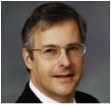 What is a FMEA? The acronym stands for Failure Modes and Effects Analysis. This is quite a mouthful, but it takes a systematic engineering approach and looks for how “it” can “fail” instead of how “it” can succeed. Continue reading
What is a FMEA? The acronym stands for Failure Modes and Effects Analysis. This is quite a mouthful, but it takes a systematic engineering approach and looks for how “it” can “fail” instead of how “it” can succeed. Continue reading
#106 – DECISION FOCUS AND VALUE IN A RELIABILITY PROGRAM – FRED SCHENKELBERG
Featured
 An essential element of any successful reliability program is the notion that all reliability activity relates to decisions. If you are performing a highly accelerated life test (HALT) only because it is listed on the product development guidelines or because it was carried over from the last program’s plan, and the HALT results are not part of the design improvement decision-making process, then you probably should not be doing so. Continue reading
An essential element of any successful reliability program is the notion that all reliability activity relates to decisions. If you are performing a highly accelerated life test (HALT) only because it is listed on the product development guidelines or because it was carried over from the last program’s plan, and the HALT results are not part of the design improvement decision-making process, then you probably should not be doing so. Continue reading
#106 – 5 POINTS TO REMEMBER FOR A SMOOTHER MANAGEMENT SYSTEM AUDIT – WILL HUGGETT
Featured
 My client, a leader in innovative rail friction management, was recently preparing for an integrated ISO 14001/OHSAS 18001 audit and I was asked to provide onsite training to prepare their employees. The company and its staff are well versed in audits, having been registered under ISO 9001 for several years. In addition to the required EHS awareness training, I was also asked to provide my thoughts on what to expect during the upcoming audit. Continue reading
My client, a leader in innovative rail friction management, was recently preparing for an integrated ISO 14001/OHSAS 18001 audit and I was asked to provide onsite training to prepare their employees. The company and its staff are well versed in audits, having been registered under ISO 9001 for several years. In addition to the required EHS awareness training, I was also asked to provide my thoughts on what to expect during the upcoming audit. Continue reading
#105 – RISK BASED THINKING IN HEALTHCARE – TED SCHMIDT
Featured
 In our last article, I revealed some very unfortunate statistics- hospitals are not as safe for patients as we might have thought. As a pharmacist on the inside looking out, it is often hard to accept the facts as they are presented. These facts, unfortunately, are true. We have to change the way we think and the way we perform our work to begin changing those statistics. We also have to bring our colleagues along with us on this journey. Continue reading
In our last article, I revealed some very unfortunate statistics- hospitals are not as safe for patients as we might have thought. As a pharmacist on the inside looking out, it is often hard to accept the facts as they are presented. These facts, unfortunately, are true. We have to change the way we think and the way we perform our work to begin changing those statistics. We also have to bring our colleagues along with us on this journey. Continue reading
#105 – WHAT IS RISK BASED THINKING? – GREG HUTCHINS
Featured
 What is Risk Based Thinking (RBT)?
What is Risk Based Thinking (RBT)?
We get this question weekly and sometimes daily it seems.
Why? ISO has not defined Risk Based Thinking? And, this is a hugely important question because ISO has elevated RBT to the same level as PDCA and Process in the Final Draft International Standard (FDIS) of ISO 9001:2015. Continue reading
#105 – MANAGING RISK THROUGH CONSTRAINTS – ANGELA MONTGOMERY
Featured
Every single process, relationship and communication in our organization, whether we are aware of it or not, is affected by variation. If we ignore variation then we are not managing, and if we are not managing then “risk management”loses its meaning. Continue reading
#105 – INFLUENCE AND RELIABILITY – FRED SCHENKELBERG
Featured
 Reliability professionals today face a challenge. Engineering and operations staff members are taught to think for themselves, to make decisions, to get things done. The entire staff is highly educated, motivated, and willing to lead a team or organization to results. Continue reading
Reliability professionals today face a challenge. Engineering and operations staff members are taught to think for themselves, to make decisions, to get things done. The entire staff is highly educated, motivated, and willing to lead a team or organization to results. Continue reading
#105 – ‘FAST PASS’ TO SERVICE WITH VERIFIED VOLUNTEERS – KELLY EISENHARDT
Featured
 Providing safe and vetted volunteer resources is important for today’s nonprofits and the people they serve. Verified Volunteers was founded three years ago with the goal of transforming the screening process for America’s nonprofits. Continue reading
Providing safe and vetted volunteer resources is important for today’s nonprofits and the people they serve. Verified Volunteers was founded three years ago with the goal of transforming the screening process for America’s nonprofits. Continue reading
#104 – OPPORTUNITIES AND UPSIDE RISKS – GREG HUTCHINS
Featured
In today’s global and highly competitive marketplace, every organization faces uncertainty and risk. This is the fundamental premise of the ISO 9001:2015 standard. It could be upside risk as to where a company is going to invest, how it will invest, and what type of business outcomes it expects to achieve based upon its investment risk profile. These are fundamental business model and market issues. Continue reading
#104 – IPC FAST TRACKS DATA COLLECTION FOR ROHS AND REACH – KELLY EISENHARDT
Featured
 Managing RoHS and REACH compliance declarations continues to be burdensome for most companies. Although both regulations have been around for many years now, the process for collecting and managing declarations is still complex. Continue reading
Managing RoHS and REACH compliance declarations continues to be burdensome for most companies. Although both regulations have been around for many years now, the process for collecting and managing declarations is still complex. Continue reading
#104 – ADVANCING AUDITOR RECOGNITION – PETER HOLTMANN
Featured
 For global audit experts using scoped knowledge assessments against industry codes demonstrates technical competence of processes. Exemplar is collaborating with global experts to create this opportunity. Continue reading
For global audit experts using scoped knowledge assessments against industry codes demonstrates technical competence of processes. Exemplar is collaborating with global experts to create this opportunity. Continue reading
#104 – QUALITY RISK MANAGEMENT – PRETESH BISWAS
Featured
 Risk management principles are effectively utilized in many areas of business and government including finance, insurance, occupational safety, public health, pharmaceutical, pharmacovigilance, and by agencies regulating these industries. Risk is defined as the combination of the probability of occurrence of harm and the severity of that harm. Continue reading
Risk management principles are effectively utilized in many areas of business and government including finance, insurance, occupational safety, public health, pharmaceutical, pharmacovigilance, and by agencies regulating these industries. Risk is defined as the combination of the probability of occurrence of harm and the severity of that harm. Continue reading
#104 – CAREER RISK: HOW TO CONNECT WITH SOMEONE ON LINKEDIN – ELIZABETH LIONS
Featured
 With the bull employment market in full swing, many are looking for new jobs. Introverts are pressured into growing their network. Many of us turn to online avenues because it feels safer and less time consuming than in person networking. Introverts in particular, prefer this type of connection. For them online networking feels less intrusive. Continue reading
With the bull employment market in full swing, many are looking for new jobs. Introverts are pressured into growing their network. Many of us turn to online avenues because it feels safer and less time consuming than in person networking. Introverts in particular, prefer this type of connection. For them online networking feels less intrusive. Continue reading
#104 – UNCERTAINTY AND UNDERSTANDING RISK – ANGELA MONTGOMERY
Featured
 A Deming-Goldratt Take on Risk Management
A Deming-Goldratt Take on Risk Management
If we could predict the outcome of everything we do with mathematical certainty, then our lives would be much simpler. In reality, we exist within a complex web of interdependencies and such certainty is not possible. Hence, we live with uncertainty and its inevitable companion: risk. Continue reading





